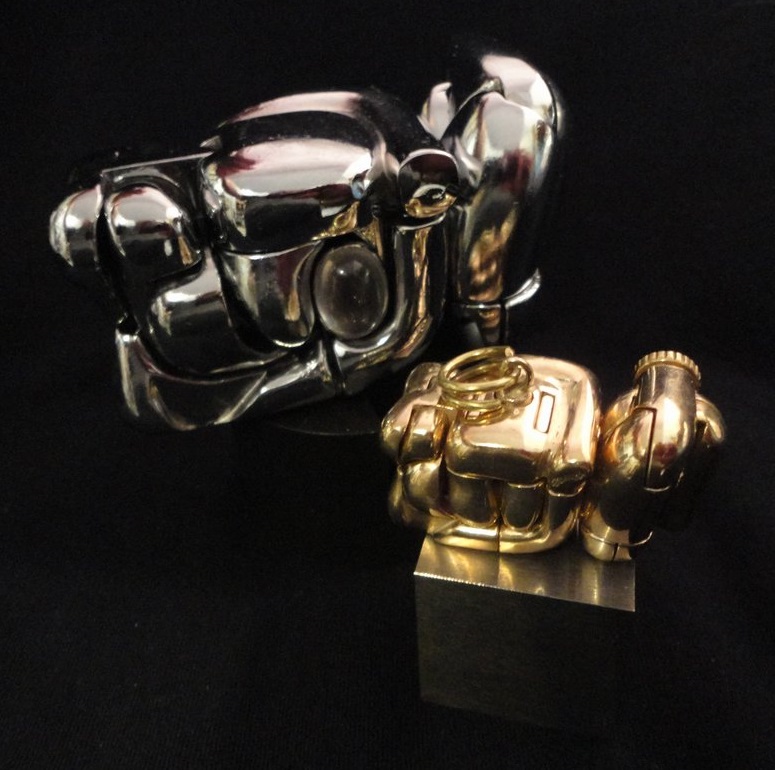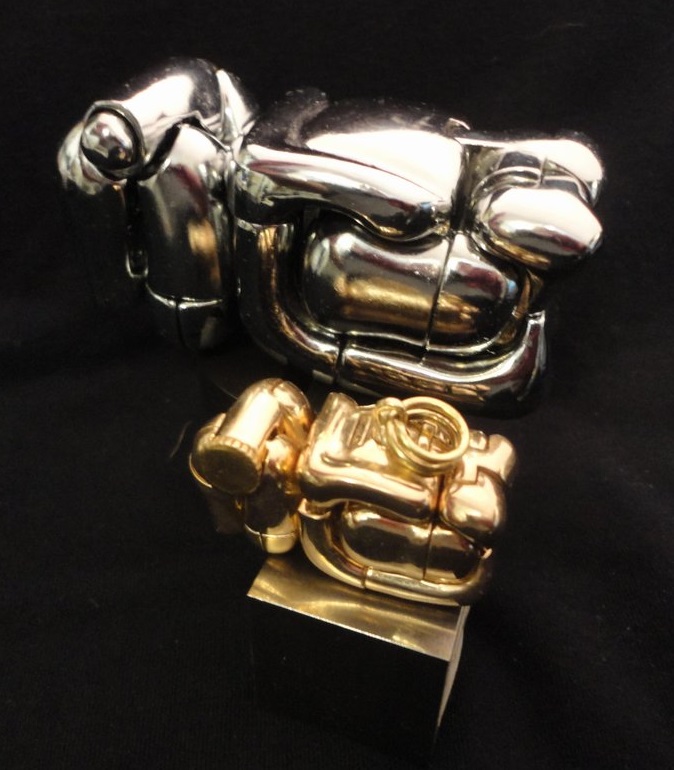
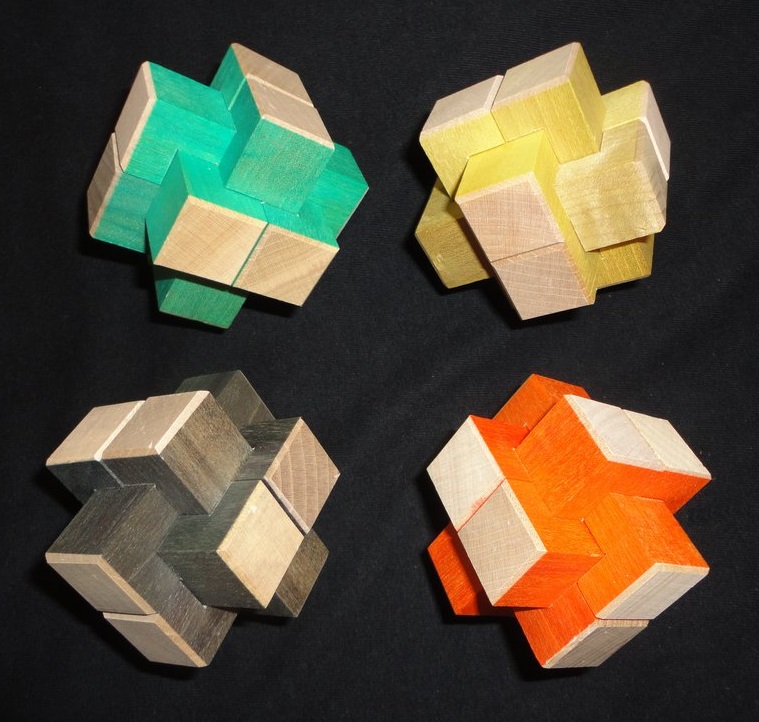 Any story about interlocking puzzles has to start with the traditional six-piece burr puzzle.
This puzzle is known by several names, including the "puzzle knot," the "Devil's Knot"
(
Teufelsknoten
in German), the "Chinese Cross,"
the "Lock of Luban" (Luban Suo
魯班鎖)
or the "Lock of Kongming" (Kongming Suo
孔明鎖).
The term "burr" is thought to have been first used by Edwin Wyatt in Puzzles in Wood (1928), but
Wyatt seems to use the term as if it was already commonly understood to apply.
Supposedly whoever coined the term did so because the puzzle resembles the clinging
burrs of some plants.
Like other well-known vintage puzzles, the burr has acquired a probably-fanciful backstory,
and details of its history are lost.
Some say it is a Chinese invention, along with the Patience Tanglement, the Sliding Piece Puzzle
known as "The Huarong Path," and the Tangram, and date it to ancient times
(see Wei Zhang's Chinese Puzzles Blog and
chinesepuzzles.org).
According to the literature, the earliest relevant U.S. Patent seems to be
1225760 - filed by
O. W. Brown on June 27, 1916 and granted on May 15, 1917.
But take a look at
U.S. Patent
1261242
, filed by J. W. Keiser on March 16, 1915, and granted on April 2, 1918.
Keiser seems to have filed earlier but his patent was granted later.
(Keiser's pieces are the Chinese Cross set; those pieces are shown in an 1857 book so Keiser did not invent them.)
A traditional six-piece burr appears in Hoffmann's 1893 book Puzzles Old and New
in Chapter III as No. XXXVI "The Nut (or Six-piece) Puzzle."
Another six-piece burr is shown in the 1889 Chinese book Chinese and Western Magic With Diagrams: Compilation of Magic by Tang Yunzhou.
His pieces seem to be { 1, 208, 256, 670, 1024x2 } though the diagrams are a bit hard to follow.
Jerry Slocum and Dieter Gebhardt put together a compendium of puzzle advertisements found in the
1785 catalogue of the merchant Peter Friedrich Catel, who established a retail store in Berlin in 1780.
The 1785 catalogue contains an ad for a traditional six-piece burr puzzle called "The Small Devil's Hoof"
(in addition to an ad for the Large Devil's Hoof which is a 24-piece cage burr),
but the individual pieces are not shown.
Any story about interlocking puzzles has to start with the traditional six-piece burr puzzle.
This puzzle is known by several names, including the "puzzle knot," the "Devil's Knot"
(
Teufelsknoten
in German), the "Chinese Cross,"
the "Lock of Luban" (Luban Suo
魯班鎖)
or the "Lock of Kongming" (Kongming Suo
孔明鎖).
The term "burr" is thought to have been first used by Edwin Wyatt in Puzzles in Wood (1928), but
Wyatt seems to use the term as if it was already commonly understood to apply.
Supposedly whoever coined the term did so because the puzzle resembles the clinging
burrs of some plants.
Like other well-known vintage puzzles, the burr has acquired a probably-fanciful backstory,
and details of its history are lost.
Some say it is a Chinese invention, along with the Patience Tanglement, the Sliding Piece Puzzle
known as "The Huarong Path," and the Tangram, and date it to ancient times
(see Wei Zhang's Chinese Puzzles Blog and
chinesepuzzles.org).
According to the literature, the earliest relevant U.S. Patent seems to be
1225760 - filed by
O. W. Brown on June 27, 1916 and granted on May 15, 1917.
But take a look at
U.S. Patent
1261242
, filed by J. W. Keiser on March 16, 1915, and granted on April 2, 1918.
Keiser seems to have filed earlier but his patent was granted later.
(Keiser's pieces are the Chinese Cross set; those pieces are shown in an 1857 book so Keiser did not invent them.)
A traditional six-piece burr appears in Hoffmann's 1893 book Puzzles Old and New
in Chapter III as No. XXXVI "The Nut (or Six-piece) Puzzle."
Another six-piece burr is shown in the 1889 Chinese book Chinese and Western Magic With Diagrams: Compilation of Magic by Tang Yunzhou.
His pieces seem to be { 1, 208, 256, 670, 1024x2 } though the diagrams are a bit hard to follow.
Jerry Slocum and Dieter Gebhardt put together a compendium of puzzle advertisements found in the
1785 catalogue of the merchant Peter Friedrich Catel, who established a retail store in Berlin in 1780.
The 1785 catalogue contains an ad for a traditional six-piece burr puzzle called "The Small Devil's Hoof"
(in addition to an ad for the Large Devil's Hoof which is a 24-piece cage burr),
but the individual pieces are not shown.
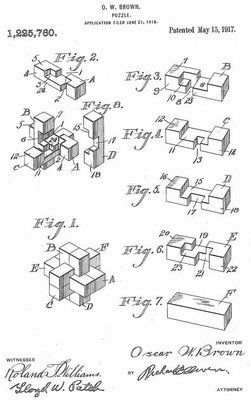
Brown's 1917 Patent filed June 1916 |
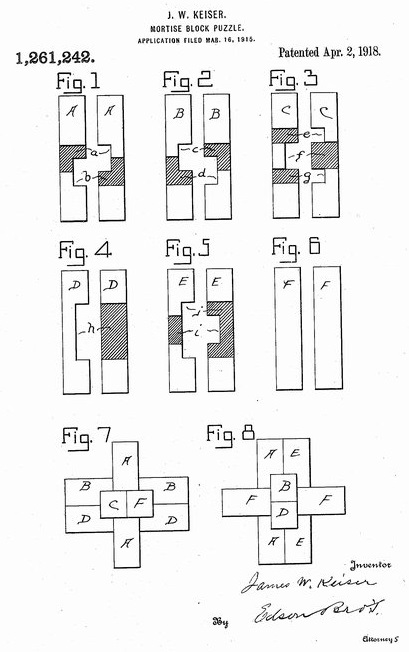
Keiser's 1918 Patent filed March 1915 |

|
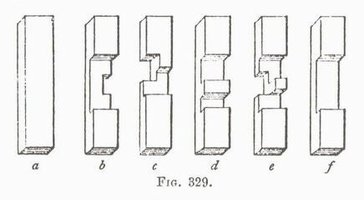
Hoffmann's "Nut" Puzzle (1893) |
As of Jan 2024, I am informed by Tyler Anderson that Pablo's 1733 edition does not include the pictured burr puzzle, but that it appeared in the 1755 edition. Anderson says the book was still being updated and expanded at least until 1822. Here are references:
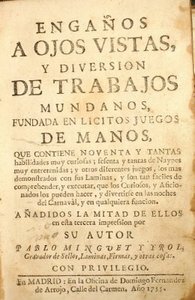
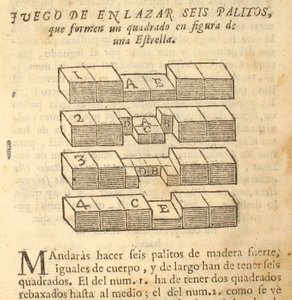
Minguet y Irol's Burr (1755) |
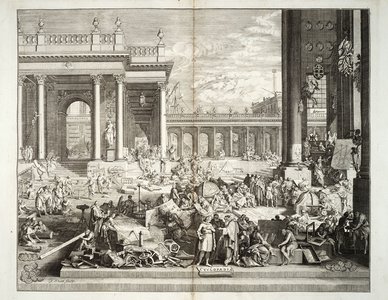
|
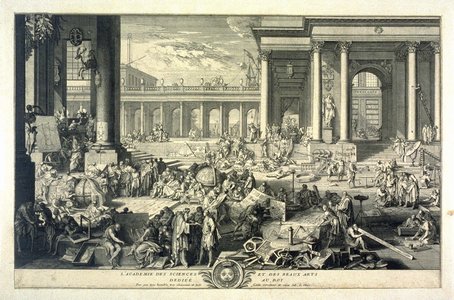
|
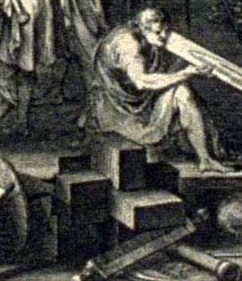
|
In his 2007 book Geometric Puzzle Design, Stewart Coffin discusses the six-piece burr in chapter 7, and reports that Jerry Slocum's New Findings on the History of the Six Piece Burr traces the six-piece burr back to Germany in 1698. See the 1728 Cyclopedia of Ephraim Chambers (online at the University of Wisconsin Digital Collection; additional commentary at www.cyclopedia.org). You can see a six-piece burr in the lower left area of the frontispiece by John Sturt (above on the left), which is a modified and left-to-right inverted copy of a 1698 engraving entitled "L'Académie des Sciences et des Beaux Arts" by Sébastien Leclerc (or Le Clerc) (above on the right, detail at left). Read about this engraving at the University of Oxford. It is also noted in David Singmaster's Sources in Recreational Mathematics. |
| Leclerc Burr 1698 | |

|

|

See U.S. Patent 5040797 - Dykstra 1991 for an interesting burr that can be assembled in two distinct ways.
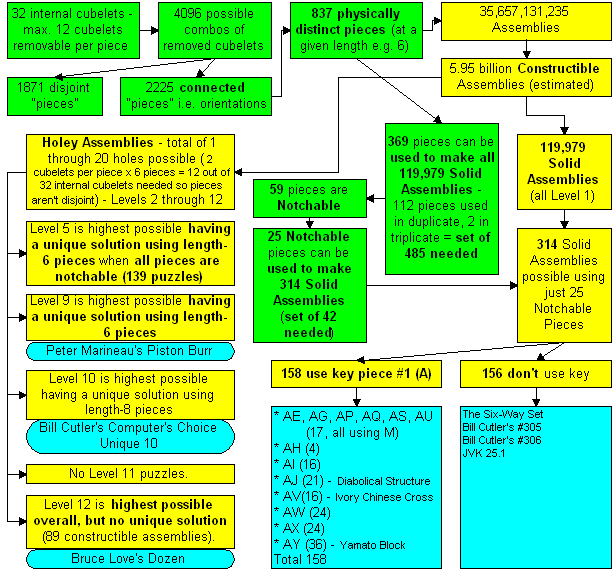
Check out a nice writeup on how to go about solving 6-piece burrs, written by Guillaume Largounez, over at the Puzzle Place Wiki.
|
My piece ID is 1 plus the value, shown below, of each cubie removed.
The cubies behind cubies 256 and 512 can be removed, too, and have respective values 1024 and 2048. Such pieces appear infrequently.
+----+----+----+----+----+----+
/ / 16 / 32 / 64 / 128/ /|
+ +----+----+----+----+ + |
/ / 1 / 2 / 4 / 8 / / +
+----+----+----+----+----+----+ |
| | | | | | | |
| | | | | | | +
+ +----+----+----+----+ + /
| | | | | +
| a | 256| 512| b |/
+----+----+----+----+----+----+
When trying to identify an arbitrary piece, rotate it about its long axis
(and maybe flip it end-for-end) until you find an orientation where the cubies marked 'a' and 'b' and the cubies behind them are present. Sometimes a piece could be assigned more than one number - use the smaller number. This entails orienting it so that cubies 1024 and 2048 are present if possible. |
1 A A A [p] 1 0
+----+----+----+----+----+----+
/ /|
+ + |
/ / +
+----+----+----+----+----+----+ |
| | |
| | +
+ + /
| | +
| |/
+----+----+----+----+----+----+
The Key |
|||||
| All six positions and widths of a single slot... | |||||
18 B B L [p] 2 0
+----+ +----+----+----+----+
/ /| / /|
+ + | + + |
/ / +-/ / +
+----+ / +----+----+----+----+ |
| | + | | |
| |/ | | +
+ +----+ + /
| | +
| |/
+----+----+----+----+----+----+
Local Mail |
35 C E 1 0
+----+----+ +----+----+----+
/ /| / /|
+ + | + + |
/ / +-/ / +
+----+----+ / +----+----+----+ |
| | + | | |
| |/ | | +
+ +----+ + /
| | +
| |/
+----+----+----+----+----+----+
Out of Town Mail |
52 D P J [p] 2 0
+----+ +----+----+----+
/ /| / /|
+ + | + + |
/ / +----+-/ / +
+----+ / +----+----+----+ |
| | + | | |
| |/ | | +
+ +----+----+ + /
| | +
| |/
+----+----+----+----+----+----+
The Side Tray |
103 F S H 1 1
+----+----+ +----+----+
/ /| / /|
+ + | + + |
/ / +---+--/ / +
+----+----+ / +----+----+ |
| | + | | |
| |/ | | +
+ +----+----+ + /
| | +
| |/
+----+----+----+----+----+----+
The Half-Tray |
120 G U 1 1
+----+ +----+----+
/ /| / /|
+ + | + + |
/ / +----+---+--/ / +
+----+ / +----+----+ |
| | + | | |
| |/ | | +
+ +----+----+----+ + /
| | +
| |/
+----+----+----+----+----+----+
The Three-Quarters Tray |
256 J X B [p2] 3 2
+----+ +----+
/ /| / /|
+ + | + + |
/ / +----+----+----+-/ / +
+----+ / +----+ |
| | + | | |
| |/ | | +
+ +----+----+----+----+ + /
| | +
| |/
+----+----+----+----+----+----+
The Tray |
| Three possible dual slots... | Three symmetric pieces... | ||||
86 E H 1 0
+----+ +----+ +----+----+
/ /| / /| / /|
+ + | + + | + + |
/ / +-/ / +-/ / +
+----+ / +----+ / +----+----+ |
| | + | | + | | |
| |/ | |/ | | +
+ +----+ +----+ + /
| | +
| |/
+----+----+----+----+----+----+
The Mailbox |
154 H K I [p] 1 1
+----+ +----+----+ +----+
/ /| / /| / /|
+ + | + + | + + |
/ / +-/ / +-/ / +
+----+ / +----+----+ / +----+ |
| | + | | + | | |
| |/ | |/ | | +
+ +----+ +----+ + /
| | +
| |/
+----+----+----+----+----+----+
The Toaster |
188 I M M [p] 2 1
+----+ +----+ +----+
/ /| / /| / /|
+ + | + + | + + |
/ / +----+-/ / +-/ / +
+----+ / +----+ / +----+ |
| | + | | + | | |
| |/ | |/ | | +
+ +----+----+ +----+ + /
| | +
| |/
+----+----+----+----+----+----+
The (Bottle) Opener |
871 M T K 2 0
+----+----+ +----+----+
/ /| / /|
+ + | + + |
/ / +----+-/ / +
+----+----+ / +----+----+ |
| | +----+--| | |
| | | | | +
+ + | + + /
| | +----+--| | +
| |/ | |/
+----+----+ +----+----+
The Barbells |
928 V L D 2 1
+----+ +----+----+ +----+
/ /| / /| / /|
+ + | +----+----+ | + + |
/ / +--| | +-/ / +
+----+ / | |/ +----+ |
| | + + + | | |
| |/ /| / | | +
+ +----+ | +----+ + /
| | +----+--| | +
| |/ | |/
+----+----+ +----+----+
The Tongue |
1024 Y Y F [p2] 3 1
+----+ +----+
/ /| / /|
+ + | + + |
/ / +----+----+----+-/ / +
+----+ / +----+ |
| | + +----+----+ | | |
| |/ /| / | | +
+ +----+ | +----+ + /
| | +----+--| | +
| |/ | |/
+----+----+ +----+----+
The Y |
| There are six pairs of mirror image pieces... | |||||
359 L F 1 0
+----+----+----+ +----+----+
/ /| / /|
+ +----+ | + + |
/ /| | +-/ / +
+----+----+ | |/ +----+----+ |
| | + +--| | |
| | | | | +
+ + | + + /
| | +----+--| | +
| |/ | |/
+----+----+ +----+----+
|
615 K G 1 0
+----+----+ +----+----+----+
/ /| / /|
+ + | +----+ + |
/ / +--| / / +
+----+----+ / | +----+----+ |
| | +----+ | | |
| | | | | +
+ + | + + /
| | +----+--| | +
| |/ | |/
+----+----+ +----+----+
|
792 R D 2 0
+----+ +----+----+----+----+
/ /| / /|
+ + | +----+----+ + |
/ / +--| / / +
+----+ / | +----+----+ |
| | + + | | |
| |/ /| | | +
+ +----+ | + + /
| | +----+--| | +
| |/ | |/
+----+----+ +----+----+
|
911 N C G 2 0
+----+----+----+----+ +----+
/ /| / /|
+ +----+----+ | + + |
/ /| | +-/ / +
+----+----+ | |/ +----+ |
| | + + | | |
| | | / | | +
+ + | +----+ + /
| | +----+--| | +
| |/ | |/
+----+----+ +----+----+
|
824 T R C [p] 2 1
+----+ +----+----+----+
/ /| / /|
+ + | +----+ + |
/ / +----+--| / / +
+----+ / | +----+----+ |
| | + +----+ | | |
| |/ /| | | +
+ +----+ | + + /
| | +----+--| | +
| |/ | |/
+----+----+ +----+----+
|
975 O Q E [p] 2 1
+----+----+----+ +----+
/ /| / /|
+ +----+ | + + |
/ /| | +----+-/ / +
+----+----+ | |/ +----+ |
| | + +----+ | | |
| | | / | | +
+ + | +----+ + /
| | +----+--| | +
| |/ | |/
+----+----+ +----+----+
|
| The Notched Half-Trays | The Walls | The Offsets | |||
856 S J 1 1
+----+ +----+ +----+----+
/ /| / /| / /|
+ + | +----+ | + + |
/ / +--| | +-/ / +
+----+ / | |/ +----+----+ |
| | + + +--| | |
| |/ /| | | +
+ +----+ | + + /
| | +----+--| | +
| |/ | |/
+----+----+ +----+----+
|
943 P I 1 1
+----+----+ +----+ +----+
/ /| / /| / /|
+ + | +----+ | + + |
/ / +--| | +-/ / +
+----+----+ / | |/ +----+ |
| | +----+ + | | |
| | | / | | +
+ + | +----+ + /
| | +----+--| | +
| |/ | |/
+----+----+ +----+----+
|
888 U W 2 1
+----+ +----+----+
/ /| / /|
+ + | + + |
/ / +----+----+-/ / +
+----+ / +----+----+ |
| | + +----+--| | |
| |/ /| | | +
+ +----+ | + + /
| | +----+--| | +
| |/ | |/
+----+----+ +----+----+
|
1007 Q V 2 1
+----+----+ +----+
/ /| / /|
+ + | + + |
/ / +----+----+-/ / +
+----+----+ / +----+ |
| | +----+----+ | | |
| | | / | | +
+ + | +----+ + /
| | +----+--| | +
| |/ | |/
+----+----+ +----+----+
|
960 X N 2 2
+----+ +----+ +----+
/ /| / /| / /|
+ + | +----+ | + + |
/ / +-------| | +-/ / +
+----+ / | |/ +----+ |
| | + +----+ + | | |
| |/ /| / | | +
+ +----+ | +----+ + /
| | +----+--| | +
| |/ | |/
+----+----+ +----+----+
|
992 W O [p] 2 2
+----+ +----+ +----+
/ /| / /| / /|
+ + | +----+ | + + |
/ / +--| | +----+-/ / +
+----+ / | |/ +----+ |
| | + + +----+ | | |
| |/ /| / | | +
+ +----+ | +----+ + /
| | +----+--| | +
| |/ | |/
+----+----+ +----+----+
|
| The Fingered Clubs | The Clubs | The Fingers | |||
20
+----+ +----+----+----+----+
/ /| / /|
+ + | +----+ + |
/ / +--| / / +
+----+ / | +----+----+----+ |
| | + +--| | |
| |/ | | +
+ +----+----+ + /
| | +
| |/
+----+----+----+----+----+----+
Filipiak #67 |
56
+----+ +----+----+----+
/ /| / /|
+ + | +----+ + |
/ / +----+--| / / +
+----+ / | +----+----+ |
| | + +--| | |
| |/ | | +
+ +----+----+----+ + /
| | +
| |/
+----+----+----+----+----+----+
Triple Slide |
60
+----+ +----+----+----+
/ /| / /|
+ + | + +----+ + |
/ / +----+-/ /| / / +
+----+ / +----+ | +----+ |
| | + | | +--| | |
| |/ | |/ | | +
+ +----+----+ +----+ + /
| | +
| |/
+----+----+----+----+----+----+
UBS.1 |
64
+----+ +----+----+----+
/ /| / /|
+ + | +----+----+ + |
/ / +----+--| / / +
+----+ / | +----+ |
| | + +----+--| | |
| |/ | | +
+ +----+----+----+----+ + /
| | +
| |/
+----+----+----+----+----+----+
UBS.24 |
72
+----+----+----+ +----+----+
/ /| / /|
+ +----+----+ | + + |
/ /| | +-/ / +
+----+ | |/ +----+----+ |
| | +----+----+ | | |
| |/ | | +
+ +----+----+----+ + /
| | +
| |/
+----+----+----+----+----+----+
Interrupted Slide |
88 M
+----+ +----+ +----+----+
/ /| / /| / /|
+ + | +----+ | + + |
/ / +--| | +-/ / +
+----+ / | |/ +----+----+ |
| | + +----+ | | |
| |/ | | +
+ +----+----+----+ + /
| | +
| |/
+----+----+----+----+----+----+
Piston, Hordern,Dozen, BB31-10-40 |
94
+----+ +----+ +----+----+
/ /| / /| / /|
+ + | + + | +----+ + |
/ / +-/ / +--| / / +
+----+ / +----+ / | +----+ |
| | + | | + +--| | |
| |/ | |/ | | +
+ +----+ +----+----+ + /
| | +
| |/
+----+----+----+----+----+----+
Triple Slide |
109
+----+----+ +----+----+
/ /| / /|
+ +----+ +----+ + |
/ /|----| / / +
+----+----+----+ | | +----+ |
| | + +--| | |
| |/ | | +
+ +----+----+ + /
| | +
| |/
+----+----+----+----+----+----+
BCL6000 |
112
+----+----+ +----+----+
/ /| / /|
+ +----+ | +----+ + |
/ /| | +-------| / / +
+----+ | |/ | +----+ |
| | +----+ +--| | |
| |/ | | +
+ +----+----+----+----+ + /
| | +
| |/
+----+----+----+----+----+----+
Interrupted Slide |
124
+----+ +----+----+
/ /| / /|
+ + | +----+----+ + |
/ / +----+-/ /| / / +
+----+ / +----+ | +----+ |
| | + | | +--| | |
| |/ | |/ | | +
+ +----+----+ +----+ + /
| | +
| |/
+----+----+----+----+----+----+
UBS.22 |
126
+----+ +----+----+
/ /| / /|
+ + | +----+ +----+ + |
/ / +-/ /|----| / / +
+----+ / +----+ | | +----+ |
| | + | | + +--| | |
| |/ | |/ | | +
+ +----+ +----+----+ + /
| | +
| |/
+----+----+----+----+----+----+
STC#36 |
216
+----+ +----+ +----+
/ /| / /| / /|
+ + | +----+ | +----+ + |
/ / +--| | +-/ / +
+----+ / | |/ +----+----+ |
| | + +----+ | | |
| |/ | | +
+ +----+----+----+ + /
| | +
| |/
+----+----+----+----+----+----+
Eight is Enough |
128
+----+ +----+----+
/ /| / /|
+ + | +----+ + |
/ / +------------| / / +
+----+ / | +----+ |
| | + +--| | |
| |/ | | +
+ +----+----+----+----+ + /
| | +
| |/
+----+----+----+----+----+----+
Hedgehog, Kaldeway,
UBS.15 |
240
+----+----+ +----+
/ /| / /|
+ +----+ | + + |
/ /| | +----+----+-/ / +
+----+ | |/ +----+ |
| | +----+ | | |
| |/ | | +
+ +----+----+----+----+ + /
| | +
| |/
+----+----+----+----+----+----+
Avenger (pc. #4) |
156
+----+ +----+----+ +----+
/ /| / /| / /|
+ + | +----+ + | + + |
/ / +--| / / +-/ / +
+----+ / | +----+ / +----+ |
| | + +--| | + | | |
| |/ | |/ | | +
+ +----+----+ +----+ + /
| | +
| |/
+----+----+----+----+----+----+
Triple Slide |
160 M
+----+ +----+----+ +----+
/ /| / /| / /|
+ + | +----+----+ | + + |
/ / +--| | +-/ / +
+----+ / | |/ +----+ |
| | + +----+----+ | | |
| |/ | | +
+ +----+----+----+----+ + /
| | +
| |/
+----+----+----+----+----+----+
(many) |
192 M
+----+ +----+ +----+
/ /| / /| / /|
+ + | +----+ | + + |
/ / +----+--| | +-/ / +
+----+ / | |/ +----+ |
| | + +----+ | | |
| |/ | | +
+ +----+----+----+----+ + /
| | +
| |/
+----+----+----+----+----+----+
#G, UBS.17 |
224 M
+----+ +----+ +----+
/ /| / /| / /|
+ + | +----+ | + + |
/ / +--| | +----+-/ / +
+----+ / | |/ +----+ |
| | + +----+ | | |
| |/ | | +
+ +----+----+----+----+ + /
| | +
| |/
+----+----+----+----+----+----+
JVK, Millable 5.4,
UBS.14 |
327 N
+----+----+----+ +----+----+
/ /| / /|
+ +----+ | + + |
/ /| | +-/ / +
+----+----+ | |/ +----+----+ |
| | + + | | |
| | | / | | +
+ + | +----+ + /
| | +--| | +
| |/ | |/
+----+----+ +----+----+----+
IPL5S.39 1 |
551 N
+----+----+ +----+----+----+
/ /| / /|
+ + | +----+ + |
/ / +--| / / +
+----+----+ / | +----+----+ |
| | + + | | |
| |/ /| | | +
+ +----+ | + + /
| | +--| | +
| |/ | |/
+----+----+----+ +----+----+
BC-L5N,
IPL5S.45 1 |
344 N
+----+ +----+ +----+----+
/ /| / /| / /|
+ + | +----+ | + + |
/ / +--| | +-/ / +
+----+ / | |/ +----+----+ |
| | + + + | | |
| |/ /| / | | +
+ +----+ | +----+ + /
| | +--| | +
| |/ | |/
+----+----+ +----+----+----+
IPL5S.25 2 |
687 N
+----+----+ +----+ +----+
/ /| / /| / /|
+ + | +----+ | + + |
/ / +--| | +-/ / +
+----+----+ / | |/ +----+ |
| | + + + | | |
| |/ /| / | | +
+ +----+ | +----+ + /
| | +--| | +
| |/ | |/
+----+----+----+ +----+----+
IPL5S.33 1 |
376 N
+----+ +----+----+
/ /| / /|
+ + | + + |
/ / +----+----+-/ / +
+----+ / +----+----+ |
| | + +----+ | | |
| |/ /| / | | +
+ +----+ | +----+ + /
| | +--| | +
| |/ | |/
+----+----+ +----+----+----+
IPL5S.21 1 |
751 N
+----+----+ +----+
/ /| / /|
+ + | + + |
/ / +----+----+-/ / +
+----+----+ / +----+ |
| | + +----+ | | |
| |/ /| / | | +
+ +----+ | +----+ + /
| | +--| | +
| |/ | |/
+----+----+----+ +----+----+
IPL5S.05 1 |
410
+----+ +----+----+ +----+
/ /| / /| / /|
+ + | + + | + + |
/ / +-/ / +-/ / +
+----+ / +----+----+ / +----+ |
| | + | | + | | |
| |/ | |/ | | +
+ +----+----+ +----+ + /
| | +--| | +
| |/ | |/
+----+----+ +----+----+----+
UBS.2 |
412 N
+----+ +----+----+ +----+
/ /| / /| / /|
+ + | +----+ + | + + |
/ / +--| / / +-/ / +
+----+ / | +----+ / +----+ |
| | + + | | + | | |
| |/ /| | |/ | | +
+ +----+ | + +----+ + /
| | +--| | +
| |/ | |/
+----+----+ +----+----+----+
(many), UBS.23,
IPL5S.53 1 |
670 N
+----+ +----+----+ +----+
/ /| / /| / /|
+ + | + +----+ | + + |
/ / +-/ /| | +-/ / +
+----+ / +----+ | |/ +----+ |
| | + | | + + | | |
| |/ | | | / | | +
+ +----+ + | +----+ + /
| | +--| | +
| |/ | |/
+----+----+----+ +----+----+
IPL5S.40 1 |
414
+----+ +----+----+ +----+
/ /| / /| / /|
+ + | + +----+ | + + |
/ / +-/ /| | +-/ / +
+----+ / +----+ | |/ +----+ |
| | + | | +----+ | | |
| |/ | |/ | | +
+ +----+----+----+----+ + /
| | +--| | +
| |/ | |/
+----+----+ +----+----+----+
UBS.3 |
416 M
+----+ +----+----+ +----+
/ /| / /| / /|
+ + | +----+----+ | + + |
/ / +--| | +-/ / +
+----+ / | |/ +----+ |
| | + + +----+ | | |
| |/ /| / | | +
+ +----+ | +----+----+ + /
| | +--| | +
| |/ | |/
+----+----+ +----+----+----+
UBS.20 |
442
+----+ +----+ +----+
/ /| / /| / /|
+ + | +----+ + | + + |
/ / +-/ / +-/ / +
+----+ / +----+----+ / +----+ |
| | + | | + | | |
| |/ | |/ | | +
+ +----+----+ +----+ + /
| | +--| | +
| |/ | |/
+----+----+ +----+----+----+
UBS.4 |
444 N
+----+ +----+ +----+
/ /| / /| / /|
+ + | + + | + + |
/ / +----+-/ / +-/ / +
+----+ / +----+ / +----+ |
| | + +--| | + | | |
| |/ /| | |/ | | +
+ +----+ | + +----+ + /
| | +--| | +
| |/ | |/
+----+----+ +----+----+----+
UBS.18, IPL5S.49 1 |
734 N
+----+ +----+ +----+
/ /| / /| / /|
+ + | + + | + + |
/ / +-/ / +----+-/ / +
+----+ / +----+ / +----+ |
| | + | | +----+ | | |
| |/ | | | / | | +
+ +----+ + | +----+ + /
| | +--| | +
| |/ | |/
+----+----+----+ +----+----+
IPL5S.10 1 |
448 M
+----+ +----+ +----+
/ /| / /| / /|
+ + | +----+ | + + |
/ / +----+--| | +-/ / +
+----+ / | |/ +----+ |
| | + +----+----+ | | |
| |/ /| / | | +
+ +----+ | +----+----+ + /
| | +--| | +
| |/ | |/
+----+----+ +----+----+----+
Interrupted Slide,
UBS.12 |
736 M
+----+ +----+ +----+
/ /| / /| / /|
+ + | +----+ | + + |
/ / +--| | +----+-/ / +
+----+ / | |/ +----+ |
| | + +----+----+ | | |
| |/ /| / | | +
+ +----+----+ | +----+ + /
| | +--| | +
| |/ | |/
+----+----+----+ +----+----+
BCL6000, #G |
463 N
+----+----+----+ +----+
/ /| / /|
+ +----+ | + + |
/ /| | +----+-/ / +
+----+----+ | |/ +----+ |
| | + + | | |
| | | / | | +
+ + | +----+----+ + /
| | +--| | +
| |/ | |/
+----+----+ +----+----+----+
Tenyo Brother,
IPL5S.24 1 |
568 N
+----+ +----+----+----+
/ /| / /|
+ + | +----+ + |
/ / +----+--| / / +
+----+ / | +----+----+ |
| | + + | | |
| |/ /| | | +
+ +----+----+ | + + /
| | +--| | +
| |/ | |/
+----+----+----+ +----+----+
IPL5S.34 1 |
464
+----+----+----+ +----+
/ /| / /|
+ +----+----+ | + + |
/ /| | +----+-/ / +
+----+ | |/ +----+ |
| | +----+ + | | |
| |/ /| / | | +
+ +----+ | +----+----+ + /
| | +--| | +
| |/ | |/
+----+----+ +----+----+----+
Brown's |
576
+----+ +----+----+----+
/ /| / /|
+ + | +----+----+ + |
/ / +----+--| / / +
+----+ / | +----+ |
| | + + +--| | |
| |/ /| / | | +
+ +----+----+ | +----+ + /
| | +--| | +
| |/ | |/
+----+----+----+ +----+----+
D. Kriz II |
474
+----+ +----+ +----+
/ /| / /| / /|
+ + | + +----+ + + |
/ / +-/ /|-+-/ / +
+----+ / +----+----+ | +----+ |
| | + | | + | | |
| |/ | |/ | | +
+ +----+----+ +----+ + /
| | +--| | +
| |/ | |/
+----+----+ +----+----+----+
UBS.26 |
476
+----+ +----+ +----+
/ /| / /| / /|
+ + | +----+----+ + + |
/ / +--| / /|-+-/ / +
+----+ / | +----+ | +----+ |
| | + + | | + | | |
| |/ /| | |/ | | +
+ +----+ | + +----+ + /
| | +--| | +
| |/ | |/
+----+----+ +----+----+----+
Prog. Nightmare,
UBS.21 |
702
+----+ +----+ +----+
/ /| / /| / /|
+ + | +----+----+ | + + |
/ / +-/ /| | +-/ / +
+----+ / +----+ | |/ +----+ |
| | + | | + + | | |
| |/ | | | / | | +
+ +----+ + | +----+ + /
| | +--| | +
| |/ | |/
+----+----+----+ +----+----+
BC-CCU10, Mega-6 |
478
+----+ +----+ +----+
/ /| / /| / /|
+ + | + + | + + |
/ / +-/ / +----+-/ / +
+----+ / +----+ / +----+ |
| | + | | + | | |
| |/ | |/ | | +
+ +----+----+----+----+ + /
| | +--| | +
| |/ | |/
+----+----+ +----+----+----+
UBS.16 |
480 N
+----+ +----+ +----+
/ /| / /| / /|
+ + | +----+ | + + |
/ / +--| | +----+-/ / +
+----+ / | |/ +----+ |
| | + + + | | |
| |/ /| / | | +
+ +----+ | +----+----+ + /
| | +--| | +
| |/ | |/
+----+----+ +----+----+----+
UBS.13, IPL5S.23 3 |
704 N
+----+ +----+ +----+
/ /| / /| / /|
+ + | +----+ | + + |
/ / +----+--| | +-/ / +
+----+ / | |/ +----+ |
| | + + + | | |
| |/ /| / | | +
+ +----+----+ | +----+ + /
| | +--| | +
| |/ | |/
+----+----+----+ +----+----+
(many), IPL5S.32 2 |
495 N
+----+----+ +----+
/ /| / /|
+ + | + + |
/ / +----+----+-/ / +
+----+----+ / +----+ |
| | +----+ | | |
| | | / | | +
+ + | +----+----+ + /
| | +--| | +
| |/ | |/
+----+----+ +----+----+----+
IPL5S.20 1 |
632 N
+----+ +----+----+
/ /| / /|
+ + | + + |
/ / +----+----+-/ / +
+----+ / +----+----+ |
| | + +--| | |
| |/ /| | | +
+ +----+----+ | + + /
| | +--| | +
| |/ | |/
+----+----+----+ +----+----+
IPL5S.06 1 |
499
+----+ +----+
/ /| / /|
+ +----+ +----+----+ + |
/ /|-+-/ / +
+----+----+ | +----+----+----+ |
| | +--| | |
| | | | | +
+ + | + + /
| | +--| | +
| |/ | |/
+----+----+ +----+----+----+
BC-CC5H |
757
+----+ +----+
/ /| / /|
+ +----+----+ +----+ + |
/ /|-+-/ / +
+----+----+----+ | +----+----+ |
| | +--| | |
| | | | | +
+ + | + + /
| | +--| | +
| |/ | |/
+----+----+----+ +----+----+
Prog. Nightmare |
506
+----+ +----+
/ /| / /|
+ + | +----+----+ + + |
/ / +-/ /|-+-/ / +
+----+ / +----+----+ | +----+ |
| | + | | + | | |
| |/ | |/ | | +
+ +----+----+ +----+ + /
| | +--| | +
| |/ | |/
+----+----+ +----+----+----+
UBS.19 |
508 M
+----+ +----+
/ /| / /|
+ + | +----+ + + |
/ / +----+-/ /|-+-/ / +
+----+ / +----+ | +----+ |
| | + +--| | + | | |
| |/ /| | |/ | | +
+ +----+ | + +----+ + /
| | +--| | +
| |/ | |/
+----+----+ +----+----+----+
UBS.11 |
511
+----+ +----+
/ /| / /|
+ +----+ + + |
/ /|-+----+----+-/ / +
+----+----+ | +----+ |
| | +----+ | | |
| | | / | | +
+ + | +----+----+ + /
| | +--| | +
| |/ | |/
+----+----+ +----+----+----+
Interrupted Slide,#D, F#73 |
760
+----+ +----+
/ /| / /|
+ + | +----+ + |
/ / +----+----+-/ / +
+----+ / +----+----+ |
| | + +--| | |
| |/ /| | | +
+ +----+----+ | + + /
| | +--| | +
| |/ | |/
+----+----+----+ +----+----+
Baffling, Brother |
512 N
+----+ +----+
/ /| / /|
+ + | + + |
/ / +----+----+----+-/ / +
+----+ / +----+ |
| | + +----+ | | |
| |/ /| / | | +
+ +----+ | +----+----+ + /
| | +--| | +
| |/ | |/
+----+----+ +----+----+----+
(many), UBS.8,
IPL5S.19 1 |
768 N
+----+ +----+
/ /| / /|
+ + | + + |
/ / +----+----+----+-/ / +
+----+ / +----+ |
| | + +----+ | | |
| |/ /| / | | +
+ +----+----+ | +----+ + /
| | +--| | +
| |/ | |/
+----+----+----+ +----+----+
(many),
IPL5S.04 1 |
564
+----+ +----+----+----+
/ /| / /|
+ + | + + |
/ / +----+-/ / +
+----+ / +----+----+----+ |
| | + | | |
| |/ | | +
+ +----+----+----+ + /
| | +--| | +
| |/ | |/
+----+----+----+ +----+----+
Tenyo Brother |
624
+----+----+ +----+----+
/ /| / /|
+ +----+ | +----+ + |
/ /| | +----+--| / / +
+----+ | |/ | +----+ |
| | +----+ +----+--| | |
| |/ /| / | | +
+ +----+----+ | +----+ + /
| | +--| | +
| |/ | |/
+----+----+----+ +----+----+
BC-CCU10 |
800
+----+ +----+----+----+----+
/ /| / /|
+ + | +----+----+----+ + |
/ / +--| / / +
+----+ / | +----+ |
| | + + +--| | |
| |/ /| / | | +
+ +----+ | +----+ + /
| | +----+--| | +
| |/ | |/
+----+----+ +----+----+
Brown's |
820
+----+ +----+----+----+
/ /| / /|
+ + | + + |
/ / +----+-/ / +
+----+ / +----+----+----+ |
| | + +--| | |
| |/ /| | | +
+ +----+ | +----+ + /
| | +----+--| | +
| |/ | |/
+----+----+ +----+----+
STC#36 |
832
+----+ +----+----+----+
/ /| / /|
+ + | +----+----+ + |
/ / +----+--| / / +
+----+ / | +----+ |
| | + +----+ +--| | |
| |/ /| / | | +
+ +----+ | +----+ + /
| | +----+--| | +
| |/ | |/
+----+----+ +----+----+
Brown's, G4 |
976
+----+----+----+ +----+
/ /| / /|
+ +----+----+ | + + |
/ /| | +----+-/ / +
+----+ | |/ +----+ |
| | +----+ +----+ | | |
| |/ /| / | | +
+ +----+ | +----+ + /
| | +----+--| | +
| |/ | |/
+----+----+ +----+----+
D. Kriz II, Enigma, #G |
880
+----+----+ +----+----+
/ /| / /|
+ +----+ | +----+ + |
/ /| | +----+--| / / +
+----+ | |/ | +----+ |
| | +----+----+----+--| | |
| |/ /| / | | +
+ +----+ | +----+ + /
| | +----+--| | +
| |/ | |/
+----+----+ +----+----+
Dubois/Gaby |
883
+----+ +----+----+
/ /| / /|
+ +----+ +----+ + |
/ /|-+-/ / +
+----+----+ | +----+----+----+ |
| | +--| | |
| | | | | +
+ + | +----+ + /
| | +----+--| | +
| |/ | |/
+----+----+ +----+----+
BC-CCU10 |
896
+----+ +----+----+
/ /| / /|
+ + | +----+ + |
/ / +----+----+--| / / +
+----+ / | +----+ |
| | + +----+----+--| | |
| |/ /| / | | +
+ +----+ | +----+ + /
| | +----+--| | +
| |/ | |/
+----+----+ +----+----+
Avenger (pc. #2) |
1008
+----+----+ +----+
/ /| / /|
+ +----+ | + + |
/ /| | +----+----+-/ / +
+----+ | |/ +----+ |
| | +----+----+----+ | | |
| |/ /| / | | +
+ +----+ | +----+ + /
| | +----+--| | +
| |/ | |/
+----+----+ +----+----+
(many) |
909
+----+----+----+----+ +----+
/ /| / /|
+ +----+ | + + |
/ /| | +-/ / +
+----+----+----+ | |/ +----+ |
| | + + | | |
| |/ / | | +
+ +----+ +----+ + /
| | +----+--| | +
| |/ | |/
+----+----+ +----+----+
Tenyo Brother |
922
+----+ +----+----+ +----+
/ /| / /| / /|
+ + | + + | + + |
/ / +-/ / +-/ / +
+----+ / +----+----+ / +----+ |
| | + | | + | | |
| |/ | |/ | | +
+ +----+----+----+----+ + /
| | +----+--| | +
| |/ | |/
+----+----+ +----+----+
Piston |
926
+----+ +----+----+ +----+
/ /| / /| / /|
+ + | + +----+ | + + |
/ / +-/ /| | +-/ / +
+----+ / +----+ | |/ +----+ |
| | + | | + + | | |
| |/ | |/ / | | +
+ +----+----+ +----+ + /
| | +----+--| | +
| |/ | |/
+----+----+ +----+----+
BC-CC5H |
927
+----+ +----+----+ +----+
/ /| / /| / /|
+ +----+----+----+ | + + |
/ /| | +-/ / +
+----+----+ | |/ +----+ |
| | + + | | |
| | | / | | +
+ + | +----+ + /
| | +----+--| | +
| |/ | |/
+----+----+ +----+----+
Tenyo Brother |
956
+----+ +----+ +----+
/ /| / /| / /|
+ + | + + | + + |
/ / +----+-/ / +-/ / +
+----+ / +----+ / +----+ |
| | + +--| | + | | |
| |/ /| | |/ | | +
+ +----+ | +----+----+ + /
| | +----+--| | +
| |/ | |/
+----+----+ +----+----+
Prog. Nightmare,BC-CC4H |
990
+----+ +----+ +----+
/ /| / /| / /|
+ + | + + | + + |
/ / +-/ / +----+-/ / +
+----+ / +----+ / +----+ |
| | + | | +----+ | | |
| |/ | |/ / | | +
+ +----+----+ +----+ + /
| | +----+--| | +
| |/ | |/
+----+----+ +----+----+
Interrupted Slide |
984
+----+ +----+ +----+
/ /| / /| / /|
+ + | +----+ | +----+ + |
/ / +--| | +-/ / +
+----+ / | |/ +----+----+ |
| | + + +--| | |
| |/ /| | | +
+ +----+ | + + /
| | +----+--| | +
| |/ | |/
+----+----+ +----+----+
Avenger (pc. #7) |
996
+----+----+ +----+
/ /| / /|
+ +----+ | +----+----+ + |
/ /| | +-/ / +
+----+ | |/ +----+----+----+ |
| | +----+--| | |
| |/ /| | | +
+ +----+ | +----+ + /
| | +----+--| | +
| |/ | |/
+----+----+ +----+----+
Baffling |
1015
+----+ +----+
/ /| / /|
+ +----+ +----+ + |
/ /|-+----+-/ / +
+----+----+ | +----+----+ |
| | +----+--| | |
| | | | | +
+ + | + + /
| | +----+--| | +
| |/ | |/
+----+----+ +----+----+
(many) |
1016
+----+ +----+
/ /| / /|
+ + | +----+ + |
/ / +----+----+-/ / +
+----+ / +----+----+ |
| | + +----+--| | |
| |/ /| | | +
+ +----+ | + + /
| | +----+--| | +
| |/ | |/
+----+----+ +----+----+
Tenyo Brother |
1021
+----+ +----+
/ /| / /|
+ +----+----+ + + |
/ /|-+----+-/ / +
+----+----+----+ | +----+ |
| | +----+ | | |
| |/ / | | +
+ +----+ +----+ + /
| | +----+--| | +
| |/ | |/
+----+----+ +----+----+
Prog. Nightmare |
1023
+----+ +----+
/ /| / /|
+ +----+ + + |
/ /|-+----+----+-/ / +
+----+----+ | +----+ |
| | +----+----+ | | |
| | | / | | +
+ + | +----+ + /
| | +----+--| | +
| |/ | |/
+----+----+ +----+----+
Teufelsknoten
Schlüsselanhänger |
1933 N
+----+----+----+----+ +----+
/ /| / /|
+ +----+ | + + |
/ /| | +-/ / +
+----+----+----+ | |/ +----+ |
| | + + | | |
| |/| / | | +
+ +----+ | +----+ + /
| | + +--| | +
| |/ | |/
+----+----+ +----+----+
Avenger (pc. #9),
IPL5S.38 1 |
2836 N
+----+ +----+----+----+----+
/ /| / /|
+ + | +----+ + |
/ / +--| / / +
+----+ / | +----+----+----+ |
| | + + | | |
| |/ /| | | +
+ +----+ | +----+ + /
| | +----+ | | +
| |/ | |/
+----+----+ +----+----+
IPL5S.44 1 |
276 N
+----+ +----+----+----+----+
/ /| / /|
+ + | +----+ + |
/ / +--| / / +
+----+ / | +----+----+----+ |
| | + + | | |
| |/ /| | | +
+ +----+ | + + /
| | +--| | +
| |/ | |/
+----+----+ +----+----+----+
|
653 N
+----+----+----+----+ +----+
/ /| / /|
+ +----+ | + + |
/ /| | +-/ / +
+----+----+----+ | |/ +----+ |
| | + + | | |
| | | / | | +
+ + | +----+ + /
| | +--| | +
| |/ | |/
+----+----+----+ +----+----+
|
291 N
+----+----+ +----+----+----+
/ /| / /|
+ + | + + |
/ / +-/ / +
+----+----+ / +----+----+----+ |
| | +--| | |
| | | | | +
+ + | + + /
| | +--| | +
| |/ | |/
+----+----+ +----+----+----+
|
(291 has no mirror) | 308 N
+----+ +----+----+----+
/ /| / /|
+ + | + + |
/ / +----+-/ / +
+----+ / +----+----+----+ |
| | + +--| | |
| |/ /| | | +
+ +----+ | + + /
| | +--| | +
| |/ | |/
+----+----+ +----+----+----+
|
717 N
+----+----+----+ +----+
/ /| / /|
+ + | + + |
/ / +----+-/ / +
+----+----+----+ / +----+ |
| | +----+ | | |
| | | / | | +
+ + | +----+ + /
| | +--| | +
| |/ | |/
+----+----+----+ +----+----+
|
395 N
+----+----+----+----+ +----+
/ /| / /|
+ +----+ + | + + |
/ /| / / +-/ / +
+----+----+ | +----+ / +----+ |
| | + | | + | | |
| | | | |/ | | +
+ + | + +----+ + /
| | +--| | +
| |/ | |/
+----+----+ +----+----+----+
|
534 N
+----+ +----+----+----+----+
/ /| / /|
+ + | + +----+ + |
/ / +-/ /| / / +
+----+ / +----+ | +----+----+ |
| | + | | + | | |
| |/ | | | | | +
+ +----+ + | + + /
| | +--| | +
| |/ | |/
+----+----+----+ +----+----+
|
427 N
+----+----+ +----+ +----+
/ /| / /| / /|
+ + | + + | + + |
/ / +-/ / +-/ / +
+----+----+ / +----+ / +----+ |
| | +--| | + | | |
| | | | |/ | | +
+ + | + +----+ + /
| | +--| | +
| |/ | |/
+----+----+ +----+----+----+
|
598 N
+----+ +----+ +----+----+
/ /| / /| / /|
+ + | + + | + + |
/ / +-/ / +-/ / +
+----+ / +----+ / +----+----+ |
| | + | | +--| | |
| |/ | | | | | +
+ +----+ + | + + /
| | +--| | +
| |/ | |/
+----+----+----+ +----+----+
|
1417 N
+----+----+----+----+ +----+
/ /| / /|
+ + | + + |
/ / +-/ / +
+----+----+----+----+ / +----+ |
| | + | | |
| |/ | | +
+ +----+ +----+ + /
| | + | | +
| |/ | |/
+----+----+ +----+----+----+
|
(1417 has no mirror) |
1419 N
+----+----+----+----+ +----+
/ /| / /|
+ +----+ + | + + |
/ /| / / +-/ / +
+----+----+ | +----+ / +----+ |
| | +--| | + | | |
| | +| |/ | | +
+ + / + +----+ + /
| | + | | +
| |/ | |/
+----+----+ +----+----+----+
|
1449 N (2582)
+----+ +----+----+----+----+
/ /| / /|
+ + | + +----+ + |
/ / +-/ /| / / +
+----+ / +----+ | +----+----+ |
| | + | | +--| | |
| |/ | | +| | +
+ +----+ + / + + /
| | + | | +
| |/ | |/
+----+----+----+ +----+----+
|
1449 N (rotated)
+----+----+ +----+ +----+
/ /| / /| / /|
+ +----+ + | + + |
/ / +-/ / +
+----+----+----+----+ / +----+ |
| | + | | |
| |/ | | +
+ +----+ +----+ + /
| | + | | +
| |/ | |/
+----+----+ +----+----+----+
|
1935 N
+----+----+----+----+ +----+
/ /| / /|
+ +----+----+ | + + |
/ /| | +-/ / +
+----+----+ | |/ +----+ |
| | +----+ + | | |
| | + | / | | +
+ + / | +----+ + /
| | + +--| | +
| |/ | |/
+----+----+ +----+----+
|
2840 N
+----+ +----+----+----+----+
/ /| / /|
+ + | +----+----+ + |
/ / +--| / / +
+----+ / | +----+----+ |
| | + + +--| | |
| |/ /| | +| | +
+ +----+ | |/ + + /
| | +----+ | | +
| |/ | |/
+----+----+ +----+----+
|
160 M
+----+ +----+----+ +----+
/ /| / /| / /|
+ + | +----+----+ | + + |
/ / +--| | +-/ / +
+----+ / | |/ +----+ |
| | + +----+----+ | | |
| |/ | | +
+ +----+----+----+----+ + /
| | +
| |/
+----+----+----+----+----+----+
|
|||||
88 M
+----+ +----+ +----+----+
/ /| / /| / /|
+ + | +----+ | + + |
/ / +--| | +-/ / +
+----+ / | |/ +----+----+ |
| | + +----+ | | |
| |/ | | +
+ +----+----+----+ + /
| | +
| |/
+----+----+----+----+----+----+
|
118 M
+----+ +----+----+
/ /| / /|
+ + | +----+ + + |
/ / +-/ /|-+-/ / +
+----+ / +----+ | +----+----+ |
| | + | | + | | |
| |/ | |/ | | +
+ +----+ +----+ + /
| | +
| |/
+----+----+----+----+----+----+
|
192 M
+----+ +----+ +----+
/ /| / /| / /|
+ + | +----+ | + + |
/ / +----+--| | +-/ / +
+----+ / | |/ +----+ |
| | + +----+ | | |
| |/ | | +
+ +----+----+----+----+ + /
| | +
| |/
+----+----+----+----+----+----+
|
224 M
+----+ +----+ +----+
/ /| / /| / /|
+ + | +----+ | + + |
/ / +--| | +----+-/ / +
+----+ / | |/ +----+ |
| | + +----+ | | |
| |/ | | +
+ +----+----+----+----+ + /
| | +
| |/
+----+----+----+----+----+----+
|
399 M
+----+----+----+----+ +----+
/ /| / /|
+ +----+----+ | + + |
/ /| | +-/ / +
+----+----+ | |/ +----+ |
| | + +----+ | | |
| | | / | | +
+ + | +----+----+ + /
| | +--| | +
| |/ | |/
+----+----+ +----+----+----+
|
536 M
+----+ +----+----+----+----+
/ /| / /|
+ + | +----+----+ + |
/ / +--| / / +
+----+ / | +----+----+ |
| | + +----+ | | |
| |/ /| | | +
+ +----+----+ | + + /
| | +--| | +
| |/ | |/
+----+----+----+ +----+----+
|
416 M
+----+ +----+----+ +----+
/ /| / /| / /|
+ + | +----+----+ | + + |
/ / +--| | +-/ / +
+----+ / | |/ +----+ |
| | + + +----+ | | |
| |/ /| / | | +
+ +----+ | +----+----+ + /
| | +--| | +
| |/ | |/
+----+----+ +----+----+----+
|
672 M
+----+ +----+----+ +----+
/ /| / /| / /|
+ + | +----+----+ | + + |
/ / +--| | +-/ / +
+----+ / | |/ +----+ |
| | + +----+ + | | |
| |/ /| / | | +
+ +----+----+ | +----+ + /
| | +--| | +
| |/ | |/
+----+----+----+ +----+----+
|
431 M
+----+----+ +----+ +----+
/ /| / /| / /|
+ + | +----+ | + + |
/ / +--| | +-/ / +
+----+----+ / | |/ +----+ |
| | +----+----+ | | |
| | | / | | +
+ + | +----+----+ + /
| | +--| | +
| |/ | |/
+----+----+ +----+----+----+
|
600 M
+----+ +----+ +----+----+
/ /| / /| / /|
+ + | +----+ | + + |
/ / +--| | +-/ / +
+----+ / | |/ +----+----+ |
| | + +----+--| | |
| |/ /| | | +
+ +----+----+ | + + /
| | +--| | +
| |/ | |/
+----+----+----+ +----+----+
|
448 M
+----+ +----+ +----+
/ /| / /| / /|
+ + | +----+ | + + |
/ / +----+--| | +-/ / +
+----+ / | |/ +----+ |
| | + +----+----+ | | |
| |/ /| / | | +
+ +----+ | +----+----+ + /
| | +--| | +
| |/ | |/
+----+----+ +----+----+----+
|
736 M
+----+ +----+ +----+
/ /| / /| / /|
+ + | +----+ | + + |
/ / +--| | +----+-/ / +
+----+ / | |/ +----+ |
| | + +----+----+ | | |
| |/ /| / | | +
+ +----+----+ | +----+ + /
| | +--| | +
| |/ | |/
+----+----+----+ +----+----+
|
491 M
+----+----+ +----+
/ /| / /|
+ + | +----+ + + |
/ / +-/ /|-+-/ / +
+----+----+ / +----+ | +----+ |
| | +--| | + | | |
| | | | |/ | | +
+ + | + +----+ + /
| | +--| | +
| |/ | |/
+----+----+ +----+----+----+
|
630 M
+----+ +----+----+
/ /| / /|
+ + | +----+ + + |
/ / +-/ /|-+-/ / +
+----+ / +----+ | +----+----+ |
| | + | | +--| | |
| |/ | | | | | +
+ +----+ + | + + /
| | +--| | +
| |/ | |/
+----+----+----+ +----+----+
|
508 M
+----+ +----+
/ /| / /|
+ + | +----+ + + |
/ / +----+-/ /|-+-/ / +
+----+ / +----+ | +----+ |
| | + +--| | + | | |
| |/ /| | |/ | | +
+ +----+ | + +----+ + /
| | +--| | +
| |/ | |/
+----+----+ +----+----+----+
|
766 M
+----+ +----+
/ /| / /|
+ + | +----+ + + |
/ / +-/ /|-+----+-/ / +
+----+ / +----+ | +----+ |
| | + | | +----+ | | |
| |/ | | | / | | +
+ +----+ + | +----+ + /
| | +--| | +
| |/ | |/
+----+----+----+ +----+----+
|
1423 M
+----+----+----+----+ +----+
/ /| / /|
+ +----+----+ | + + |
/ /| | +-/ / +
+----+----+ | |/ +----+ |
| | +----+----+ | | |
| | + / | | +
+ + / +----+----+ + /
| | + | | +
| |/ | |/
+----+----+ +----+----+----+
|
1513 M
+----+----+ +----+
/ /| / /|
+ +----+----+ + + |
/ /|-+-/ / +
+----+----+----+----+ | +----+ |
| | + | | |
| |/ | | +
+ +----+ +----+ + /
| | + | | +
| |/ | |/
+----+----+ +----+----+----+
|
1 A A [p]
+----+----+----+----+----+----+
/ /|
+ + |
/ / +
+----+----+----+----+----+----+ |
| | |
| | +
+ + /
| | +
| |/
+----+----+----+----+----+----+
The Key |
256 J X [p2]
+----+ +----+
/ /| / /|
+ + | + + |
/ / +----+----+----+-/ / +
+----+ / +----+ |
| | + | | |
| |/ | | +
+ +----+----+----+----+ + /
| | +
| |/
+----+----+----+----+----+----+
The Tray |
256 J X [p2]
+----+ +----+
/ /| / /|
+ + | + + |
/ / +----+----+----+-/ / +
+----+ / +----+ |
| | + | | |
| |/ | | +
+ +----+----+----+----+ + /
| | +
| |/
+----+----+----+----+----+----+
The Tray |
256 J X [p2]
+----+ +----+
/ /| / /|
+ + | + + |
/ / +----+----+----+-/ / +
+----+ / +----+ |
| | + | | |
| |/ | | +
+ +----+----+----+----+ + /
| | +
| |/
+----+----+----+----+----+----+
The Tray |
928 V L
+----+ +----+----+ +----+
/ /| / /| / /|
+ + | +----+----+ | + + |
/ / +--| | +-/ / +
+----+ / | |/ +----+ |
| | + + + | | |
| |/ /| / | | +
+ +----+ | +----+ + /
| | +----+--| | +
| |/ | |/
+----+----+ +----+----+
The Tongue |
928 V L
+----+ +----+----+ +----+
/ /| / /| / /|
+ + | +----+----+ | + + |
/ / +--| | +-/ / +
+----+ / | |/ +----+ |
| | + + + | | |
| |/ /| / | | +
+ +----+ | +----+ + /
| | +----+--| | +
| |/ | |/
+----+----+ +----+----+
The Tongue |
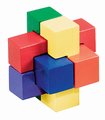 The pieces include: 1, 3x256, and 2x928 (AJ-VV-JJ or ALLXXX).
The colorful burr from "Melissa & Doug" uses this set.
It is very easy to construct - in fact this is possibly the easiest of all 6-piece burrs.
The pieces include: 1, 3x256, and 2x928 (AJ-VV-JJ or ALLXXX).
The colorful burr from "Melissa & Doug" uses this set.
It is very easy to construct - in fact this is possibly the easiest of all 6-piece burrs.
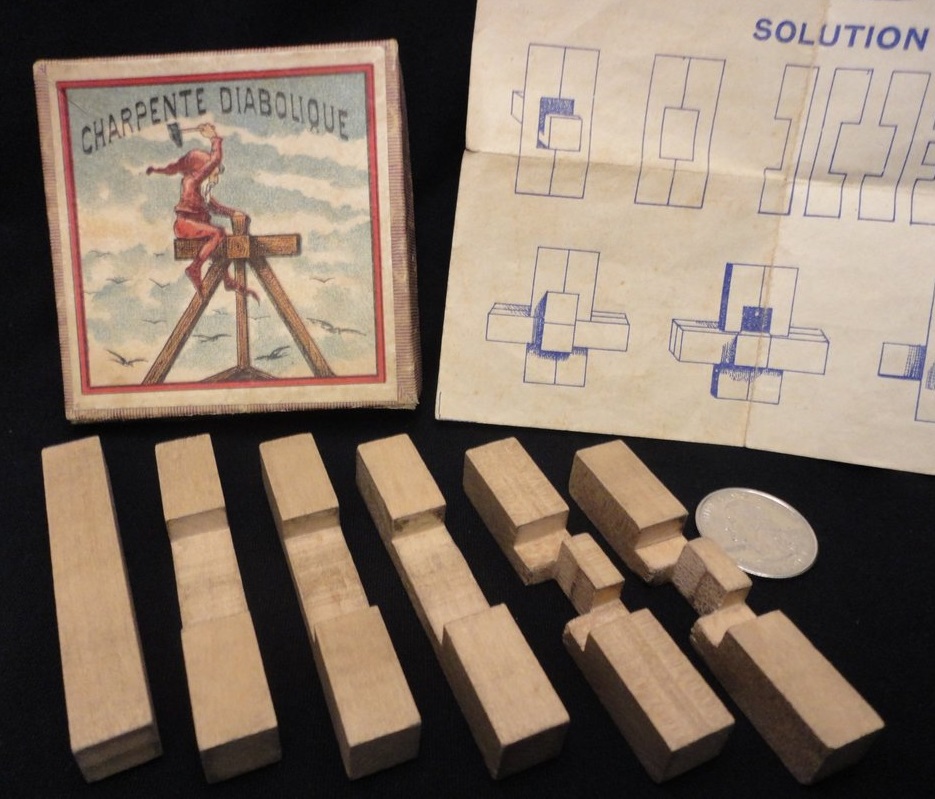
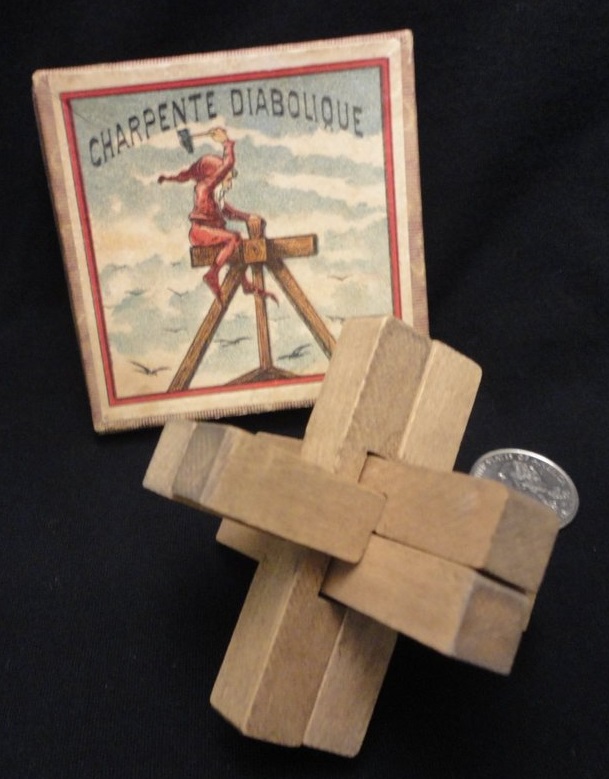
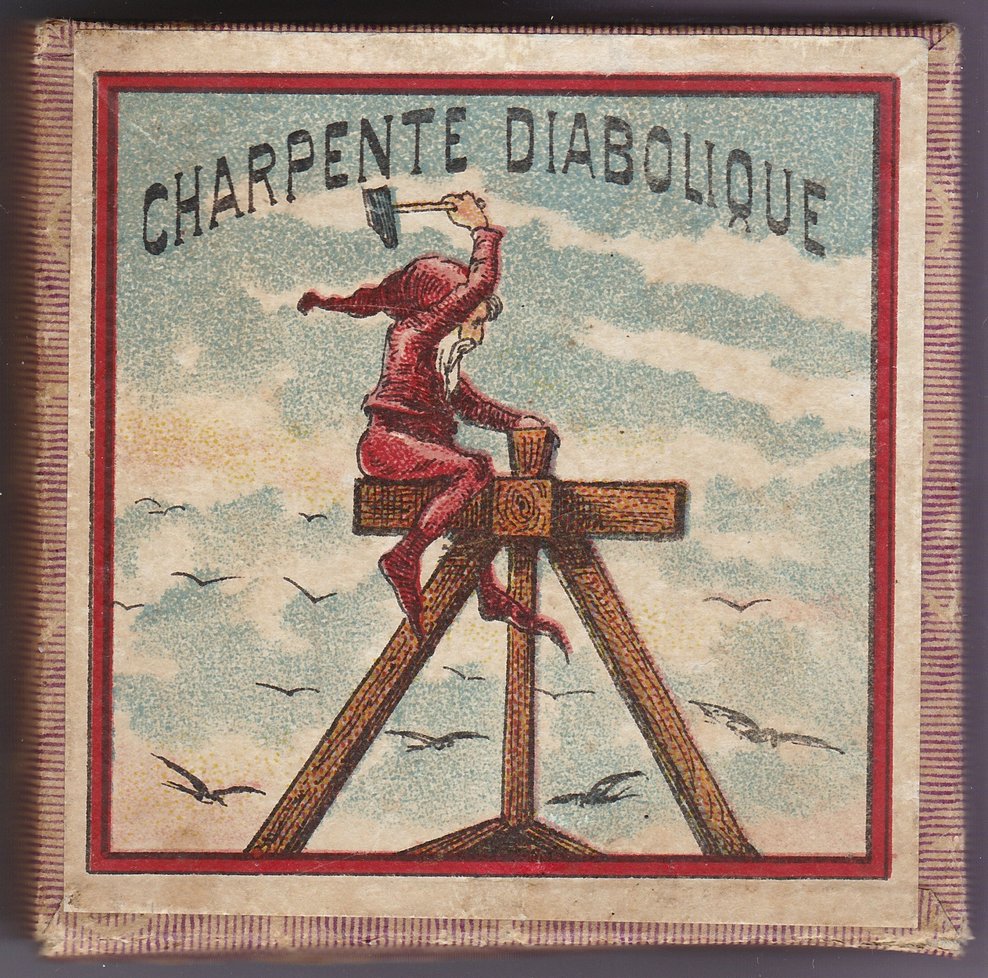
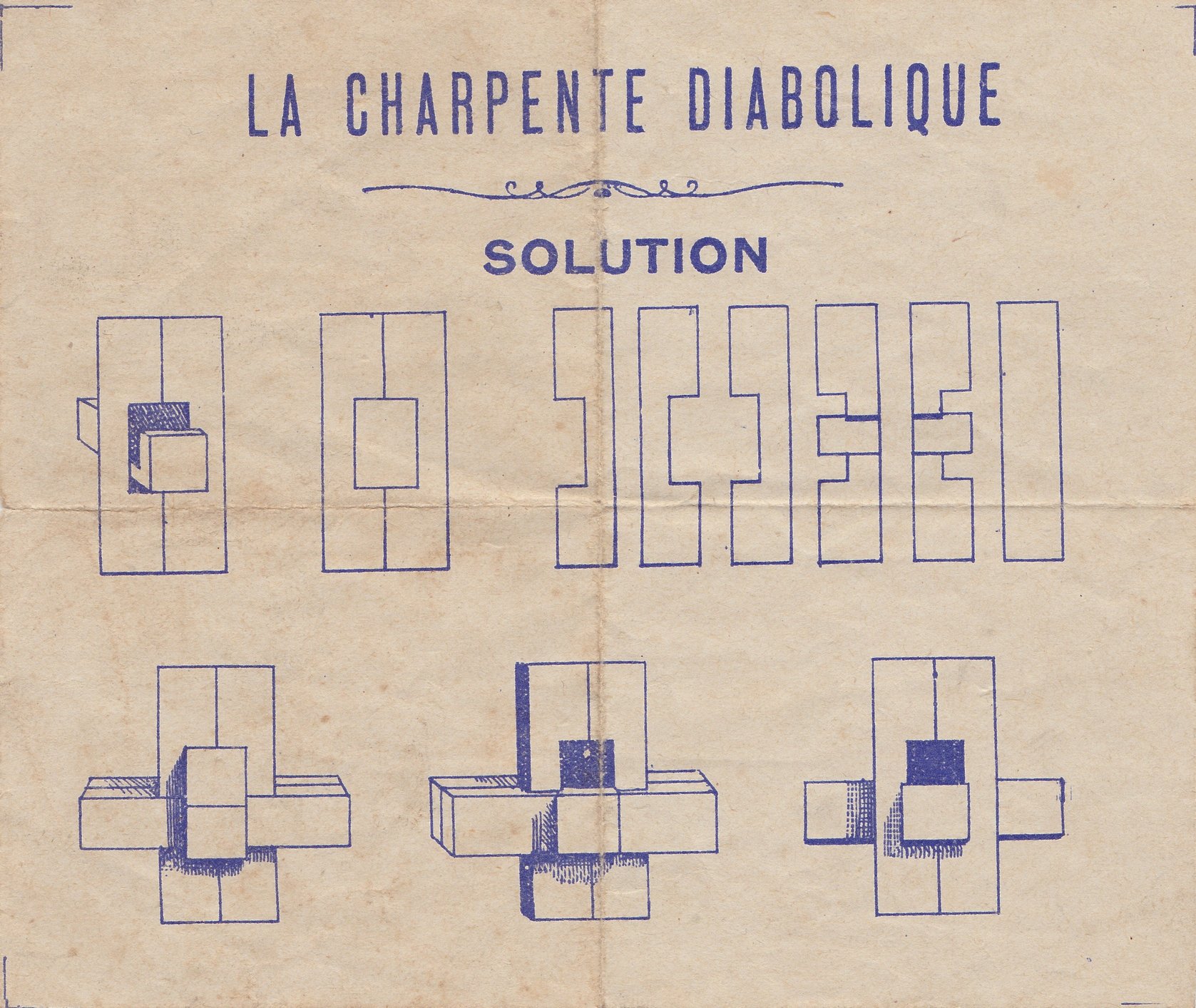
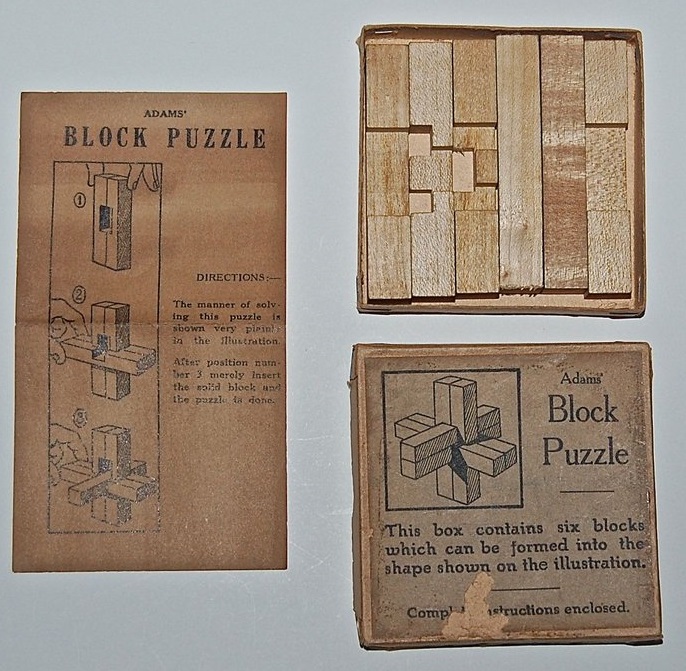
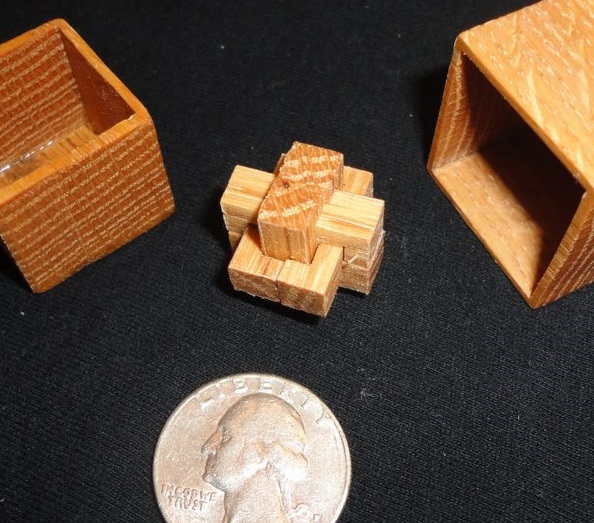

1 A A [p]
+----+----+----+----+----+----+
/ /|
+ + |
/ / +
+----+----+----+----+----+----+ |
| | |
| | +
+ + /
| | +
| |/
+----+----+----+----+----+----+
The Key |
256 J X [p2]
+----+ +----+
/ /| / /|
+ + | + + |
/ / +----+----+----+-/ / +
+----+ / +----+ |
| | + | | |
| |/ | | +
+ +----+----+----+----+ + /
| | +
| |/
+----+----+----+----+----+----+
The Tray |
824 T R [p]
+----+ +----+----+----+
/ /| / /|
+ + | +----+ + |
/ / +----+--| / / +
+----+ / | +----+----+ |
| | + +----+ | | |
| |/ /| | | +
+ +----+ | + + /
| | +----+--| | +
| |/ | |/
+----+----+ +----+----+
The |
975 O Q [p]
+----+----+----+ +----+
/ /| / /|
+ +----+ | + + |
/ /| | +----+-/ / +
+----+----+ | |/ +----+ |
| | + +----+ | | |
| | | / | | +
+ + | +----+ + /
| | +----+--| | +
| |/ | |/
+----+----+ +----+----+
Offsets |
928 V L
+----+ +----+----+ +----+
/ /| / /| / /|
+ + | +----+----+ | + + |
/ / +--| | +-/ / +
+----+ / | |/ +----+ |
| | + + + | | |
| |/ /| / | | +
+ +----+ | +----+ + /
| | +----+--| | +
| |/ | |/
+----+----+ +----+----+
The Tongue |
1024 Y Y [p2]
+----+ +----+
/ /| / /|
+ + | + + |
/ / +----+----+----+-/ / +
+----+ / +----+ |
| | + +----+----+ | | |
| |/ /| / | | +
+ +----+ | +----+ + /
| | +----+--| | +
| |/ | |/
+----+----+ +----+----+
The Y |
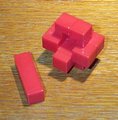 This small plastic red burr is one of my older puzzles - I don't recall where I got it. |
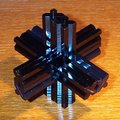
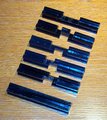
Licorice Stix - Reiss (1974) |
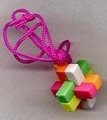
This is a small plastic burr pendant, made in China. |
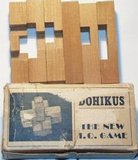 This set also appeared as "Dohikus." (I don't have this.) |

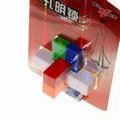
Kaiyue Kong Ming Lock |
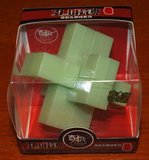
Another plastic version from China. |
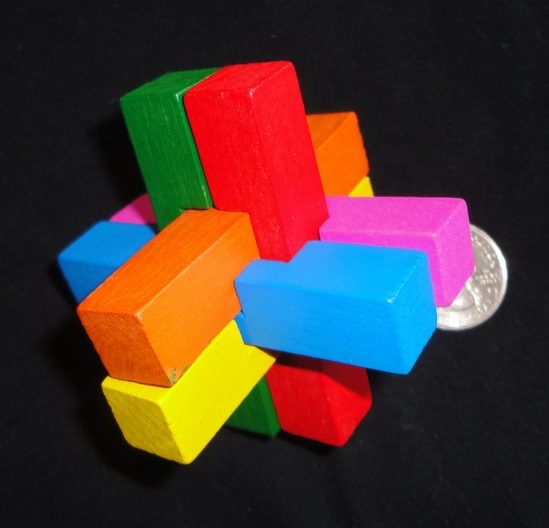
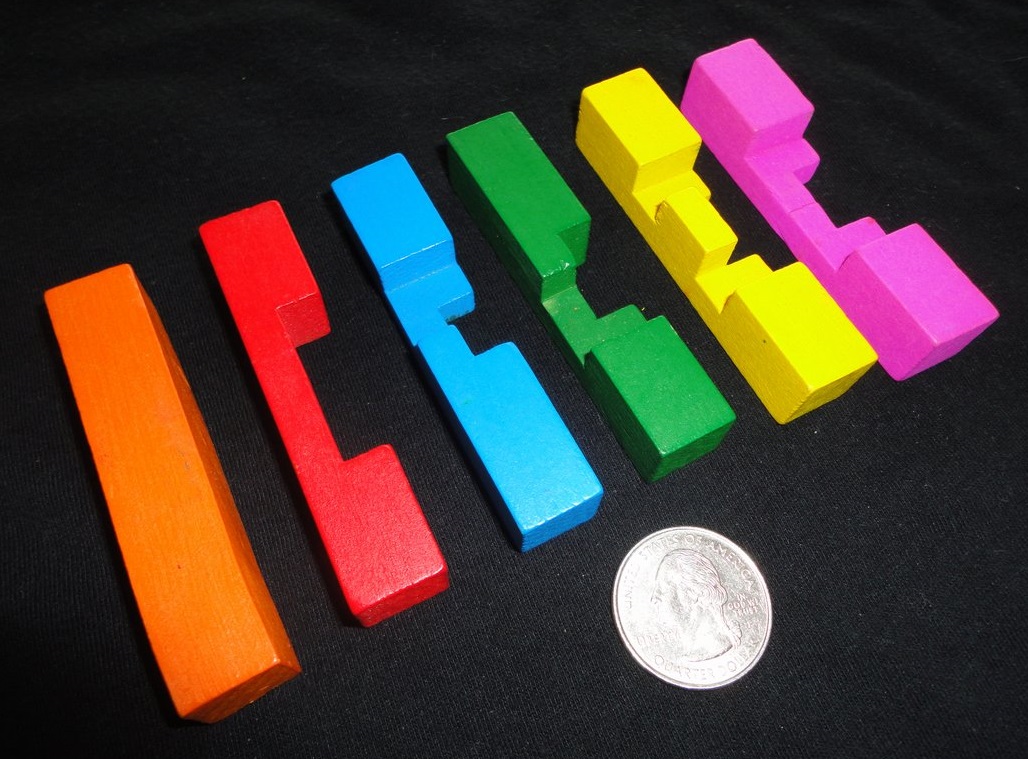
A colorful wooden version, from China. |
||
52 D P [p]
+----+ +----+----+----+
/ /| / /|
+ + | + + |
/ / +----+-/ / +
+----+ / +----+----+----+ |
| | + | | |
| |/ | | +
+ +----+----+ + /
| | +
| |/
+----+----+----+----+----+----+
The Side Tray |
792 R D
+----+ +----+----+----+----+
/ /| / /|
+ + | +----+----+ + |
/ / +--| / / +
+----+ / | +----+----+ |
| | + + | | |
| |/ /| | | +
+ +----+ | + + /
| | +----+--| | +
| |/ | |/
+----+----+ +----+----+
The |
911 N C
+----+----+----+----+ +----+
/ /| / /|
+ +----+----+ | + + |
/ /| | +-/ / +
+----+----+ | |/ +----+ |
| | + + | | |
| | | / | | +
+ + | +----+ + /
| | +----+--| | +
| |/ | |/
+----+----+ +----+----+
Walls |
824 T R [p]
+----+ +----+----+----+
/ /| / /|
+ + | +----+ + |
/ / +----+--| / / +
+----+ / | +----+----+ |
| | + +----+ | | |
| |/ /| | | +
+ +----+ | + + /
| | +----+--| | +
| |/ | |/
+----+----+ +----+----+
The |
975 O Q [p]
+----+----+----+ +----+
/ /| / /|
+ +----+ | + + |
/ /| | +----+-/ / +
+----+----+ | |/ +----+ |
| | + +----+ | | |
| | | / | | +
+ + | +----+ + /
| | +----+--| | +
| |/ | |/
+----+----+ +----+----+
Offsets |
1024 Y Y [p2]
+----+ +----+
/ /| / /|
+ + | + + |
/ / +----+----+----+-/ / +
+----+ / +----+ |
| | + +----+----+ | | |
| |/ /| / | | +
+ +----+ | +----+ + /
| | +----+--| | +
| |/ | |/
+----+----+ +----+----+
The Y |
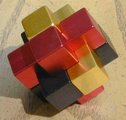
I got this aluminum burr called "Rainbow" from Bits and Pieces - it came in a nice black drawstring pouch. It was designed by Paul Eibe. |
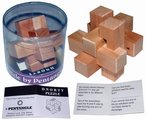
This is DNORTY from Pentangle. The name derives from the bold piece letters given in my table above: 52 (D), 911 (N), 975 (O), 792 (R), 824 (T), 1024 (Y). |
This is a Toyo Glass puzzle called "Tongari Kun and Roppongi." Not only is there a burr, but it must be assembled inside the glass container. The mouth is too small to pass the burr in fully assembled form. Remember, there are 6 different ways to construct this burr - you must find one that permits construction within the container! |
|
|
|||
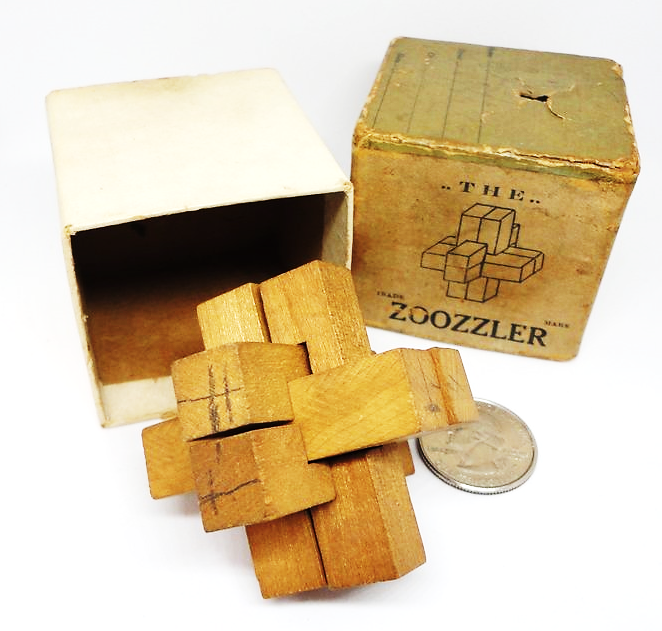

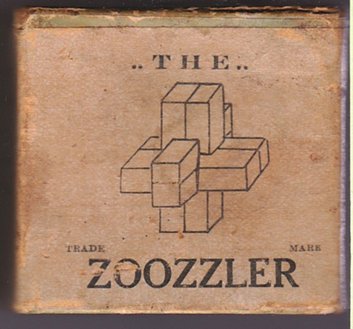
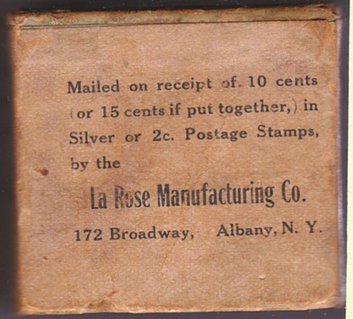
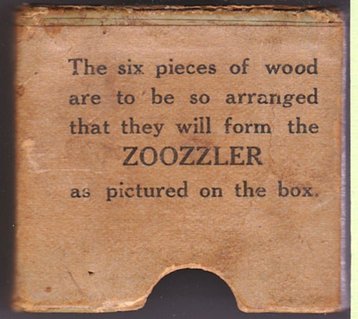
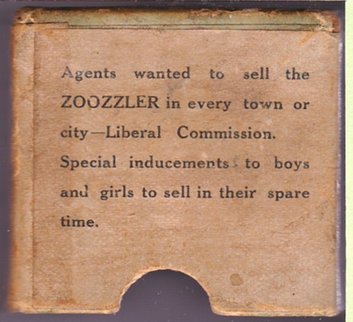
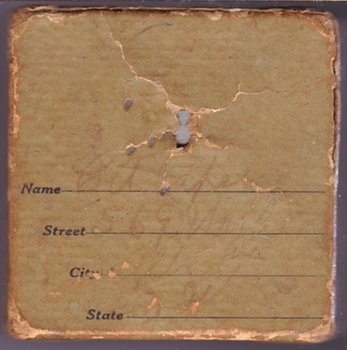
To resolve all six different solutions, I found it helpful to ask myself,
"What sits in the notch of piece #52, and then which piece is opposite #52?"
I found the following:
|
1 A A [p]
+----+----+----+----+----+----+
/ /|
+ + |
/ / +
+----+----+----+----+----+----+ |
| | |
| | +
+ + /
| | +
| |/
+----+----+----+----+----+----+
The Key |
188 I M [p]
+----+ +----+ +----+
/ /| / /| / /|
+ + | + + | + + |
/ / +----+-/ / +-/ / +
+----+ / +----+ / +----+ |
| | + | | + | | |
| |/ | |/ | | +
+ +----+----+ +----+ + /
| | +
| |/
+----+----+----+----+----+----+
The (Bottle) Opener |
824 T R [p]
+----+ +----+----+----+
/ /| / /|
+ + | +----+ + |
/ / +----+--| / / +
+----+ / | +----+----+ |
| | + +----+ | | |
| |/ /| | | +
+ +----+ | + + /
| | +----+--| | +
| |/ | |/
+----+----+ +----+----+
The |
975 O Q [p]
+----+----+----+ +----+
/ /| / /|
+ +----+ | + + |
/ /| | +----+-/ / +
+----+----+ | |/ +----+ |
| | + +----+ | | |
| | | / | | +
+ + | +----+ + /
| | +----+--| | +
| |/ | |/
+----+----+ +----+----+
Offsets |
1024 Y Y [p2]
+----+ +----+
/ /| / /|
+ + | + + |
/ / +----+----+----+-/ / +
+----+ / +----+ |
| | + +----+----+ | | |
| |/ /| / | | +
+ +----+ | +----+ + /
| | +----+--| | +
| |/ | |/
+----+----+ +----+----+
The Y |
1024 Y Y [p2]
+----+ +----+
/ /| / /|
+ + | + + |
/ / +----+----+----+-/ / +
+----+ / +----+ |
| | + +----+----+ | | |
| |/ /| / | | +
+ +----+ | +----+ + /
| | +----+--| | +
| |/ | |/
+----+----+ +----+----+
The Y |
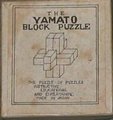
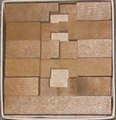
The vintage Japanese Yamato Block Puzzle. |
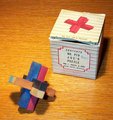
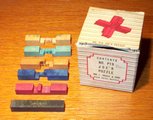
This is "No. P19 Joe's Puzzle" from Wm. F. Drueke & Sons of Grand Rapids Michigan. There is no date on the box but it seems fairly old. |
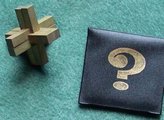
This is a small brass burr, called the "Ultimate Puzzle," made for Chadwick Miller and dated 1969. It came with a small black case with a question mark on the front. |
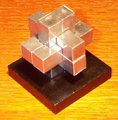
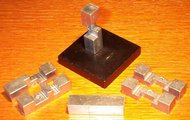
In this aluminum burr, piece 824 is fixed to the base. I think this came from B&P. |
||
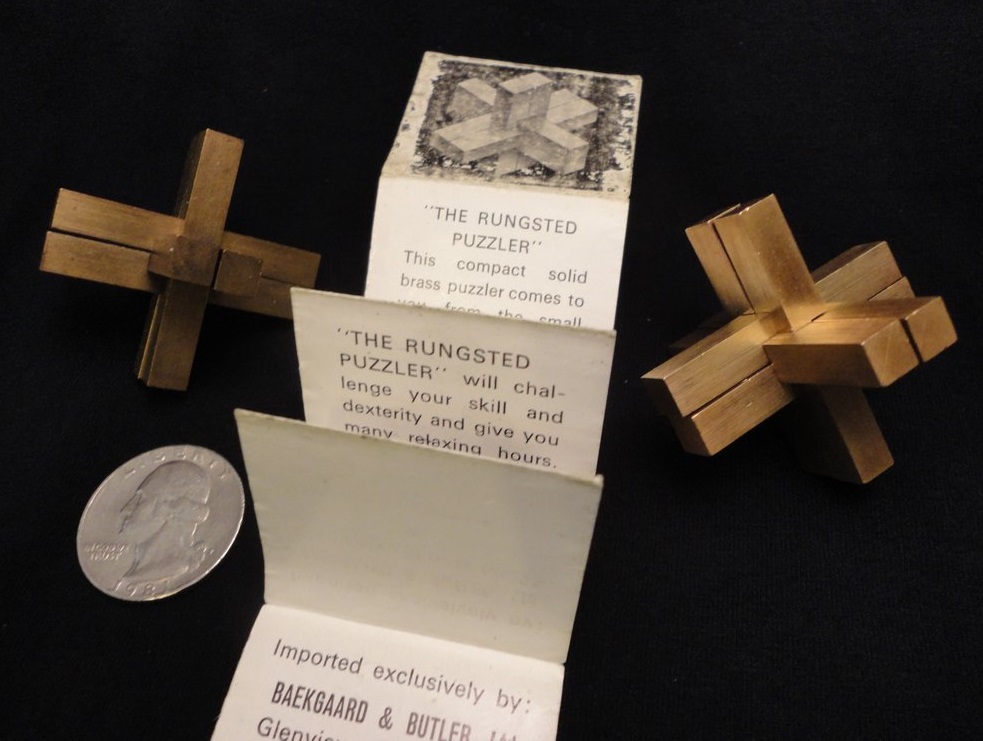

The Rungsted Puzzler - two instances of a small brass burr with instruction sheet. Made in Denmark. The Yamato Block pieces { 1, 188, 824/975, 1024x2 } The same small brass burr was sold by Chadwick Miller as the Ultimate Puzzle, and they used a similar question mark symbol. |
||

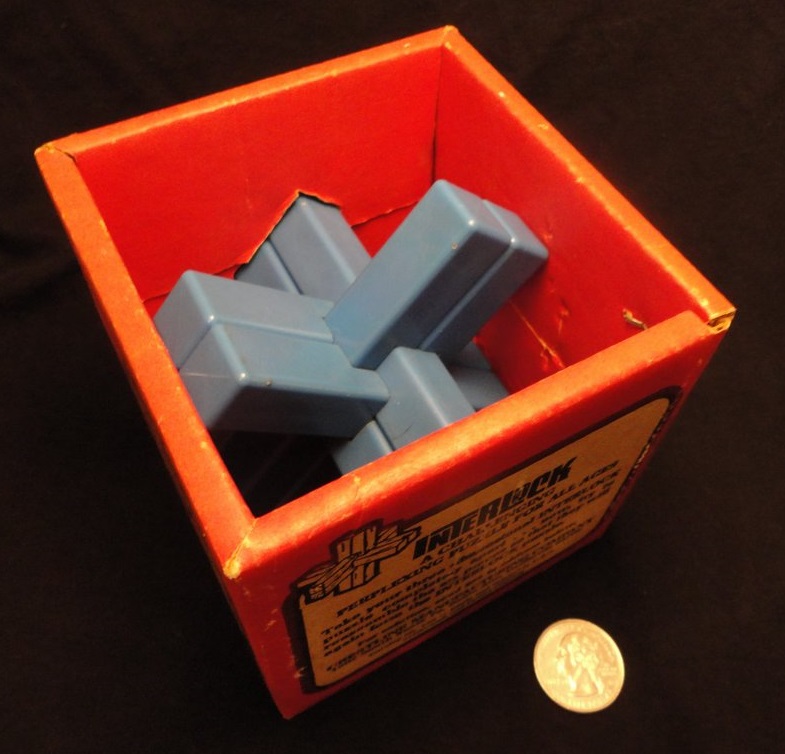
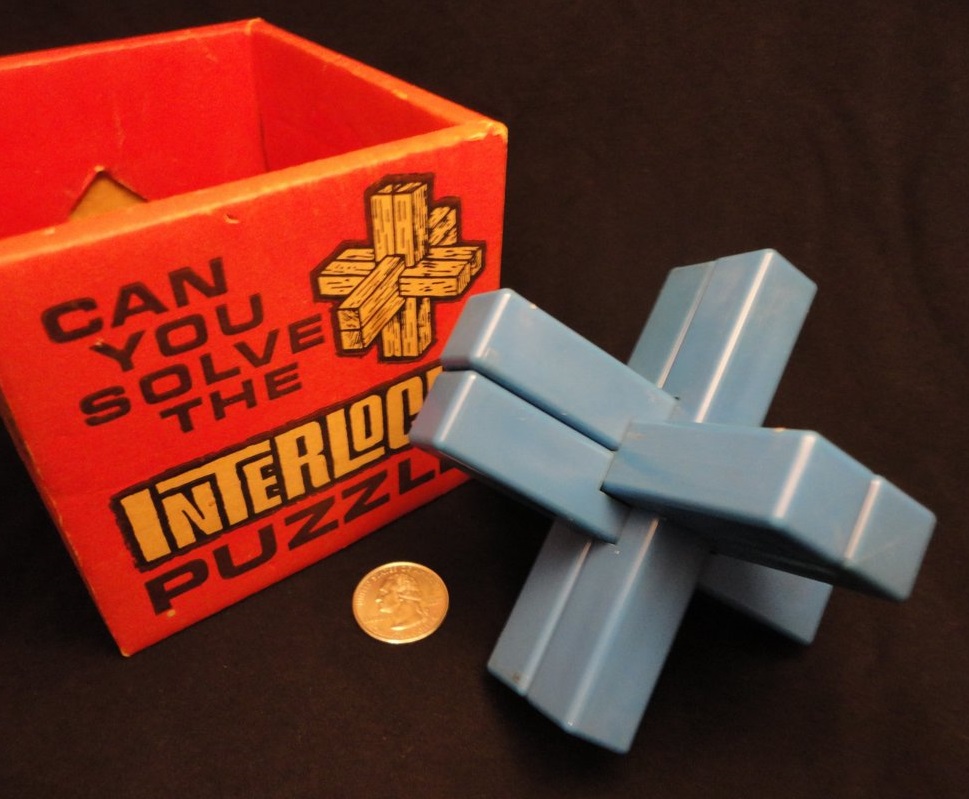
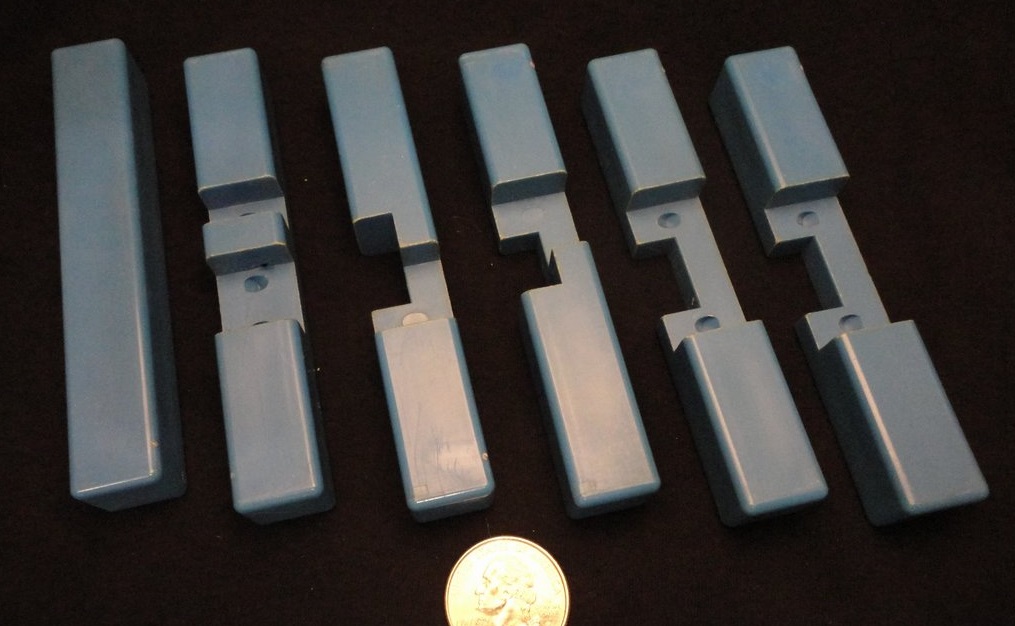
Interlock - a vintage puzzle from Crestline No year on the box. This is a large example of the Yamato Block set of pieces { 1, 188, 824/975, 2x 1024 }. |
||
88
+----+ +----+ +----+----+
/ /| / /| / /|
+ + | +----+ | + + |
/ / +--| | +-/ / +
+----+ / | |/ +----+----+ |
| | + +----+ | | |
| |/ | | +
+ +----+----+----+ + /
| | +
| |/
+----+----+----+----+----+----+
|
512
+----+ +----+
/ /| / /|
+ + | + + |
/ / +----+----+----+-/ / +
+----+ / +----+ |
| | + +----+ | | |
| |/ /| / | | +
+ +----+ | +----+----+ + /
| | +--| | +
| |/ | |/
+----+----+ +----+----+----+
|
704
+----+ +----+ +----+
/ /| / /| / /|
+ + | +----+ | + + |
/ / +----+--| | +-/ / +
+----+ / | |/ +----+ |
| | + + + | | |
| |/ /| / | | +
+ +----+----+ | +----+ + /
| | +--| | +
| |/ | |/
+----+----+----+ +----+----+
|
960
+----+ +----+ +----+
/ /| / /| / /|
+ + | +----+ | + + |
/ / +-------| | +-/ / +
+----+ / | |/ +----+ |
| | + +----+ + | | |
| |/ /| / | | +
+ +----+ | +----+ + /
| | +----+--| | +
| |/ | |/
+----+----+ +----+----+
|
992
+----+ +----+ +----+
/ /| / /| / /|
+ + | +----+ | + + |
/ / +--| | +----+-/ / +
+----+ / | |/ +----+ |
| | + + +----+ | | |
| |/ /| / | | +
+ +----+ | +----+ + /
| | +----+--| | +
| |/ | |/
+----+----+ +----+----+
|
1008
+----+----+ +----+
/ /| / /|
+ +----+ | + + |
/ /| | +----+----+-/ / +
+----+ | |/ +----+ |
| | +----+----+----+ | | |
| |/ /| / | | +
+ +----+ | +----+ + /
| | +----+--| | +
| |/ | |/
+----+----+ +----+----+
|
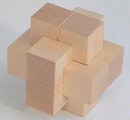
|
This is Bruce Love's Dozen, (the version without the D's) purchased from Bill Cutler, and made from Maple by Jerry McFarland. This burr is special because it is the only burr at the highest level, 12. Unfortunately the solution is not unique - there are 89 ways to put these pieces together, and most of them don't achieve level 12. Note that there are no other level 12 burrs (for any length stick), and no level 11 burrs at all. |
88
+----+ +----+ +----+----+
/ /| / /| / /|
+ + | +----+ | + + |
/ / +--| | +-/ / +
+----+ / | |/ +----+----+ |
| | + +----+ | | |
| |/ | | +
+ +----+----+----+ + /
| | +
| |/
+----+----+----+----+----+----+
|
512
+----+ +----+
/ /| / /|
+ + | + + |
/ / +----+----+----+-/ / +
+----+ / +----+ |
| | + +----+ | | |
| |/ /| / | | +
+ +----+ | +----+----+ + /
| | +--| | +
| |/ | |/
+----+----+ +----+----+----+
|
768
+----+ +----+
/ /| / /|
+ + | + + |
/ / +----+----+----+-/ / +
+----+ / +----+ |
| | + +----+ | | |
| |/ /| / | | +
+ +----+----+ | +----+ + /
| | +--| | +
| |/ | |/
+----+----+----+ +----+----+
|
922
+----+ +----+----+ +----+
/ /| / /| / /|
+ + | + + | + + |
/ / +-/ / +-/ / +
+----+ / +----+----+ / +----+ |
| | + | | + | | |
| |/ | |/ | | +
+ +----+----+----+----+ + /
| | +----+--| | +
| |/ | |/
+----+----+ +----+----+
|
1008
+----+----+ +----+
/ /| / /|
+ +----+ | + + |
/ /| | +----+----+-/ / +
+----+ | |/ +----+ |
| | +----+----+----+ | | |
| |/ /| / | | +
+ +----+ | +----+ + /
| | +----+--| | +
| |/ | |/
+----+----+ +----+----+
|
1008
+----+----+ +----+
/ /| / /|
+ +----+ | + + |
/ /| | +----+----+-/ / +
+----+ | |/ +----+ |
| | +----+----+----+ | | |
| |/ /| / | | +
+ +----+ | +----+ + /
| | +----+--| | +
| |/ | |/
+----+----+ +----+----+
|
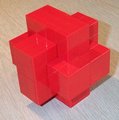
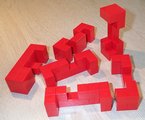
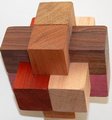
|
| This is Peter Marineau's "Piston" burr, so named because of the large number of times pieces must be moved back and forth during the solution. This burr is special because it achieves the highest level possible for length-6 pieces, level 9 (i.e. it requires 9 moves to release the first piece), and the solution is unique - it has no other solutions at lower levels. I made an example from Lego. I also bought a version made from six exotic woods, by Thomas Moeller. It is quite large - each piece measures 1.5" x 1.5" x 4.5". Check Bill Cutler's site for availability. |
624
+----+----+ +----+----+
/ /| / /|
+ +----+ | +----+ + |
/ /| | +----+--| / / +
+----+ | |/ | +----+ |
| | +----+ +----+--| | |
| |/ /| / | | +
+ +----+----+ | +----+ + /
| | +--| | +
| |/ | |/
+----+----+----+ +----+----+
|
702
+----+ +----+ +----+
/ /| / /| / /|
+ + | +----+----+ | + + |
/ / +-/ /| | +-/ / +
+----+ / +----+ | |/ +----+ |
| | + | | + + | | |
| |/ | | | / | | +
+ +----+ + | +----+ + /
| | +--| | +
| |/ | |/
+----+----+----+ +----+----+
|
768
+----+ +----+
/ /| / /|
+ + | + + |
/ / +----+----+----+-/ / +
+----+ / +----+ |
| | + +----+ | | |
| |/ /| / | | +
+ +----+----+ | +----+ + /
| | +--| | +
| |/ | |/
+----+----+----+ +----+----+
|
883
+----+ +----+----+
/ /| / /|
+ +----+ +----+ + |
/ /|-+-/ / +
+----+----+ | +----+----+----+ |
| | +--| | |
| | | | | +
+ + | +----+ + /
| | +----+--| | +
| |/ | |/
+----+----+ +----+----+
|
1015
+----+ +----+
/ /| / /|
+ +----+ +----+ + |
/ /|-+----+-/ / +
+----+----+ | +----+----+ |
| | +----+--| | |
| | | | | +
+ + | + + /
| | +----+--| | +
| |/ | |/
+----+----+ +----+----+
|
1024 Y Y [p2]
+----+ +----+
/ /| / /|
+ + | + + |
/ / +----+----+----+-/ / +
+----+ / +----+ |
| | + +----+----+ | | |
| |/ /| / | | +
+ +----+ | +----+ + /
| | +----+--| | +
| |/ | |/
+----+----+ +----+----+
The Y |
| This is Bill Cutler's Computer's Choice Unique 10 burr. I don't know who the craftsman is - I bought it as part of a group of hand-made puzzles. This burr is special because it is one of 18 burrs that have a unique level 10 solution, the highest level achievable for six-piece burrs with unique solutions. The pieces must be length-8, however, not length-6. |
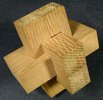
|
52 D P [p]
+----+ +----+----+----+
/ /| / /|
+ + | + + |
/ / +----+-/ / +
+----+ / +----+----+----+ |
| | + | | |
| |/ | | +
+ +----+----+ + /
| | +
| |/
+----+----+----+----+----+----+
The Side Tray |
615 K G 1
+----+----+ +----+----+----+
/ /| / /|
+ + | +----+ + |
/ / +--| / / +
+----+----+ / | +----+----+ |
| | +----+ | | |
| | | | | +
+ + | + + /
| | +----+--| | +
| |/ | |/
+----+----+ +----+----+
Left Notched Half-Tray |
792 R D 2
+----+ +----+----+----+----+
/ /| / /|
+ + | +----+----+ + |
/ / +--| / / +
+----+ / | +----+----+ |
| | + + | | |
| |/ /| | | +
+ +----+ | + + /
| | +----+--| | +
| |/ | |/
+----+----+ +----+----+
Left Wall |
960 X N 2
+----+ +----+ +----+
/ /| / /| / /|
+ + | +----+ | + + |
/ / +-------| | +-/ / +
+----+ / | |/ +----+ |
| | + +----+ + | | |
| |/ /| / | | +
+ +----+ | +----+ + /
| | +----+--| | +
| |/ | |/
+----+----+ +----+----+
The |
992 W O [p] 2
+----+ +----+ +----+
/ /| / /| / /|
+ + | +----+ | + + |
/ / +--| | +----+-/ / +
+----+ / | |/ +----+ |
| | + + +----+ | | |
| |/ /| / | | +
+ +----+ | +----+ + /
| | +----+--| | +
| |/ | |/
+----+----+ +----+----+
Fingers |
975 O Q E [p] 2
+----+----+----+ +----+
/ /| / /|
+ +----+ | + + |
/ /| | +----+-/ / +
+----+----+ | |/ +----+ |
| | + +----+ | | |
| | | / | | +
+ + | +----+ + /
| | +----+--| | +
| |/ | |/
+----+----+ +----+----+
Right Offset |
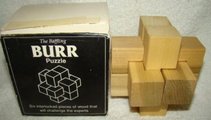
|
This is called The Baffling Burr Puzzle ("Six interlocked pieces of wood that will challenge the experts") - there is no other information on the box. This has pieces numbers 52, 615, 792, 960/992, 975 and is Bill Cutler's #305, not Bill's Baffling Burr, which has pieces 103, 760, 960/992, 996, 1024. |
216
+----+ +----+ +----+
/ /| / /| / /|
+ + | +----+ | +----+ + |
/ / +--| | +-/ / +
+----+ / | |/ +----+----+ |
| | + +----+ | | |
| |/ | | +
+ +----+----+----+ + /
| | +
| |/
+----+----+----+----+----+----+
|
412
+----+ +----+----+ +----+
/ /| / /| / /|
+ + | +----+ + | + + |
/ / +--| / / +-/ / +
+----+ / | +----+ / +----+ |
| | + + | | + | | |
| |/ /| | |/ | | +
+ +----+ | + +----+ + /
| | +--| | +
| |/ | |/
+----+----+ +----+----+----+
|
751
+----+----+ +----+
/ /| / /|
+ + | + + |
/ / +----+----+-/ / +
+----+----+ / +----+ |
| | + +----+ | | |
| |/ /| / | | +
+ +----+ | +----+ + /
| | +--| | +
| |/ | |/
+----+----+----+ +----+----+
|
896
+----+ +----+----+
/ /| / /|
+ + | +----+ + |
/ / +----+----+--| / / +
+----+ / | +----+ |
| | + +----+----+--| | |
| |/ /| / | | +
+ +----+ | +----+ + /
| | +----+--| | +
| |/ | |/
+----+----+ +----+----+
|
960
+----+ +----+ +----+
/ /| / /| / /|
+ + | +----+ | + + |
/ / +-------| | +-/ / +
+----+ / | |/ +----+ |
| | + +----+ + | | |
| |/ /| / | | +
+ +----+ | +----+ + /
| | +----+--| | +
| |/ | |/
+----+----+ +----+----+
Right Finger |
1024
+----+ +----+
/ /| / /|
+ + | + + |
/ / +----+----+----+-/ / +
+----+ / +----+ |
| | + +----+----+ | | |
| |/ /| / | | +
+ +----+ | +----+ + /
| | +----+--| | +
| |/ | |/
+----+----+ +----+----+
The Y |
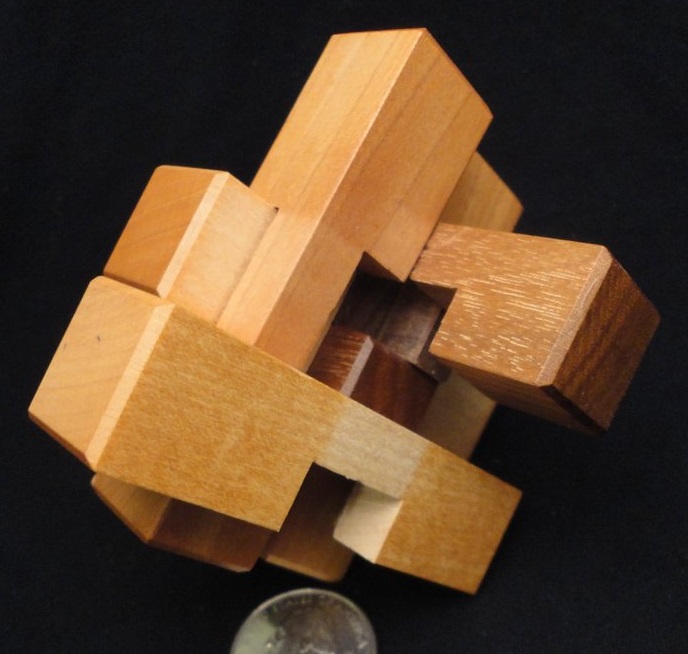

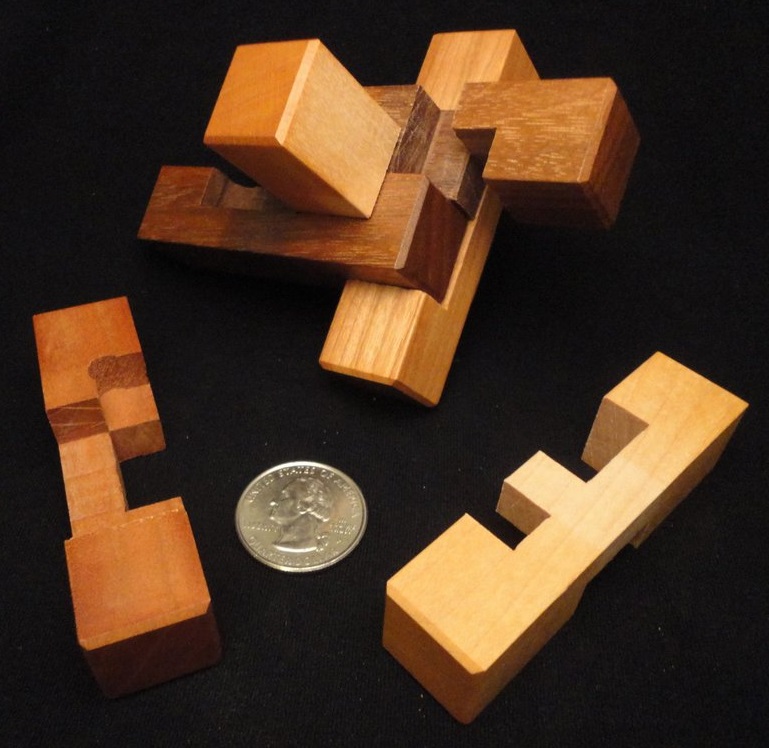
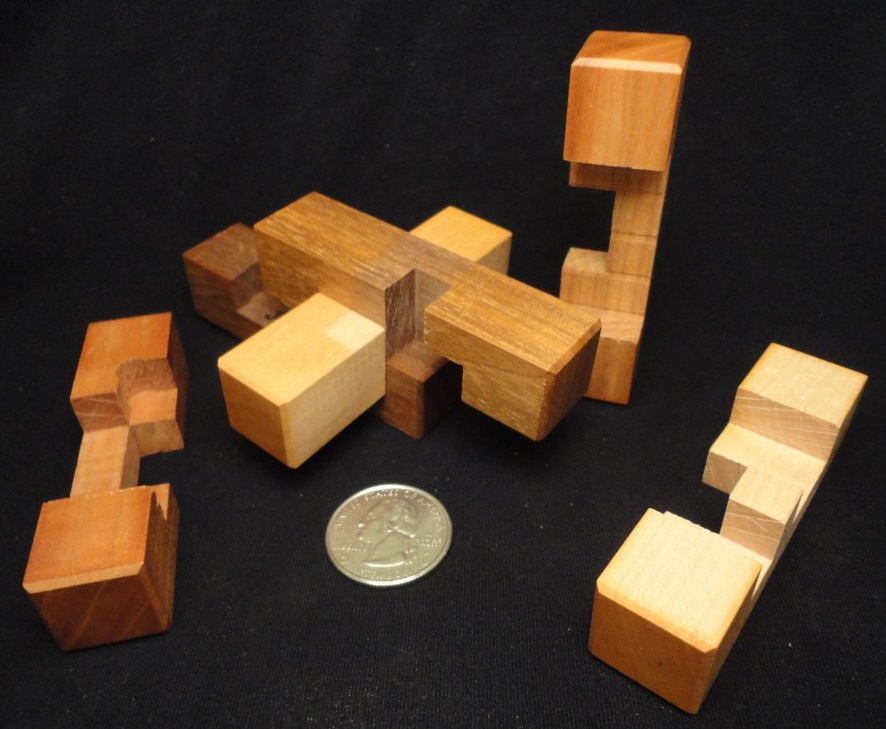
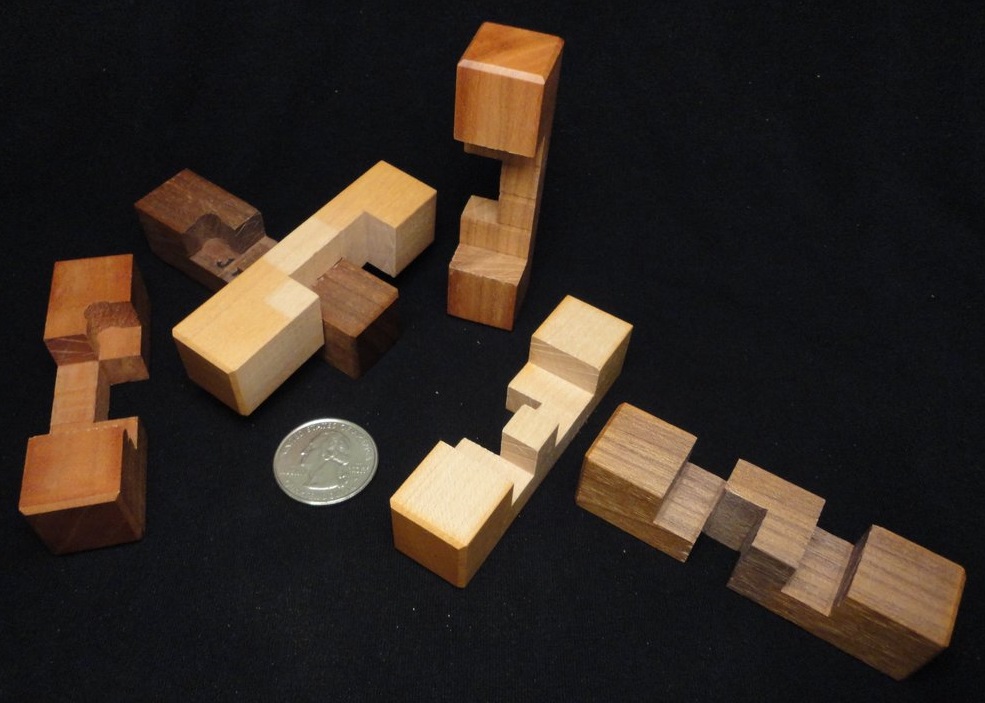
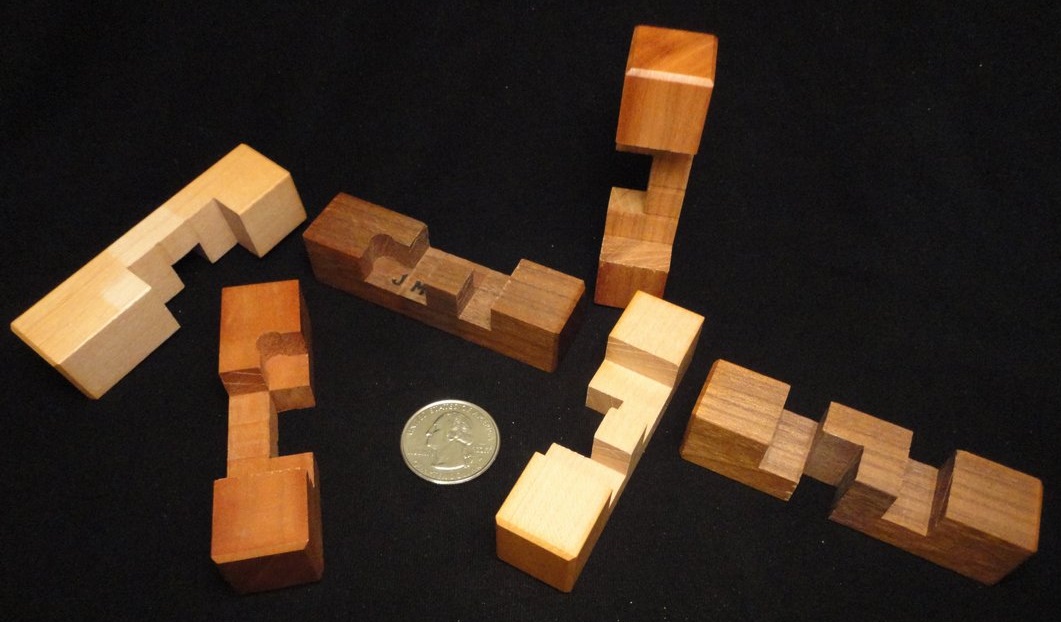
1 A A [p]
+----+----+----+----+----+----+
/ /|
+ + |
/ / +
+----+----+----+----+----+----+ |
| | |
| | +
+ + /
| | +
| |/
+----+----+----+----+----+----+
The Key |
188 I M [p]
+----+ +----+ +----+
/ /| / /| / /|
+ + | + + | + + |
/ / +----+-/ / +-/ / +
+----+ / +----+ / +----+ |
| | + | | + | | |
| |/ | |/ | | +
+ +----+----+ +----+ + /
| | +
| |/
+----+----+----+----+----+----+
The (Bottle) Opener |
256 J X B [p2] 3
+----+ +----+
/ /| / /|
+ + | + + |
/ / +----+----+----+-/ / +
+----+ / +----+ |
| | + | | |
| |/ | | +
+ +----+----+----+----+ + /
| | +
| |/
+----+----+----+----+----+----+
The Tray |
960 X N 2
+----+ +----+ +----+
/ /| / /| / /|
+ + | +----+ | + + |
/ / +-------| | +-/ / +
+----+ / | |/ +----+ |
| | + +----+ + | | |
| |/ /| / | | +
+ +----+ | +----+ + /
| | +----+--| | +
| |/ | |/
+----+----+ +----+----+
Right Finger |
975 O Q E [p] 2
+----+----+----+ +----+
/ /| / /|
+ +----+ | + + |
/ /| | +----+-/ / +
+----+----+ | |/ +----+ |
| | + +----+ | | |
| | | / | | +
+ + | +----+ + /
| | +----+--| | +
| |/ | |/
+----+----+ +----+----+
Right Offset |
1024 Y Y [p2]
+----+ +----+
/ /| / /|
+ + | + + |
/ / +----+----+----+-/ / +
+----+ / +----+ |
| | + +----+----+ | | |
| |/ /| / | | +
+ +----+ | +----+ + /
| | +----+--| | +
| |/ | |/
+----+----+ +----+----+
The Y |
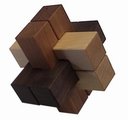
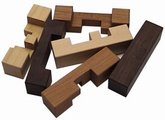
|
| This is the Burr Puzzle from Toys From Times Past. This has pieces 1, 188, 256, 960, 975, 1024 and is the same design shown in Hoffmann, except Toys From Times Past has incorporated a locking mechanism into the key piece. |
120 G U 1
+----+ +----+----+
/ /| / /|
+ + | + + |
/ / +----+---+--/ / +
+----+ / +----+----+ |
| | + | | |
| |/ | | +
+ +----+----+----+ + /
| | +
| |/
+----+----+----+----+----+----+
The Three-Quarters Tray |
160
+----+ +----+----+ +----+
/ /| / /| / /|
+ + | +----+----+ | + + |
/ / +--| | +-/ / +
+----+ / | |/ +----+ |
| | + +----+----+ | | |
| |/ | | +
+ +----+----+----+----+ + /
| | +
| |/
+----+----+----+----+----+----+
|
256 J X B [p2] 3
+----+ +----+
/ /| / /|
+ + | + + |
/ / +----+----+----+-/ / +
+----+ / +----+ |
| | + | | |
| |/ | | +
+ +----+----+----+----+ + /
| | +
| |/
+----+----+----+----+----+----+
The Tray |
512
+----+ +----+
/ /| / /|
+ + | + + |
/ / +----+----+----+-/ / +
+----+ / +----+ |
| | + +----+ | | |
| |/ /| / | | +
+ +----+ | +----+----+ + /
| | +--| | +
| |/ | |/
+----+----+ +----+----+----+
|
880
+----+----+ +----+----+
/ /| / /|
+ +----+ | +----+ + |
/ /| | +----+--| / / +
+----+ | |/ | +----+ |
| | +----+----+----+--| | |
| |/ /| / | | +
+ +----+ | +----+ + /
| | +----+--| | +
| |/ | |/
+----+----+ +----+----+
|
960 X N 2
+----+ +----+ +----+
/ /| / /| / /|
+ + | +----+ | + + |
/ / +-------| | +-/ / +
+----+ / | |/ +----+ |
| | + +----+ + | | |
| |/ /| / | | +
+ +----+ | +----+ + /
| | +----+--| | +
| |/ | |/
+----+----+ +----+----+
|
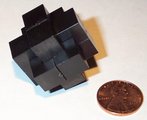
|
This small black plastic burr I found in a puzzle shop in Prague during IPP28 is a copy of the Philippe Dubois/Gaby Games burr that requires 6 (or 7, depending on how you count) moves to release the first piece. It is one of the "Fearsome Four." |
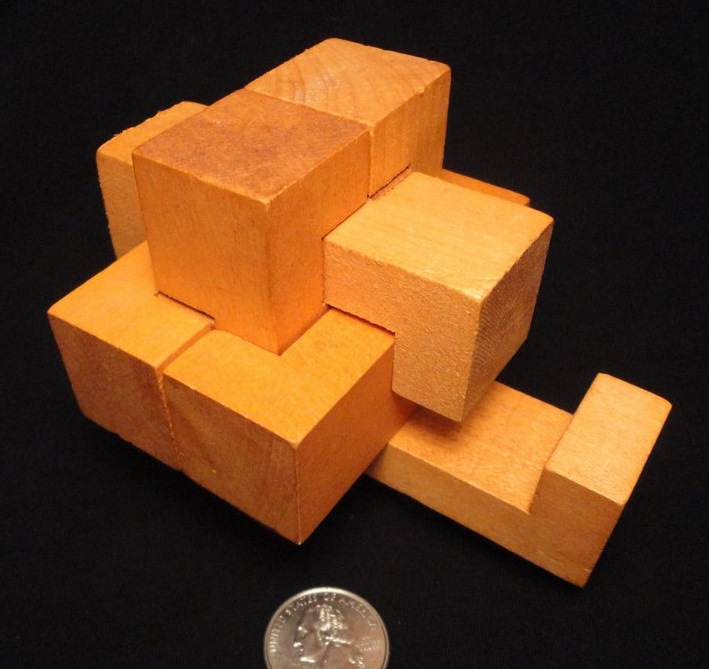
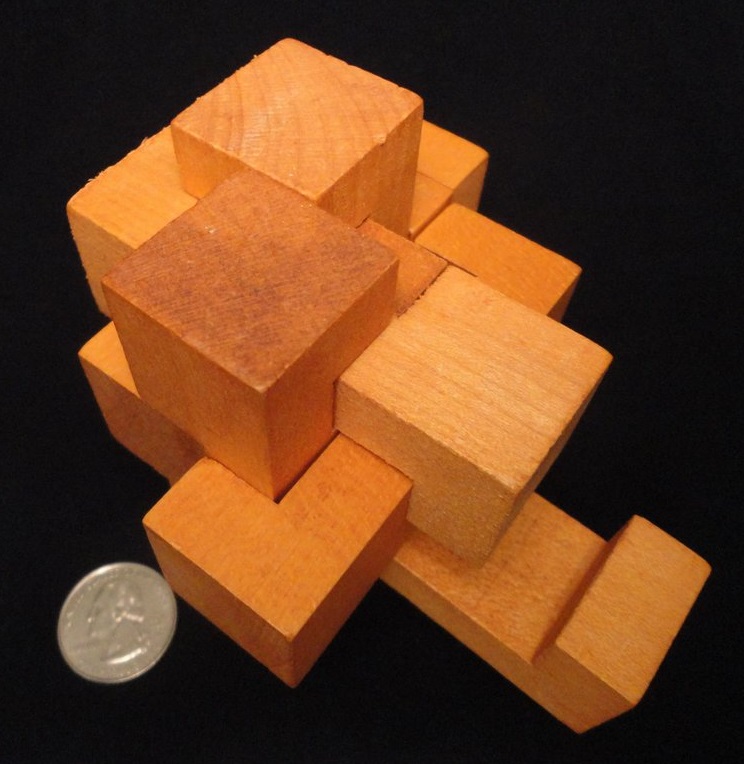
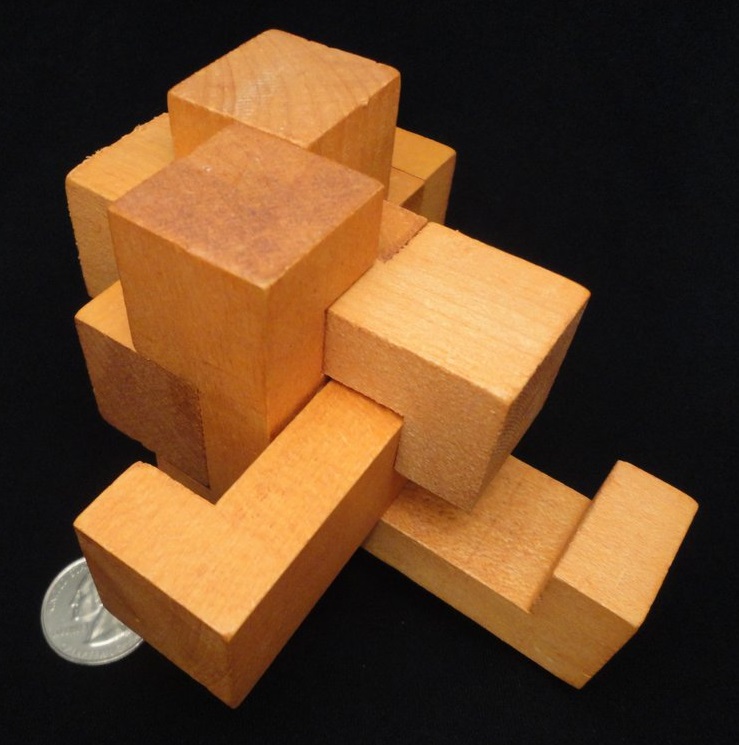
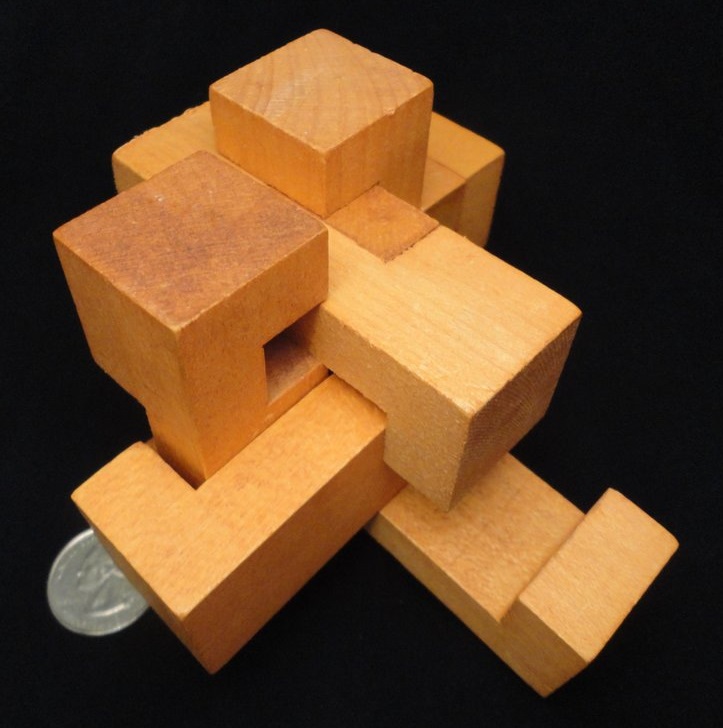
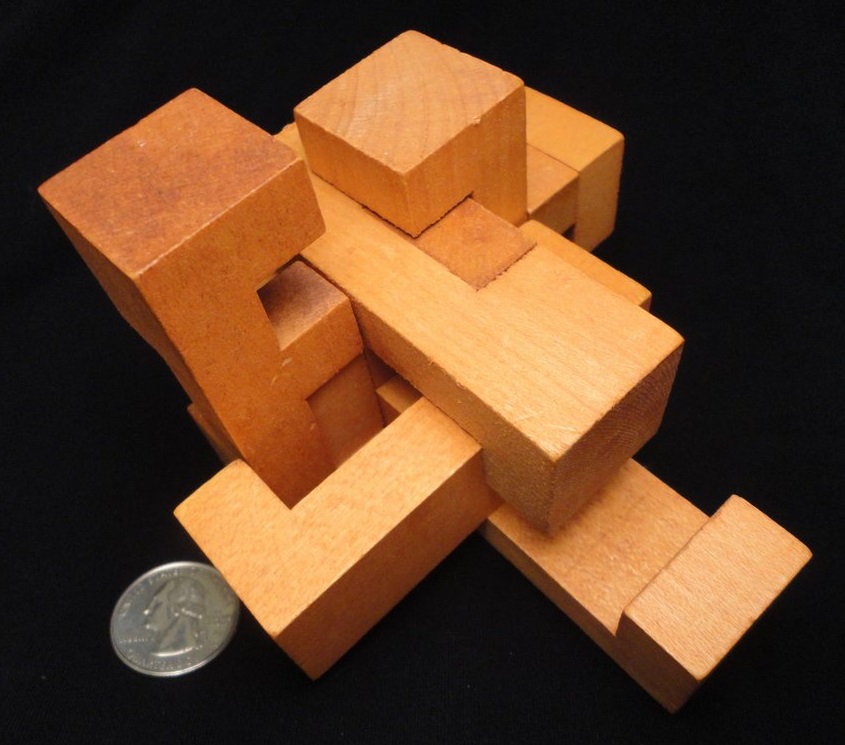
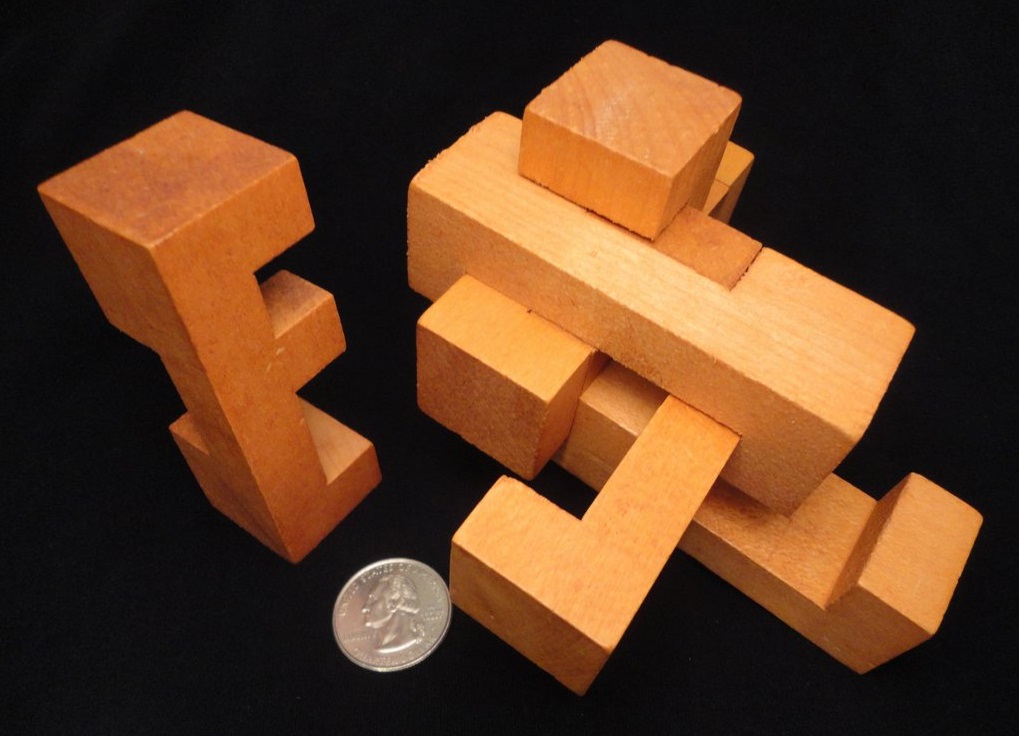
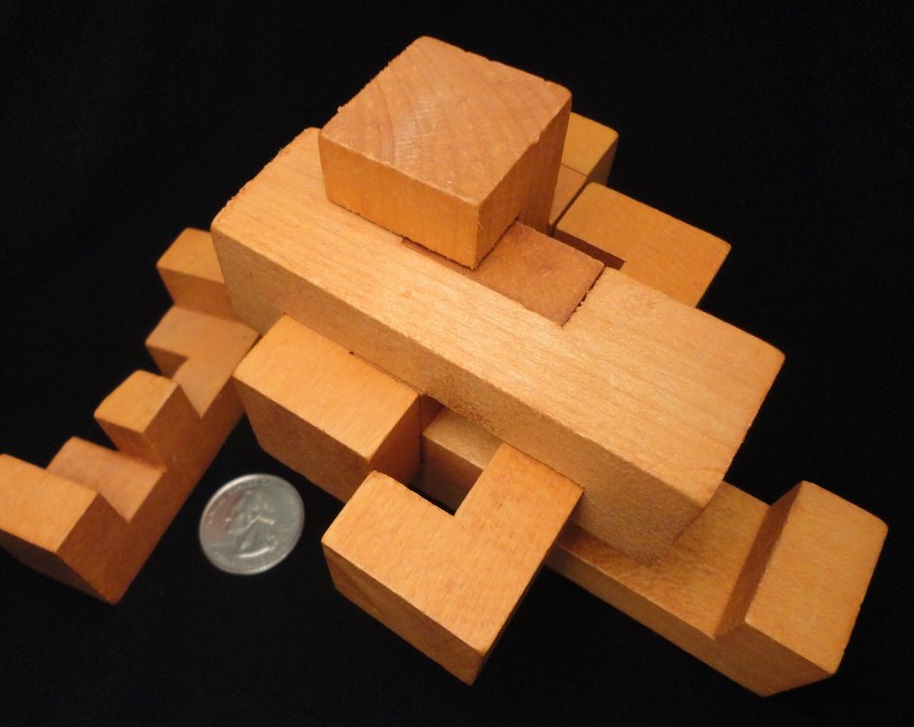
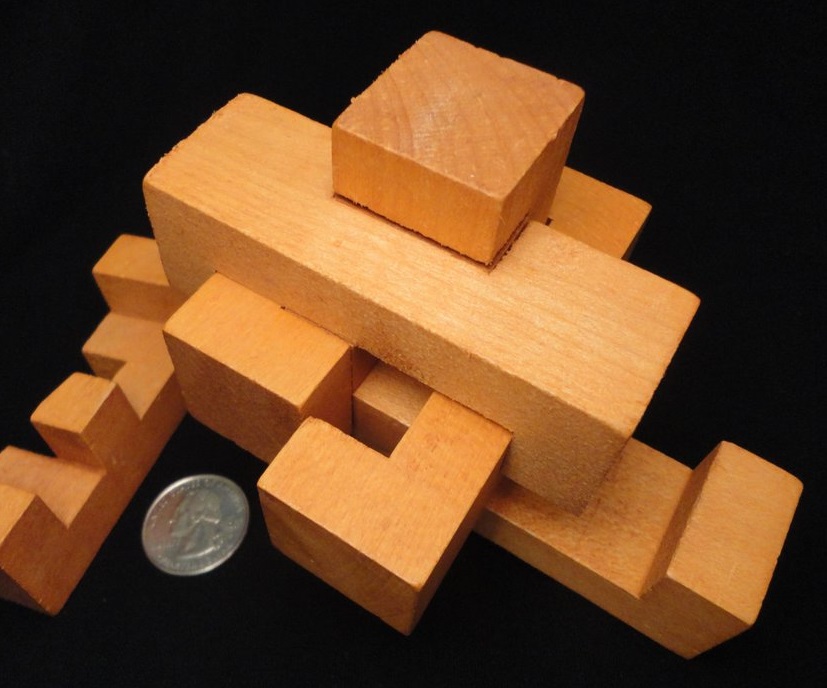
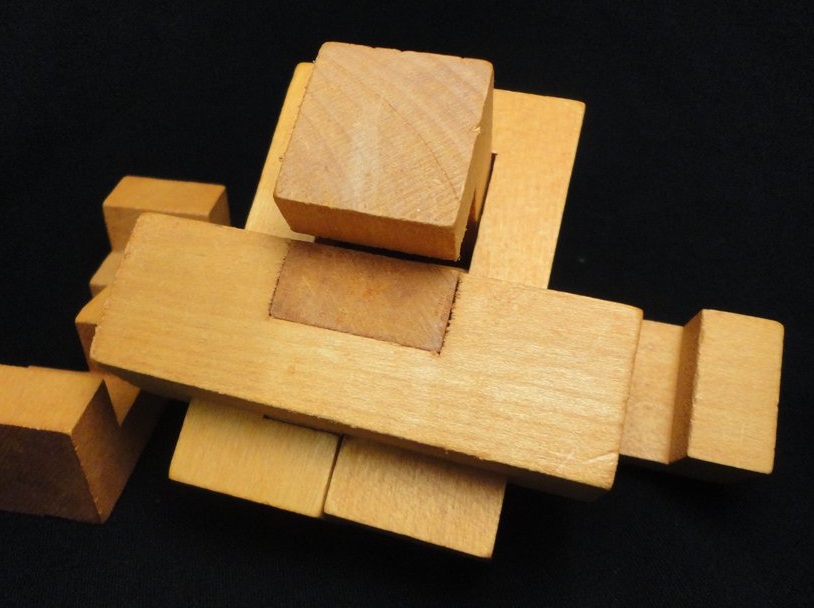
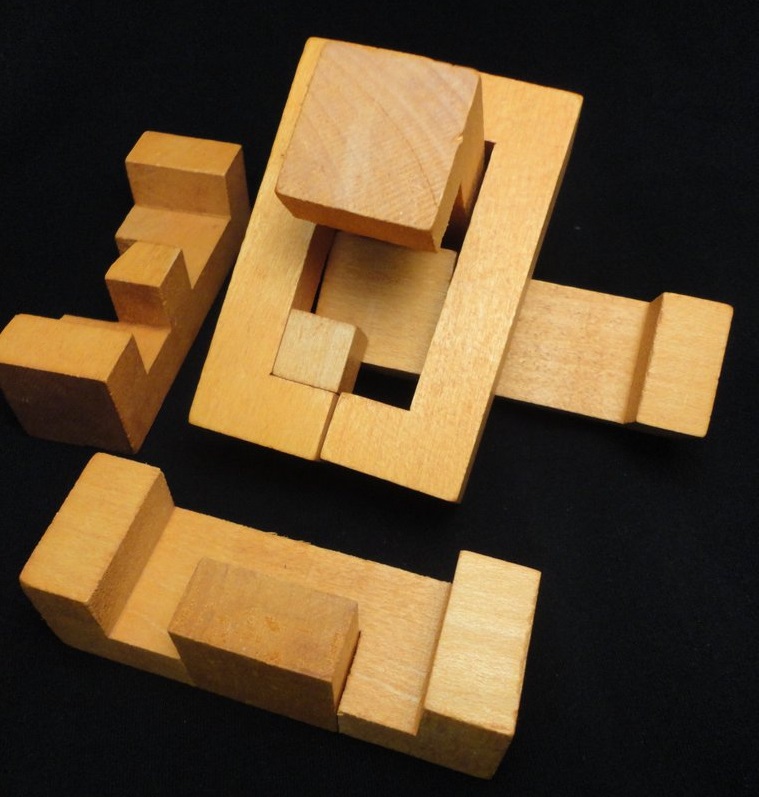
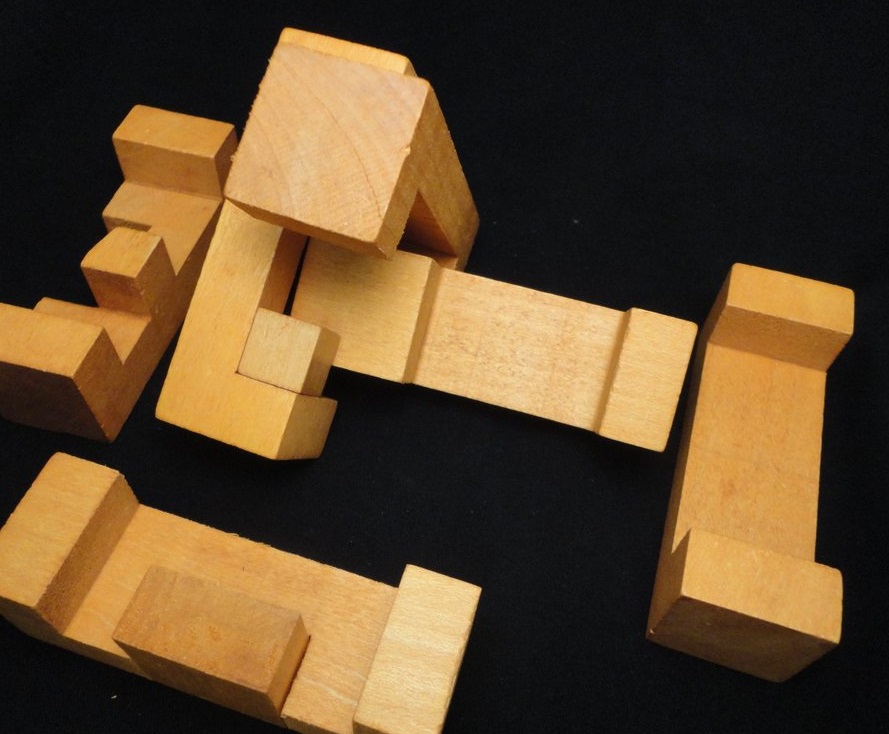
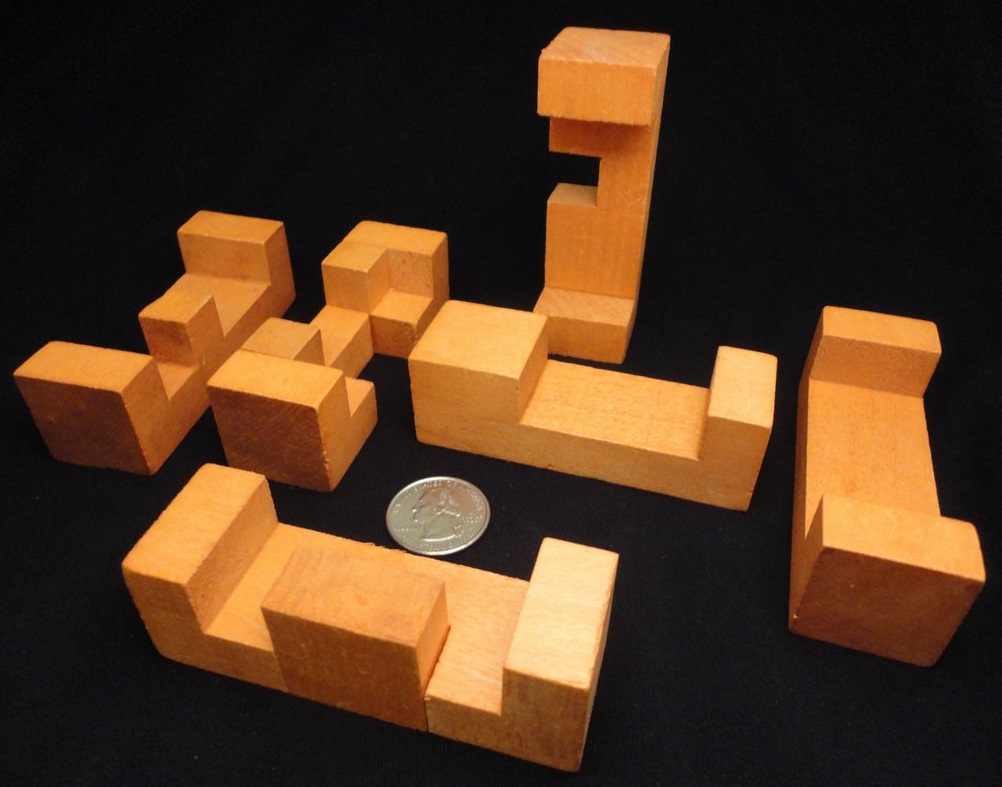
463
+----+----+----+ +----+
/ /| / /|
+ +----+ | + + |
/ /| | +----+-/ / +
+----+----+ | |/ +----+ |
| | + + | | |
| | | / | | +
+ + | +----+----+ + /
| | +--| | +
| |/ | |/
+----+----+ +----+----+----+
|
564
+----+ +----+----+----+
/ /| / /|
+ + | + + |
/ / +----+-/ / +
+----+ / +----+----+----+ |
| | + | | |
| |/ | | +
+ +----+----+----+ + /
| | +--| | +
| |/ | |/
+----+----+----+ +----+----+
|
760
+----+ +----+
/ /| / /|
+ + | +----+ + |
/ / +----+----+-/ / +
+----+ / +----+----+ |
| | + +--| | |
| |/ /| | | +
+ +----+----+ | + + /
| | +--| | +
| |/ | |/
+----+----+----+ +----+----+
|
909
+----+----+----+----+ +----+
/ /| / /|
+ +----+ | + + |
/ /| | +-/ / +
+----+----+----+ | |/ +----+ |
| | + + | | |
| |/ / | | +
+ +----+ +----+ + /
| | +----+--| | +
| |/ | |/
+----+----+ +----+----+
|
927
+----+ +----+----+ +----+
/ /| / /| / /|
+ +----+----+----+ | + + |
/ /| | +-/ / +
+----+----+ | |/ +----+ |
| | + + | | |
| | | / | | +
+ + | +----+ + /
| | +----+--| | +
| |/ | |/
+----+----+ +----+----+
|
1016
+----+ +----+
/ /| / /|
+ + | +----+ + |
/ / +----+----+-/ / +
+----+ / +----+----+ |
| | + +----+--| | |
| |/ /| | | +
+ +----+ | + + /
| | +----+--| | +
| |/ | |/
+----+----+ +----+----+
|
| I bought this plastic burr in Japan. I believe it was made by Tenyo. It is number 4 in a "Family" of burrs - this one is called "Brother." This burr uses six general pieces: 463, 564, 760, 909, 927, 1016. It has no holes, and comes apart in one move into two 3-piece halves. This might be #72 in Filipiak's list (c.f. Anthony S. Filipiak, 100 Puzzles - How to Make and Solve Them, 1942, p. 86). |
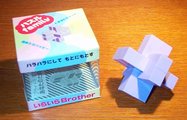
|
1 A A [p]
+----+----+----+----+----+----+
/ /|
+ + |
/ / +
+----+----+----+----+----+----+ |
| | |
| | +
+ + /
| | +
| |/
+----+----+----+----+----+----+
The Key |
188 I M [p]
+----+ +----+ +----+
/ /| / /| / /|
+ + | + + | + + |
/ / +----+-/ / +-/ / +
+----+ / +----+ / +----+ |
| | + | | + | | |
| |/ | |/ | | +
+ +----+----+ +----+ + /
| | +
| |/
+----+----+----+----+----+----+
The (Bottle) Opener |
256 J X B [p2] 3
+----+ +----+
/ /| / /|
+ + | + + |
/ / +----+----+----+-/ / +
+----+ / +----+ |
| | + | | |
| |/ | | +
+ +----+----+----+----+ + /
| | +
| |/
+----+----+----+----+----+----+
The Tray |
911 N C G 2
+----+----+----+----+ +----+
/ /| / /|
+ +----+----+ | + + |
/ /| | +-/ / +
+----+----+ | |/ +----+ |
| | + + | | |
| | | / | | +
+ + | +----+ + /
| | +----+--| | +
| |/ | |/
+----+----+ +----+----+
|
1024 Y Y [p2]
+----+ +----+
/ /| / /|
+ + | + + |
/ / +----+----+----+-/ / +
+----+ / +----+ |
| | + +----+----+ | | |
| |/ /| / | | +
+ +----+ | +----+ + /
| | +----+--| | +
| |/ | |/
+----+----+ +----+----+
The Y |
1024 Y Y [p2]
+----+ +----+
/ /| / /|
+ + | + + |
/ / +----+----+----+-/ / +
+----+ / +----+ |
| | + +----+----+ | | |
| |/ /| / | | +
+ +----+ | +----+ + /
| | +----+--| | +
| |/ | |/
+----+----+ +----+----+
The Y |
52 D P [p]
+----+ +----+----+----+
/ /| / /|
+ + | + + |
/ / +----+-/ / +
+----+ / +----+----+----+ |
| | + | | |
| |/ | | +
+ +----+----+ + /
| | +
| |/
+----+----+----+----+----+----+
The Side Tray |
103 F S H 1
+----+----+ +----+----+
/ /| / /|
+ + | + + |
/ / +---+--/ / +
+----+----+ / +----+----+ |
| | + | | |
| |/ | | +
+ +----+----+ + /
| | +
| |/
+----+----+----+----+----+----+
The Half-Tray |
120 G U 1
+----+ +----+----+
/ /| / /|
+ + | + + |
/ / +----+---+--/ / +
+----+ / +----+----+ |
| | + | | |
| |/ | | +
+ +----+----+----+ + /
| | +
| |/
+----+----+----+----+----+----+
The Three-Quarters Tray |
928 V L D 2
+----+ +----+----+ +----+
/ /| / /| / /|
+ + | +----+----+ | + + |
/ / +--| | +-/ / +
+----+ / | |/ +----+ |
| | + + + | | |
| |/ /| / | | +
+ +----+ | +----+ + /
| | +----+--| | +
| |/ | |/
+----+----+ +----+----+
The Tongue |
960 X N 2
+----+ +----+ +----+
/ /| / /| / /|
+ + | +----+ | + + |
/ / +-------| | +-/ / +
+----+ / | |/ +----+ |
| | + +----+ + | | |
| |/ /| / | | +
+ +----+ | +----+ + /
| | +----+--| | +
| |/ | |/
+----+----+ +----+----+
The |
992 W O [p] 2
+----+ +----+ +----+
/ /| / /| / /|
+ + | +----+ | + + |
/ / +--| | +----+-/ / +
+----+ / | |/ +----+ |
| | + + +----+ | | |
| |/ /| / | | +
+ +----+ | +----+ + /
| | +----+--| | +
| |/ | |/
+----+----+ +----+----+
Fingers |
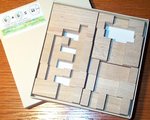
|
This set of twelve pieces is called the "6+6=Cube." It was designed by Kozy Kitajima. The pieces include: 1, 52, 103, 120, 188, 256, 911, 928, 992, 960, and 2x 1024. According to the instructions, there is only one way to build two burrs at once. The twelve pieces can also be combined to form a cube, with holes. |
1 A A [p]
+----+----+----+----+----+----+
/ /|
+ + |
/ / +
+----+----+----+----+----+----+ |
| | |
| | +
+ + /
| | +
| |/
+----+----+----+----+----+----+
The Key |
188 I M [p]
+----+ +----+ +----+
/ /| / /| / /|
+ + | + + | + + |
/ / +----+-/ / +-/ / +
+----+ / +----+ / +----+ |
| | + | | + | | |
| |/ | |/ | | +
+ +----+----+ +----+ + /
| | +
| |/
+----+----+----+----+----+----+
The (Bottle) Opener |
512
+----+ +----+
/ /| / /|
+ + | + + |
/ / +----+----+----+-/ / +
+----+ / +----+ |
| | + +----+ | | |
| |/ /| / | | +
+ +----+ | +----+----+ + /
| | +--| | +
| |/ | |/
+----+----+ +----+----+----+
|
832
+----+ +----+----+----+
/ /| / /|
+ + | +----+----+ + |
/ / +----+--| / / +
+----+ / | +----+ |
| | + +----+ +--| | |
| |/ /| / | | +
+ +----+ | +----+ + /
| | +----+--| | +
| |/ | |/
+----+----+ +----+----+
|
975 O Q [p]
+----+----+----+ +----+
/ /| / /|
+ +----+ | + + |
/ /| | +----+-/ / +
+----+----+ | |/ +----+ |
| | + +----+ | | |
| | | / | | +
+ + | +----+ + /
| | +----+--| | +
| |/ | |/
+----+----+ +----+----+
Offsets |
1024 Y Y [p2]
+----+ +----+
/ /| / /|
+ + | + + |
/ / +----+----+----+-/ / +
+----+ / +----+ |
| | + +----+----+ | | |
| |/ /| / | | +
+ +----+ | +----+ + /
| | +----+--| | +
| |/ | |/
+----+----+ +----+----+
The Y |
1 A A [p]
+----+----+----+----+----+----+
/ /|
+ + |
/ / +
+----+----+----+----+----+----+ |
| | |
| | +
+ + /
| | +
| |/
+----+----+----+----+----+----+
The Key |
188 I M [p]
+----+ +----+ +----+
/ /| / /| / /|
+ + | + + | + + |
/ / +----+-/ / +-/ / +
+----+ / +----+ / +----+ |
| | + | | + | | |
| |/ | |/ | | +
+ +----+----+ +----+ + /
| | +
| |/
+----+----+----+----+----+----+
The (Bottle) Opener |
768
+----+ +----+
/ /| / /|
+ + | + + |
/ / +----+----+----+-/ / +
+----+ / +----+ |
| | + +----+ | | |
| |/ /| / | | +
+ +----+----+ | +----+ + /
| | +--| | +
| |/ | |/
+----+----+----+ +----+----+
|
976
+----+----+----+ +----+
/ /| / /|
+ +----+----+ | + + |
/ /| | +----+-/ / +
+----+ | |/ +----+ |
| | +----+ +----+ | | |
| |/ /| / | | +
+ +----+ | +----+ + /
| | +----+--| | +
| |/ | |/
+----+----+ +----+----+
|
824 T R C [p] 2
+----+ +----+----+----+
/ /| / /|
+ + | +----+ + |
/ / +----+--| / / +
+----+ / | +----+----+ |
| | + +----+ | | |
| |/ /| | | +
+ +----+ | + + /
| | +----+--| | +
| |/ | |/
+----+----+ +----+----+
Offsets |
1024 Y Y [p2]
+----+ +----+
/ /| / /|
+ + | + + |
/ / +----+----+----+-/ / +
+----+ / +----+ |
| | + +----+----+ | | |
| |/ /| / | | +
+ +----+ | +----+ + /
| | +----+--| | +
| |/ | |/
+----+----+ +----+----+
The Y |
| This burr's wooden length-12 pieces are stained a dark color. The burr comes in a box with a fitted slip-out cover. At some point I saw it referred to as "G4," also as "The Cross of Marseille." The pieces used are: 1, 188, 512, 832, 975, 1024. The mirror images of the 3rd-5th can also be used: 1, 188, 768, 976, 824, 1024. |
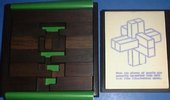
|
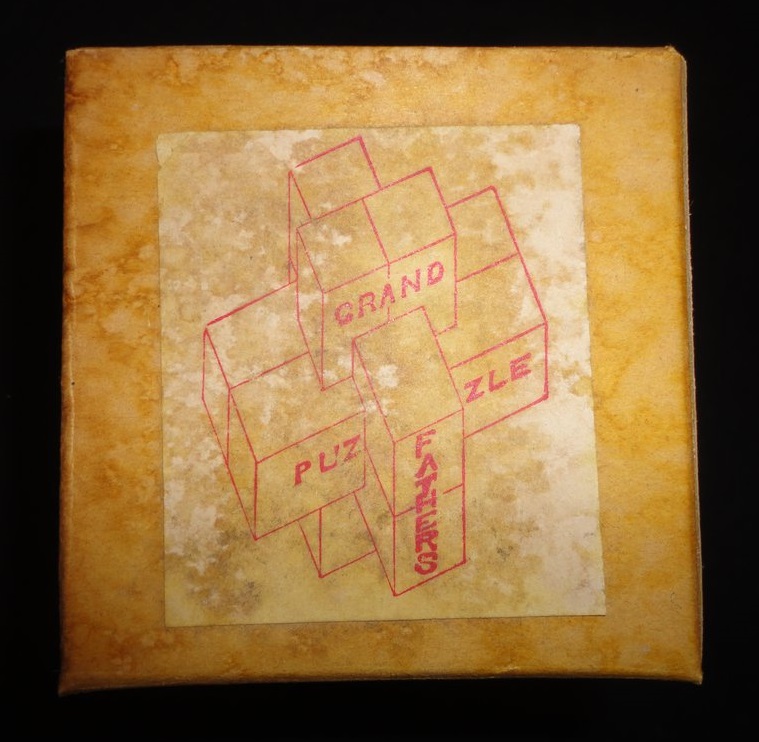
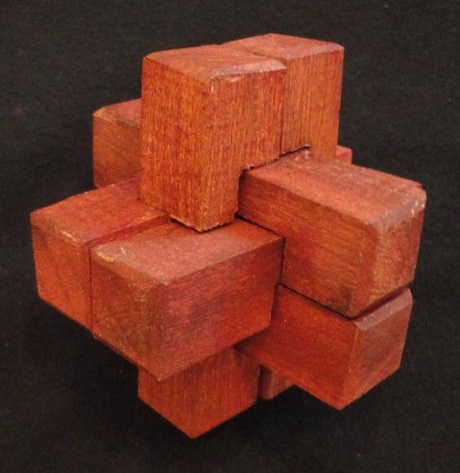

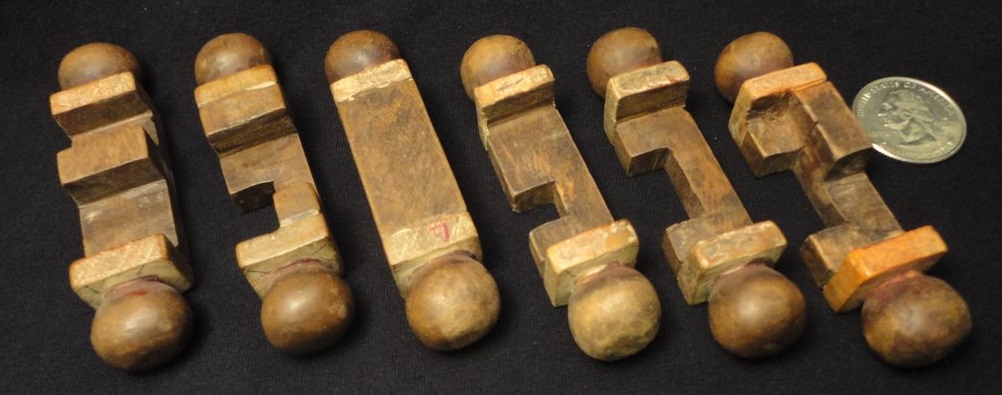
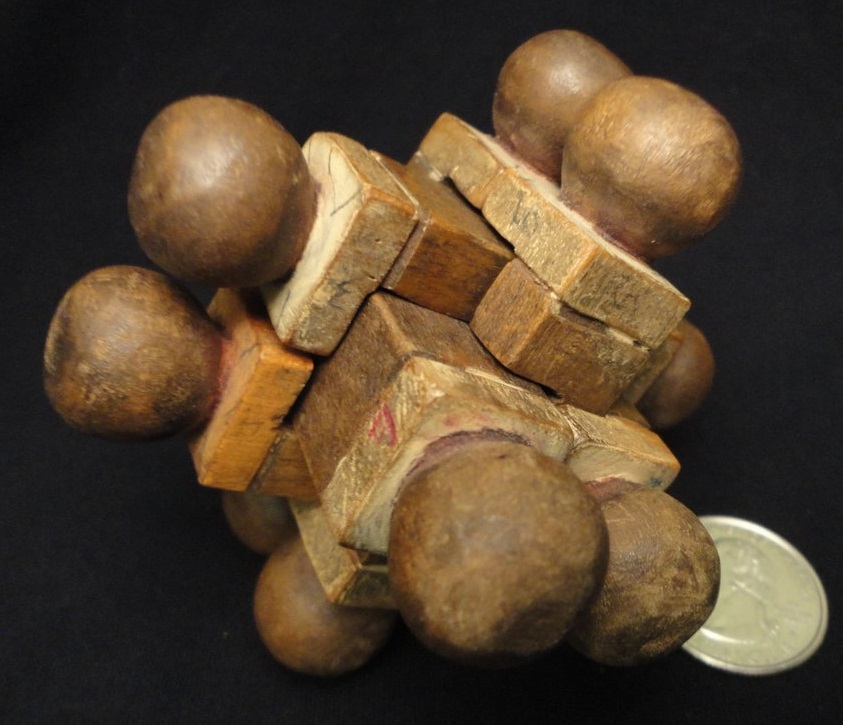

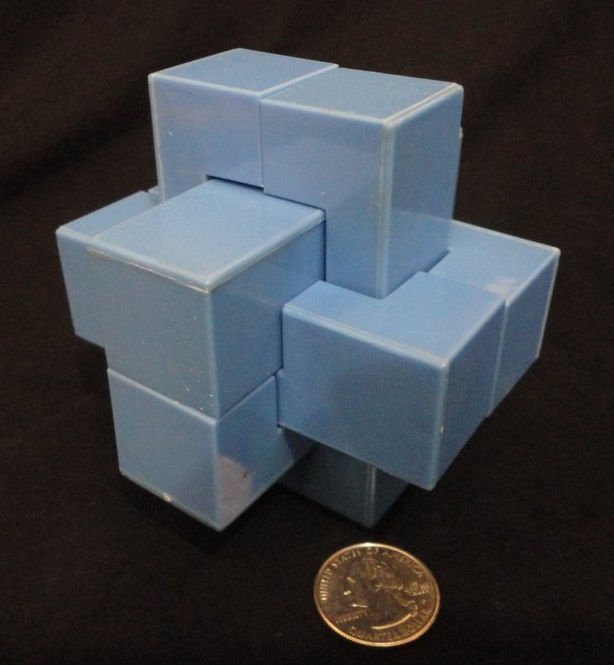
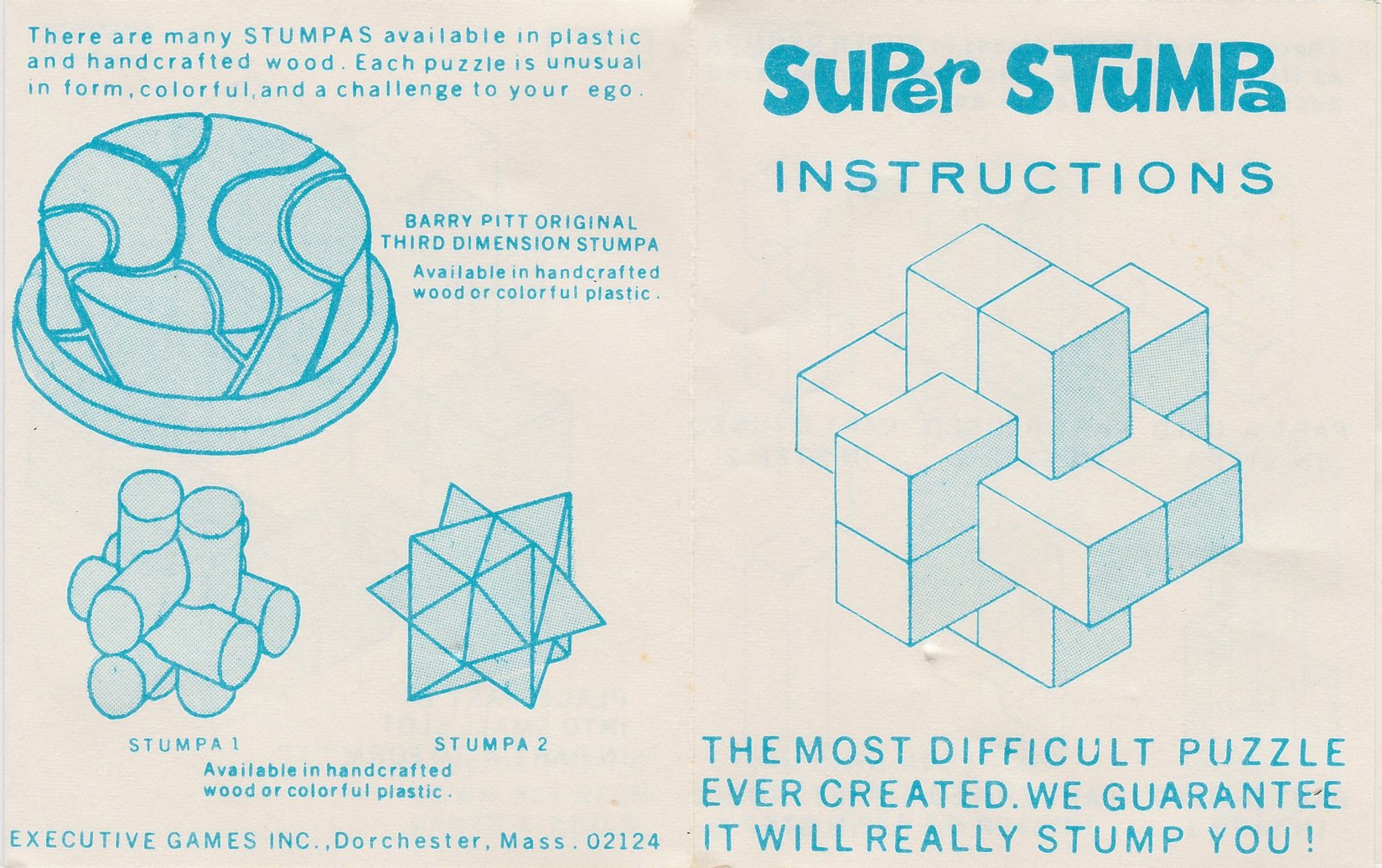
240
+----+----+ +----+
/ /| / /|
+ +----+ | + + |
/ /| | +----+----+-/ / +
+----+ | |/ +----+ |
| | +----+ | | |
| |/ | | +
+ +----+----+----+----+ + /
| | +
| |/
+----+----+----+----+----+----+
|
768
+----+ +----+
/ /| / /|
+ + | + + |
/ / +----+----+----+-/ / +
+----+ / +----+ |
| | + +----+ | | |
| |/ /| / | | +
+ +----+----+ | +----+ + /
| | +--| | +
| |/ | |/
+----+----+----+ +----+----+
|
960 X N 2
+----+ +----+ +----+
/ /| / /| / /|
+ + | +----+ | + + |
/ / +-------| | +-/ / +
+----+ / | |/ +----+ |
| | + +----+ + | | |
| |/ /| / | | +
+ +----+ | +----+ + /
| | +----+--| | +
| |/ | |/
+----+----+ +----+----+
|
984
+----+ +----+ +----+
/ /| / /| / /|
+ + | +----+ | +----+ + |
/ / +--| | +-/ / +
+----+ / | |/ +----+----+ |
| | + + +--| | |
| |/ /| | | +
+ +----+ | + + /
| | +----+--| | +
| |/ | |/
+----+----+ +----+----+
|
1024 Y Y [p2]
+----+ +----+
/ /| / /|
+ + | + + |
/ / +----+----+----+-/ / +
+----+ / +----+ |
| | + +----+----+ | | |
| |/ /| / | | +
+ +----+ | +----+ + /
| | +----+--| | +
| |/ | |/
+----+----+ +----+----+
The Y |
1933
+----+----+----+----+ +----+
/ /| / /|
+ +----+ | + + |
/ /| | +-/ / +
+----+----+----+ | |/ +----+ |
| | + + | | |
| |/| / | | +
+ +----+ | +----+ + /
| | + +--| | +
| |/ | |/
+----+----+ +----+----+
|
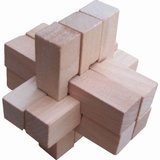
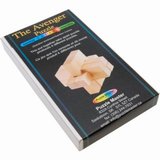
|
The Avenger is offered by
PuzzleMaster.ca.
It includes 9 length-10 pieces, one of which (their #1) is not traditionally notched.
Subsets of the pieces can be assembled into six-piece, seven-piece, eight-piece, and nine-piece burrs.
The pieces are:
|
1 A A [p]
+----+----+----+----+----+----+
/ /|
+ + |
/ / +
+----+----+----+----+----+----+ |
| | |
| | +
+ + /
| | +
| |/
+----+----+----+----+----+----+
The Key |
154 H K I [p] 1
+----+ +----+----+ +----+
/ /| / /| / /|
+ + | + + | + + |
/ / +-/ / +-/ / +
+----+ / +----+----+ / +----+ |
| | + | | + | | |
| |/ | |/ | | +
+ +----+ +----+ + /
| | +
| |/
+----+----+----+----+----+----+
The Toaster |
256 J X B [p2] 3
+----+ +----+
/ /| / /|
+ + | + + |
/ / +----+----+----+-/ / +
+----+ / +----+ |
| | + | | |
| |/ | | +
+ +----+----+----+----+ + /
| | +
| |/
+----+----+----+----+----+----+
The Tray |
256 J X B [p2] 3
+----+ +----+
/ /| / /|
+ + | + + |
/ / +----+----+----+-/ / +
+----+ / +----+ |
| | + | | |
| |/ | | +
+ +----+----+----+----+ + /
| | +
| |/
+----+----+----+----+----+----+
The Tray |
1024 Y Y [p2]
+----+ +----+
/ /| / /|
+ + | + + |
/ / +----+----+----+-/ / +
+----+ / +----+ |
| | + +----+----+ | | |
| |/ /| / | | +
+ +----+ | +----+ + /
| | +----+--| | +
| |/ | |/
+----+----+ +----+----+
The Y |
1024 Y Y [p2]
+----+ +----+
/ /| / /|
+ + | + + |
/ / +----+----+----+-/ / +
+----+ / +----+ |
| | + +----+----+ | | |
| |/ /| / | | +
+ +----+ | +----+ + /
| | +----+--| | +
| |/ | |/
+----+----+ +----+----+
The Y |
| This is The Double-Cross Puzzle, issued by the General Engineering & Design Co. of Detroit, Michigan. (No date.) Six metal pieces. A very easy design. |
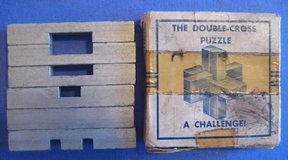
|
412 N
+----+ +----+----+ +----+
/ /| / /| / /|
+ + | +----+ + | + + |
/ / +--| / / +-/ / +
+----+ / | +----+ / +----+ |
| | + + | | + | | |
| |/ /| | |/ | | +
+ +----+ | + +----+ + /
| | +--| | +
| |/ | |/
+----+----+ +----+----+----+
|
480 N
+----+ +----+ +----+
/ /| / /| / /|
+ + | +----+ | + + |
/ / +--| | +----+-/ / +
+----+ / | |/ +----+ |
| | + + + | | |
| |/ /| / | | +
+ +----+ | +----+----+ + /
| | +--| | +
| |/ | |/
+----+----+ +----+----+----+
|
512 N
+----+ +----+
/ /| / /|
+ + | + + |
/ / +----+----+----+-/ / +
+----+ / +----+ |
| | + +----+ | | |
| |/ /| / | | +
+ +----+ | +----+----+ + /
| | +--| | +
| |/ | |/
+----+----+ +----+----+----+
|
704 N
+----+ +----+ +----+
/ /| / /| / /|
+ + | +----+ | + + |
/ / +----+--| | +-/ / +
+----+ / | |/ +----+ |
| | + + + | | |
| |/ /| / | | +
+ +----+----+ | +----+ + /
| | +--| | +
| |/ | |/
+----+----+----+ +----+----+
|
704 N
+----+ +----+ +----+
/ /| / /| / /|
+ + | +----+ | + + |
/ / +----+--| | +-/ / +
+----+ / | |/ +----+ |
| | + + + | | |
| |/ /| / | | +
+ +----+----+ | +----+ + /
| | +--| | +
| |/ | |/
+----+----+----+ +----+----+
|
960 X N 2
+----+ +----+ +----+
/ /| / /| / /|
+ + | +----+ | + + |
/ / +-------| | +-/ / +
+----+ / | |/ +----+ |
| | + +----+ + | | |
| |/ /| / | | +
+ +----+ | +----+ + /
| | +----+--| | +
| |/ | |/
+----+----+ +----+----+
|
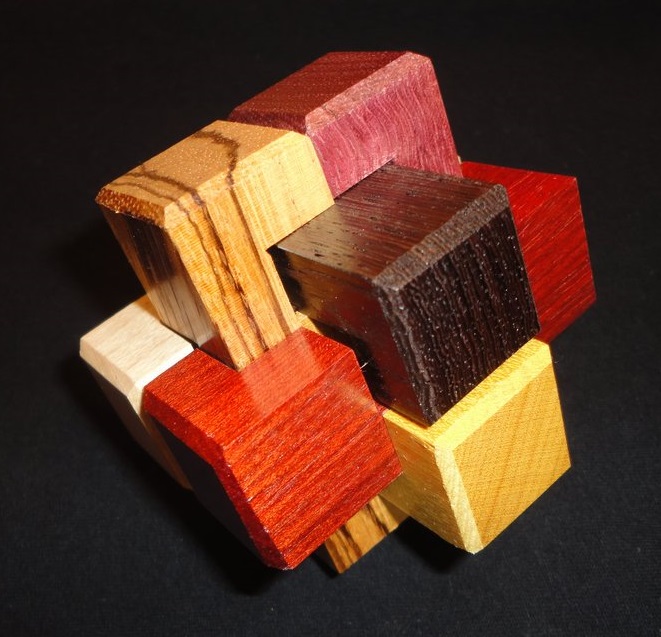
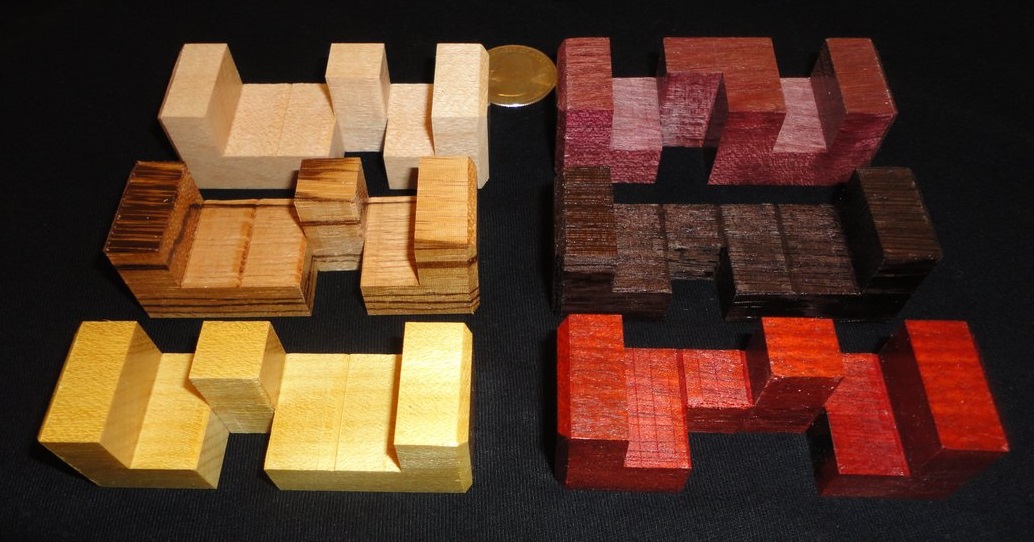
The 5-4 Burr - handmade by Artifactory in Oregon An auction buy-it-now for $40 - the seller says they are the exclusive online distributor. Nice exotic woods in a good size - but a very loose fit. The woods are: wenge, yellowheart, maple, zebrawood, bloodwood, and purpleheart. I took a chance on this since they didn't show the pieces, and I am pleased since it turns out this is an instance of David Winkler's complex 5.4, which I didn't have. The pieces are { 412, 480, 512, 704x2, 960 }. |
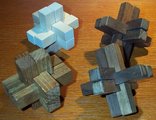
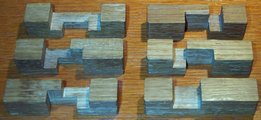
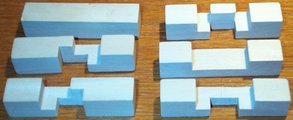
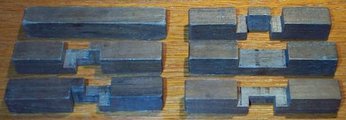
The light brown burr is perhaps the more difficult of this group, but we've seen it already - its pieces are the familiar "Six Way" set: 52, 792/911, 824/975, 1024. The white and two (identical) dark brown burrs all employ the familiar "Chinese Cross" piece set: 1, 256, 824/975, 928, 1024. |
There have been several wooden sets produced, of varying completeness and quality. Wayne Daniel and Pentangle both at one point offered sets of 42, but they're not being produced any more as far as I know. Dick Wetters also offered sets, but he, too, has stopped.
Aaron has also created Puzzlecad - An OpenSCAD library for interlocking puzzles, and the Printable Puzzle Project at puzzlehub.org, where you can find plans for many other mechanical puzzles, including designs by Stewart Coffin, Yavuz Demirhan, Laszlo Molnar, Christoph Lohe, and Alfons Eyckmans.
I received this 3D printed set of 24 pieces (Starter + Expansion):
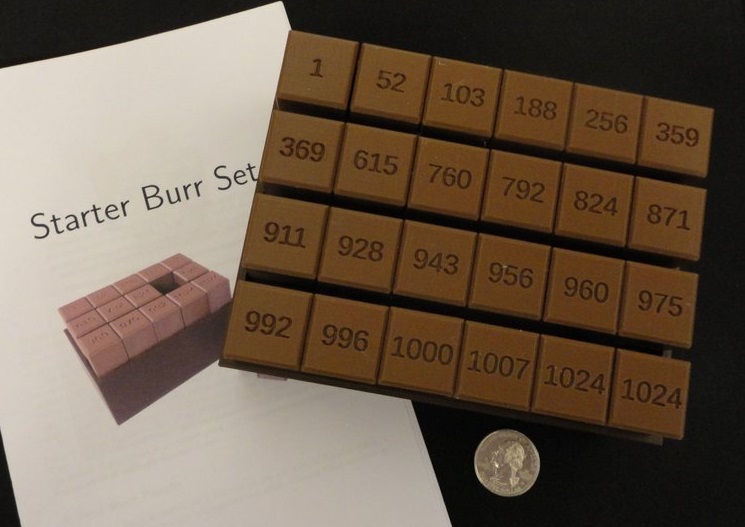

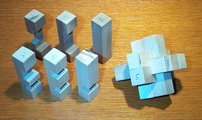
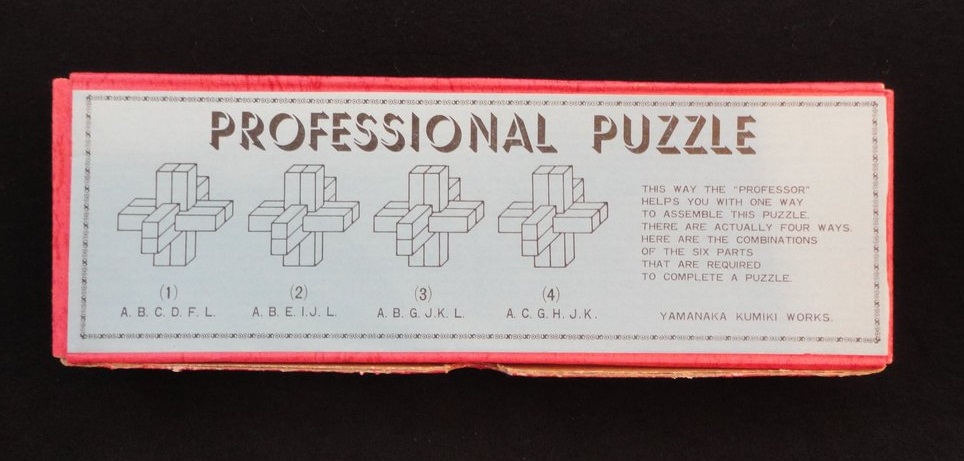
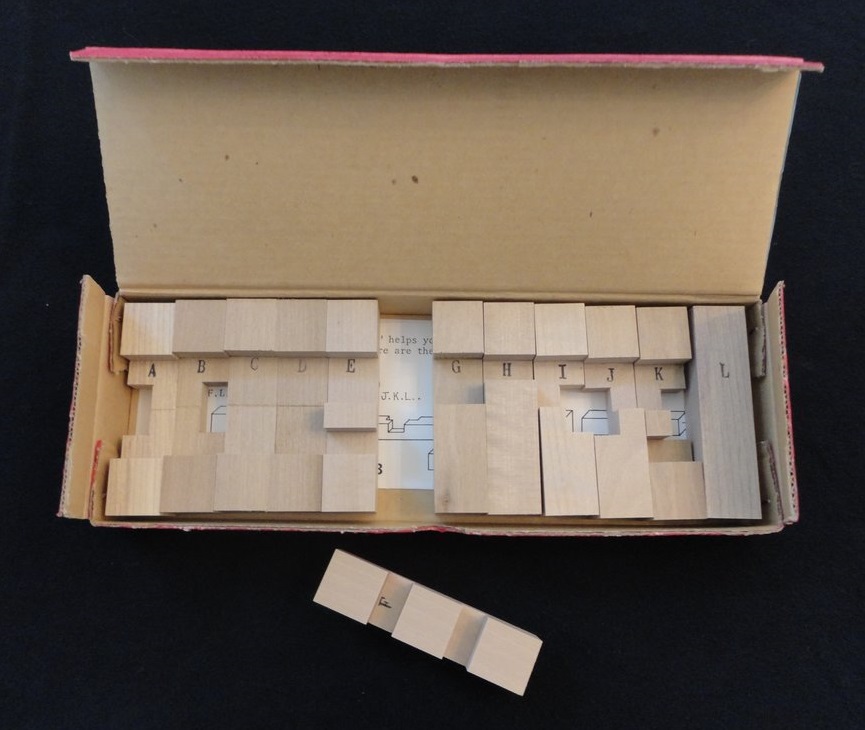 On the left is a "Professor" burr set from the Yamanaka Kumiki Works in Japan.
On the left is a "Professor" burr set from the Yamanaka Kumiki Works in Japan.
Yamanaka also produced a set "No. 3505" called "Let's Shap the Fascinating World!!" (sic). That set includes almost the same 12 pieces as the Professional set, except instead of 18 and 52, the two pieces 512 and 832 appear.
The instructions provide four puzzles and the first two are identical to the Professional set's.
The third is equal to "G4" { 1, 188, 512, 832, 975, 1024 }.
The fourth I hadn't seen listed before: { 1, 188, 256, 512, 832, 992 }.


1 A A [p]
+----+----+----+----+----+----+
/ /|
+ + |
/ / +
+----+----+----+----+----+----+ |
| | |
| | +
+ + /
| | +
| |/
+----+----+----+----+----+----+
The Key |
188 I M [p]
+----+ +----+ +----+
/ /| / /| / /|
+ + | + + | + + |
/ / +----+-/ / +-/ / +
+----+ / +----+ / +----+ |
| | + | | + | | |
| |/ | |/ | | +
+ +----+----+ +----+ + /
| | +
| |/
+----+----+----+----+----+----+
The (Bottle) Opener |
256 J X B [p2] 3
+----+ +----+
/ /| / /|
+ + | + + |
/ / +----+----+----+-/ / +
+----+ / +----+ |
| | + | | |
| |/ | | +
+ +----+----+----+----+ + /
| | +
| |/
+----+----+----+----+----+----+
The Tray |
824 T R C [p] 2 1
+----+ +----+----+----+
/ /| / /|
+ + | +----+ + |
/ / +----+--| / / +
+----+ / | +----+----+ |
| | + +----+ | | |
| |/ /| | | +
+ +----+ | + + /
| | +----+--| | +
| |/ | |/
+----+----+ +----+----+
Left Offset |
992 W O [p] 2
+----+ +----+ +----+
/ /| / /| / /|
+ + | +----+ | + + |
/ / +--| | +----+-/ / +
+----+ / | |/ +----+ |
| | + + +----+ | | |
| |/ /| / | | +
+ +----+ | +----+ + /
| | +----+--| | +
| |/ | |/
+----+----+ +----+----+
Left Finger |
1024 Y Y [p2]
+----+ +----+
/ /| / /|
+ + | + + |
/ / +----+----+----+-/ / +
+----+ / +----+ |
| | + +----+----+ | | |
| |/ /| / | | +
+ +----+ | +----+ + /
| | +----+--| | +
| |/ | |/
+----+----+ +----+----+
The Y |
52 D P [p]
+----+ +----+----+----+
/ /| / /|
+ + | + + |
/ / +----+-/ / +
+----+ / +----+----+----+ |
| | + | | |
| |/ | | +
+ +----+----+ + /
| | +
| |/
+----+----+----+----+----+----+
The Side Tray |
52 D P [p]
+----+ +----+----+----+
/ /| / /|
+ + | + + |
/ / +----+-/ / +
+----+ / +----+----+----+ |
| | + | | |
| |/ | | +
+ +----+----+ + /
| | +
| |/
+----+----+----+----+----+----+
The Side Tray |
256 J X B [p2] 3
+----+ +----+
/ /| / /|
+ + | + + |
/ / +----+----+----+-/ / +
+----+ / +----+ |
| | + | | |
| |/ | | +
+ +----+----+----+----+ + /
| | +
| |/
+----+----+----+----+----+----+
The Tray |
911 N C G 2
+----+----+----+----+ +----+
/ /| / /|
+ +----+----+ | + + |
/ /| | +-/ / +
+----+----+ | |/ +----+ |
| | + + | | |
| | | / | | +
+ + | +----+ + /
| | +----+--| | +
| |/ | |/
+----+----+ +----+----+
Right Wall |
928 V L D 2
+----+ +----+----+ +----+
/ /| / /| / /|
+ + | +----+----+ | + + |
/ / +--| | +-/ / +
+----+ / | |/ +----+ |
| | + + + | | |
| |/ /| / | | +
+ +----+ | +----+ + /
| | +----+--| | +
| |/ | |/
+----+----+ +----+----+
The Tongue |
1024 Y Y [p2]
+----+ +----+
/ /| / /|
+ + | + + |
/ / +----+----+----+-/ / +
+----+ / +----+ |
| | + +----+----+ | | |
| |/ /| / | | +
+ +----+ | +----+ + /
| | +----+--| | +
| |/ | |/
+----+----+ +----+----+
The Y |
18 B B L [p] 2 0
+----+ +----+----+----+----+
/ /| / /|
+ + | + + |
/ / +-/ / +
+----+ / +----+----+----+----+ |
| | + | | |
| |/ | | +
+ +----+ + /
| | +
| |/
+----+----+----+----+----+----+
Local Mail |
52 D P [p]
+----+ +----+----+----+
/ /| / /|
+ + | + + |
/ / +----+-/ / +
+----+ / +----+----+----+ |
| | + | | |
| |/ | | +
+ +----+----+ + /
| | +
| |/
+----+----+----+----+----+----+
The Side Tray |
871 M T K 2 0
+----+----+ +----+----+
/ /| / /|
+ + | + + |
/ / +----+-/ / +
+----+----+ / +----+----+ |
| | +----+--| | |
| | | | | +
+ + | + + /
| | +----+--| | +
| |/ | |/
+----+----+ +----+----+
The Barbells |
928 V L D 2
+----+ +----+----+ +----+
/ /| / /| / /|
+ + | +----+----+ | + + |
/ / +--| | +-/ / +
+----+ / | |/ +----+ |
| | + + + | | |
| |/ /| / | | +
+ +----+ | +----+ + /
| | +----+--| | +
| |/ | |/
+----+----+ +----+----+
The Tongue |
1024 Y Y [p2]
+----+ +----+
/ /| / /|
+ + | + + |
/ / +----+----+----+-/ / +
+----+ / +----+ |
| | + +----+----+ | | |
| |/ /| / | | +
+ +----+ | +----+ + /
| | +----+--| | +
| |/ | |/
+----+----+ +----+----+
The Y |
1024 Y Y [p2]
+----+ +----+
/ /| / /|
+ + | + + |
/ / +----+----+----+-/ / +
+----+ / +----+ |
| | + +----+----+ | | |
| |/ /| / | | +
+ +----+ | +----+ + /
| | +----+--| | +
| |/ | |/
+----+----+ +----+----+
The Y |
1 A A [p]
+----+----+----+----+----+----+
/ /|
+ + |
/ / +
+----+----+----+----+----+----+ |
| | |
| | +
+ + /
| | +
| |/
+----+----+----+----+----+----+
The Key |
188 I M [p]
+----+ +----+ +----+
/ /| / /| / /|
+ + | + + | + + |
/ / +----+-/ / +-/ / +
+----+ / +----+ / +----+ |
| | + | | + | | |
| |/ | |/ | | +
+ +----+----+ +----+ + /
| | +
| |/
+----+----+----+----+----+----+
The (Bottle) Opener |
871 M T K 2 0
+----+----+ +----+----+
/ /| / /|
+ + | + + |
/ / +----+-/ / +
+----+----+ / +----+----+ |
| | +----+--| | |
| | | | | +
+ + | + + /
| | +----+--| | +
| |/ | |/
+----+----+ +----+----+
The Barbells |
928 V L D 2
+----+ +----+----+ +----+
/ /| / /| / /|
+ + | +----+----+ | + + |
/ / +--| | +-/ / +
+----+ / | |/ +----+ |
| | + + + | | |
| |/ /| / | | +
+ +----+ | +----+ + /
| | +----+--| | +
| |/ | |/
+----+----+ +----+----+
The Tongue |
1024 Y Y [p2]
+----+ +----+
/ /| / /|
+ + | + + |
/ / +----+----+----+-/ / +
+----+ / +----+ |
| | + +----+----+ | | |
| |/ /| / | | +
+ +----+ | +----+ + /
| | +----+--| | +
| |/ | |/
+----+----+ +----+----+
The Y |
1024 Y Y [p2]
+----+ +----+
/ /| / /|
+ + | + + |
/ / +----+----+----+-/ / +
+----+ / +----+ |
| | + +----+----+ | | |
| |/ /| / | | +
+ +----+ | +----+ + /
| | +----+--| | +
| |/ | |/
+----+----+ +----+----+
The Y |
| 1 (x2) |
18 | 52 (x3) |
188 (x2) |
256 (x2) |
824 | 871 (x2) |
911 | 928 (x3) |
992 | 1024 (x6) |
NOTES | |
| A | 1 | 52 | 188 | 1024x3 | ||||||||
| B | 1 | 52 | 256 | 928 | 1024x2 | |||||||
| C | 1 | 52 | 824 | 992 | 1024x2 | uses 824+992 | ||||||
| D | 1 | 188x2 | 256 | 1024x2 | ||||||||
| E | 1 | 188 | 256x2 | 928 | 1024x2 | |||||||
| F | 1 | 188 | 256 | 911 | 1024x2 | |||||||
| G | 1 | 188 | 256 | 824 | 992 | 1024 | BLACK | |||||
| H | 1 | 188 | 871 | 928 | 1024x2 | ORANGE | ||||||
| I | 1 | 256x2 | 911 | 928 | 1024 | |||||||
| J | 1 | 256 | 824 | 911 | 992 | 1024 | uses 824+992 | |||||
| K | 18 | 52 | 256x2 | 928 | 1024 | |||||||
| L | 18 | 52 | 256 | 911 | 1024x2 | |||||||
| M | 18 | 52 | 256 | 824 | 992 | 1024 | uses 824+992 | |||||
| N | 18 | 52 | 871 | 928 | 1024x2 | GREEN | ||||||
| O | 18 | 824 | 871x2 | 992 | 1024 | uses both 871 | ||||||
| P | 52x2 | 256x2 | 928x2 | |||||||||
| Q | 52x2 | 256 | 911 | 928 | 1024 | YELLOW | ||||||
| R | 52x2 | 256 | 824 | 928 | 992 | uses 824+992 | ||||||
| S | 52x2 | 824 | 911 | 992 | 1024 | uses 824+992 | ||||||
| T | 52 | 256x2 | 911 | 1024x2 | ||||||||
| U | 52 | 824 | 871x2 | 928 | 992 | uses both 871 |
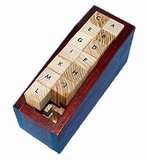 This set of 13 length-8 pieces is called Boite 13.
The pieces are assigned letters A thru M, and correspond to our codes as follows:
This set of 13 length-8 pieces is called Boite 13.
The pieces are assigned letters A thru M, and correspond to our codes as follows:
| A | B | C | D | H/E | I/F | J/G | L/K | M |
| 1 | 52 | 103 | 256 | 792/911 | 824/975 | 888/1007 | 960/992 | 1024 |
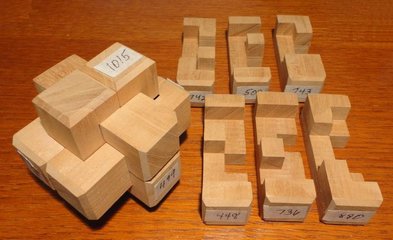

Aaron Siegel kindly 3D printed the set of pieces to construct Rob's Burr No. 1. Aaron has devised a coloring scheme such that in one Level-9 solution each pair of like-colored pieces are parallel, in the other Level-9 solution one pair of colors are swapped, and in the Level-3 solution a different pair is swapped.

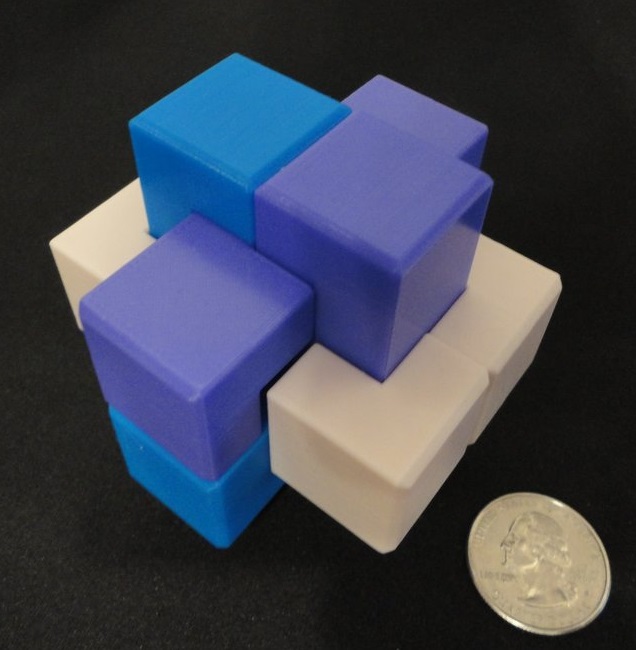
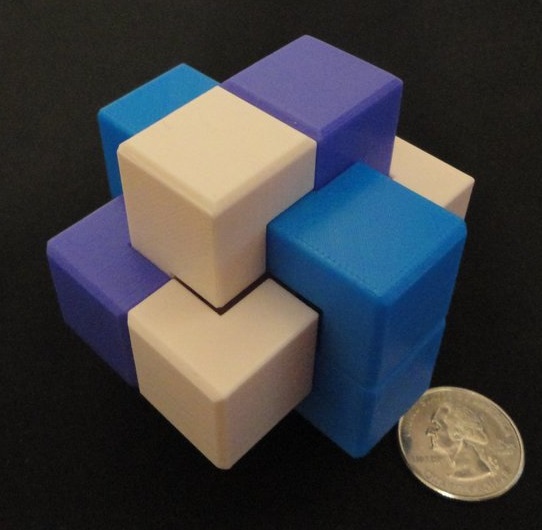
Thanks, Aaron!
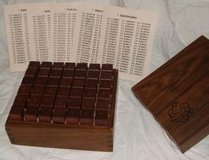 Wayne Daniel (Interlocking Puzzles) made this nice set of 42 of the notchable pieces which can be used to make 314 solid burrs.
I believe the pieces are made of
of Mahogany wood,
with a Walnut box.
Each piece is 0.75" square and 2.5" long, so his unit cube is 3/8 inches on an edge, and these are "length 6."
The set includes a series of cards listing the six-tuples of each of the 314 burrs, and giving assembly hints
by telling the adjacent pairings.
Unfortunately, I have found that certain holey burrs that are constructible from the notchable set, cannot be made to work
using Daniel's set - his esthetic beveled treatment of the ends of the pieces, while fine for the 314 solid burrs, prevents
certain necessary movements when trying the holey burrs.
In particular, designs which use the "jutting jaw" technique as in the JVK 25.1 design, don't open far enough to allow
the 3/8" cubie of a piece to pass through.
Pentangle offered a nice boxed set of the same 42 pieces. Unlike the IP set which has length 6 pieces,
the Pentangle pieces are length 8.
Interlocking Puzzles also offered another nice boxed set, of 35 pieces - called the Level 5 Set.
Another collector, Jim Storer, shows both the
IP 42-piece set I have here,
and the
IP Level-5 35-piece set
on his website.
Wayne Daniel (Interlocking Puzzles) made this nice set of 42 of the notchable pieces which can be used to make 314 solid burrs.
I believe the pieces are made of
of Mahogany wood,
with a Walnut box.
Each piece is 0.75" square and 2.5" long, so his unit cube is 3/8 inches on an edge, and these are "length 6."
The set includes a series of cards listing the six-tuples of each of the 314 burrs, and giving assembly hints
by telling the adjacent pairings.
Unfortunately, I have found that certain holey burrs that are constructible from the notchable set, cannot be made to work
using Daniel's set - his esthetic beveled treatment of the ends of the pieces, while fine for the 314 solid burrs, prevents
certain necessary movements when trying the holey burrs.
In particular, designs which use the "jutting jaw" technique as in the JVK 25.1 design, don't open far enough to allow
the 3/8" cubie of a piece to pass through.
Pentangle offered a nice boxed set of the same 42 pieces. Unlike the IP set which has length 6 pieces,
the Pentangle pieces are length 8.
Interlocking Puzzles also offered another nice boxed set, of 35 pieces - called the Level 5 Set.
Another collector, Jim Storer, shows both the
IP 42-piece set I have here,
and the
IP Level-5 35-piece set
on his website.
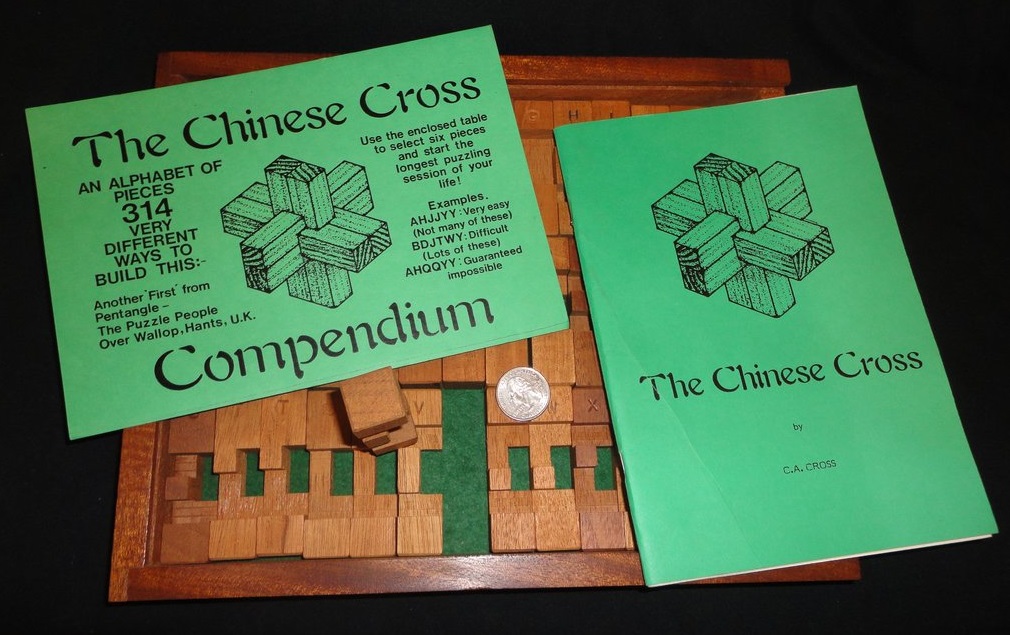

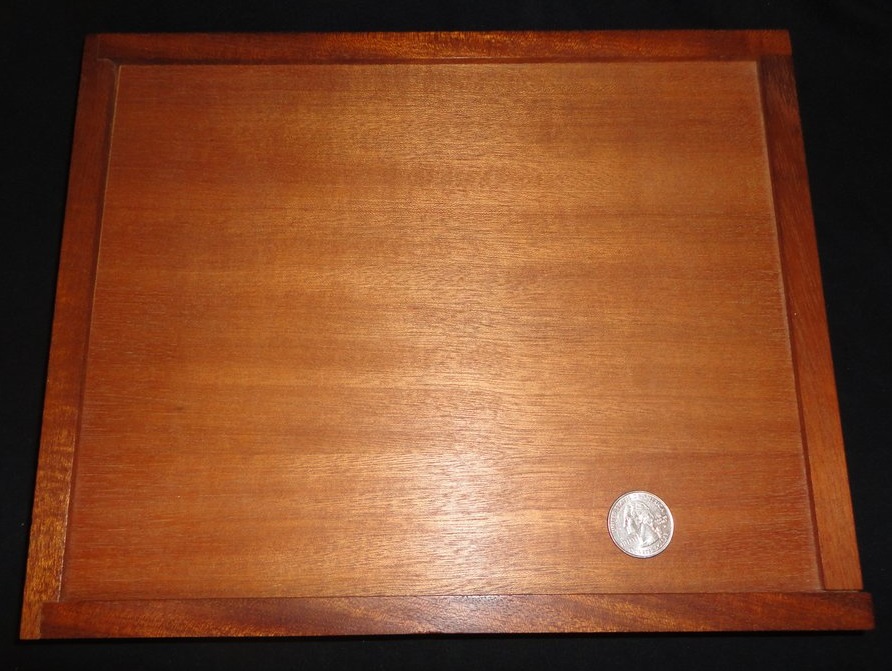
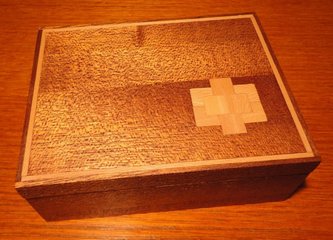
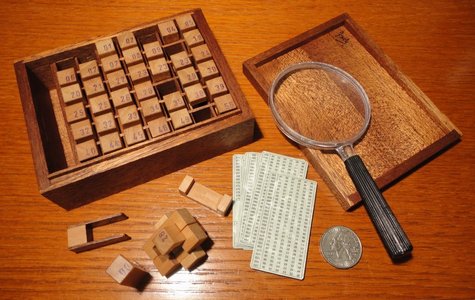 A Level-5 Burr Set in mahogany and plane woods, made by Jack Krijnen.
The attention to detail is superb!
This set provides 35 (42 including duplicates) out of the 837 possible traditional six-piece burr pieces, at length 6.
(The same as in a similar set made by Interlocking Puzzles ca. 2000,
shown on Jim Storer's site.
The piece numbering employed by Krijnen, David Winkler's scheme,
is also identical to that used for the IP set.)
The particular pieces are all notchable, and are those needed to build level-5 burrs.
The set includes a small pair of wooden tweezers with which one can extract pieces from the box.
The box is about 118mm x 90mm.
The pieces measure 3x1x1 cm.
A Level-5 Burr Set in mahogany and plane woods, made by Jack Krijnen.
The attention to detail is superb!
This set provides 35 (42 including duplicates) out of the 837 possible traditional six-piece burr pieces, at length 6.
(The same as in a similar set made by Interlocking Puzzles ca. 2000,
shown on Jim Storer's site.
The piece numbering employed by Krijnen, David Winkler's scheme,
is also identical to that used for the IP set.)
The particular pieces are all notchable, and are those needed to build level-5 burrs.
The set includes a small pair of wooden tweezers with which one can extract pieces from the box.
The box is about 118mm x 90mm.
The pieces measure 3x1x1 cm.

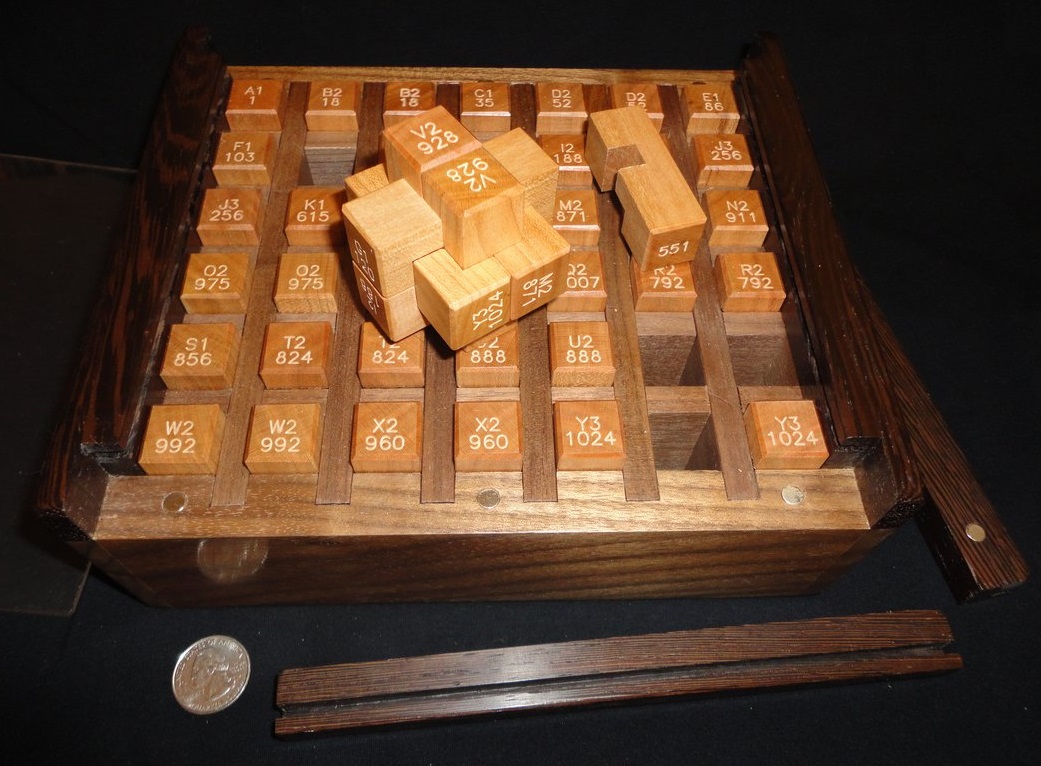
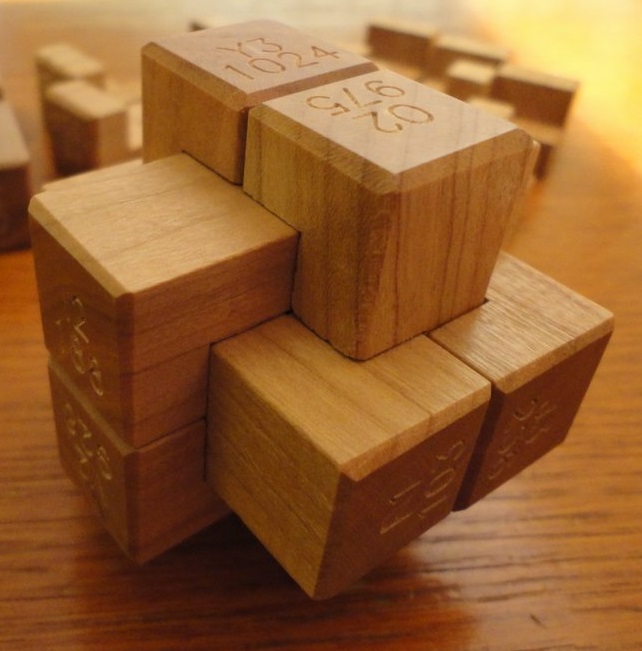
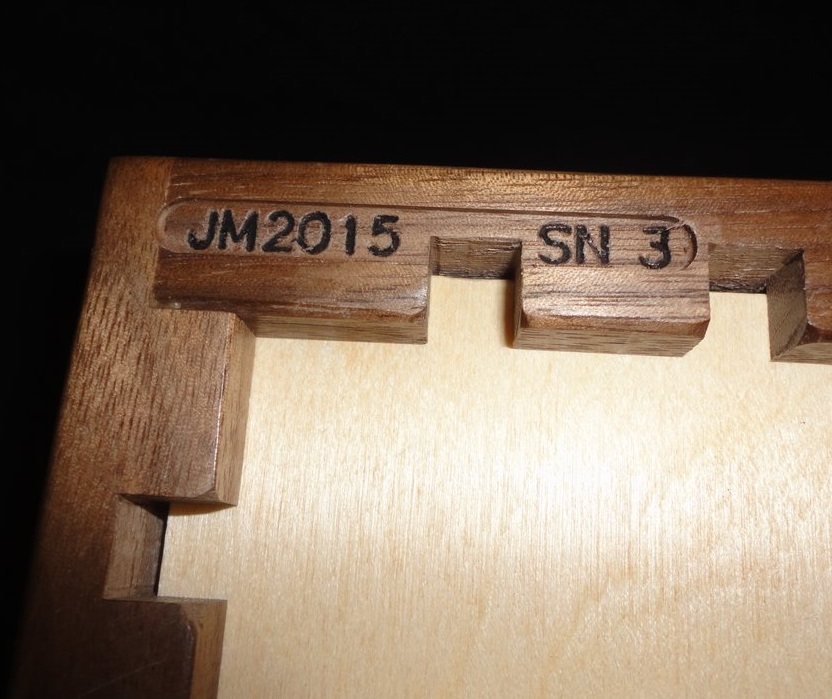
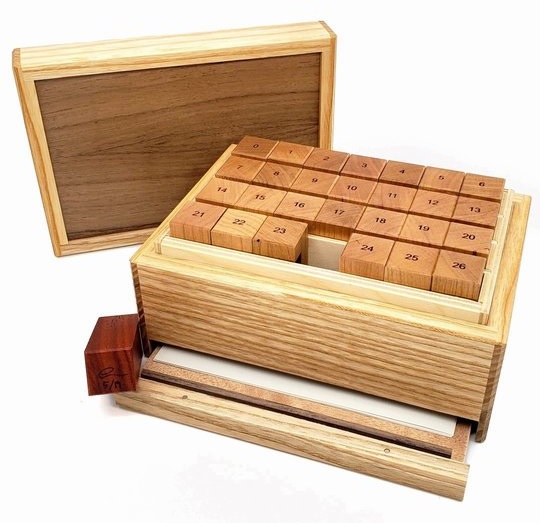
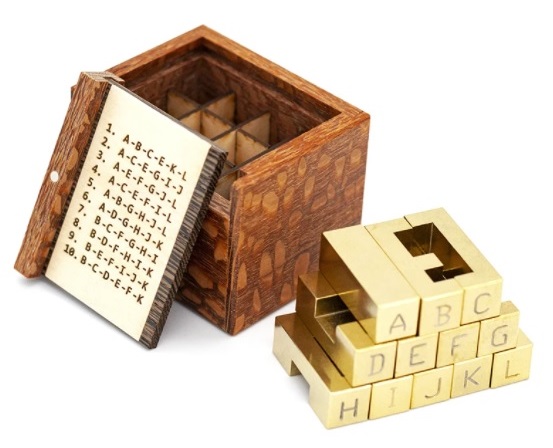
The 12 pieces included are:
| A | B | C | D | E | F | G | H | I | J | K | L |
| 1 | 188 | 256 | 975 | 1007 | 792 | 824 | 888 | 928 | 992 | 960 | 1024 |
The inside lid lists a set of ten puzzles. With this piece set, Darryl says there are 530 possible puzzles (many of which are uninteresting), 24 of which are solid, and 42 puzzles with unique solutions. 2 through 6 had already appeared in my list. 7 through 10 do not use the key piece. Using this set, 7 is the only 3-hole puzzle with a unique solution - it fits together in two 3-piece halves. Using this set, 10 is the only level 2 with a unique solution. The CubicDissection page links to a PDF giving more information.
Bryan has machined a set of all 59 notchable pieces and posted a photo I really like
where they
are arranged as in my burr piece tables:
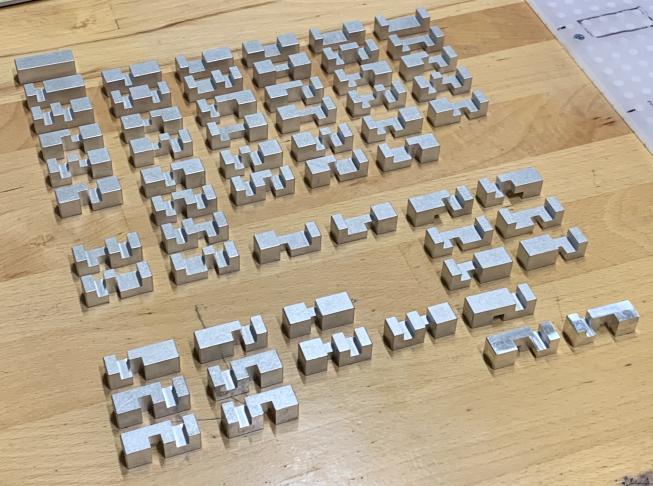
Other burr puzzle sets:
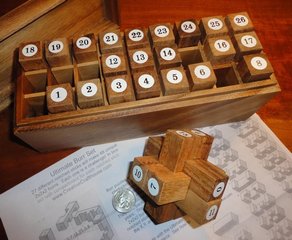
Creative Craft House offers the Ultimate Burr Set that includes 27 pieces and can make over 60 puzzles. Thanks, Dave! Ken Irvine wrote up a nice article about this set, which he has given me permission to mirror so you can download a copy. |
||||||||||||||||||||||||||||||||||||||||||
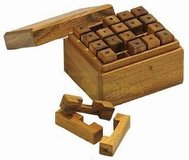
Philos offers their set #6025, called "151er Teufel" having 20 pieces and making 159 puzzles (I don't have this.) Check Amazon.de Here are the pieces included:
Omitted: { 35, 103, 120, 86, 154, 871, 359/615, 856/943 } |
This is the Onietoiy 20pcs DIY Puzzle - a burr set from Onietoiy.
The set includes 16 traditional burr pieces of length 8, and four special pieces of length 16
which are used to assemble multi-burr constructs.
The instructions give 19 traditional 6-piece burrs which use the key piece, and 4 which use 52 rather than the key piece,
as well as several interesting larger structures to be made with the special long pieces.
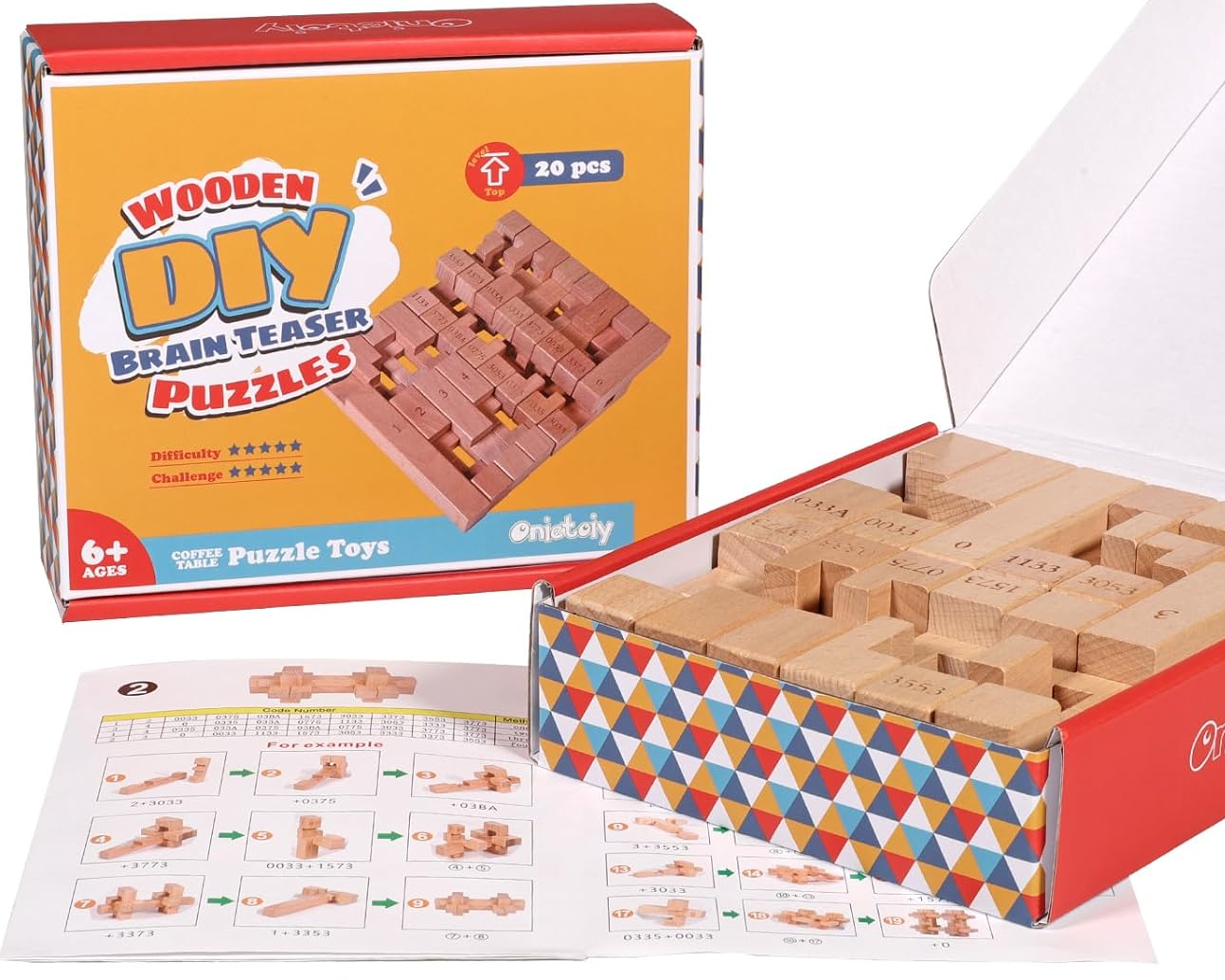
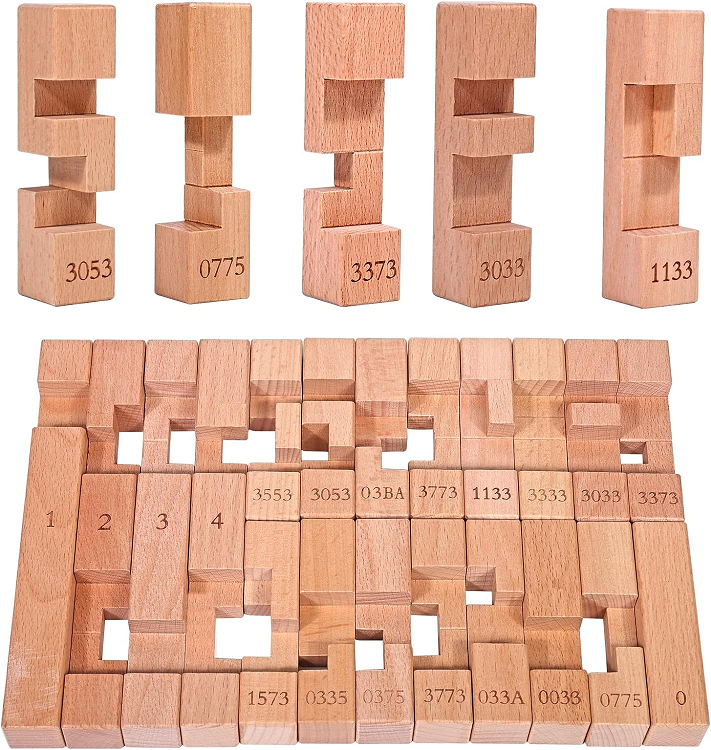
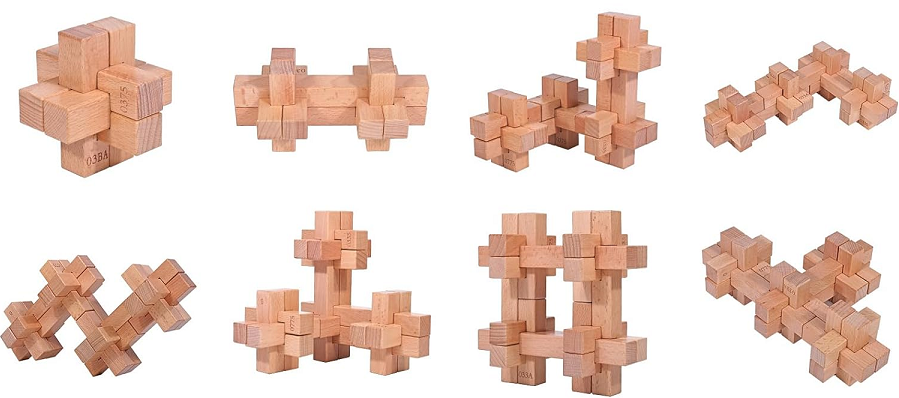
The pieces are identified with a strange numbering scheme - I map to my IDs in the table below:
| Onietoiy ID | My ID |
| 0 | 1 |
| 0033 | 52 - half tray |
| 3033 | 188 - can opener |
| 1133 | 208 - half tray with wall on left vs 64 (right) not incl |
| 3333 | 256 - full tray |
| 3053 | 670 - (L in middle, open right) vs 412 |
| 3373 | 768 - (tray w/ gap tooth on right) |
| 0335 | 792 - wall left gap |
| 0375 | 824 - left offset |
| 0775 | 888 - club left gap (no right club 1007) |
| 033A | 911 - wall right gap |
| 3553 | 928 - tongue |
| 03BA | 975 - right offset |
| 1573 | 976 - pc from G4/Marseille |
| 3773 | 1024 |
| 3773 | 1024 |
Arthur L. Smith was a noted puzzle expert in the early 1900's - he wrote an article on burr puzzles published in the March 1926 issue of Popular Science magazine. Here is a link to the Google Books page.
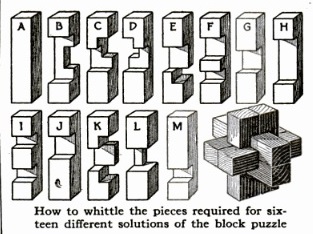
| Smith ID | A | B | C | D | E | F | G | H | I | J | K | L | M |
| My ID | 1 | 1024 | 824 | 975 | 911 | 188 | 103 | 256 | 154 | 52 | 928 | 871 | 18 |
| Count | 1 | 3 | 1 | 1 | 1 | 2 | 1 | 2 | 1 | 2 | 1 | 1 | 1 |
Smith's diagrams are very clear and there is no mistaking the identities of the pieces.
All of Smith's pieces are among the 25 notchables used in solid burrs.
Smith describes 16 burrs that can be constructed from this set.
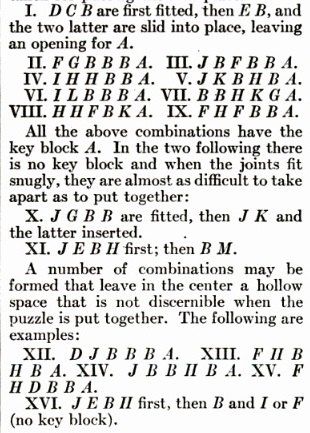
In my table of puzzles below, I will highlight Smith's burrs like this.
Smith wrote several other articles on puzzles for Popular Science:
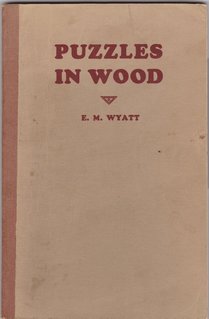 The book Puzzles in Wood, written by Edwin M. Wyatt,
was published in 1928 by the Bruce Publishing Company.
I have a copy of the fourth printing from 1939.
Wyatt includes a section on the six piece burr,
shows clear plans for 13 pieces he labels A through M, and gives a list of six-piece sets for 15 puzzles.
The book Puzzles in Wood, written by Edwin M. Wyatt,
was published in 1928 by the Bruce Publishing Company.
I have a copy of the fourth printing from 1939.
Wyatt includes a section on the six piece burr,
shows clear plans for 13 pieces he labels A through M, and gives a list of six-piece sets for 15 puzzles.
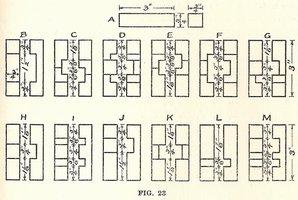
| A | B | C | D | E | F | G | H | I | J | K | L | M |
| 1 | 256 | 824 | 928 | 975 | 1024 | 911 | 103 | 154 | 52 | 871 | 18 | 188 |
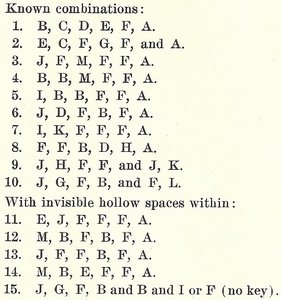
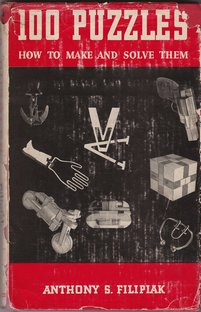 The book 100 Puzzles - How to Make and Solve Them, written by Anthony S. Filipiak,
was published in 1942 by A. S. Barnes and Company.
In his book, Filipiak includes a section on the "Six Piece Burr Puzzle," beginning on page 79.
He says that though he has over a thousand mechanical and manipulative puzzles in his collection,
his favorite puzzle is the six piece burr.
The book 100 Puzzles - How to Make and Solve Them, written by Anthony S. Filipiak,
was published in 1942 by A. S. Barnes and Company.
In his book, Filipiak includes a section on the "Six Piece Burr Puzzle," beginning on page 79.
He says that though he has over a thousand mechanical and manipulative puzzles in his collection,
his favorite puzzle is the six piece burr.

| 1 | 2 | 3 | 4 | 5 | 6 | 7 | 8 | 9 | 10 |
| 1 | 18 | 52 | 256 | 154 | 188 | 1024 | 928 | 871 | 911? (463?) |
| 11 | 12 | 13 | 14 | 15 | 16 | 17 | 18 | 19 | 20 |
| 792 | 975 | 824 | 512 | 768 | 1016 | 1023 | 1015 | 760 | 511 |
| 21 | 22 | 23 | 24 | 25 | 26 | 27 | 28 | 29 | 30 |
| 992 | 960 | 564? | 788 | 820 | 973 | 927 | 359 | 615 | 461? |
| 31 | 32 | 33 | 34 | 35 | 36 | 37 | 38 | ||
| 909 | 35? | 920 | 20 | 103 | 1007 | 888 | 120 |
There are only a few discrepancies:


The seller obtained the set at a flea market in Virginia but unfortunately could say nothing else of its provenance. They were supplied in a crude oblong cardboard box, shown first above - I fashioned a slightly less crude and more convenient cardboard container for the set, with internal separators, shown next. The pieces appear to be made from walnut. Each piece has a 1/2" square cross section and is 3" long, and notches are 1/4" so these are length-12.
I am able to construct many burrs using this set, including the complexly-notched Tenyo Brother, since in effect a 463 is supplied. Sadly, however, due to the flaws mentioned above, there are several among Filipiak's 73 burrs that cannot be constructed using this set.
Still, it is cool to have come into possession of some past puzzler's treasure - it must have taken quite some effort to craft all these pieces - chisel marks can be seen in the finely carved notches. I wonder how many other readers of Filipiak's book actually went to the trouble to make the set of burr pieces for which he evinced so much enthusiasm?
This section gives a list of burrs to try once you have a set (or can make your own pieces, for example from LiveCube or Lego). I've included solid and holey designs. There are several sources that give the full list of all 314 solid burrs that can be produced with the set of 42 notchable pieces, including Slocum and Botermans' 1987 Puzzles Old and New. That list of 314 puzzles contains multiple entries for a set of six pieces when that set can go together in different ways, so there are not actually 314 unique six-piece sets. I have folded all the sets represented by those 314 puzzles into my list. I have tried to catalogue interesting puzzles I've run across and give their names or designers when I know them.
The catalog below is ordered by piece number - with the six pieces sorted by number, lowest first. Mirror pair pieces are listed together. I have color-coded the pieces per my guide tables above, to try to make it easier to see how the designs may be related.
In the notes accompanying the puzzles I have used various colors to highlight particular puzzles as follows...
Anyway, herewith my list, also "collected the world over!"
(Note that the ordinal list entry numbers will change if/when I modify the list, so you should not rely on them as identifiers for given burr puzzles. They're just there to provide a count of the number of entries in my list.)
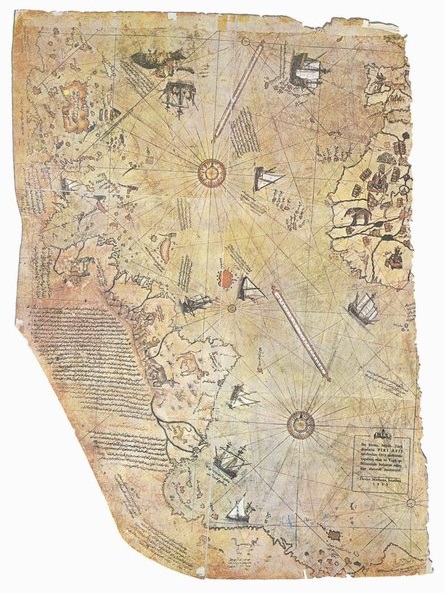 The recent history of discovery related to the burr puzzle seems to me like the history of world exploration -
at first, the "known world" was small and encompassed some well-traveled areas, beyond which lay either the
"edge of the world" (for those who thought they had seen all the burrs and only "a few" remained to be found),
or a "terra incognita" that stretched off into the hazy distance.
Decades, perhaps even centuries, of exploration served to extend the frontiers of what was known,
with some impressive voyages of exploration by
intrepid souls using relatively primitive technology.
But it was not until the computer age and Bill Cutler
that a "satellite view" became available, delimiting the "globe" and showing its full extent - 35 billion assemblies.
Most of that area is "water" - assemblies that cannot be constructed.
Roughly 17% is "land" - the 5.95 billion constructible burrs.
The "Old World" of the solid burrs stretches across 119,979 assemblies,
and features many well-known cities and well-traveled routes.
Cutler's satellite view has identified several impressive peaks in the larger world beyond,
and much ground remains unexplored.
Are the burr pioneers really "inventors?" Or, like the explorers of old, are they really more "discoverers?"
I don't claim to have "invented" any unique burr puzzles myself, but like others I have spent some time exploring the
world that Cutler delimited.
In particular I have been interested in finding high-level (holey) burrs that can be made with the notchable set,
at length 6.
Bruno Curfs has utilized computer analysis performed by Keiichiro Ishino,
and makes several output files available at his site.
Bruno mentions and discusses several burrs already.
The recent history of discovery related to the burr puzzle seems to me like the history of world exploration -
at first, the "known world" was small and encompassed some well-traveled areas, beyond which lay either the
"edge of the world" (for those who thought they had seen all the burrs and only "a few" remained to be found),
or a "terra incognita" that stretched off into the hazy distance.
Decades, perhaps even centuries, of exploration served to extend the frontiers of what was known,
with some impressive voyages of exploration by
intrepid souls using relatively primitive technology.
But it was not until the computer age and Bill Cutler
that a "satellite view" became available, delimiting the "globe" and showing its full extent - 35 billion assemblies.
Most of that area is "water" - assemblies that cannot be constructed.
Roughly 17% is "land" - the 5.95 billion constructible burrs.
The "Old World" of the solid burrs stretches across 119,979 assemblies,
and features many well-known cities and well-traveled routes.
Cutler's satellite view has identified several impressive peaks in the larger world beyond,
and much ground remains unexplored.
Are the burr pioneers really "inventors?" Or, like the explorers of old, are they really more "discoverers?"
I don't claim to have "invented" any unique burr puzzles myself, but like others I have spent some time exploring the
world that Cutler delimited.
In particular I have been interested in finding high-level (holey) burrs that can be made with the notchable set,
at length 6.
Bruno Curfs has utilized computer analysis performed by Keiichiro Ishino,
and makes several output files available at his site.
Bruno mentions and discusses several burrs already.
Here are a few holey burrs made with the notchable set, which I'd like to flag as of interest:
+----+ / 1 /| +----+ | +----+ | | +----+-/ 2 /| | |/ 4 5+----+ | + + | | + | 3 / | | | | +----+----+ + | +--| 6 7 8 | + | |/ + +-|/-+----+ | | + 10 | 9 |/ +----+
The following chart shows how the floating pieces might be distributed, converting P1 through P5 into pieces other than Y. Note that cubies 1 and 3 must be allocated as a pair. (Why? Because if they are split up, it results in some pieces which are not notachable.) Likewise for the pairs 2 and 8, and 9 and 10.
| 1 and 3 | 2 and 8 | 4 | 5 | 6 | 7 | 9 and 10 | |
|---|---|---|---|---|---|---|---|
| P1 | x | x | x | ||||
| P2 | x | x | x | x | |||
| P3 | x | x | x | x | |||
| P4 | x | x | x | x | |||
| P5 (opp. key) |
x | x |
| P5 plus | (none) | 5 | 7 | (5,7) | (9,10) | (4,5,9,10) (6,7,9,10) |
(4,5,6,7,9,10) |
|---|---|---|---|---|---|---|---|
| equals | Y | W | X | V | J | I | H |
| P5 plus | (none) | 5 | 7 | (5,7) | (9,10) | (4,5,9,10) (6,7,9,10) |
(4,5,6,7,9,10) |
|---|---|---|---|---|---|---|---|
| equals | Y | W | X | V | J | I | H |
| plus 2 equals |
Q or U | S | P | not possible | G | E | not possible |
| Here is a list of the 17 configurations employing one of E,G,Q,U,P, or S opposite A. All require an M. |
There are only 5 other configurations that use M - these do not require its rotation.
All are very easy.
|
|
|
|
|
The next smallest class should be the AI configurations. The I piece used 4 out of 10, leaving 6.
1/3 and 2/8 still must be assigned as pairs, but 4 and 5 can be independently allocated to different pieces.
The possibilities: 6/0/0/0,
4/2/0/0,
4/1/1/0,
3/2/1/0,
2/2/2/0,
2/2/1/1.
There are 16 AI configurations as follows:
|
V uses only 2, leaving 8 - the pairs
1/3, 2/8, and 9/10, and 4 and 6.
The 16 AV configurations:
|
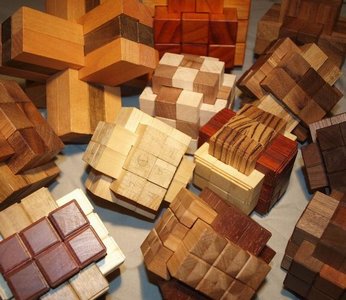 This section is about the "Traditional" 18-piece Burr.
This type of burr can be visualized as having a 6-piece burr shape at its core, but instead of 2x2x2 pieces crossing, it has 6x6x6.
Each group of 6 pieces along an axis is arranged in a 2x3 block.
The minimum length of a piece is 8 units - pieces are typically 2x2x8.
Willem van der Poel seems to have designed the first 18-piece 6x6x6 burr, in 1951-1953 - this type of burr is a much more
recent development than the Traditional 6-piece Burr. In this case, "traditional" refers to the canonical 6x6x6 shape rather than hinting
at any deep history.
(Other shapes or arrangements of 18 pieces are possible.)
Van der Poel's burr is known as the
Grandfather 6x6x6 18-piece burr.
The Grandfather burr is
discussed on Pete Roesler's site,
where you can read
a brief history written by van der Poel.
Willem made a copy by hand from Beech wood - that copy is now in Jerry Slocum's collection.
Willem's design is level 3.2.4. 1.1.2.
Ishino has
a catalogue of length-8 pieces here.
Ishino also has
a selection of 18-piece burr designs,
and
a table of some designs, listed with piece codes.
The burr diagrams used below are Ishino's.
As discussed in the section on Traditional 6-piece Burrs, Bill Cutler completely analyzed those.
However, as of this writing in Feb. 2011, no-one has yet performed an analysis for the Traditional 18-piece Burr.
In van Delft and Botermans' Creative Puzzles of the World, van der Poel's puzzle is shown on page 71.
In Slocum and Botermans' Puzzles Old and New, plans for an 18-piece burr are shown on page 71 - Ishino
calls this one
Unnamed 18 Piece Burr #1.
Its pieces are length 10. (Maybe designed by Gillett as noted in
this thread on the PuzzleWorld forums?)
Frans de Vreugd is a notable collector with an interest in high-level burrs - Frans has published nice articles on the topic in
CFF #80 (Nov. 2009) Recent 18-Piece Burrs, and CFF #82 (July 2010) More 18-Piece Burrs, as well as an article in
the book A Lifetime of Puzzles: A Collection of Puzzles in Honor of Martin Gardner's 90th Birthday -
Extreme Puzzles on p.195.
At the higher levels, even disassembly is a challenge. Re-assembly without instructions becomes almost impossible.
Guillaume Largounez posted an interesting account of his attempts to construct and solve the most difficult 18 piece burrs,
at the PuzzleWorld Forums.
His conclusions are in
this post.
Some quotes from Guillaume:
This section is about the "Traditional" 18-piece Burr.
This type of burr can be visualized as having a 6-piece burr shape at its core, but instead of 2x2x2 pieces crossing, it has 6x6x6.
Each group of 6 pieces along an axis is arranged in a 2x3 block.
The minimum length of a piece is 8 units - pieces are typically 2x2x8.
Willem van der Poel seems to have designed the first 18-piece 6x6x6 burr, in 1951-1953 - this type of burr is a much more
recent development than the Traditional 6-piece Burr. In this case, "traditional" refers to the canonical 6x6x6 shape rather than hinting
at any deep history.
(Other shapes or arrangements of 18 pieces are possible.)
Van der Poel's burr is known as the
Grandfather 6x6x6 18-piece burr.
The Grandfather burr is
discussed on Pete Roesler's site,
where you can read
a brief history written by van der Poel.
Willem made a copy by hand from Beech wood - that copy is now in Jerry Slocum's collection.
Willem's design is level 3.2.4. 1.1.2.
Ishino has
a catalogue of length-8 pieces here.
Ishino also has
a selection of 18-piece burr designs,
and
a table of some designs, listed with piece codes.
The burr diagrams used below are Ishino's.
As discussed in the section on Traditional 6-piece Burrs, Bill Cutler completely analyzed those.
However, as of this writing in Feb. 2011, no-one has yet performed an analysis for the Traditional 18-piece Burr.
In van Delft and Botermans' Creative Puzzles of the World, van der Poel's puzzle is shown on page 71.
In Slocum and Botermans' Puzzles Old and New, plans for an 18-piece burr are shown on page 71 - Ishino
calls this one
Unnamed 18 Piece Burr #1.
Its pieces are length 10. (Maybe designed by Gillett as noted in
this thread on the PuzzleWorld forums?)
Frans de Vreugd is a notable collector with an interest in high-level burrs - Frans has published nice articles on the topic in
CFF #80 (Nov. 2009) Recent 18-Piece Burrs, and CFF #82 (July 2010) More 18-Piece Burrs, as well as an article in
the book A Lifetime of Puzzles: A Collection of Puzzles in Honor of Martin Gardner's 90th Birthday -
Extreme Puzzles on p.195.
At the higher levels, even disassembly is a challenge. Re-assembly without instructions becomes almost impossible.
Guillaume Largounez posted an interesting account of his attempts to construct and solve the most difficult 18 piece burrs,
at the PuzzleWorld Forums.
His conclusions are in
this post.
Some quotes from Guillaume:
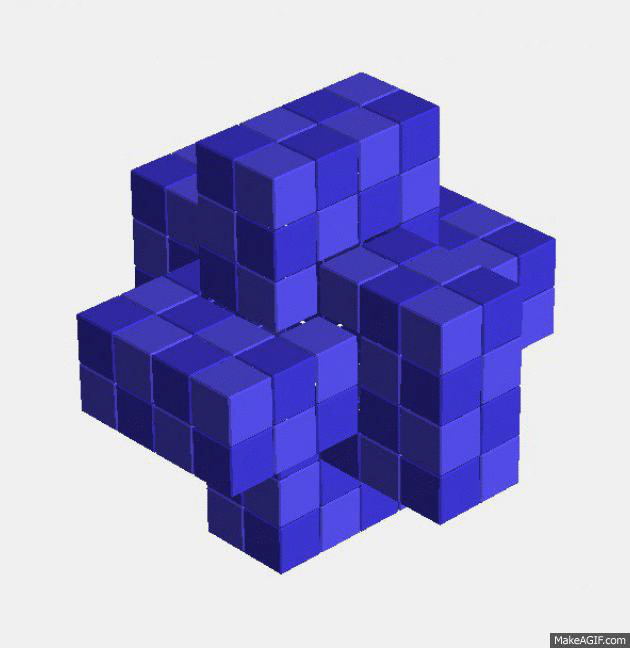 The simplest piece is arguably x00FFFF
The simplest piece is arguably x00FFFF
 .
The earliest designs (e.g. Grandfather, Lovely) are composed of a core 6-piece burr, surrounded by a "cage" of relatively simple pieces, usually x00FFFF.
The animation shown here illustrates the core 6-piece burr and how it is surrounded by a cage of 12 additional pieces.
Of course, what makes each design unique will be the piece notchings and how they fit together.
According to Ishino, in 2003 Paul Blake designed a level 4.4.3.4.2. 5.3.4.2.2. 1.2.1.2 using 18 of x00FFFF, called
Simply Complex.
I entered the traditional 18-piece burr shape into BurrTools, along with 18 copies of the x00FFFF piece -
the run finished very quickly in only 1.4 minutes.
My run gave 1960 assemblies, of which 1372 are solutions.
The highest level found was 4.3.1.4.2. 2.2.2 with 29 moves;
the highest number of moves is 32 for a level 1.3.1.3.3. 4.3.3.3 solution.
My 1960/1372 statistics agree with Ishino's, but my run did not find the purported level 4.4 (39 move) solution, so there seems to be some error somewhere -
or we are counting moves differently when several pieces move together, or when pieces move further than one unit in a given direction.
.
The earliest designs (e.g. Grandfather, Lovely) are composed of a core 6-piece burr, surrounded by a "cage" of relatively simple pieces, usually x00FFFF.
The animation shown here illustrates the core 6-piece burr and how it is surrounded by a cage of 12 additional pieces.
Of course, what makes each design unique will be the piece notchings and how they fit together.
According to Ishino, in 2003 Paul Blake designed a level 4.4.3.4.2. 5.3.4.2.2. 1.2.1.2 using 18 of x00FFFF, called
Simply Complex.
I entered the traditional 18-piece burr shape into BurrTools, along with 18 copies of the x00FFFF piece -
the run finished very quickly in only 1.4 minutes.
My run gave 1960 assemblies, of which 1372 are solutions.
The highest level found was 4.3.1.4.2. 2.2.2 with 29 moves;
the highest number of moves is 32 for a level 1.3.1.3.3. 4.3.3.3 solution.
My 1960/1372 statistics agree with Ishino's, but my run did not find the purported level 4.4 (39 move) solution, so there seems to be some error somewhere -
or we are counting moves differently when several pieces move together, or when pieces move further than one unit in a given direction.
Designers have sought to create higher-level puzzles:
| Year | Designer | Level | Name | Source |
| 1980s | Bruce Love (by hand) | 18.2.5.4.2.1.2 | Lovely Burr | Bill Cutler's website |
| 1999 | Brian Young (by hand) | 19.4.1.1.7 | Coming of Age Mark II | Mr. Puzzle |
| 2002 | Goh Pit Khiam | 33.7.2.1.2.3.3.1.3.1.2 | Burrloon | |
| 2003 | Jack Krijnen | 43.2.2.2.3.1.2 | Tipperary | |
| 2005 | Goh Pit Khiam and Jack Krijnen | 50.2.1.1.1.1.1.2.3 | Burrserk | |
| 2008 | Alfons Eyckmans | 59.2.6.1.2.3.2.2.2.1.1.1.1.1.1.2 | Condor | |
| 2008 | Krijnen | 62.4.21.1.2.2.1.1.1.2.2.2.1.1.1.2 | Condor's Peeper | Mr. Puzzle |
| 2008 | Jan Naert | 65.1.2.1.1.4.3.2.2.2.2.1.1.2.2.2 | The Monster | |
| 2009 | Eyckmans | 113.14.7.4.9.14.3 | Phoenix Cabracan | |
| 2010 | Krijnen | 138.7.5.1.1.2.1.1.2.2.2.1.1.1.1.2 | Burrly Sane for Woodworkers | |
| 2010 | Krijnen | 148.3.4.3.10.13.3 | Burrly Sane for Professionals | |
| 2010 | Eyckmans | 150.6.3.10.3.1.1.1.2.4.2.1.2 | Tiros | |
| 2010 | Krijnen | 152.7.9.5.11.14.4.1.1.1.1.2 | Burrly Sane for Extreme Puzzlers | |
| 2011 | Krijnen | 100.10.3.2 | Century | |
| 2013 | Krijnen & Eyckmans | 156.6.8.1.1.3.4.2.3.2.1.1.1.1.1.2 | Excelsior | |
| 2013 | Krijnen & Eyckmans | 166.6.8.1.1.1.2.4.1.1.2 | Supernova | Arteludes |
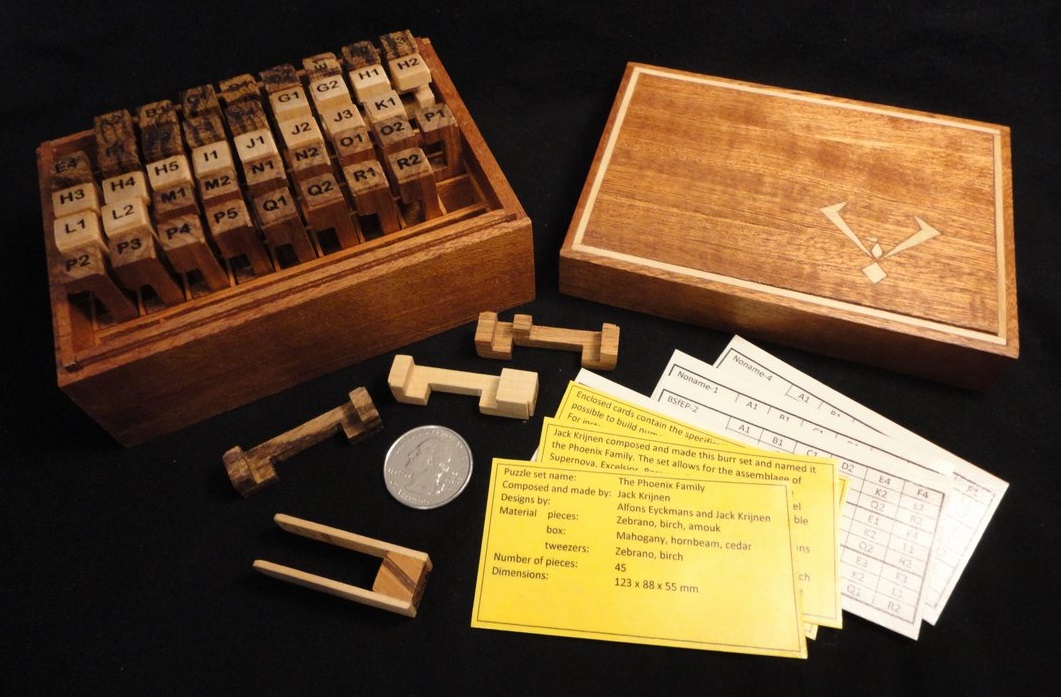
Here is a table of the individual 18-piece burr puzzles I have obtained (or wish to show the pieces of):
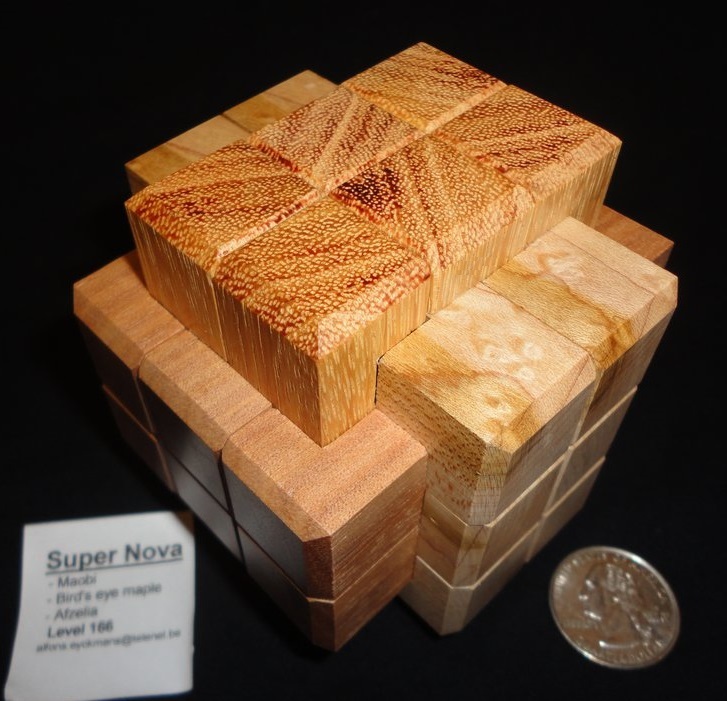

SuperNova - designed by Alfons Eyckmans and Jack Krijnen, and made by Alfons Eyckmans from Maobi, Bird's Eye Maple, and Afzelia. Very nice fit, with smooth slack-free movement. At level 166, this is the world's current highest-level 18-piece burr, made for me by one of its designers! |
||||
|
||||
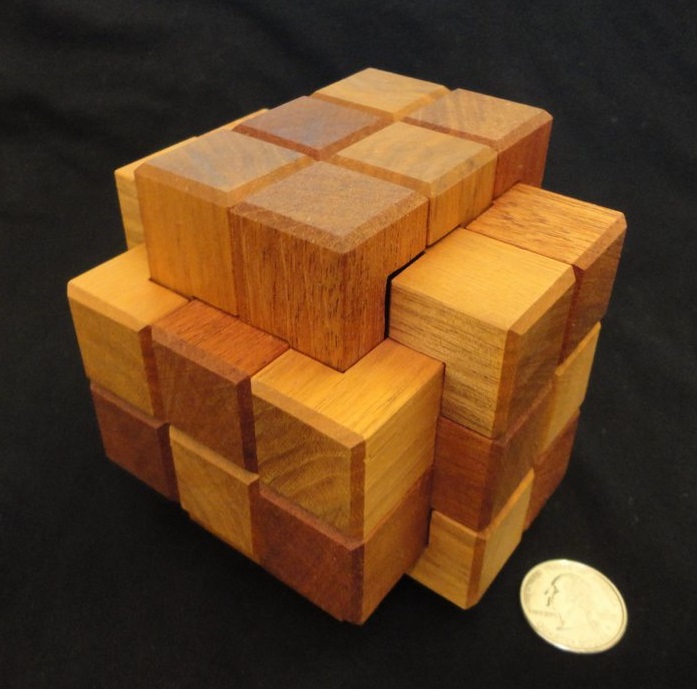

I received this large example of the van der Poel burr as part of a group of wooden puzzles. I don't know who the craftsman is. A couple of pieces are slightly different from the official design, but the assembly sequence is the same. |
||||
|
Here is a wooden "traditional" 18-piece burr from France.
It is a fairly simple construction, and it is not a copy of van der Poel's Grandfather Burr.
It is from a company called Grandjouan (Great Toys) and according to various sources, including the solution sheet that came with my example, the burr is called Damier.
Unfortunately no source I found has identified the designer or its date of production.
In addition, the name "Damier" has been applied to several different puzzles.
|
||||

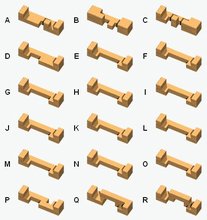
A design by Bruce Love called the Lovely Burr. Level 18. Only 1 solution. Made by Jerry McFarland, from Walnut and Mahogany. You might find one at Bill Cutler's website. Brian Pletcher blogged about this puzzle. |
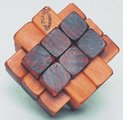
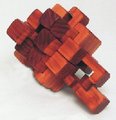
Coming of Age Mk.II - Mr. Puzzle Australia An 18-piece 6x6x6 burr designed by Brian Young, without the use of a computer. There are multiple solutions - the highest level is 19. It was analysed using BurrTools by Andreas Roever and he found a level 14.10.3.2. 5.11.10. That makes 65 moves for complete disassembly. Here is a YouTube video of Brian assembling this burr. Here is a YouTube video of a level 19.5.1.1. 7.1.1.1.2 assembly. Here is another YouTube video, of a level 16.3.1.1. 3.4.1.1.2 assembly.
Brian gives the following statistics based on Andreas' analysis:
|
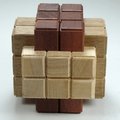
|
||
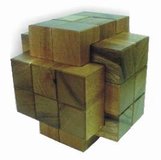
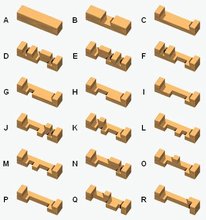
The Dragon Burr - a burr having 18 unique pieces. From Creative Crafthouse. Rated as one of their most difficult puzzles. Level 1.1.3.2.2 This was originally designed by Maurice Vigouroux in 2003 and called simply "The 18 Piece." |
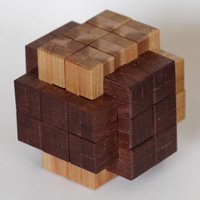
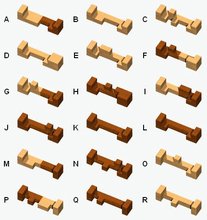
Tiros, shown here, is an 18-piece burr designed and made by Alfons Eyckmans. I obtained this in a trade with French puzzler Guillaume Largounez. Tiros requires 150 moves to get the first piece out! Guillaume suggests, "If you want to turn mad someone who owns a copy of the Tiros burr, disassemble it until pieces J and K are out, swap them, and rebuild the whole puzzle without the piece G (it can't fit if J and K are swapped). If the way Burrtools gets pieces J and K out is the shortest, solving the puzzle back to its assembled configuration should take 331 moves." |
|||
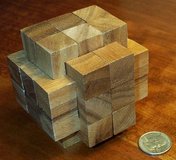
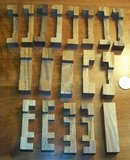
18 piece burr #3 - Not known who designed this Level 1.2.1.2.1.1.1.1.2 Available from Creative Crafthouse Here is a YouTube video of Dave showing three 18 piece burrs offered by Creative Crafthouse. |

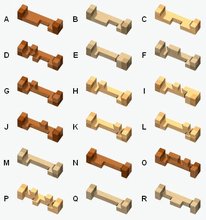
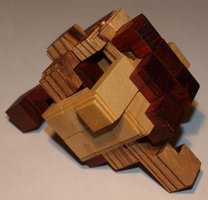
Burrly Sane for Woodworkers - designed and made by Jack Krijnen Level 138.7.5.1.1. 2.1.1.2.2. 2.1.1.1.1.2 Thanks, Jack! |
|||
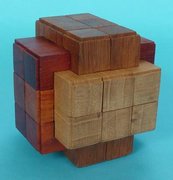

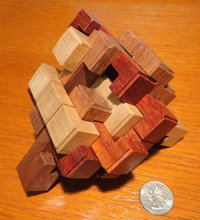


Burrly Sane for Extreme Puzzlers - designed and made by Jack Krijnen For a while was the record holder for highest level traditional 18-piece burr, at 152.7.9.5. 11.14.4.1. 1.1.1.2. |
||||
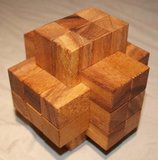
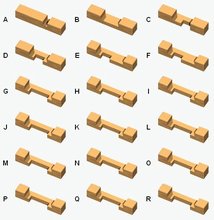
In Slocum and Botermans' Puzzles Old and New, plans for an 18-piece burr are shown on page 71 - Ishino calls this one Unnamed 18 Piece Burr #1. Its pieces are length 10. (Maybe designed by Gillett as noted in this thread on the PuzzleWorld forums?) Creative Crafthouse sells this one as their 18 Pc. Burr #2. |
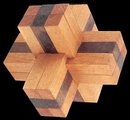
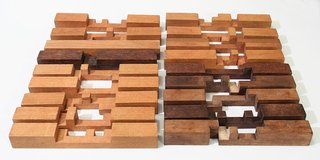
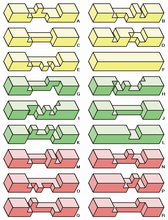
Arjeu CT666 (aka Super Croix (Cross) or Ushuaia) Gift from Jeff Taylor Designed by Jean-Paul Pierlot. No internal holes. Offered by Arjeu circa 1988. Pieces shown in photo. Here is a link to the solution in a French puzzle forum. Here is a link to a solution video on YouTube, and another in lower resolution. Van der Poel wrote that Pierlot designed 3 versions with no internal holes. I read on the PuzzleWorld Forums that another is called "Tricolore." Peter Knoppers' defunct site had the piece diagram shown above. |
|||
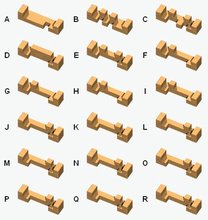
Burrloon pieces (I don't have this puzzle.) |

Phoenix Cabracan pieces (I don't have this puzzle.) |
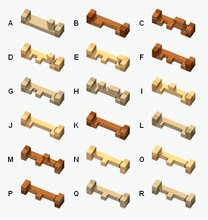
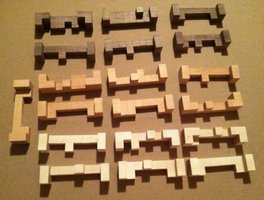
Century burr - an 18-piece burr at level 100, designed by Jack Krijnen, produced with Jack's permission by Colin Gaughran. |
||

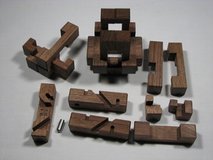
Bill Cutler designed the Slider and used it as his exchange for IPP30. It looks innocent enough, but judging by the internals, it is not your typical 18-piece burr! It is made from Walnut, by Jerry McFarland. I obtained a copy at Eureka Puzzles. |
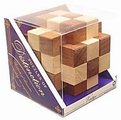

Vertigo from Pentangle is also not quite "traditional" internally. |
|||
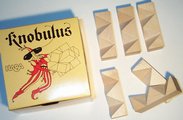
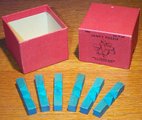

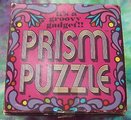
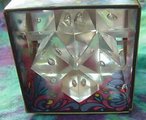
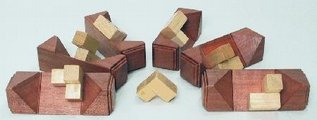
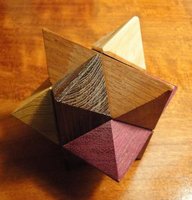

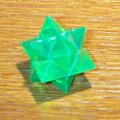

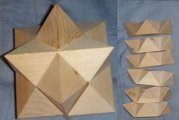
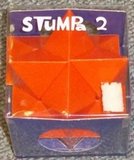 Below is a Micro Diagonal Star in its own small box -
made by John Polhemus, sold via his wife's Etsy store
Silly Sheila Designs.
Below is a Micro Diagonal Star in its own small box -
made by John Polhemus, sold via his wife's Etsy store
Silly Sheila Designs.
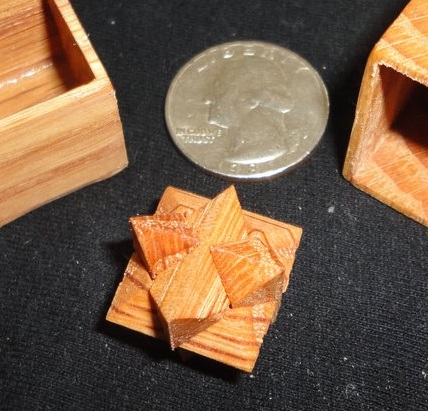
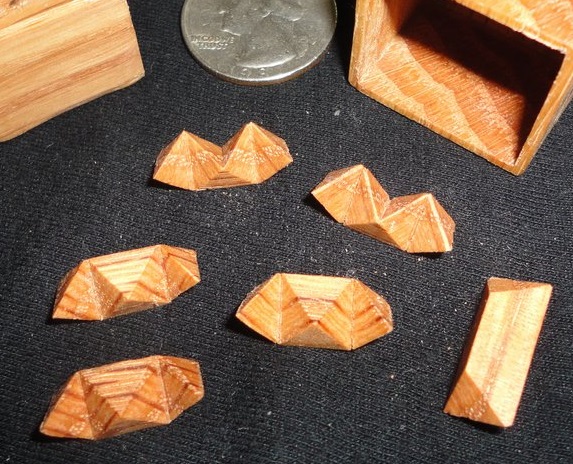
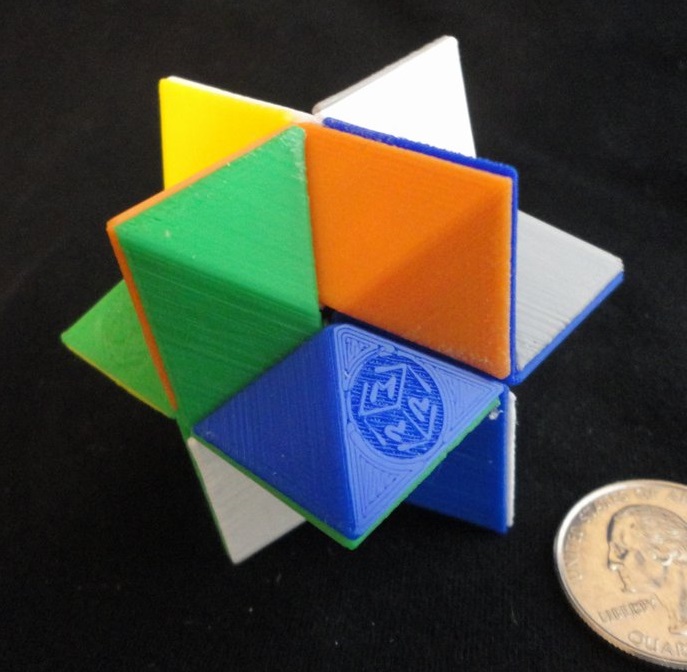
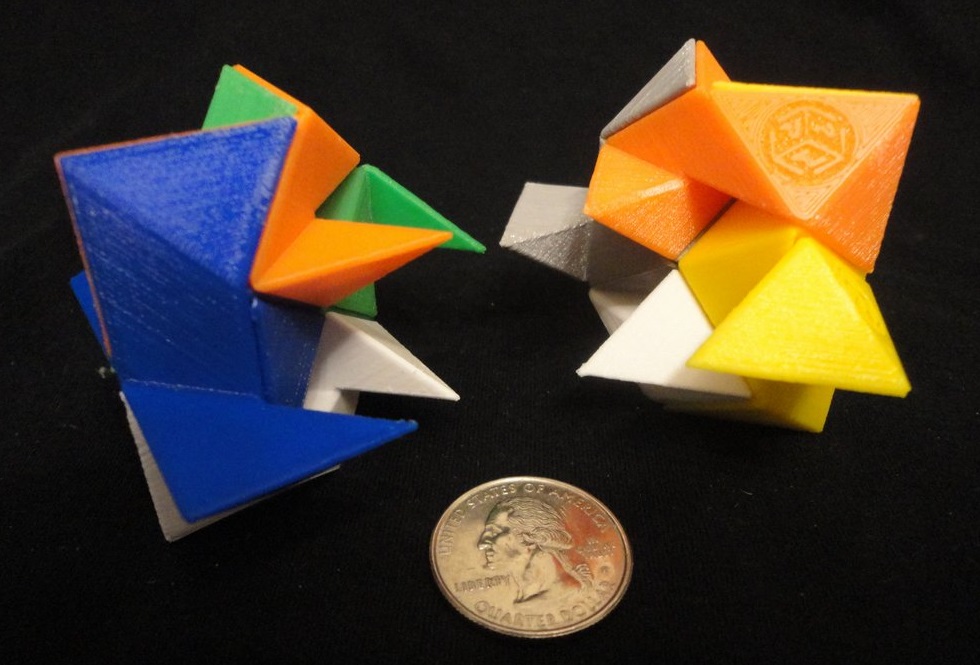
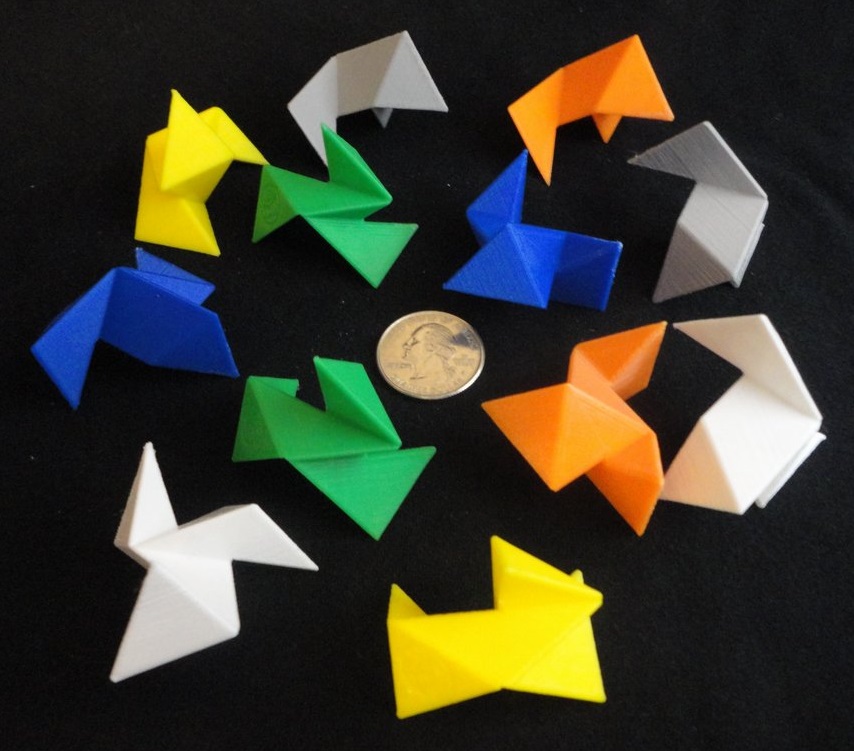
Starburst - a twelve-piece version of the Diagonal Star puzzle, 3D printed by Lee Krasnow. Check out Lee's Etsy shop Pacific Puzzleworks. |
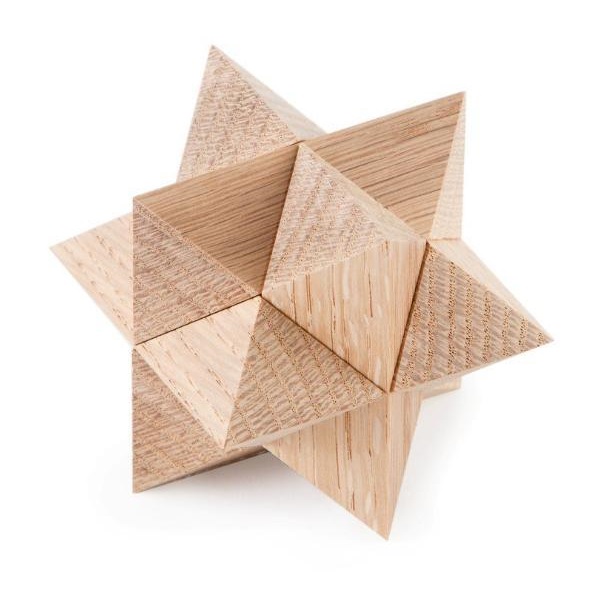
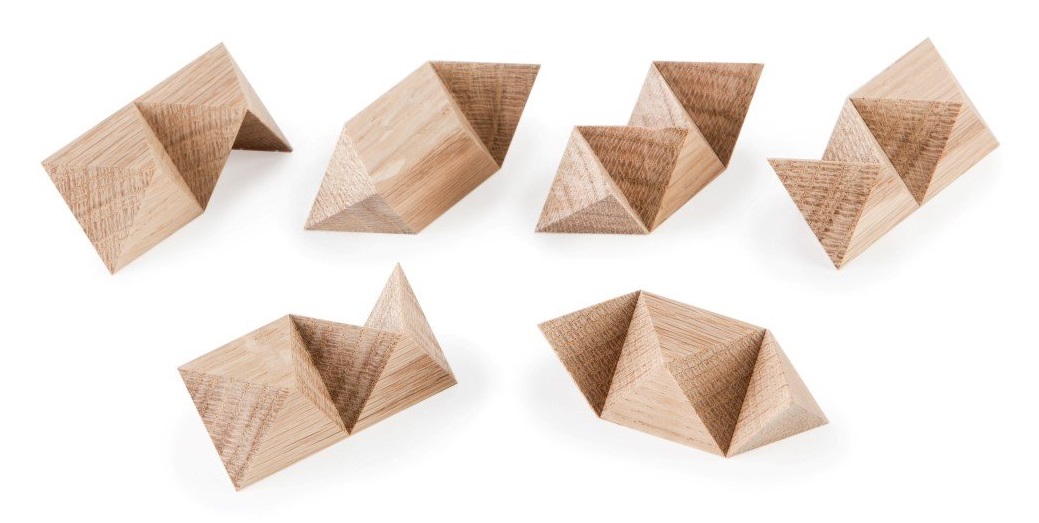
Gift Burr - designer unknown, made by Eric Fuller from White Oak. Six unconventional pieces form a conventional diagonal star. |

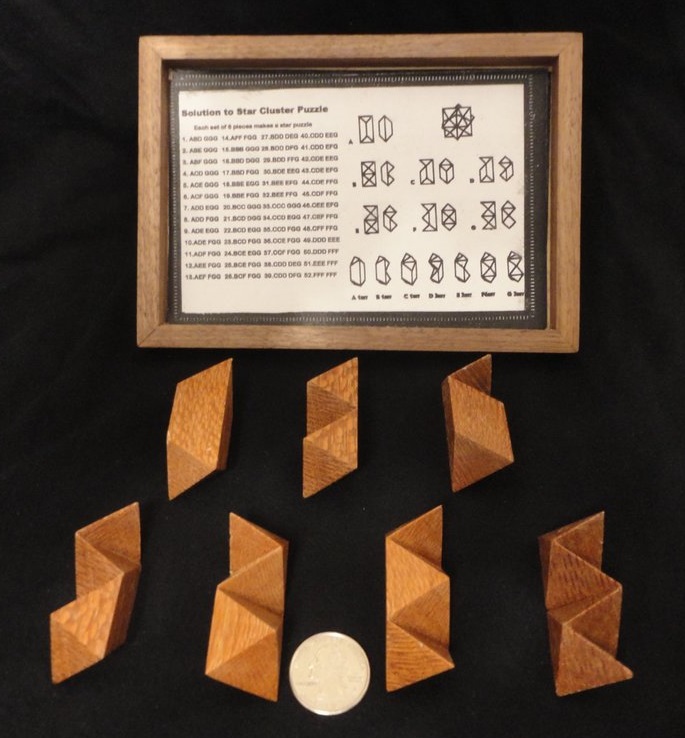
Star Cluster Puzzle Set - designer unknown, made and exchanged at IPP38 by Allen Rolfs. This copy purchased from Allen has a Walnut box and updated puzzle list. The set contains all possible (seven) different piece types that can be used to construct a traditional diagonal star puzzle, labeled A through G. Based on analysis by Bill Cutler, there are 52 possible puzzles. Sadly, there is no construction that uses six different piece types. Interestingly, the "Gift Burr" from CubicDissection is number 41 - it uses pieces { C, D, D, E, F, G }. |

This is called the "Asteroid" from Bits and Pieces. It has the same internal structure as the diagonal burr, but the pieces have been rounded off on the outside. It's not very precisely made, so it doesn't hold together very well. |
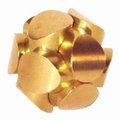
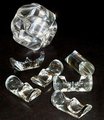
This is The Ball by Charles O. Perry. I got it at the MoMA shop when I used to work in Manhattan. The brass pieces are cylindrical, with curved ends. The notches are cylindrical, too. It relies on a small spring-loaded ball-bearing and a corresponding detent to hold the key piece in place. I found an acrylic version, too (the MoMA shop used to sell it). |
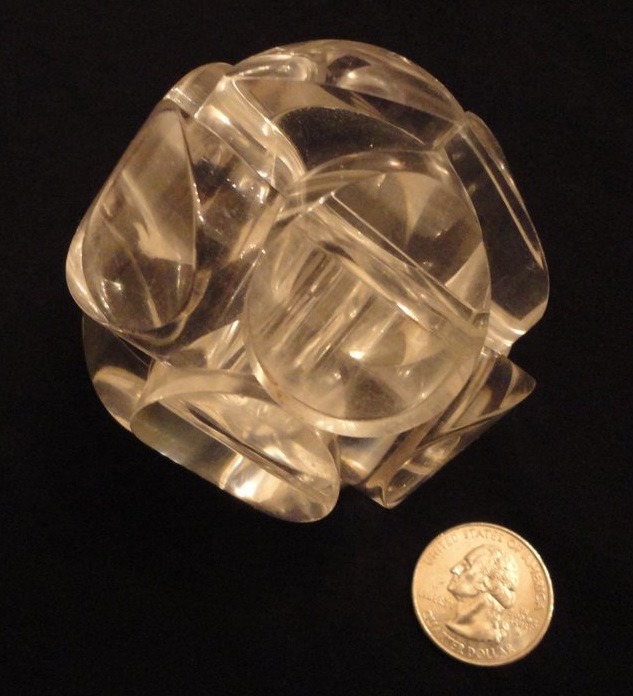
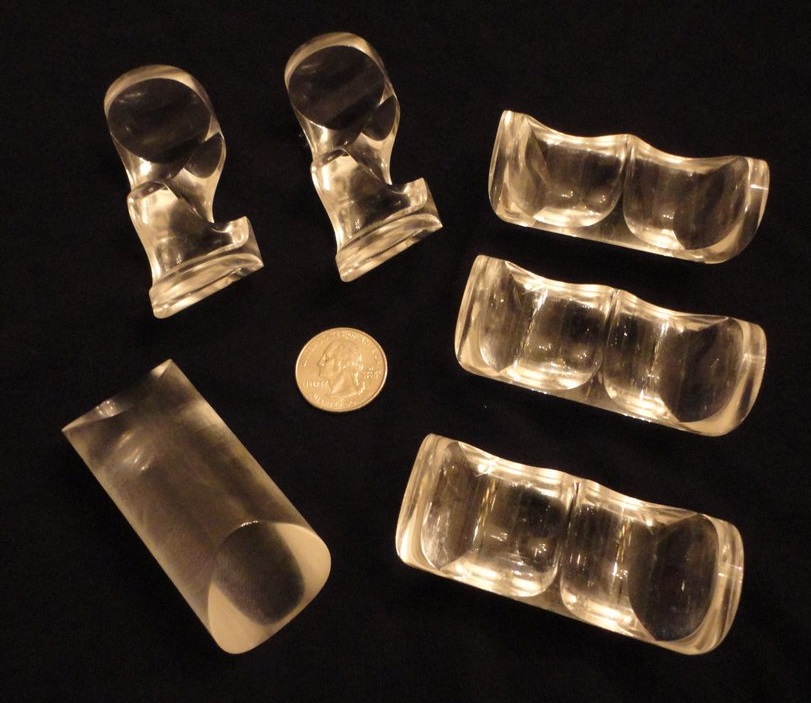

Large Acrylic Ball Burr provenance unknown, but not Perry Shown in comparison with Perry Brass and Acrylic Ball Puzzles |
|
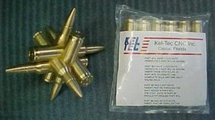 This 6-piece burr has the same internal structure as the Perry Ball (without the detent and spring/ball), but this is made of Kel-Tec bullets! Fortunately they're not live rounds. This was an advertising premium at a gun show. |

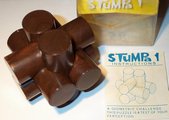
Skor Mor's Log Jam - this is a rounded version of the diagonal burr. There was a brown plastic version, too, called Stumpa 1. |
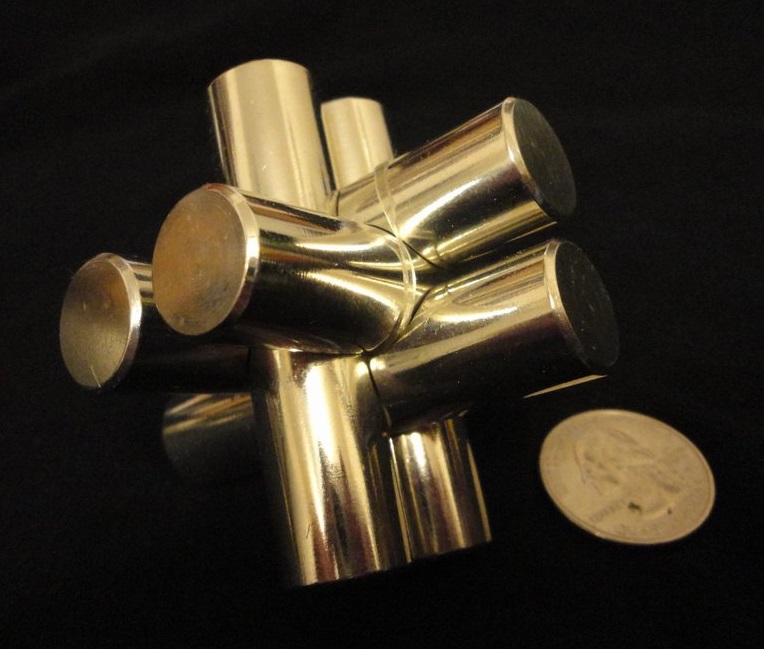
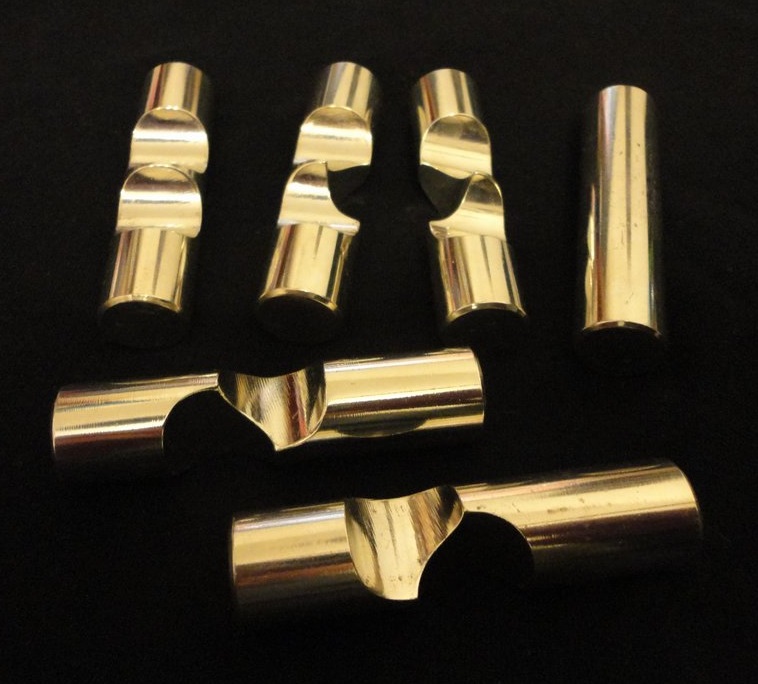
Burr from Lee Valley Tools a substantial metal 6-piece burr |
|
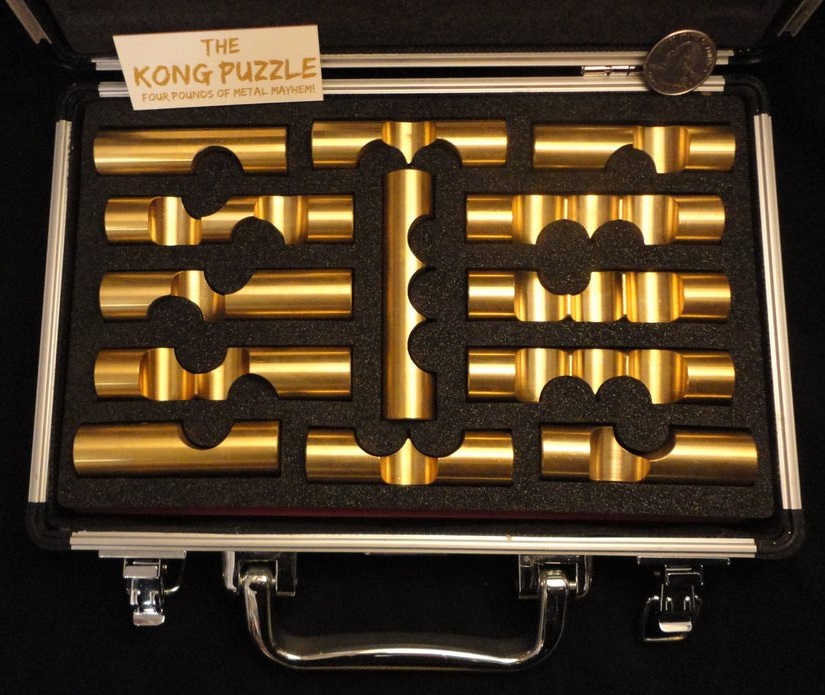
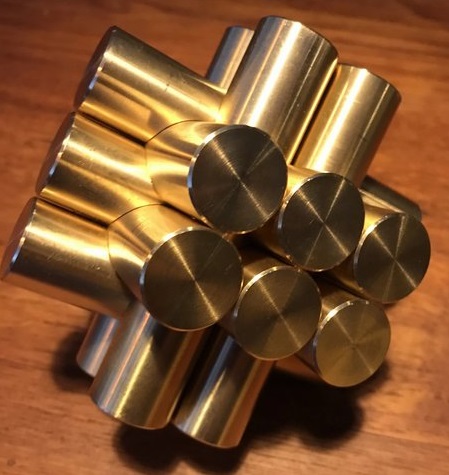
The Kong Puzzle "Four pounds of metal mayhem" - an interlocking burr with cylindrical brass pieces, from The Kong Puzzle Kickstarter campaign, by Two Brass Monkeys. Packed in its own aluminum briefcase. |
|
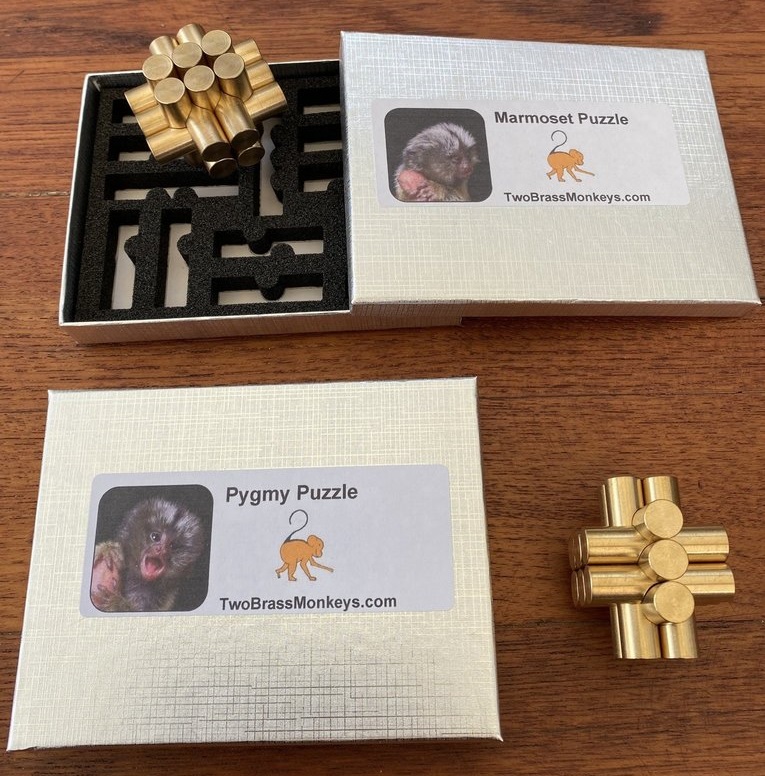
The Pygmy and Marmoset Burrs from Two Brass Monkeys Much smaller than the earlier Kong puzzle, but having the same target shape and numbers of pieces, though each with different notchings. |
|
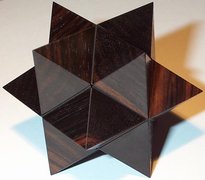
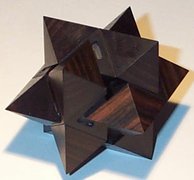
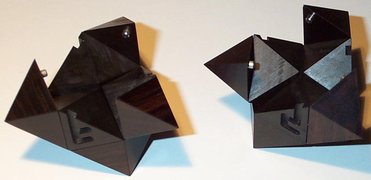
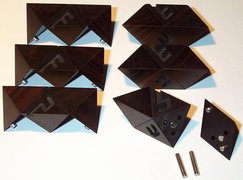
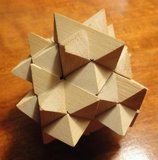
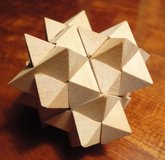
This is an enlarged construction related to the Diagonal Star, called variously the Chestnut Burr, the Asterisk, the Snowflake, and the Gem Cut Puzzle. It has 24 pieces. The Chestnut Burr appears in Wyatt's 1946 Wonders in Wood on page 36. My copy is fairly small, and I do not know who the craftsman is. |
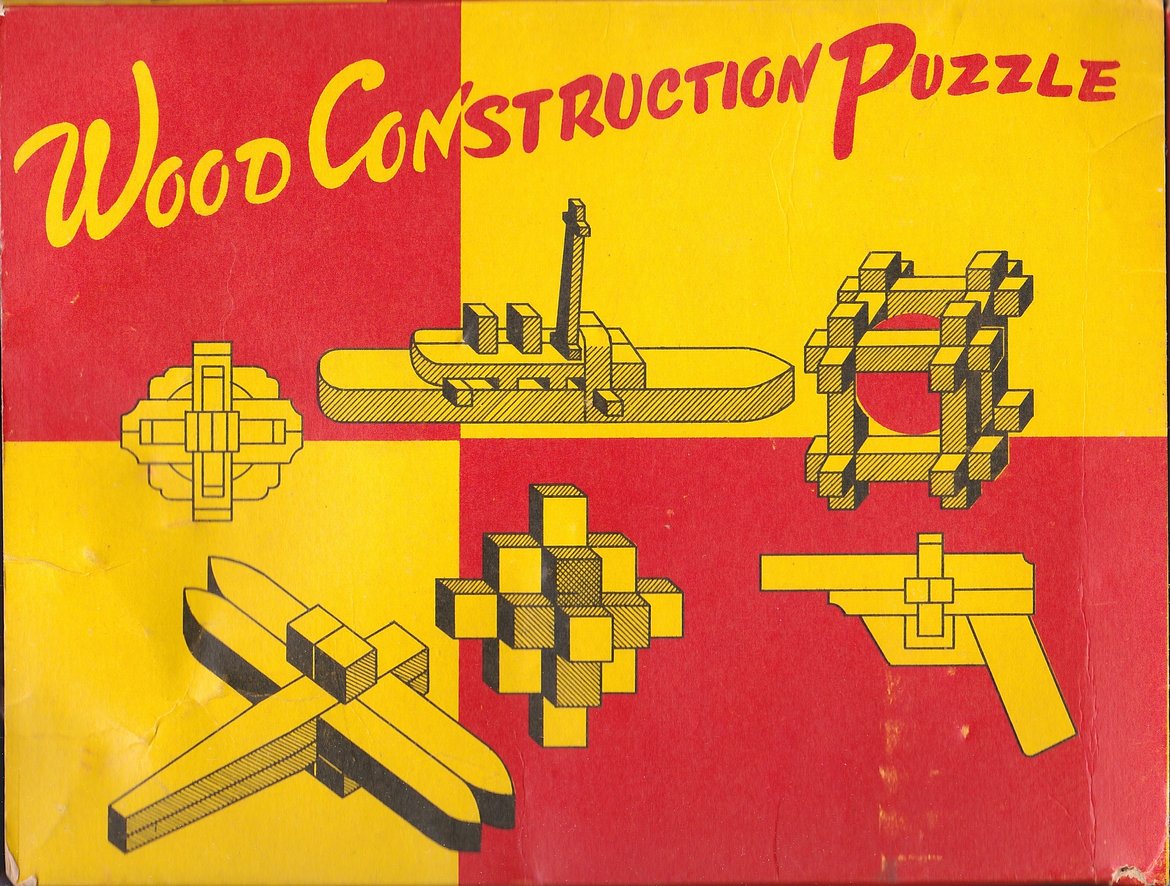 Kumiki puzzles appear in neither Catel's catalog of 1785 nor in Bestelmeier's catalog of 1793-1823 - both of which include only the interlocking Small Devil's Hoof (a traditional six-piece burr) and the Large Devil's Hoof (a cage-style burr).
Figural/representational Kumiki puzzles were invented in Japan in the 1890s by Tsunetaro
Yamanaka (1874-1954).
According to the Indiana State Library,
"He designed and constructed intricate puzzles that resembled buildings and vehicles, not just abstract shapes like spheres and cubes. Today, his descendants continue to carry on the tradition, including his great grandson, Tadaaki Yamanaka."
Kumiki puzzles were popular after World War II and many were imported by the company Shackman.
The Japanese word "Kumiki" roughly means "to join/weave/interlock wood together."
Japanese craftsmen have a tradition of constructing earthquake-resistant wooden shrines using interlocking
pieces without metal fasteners/nails,
and Kumiki puzzles may have served as practice projects.
Cleverwood (now defunct) had a nice write-up about Kumiki puzzles.
Here is a link to John Childs' extensive Kumiki collection.
Kumiki puzzles appear in neither Catel's catalog of 1785 nor in Bestelmeier's catalog of 1793-1823 - both of which include only the interlocking Small Devil's Hoof (a traditional six-piece burr) and the Large Devil's Hoof (a cage-style burr).
Figural/representational Kumiki puzzles were invented in Japan in the 1890s by Tsunetaro
Yamanaka (1874-1954).
According to the Indiana State Library,
"He designed and constructed intricate puzzles that resembled buildings and vehicles, not just abstract shapes like spheres and cubes. Today, his descendants continue to carry on the tradition, including his great grandson, Tadaaki Yamanaka."
Kumiki puzzles were popular after World War II and many were imported by the company Shackman.
The Japanese word "Kumiki" roughly means "to join/weave/interlock wood together."
Japanese craftsmen have a tradition of constructing earthquake-resistant wooden shrines using interlocking
pieces without metal fasteners/nails,
and Kumiki puzzles may have served as practice projects.
Cleverwood (now defunct) had a nice write-up about Kumiki puzzles.
Here is a link to John Childs' extensive Kumiki collection.
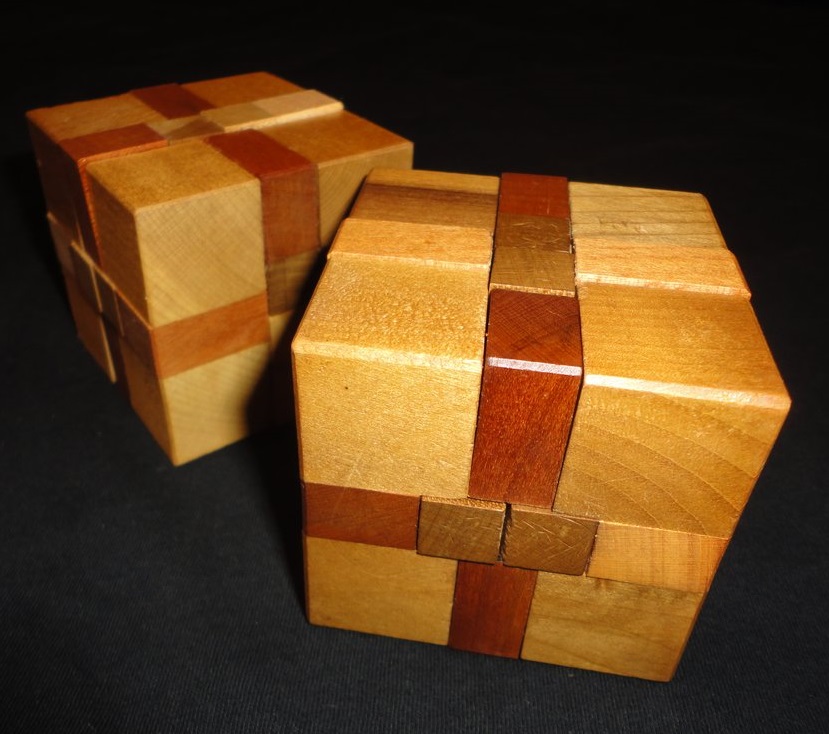
Classic Kumiki Cubes |

Pieces of the Kumiki Cube |
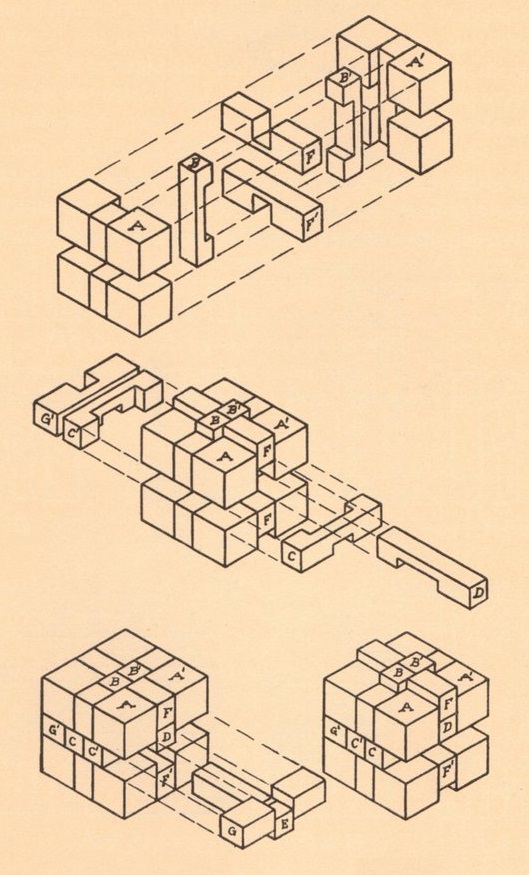
Kumiki Cube assembly instructions from Wyatt's 1928 Puzzles in Wood |
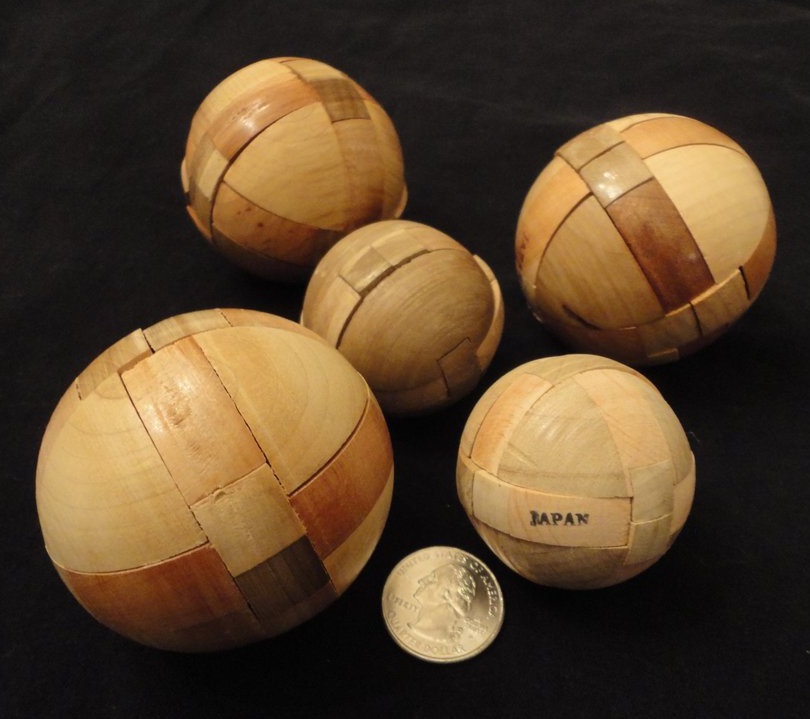
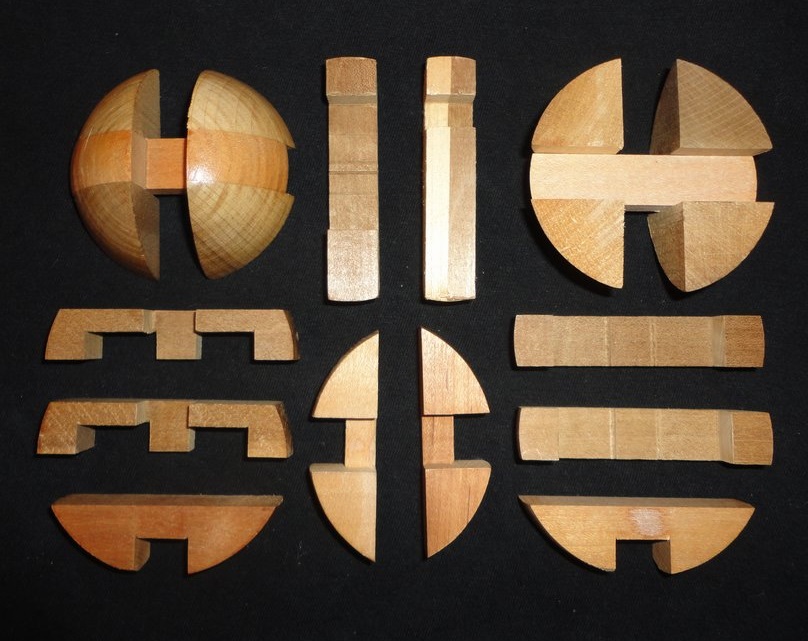
Kumiki Spheres and pieces |
||
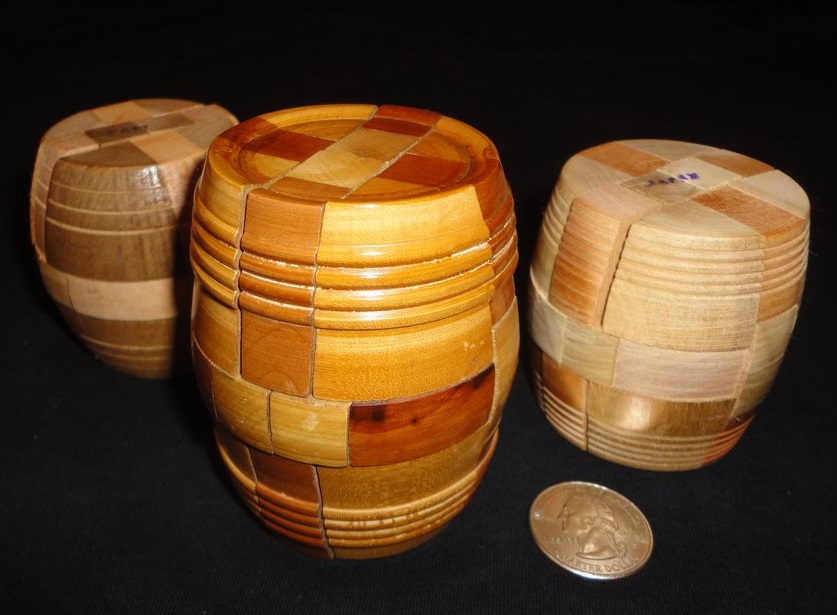
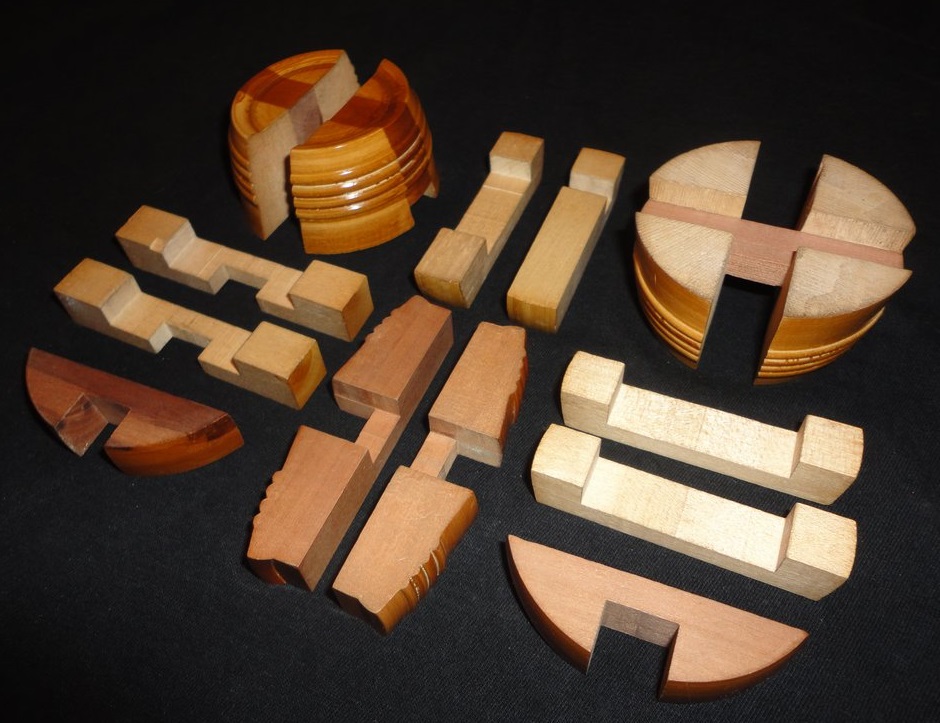
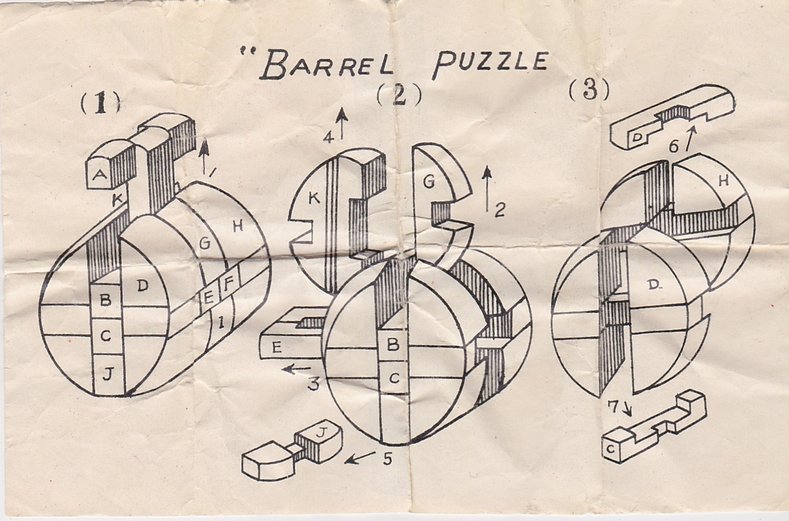
Kumiki Barrels and pieces |
||

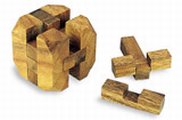
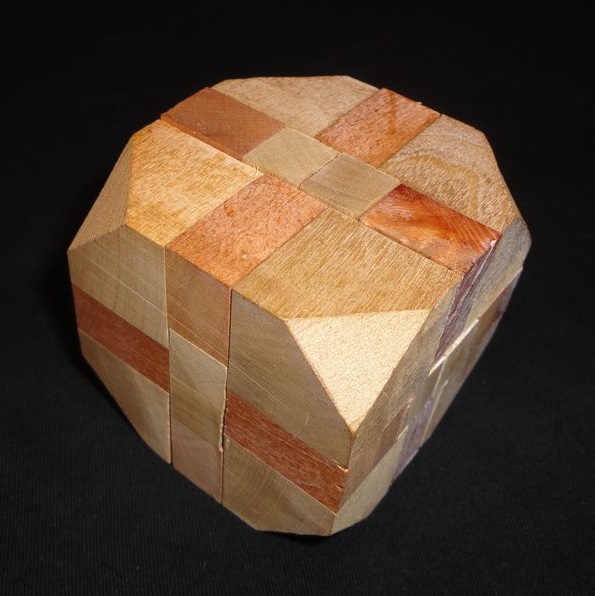
Truncated Cubes - The Cornered Cube from Wallingford Toy Works is a very large version of the usual kumiki cube, with a beveled corner. Also shown are Hidden Passage from SiamMandalay, and a generic Kumiki truncated cube. |
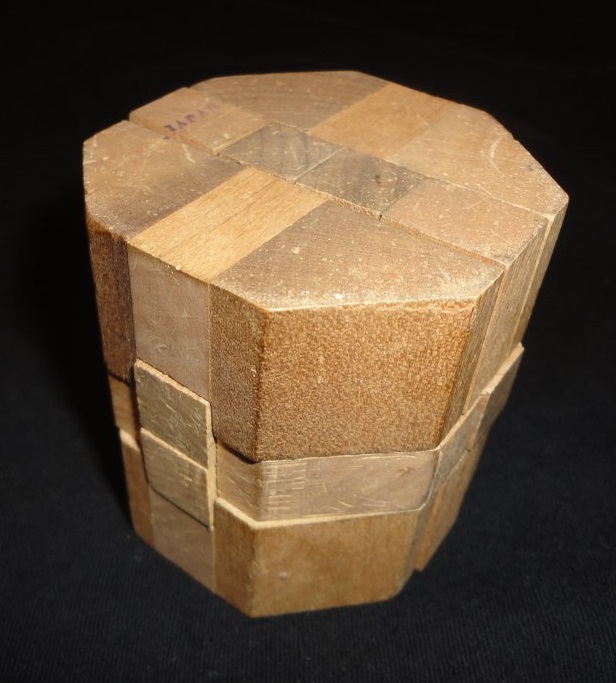 An Octagonal Prism |
|
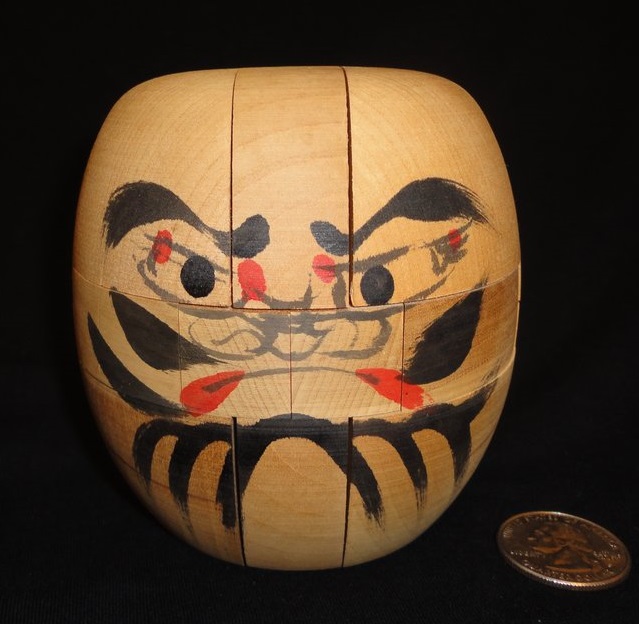
The Daruma Man is painted on an oval form of the barrel. |
||
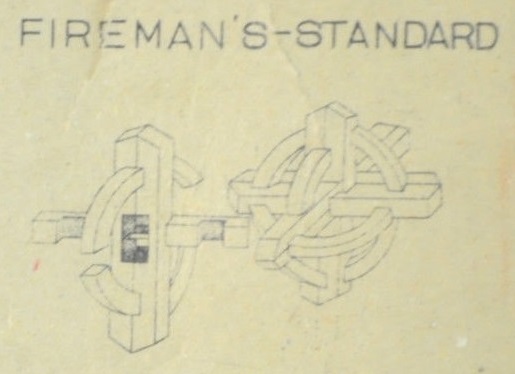 The Kumiki Ball Burr is an elaboration of the traditional six-piece burr,
where one of each pair of opposing bars has an extra notch near each tip, to accomodate curved outlier pieces. These curved pieces give the Ball burr its interesting shape, but do not in general add to the complexity of the assembly other than posing a dexterity challenge.
Since a six-piece burr resides inside, not only can the Ball burrs differ in appearance due to varied outlier shapes but they can also employ different burrs at their cores.
The Ball Burr appears in Joseph Bland's 1890 Mr. Bland's Illustrated Catalogue of Extraordinary and Superior Conjuring Tricks, etc. where it is called the Mystery.
It also appears in the 1929 Johnson Smith Catalog where it is unglamorously called No. 3095.
The Kumiki Ball Burr is an elaboration of the traditional six-piece burr,
where one of each pair of opposing bars has an extra notch near each tip, to accomodate curved outlier pieces. These curved pieces give the Ball burr its interesting shape, but do not in general add to the complexity of the assembly other than posing a dexterity challenge.
Since a six-piece burr resides inside, not only can the Ball burrs differ in appearance due to varied outlier shapes but they can also employ different burrs at their cores.
The Ball Burr appears in Joseph Bland's 1890 Mr. Bland's Illustrated Catalogue of Extraordinary and Superior Conjuring Tricks, etc. where it is called the Mystery.
It also appears in the 1929 Johnson Smith Catalog where it is unglamorously called No. 3095.
I also found an image of an original instruction sheet on which it is called the Fireman's Standard.
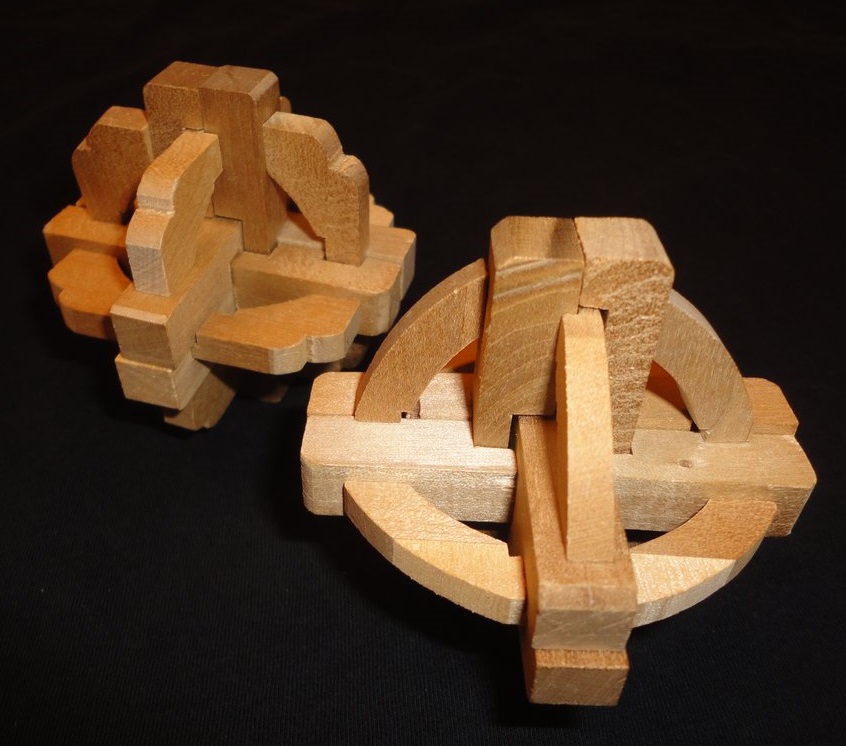
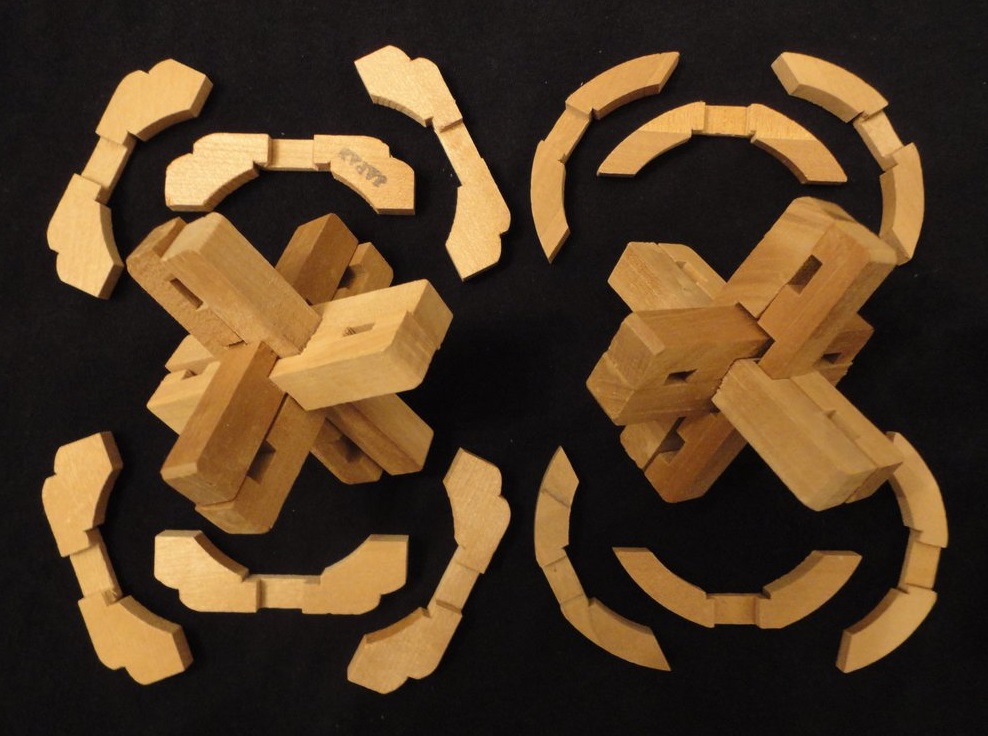
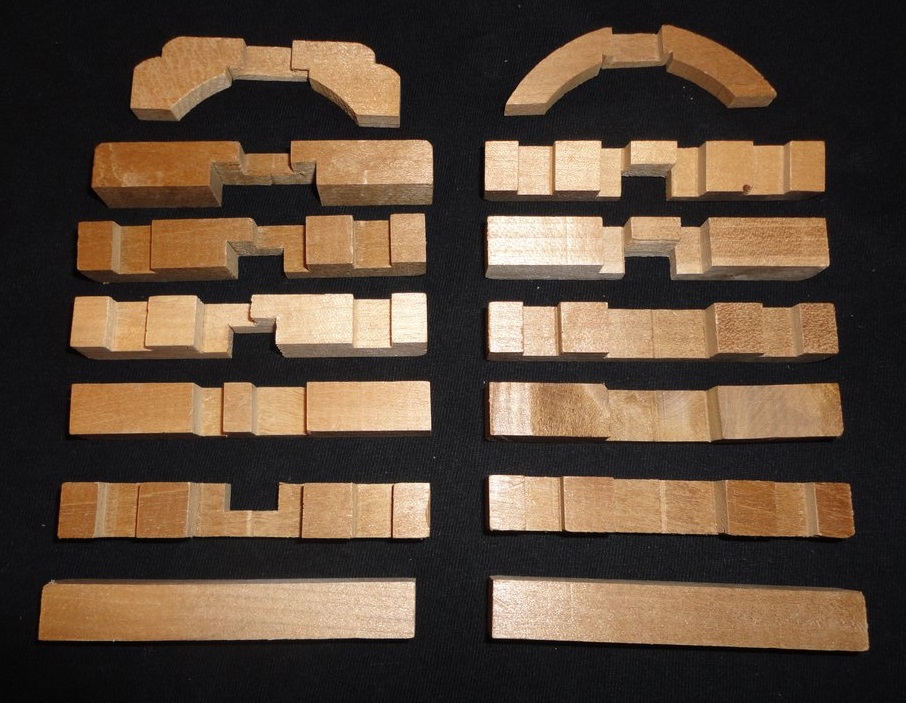
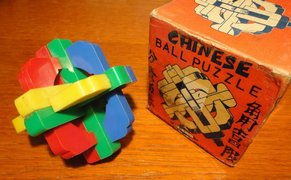
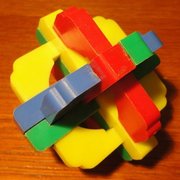
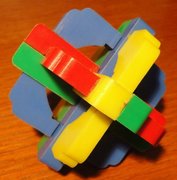
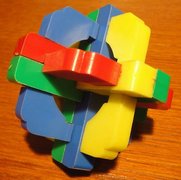
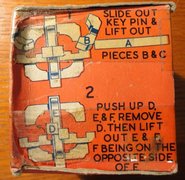
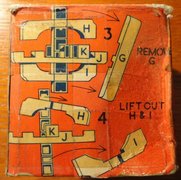
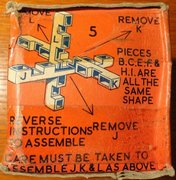
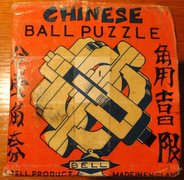
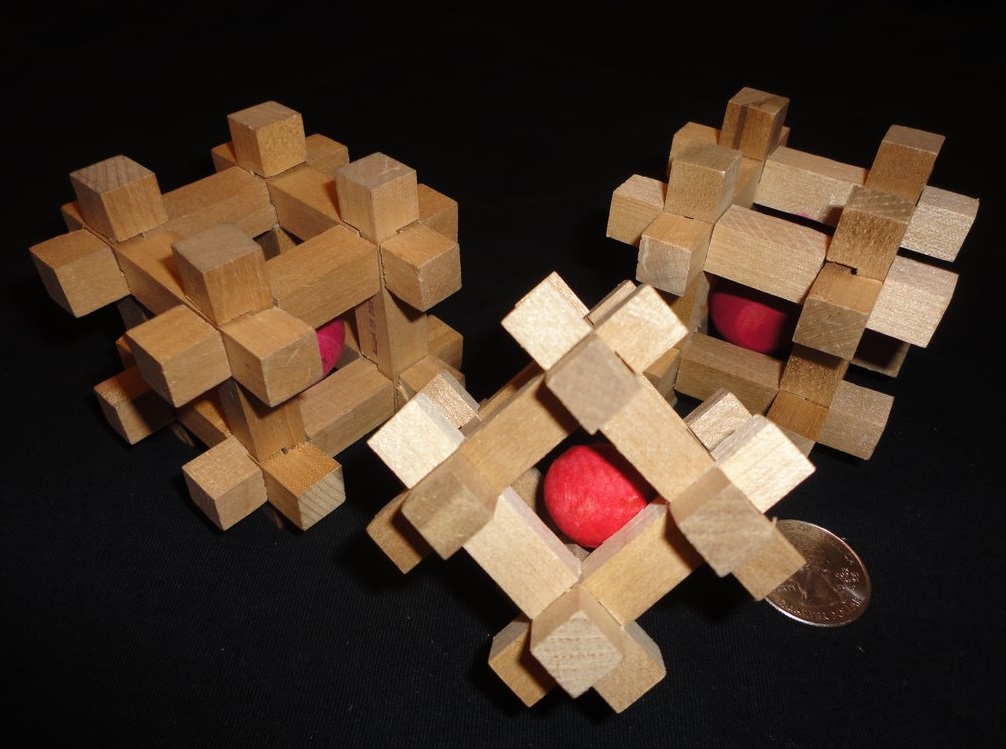
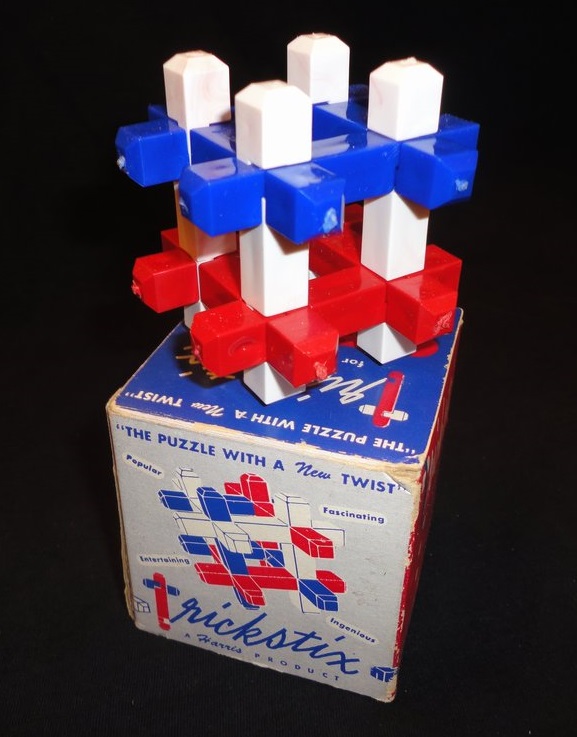
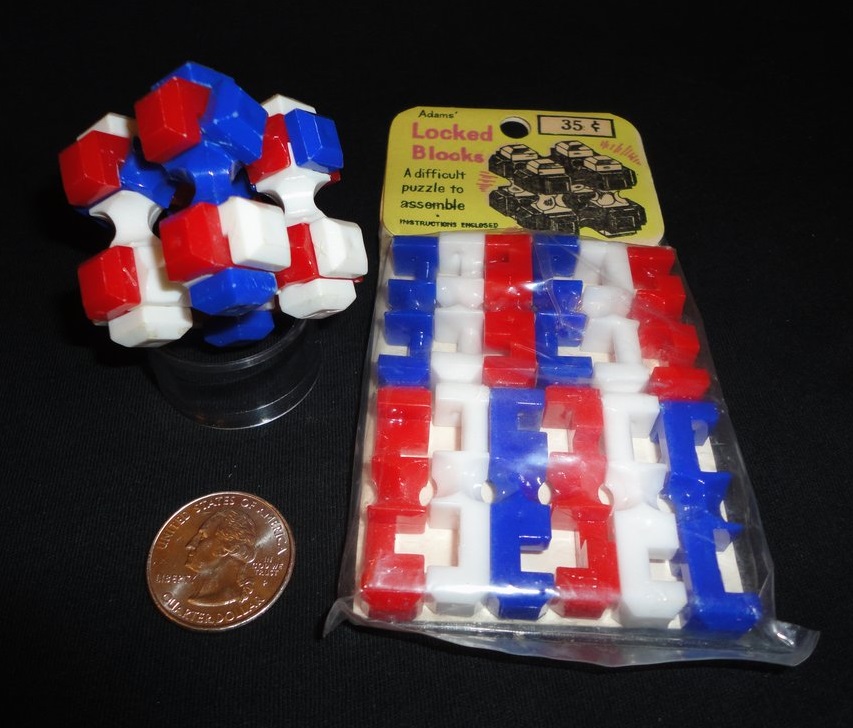
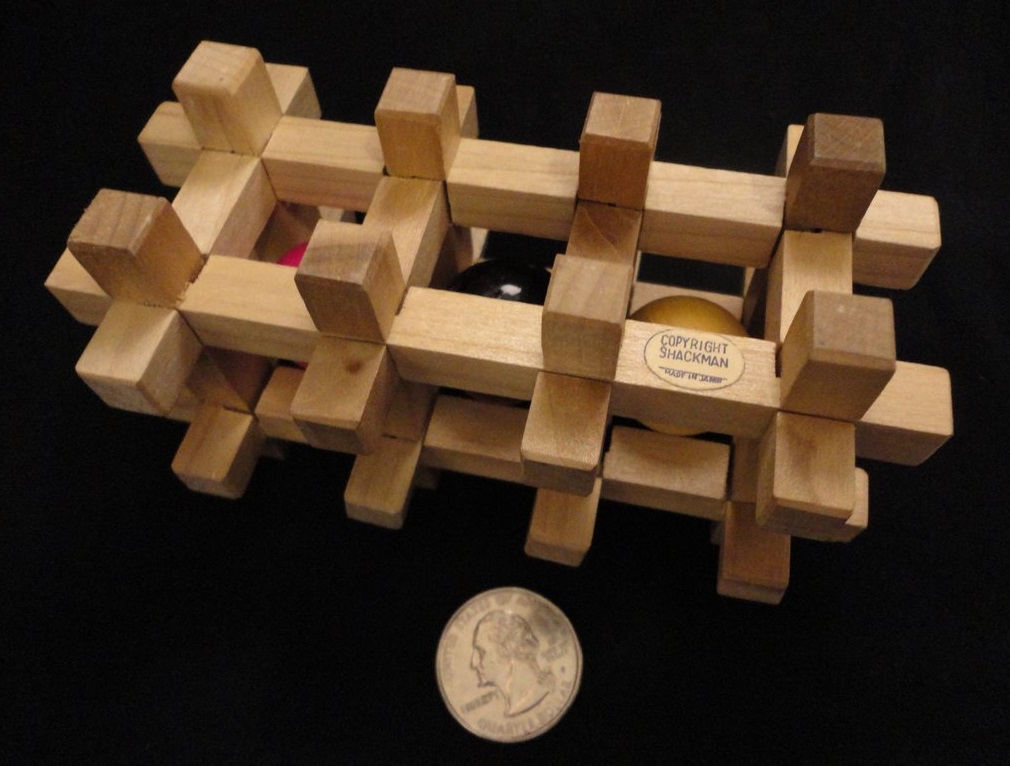
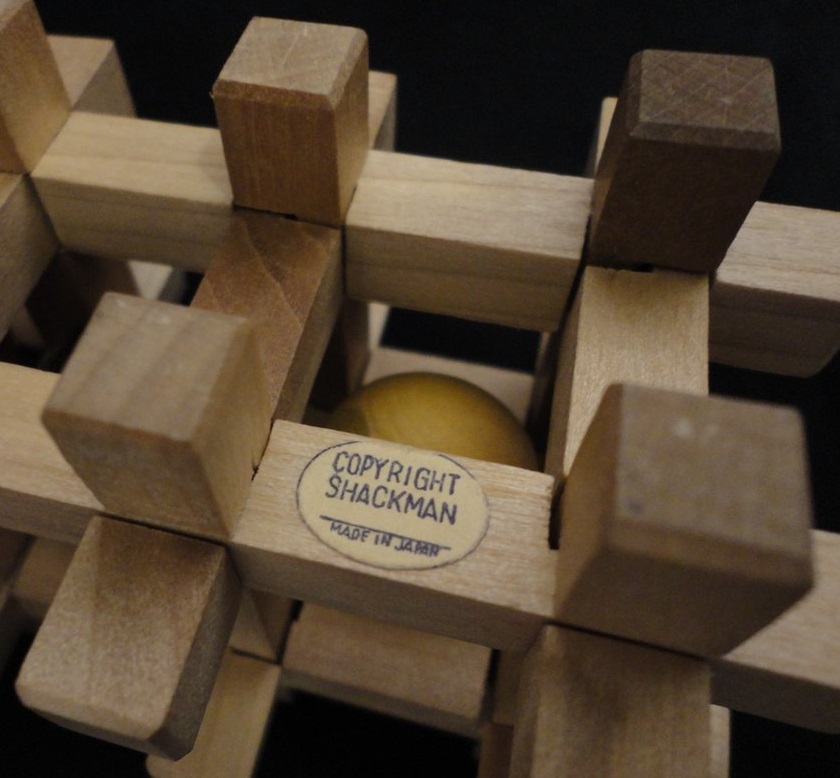
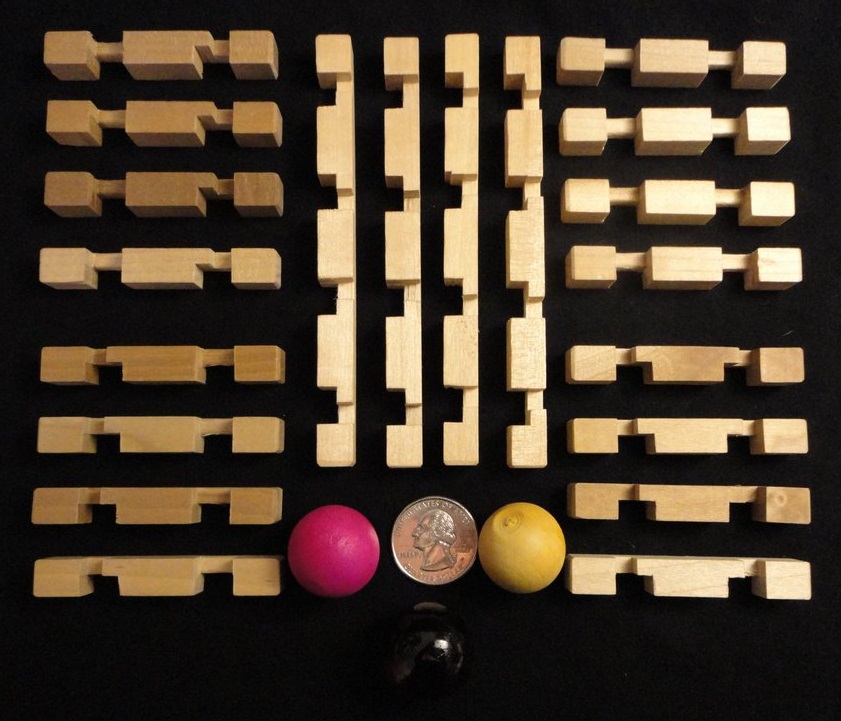
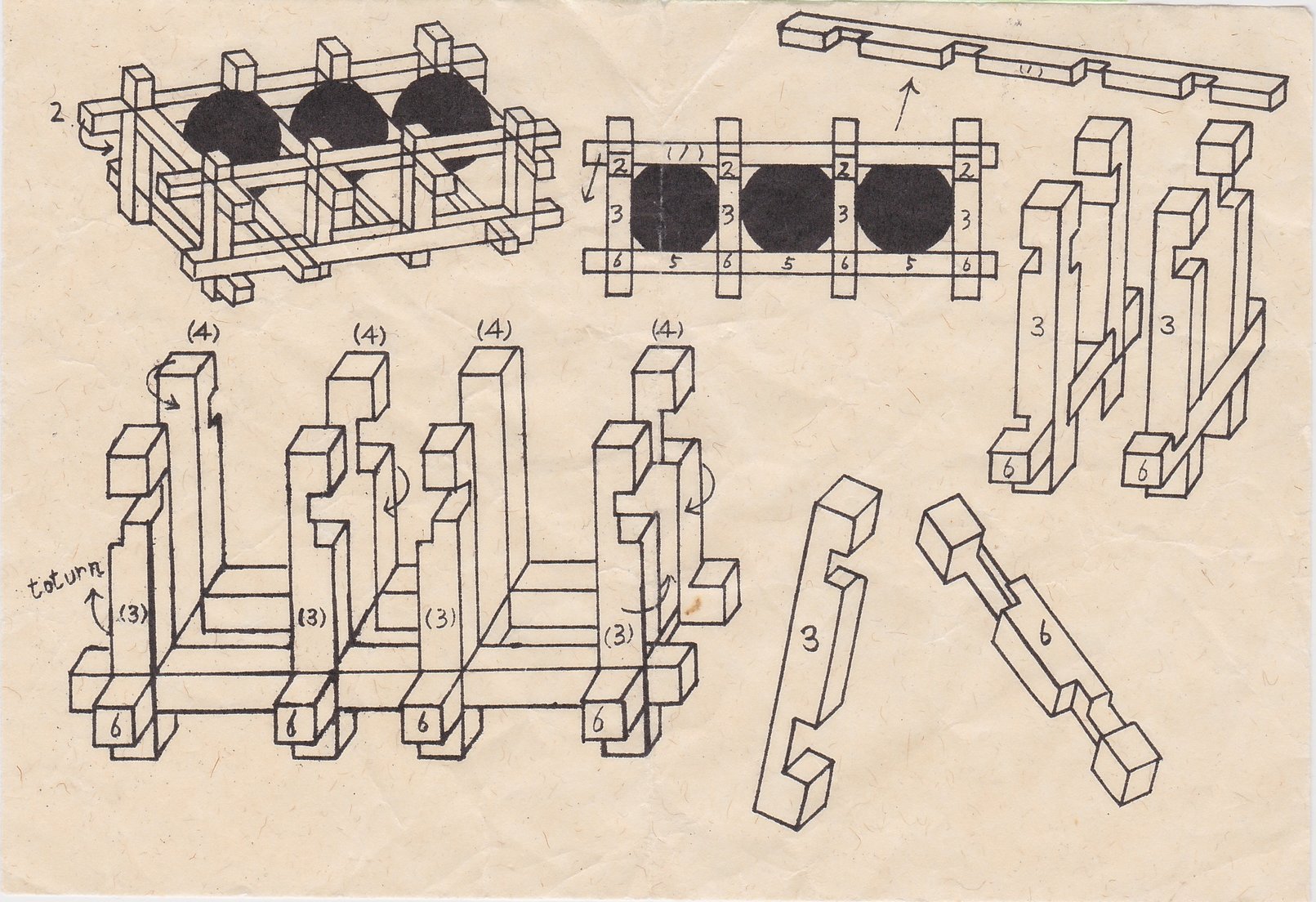
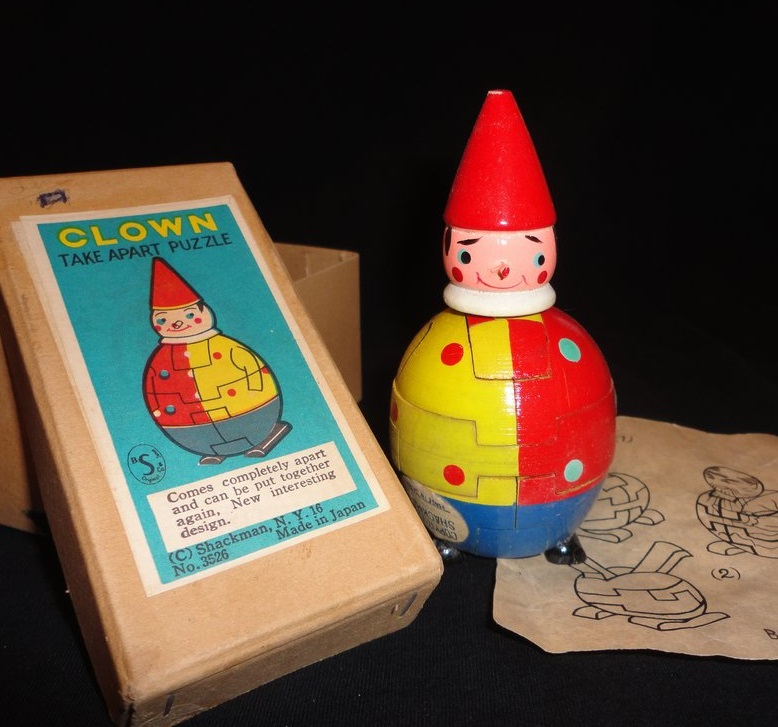
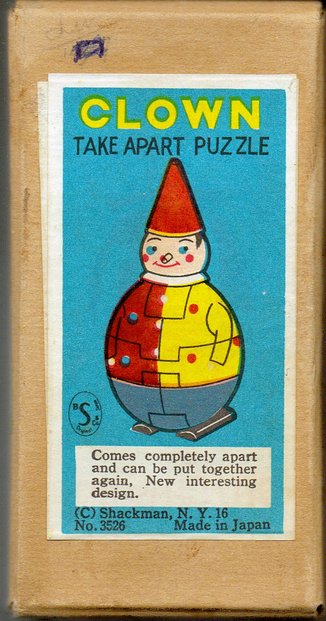
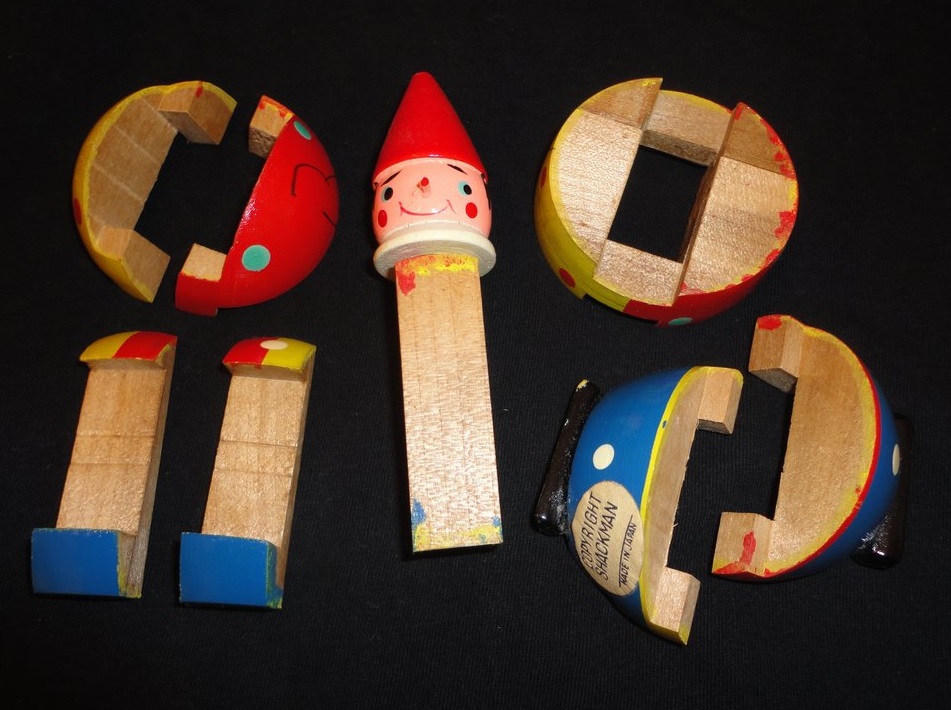
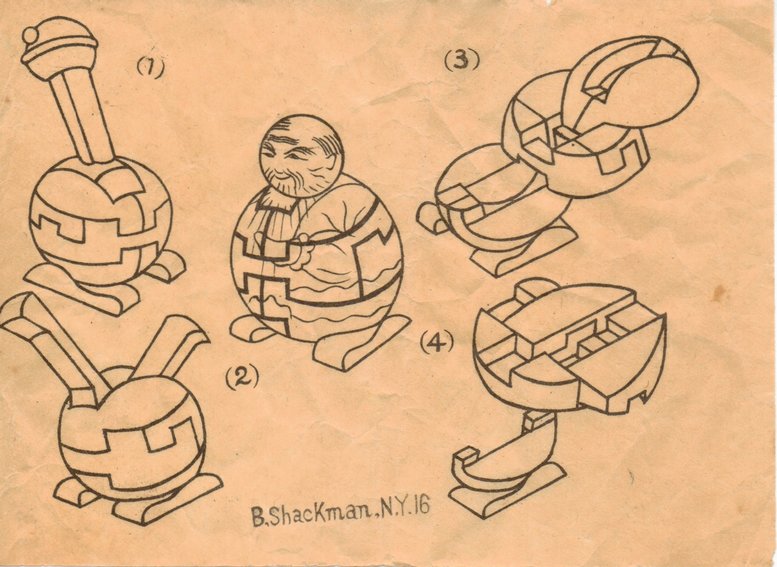
Shackman Clown - part of a fairly rare set of figures. Discussed in Slocum and Botermans' "The Book of Ingenious and Diabolical Puzzles" on page 86. |
||
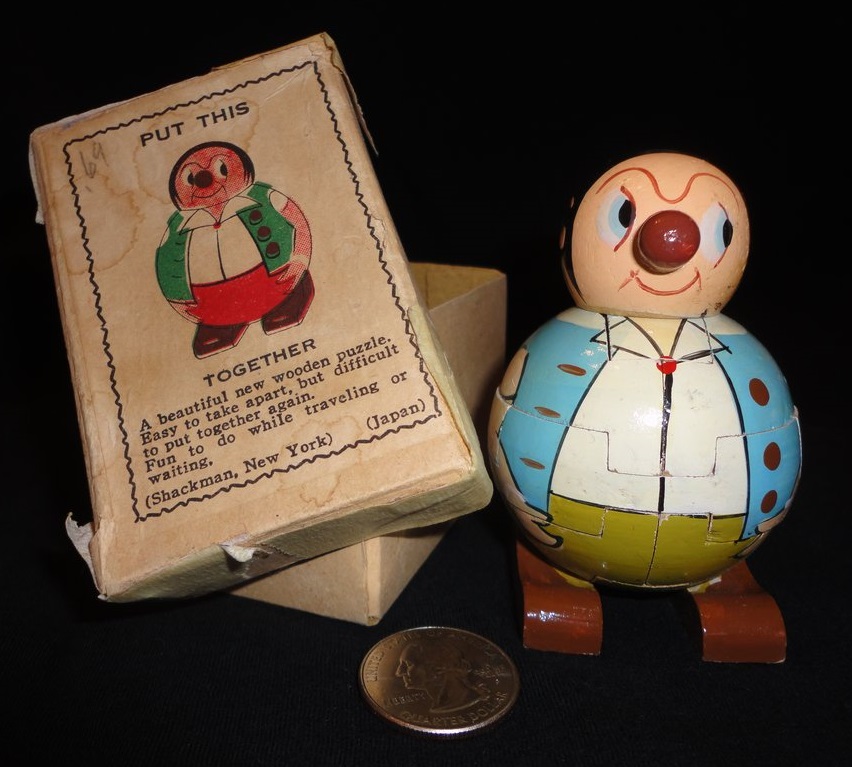
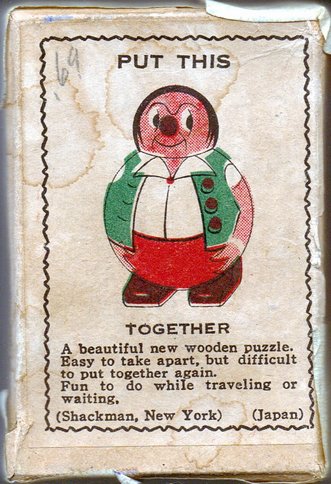
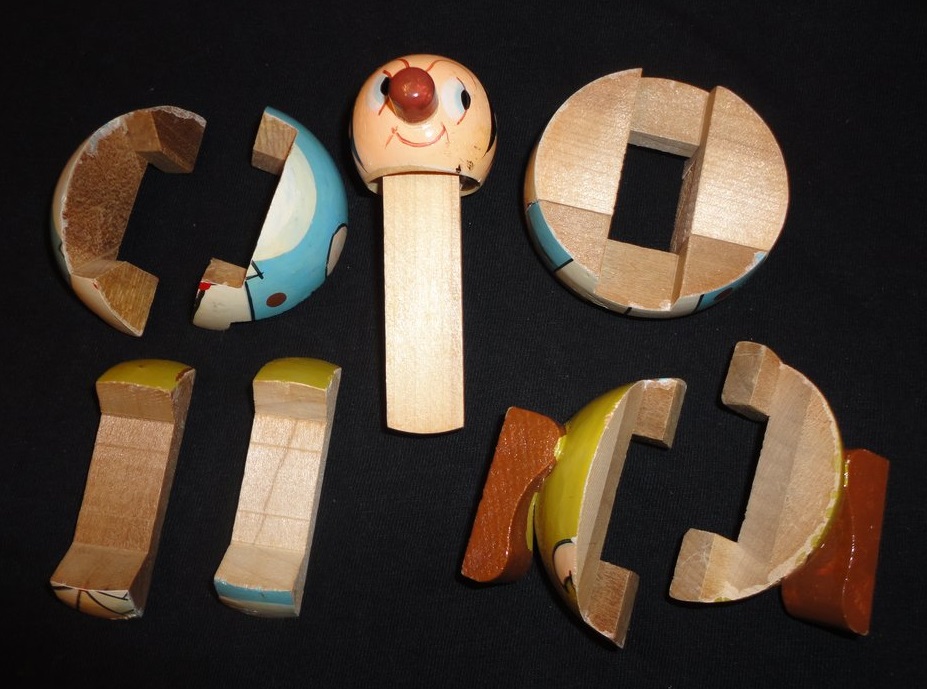
Shackman Man in a Vest - part of a fairly rare set of figures. Discussed in Slocum and Botermans' "The Book of Ingenious and Diabolical Puzzles" on page 86. |
||
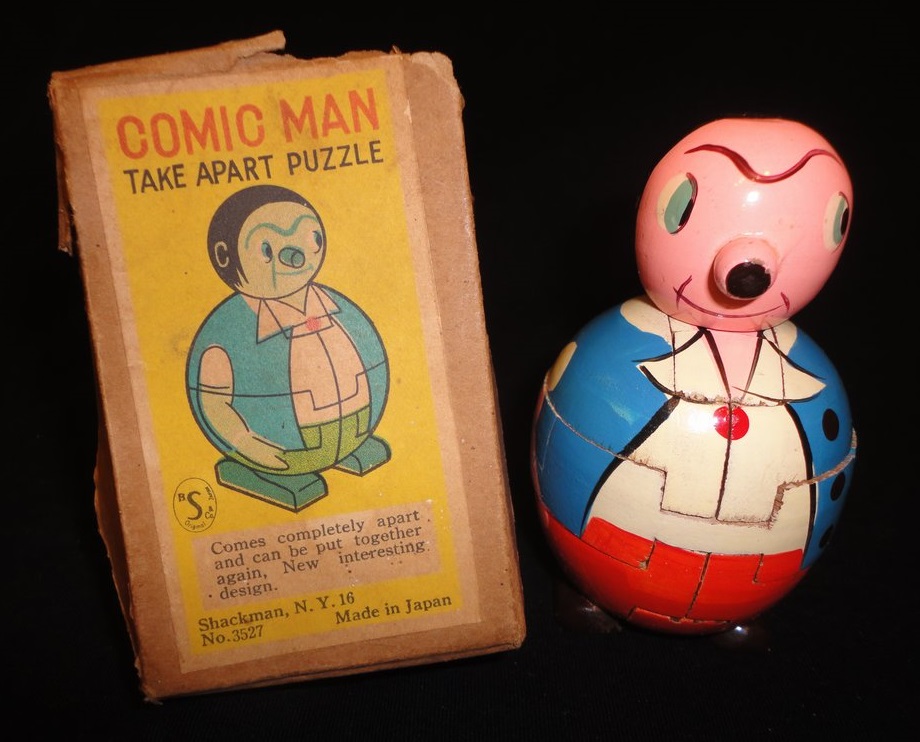


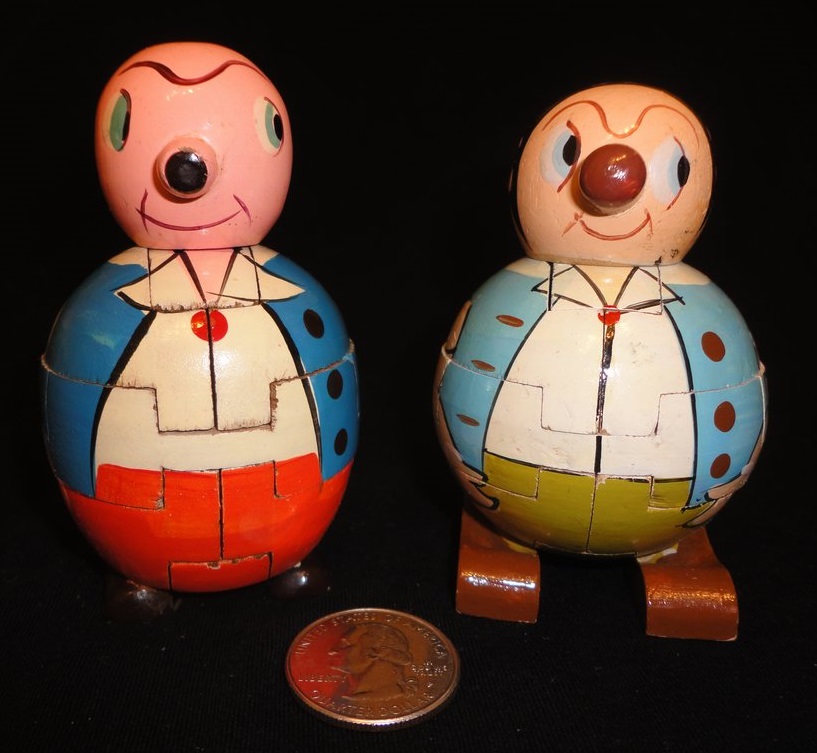
Vintage Comic Man Puzzle I was pleased to find a Shackman Comic Man puzzle in its original box. I have a similar puzzle, also in its box, but with a different label and appearance. A comparison photo is included. |
||
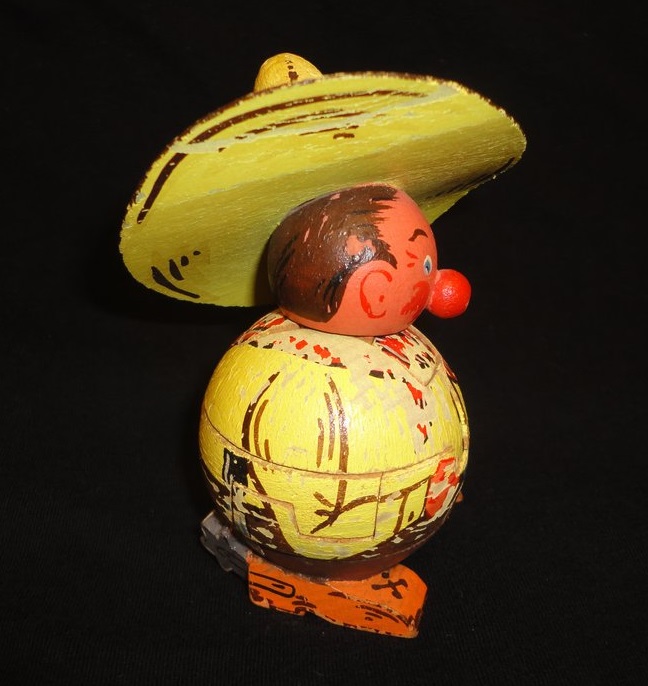
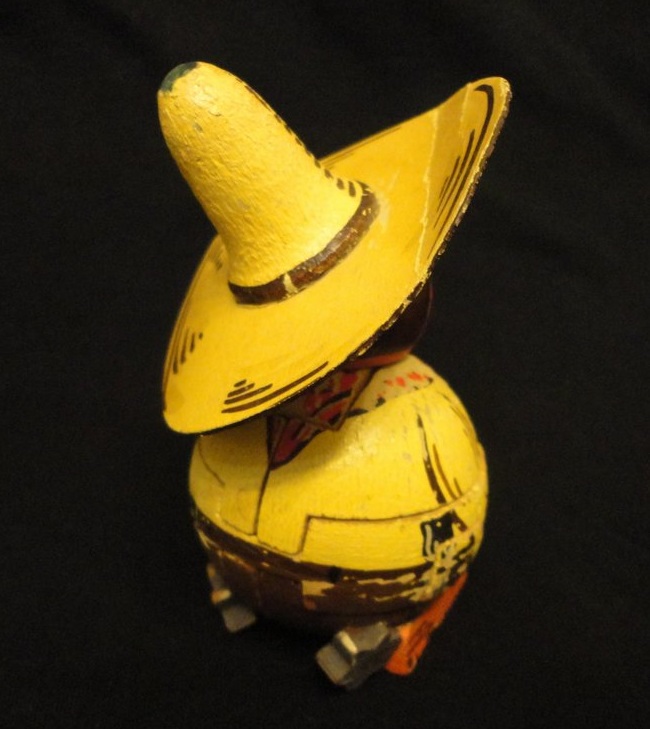
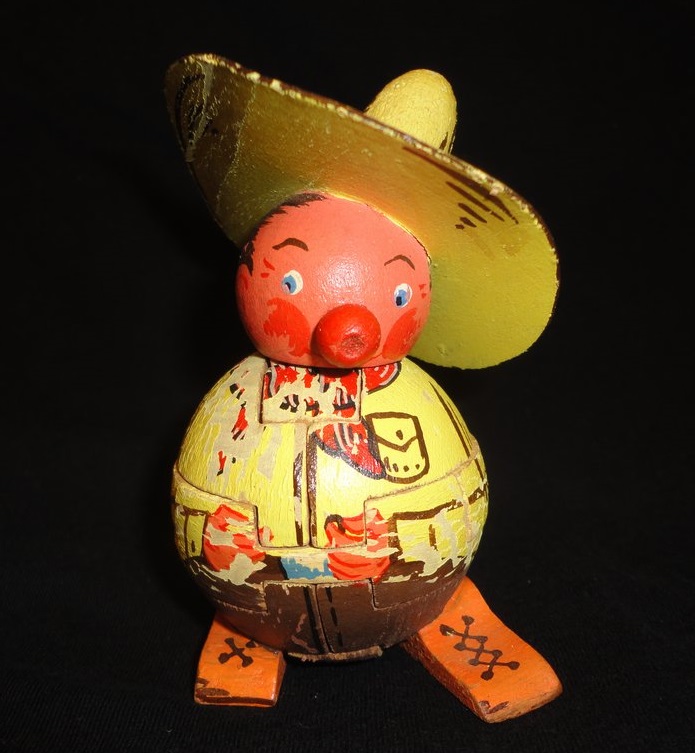
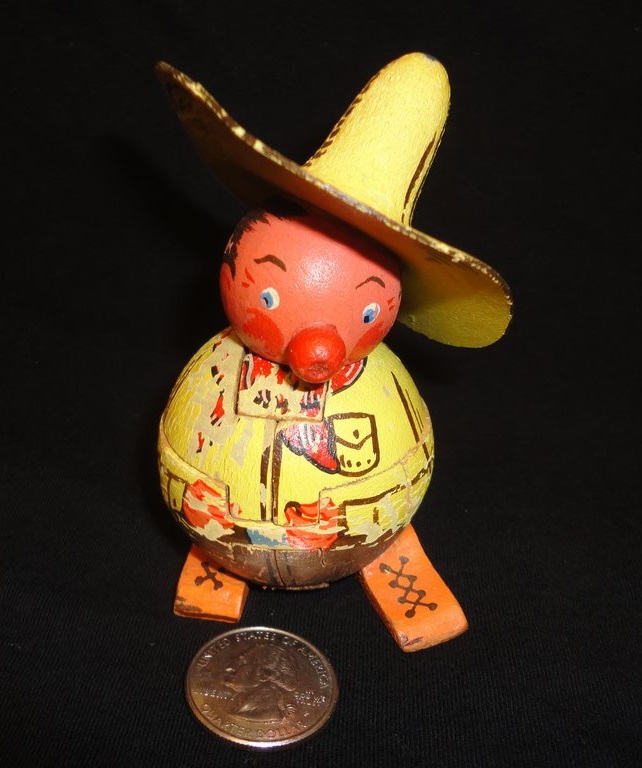
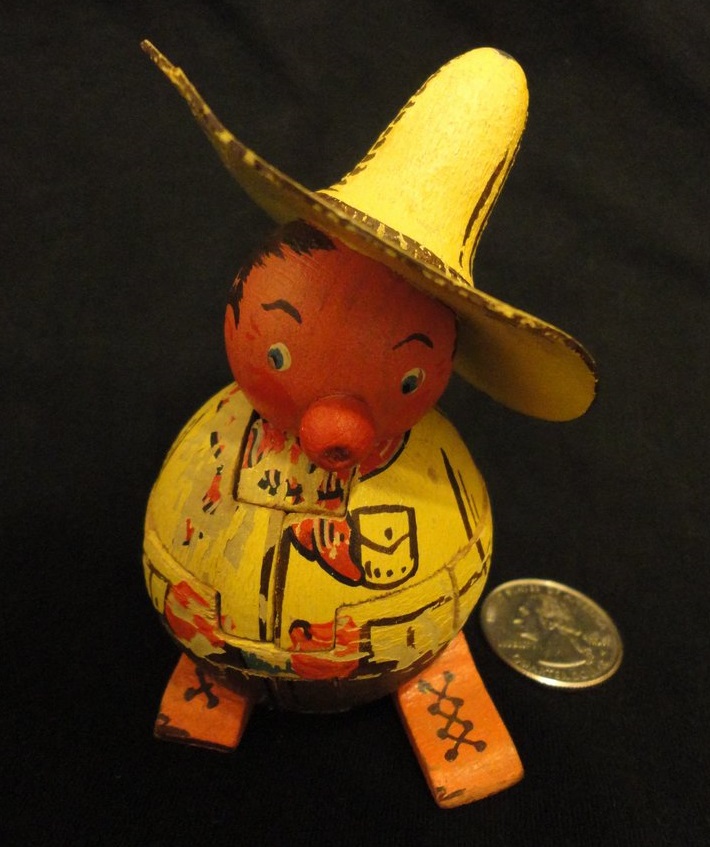
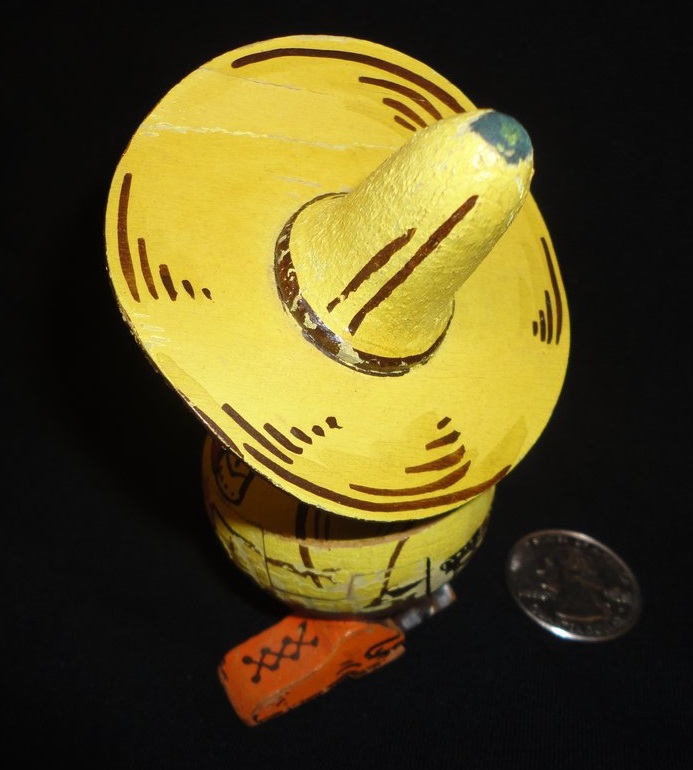
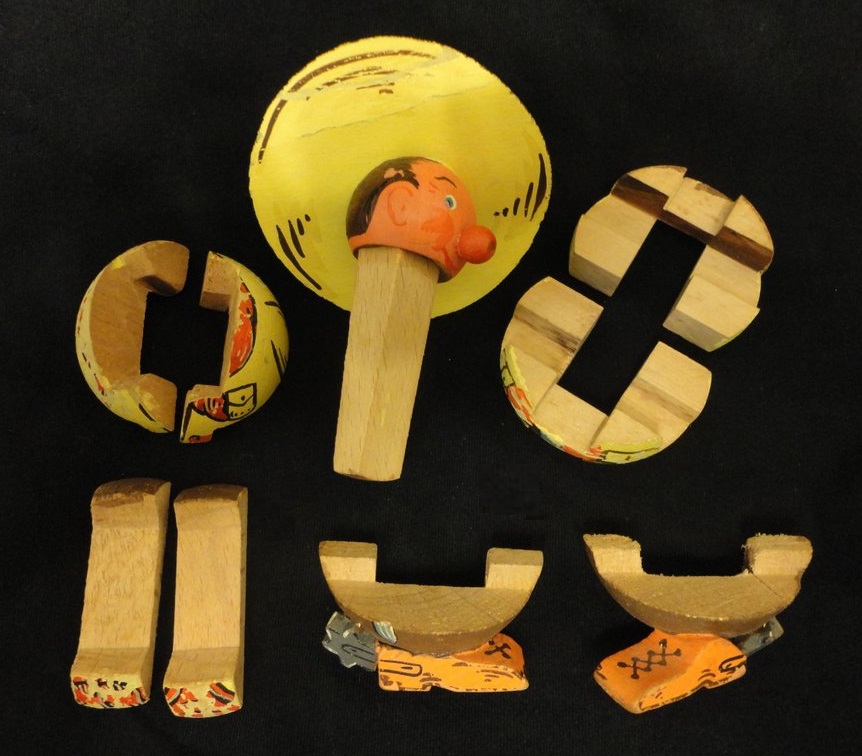
Sombrero Man - I am unaware of the provenance of this puzzle. It is similar to the puzzles in the Shackman Clown series, but Jerry Slocum has kindly checked his extensive collection of vintage Shackman catalogs and cannot find any reference to these. Frank Potts believes they were made in Germany - he has a similar puzzle - an accordion-playing sailor. Jerry Slocum believes these were made in Mexico. |
||
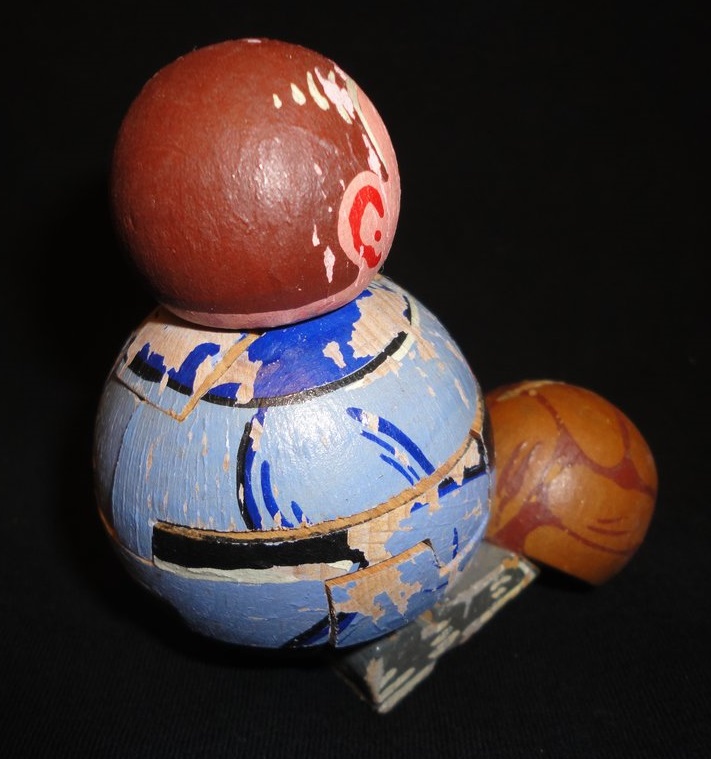
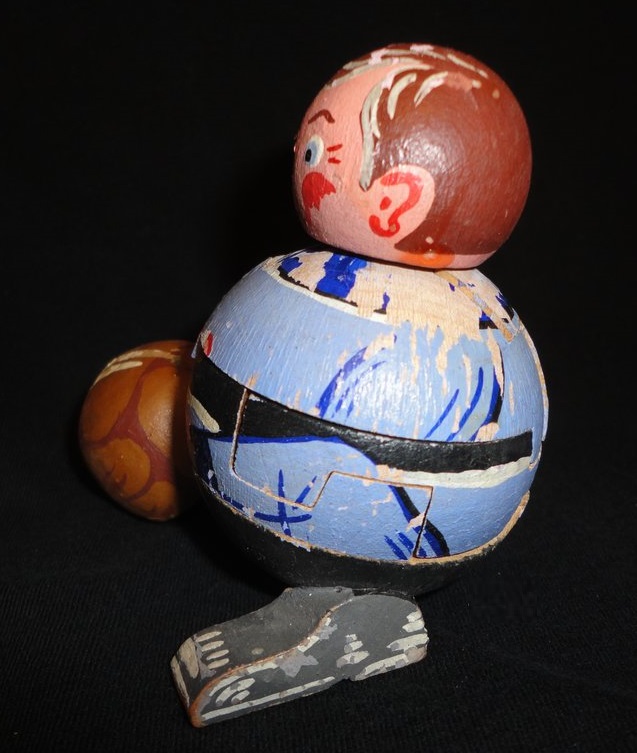
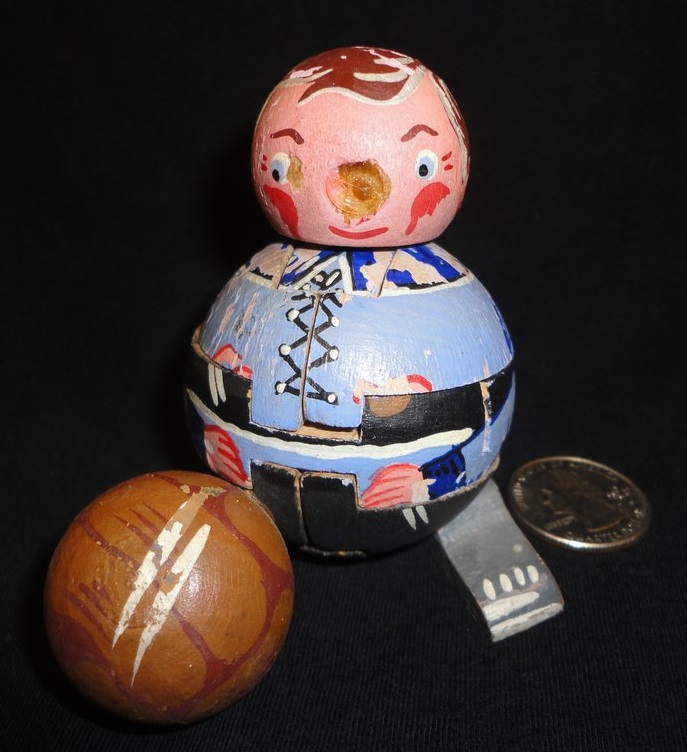


Soccer Man - I am unaware of the provenance of this puzzle. It is similar to the puzzles in the Shackman Clown series |
||
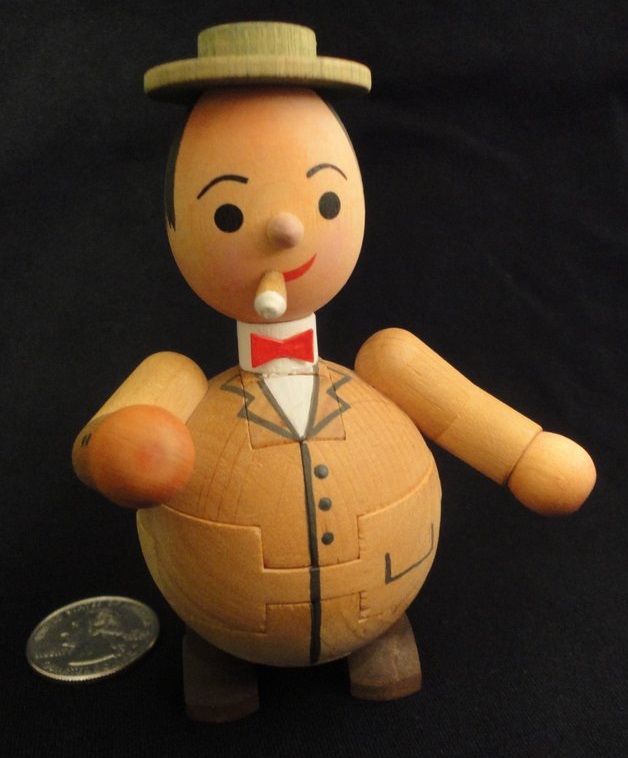
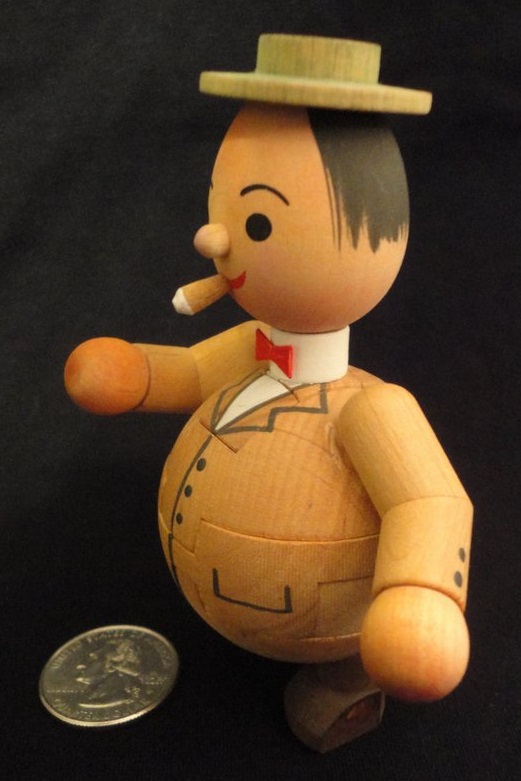
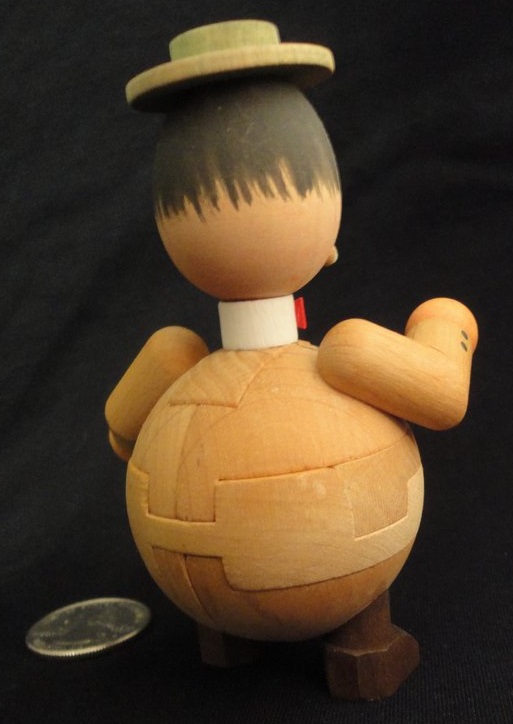
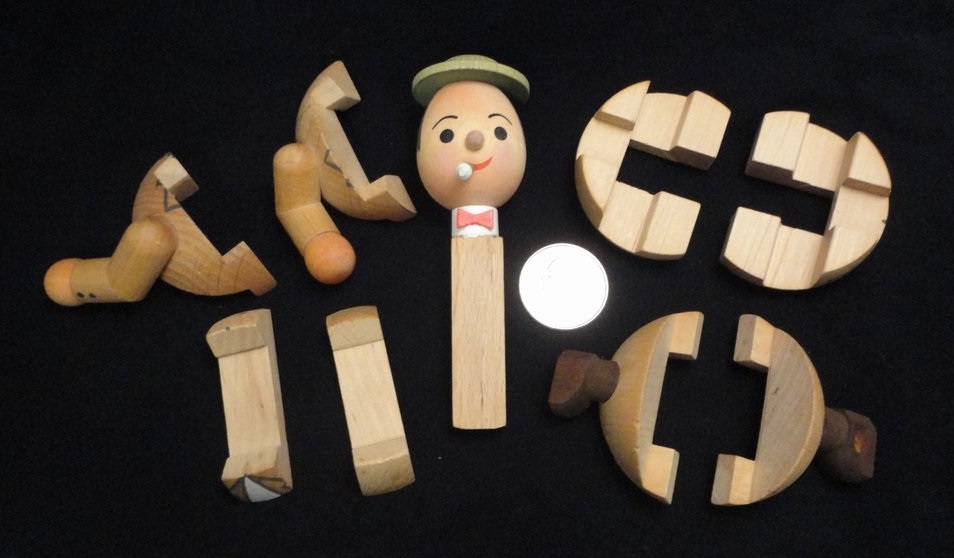
Kumiki Cigar-Smoking Man - may have been made in Germany You can see further examples of different figures at Frank Potts' website. |
||

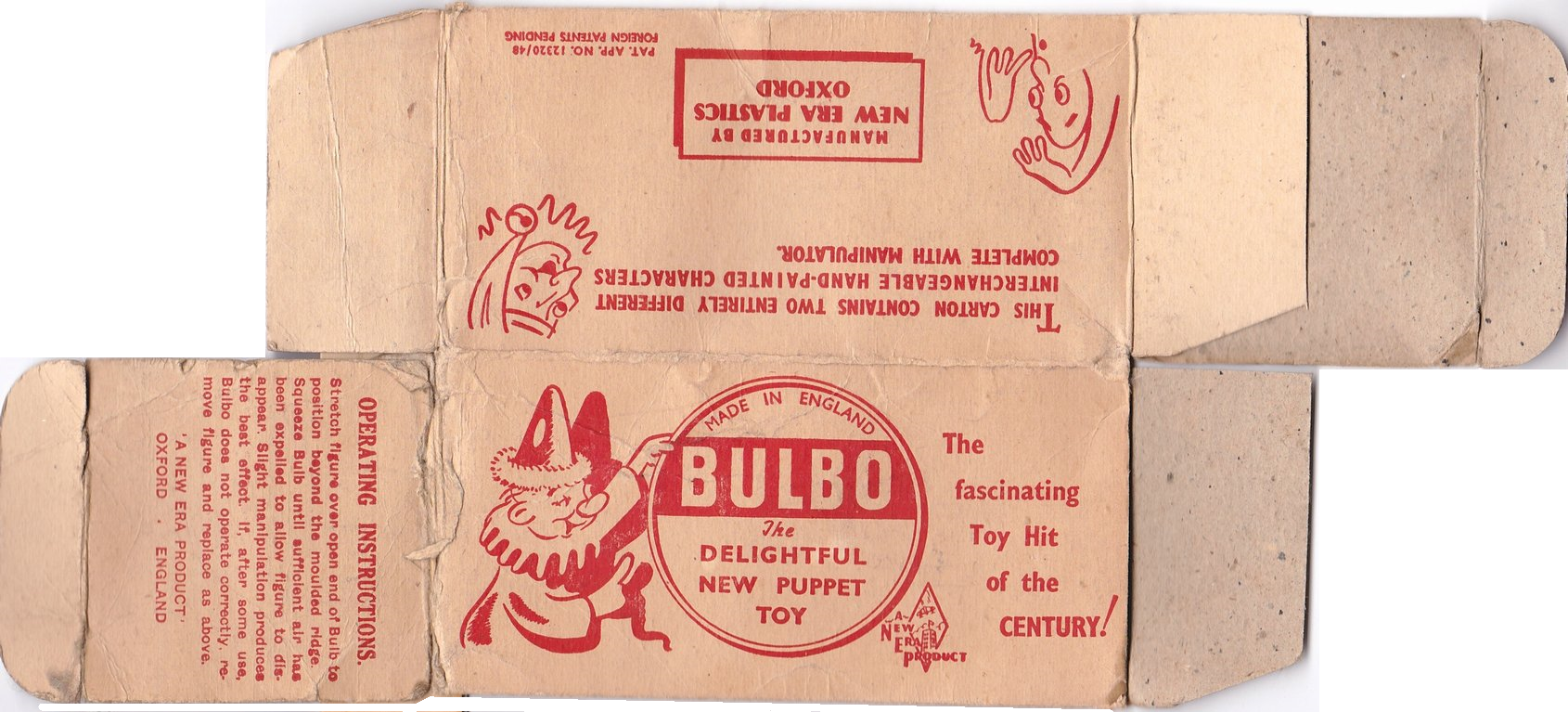
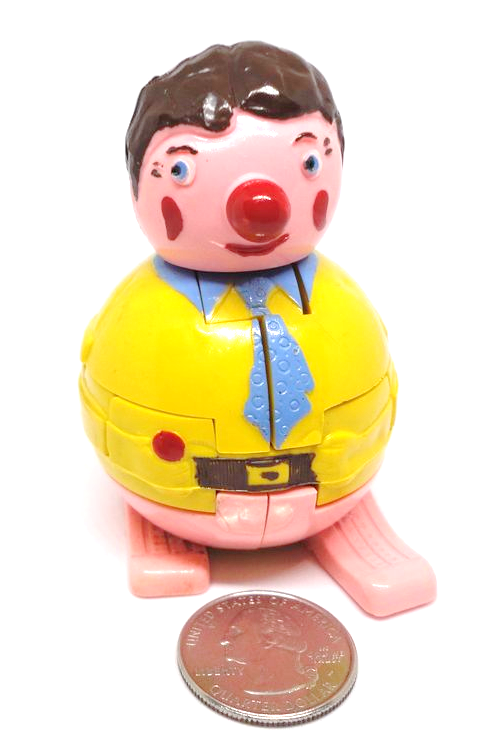
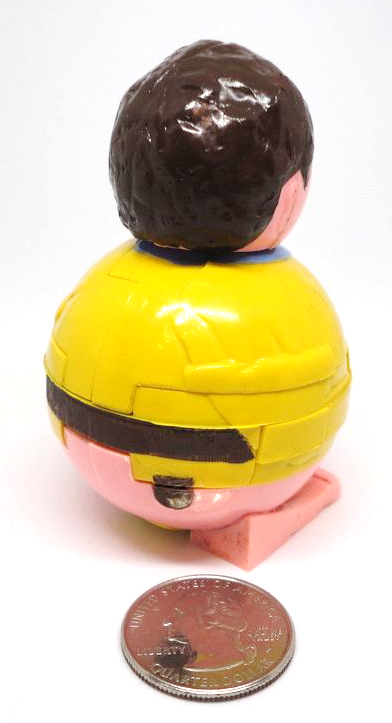
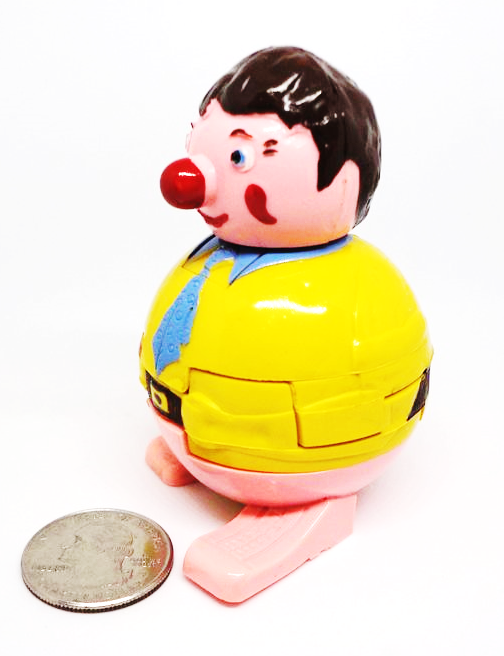
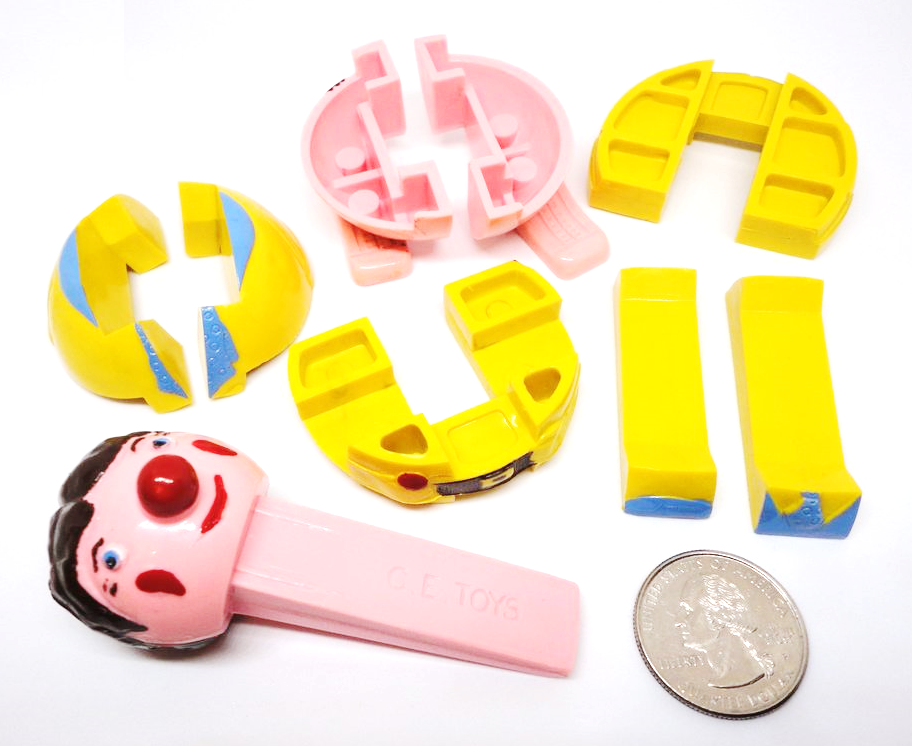
A vintage plastic puzzle figure, made in England, called Bulbo, with its original box. Similar to the Shackman wooden figures. Fellow Kumiki collector Frank Potts tells me the box is wrong for this puzzle - but this is how I received it from England. |
||
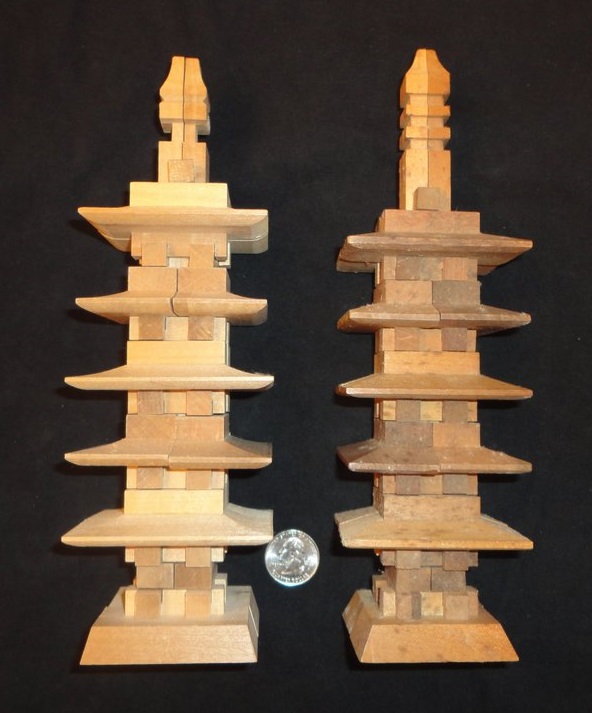
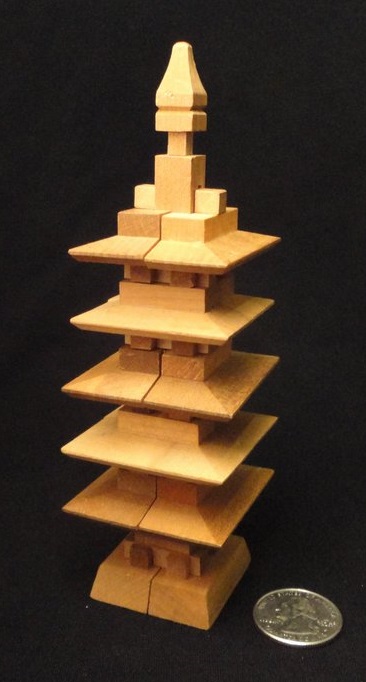
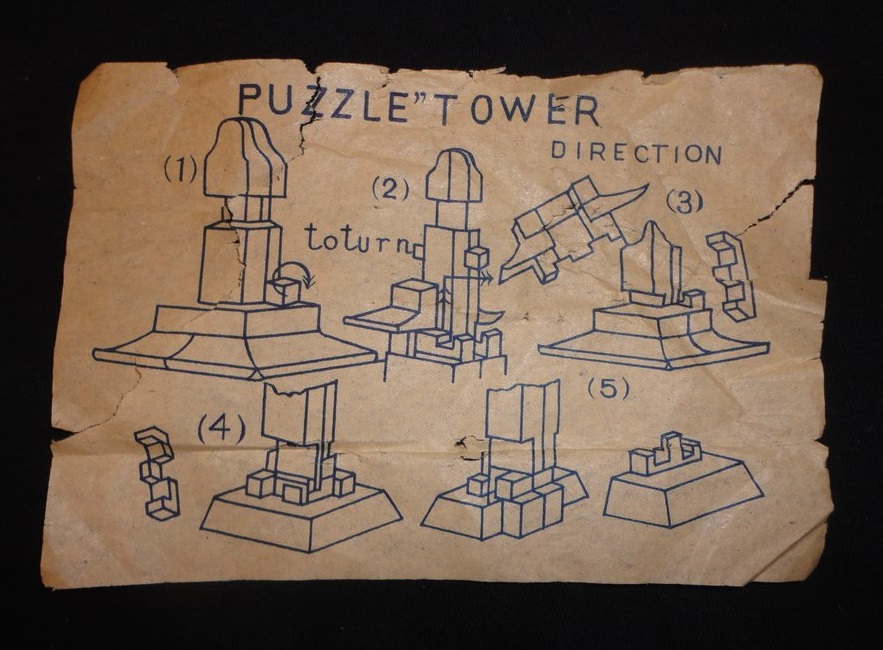
Kumiki Pagodas Two large and one small. With instruction sheet on very flimsy paper. |
||

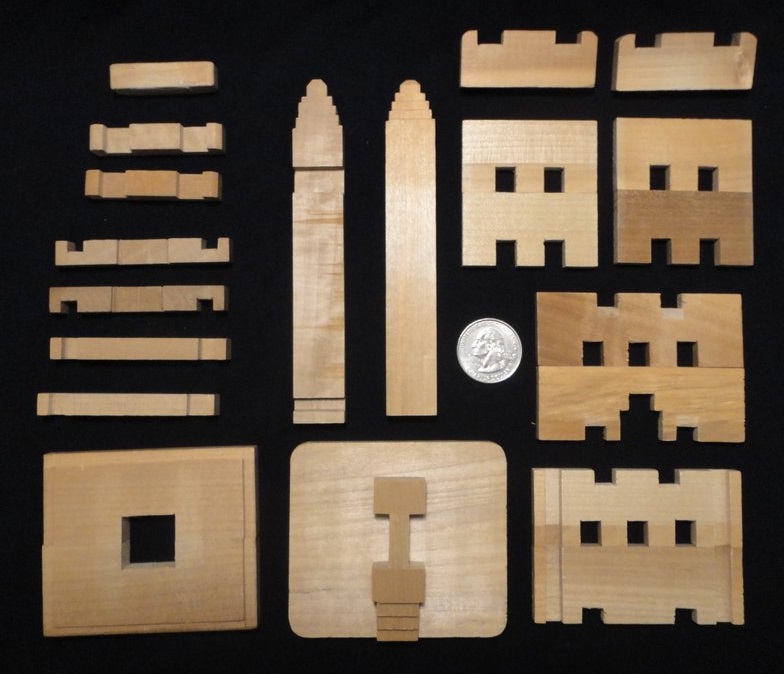
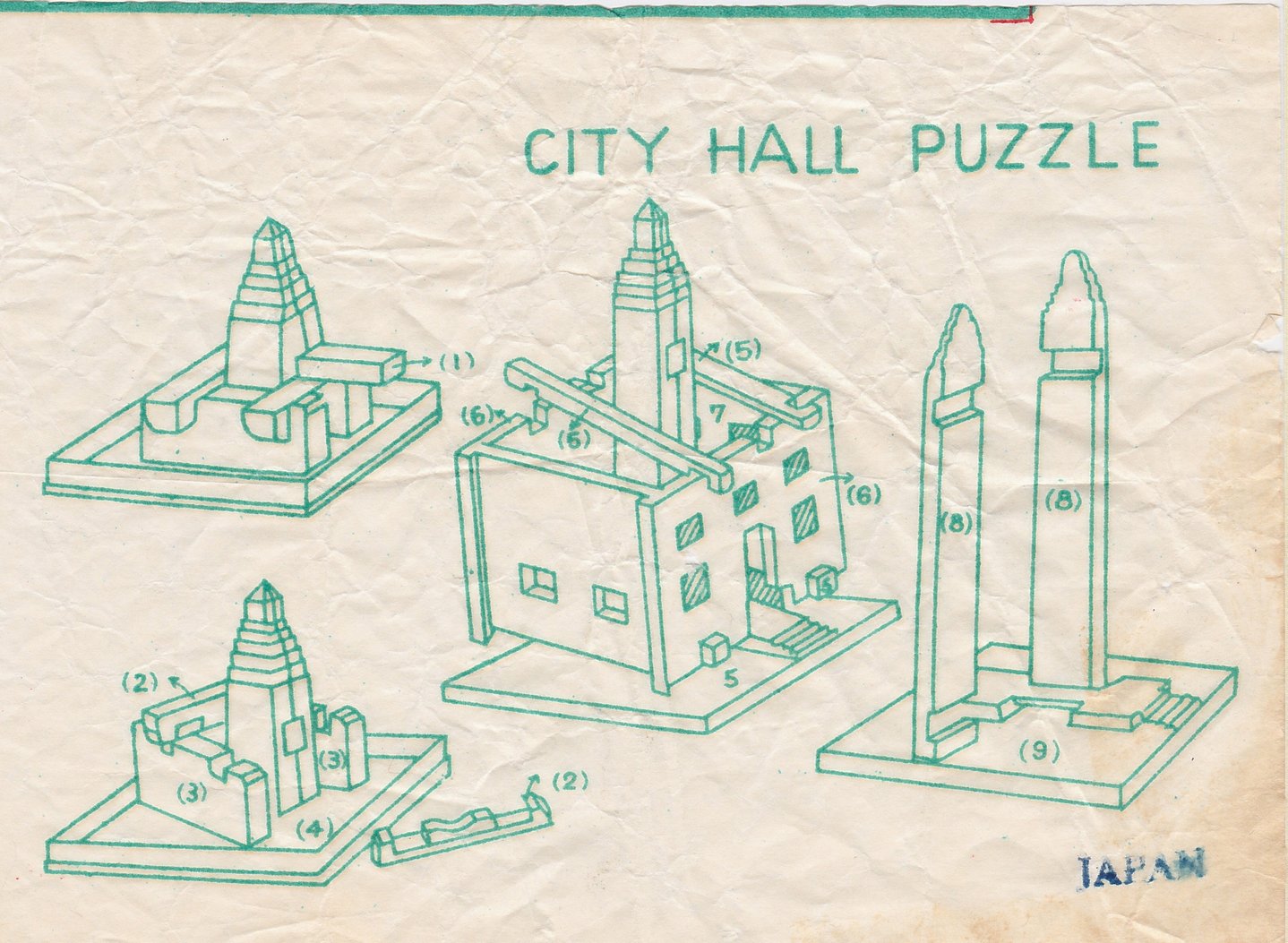
Kumiki City Hall, with instruction sheet. |
||
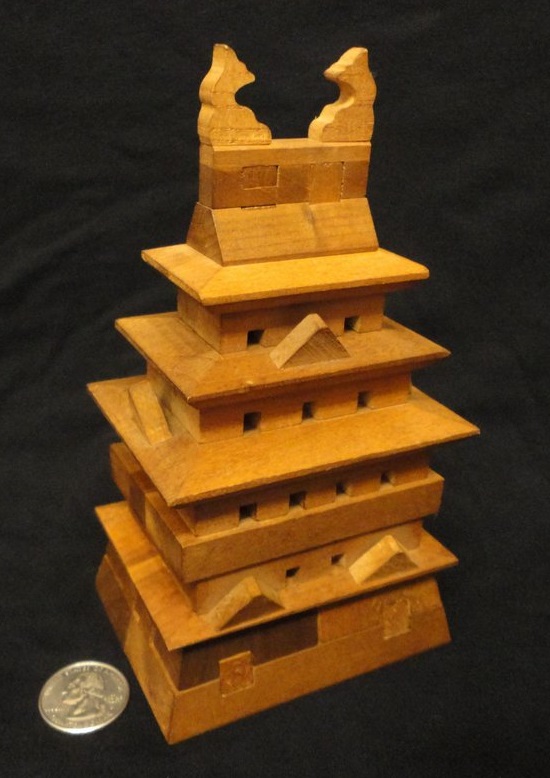
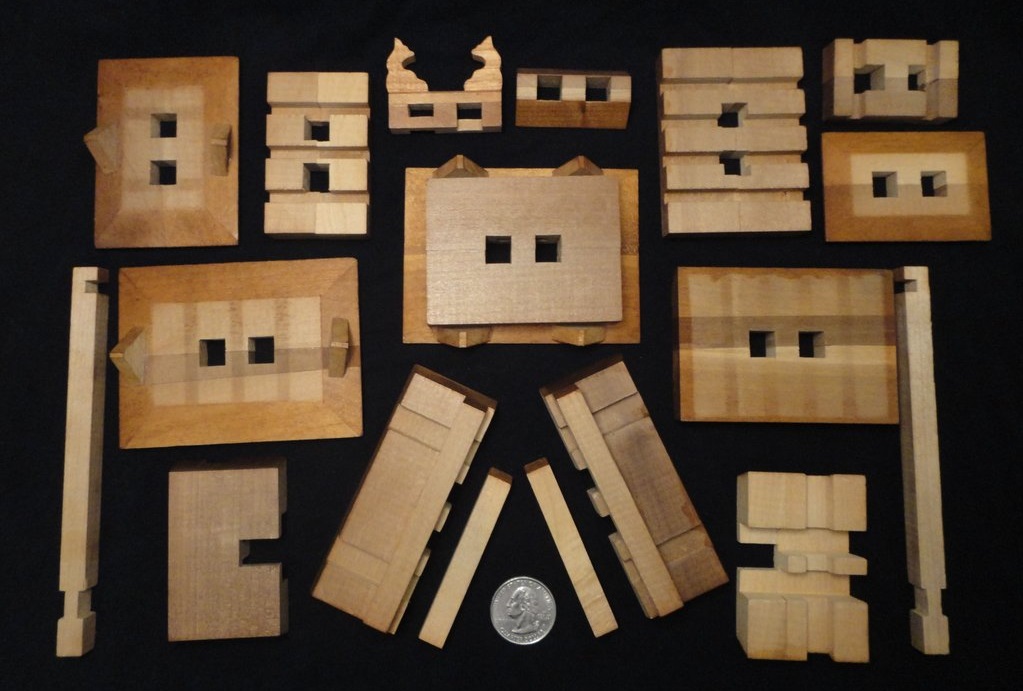
Kumiki Palace |
||
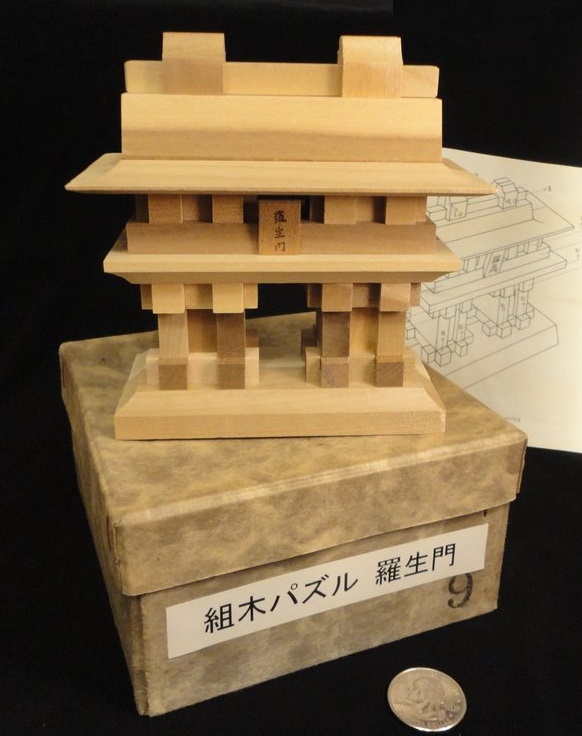
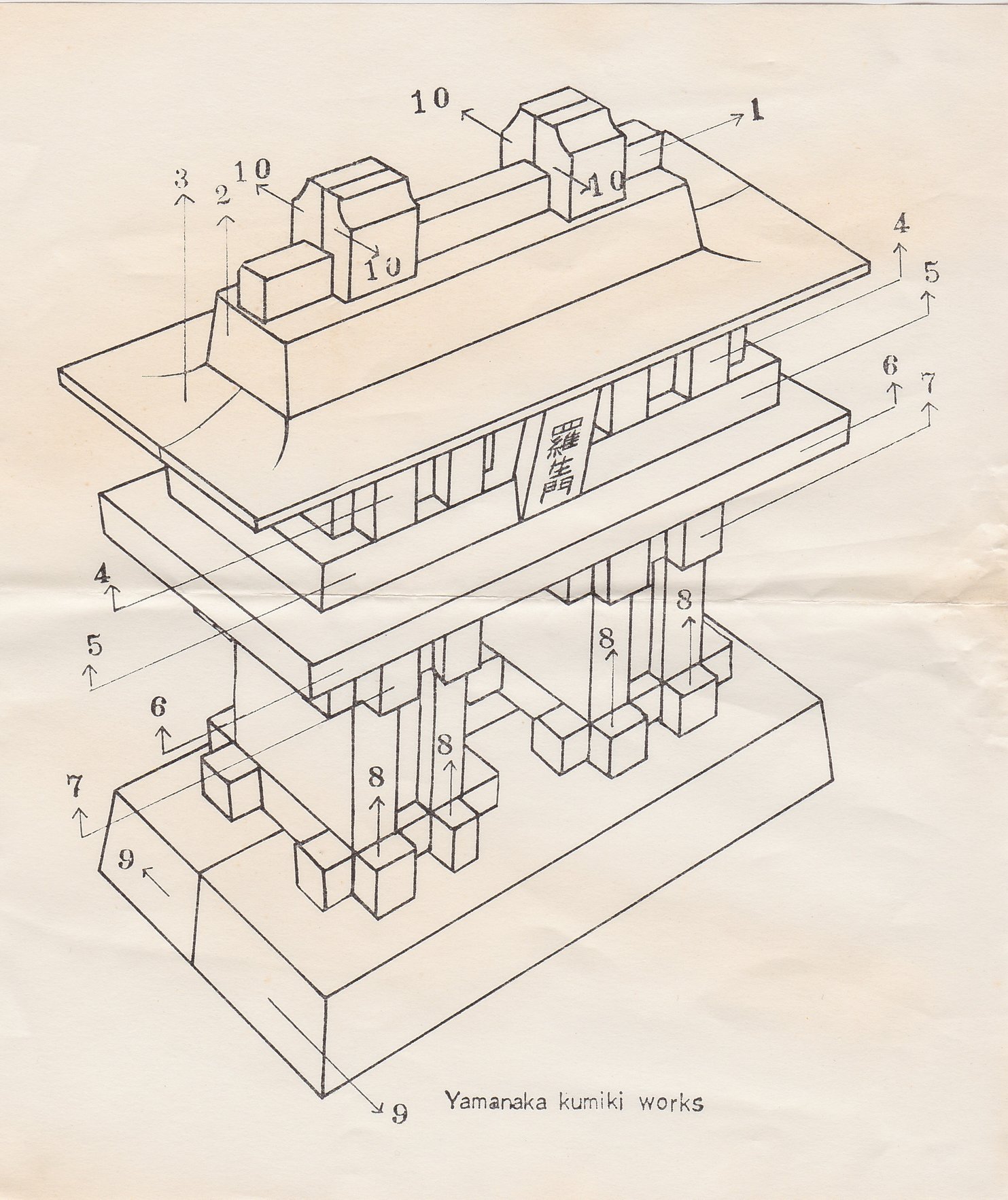
Kumiki Shrine - Yamanaka Kumiki Works Japan |
||
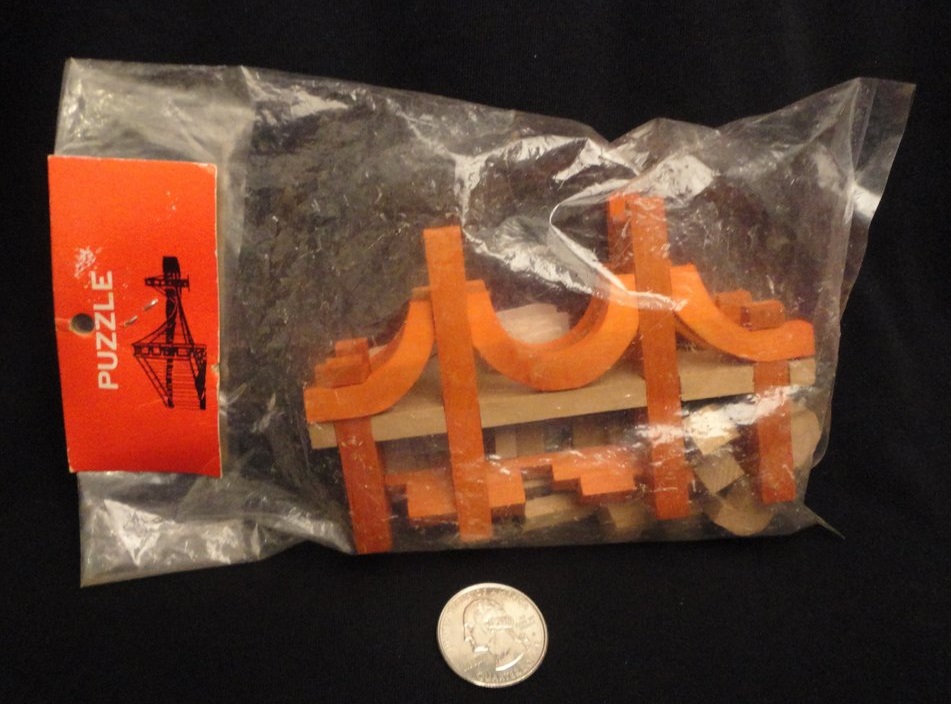
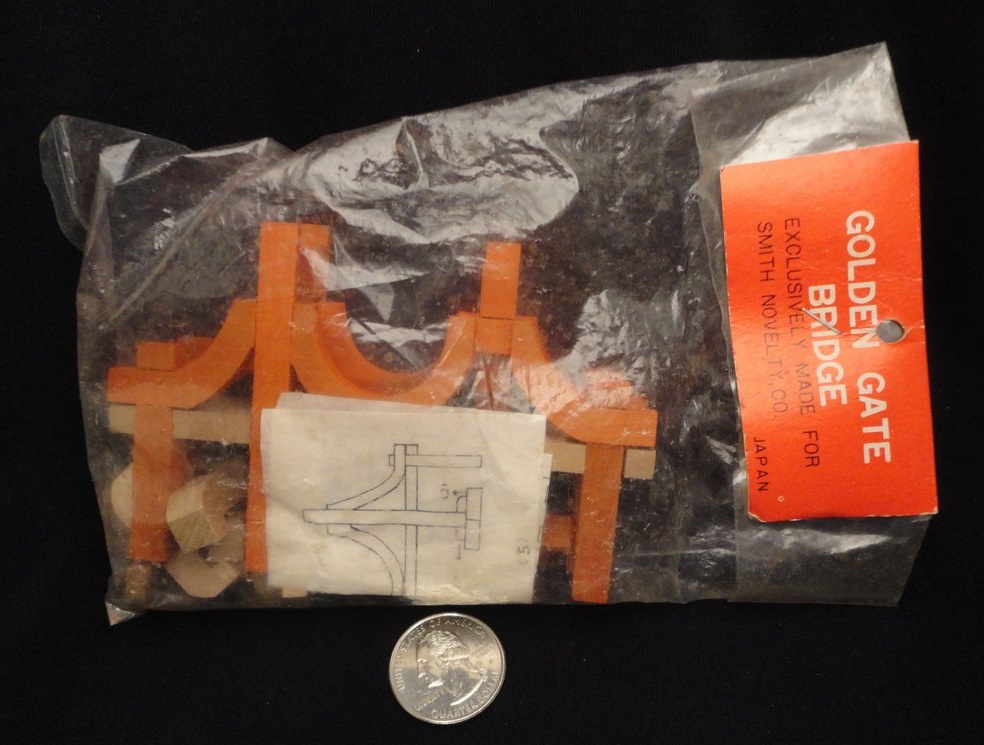
Kumiki Golden Gate Bridge - Smith Novelty Co. |
||
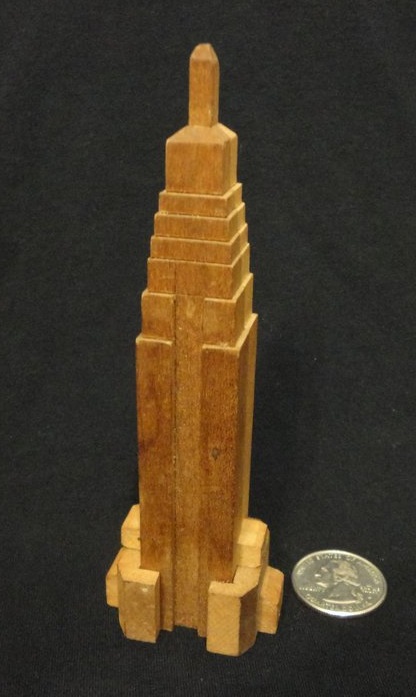
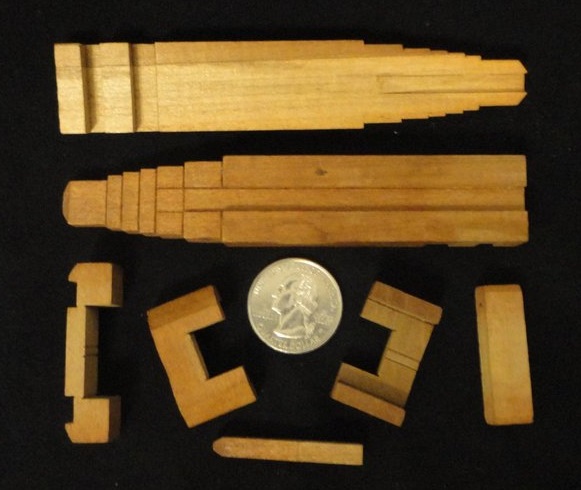
Kumiki Empire State Building A simple one but I really like it! |
||
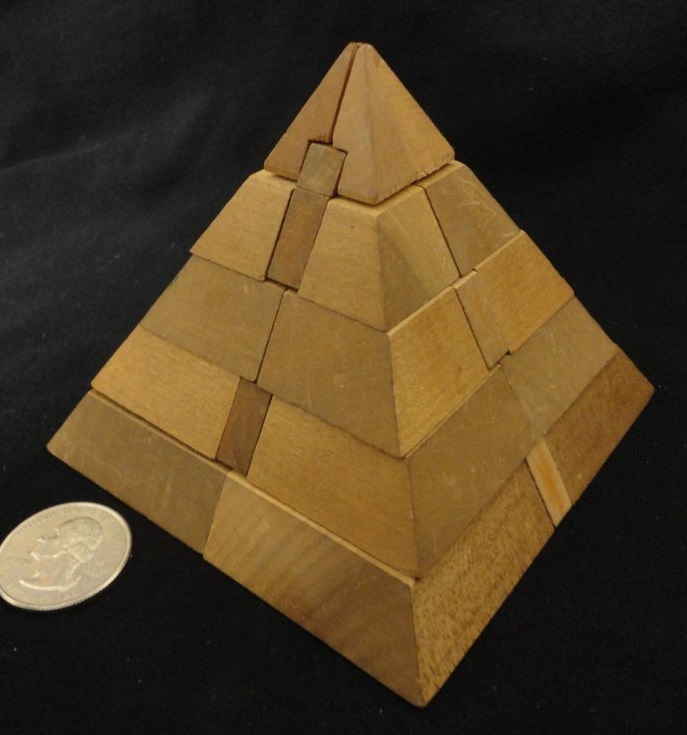
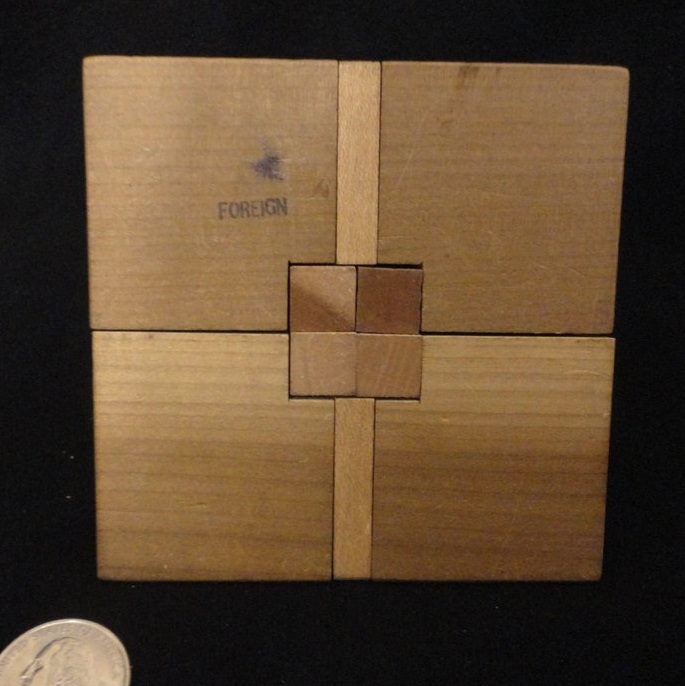
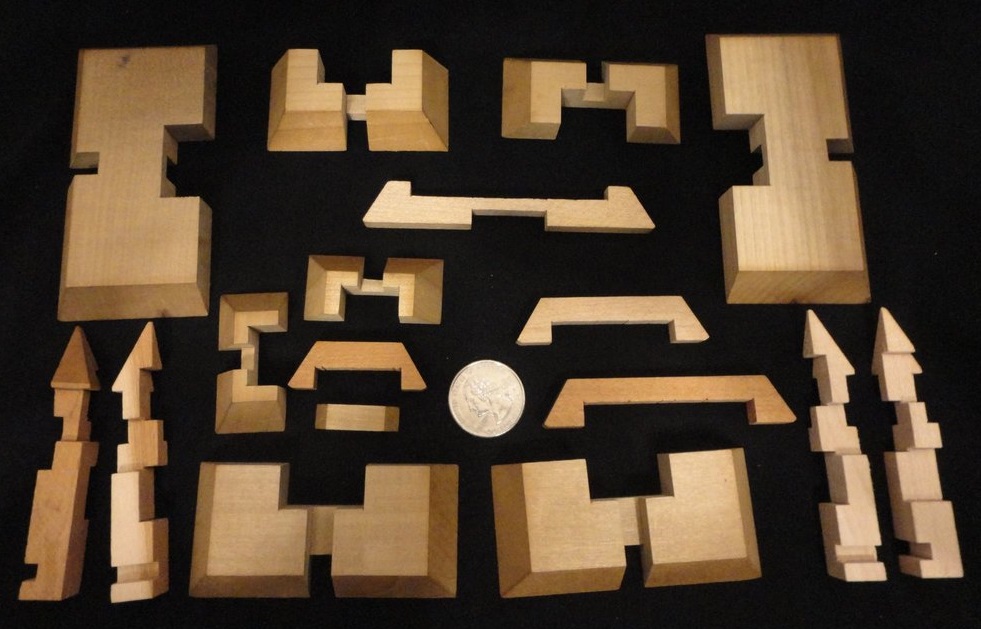
A Kumiki Pyramid. |
||

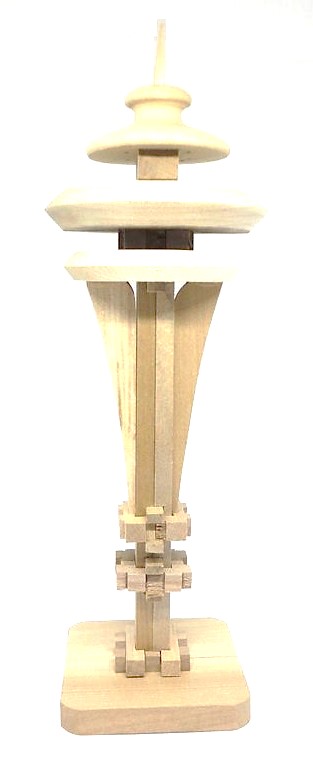
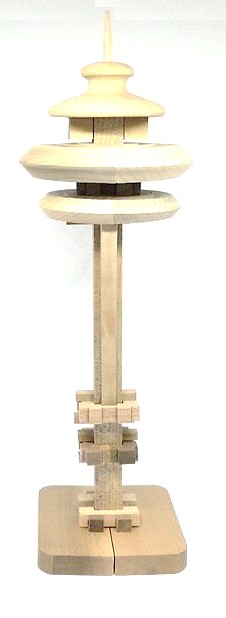

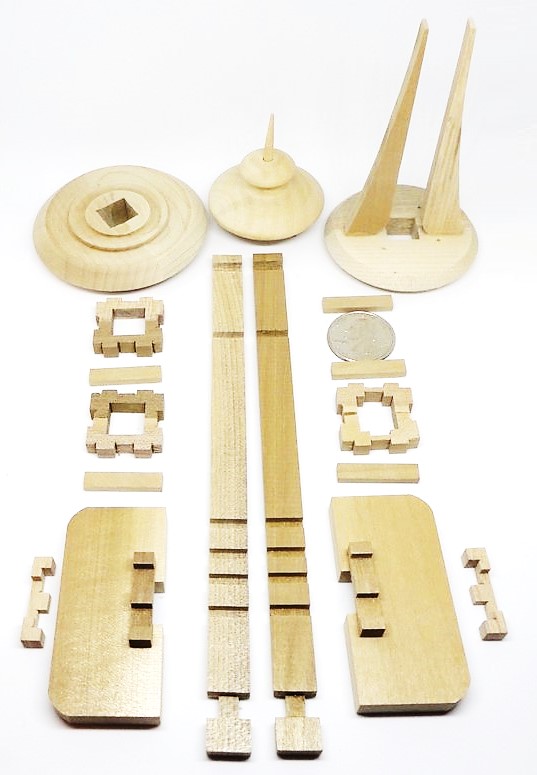
Kumiki Space Needle - a souvenir of the 1962 World's Fair in Seattle.
|
||
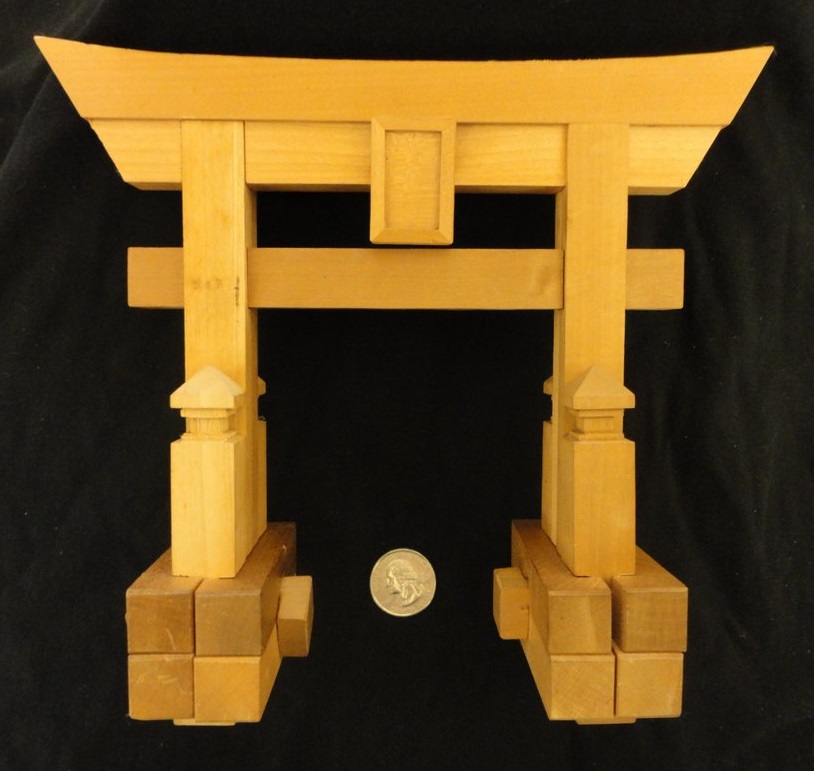
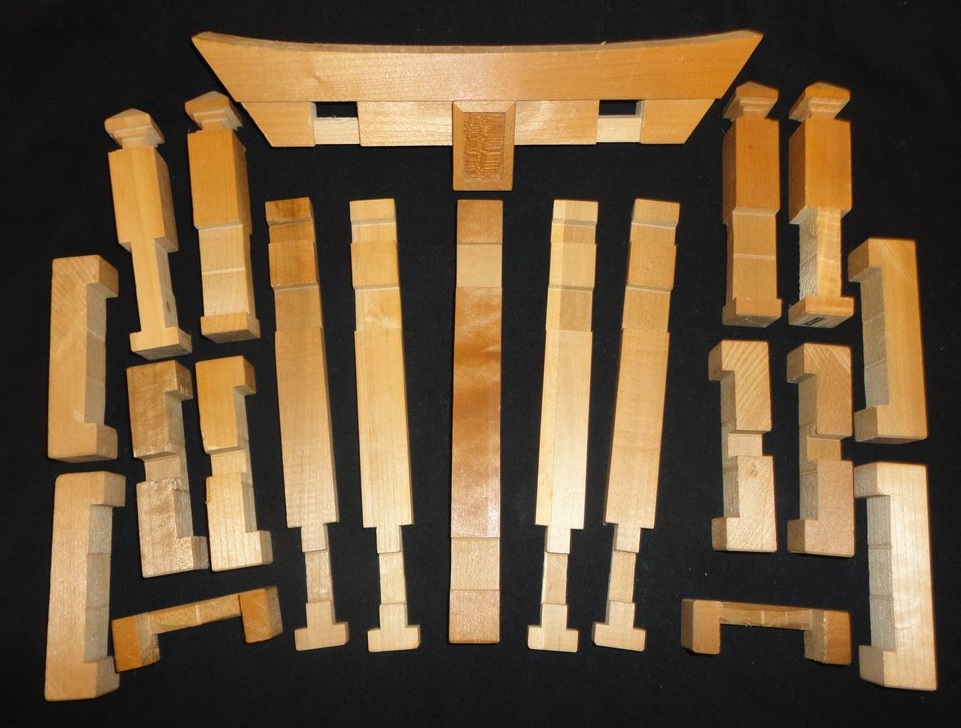
A nice, large Kumiki Tori Gate |
||
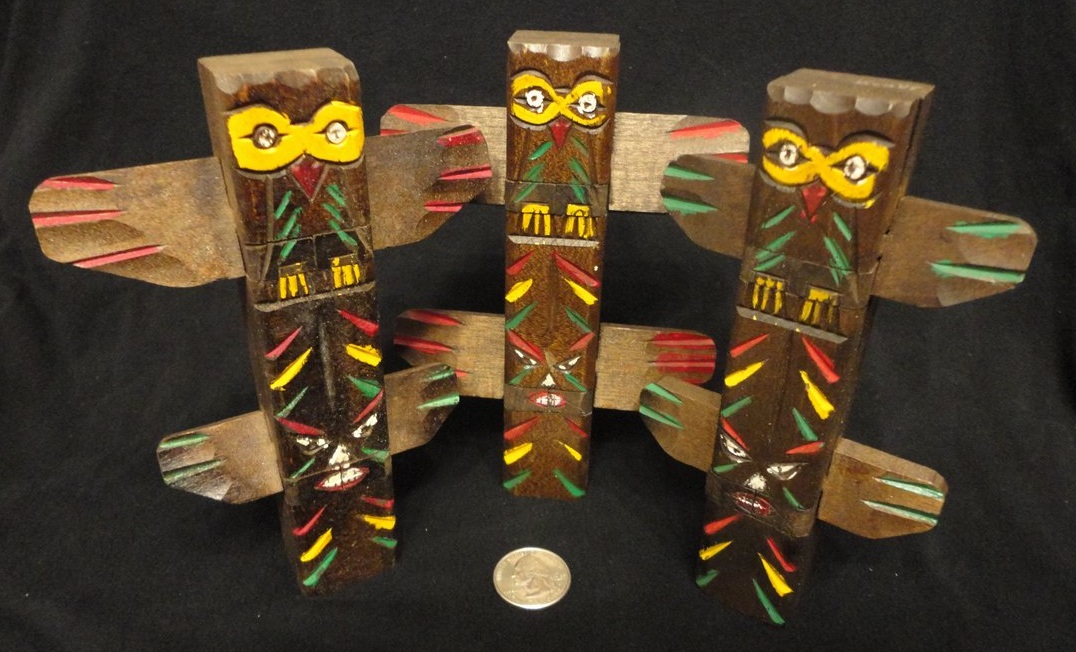
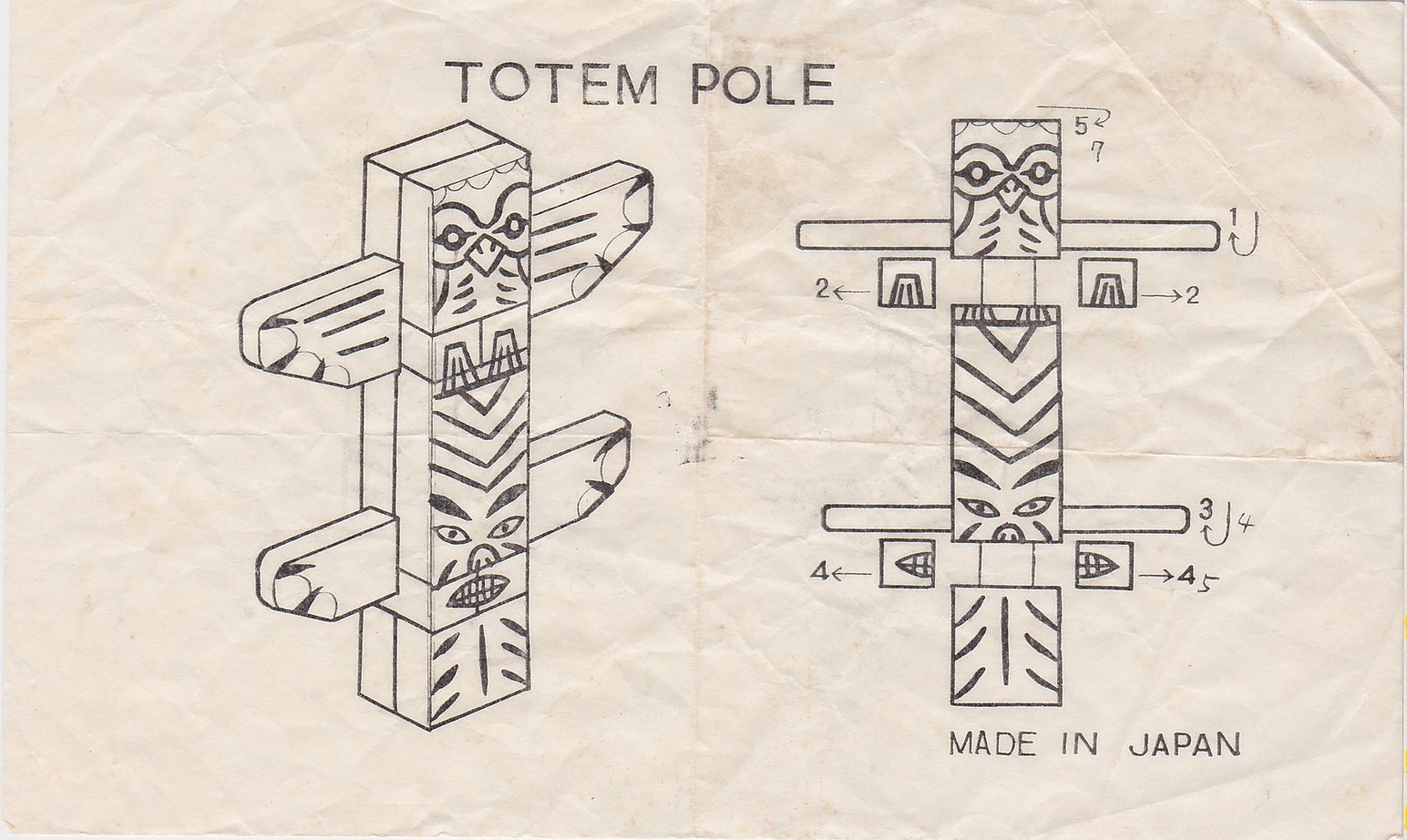
Kumiki Totem Pole |
||
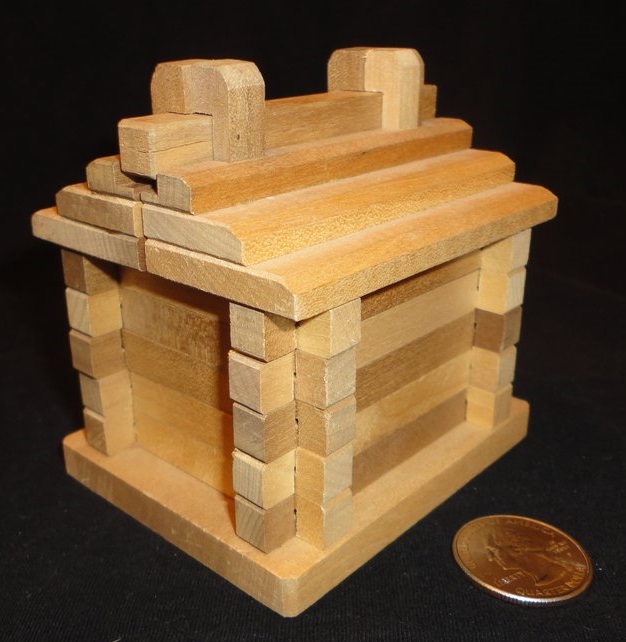
Kumiki Cabin |
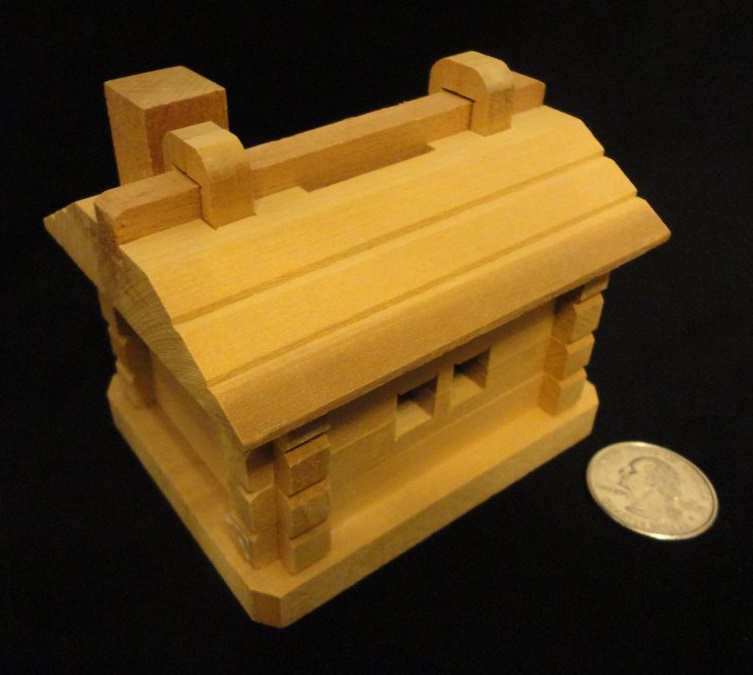
Kumiki Cabin - another version with windows and a coin slot in the top. |
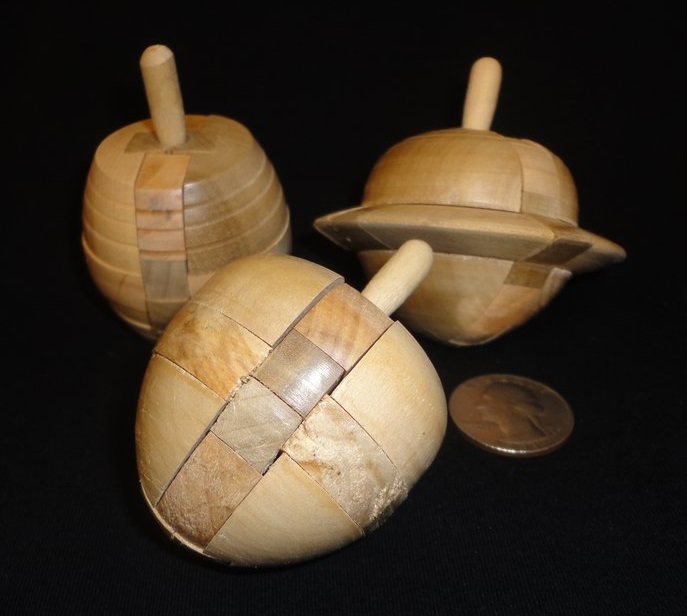
Kumiki Stemmed Group - a group of three Kumiki puzzles, each with a "stem" - Saturn, Barrel, and Strawberry. |
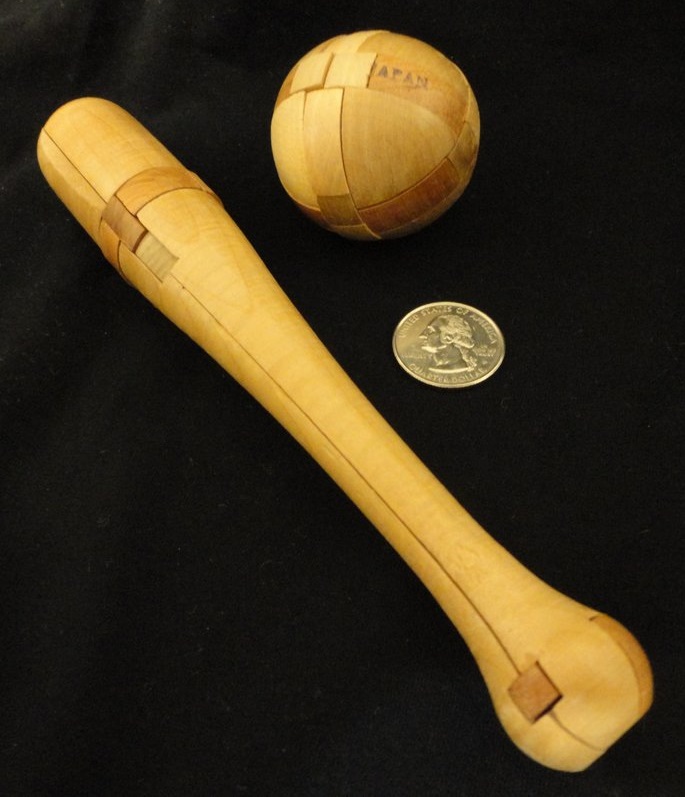
Kumiki Ball and Bat |
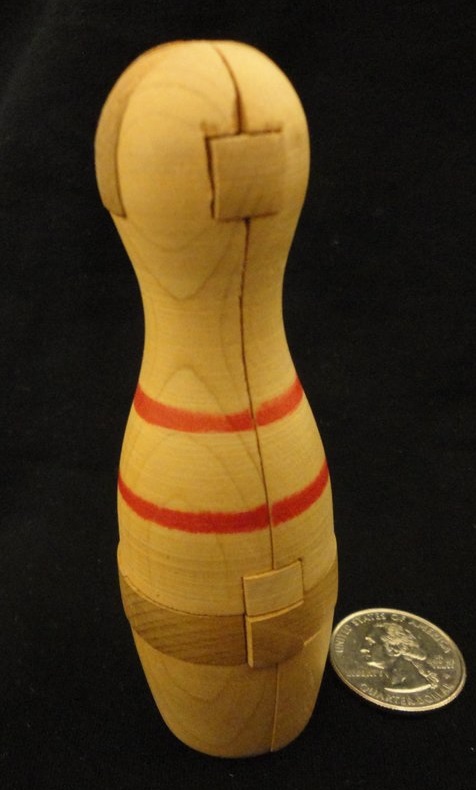
Kumiki Bowling Pin |
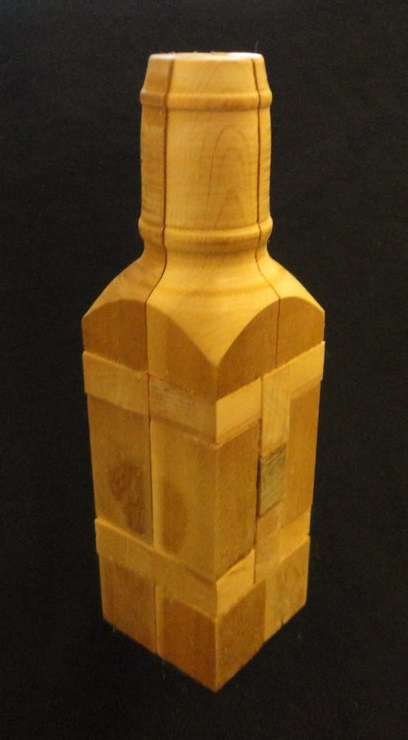
Kumiki Bottle |
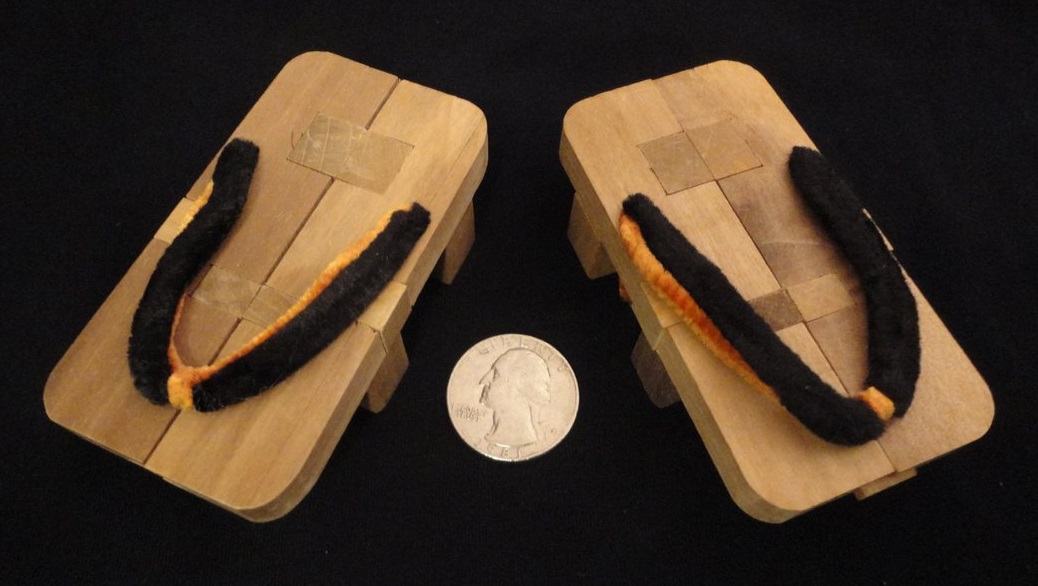


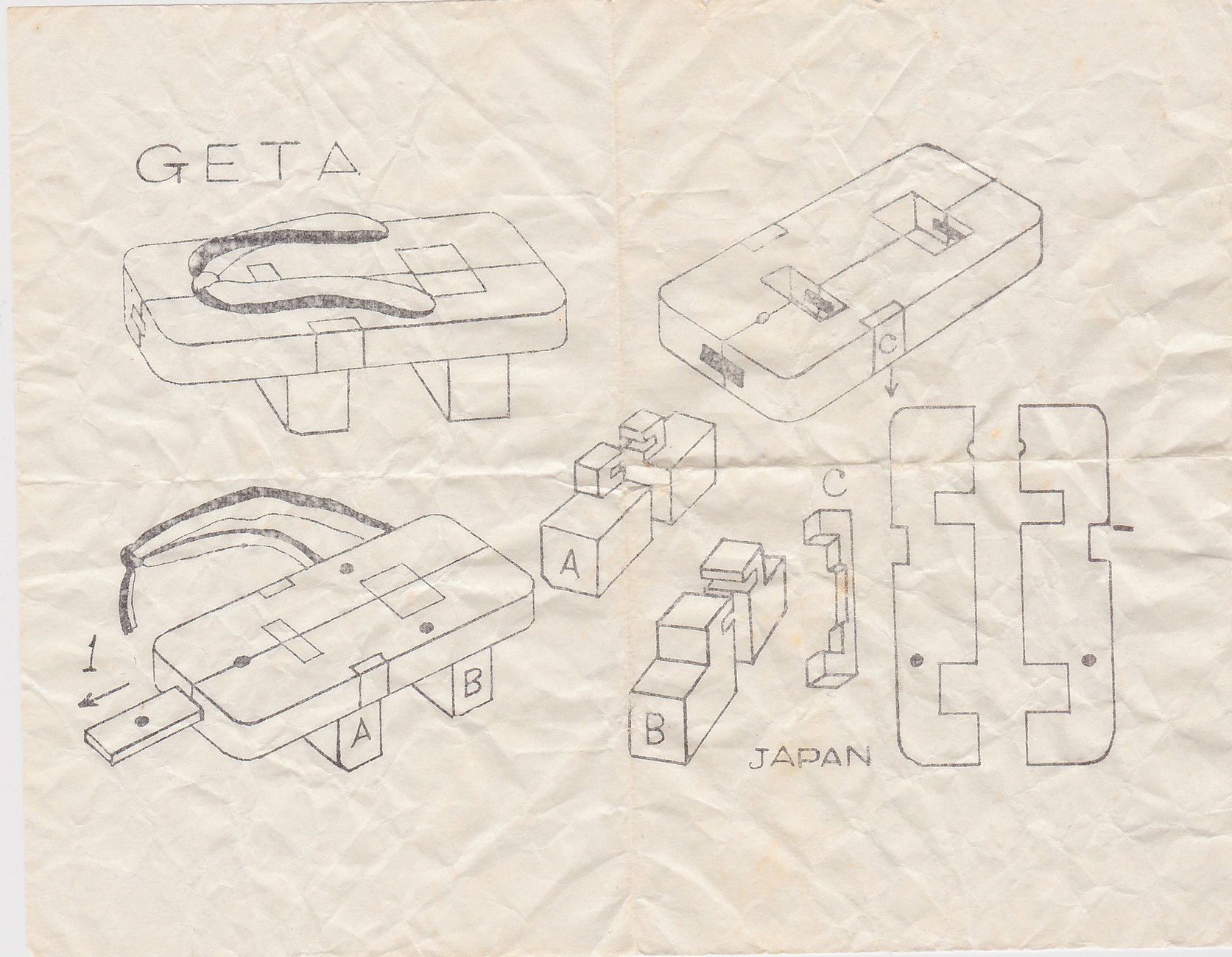
Kumiki Geta - a pair of Japanese wooden sandals |
||
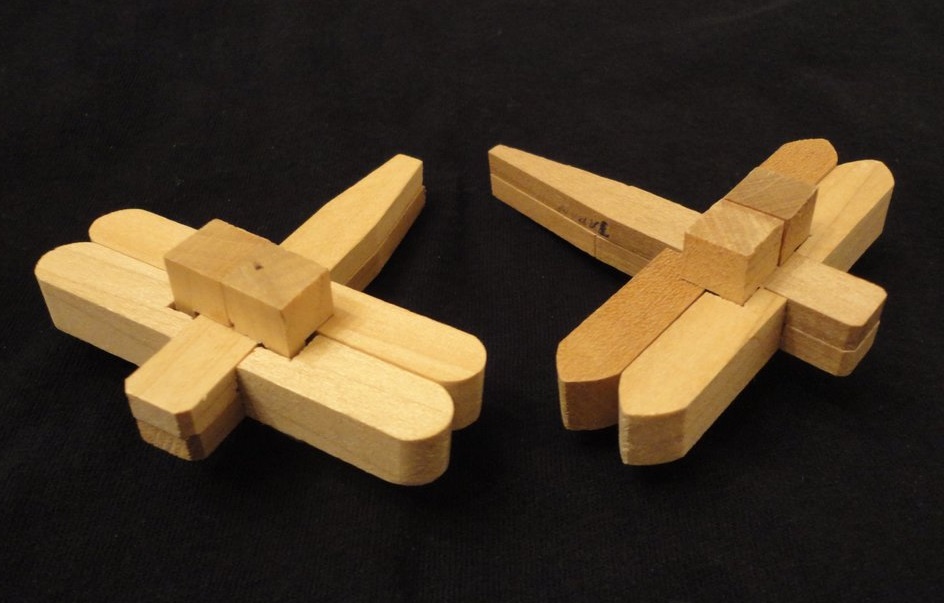
Kumiki Dragonflies |
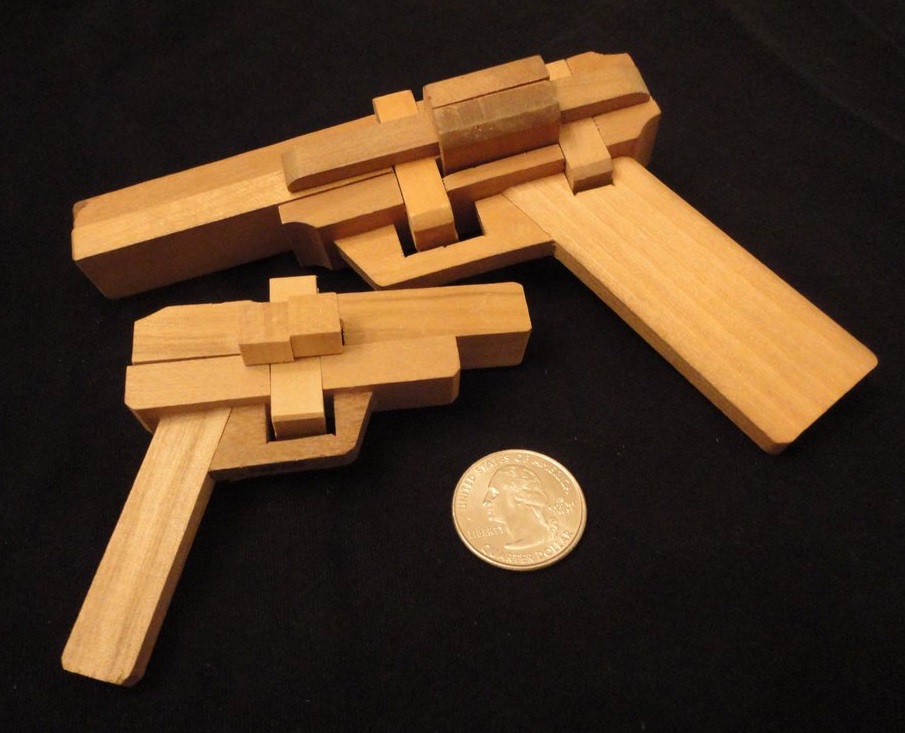
Kumiki Pistols |
|
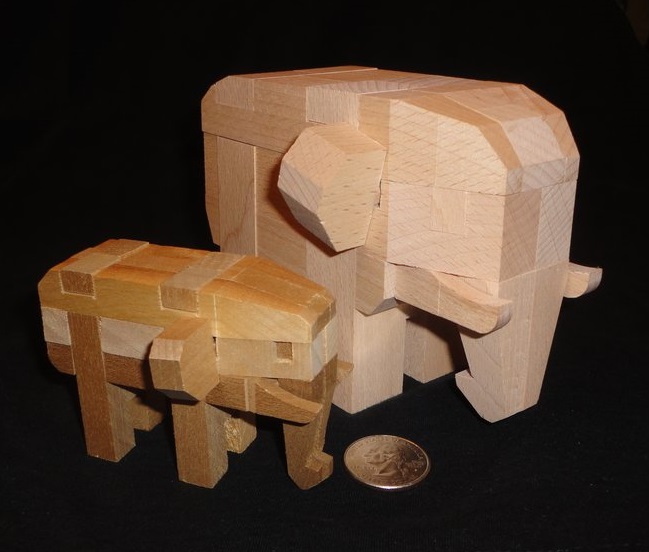
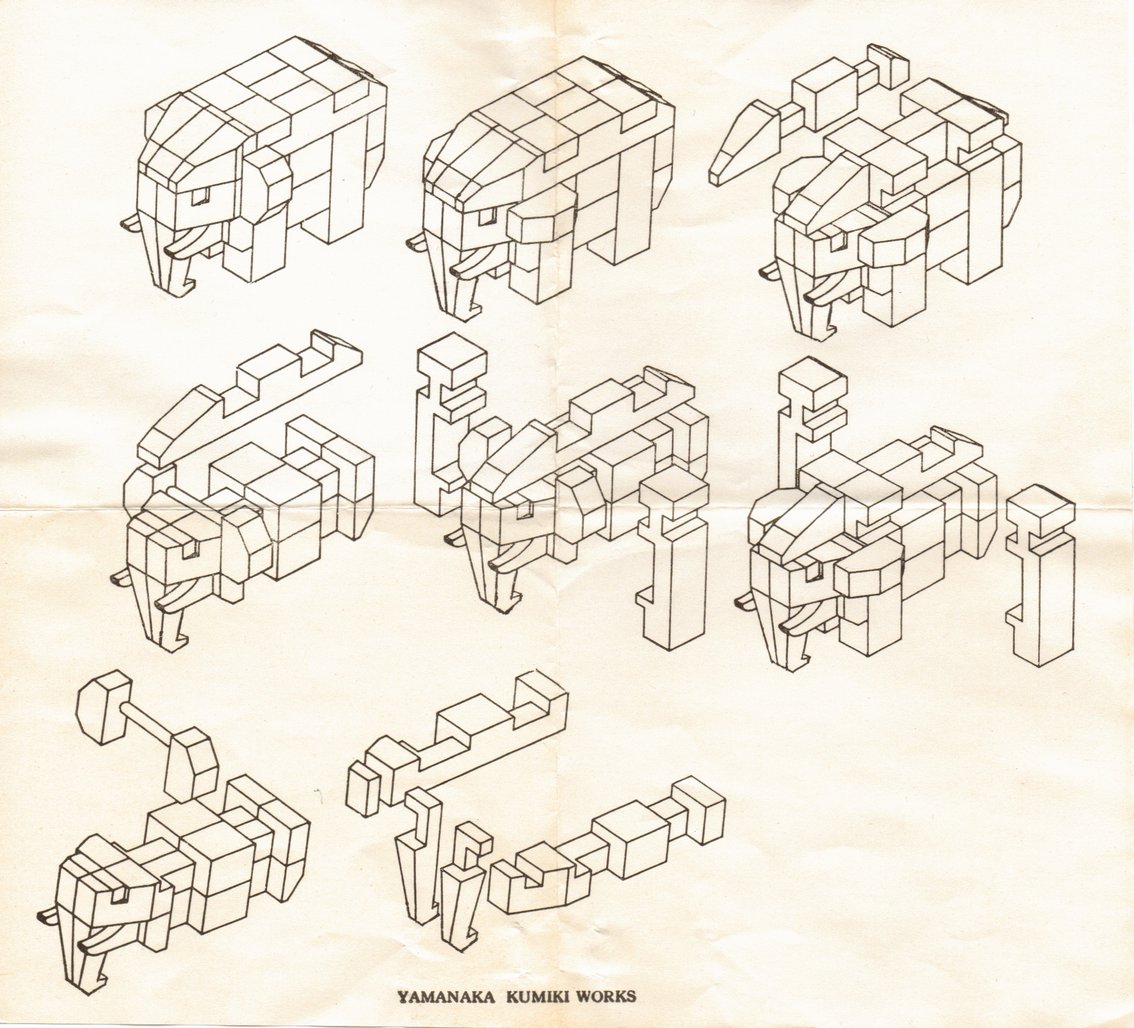
Kumiki Elephants - The larger piece is a beautiful and substantial wooden interlocking elephant puzzle from the Yamanaka Kumiki Works. |
||
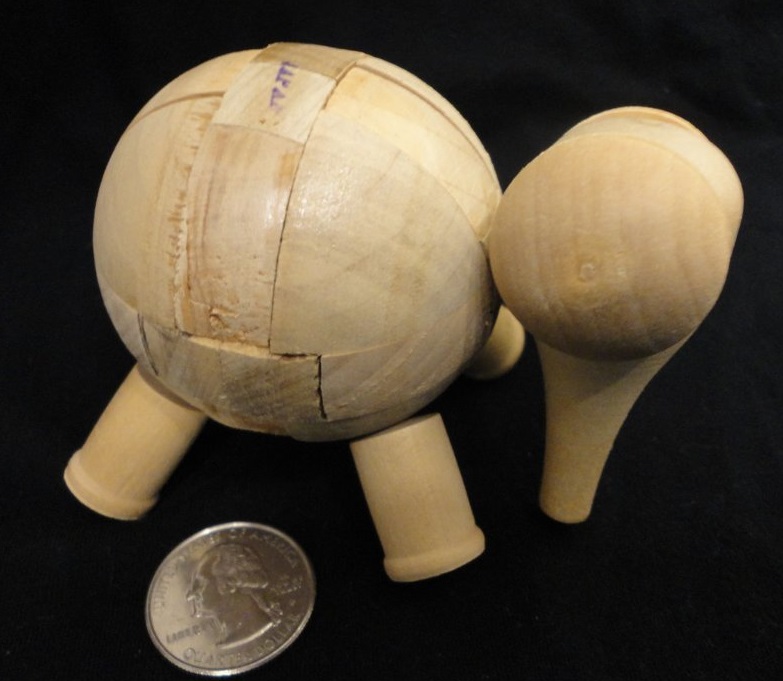

This Kumiki Elephant is based on the Kumiki Sphere. |
||
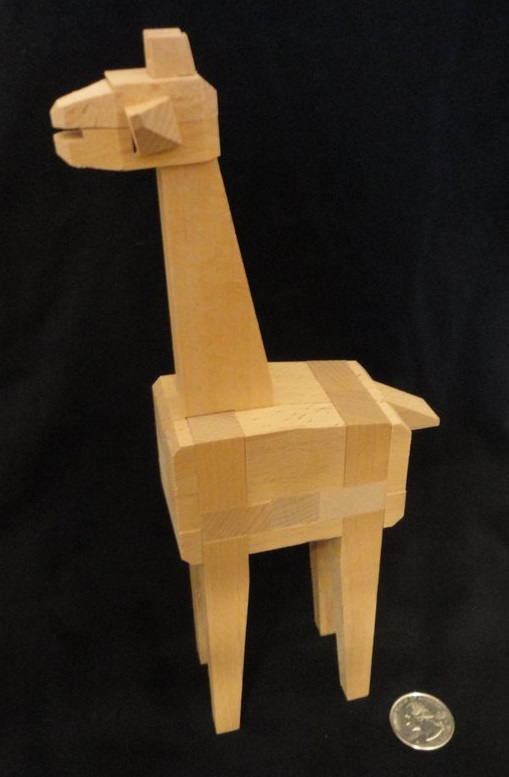
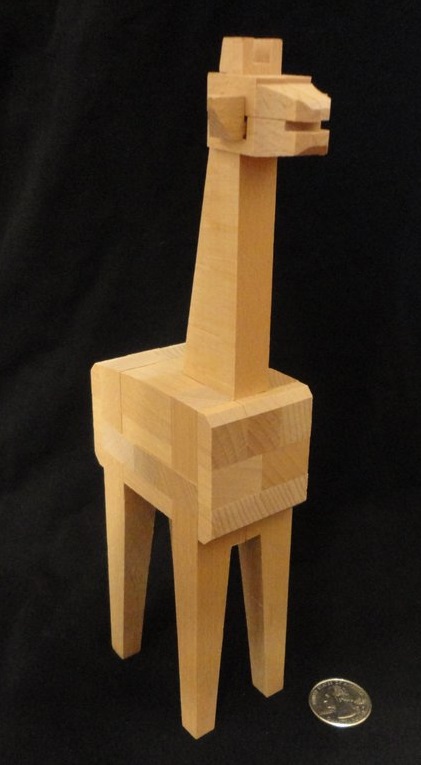
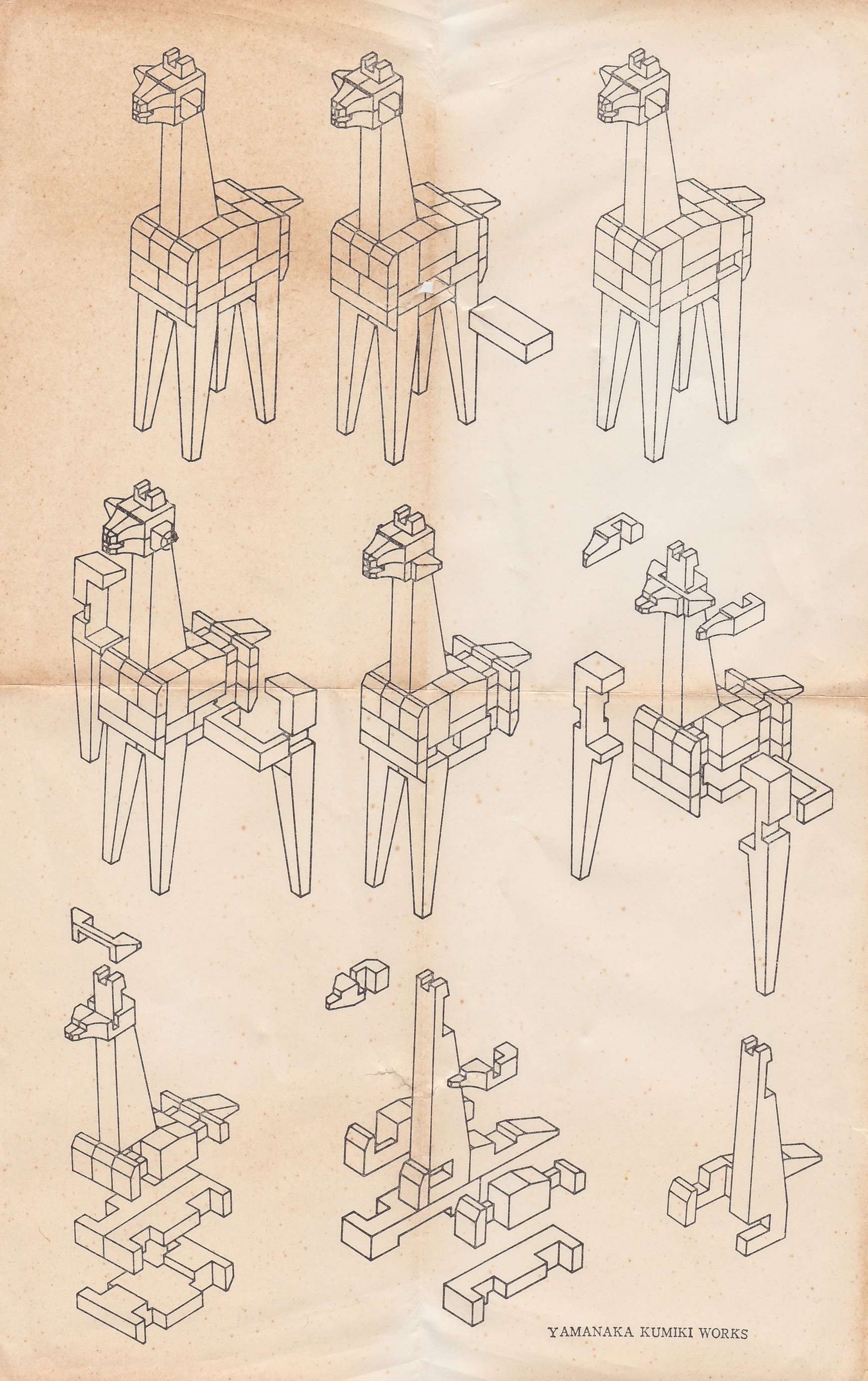
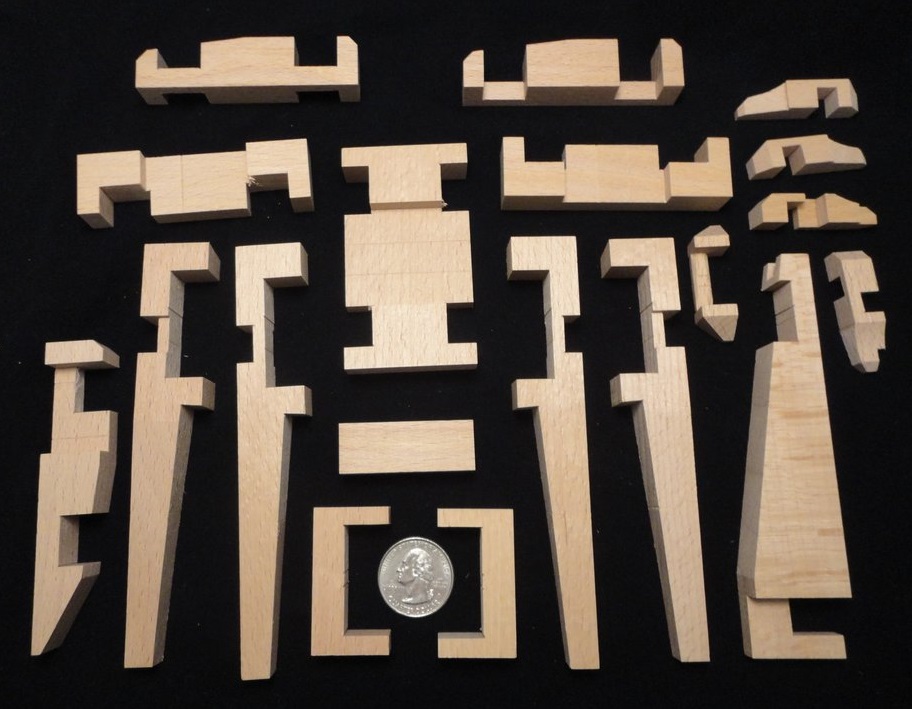
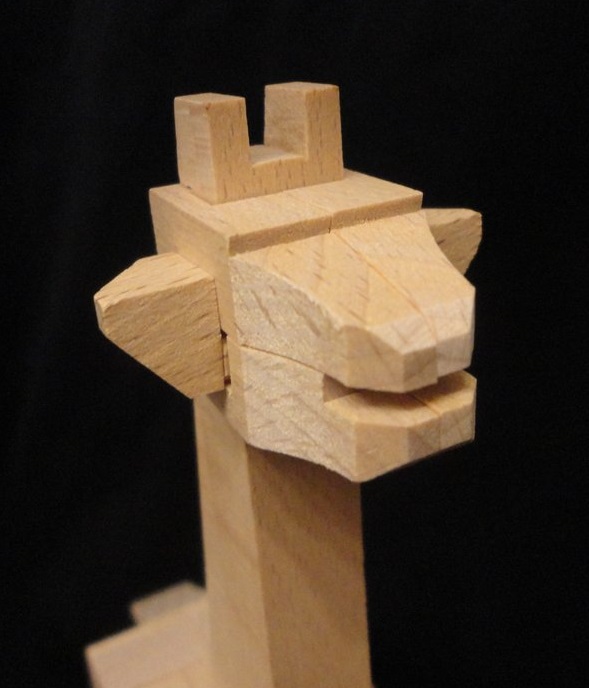
Yamanaka Kumiki Works Giraffe |
||
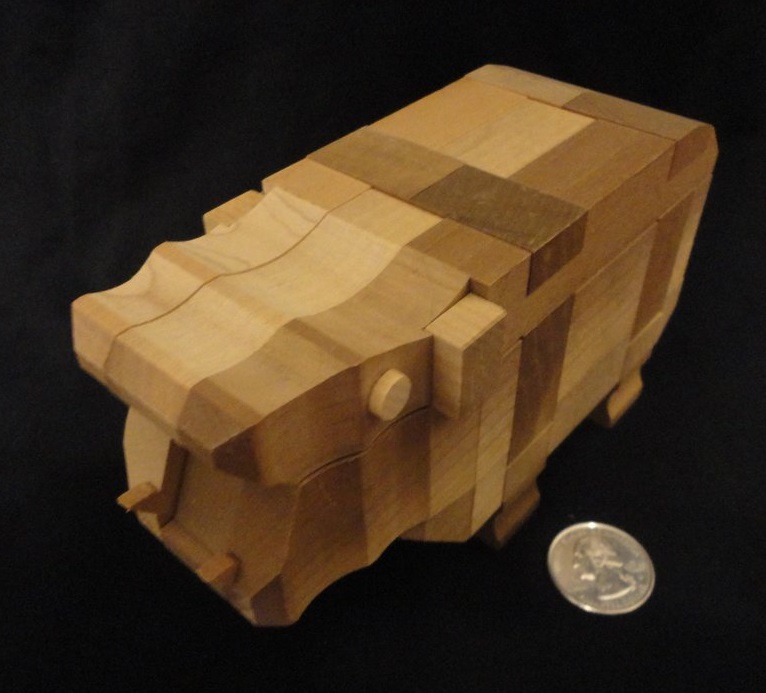
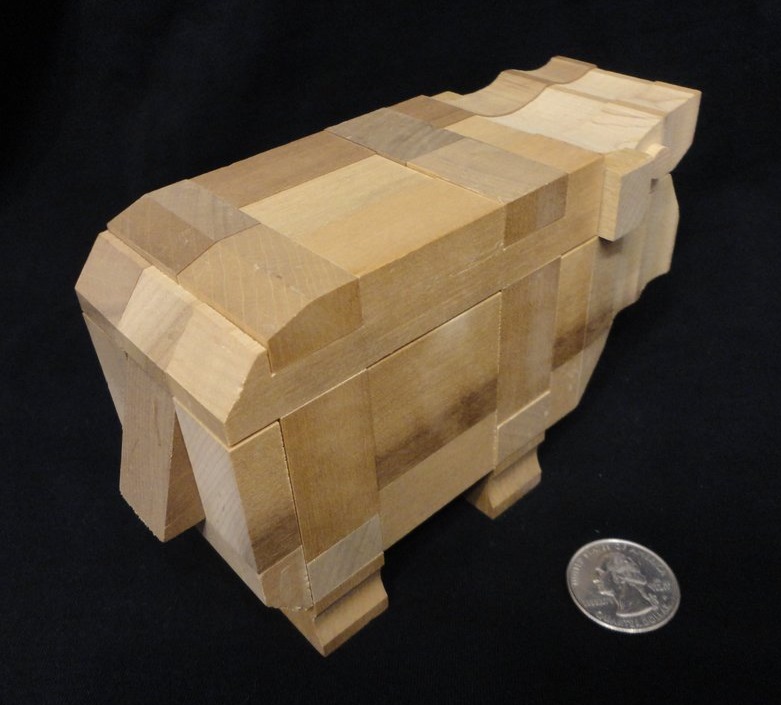
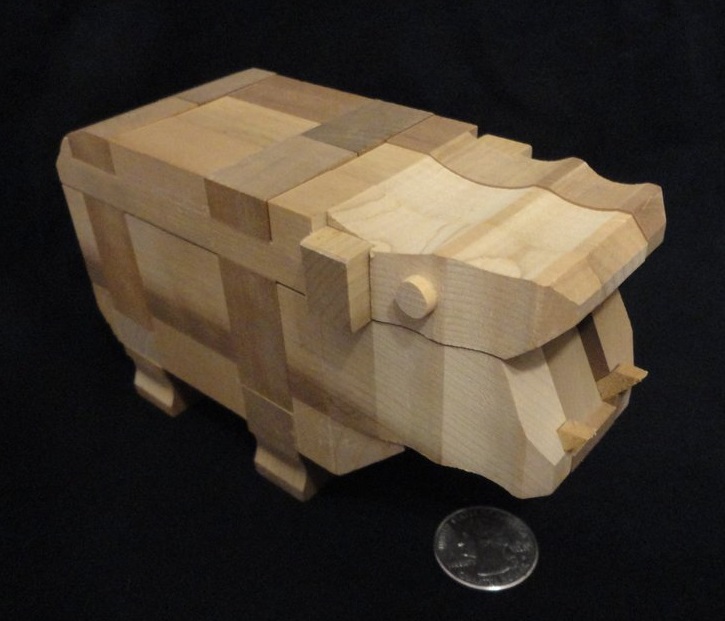

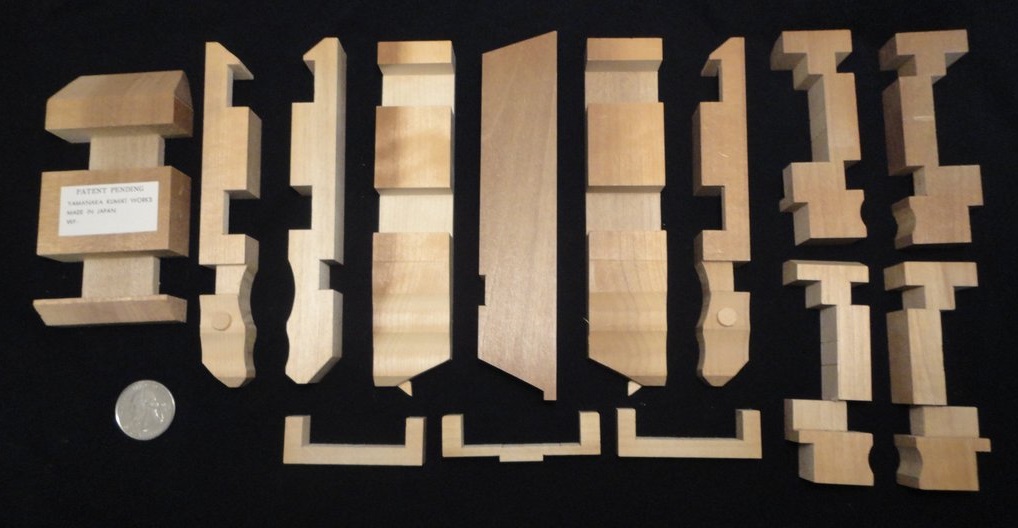
Yamanaka Kumiki Works Hippopotamus |
||
|
|
||
|
|
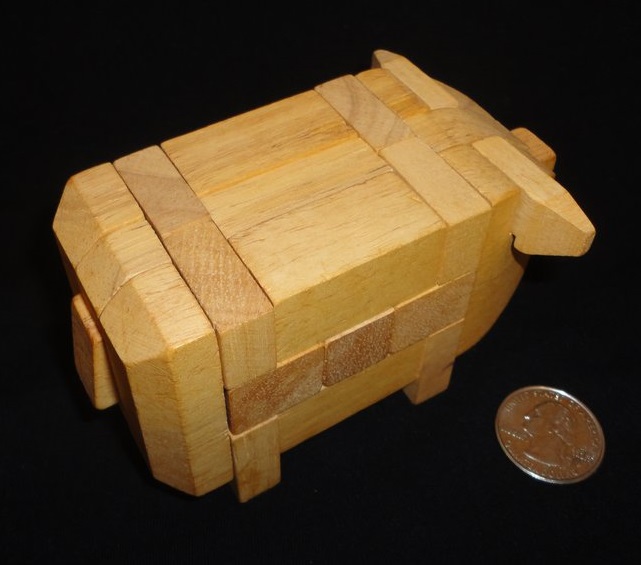
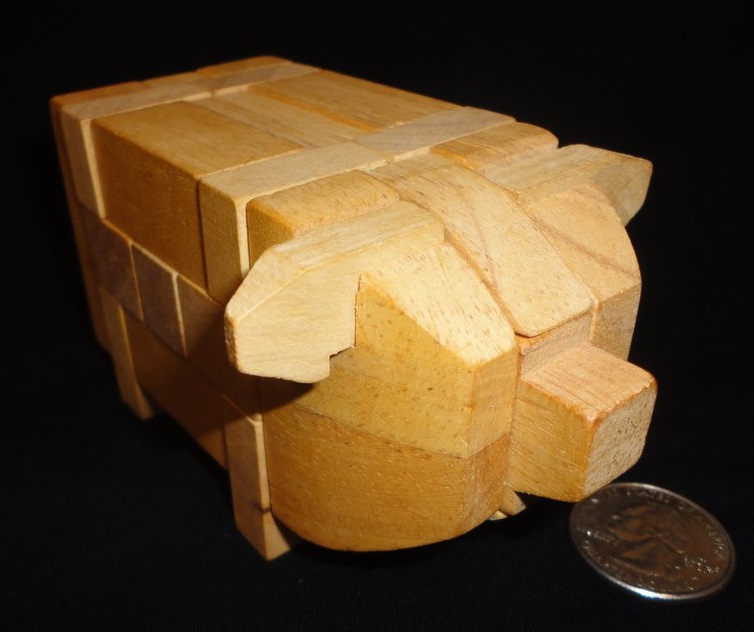
A larger Kumiki Pig |
|
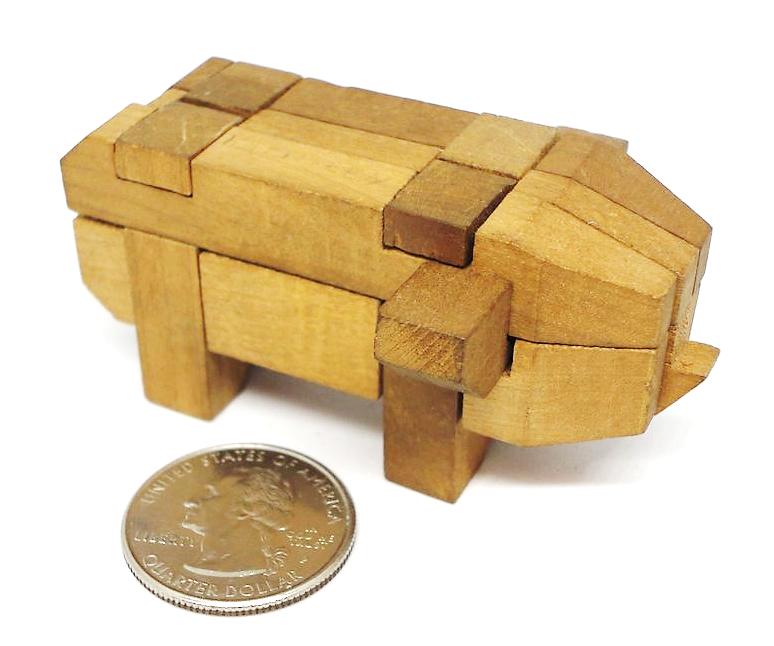
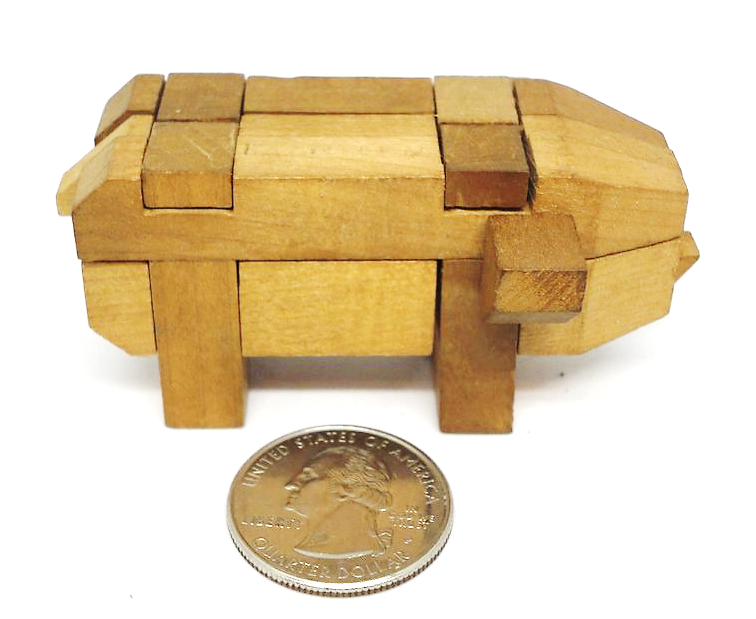
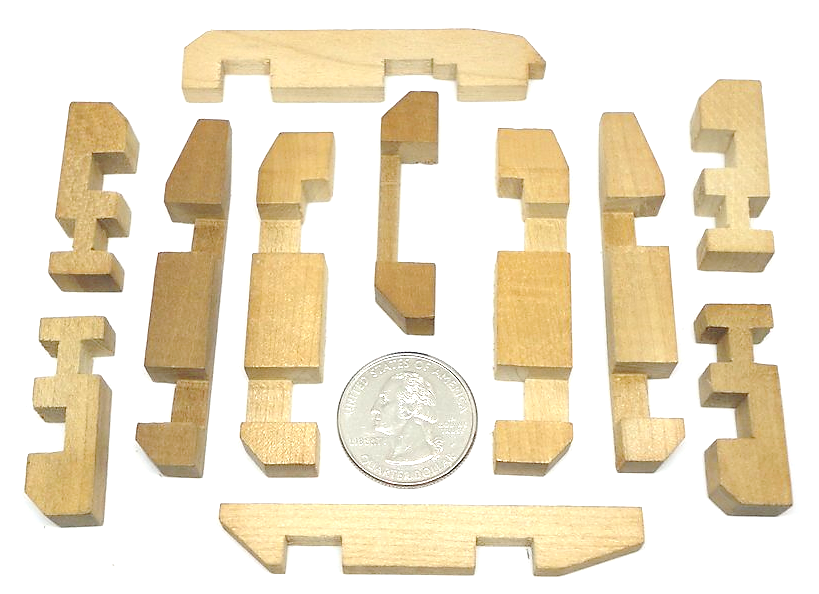
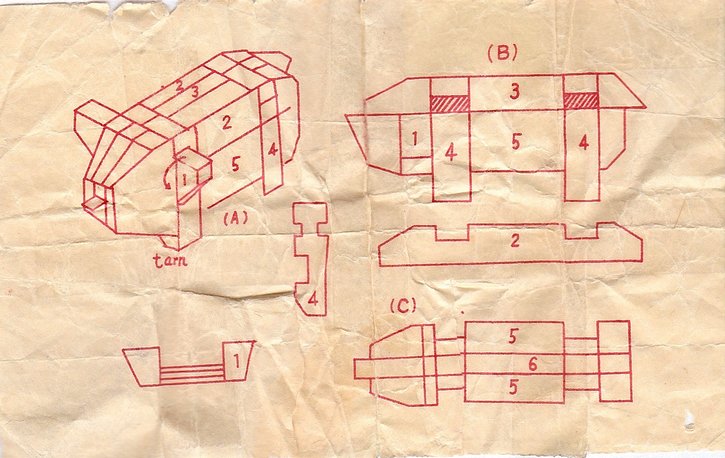
Piglet - vintage Kumiki |
||
|
I found a Kumiki Pig much larger than those I had:
|
||
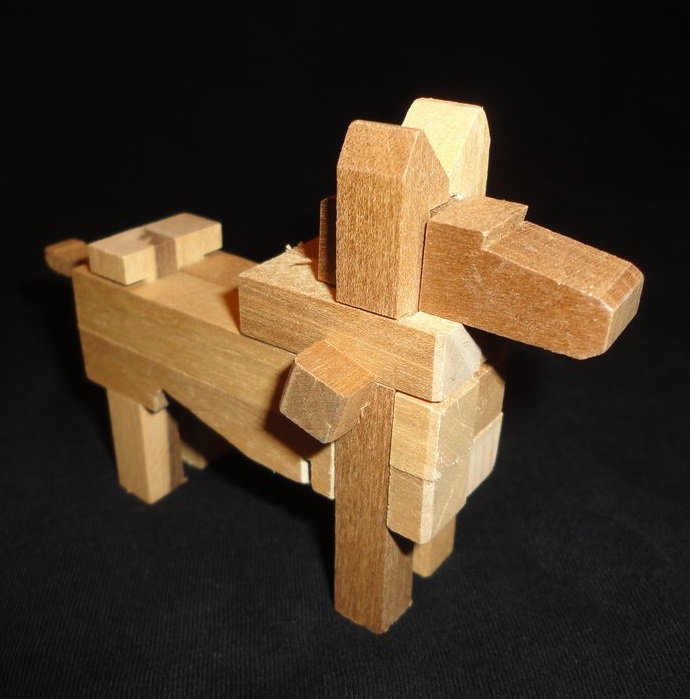
Kumiki Dog |
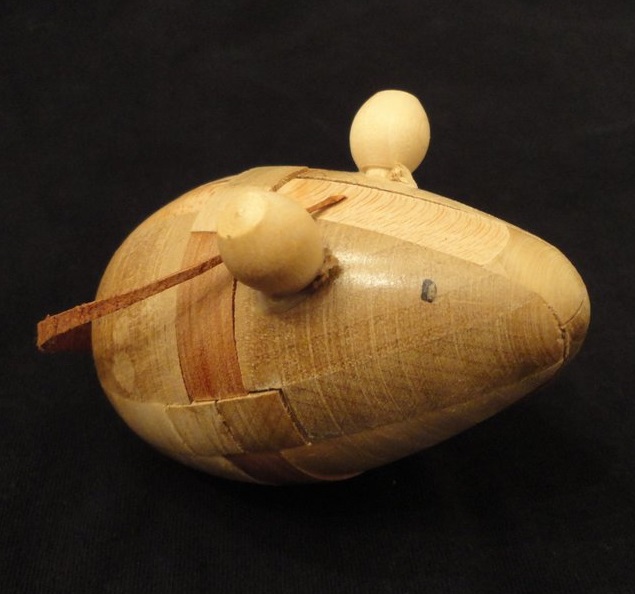
Kumiki Mouse |
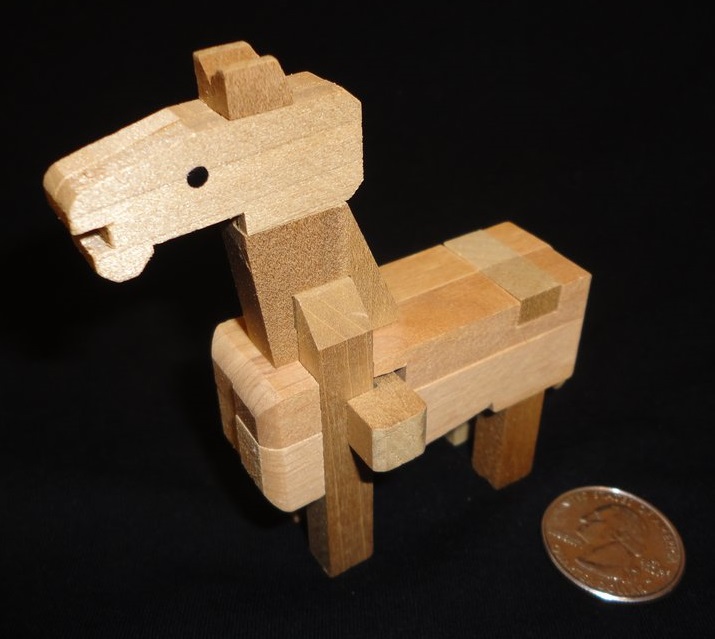
Kumiki Horse |
|
|
||
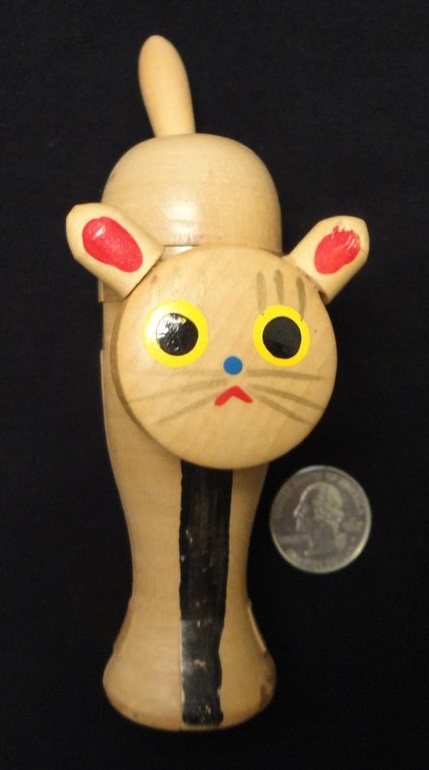
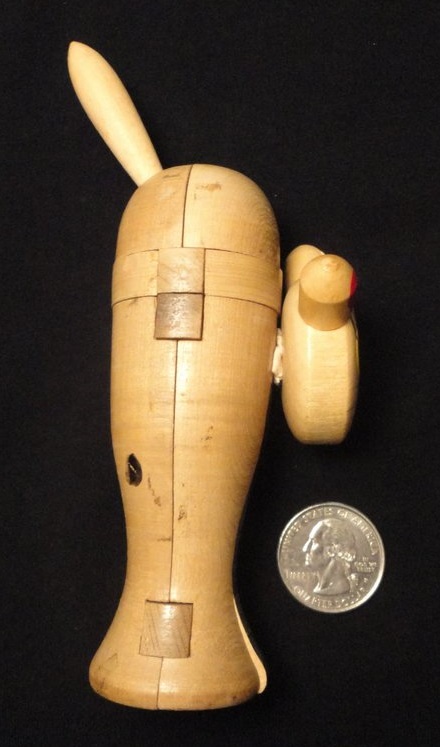

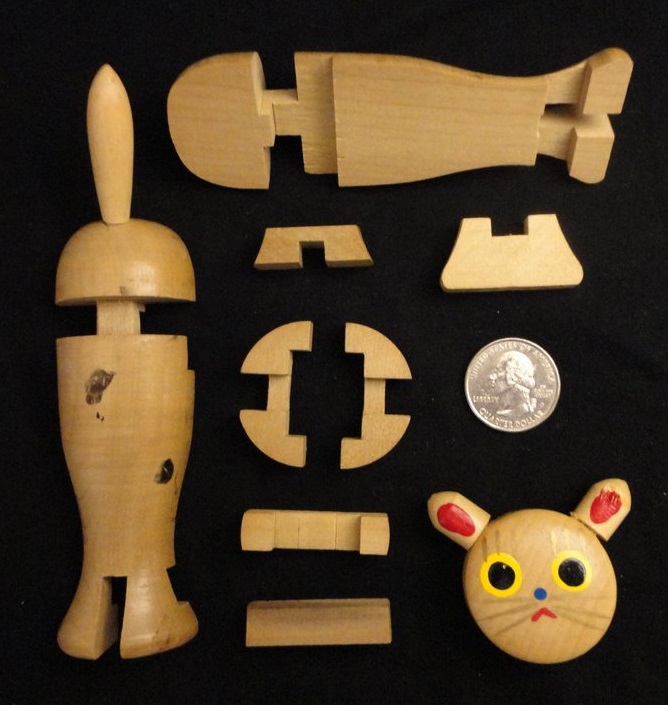
Kumiki Cat |
||
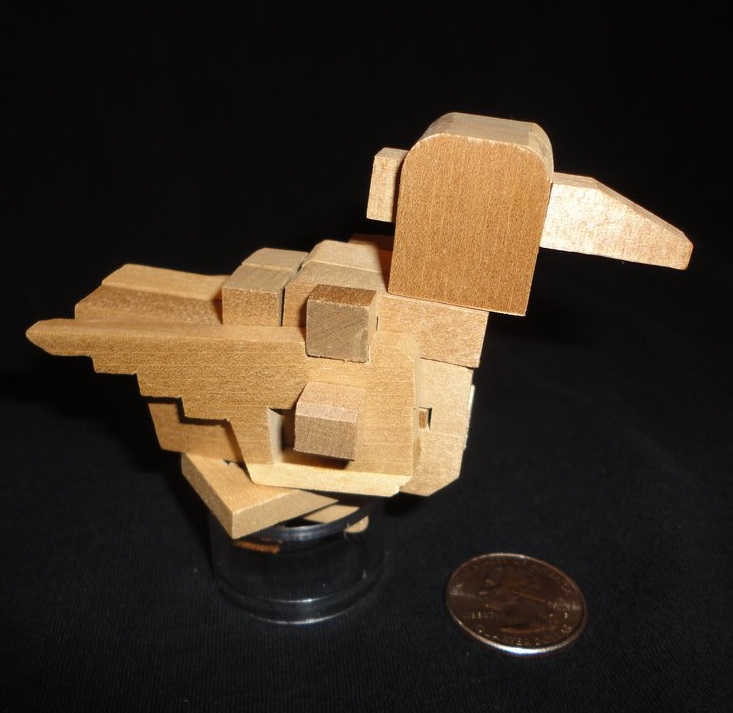
Kumiki Bird |
|
|
|
I found a large Kumiki Alligator, shown with the small one I had:
|
||
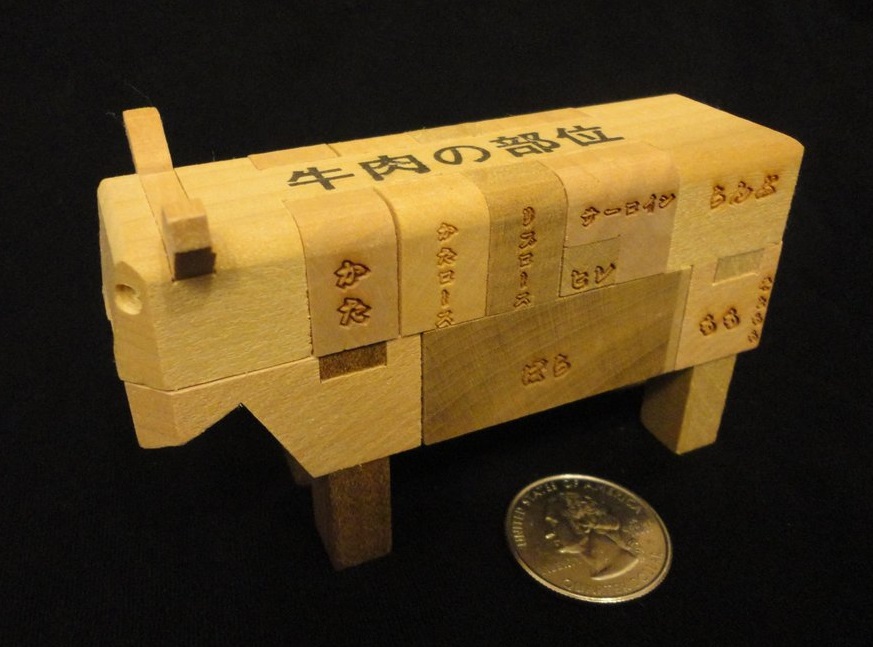
Kumiki Cow A butcher's version marked with cuts of beef. |
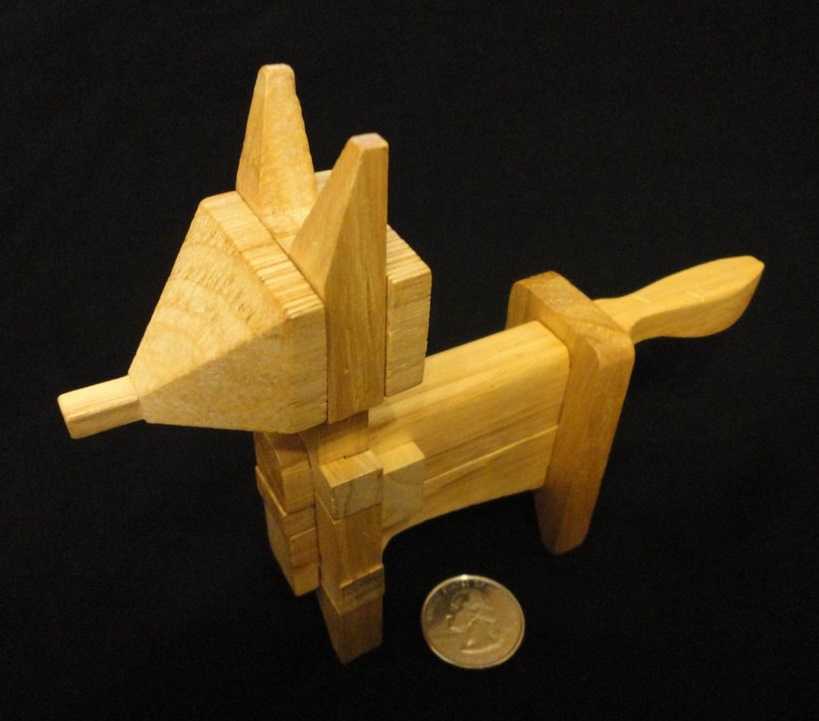
Kumiki Fox by Mi-Toys |
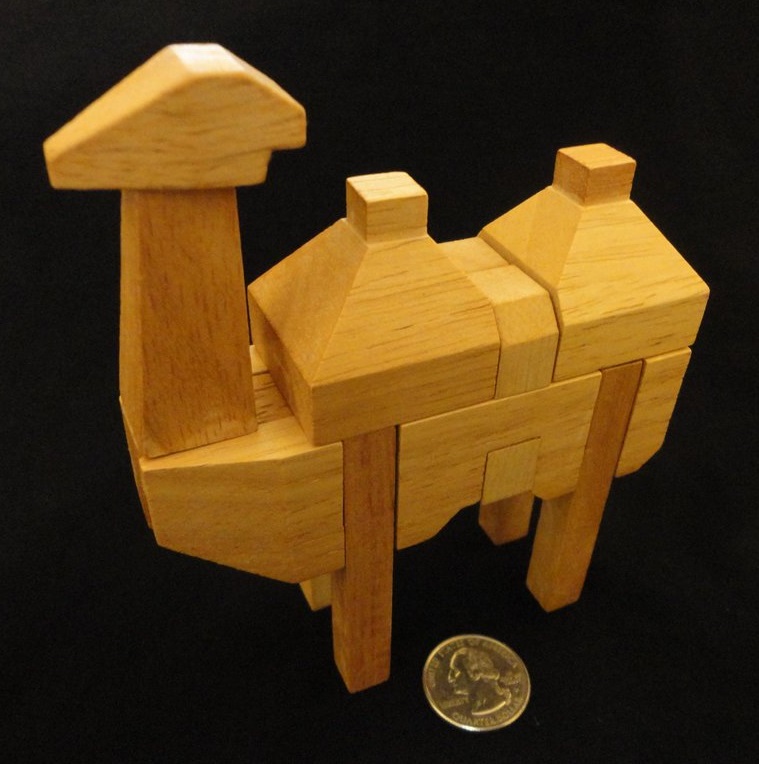
Kumiki Camel by Mi-Toys |
|
I found a Kumiki Cow design I didn't have:
|
||
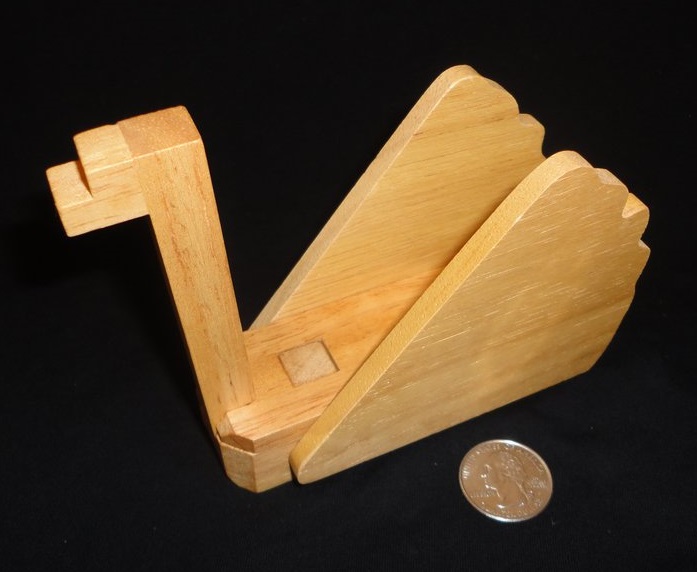
Kumiki Swan by Mi-Toys |
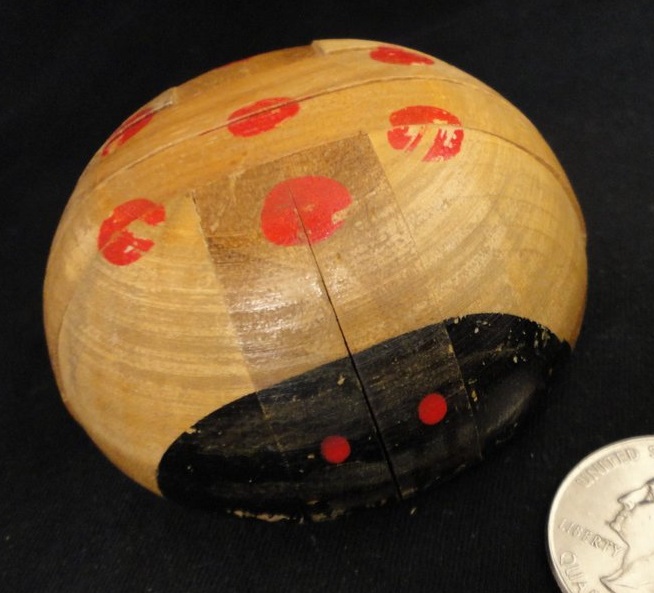
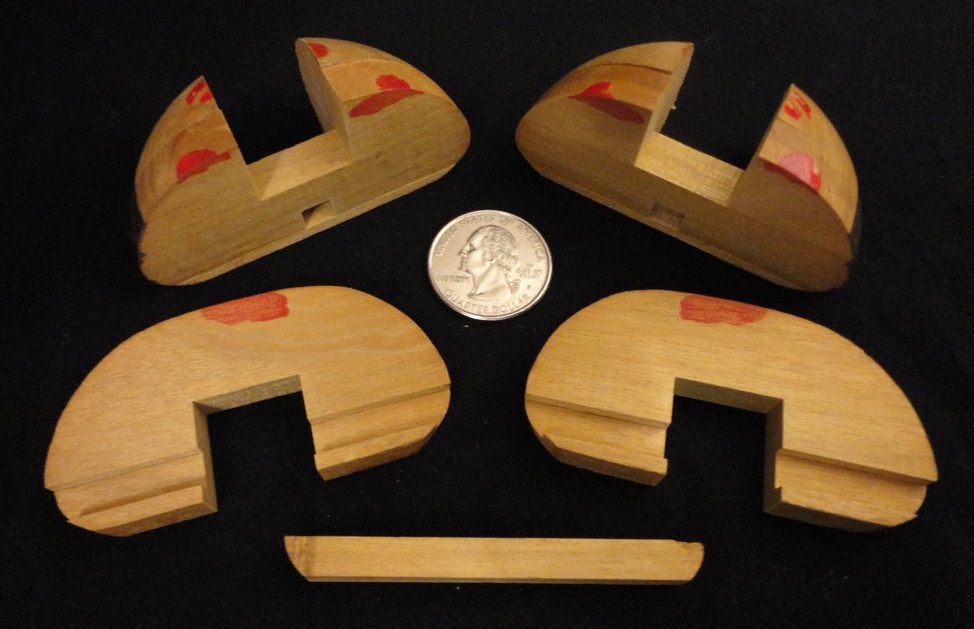
Kumiki Ladybug |
|
|
|
||
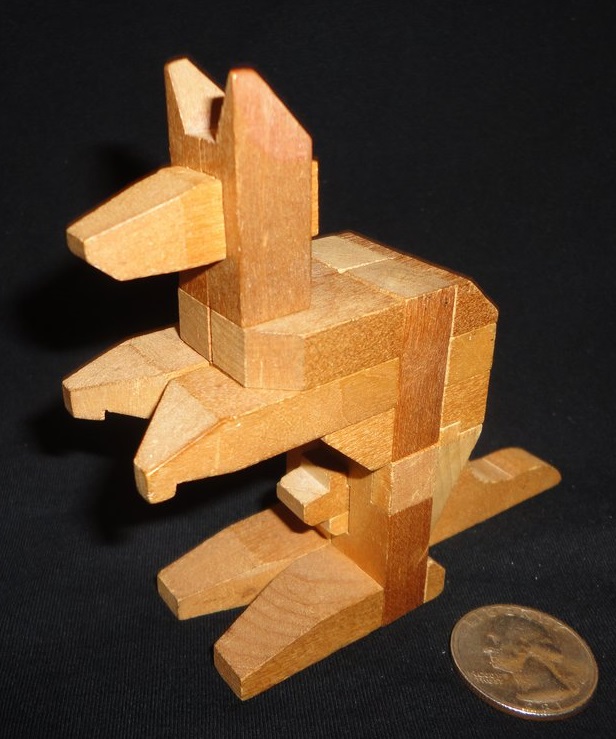
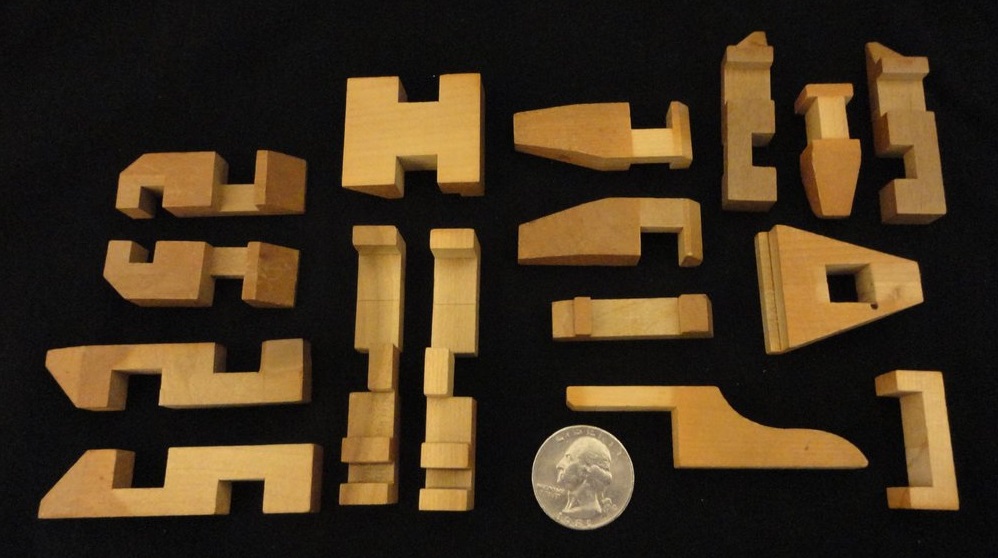
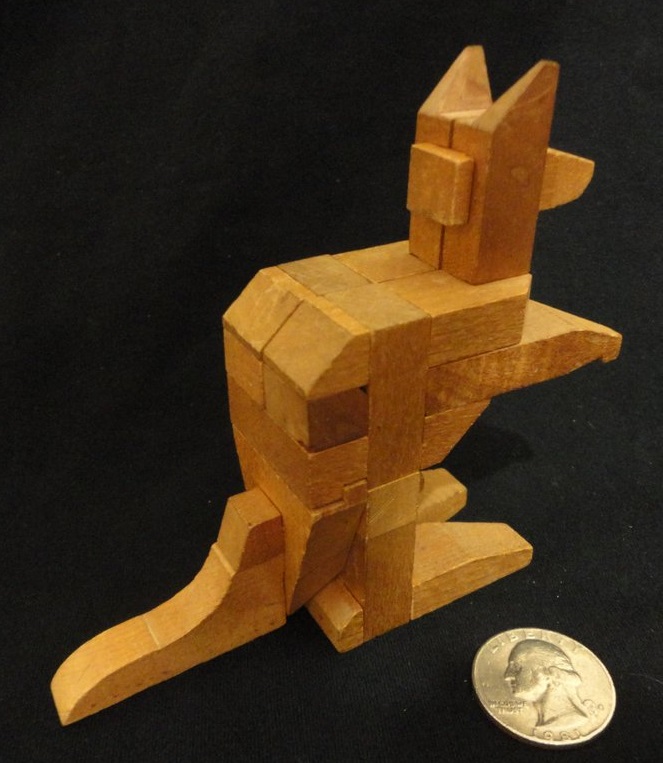
Kumiki Kangaroo - and that's baby Joey in her pouch! |
||
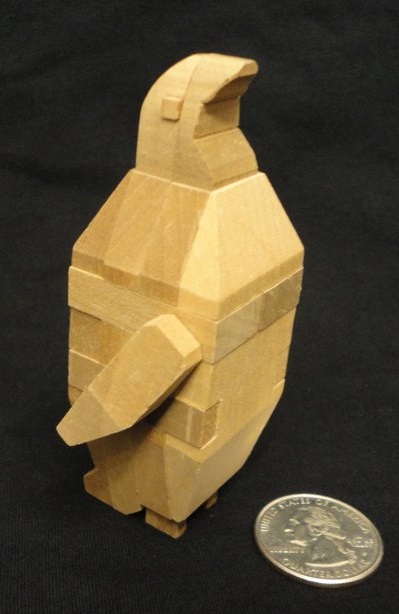
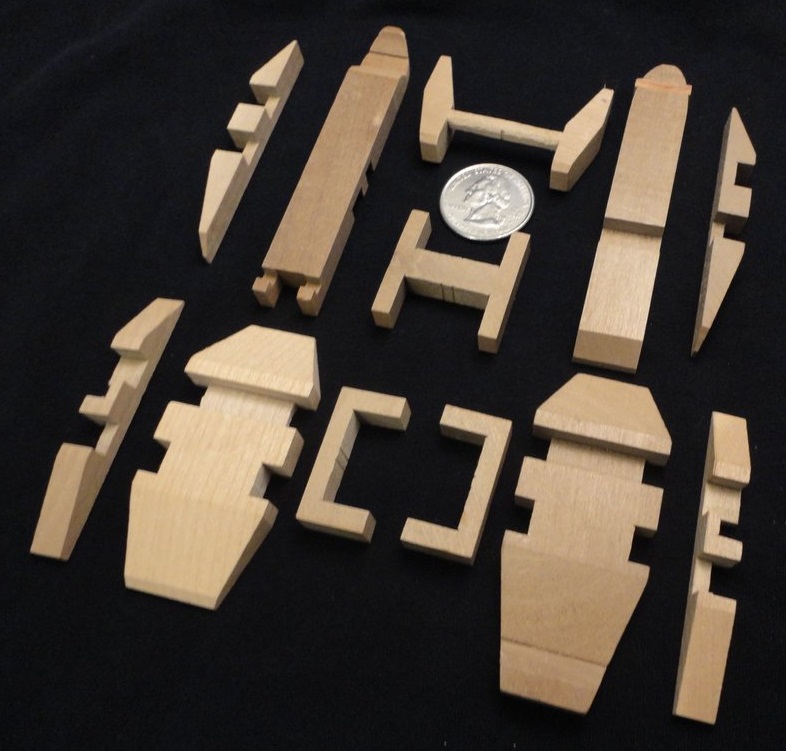
Kumiki Penguin - purchased at the Puzzle Party from premier Kumiki collector Frank Potts I am told the Penguin is a fairly rare piece. |
||
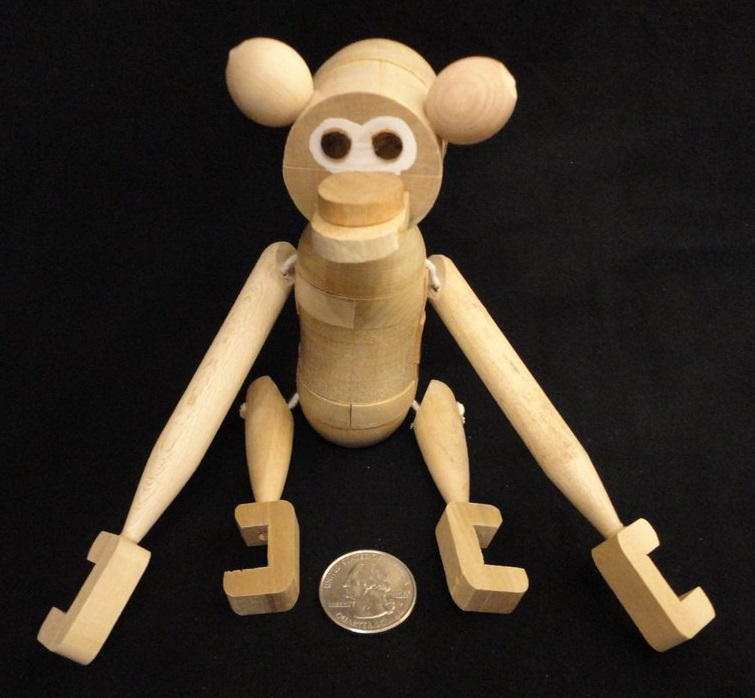
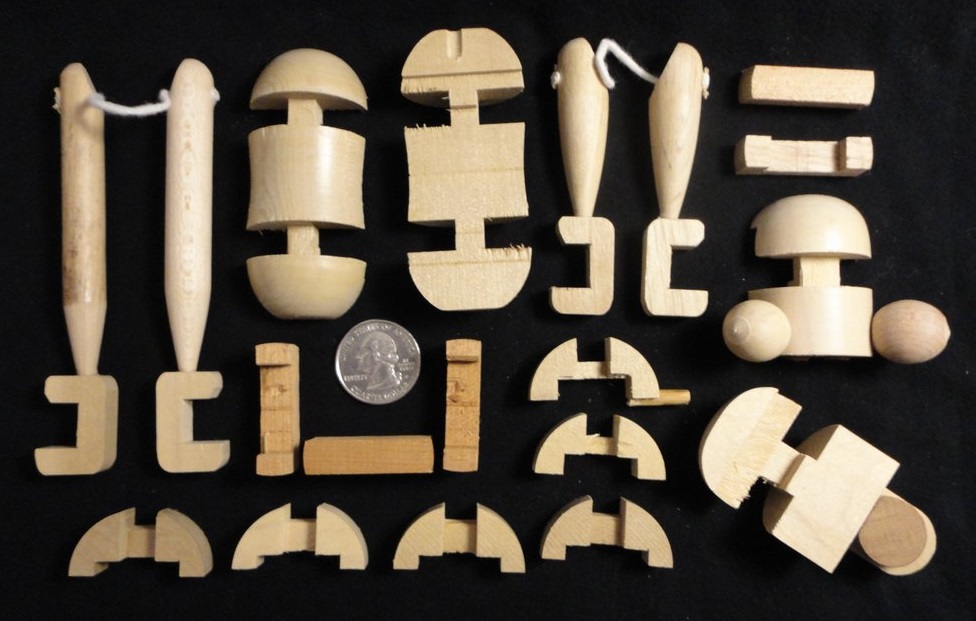
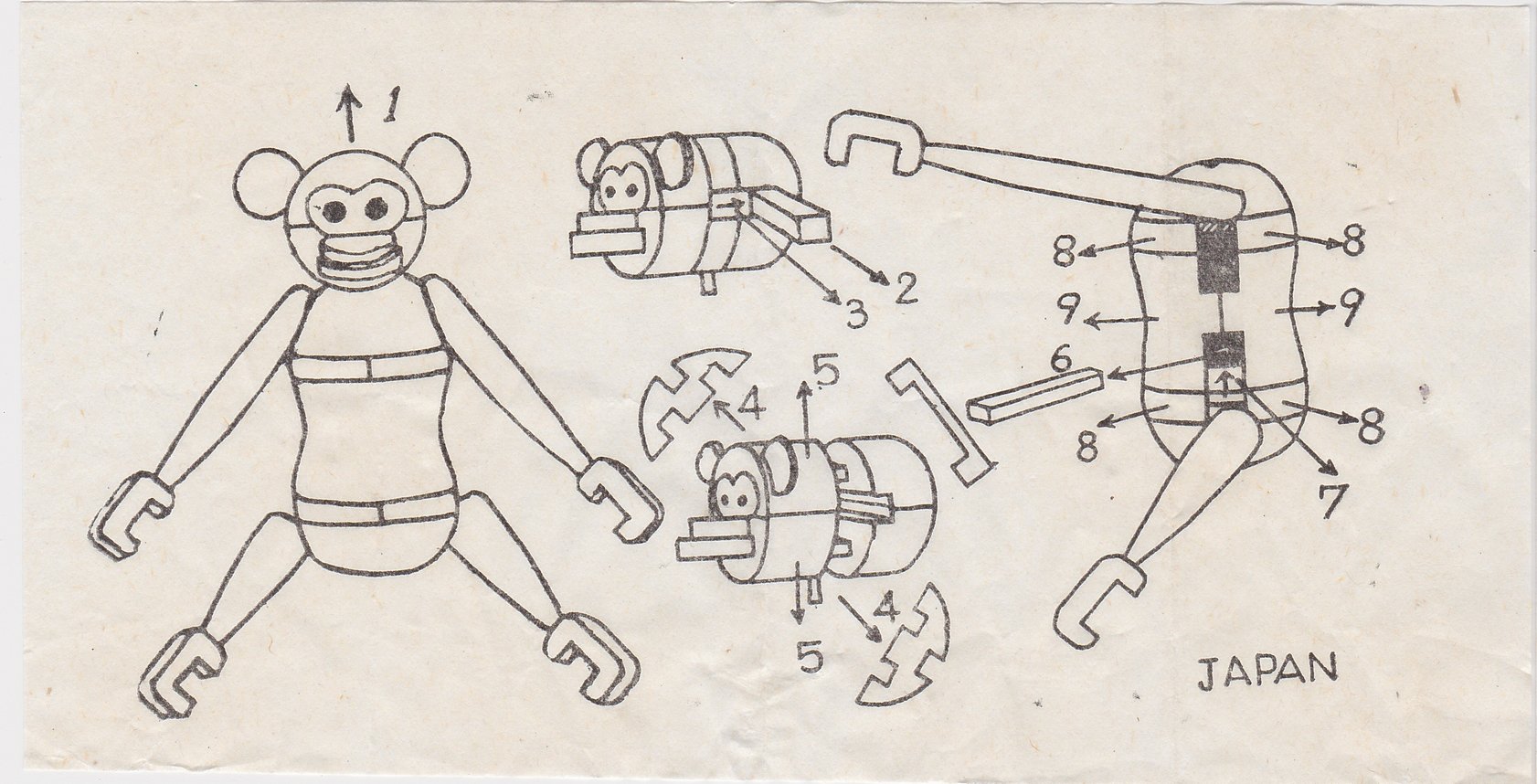
Kumiki Monkey |
||
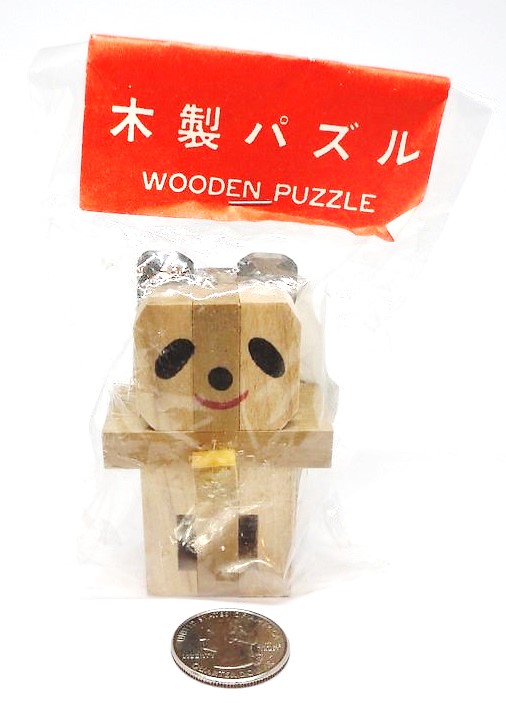
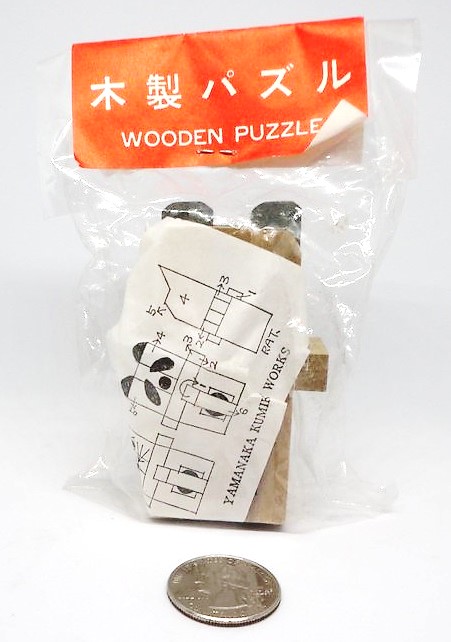
Kumiki Panda - from the Yamanaka Kumiki Works, in its original package with instruction sheet. |
||
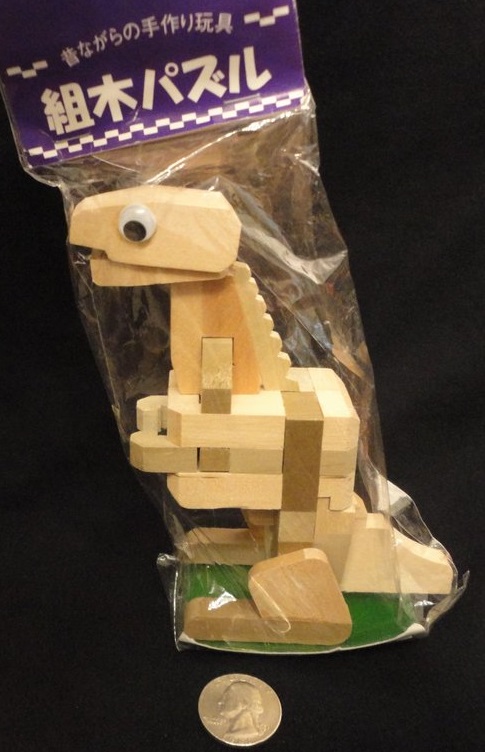
Kumiki Tyrannosaur |
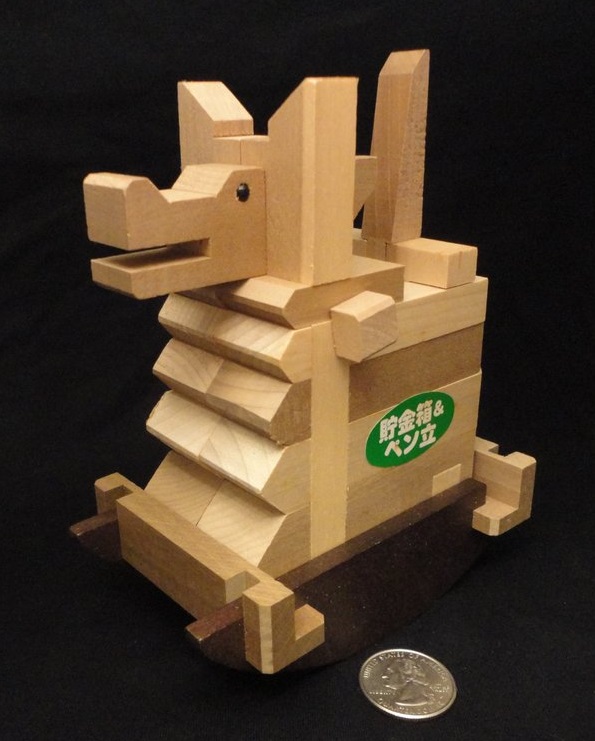
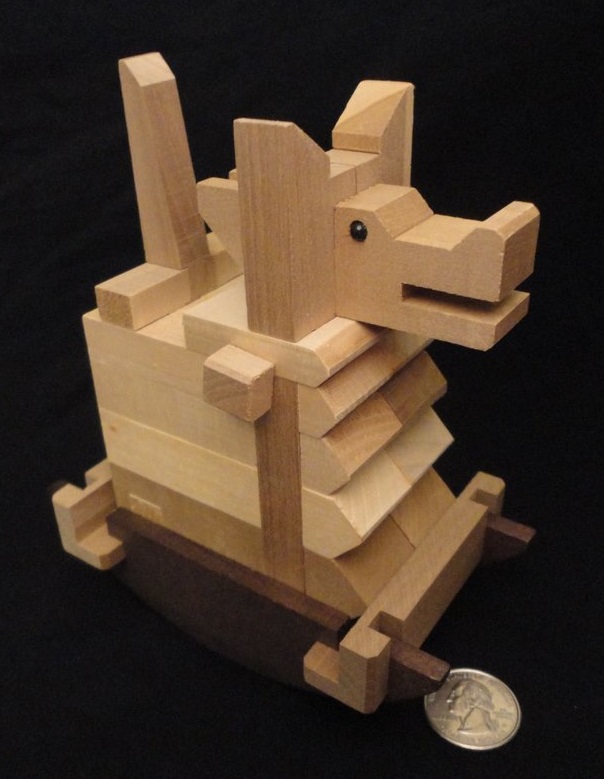
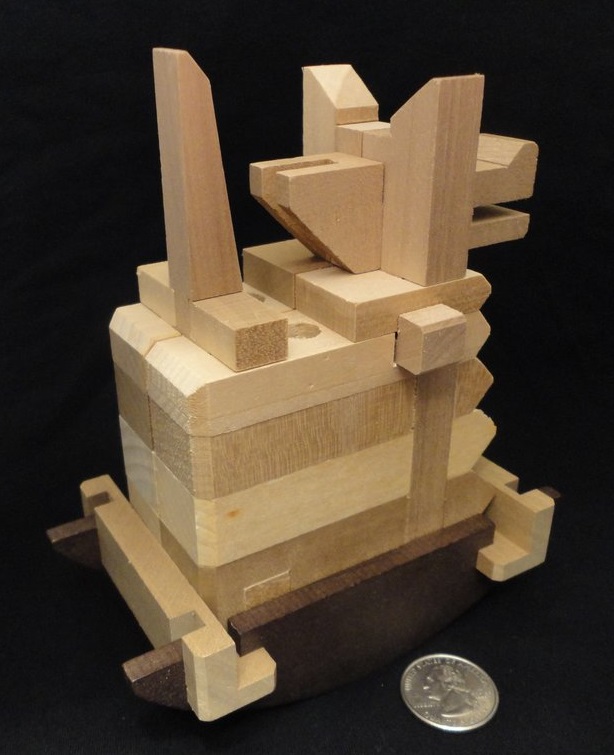
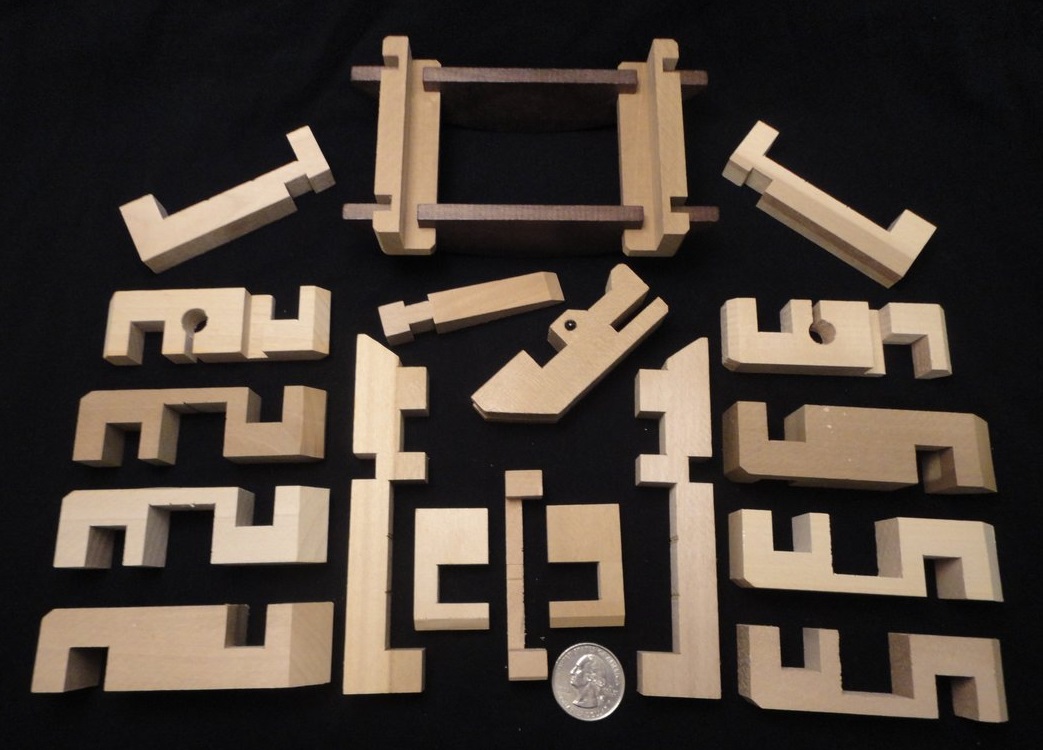
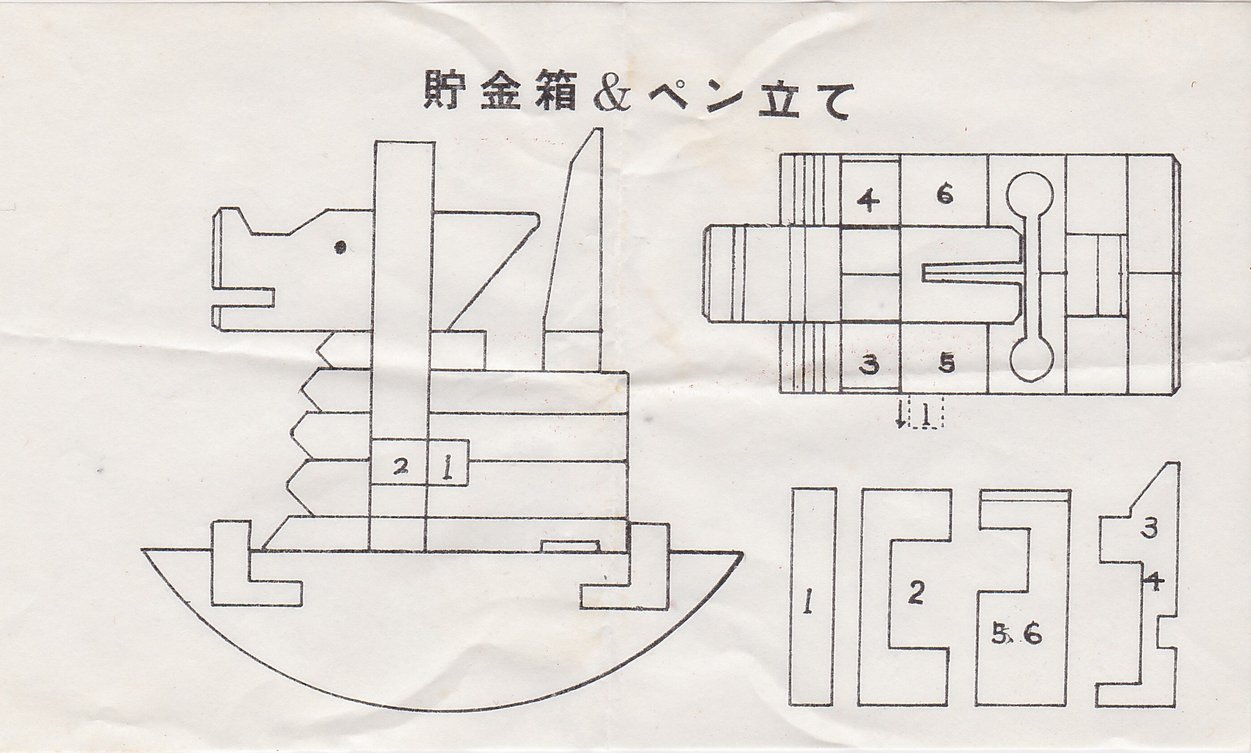
Kumiki Rocking Dragon Bank |
|
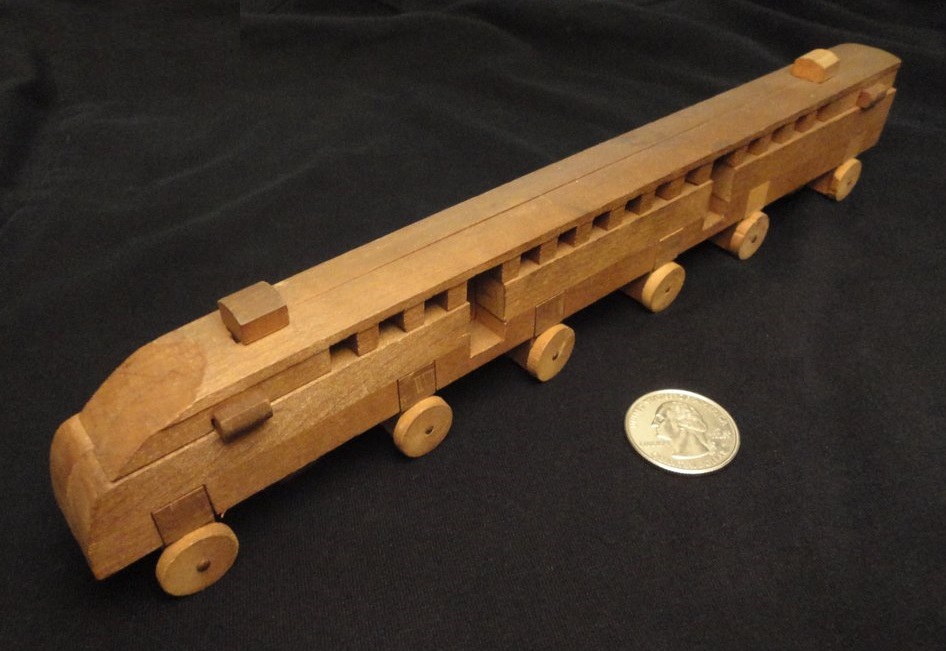

A Kumiki Train |
||
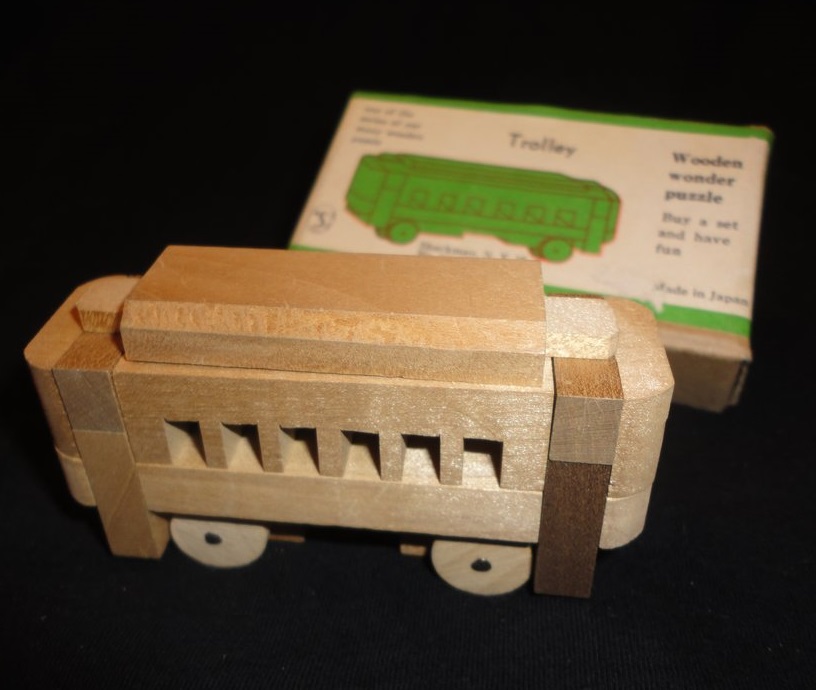
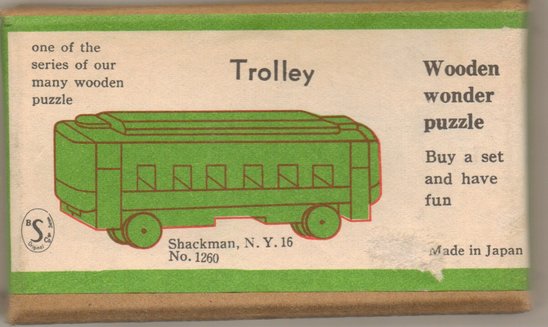
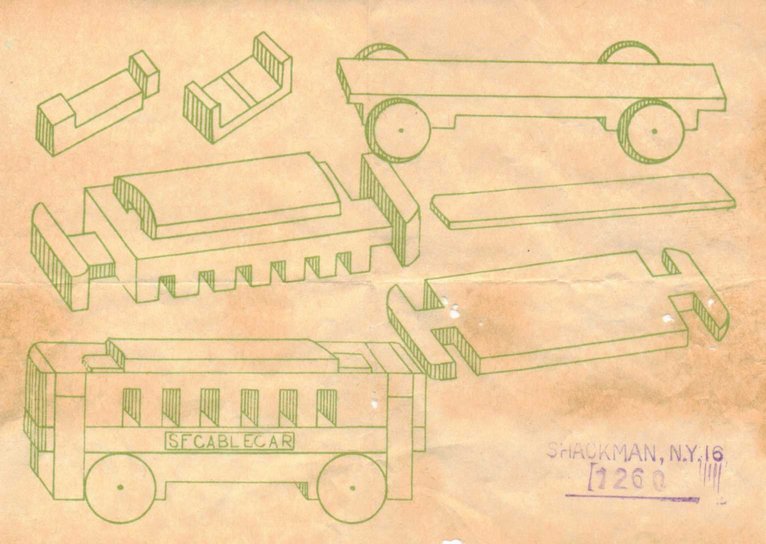
Kumiki Trolley by Shackman with box and instruction sheet |
||
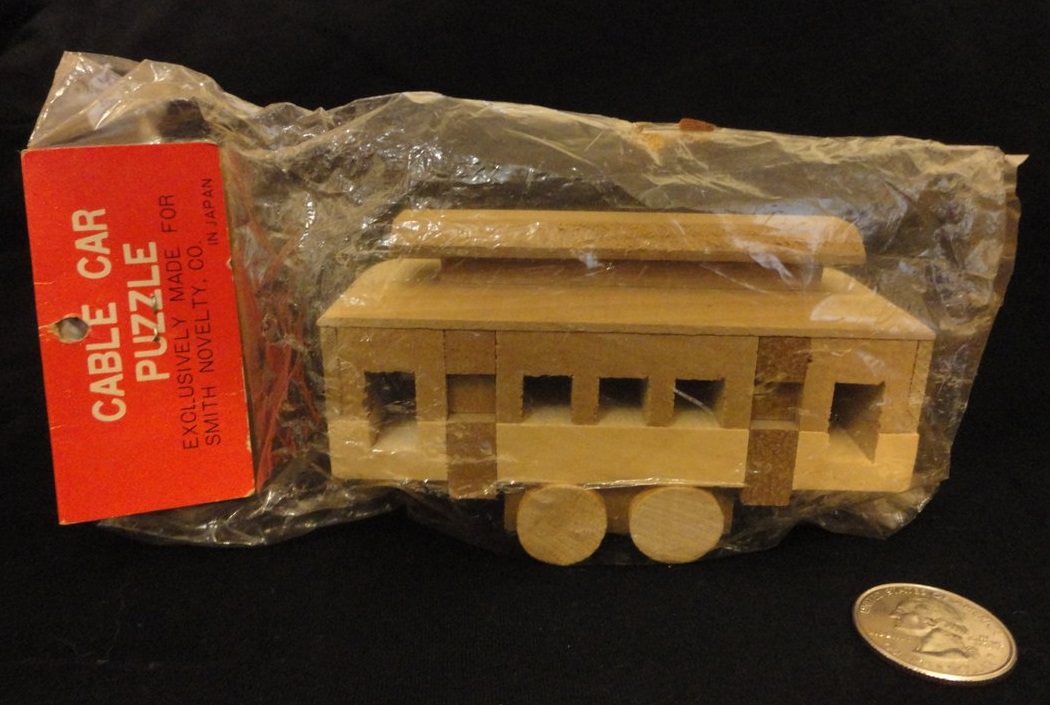
Kumiki Trolley by Smith Novelty |

Kumiki Trolley A smaller, narrower version. |

Kumiki Locomotive |
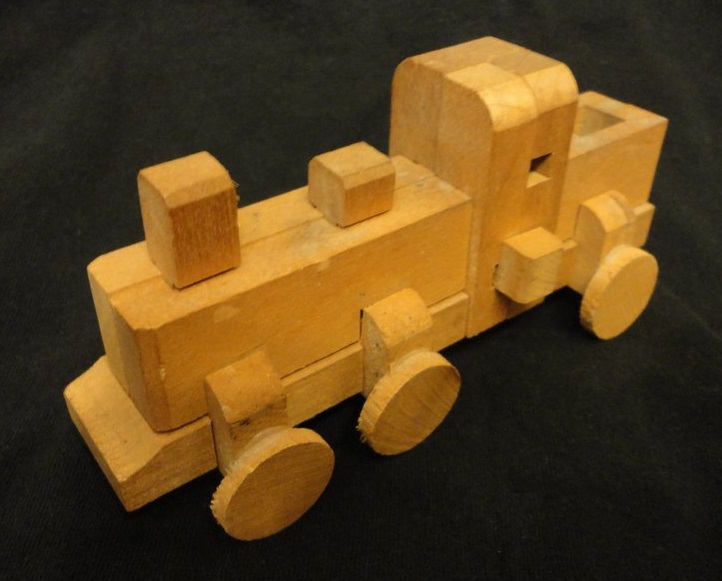
Kumiki Locomotive |
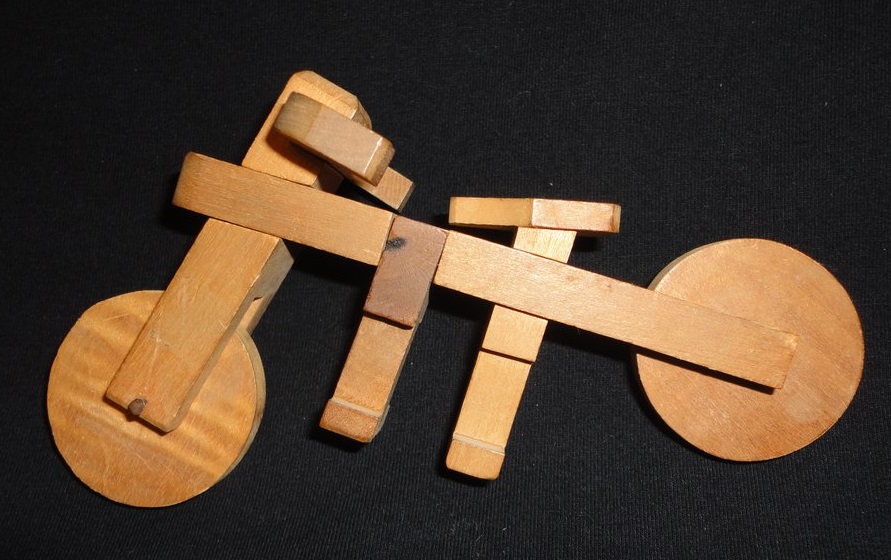
Kumiki Motorcycle - this one is missing a few pieces |
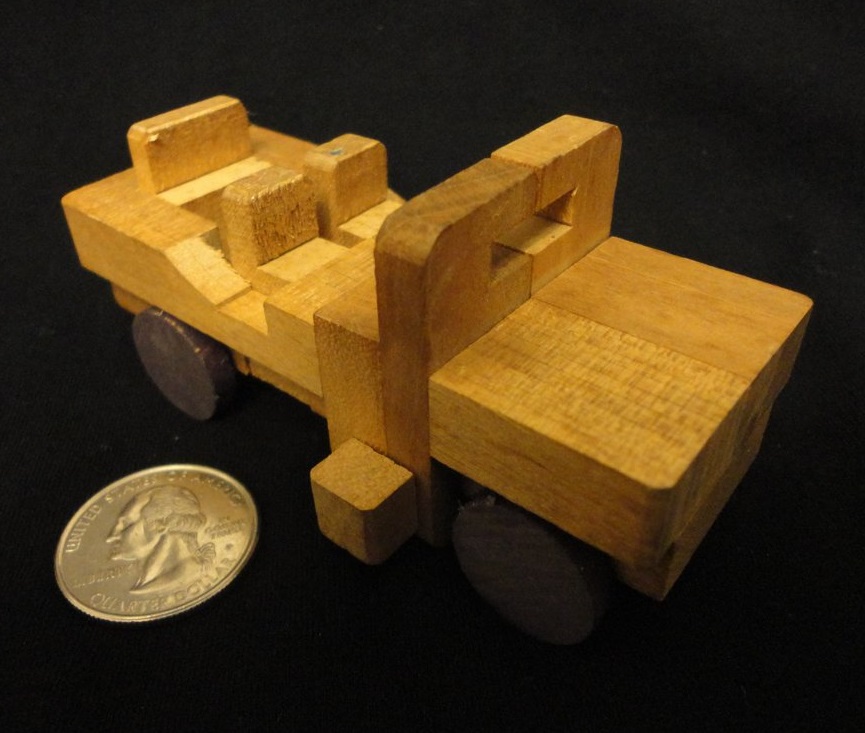
Kumiki small Jeep |
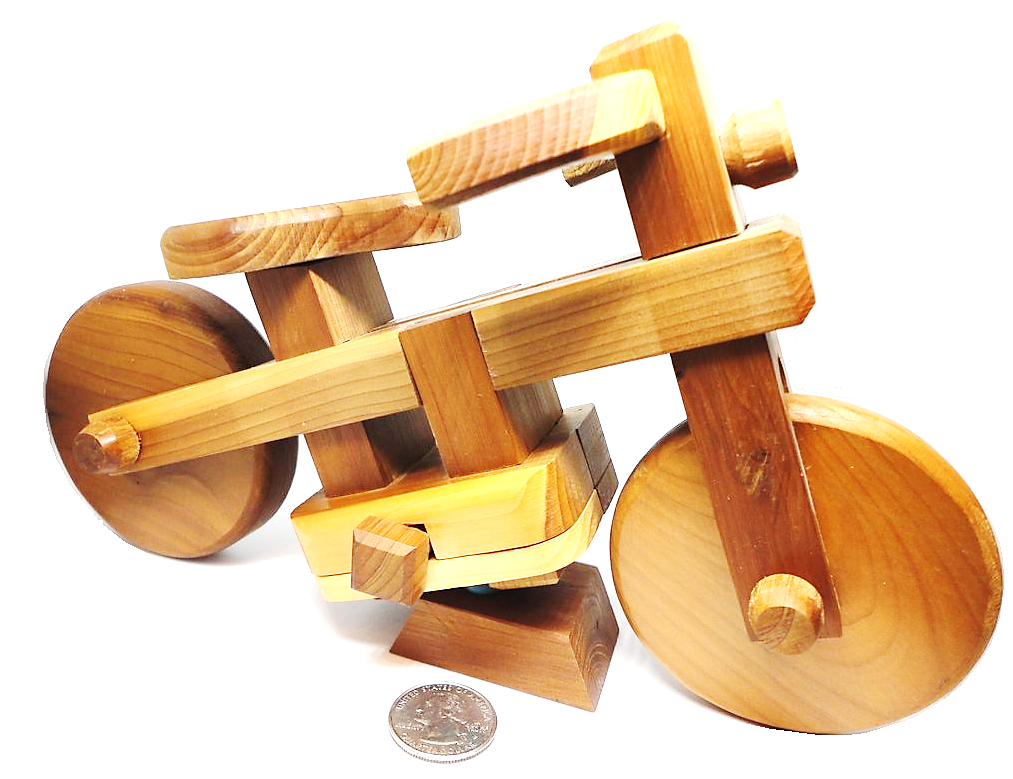
A huge kumiki Motorcycle, with stand. |
||
|
|
||
|
|
||
|
|
||
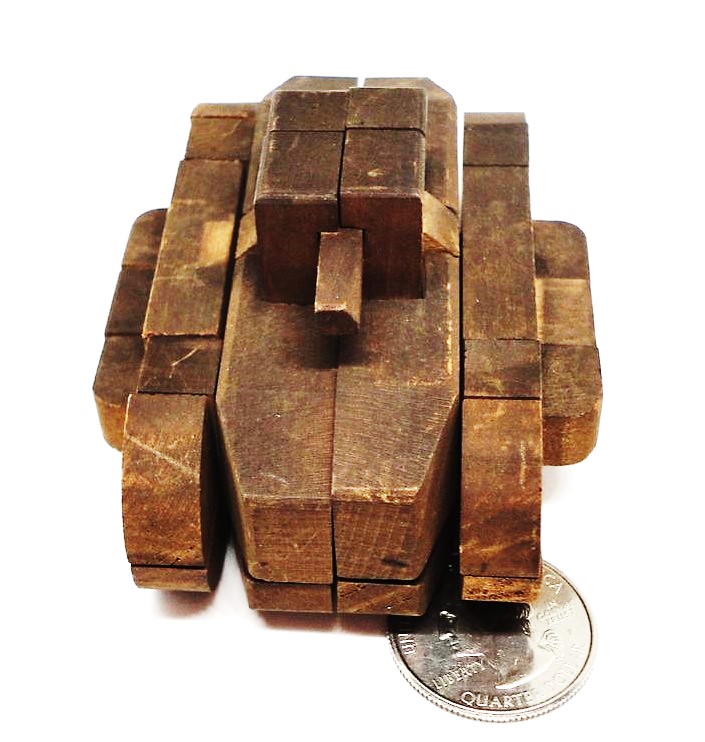

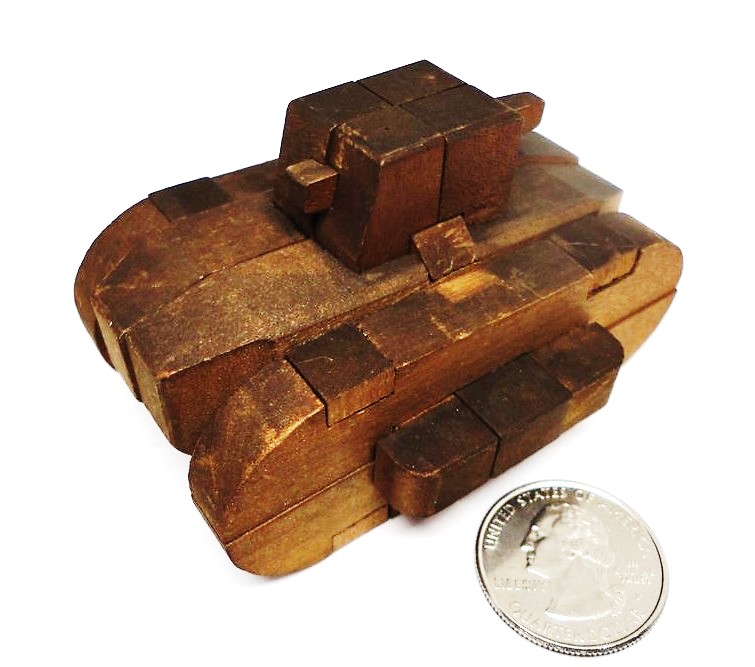
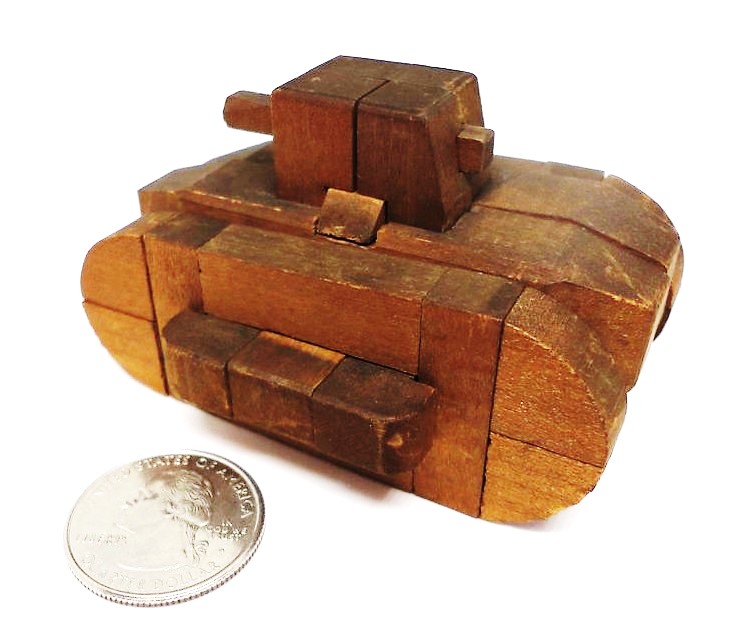
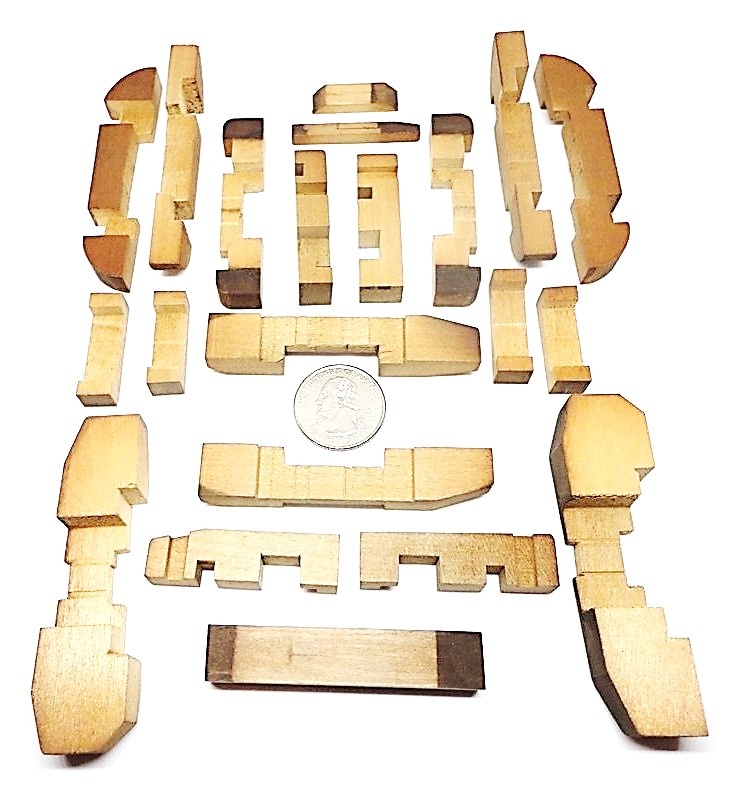
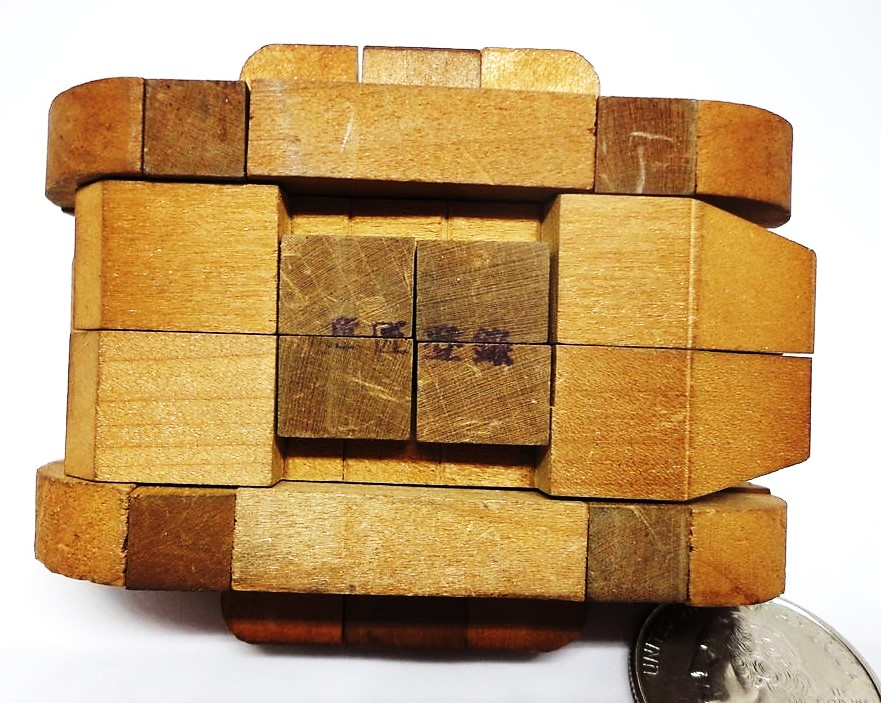
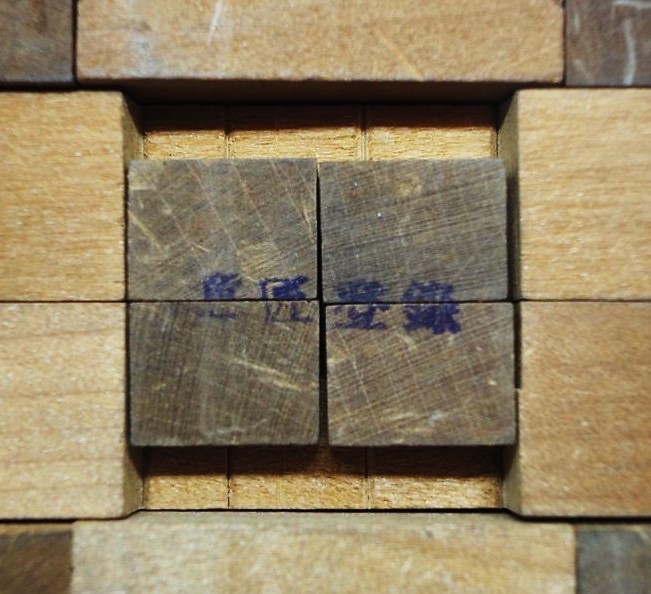

Kumiki small Tank This small Tank puzzle along with the Gun Truck, have acquired a rich patina. I've shown the markings on the bottom in two orientations since I don't know which is correct. |
||
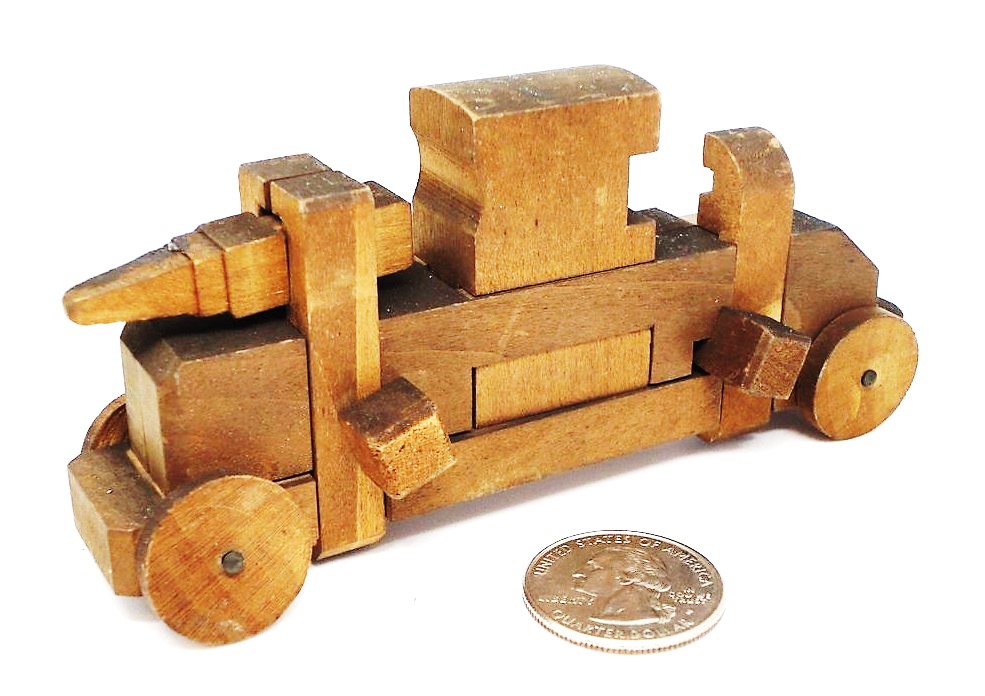
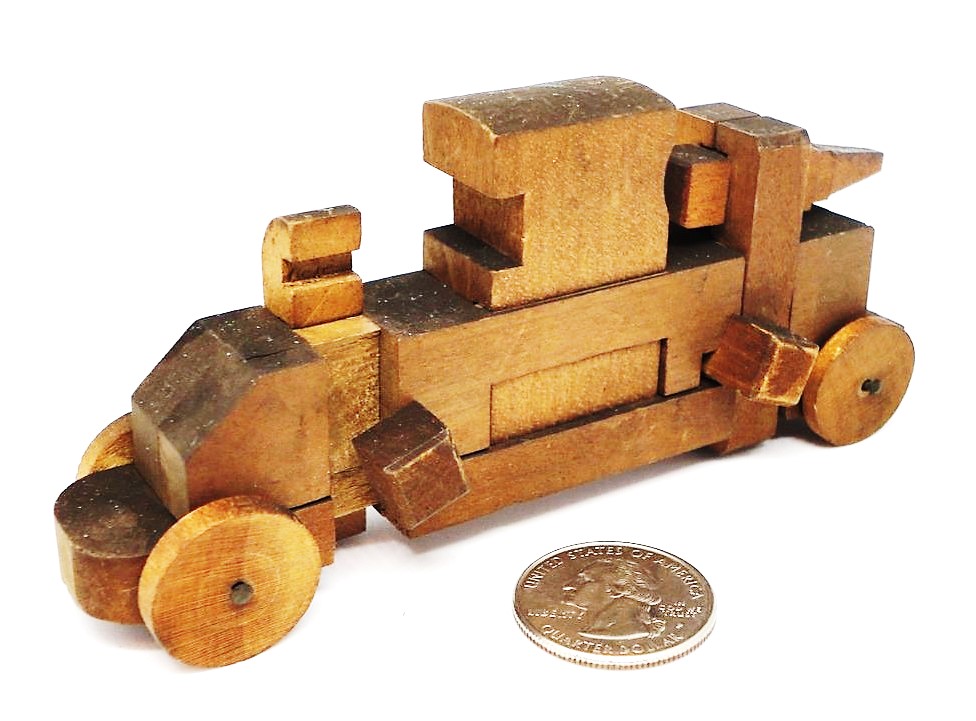
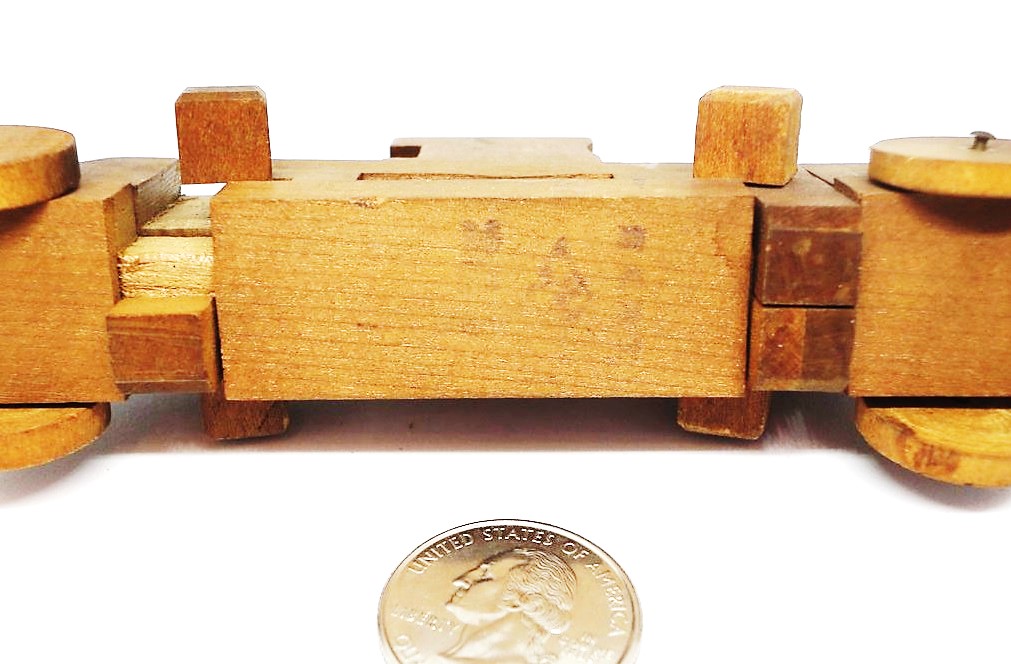
Kumiki Gun Truck This "Gun Truck" along with the small Tank, have acquired a rich patina. Unfortunately my example is missing a few pieces. |
||
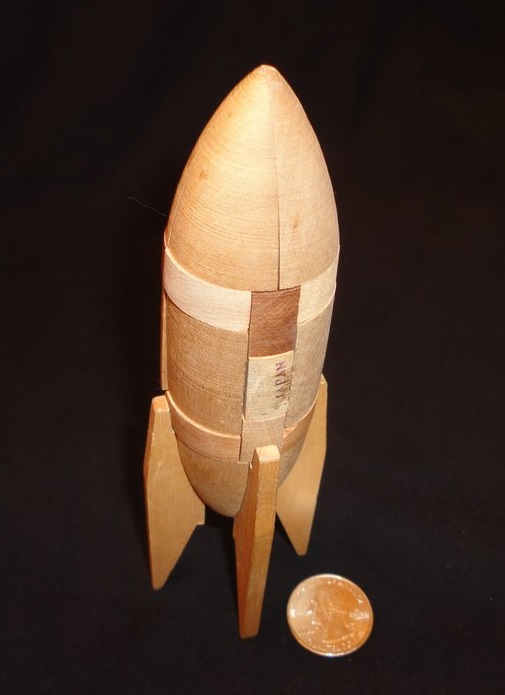

Kumiki Rocket |
||

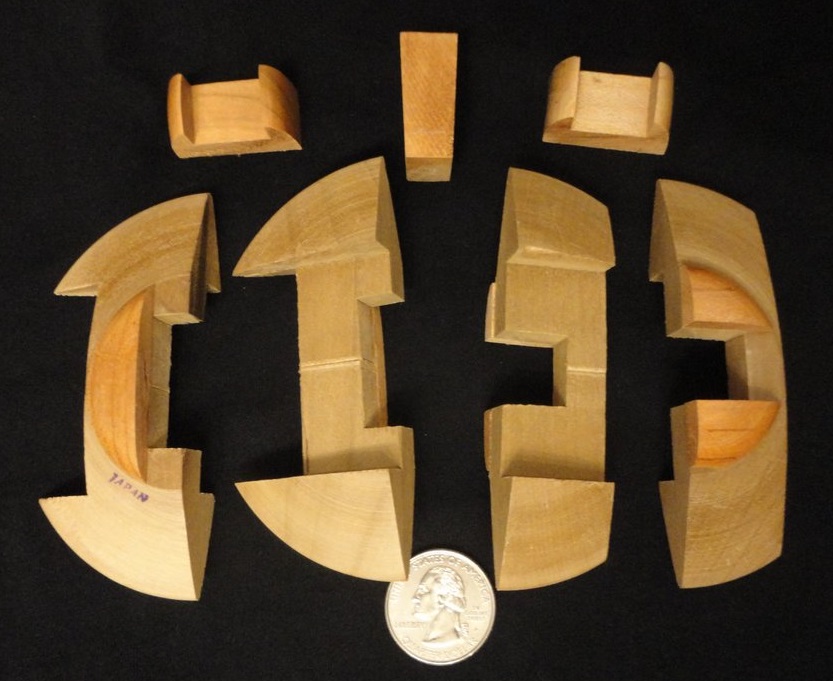
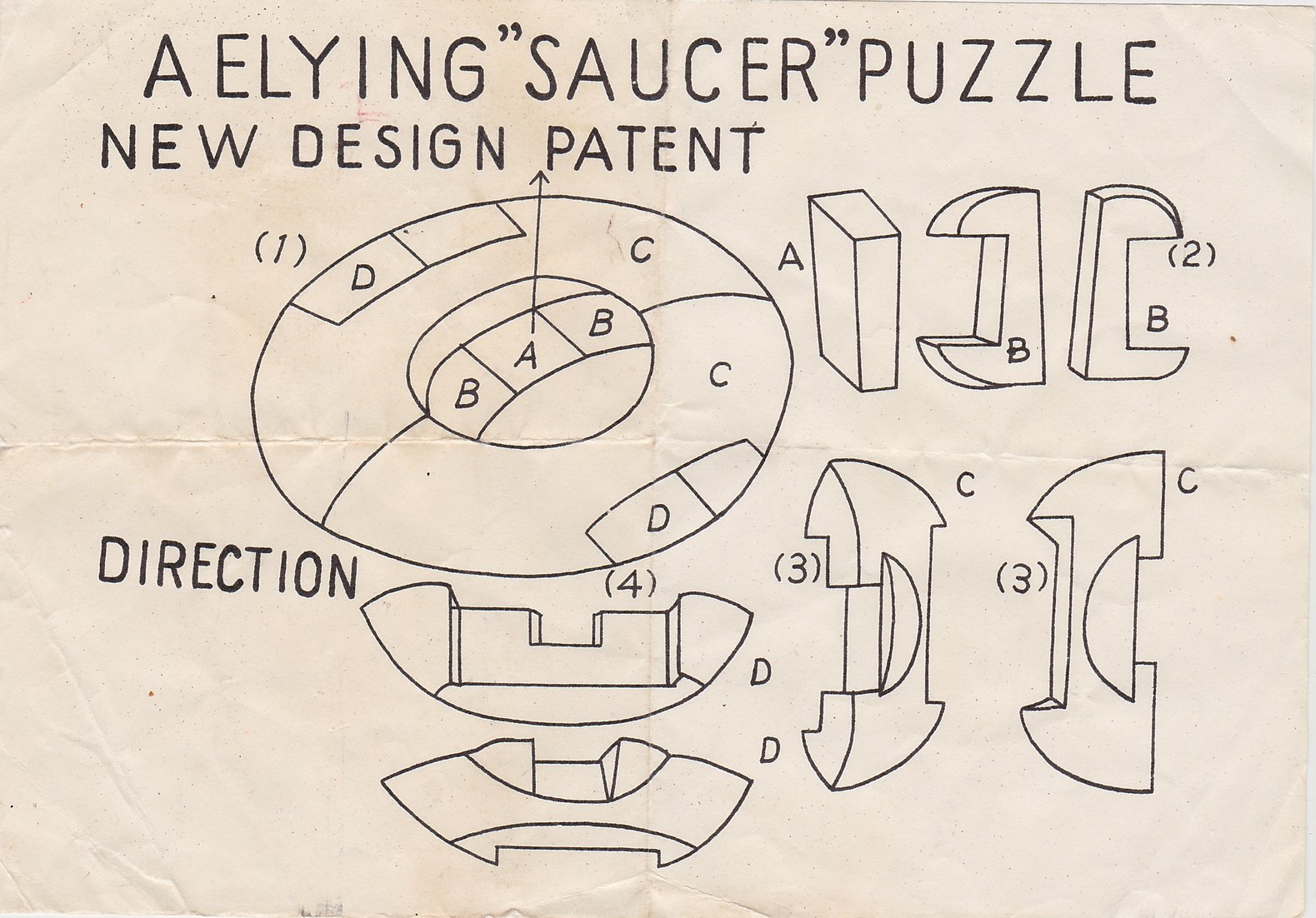
Kumiki Flying Saucer - a simple but elegant design |
||
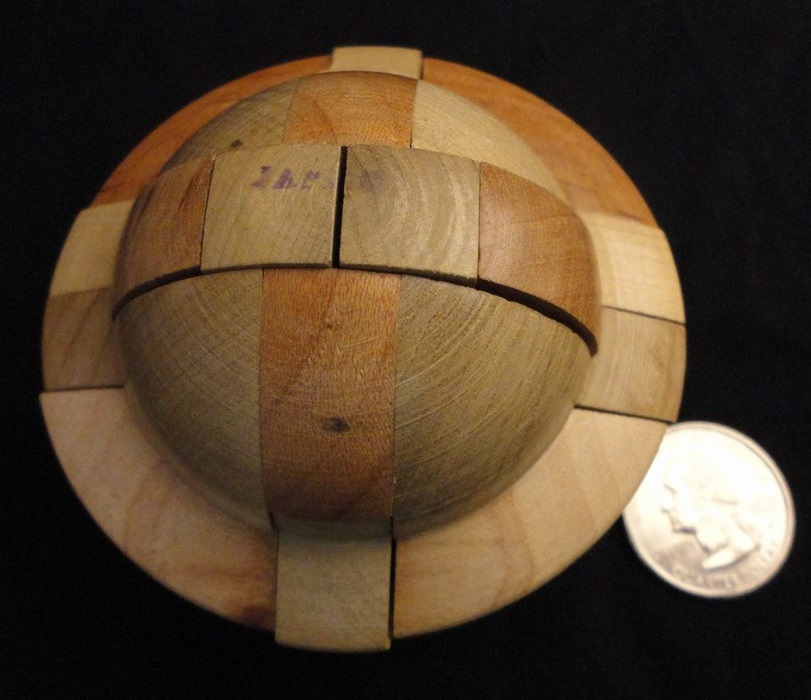
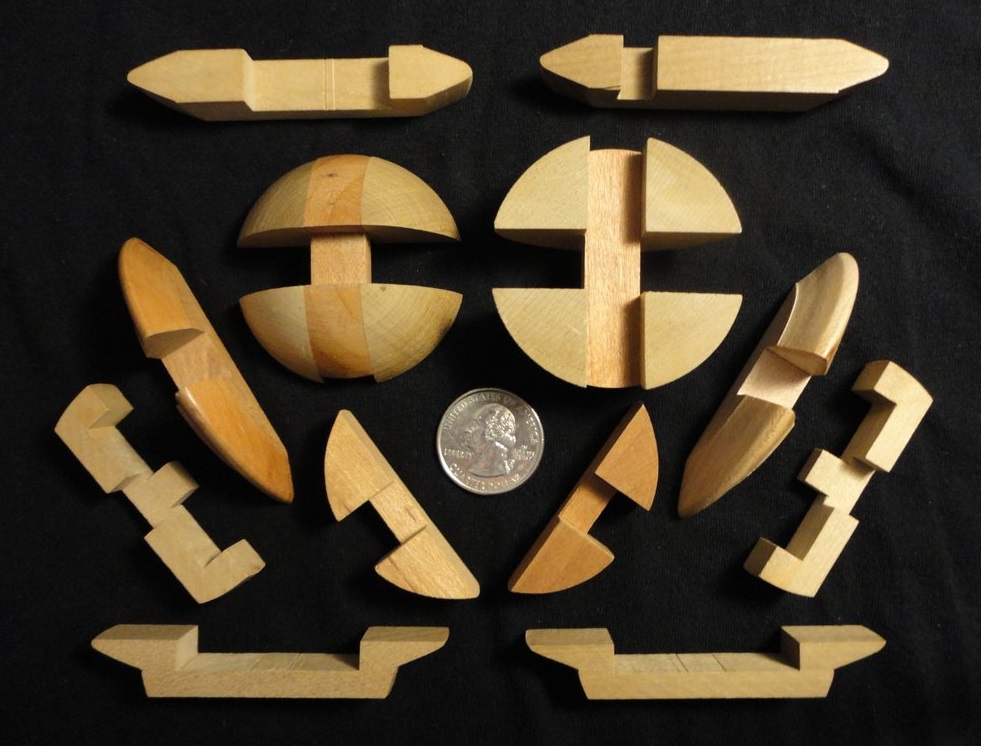
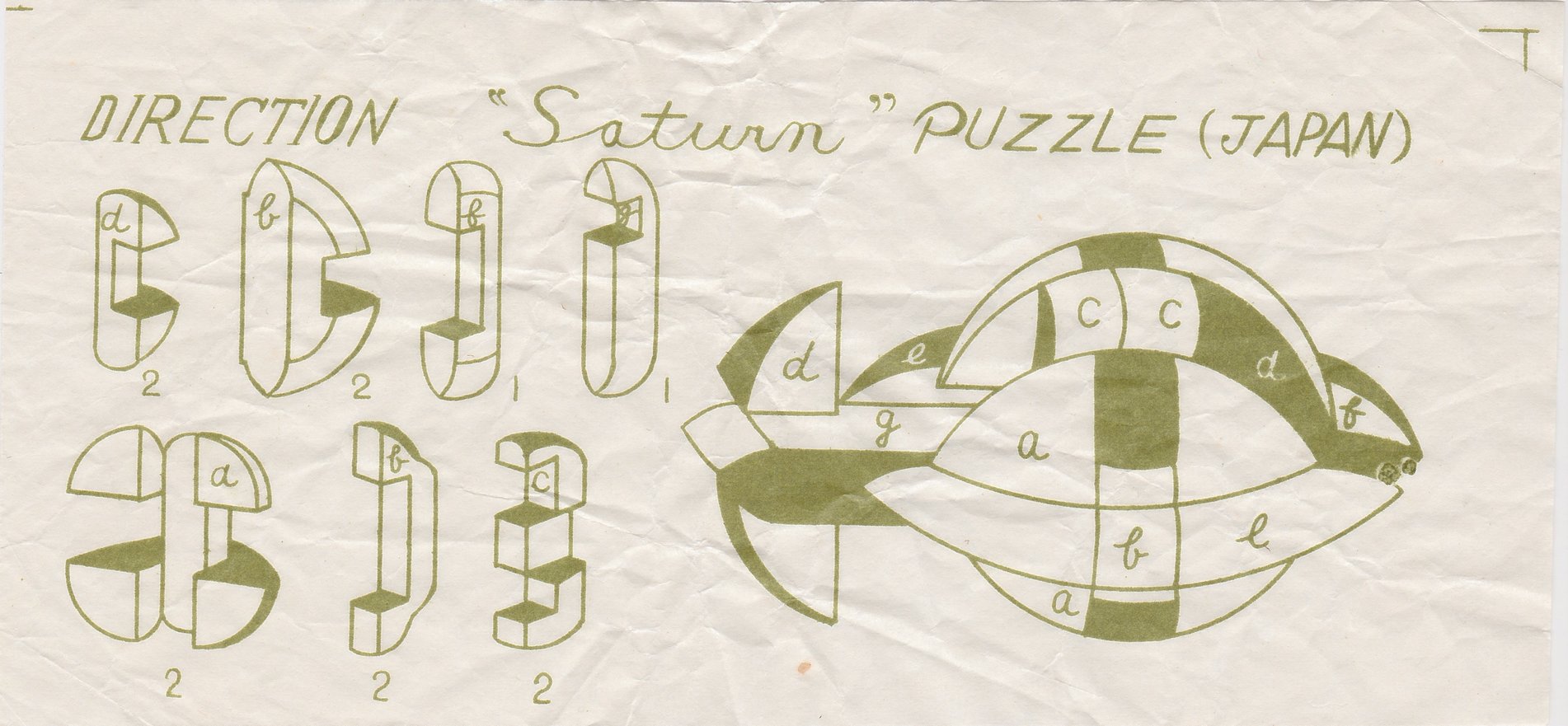
Kumiki Saturn - I finally found an intact example. |
||
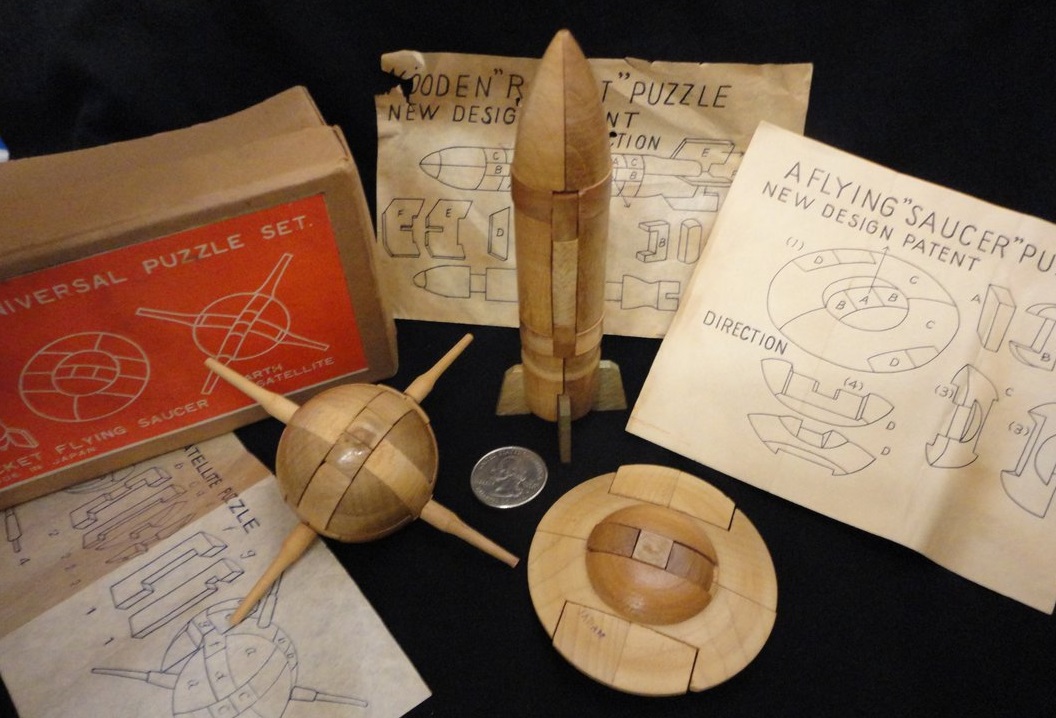
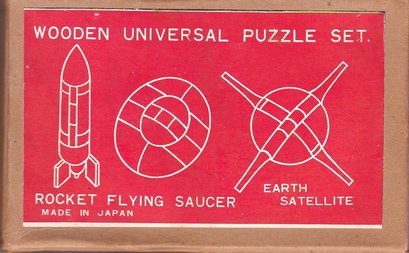

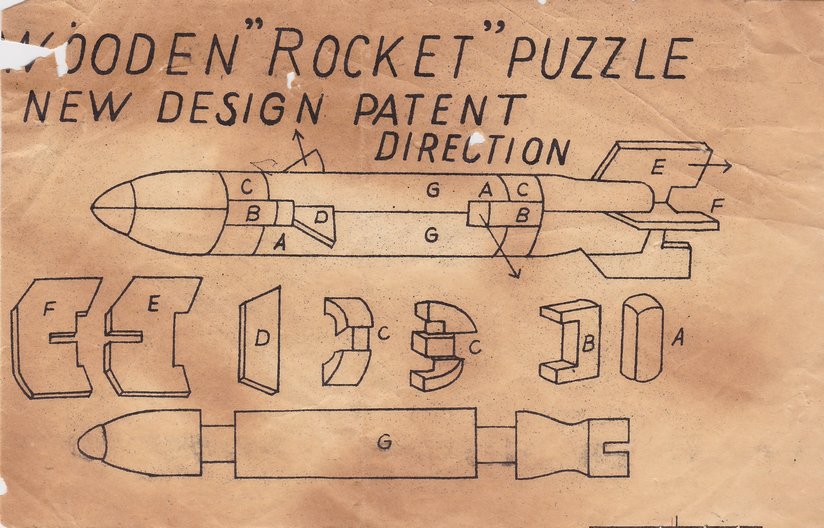

Wooden Universal Puzzle Set - a vintage set of three space-themed Kumiki puzzles Complete with box and instruction sheets. |
||
|
|
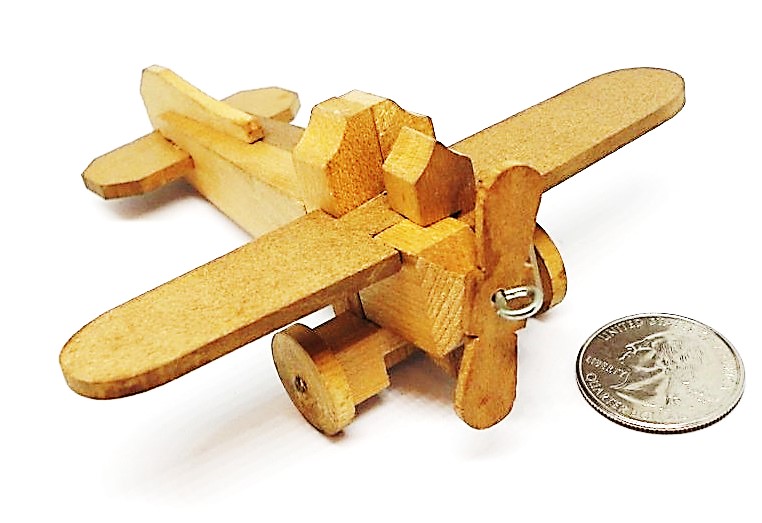
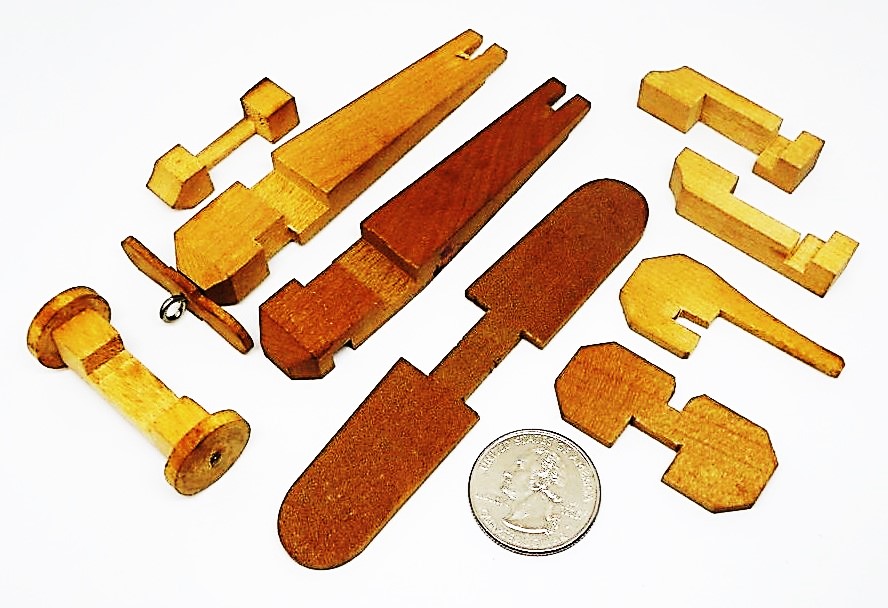
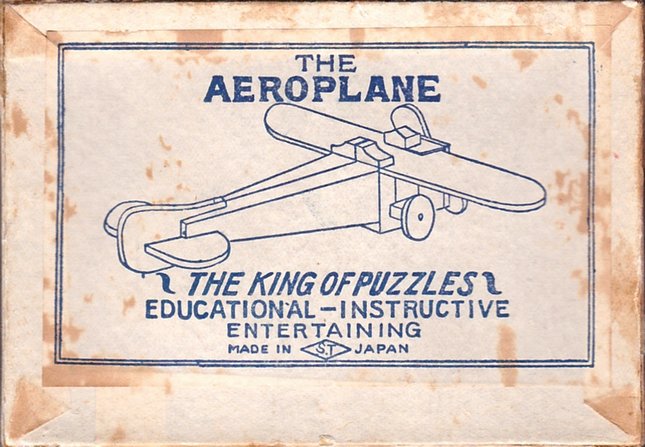
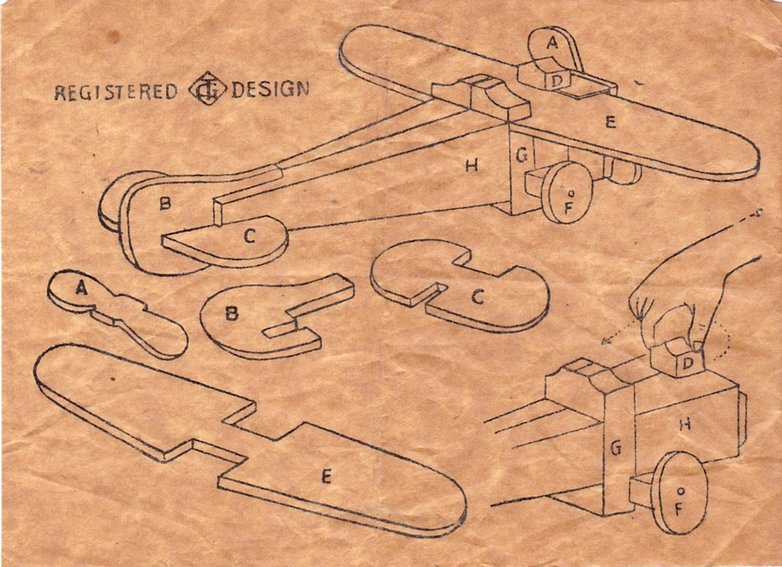
Vintage Kumiki Aeroplane - Japan |
|
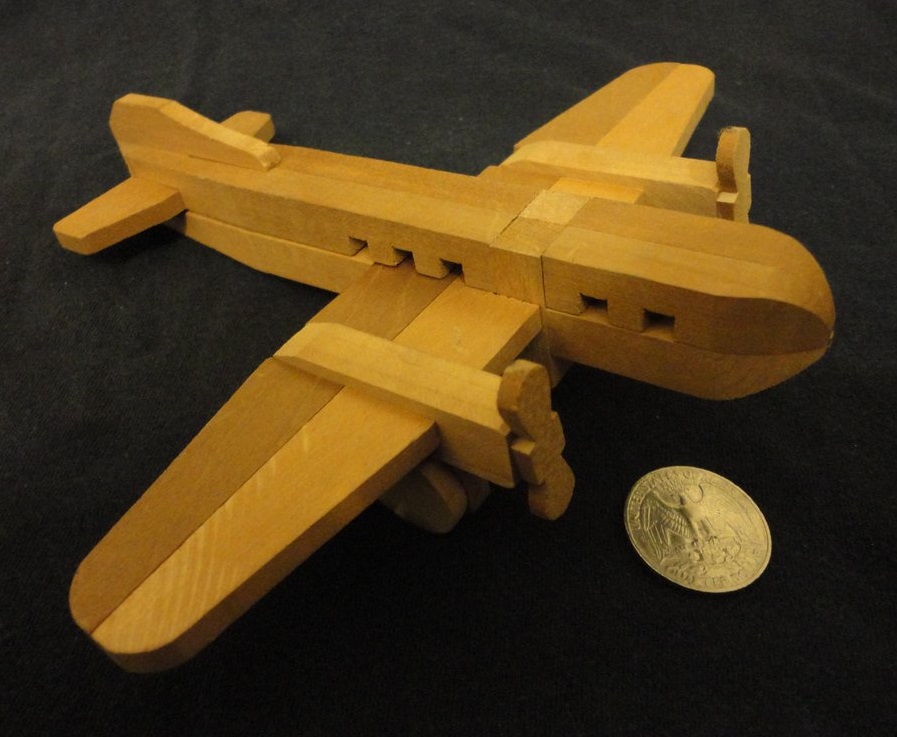
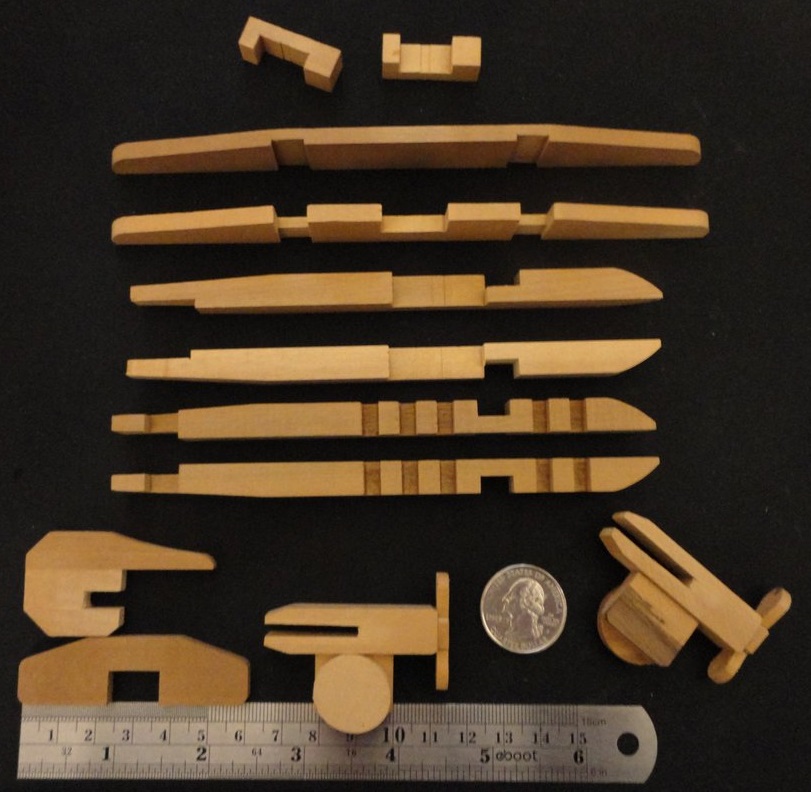
Kumiki Bomber |
||
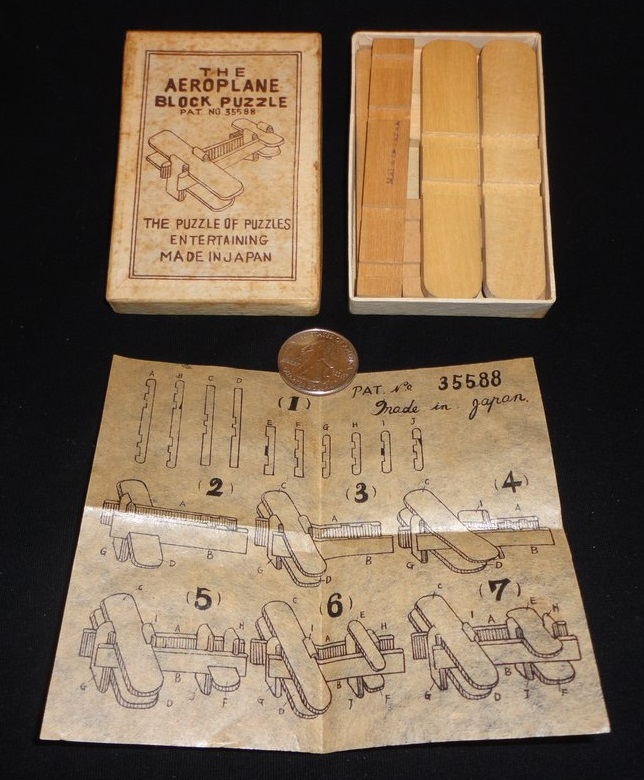
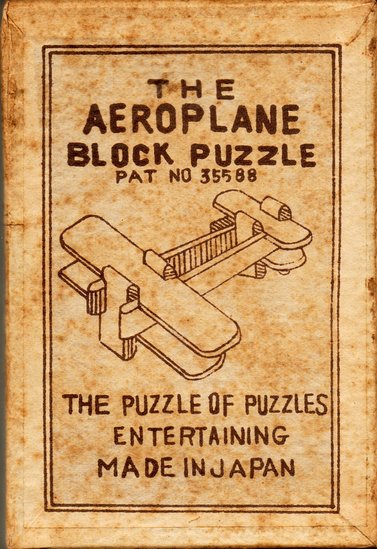
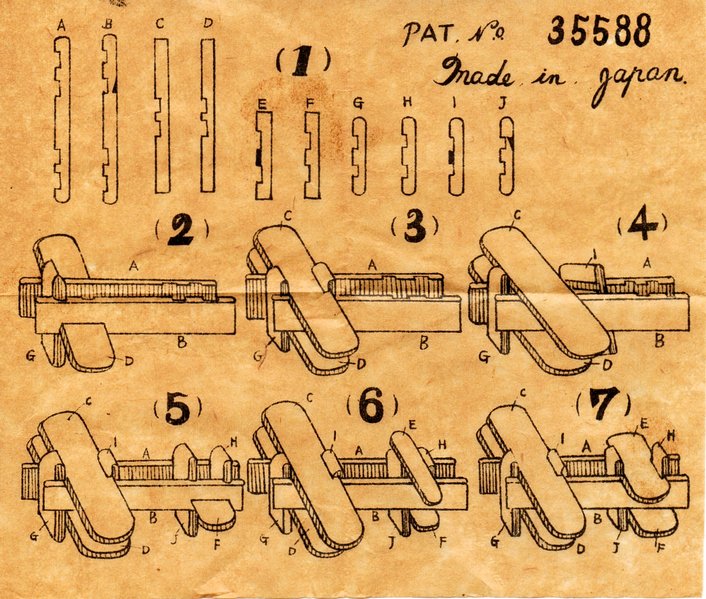
Vintage Aeroplane Block Puzzle |
||
|
|
||

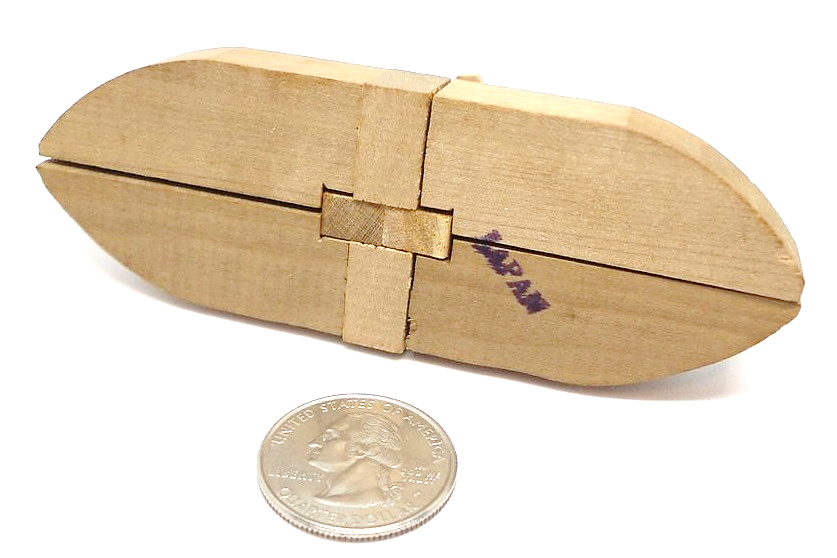
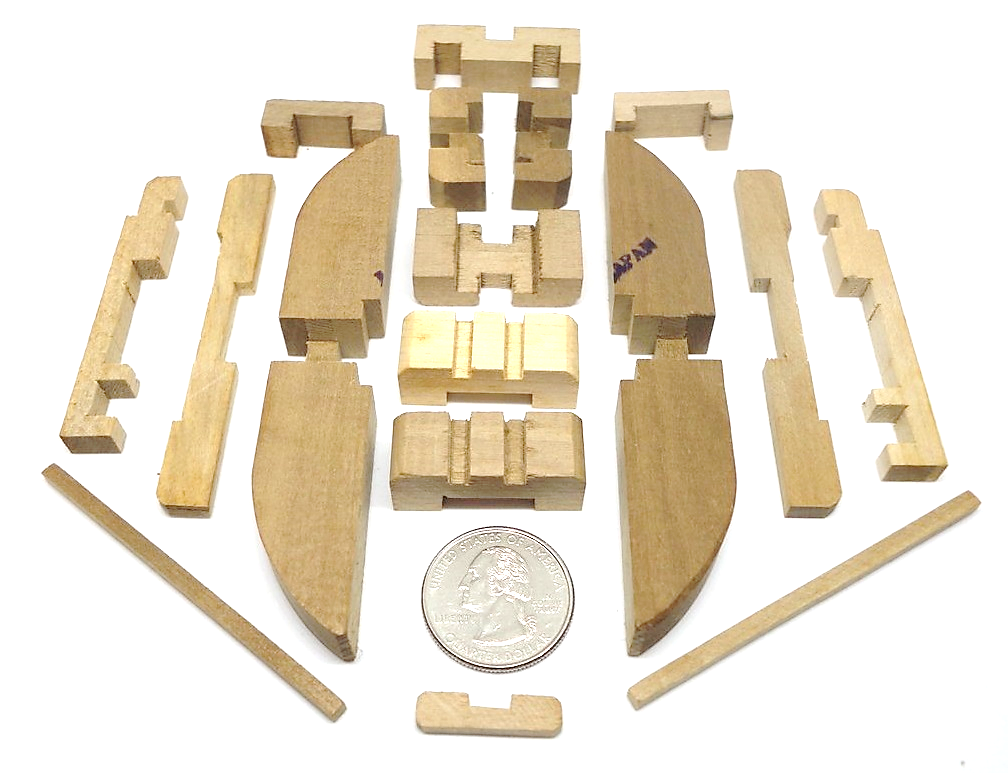
Kumiki Battleship Of the Kumiki ships I have, I think this one has the most interesting architecture. |
||

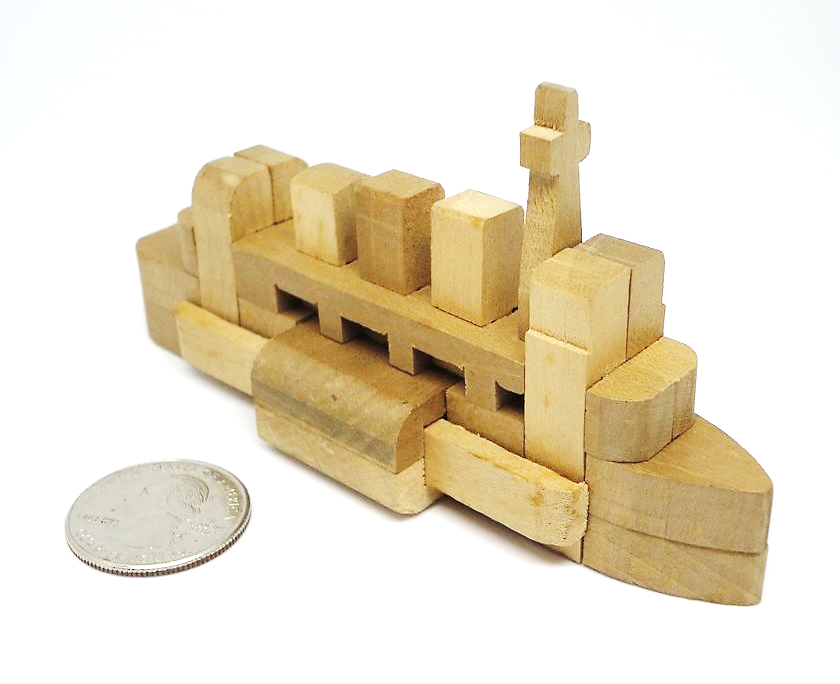
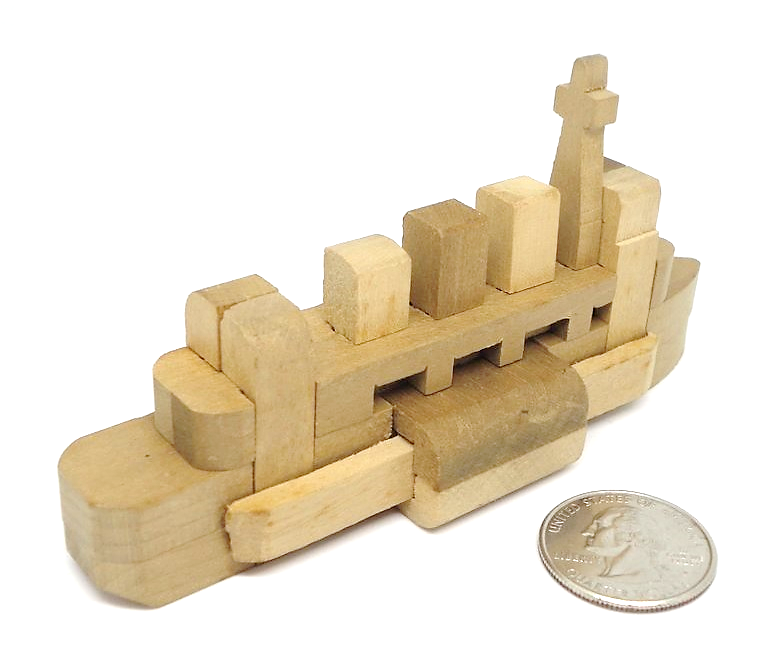
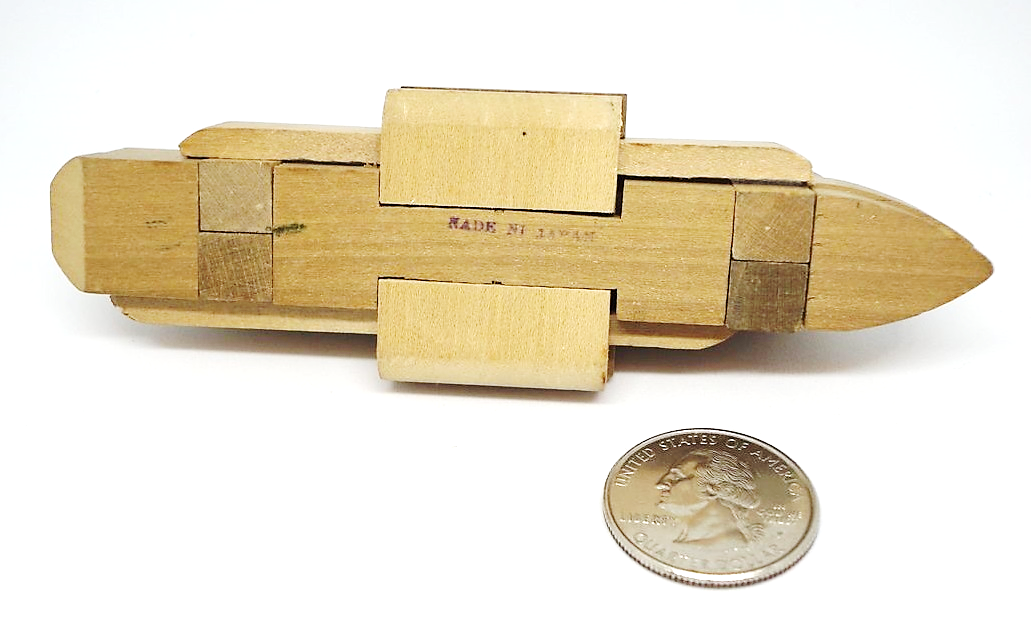
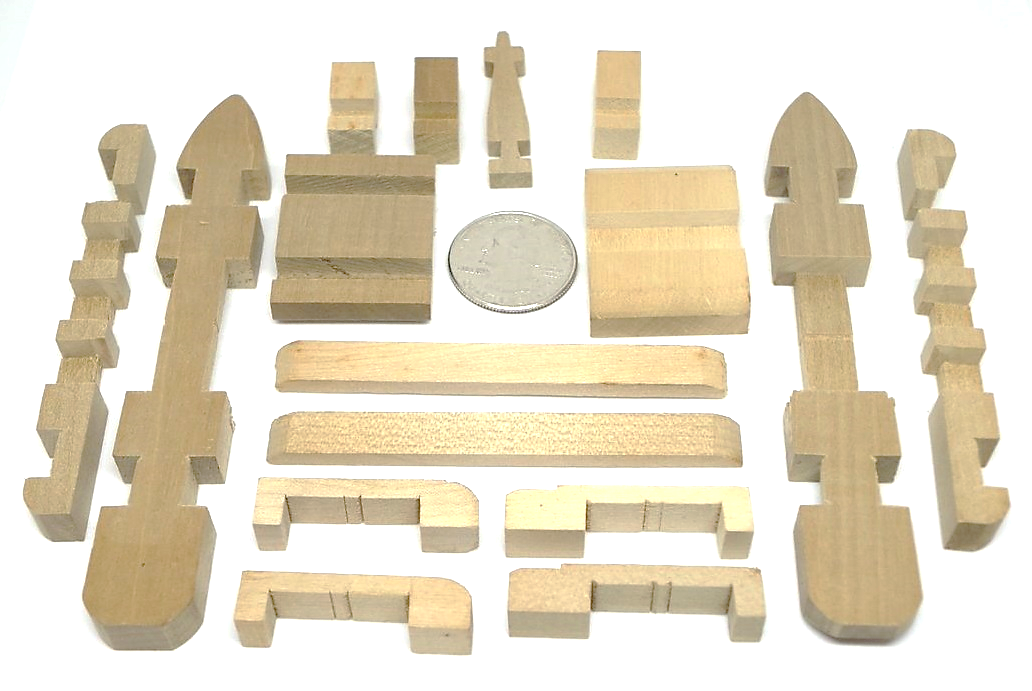
Kumiki Cruiser - a classic vintage puzzle from Japan. |
||
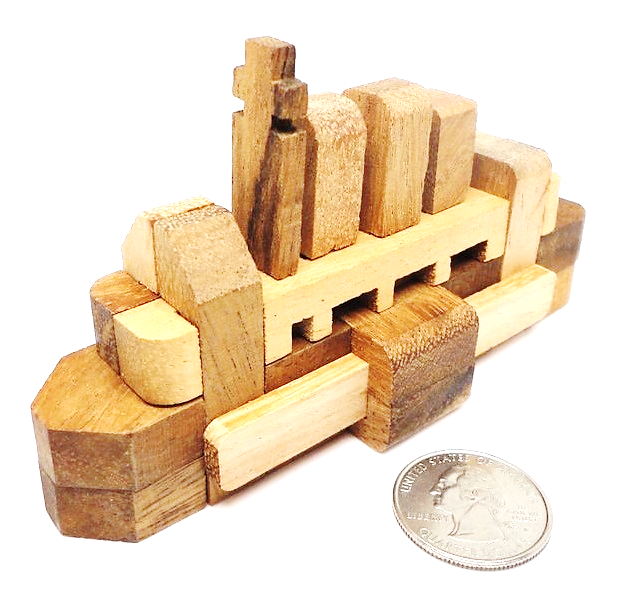
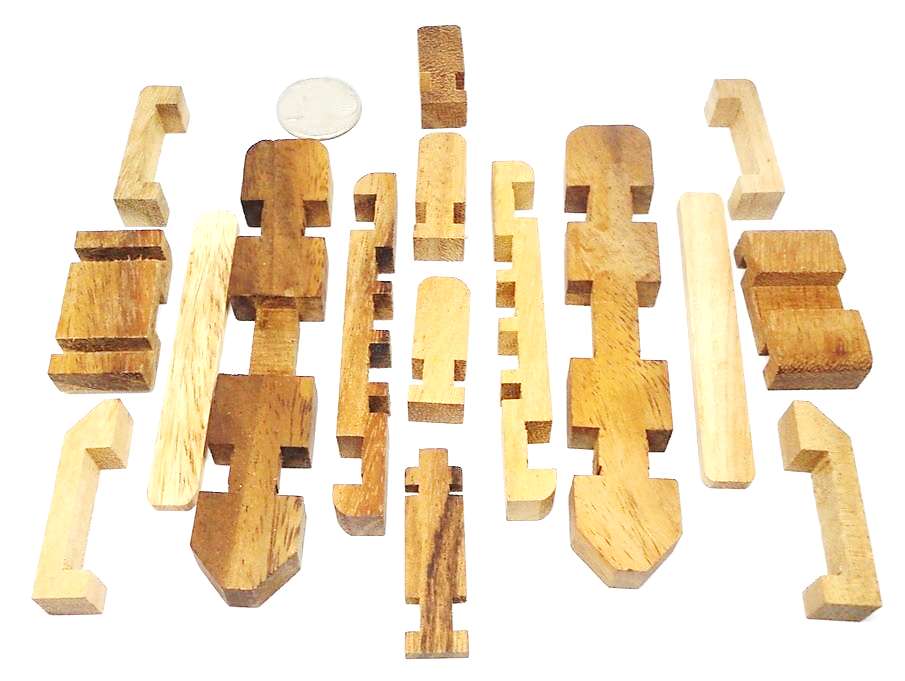
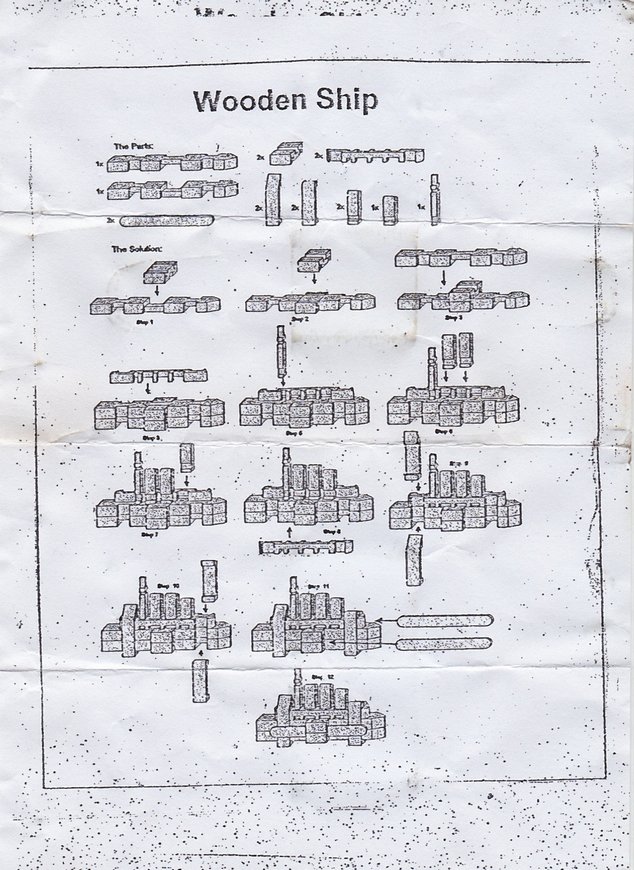
New Kumiki Ship - this example is a modern offering, made from monkeypod rather than Ho wood, including (poorly) photocopied instructions rather than rice paper. |
||
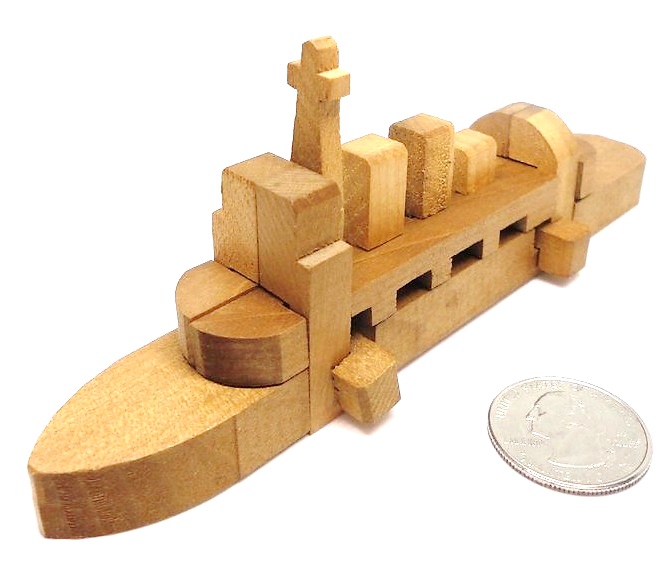

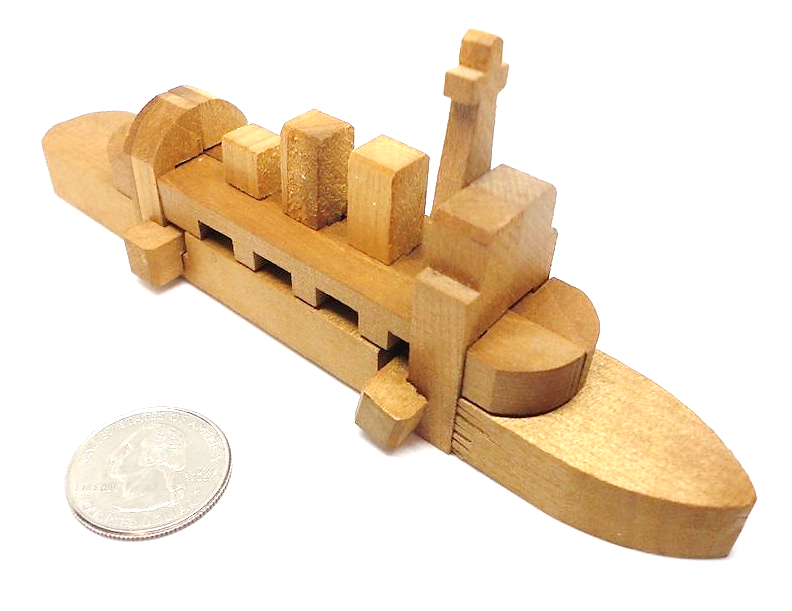
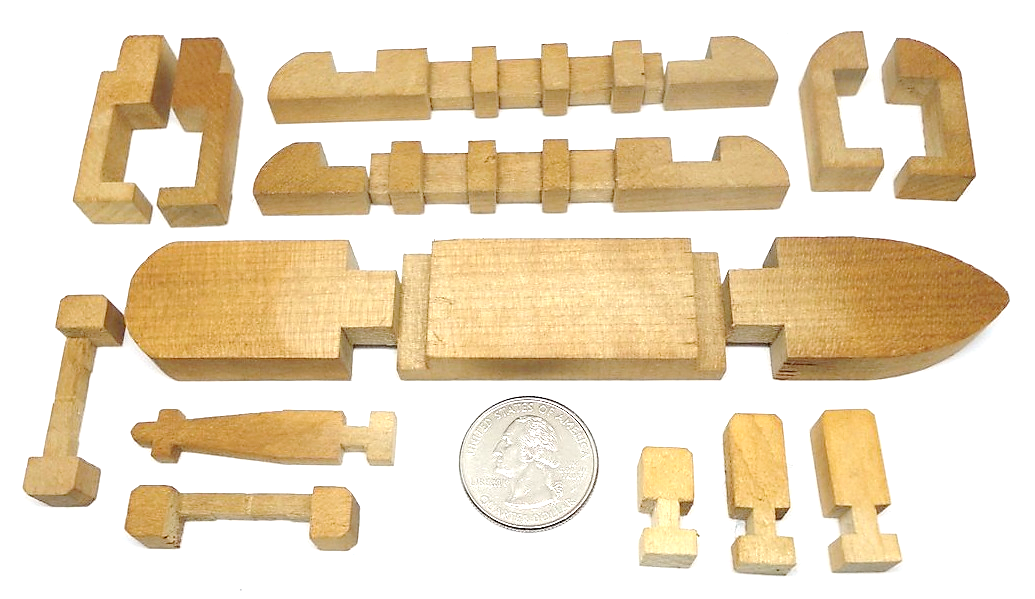
Longer Kumiki Cruiser - note the lack of side panels. |
||
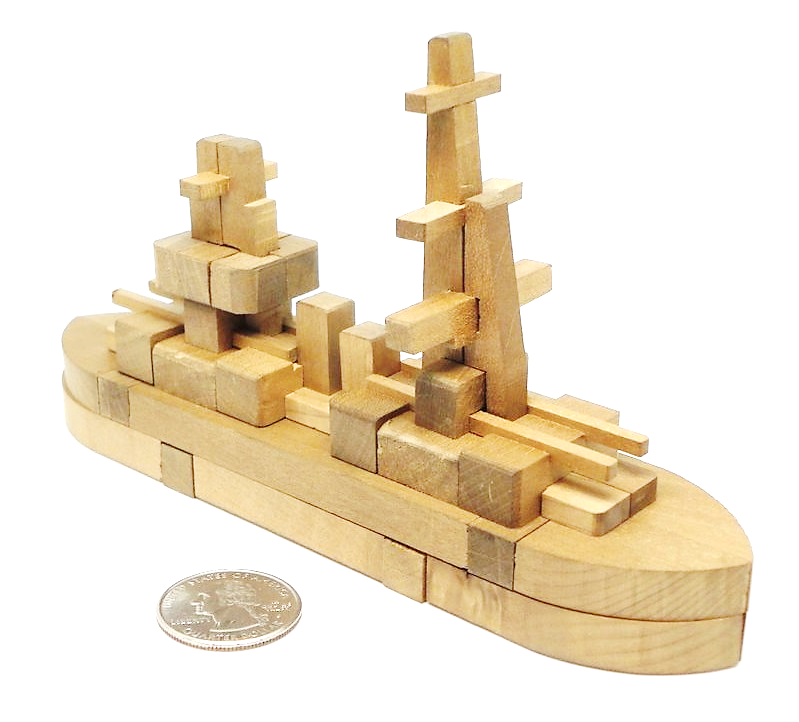
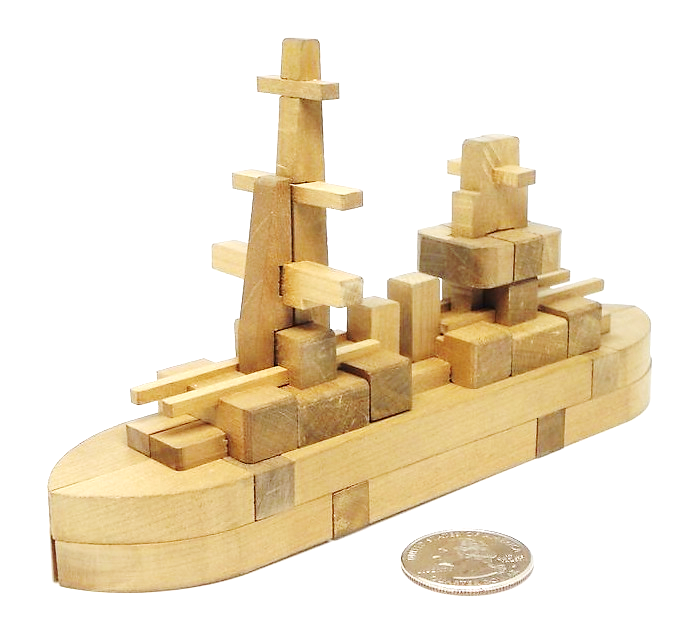
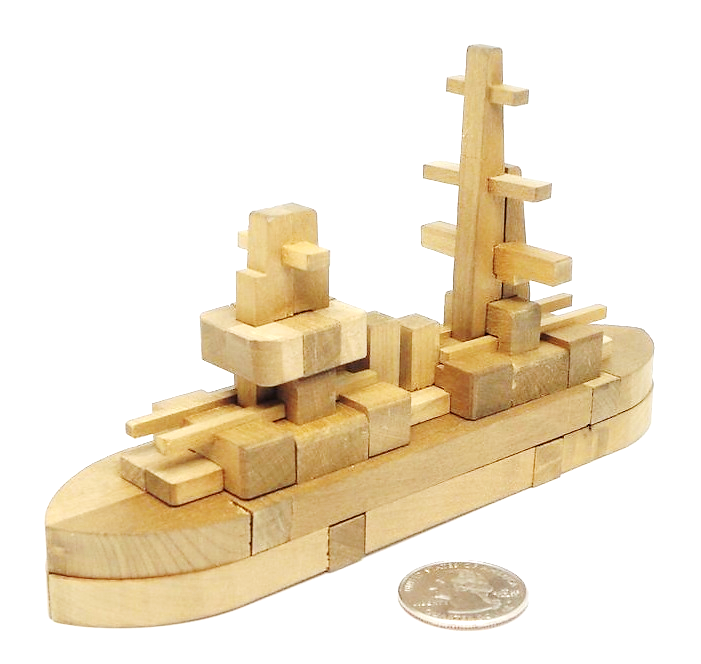
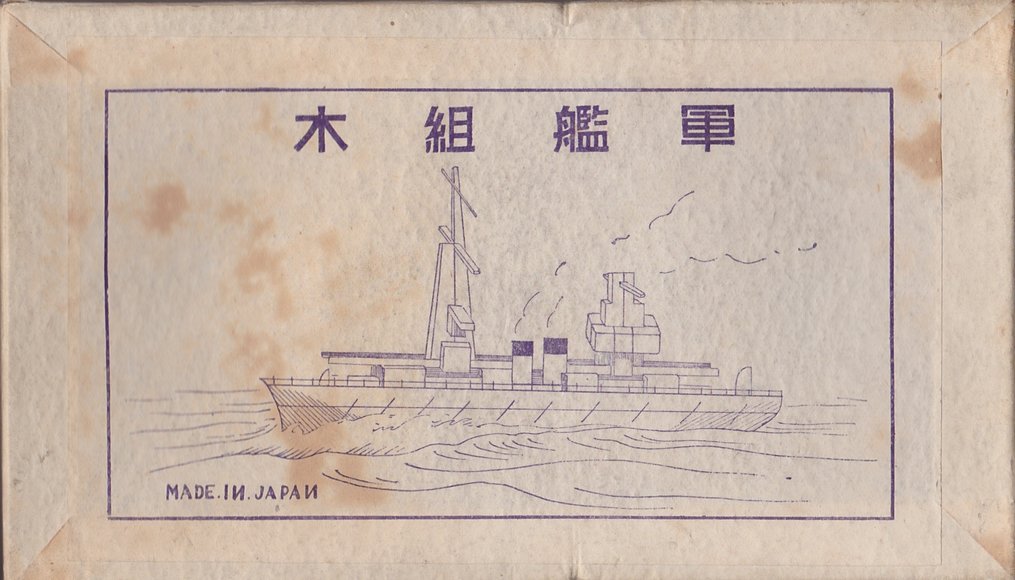

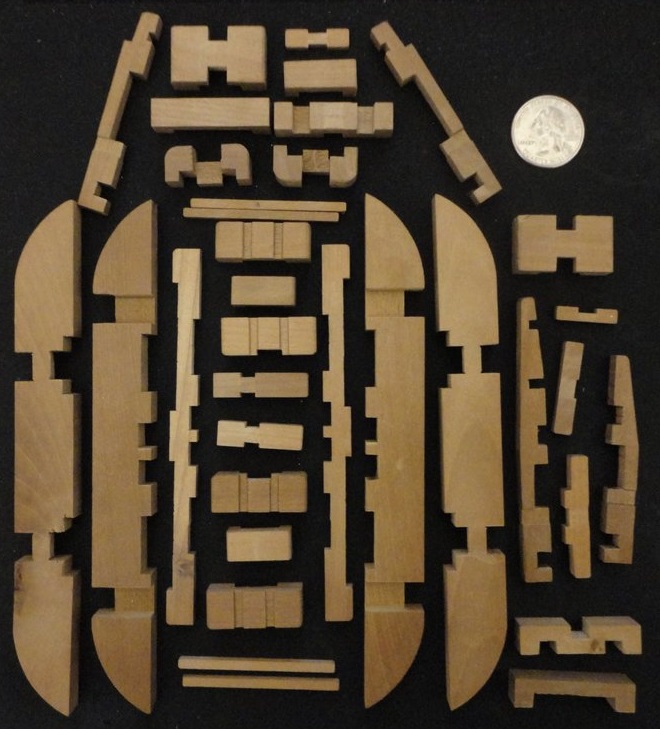
Large Kumiki Battleship - I found another very nice vintage kumiki ship - this seems to be one of the more rare types. It included a box and instructions, both in good shape. |
||
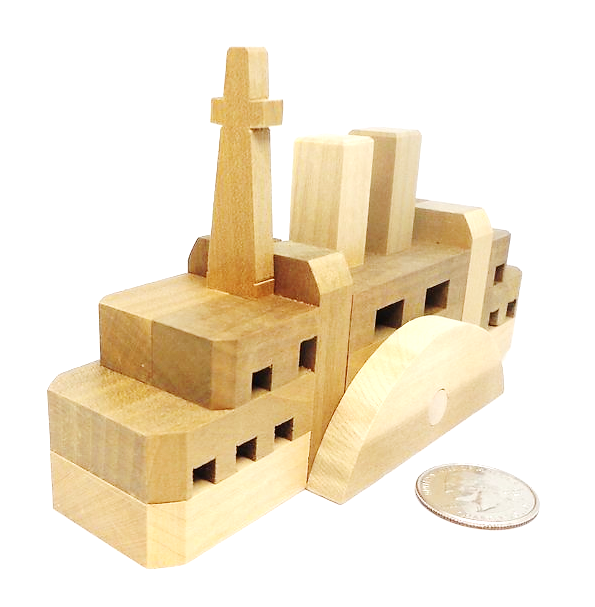
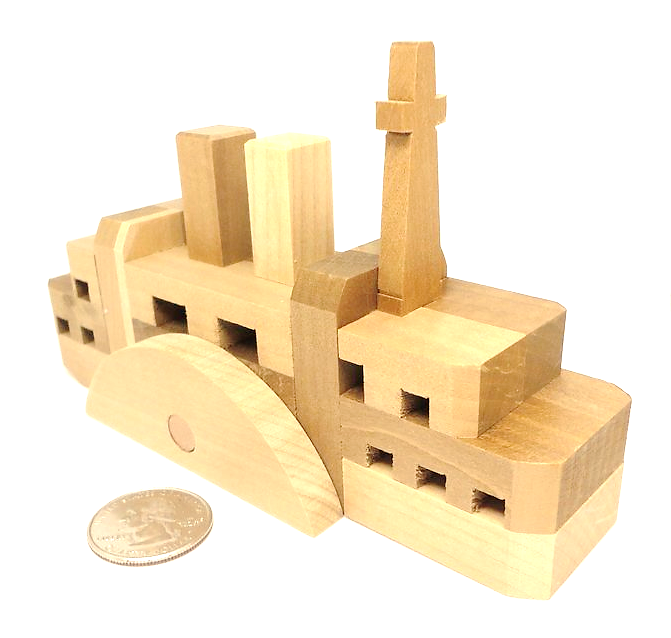

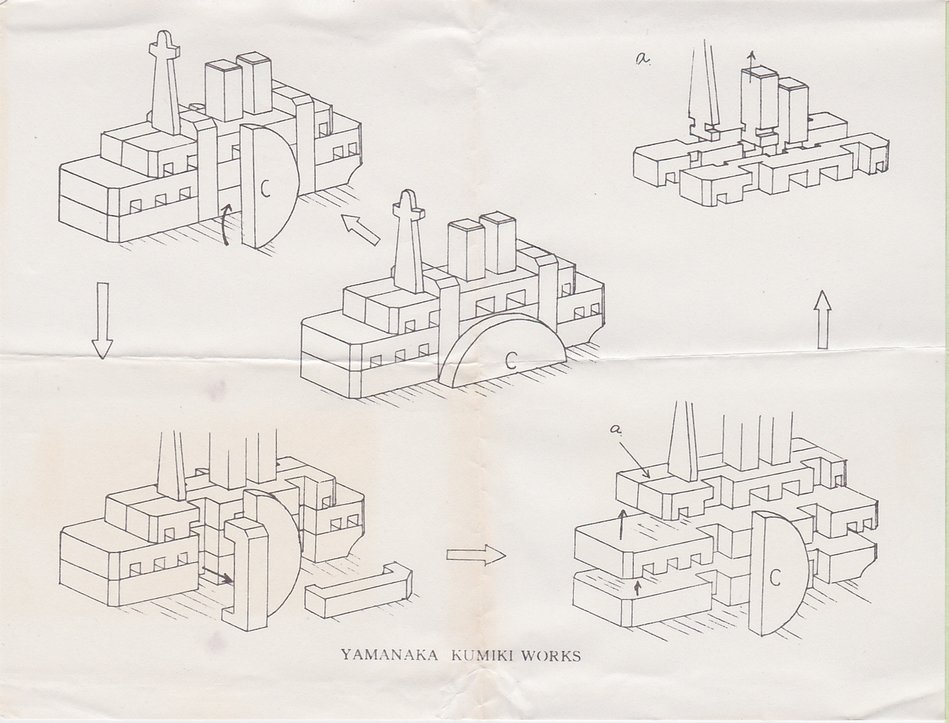
Kumiki Paddlewheeler - Yamanaka Kumiki Works |
||
Here are some group shots of some kumiki ships:
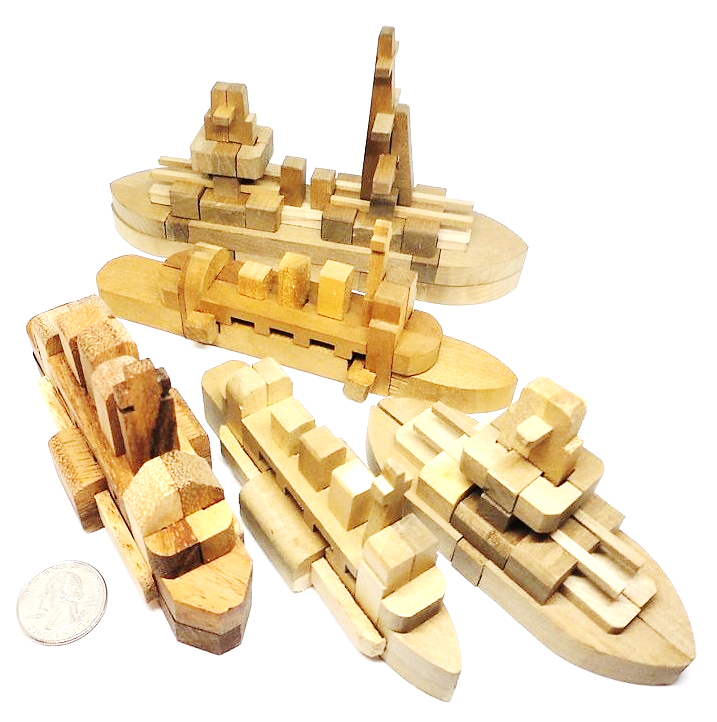
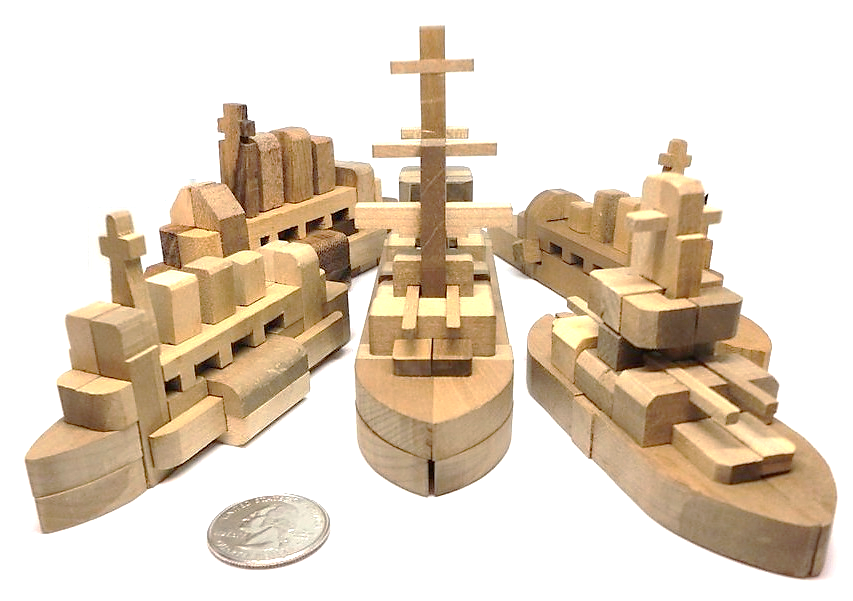
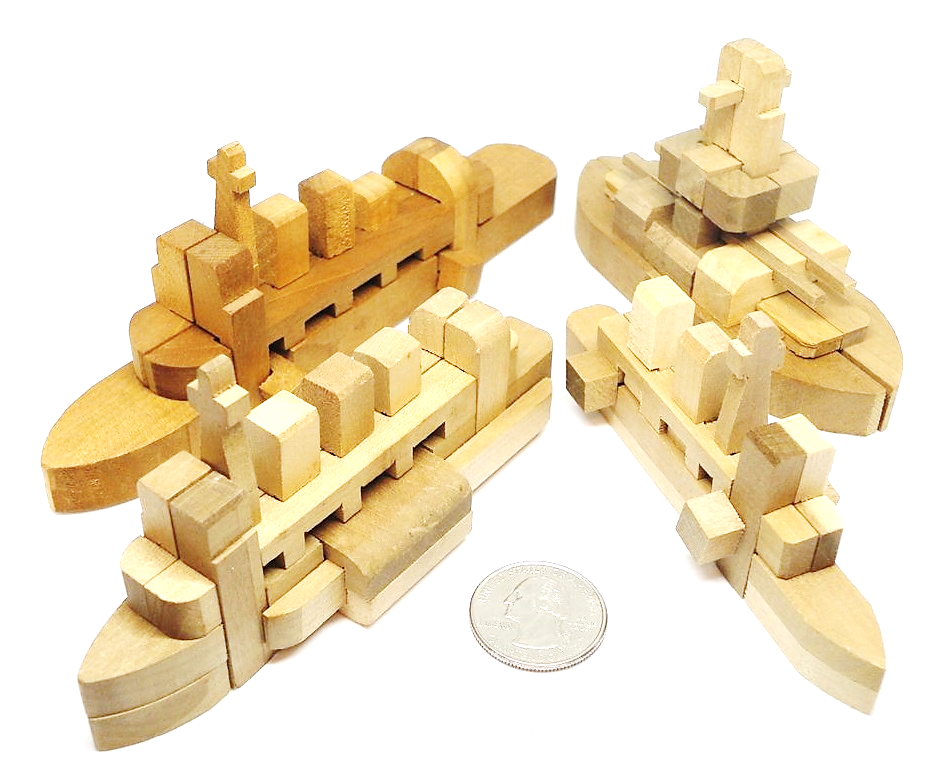
|
||


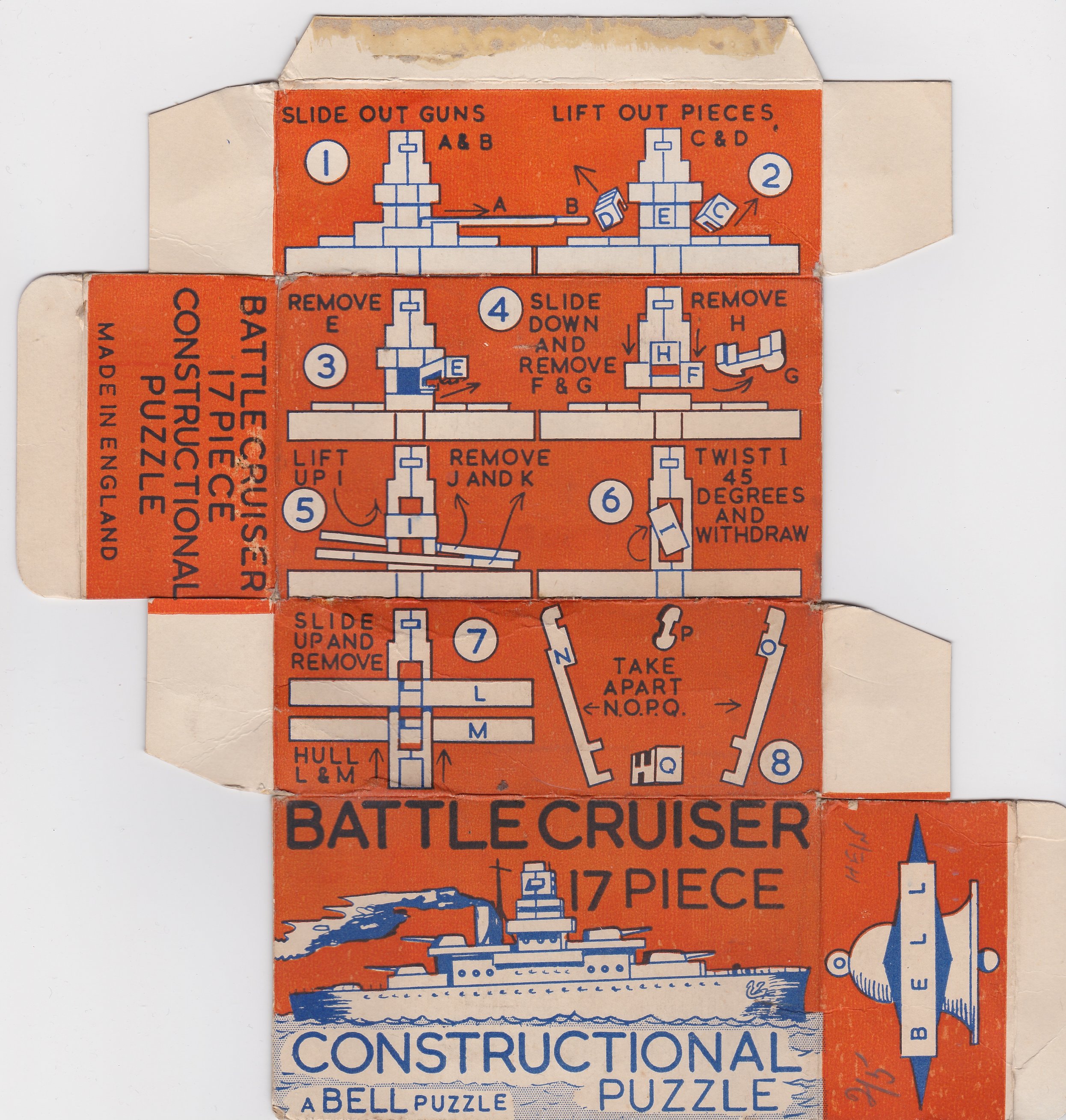
Battlecruiser - a hard (brittle) plastic kumiki-style puzzle from Bell of England Same architecture as the wooden version. |
||
[134]
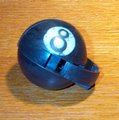
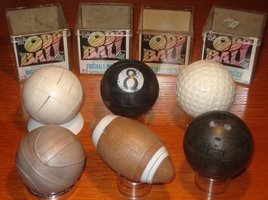
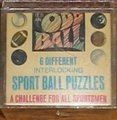
Here are the pieces of the Football:
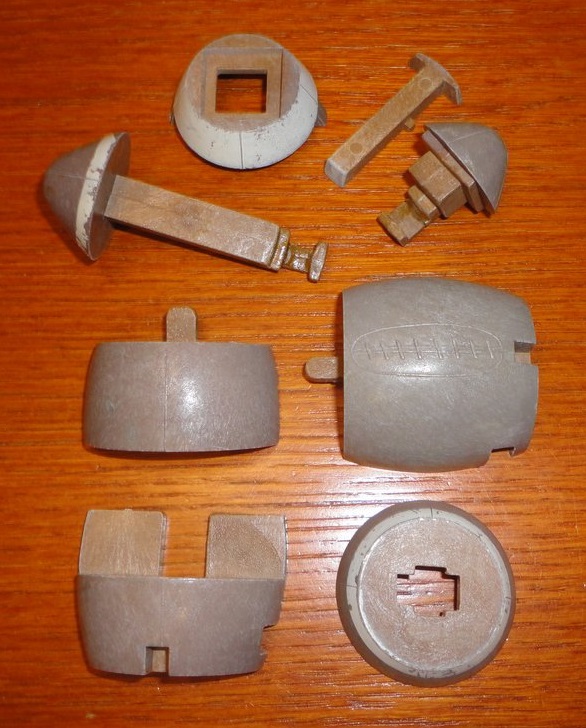
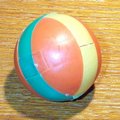 a plastic ball |
 a newer plastic ball |
 The "Gold Moon" I got in Japan |
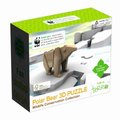
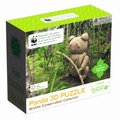
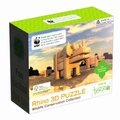
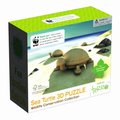
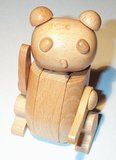
Terra-Toys offers a series of four "3D Puzzle" animals in their Wildlife Conservation Collection, made in China from woods claimed to be certified by the Forest Stewardship Council. I picked up a Polar Bear and a Panda. Both have unusual opening tricks - not difficult, but distinct from the typical Kumiki-style animals. There are also a Rhino and a Sea Turtle. The Rhino is very similar to the Nanook Polar Bear. |
||
Geo Australia offers the "KumiKube" puzzle.

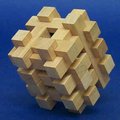 The Chuck puzzle, according to Slocum and Botermans in Puzzles Old and New on page 74,
was patented by Edward Nelson in 1897
(U.S. Patent
588705 - Nelson 1897).
The design was improved and developed by Ron Cook at
Pentangle Puzzles.
Pentangle offers a series of chuck puzzles - the simplest is the Baby Chuck with 6 pieces.
The Woodchuck (shown here) has 24 pieces, the Papa-chuck has 54, the Grandpapachuck has 96,
and the Great Grandpapachuck has 150.
Pentangle's Lunatic puzzle, also shown, is a close relative of the Chuck family.
Richard Whiting's website offers a
solution to the 24-piece Woodchuck.
(The knock-off versions are called "Crystal" puzzles but that is a misnomer.)
The Chuck puzzle, according to Slocum and Botermans in Puzzles Old and New on page 74,
was patented by Edward Nelson in 1897
(U.S. Patent
588705 - Nelson 1897).
The design was improved and developed by Ron Cook at
Pentangle Puzzles.
Pentangle offers a series of chuck puzzles - the simplest is the Baby Chuck with 6 pieces.
The Woodchuck (shown here) has 24 pieces, the Papa-chuck has 54, the Grandpapachuck has 96,
and the Great Grandpapachuck has 150.
Pentangle's Lunatic puzzle, also shown, is a close relative of the Chuck family.
Richard Whiting's website offers a
solution to the 24-piece Woodchuck.
(The knock-off versions are called "Crystal" puzzles but that is a misnomer.)
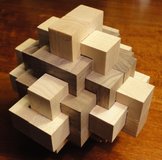
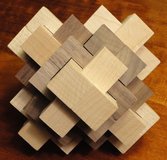 Here is a Chuck burr made from Maple and Walnut by
craftsman Colin Gaughran, who has a shop in Lyme, Connecticut.
Here is a Chuck burr made from Maple and Walnut by
craftsman Colin Gaughran, who has a shop in Lyme, Connecticut.
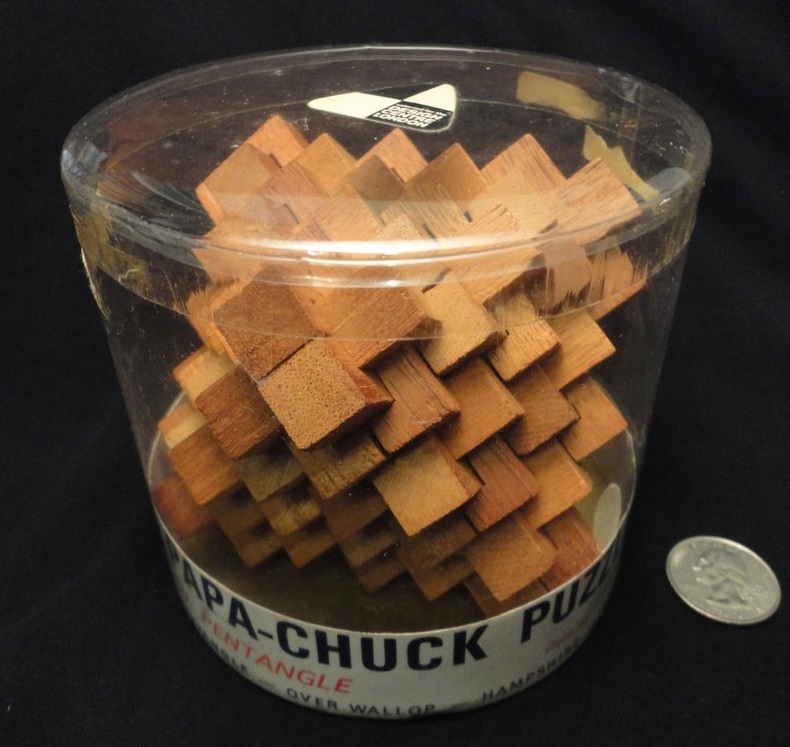
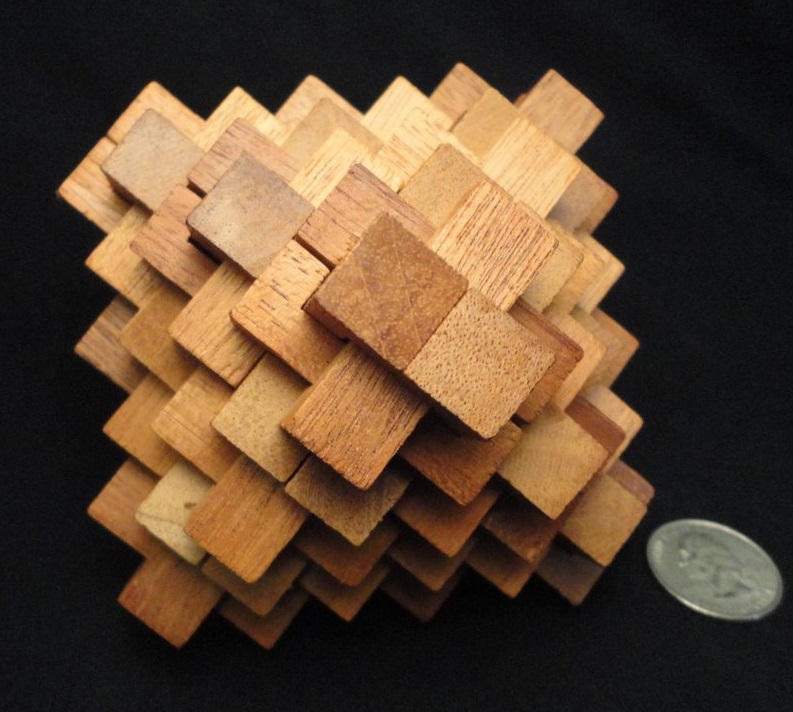
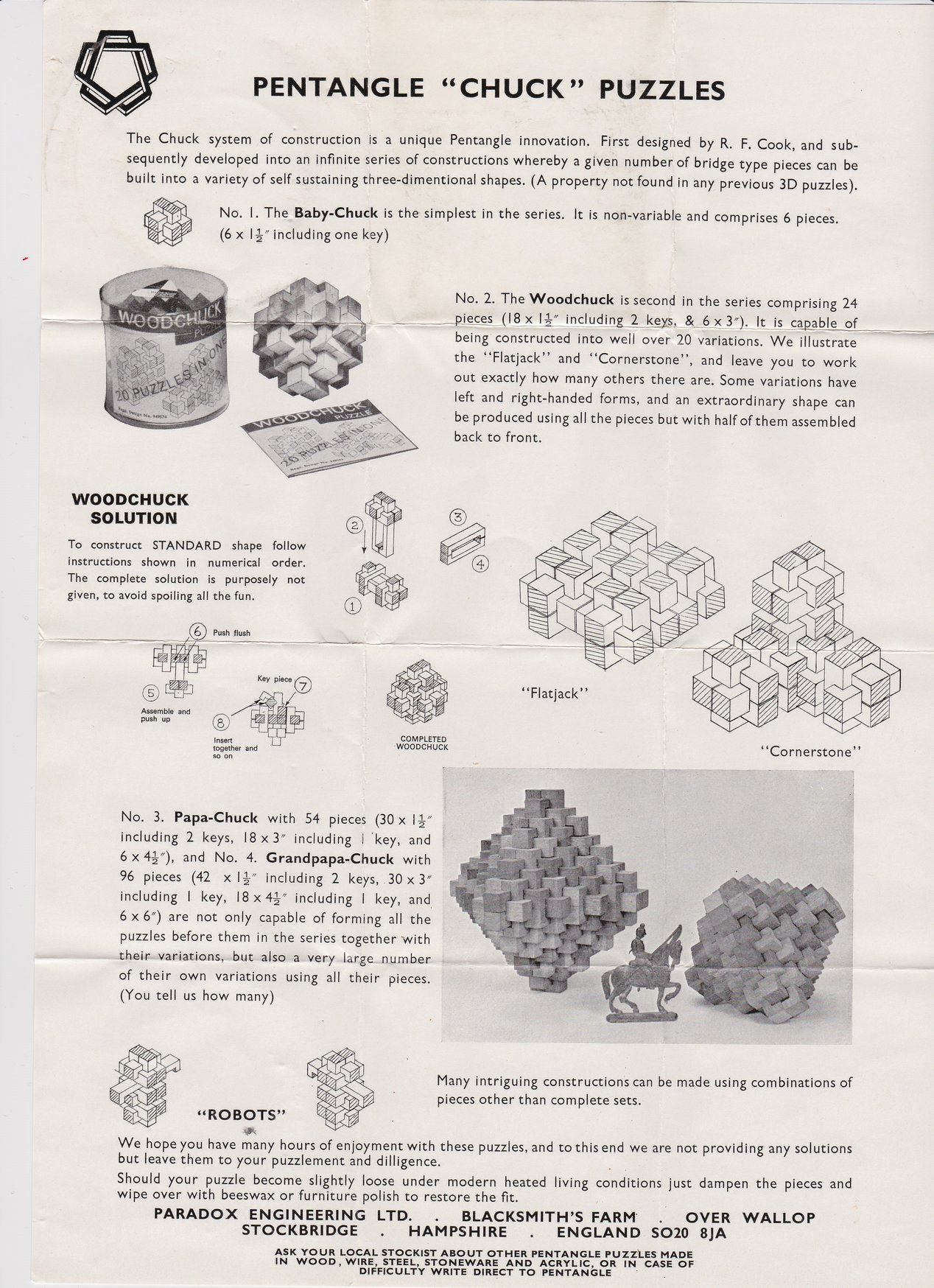
Here is a Chuck burr in plastic, from Hungary.
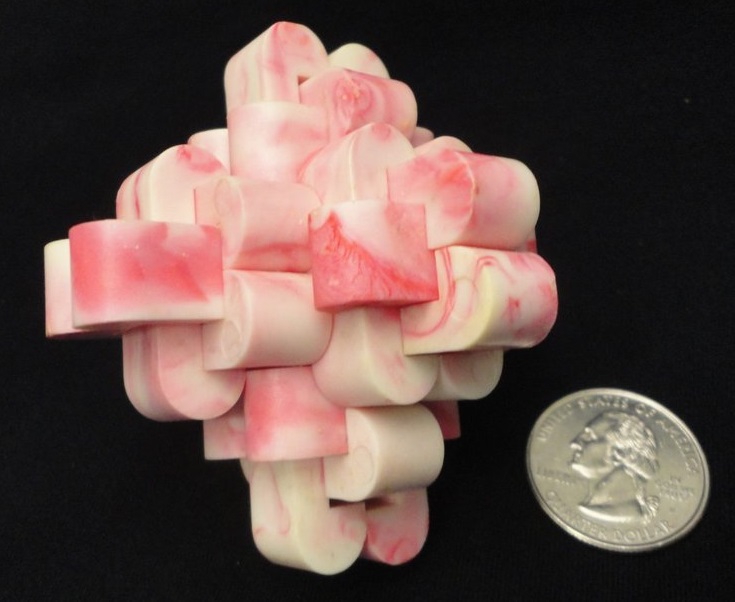
At the Cleverwood site, they say that the 129 piece is rarely produced since it is considered too difficult. I have not seen any order 9 or 10 (163 or 201 piece) Pagoda puzzles.
| Order 'n' | 1 | 2 | 3 | 4 | 5 | 6 | 7 | 8 | 9 | 10 |
| Edge Length | 2 | 3 | 4 | 5 | 6 | 7 | 8 | 9 | 10 | 11 |
| Pieces 2n2+1 | 3 | 9 | 19 | 33 | 51 | 73 | 99 | 129 | 163 | 201 |
You can see the pieces for several sizes of Pagoda puzzle at Ishino's Puzzle Will Be Played... website.
A nineteen-piece Pagoda (and a similar 15-piece puzzle) are described in Wyatt's 1928 Puzzles in Wood on pages 33-37. Plans for a 51-piece Japanese Crystal are given in van Delft and Botermans' 1978 Creative Puzzles of the World on pages 77-79. Slocum and Botermans describe The Great Pagoda puzzle in their 1986 book Puzzles Old and New on page 73.
3-piece Pagoda, edge-length 2

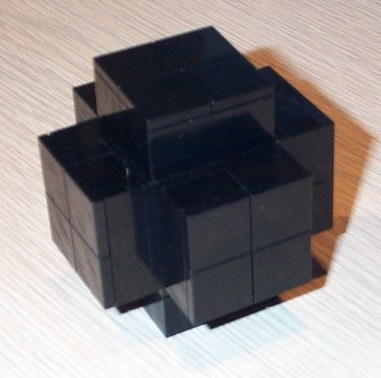
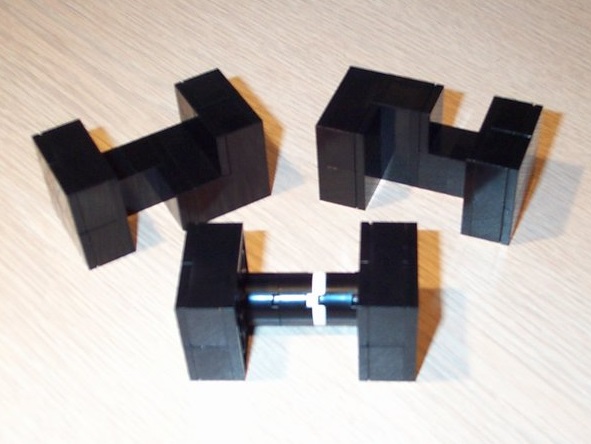
The 3-piece version requires a rotating piece. I don't have a wooden example, but I made a Lego 3-piece Pagoda Burr, also shown on Brickshelf. You can see more Lego versions at Maarten Steurbaut's website. |
||
9-piece Pagoda, edge-length 3

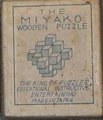
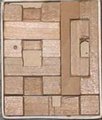
The tiny vintage Miyako puzzle I have is a 9-piece pagoda. It does not require a rotation. The Arjeu CT31 is another example. |
||
19-piece Pagoda, edge-length 4
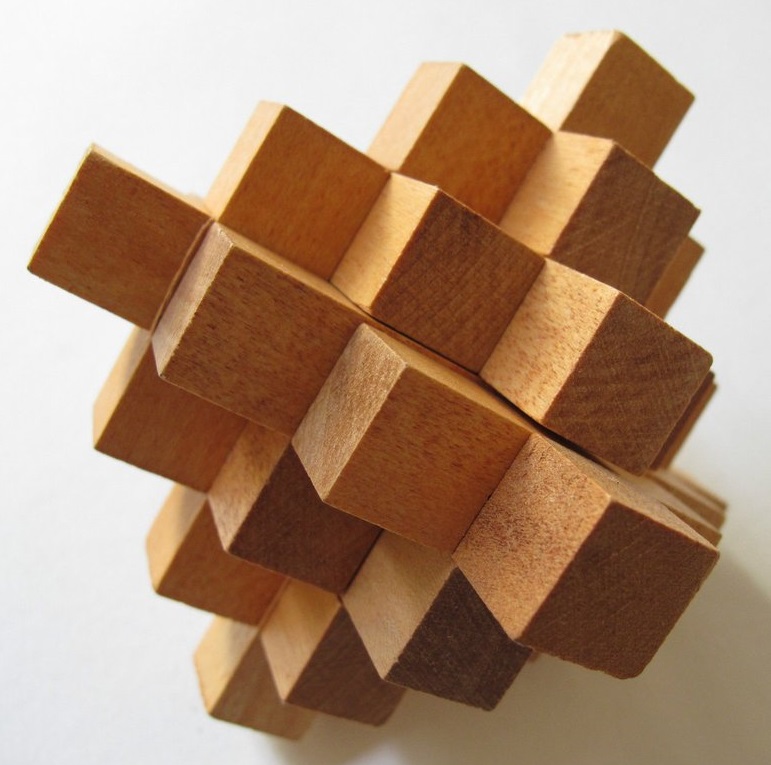
I have the Arjeu CT1102 Mercurius The Arjeu CT30 is another example. |
33-piece Pagoda, edge-length 5
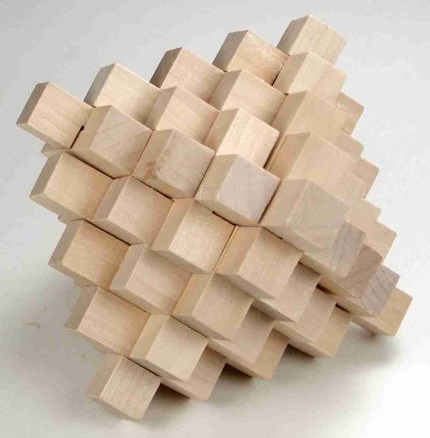
The Arjeu CT44 is an example. I got an inexpensive smallish version from an Asian vendor. |
51-piece Pagoda, edge-length 6

I have a 51-piece Pagoda issued by Bits & Pieces. The Arjeu CT80 is another example. |
73-piece Pagoda, edge-length 7
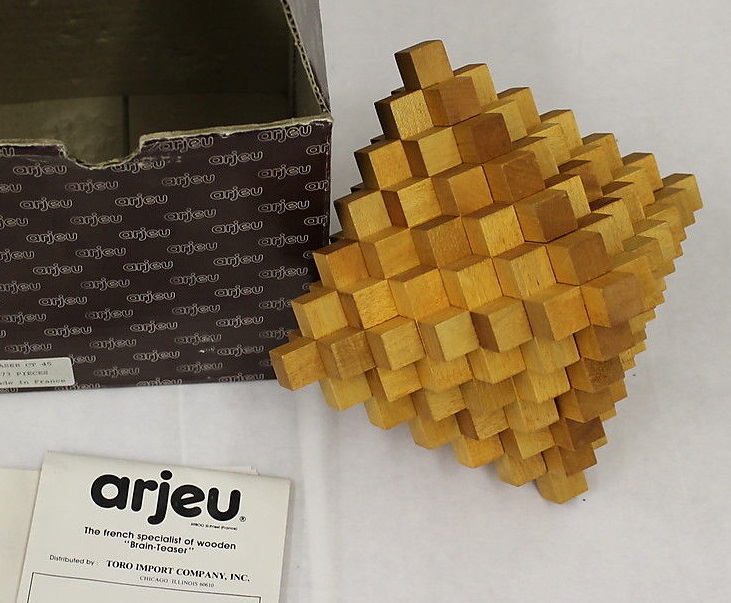
I have the Arjeu CT45 a large wooden 73 piece Pagoda puzzle |
99-piece Pagoda, edge-length 8
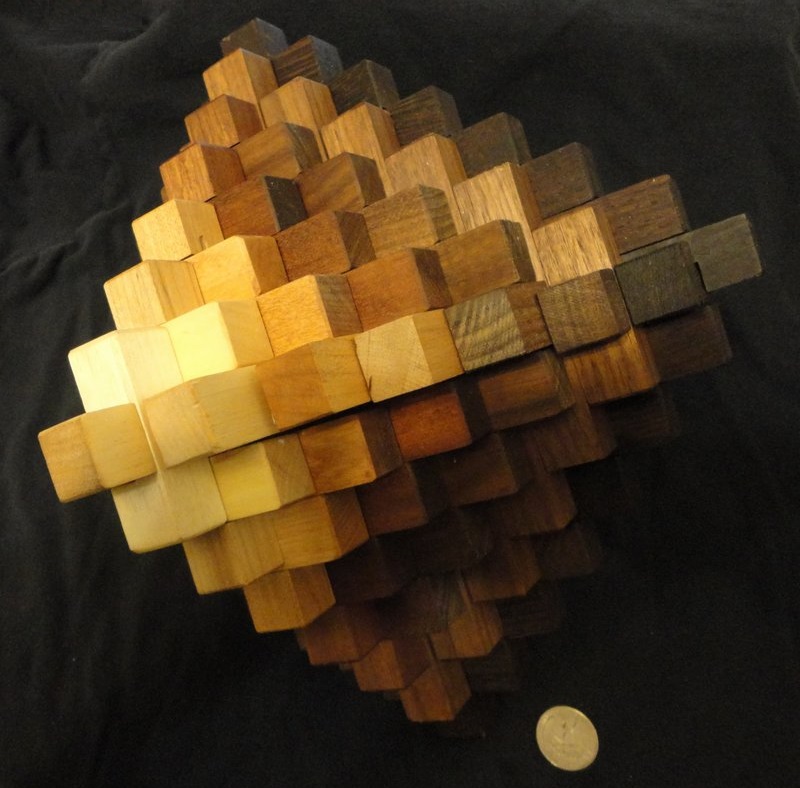
Superpagoda - made by Henry Troyer. It is quite large and made from attractive woods. Check out Henry's Etsy Shop.
The Arjeu CT46 is another example of a 99-piece Pagoda (I don't have it).
|
129-piece Pagoda, edge-length 9

Great Pagoda - an edge-9 (129 piece) Pagoda Burr. Fairly compact given its complexity, but very nicely made. Purchased from Cleverwood. Shown with edge-6, edge-5, and edge-8 examples. I don't know of anywhere else to get a 129 piece pagoda (or larger). |
[7]
 In 1890, William Altekruse patented
(430502)
an interlocking puzzle now known as the Altekruse Puzzle.
You can read about the Altekruse puzzle in Stewart Coffin's
The Puzzling World of Polyhedral Dissections.
The Altekruse is discussed on page 72 in the 1987 Puzzles Old and New by Slocum and Botermans.
Edwin Wyatt also discusses this puzzle, calling it "The Twelve Piece Burr" in his 1928 Puzzles in Wood.
The Altekruse uses a set of identical pieces one of which is shown in the patent in Figure 2, and can be made with 12 or 14 pieces.
Pentangle
offers a 14-piece version called Hybrid, and a 12-piece version called Holey Cross.
Many variations have been made.
Wyatt gives solution instructions, shown below. The first step emphasizes the importance of the subtle difference in the arrangement of the two pairs of pieces with respect to their center tabs. In the second step, pieces 5 and 6 should be symmetrical like 3 and 4, while 7 and 8 are parallel like 1 and 2. This allows subassembly 1-4 to slide to the right so that pieces 9-12 can be inserted.
In 1890, William Altekruse patented
(430502)
an interlocking puzzle now known as the Altekruse Puzzle.
You can read about the Altekruse puzzle in Stewart Coffin's
The Puzzling World of Polyhedral Dissections.
The Altekruse is discussed on page 72 in the 1987 Puzzles Old and New by Slocum and Botermans.
Edwin Wyatt also discusses this puzzle, calling it "The Twelve Piece Burr" in his 1928 Puzzles in Wood.
The Altekruse uses a set of identical pieces one of which is shown in the patent in Figure 2, and can be made with 12 or 14 pieces.
Pentangle
offers a 14-piece version called Hybrid, and a 12-piece version called Holey Cross.
Many variations have been made.
Wyatt gives solution instructions, shown below. The first step emphasizes the importance of the subtle difference in the arrangement of the two pairs of pieces with respect to their center tabs. In the second step, pieces 5 and 6 should be symmetrical like 3 and 4, while 7 and 8 are parallel like 1 and 2. This allows subassembly 1-4 to slide to the right so that pieces 9-12 can be inserted.
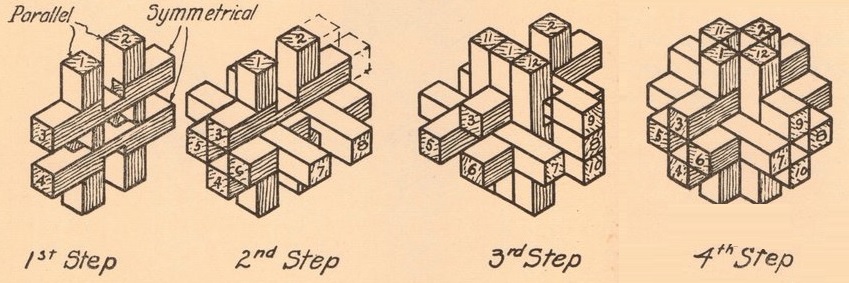
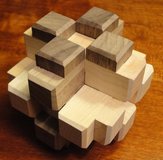
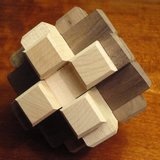
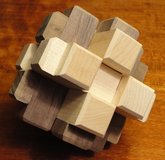
Colin Gaughran made this 12-piece version of the Altekruse. Note the pattern of four blocks on each face. |
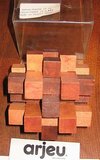
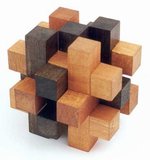
Arjeu CT14 "Criss Cross" This is an example of the 14-piece Altekruse variant. Note the pattern of five blocks on each face. |
|
The Xeon Molecule by Skor-Mor is a plastic, modern-looking version. I managed to find 3 separate copies - one is all blue, one is red/white/blue, and the third is red/yellow/blue. One of them even came with a solution sheet. On two of them, some of the pieces had broken fins, but the bits were included and I was able to glue them back together. |
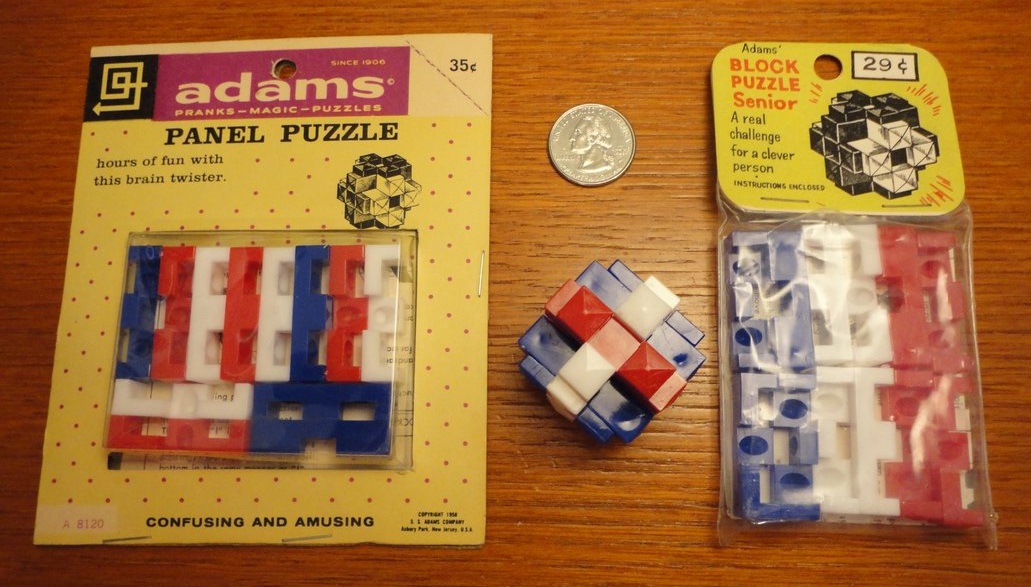
The vintage 12-piece Panel Puzzle by Adams is also a version of the Altekruse. This is also called the "Block Puzzle Senior." |
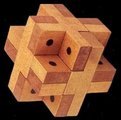 This is Arjeu CT679 - I purchased it from Ishi back when they offered such things. This variation of the Altekruse puzzle uses single pin/single hole pieces, six left-handed and six right-handed. Stewart Coffin describes this variation in his book, The Puzzling World of Polyhedral Dissections. |
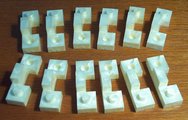 Stewart Coffin developed and licensed the pinned version of the Altekruse puzzle which was marketed by 3M and Avalon Hill and named Frantix. Here are the 12 pieces of the plastic version of Frantix. [John Rausch's Frantix page] |

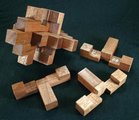
Kerry Verne made this version of Stewart Coffin's Giant Steps #10 puzzle, from Sapelle. Purchased from CubicDissection. This looks like a pagoda burr, but notice the missing blocks in the inner corners. It is actually an Altekruse variant. |
In this type of puzzle, several (usually all) of the pieces must be moved in a coordinated fashion to achieve assembly or disassembly.
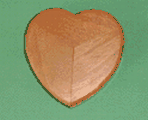
3-piece Heart Box - Bits and Pieces |
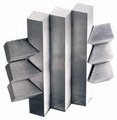
Triple Decker - Bits and Pieces |
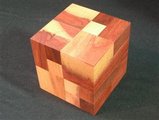 This is called "Iwahiro's Apparently Impossible Cube #1." It was designed by Hirokazu Iwasawa. It was made by Eric Fuller from Chakte Cok wood. |
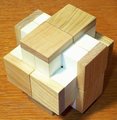
Duodeciburr Designed and made by Vaclav Obsivac Presented at IPP27 by Rick Eason 12 identical pieces |
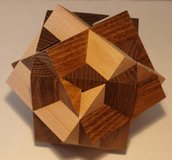

TriKubus by Rik Brouwer Purchased from Bernhard Schweitzer I no longer own this. |
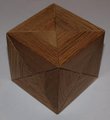
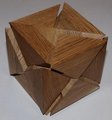
This is the Crystal Cube, designed by Bill Darrah. Purchased from Bernhard Schweitzer at IPP 29 in SF. I especially like this design because the pieces are not identical. |

E-Box - Vinco A nice little 3-piece coordinate motion puzzle. Purchased from Tim Udall at NYPP 2016. |
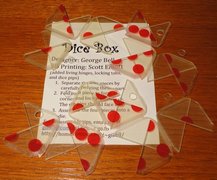
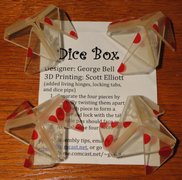
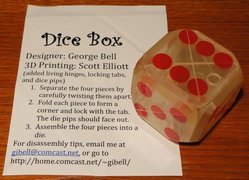
This is the Dice Box, designed by George Bell [S], with input from Scott Elliott, and printed by Scott. It's not overly difficult, but I think the printed live hinges are cool. |
|

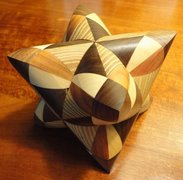
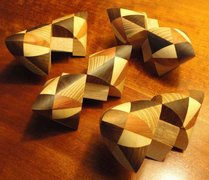
Obtained at IPP31 in Berlin, here is a four-piece Dual Tetrahedron coordinate motion puzzle, beautifully crafted from Walnut, Acacia, Maple, and Plum, from Vinco. |
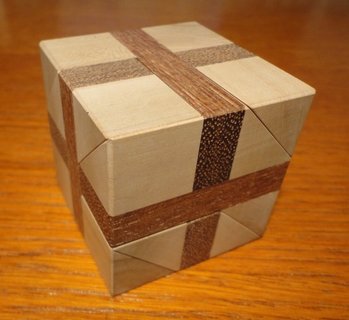
Little Slide Plank Cube - designed by Gregory Benedetti Greg has achieved a very clever dissection of the cube into three similar but different pieces that fit together with coordinate motion. Precision made. |
|
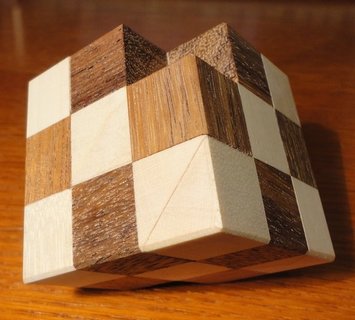
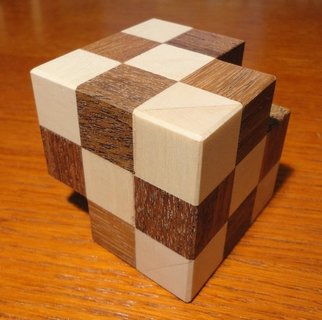
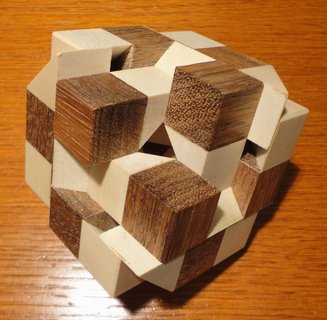
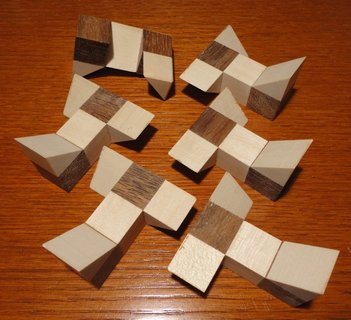
Six Piece Sliding Cube - designed by Gregory Benedetti A coordinate motion puzzle using six similar pieces. Not easy to get started. However, unlike many other coordinate motion puzzles, putting it back together was actually pleasant rather than frustrating. |
||

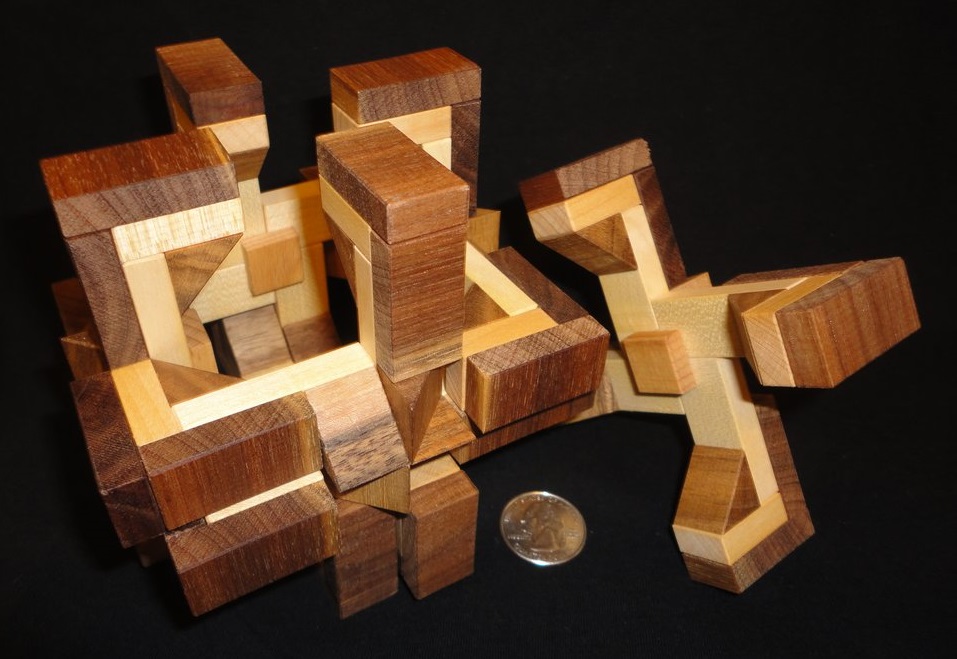
Viper Cross by Vinco. Six piece coordinate motion puzzle. |
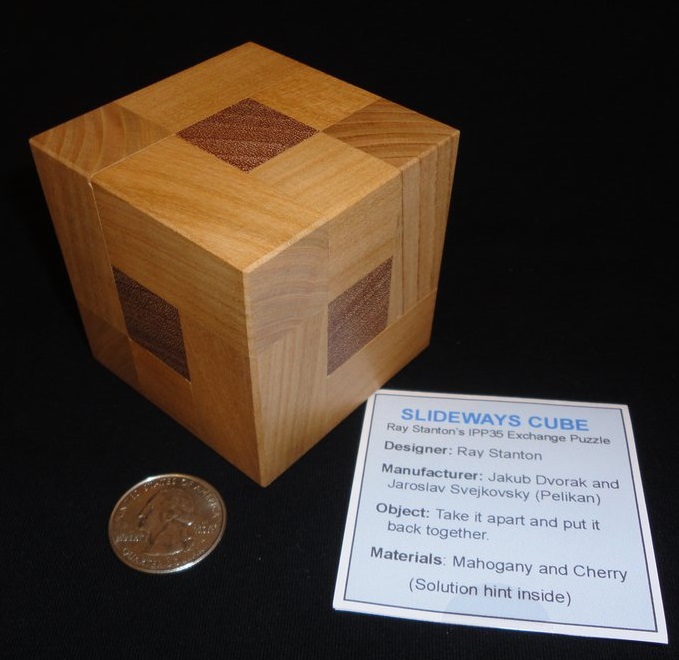
Slideways Cube - designed by Ray Stanton made by Pelikan, exchanged by Ray at IPP35. |
|
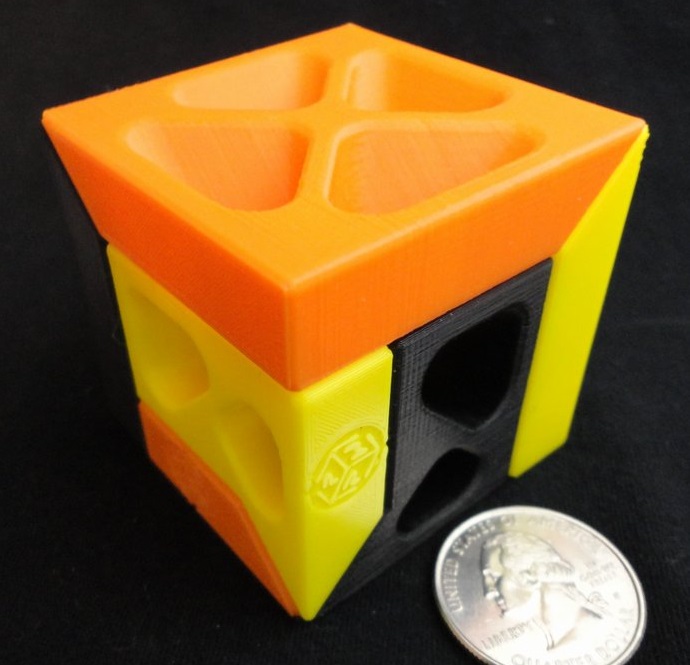
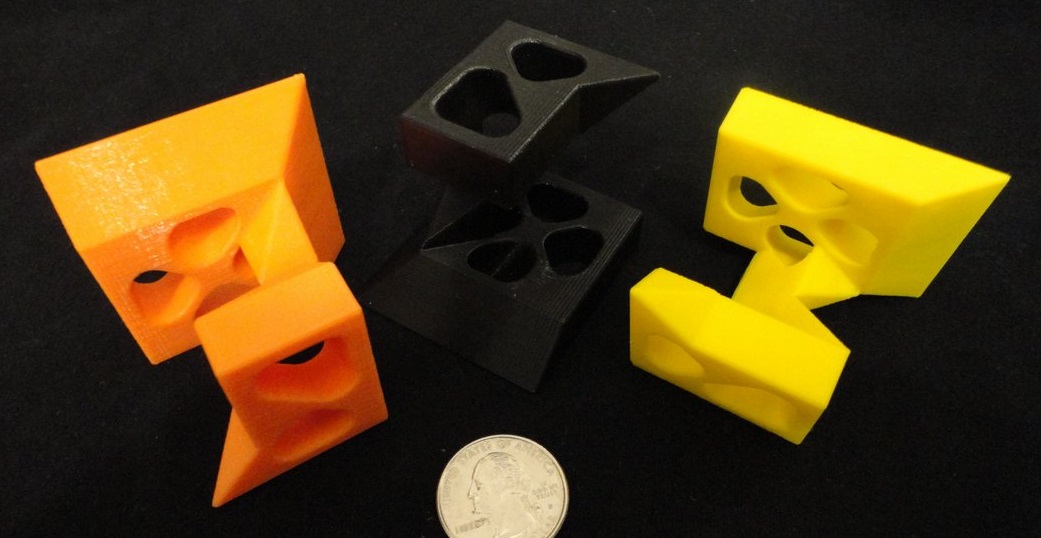
Slideways Cube - designed by Ray Stanton, made by and purchased from Lee Krasnow. The quality of Lee's 3D prints are outstanding! |
||
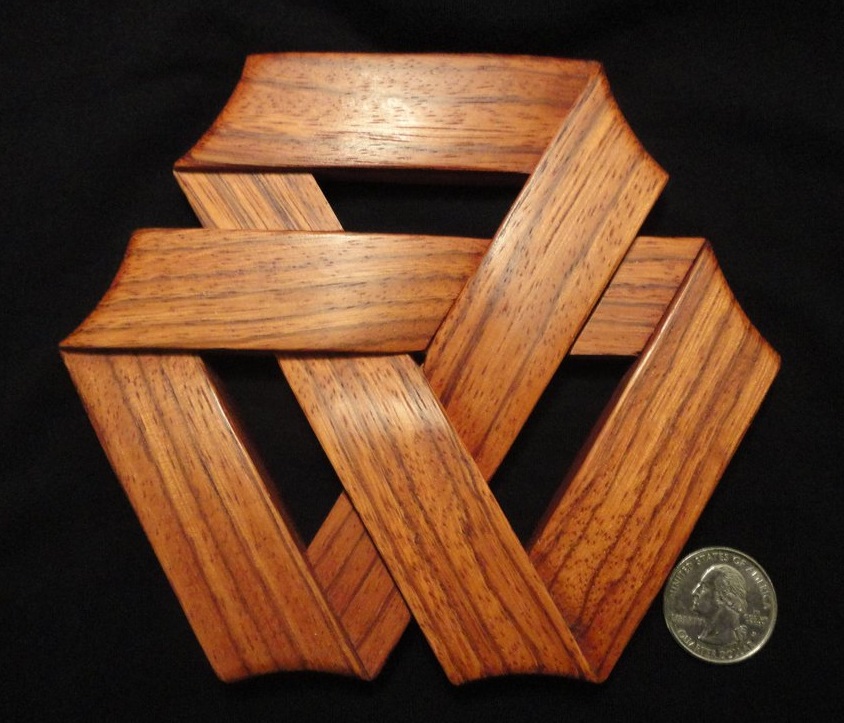
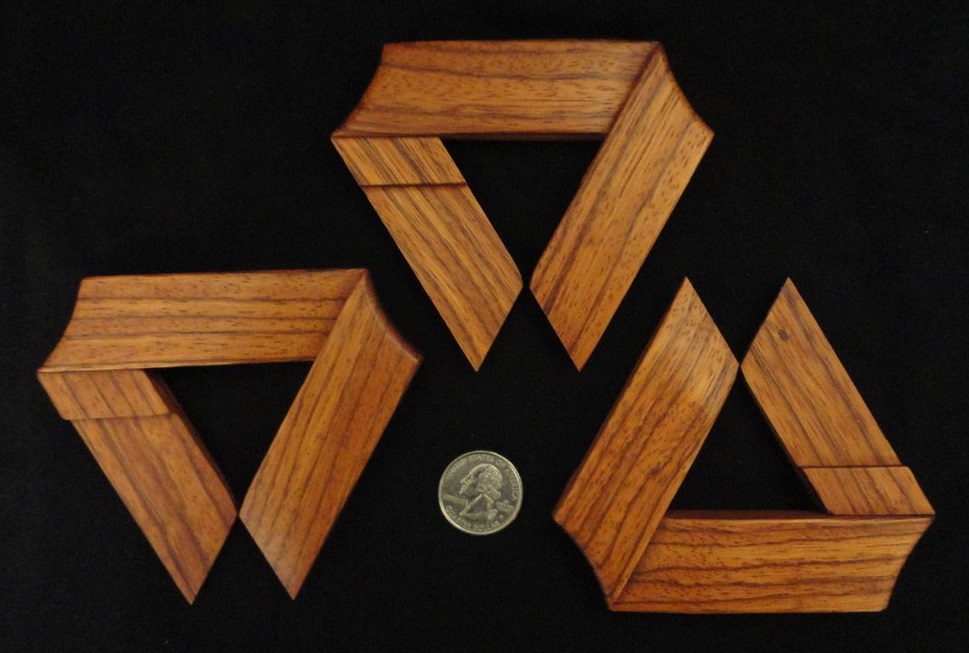
The Bow - A beautiful coordinate motion puzzle, made by Bill Sheckels from red zebrawood. Expertly contoured and finished! Check out Bill's Etsy shop Black Dog PuzzleWorks. |
||
|
Back in July 2019, Ray Swinney, a friend of the late puzzle designer Robert Rose, contacted me - Ray's son had been able to fabricate a limited edition of nice metal coordinate motion burr puzzles.
Ray kindly sent me an example - thanks, Ray!
|
||
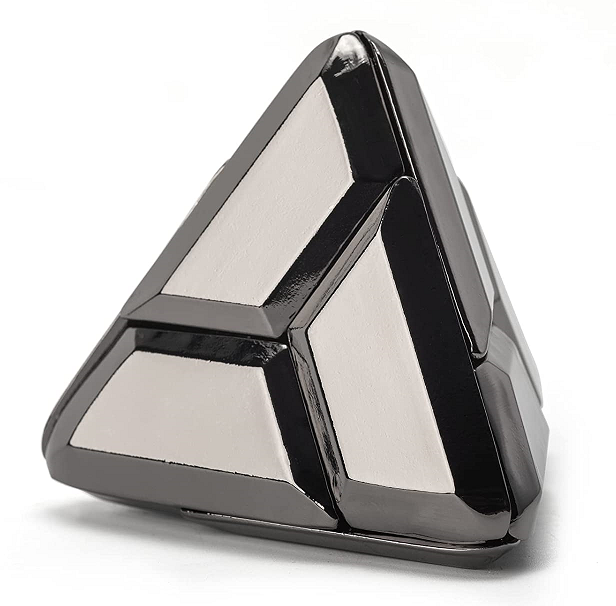
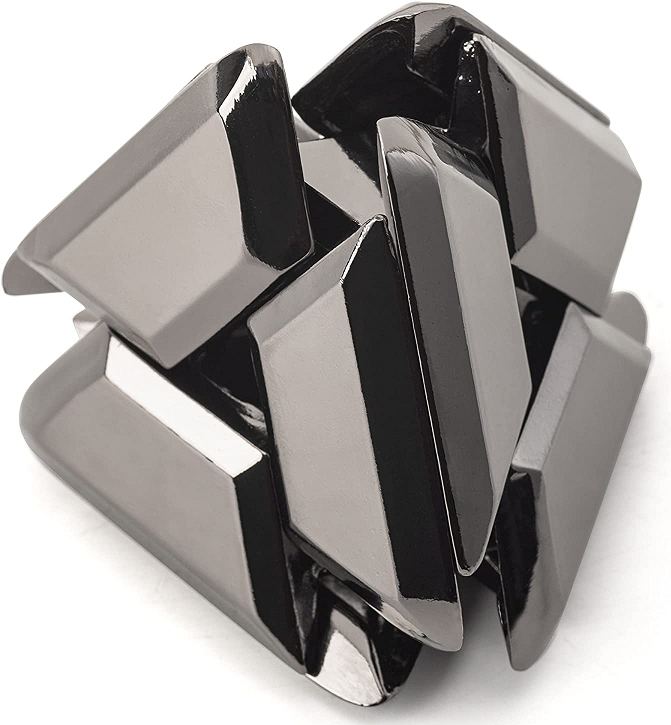

A metal four-piece coordinate-motion Tetrahdron puzzle, from a popular online shopping site. This is a (probably unlicensed) copy of a design by Dr. Bruce Patterson. |
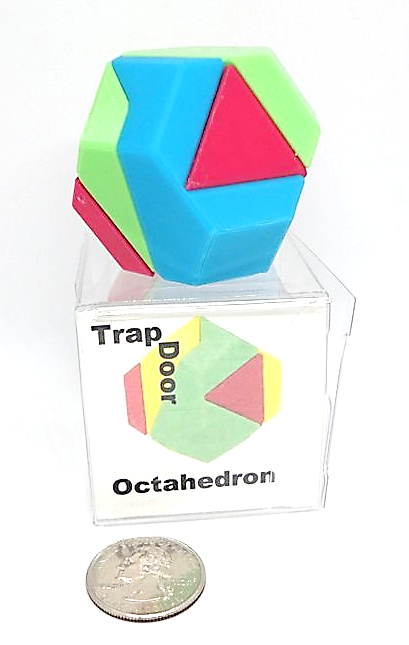
Trap Door Octahedron - a three-piece coordinate motion puzzle, by George Bell. Very tricky! Thanks! |
|
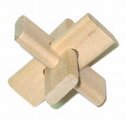
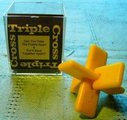 These are examples of a common 3-piece design known as O-C-C, after the shapes of the three pieces. The OCC design was described by Edwin Wyatt in his 1928 book Puzzles in Wood (pp.24,25) - he called it the Three-Piece Cross; Wyatt gives no history. Hoffmann describes the OCC in his 1893 book Puzzles Old and New in Chapter III No. XXXV "The Cross-Keys or Three-Piece Puzzle" but gives no history. Van Delft and Botermans also describe the puzzle, as "The Wooden Knot," on page 67 of their 1978 Creative Puzzles of the World but again cite no history. See U.S. Patent 4198053 - Rao 1980. According to Singmaster, the Hordern collection contains an instance called "Le Noeud Mysterieux" from circa 1880-1905. It has been produced in wood, and also in plastic as the Triple Cross by Skor-Mor. Here is a link to Jurgen Koeller's page showing the solution. Someone had the idea to notch a knife, fork, and spoon so they could be assembled like the OCC burr. |
Only a few other three-piece burr designs can be considered at all well-known.
One other common design employs two notched pieces, and a piece with a rounded shaft that allows
the piece to be rotated in place.
I made a copy from Lego, and
posted photos on Brickshelf.
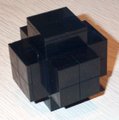
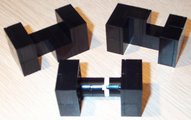
This design was also described by Wyatt in Puzzles in Wood, on page 26. This is also the simplest form of a Pagoda or Japanese Crystal puzzle. |
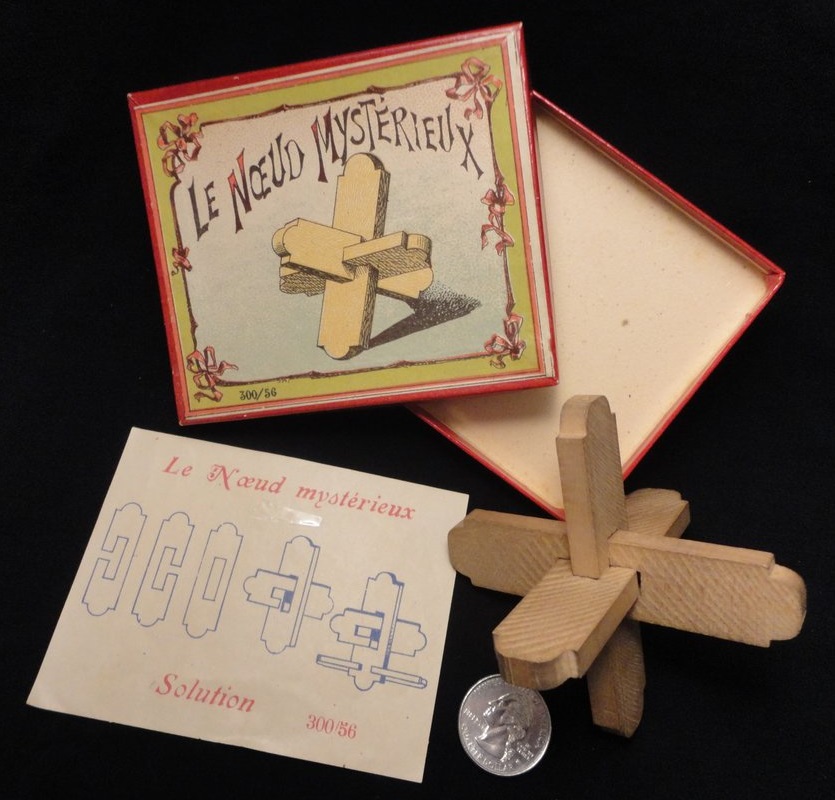

Le Noeud Mysterieux - a vintage wooden French boxed puzzle |
|
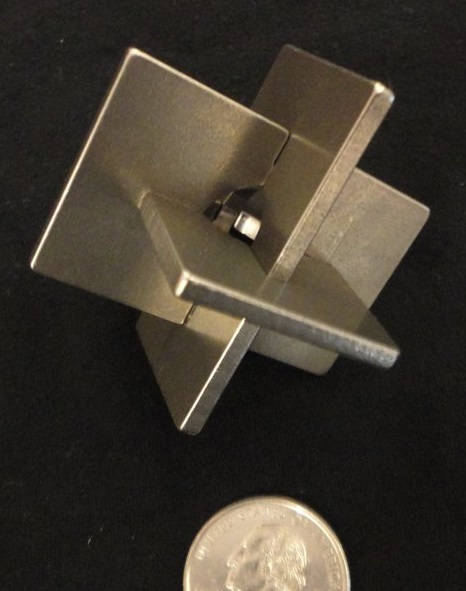
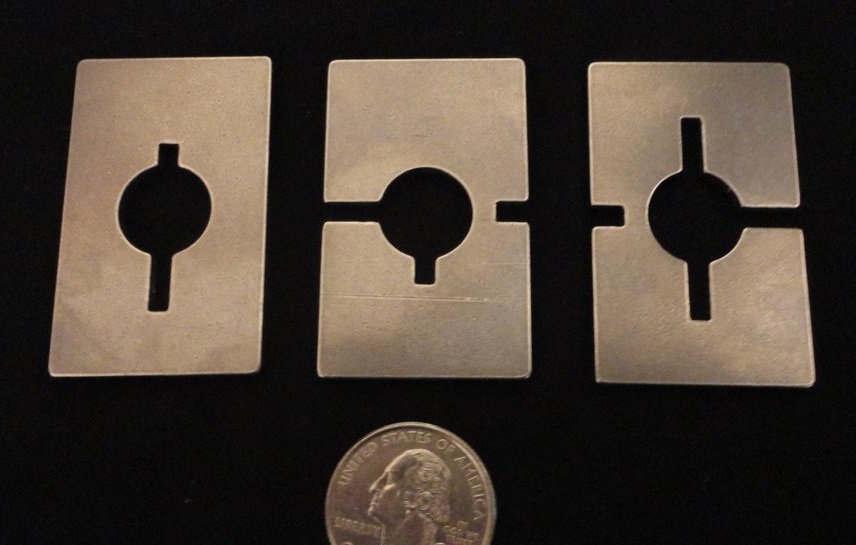
Tripla - Metallofactura Designed by Andrei Ivanov Among the Top Ten Vote Getters in the 2017 IPP Design Competition |
|
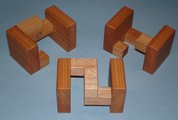
Here is an example of Bill Cutler's GigaBurr design, made by Tom Lensch. (I don't have this.) During 1998-1999, Bill Cutler performed a complete computer analysis of all 3x3x3 three-piece burrs. He found 248,540,275,292 (i.e. almost 250 billion) different designs. There are 80 designs at the highest level, 8, and they come apart in two different ways. Of the 80, there are only 3 that have 9 internal voids - 2 of those come apart in one of the ways, and just one comes apart the other way. Bill named this GigaBurr. The other type is called GigaBurr II. GigaBurr was Bill's exchange puzzle at IPP19. |
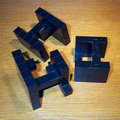
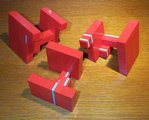
Here are additional examples I made from Lego: Bill Cutler's Cubie Burr #1 and Cubie Burr #2, both of which require 6 moves to open. These are based on the 3-piece GigaBurr, expanded to a 5x5x5 cube by adding edge and corner pieces. Cutler's 2000-2001 complete computer analysis of all such designs found three different disassembly sequences at the highest level, 6. Cubie Burr #1 was Bill's exchange puzzle at IPP21. |
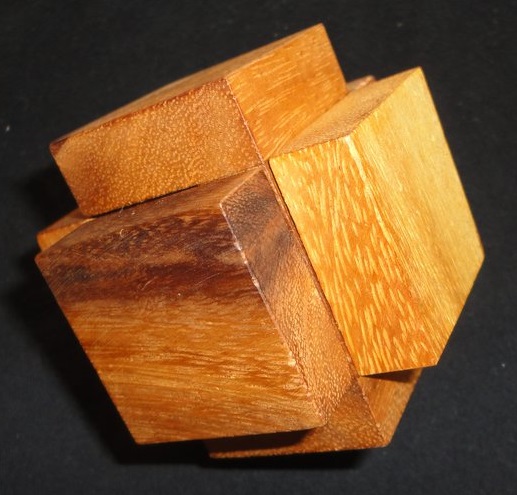
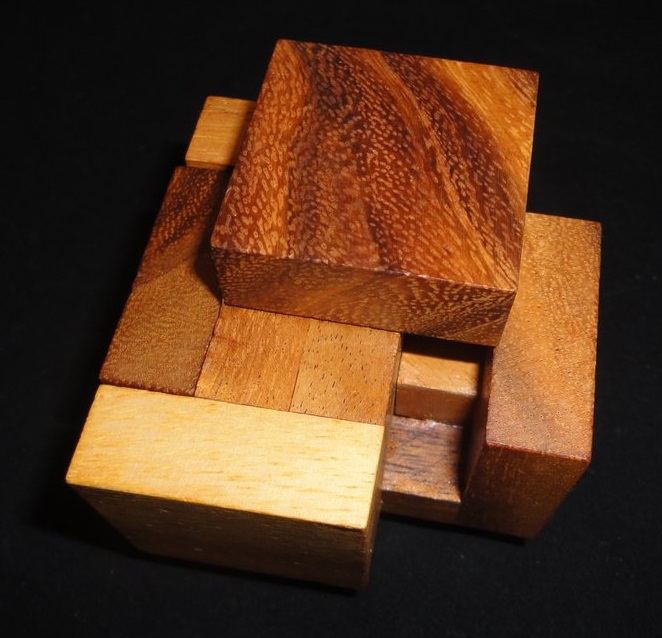
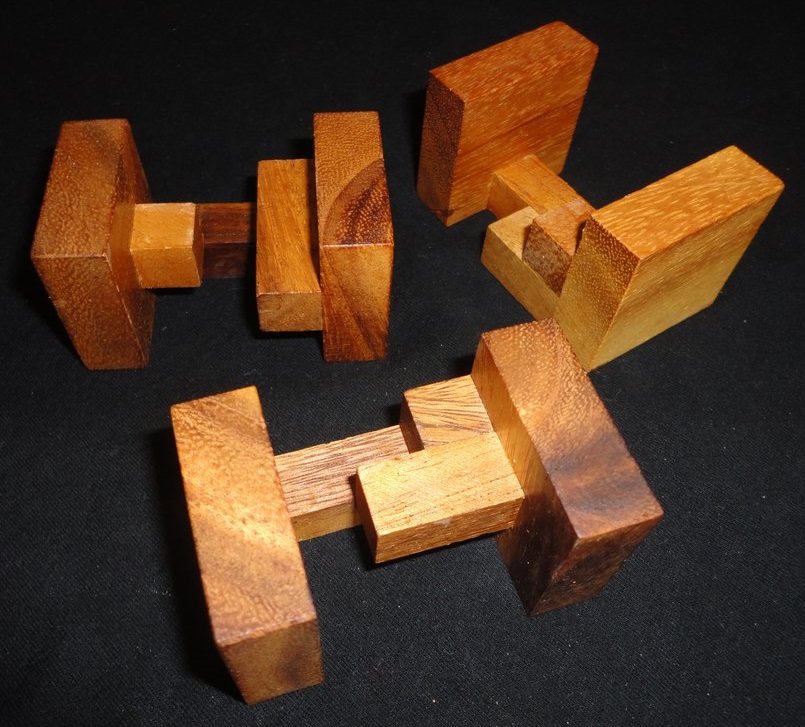
3 Piece Burr (monkeypod wood) |
|
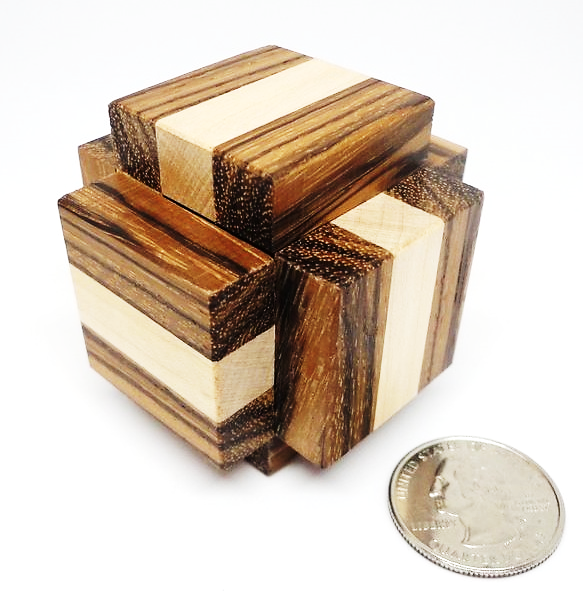
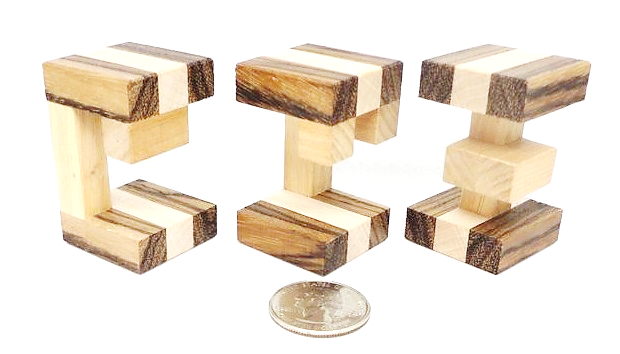
3 Piece Burr Key-o - designed by Osanori Yamamoto Thanks Chelsea! |
|


The Three Piece Not designed by Frans de Vreugd and made from Sapelle and Padauk by Eric Fuller. Masquerades as the innocent OCC, but it's NOT. Eight steps to remove the first piece. |
|
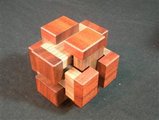 Triple Play - designed by Jim Gooch and made by Eric Fuller, from Walnut and Redheart. The solution requires an unconventional move, and Eric says some people thought it was an impossible object. |
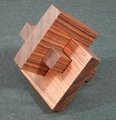 The Schaekel Knot, made of Kingwood, by Tom Lensch, and purchased from CubicDissection. It was designed by Oskar van Deventer. |
|
|
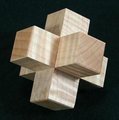

The Slideways Burr designed by Ray Stanton and made by Eric Fuller, from Curly Maple. The 3 identical pieces assemble with coordinate motion. Note: this looks like the Improved Segerblom three-piece burr discussed on Jurg's site. The original design by Wilhelm Segerblom was published in the April 1899 Scientific American, and is described in Slocum and Botermans' Puzzles Old and New on page 66, as well as in the Book of Ingenious and Diabolical Puzzles on page 73. |
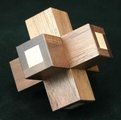
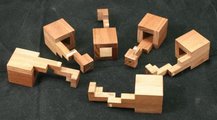
Tri Again - designed by Frank Potts, and made from Walnut and Maple by Eric Fuller. This actually has six pieces, but they interlace to form the traditional three-bar shape. Magnets hold the pieces in their closed positions. |
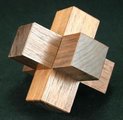
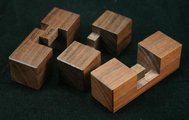
This is the Yamaosa 3 Piece Burr, designed by Osanori Yamamoto and made by Eric Fuller from Walnut. |
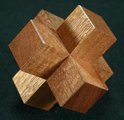
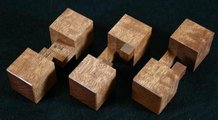
Just the Three, designed by Jack Krijnen and made by Eric Fuller, from heavily Quilted Sapelle. A nice sequential level 7.2 assembly - according to Eric, the highest level possible for this form factor. |
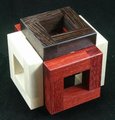
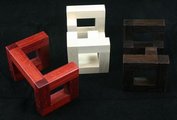
Three Open Windows, designed by Tom Jolly and made by Eric Fuller, from Bloodwood, Wenge, and Holly. |
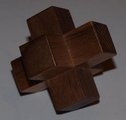
Invented by Nob Yoshigahara, this little burr is a poseur - read about it on Jurg's site. A gift from Peter Wilshire at IPP-29 in SF. Thanks, Peter! |
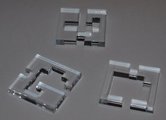
I got this 3-piece burr, made of acrylic, at IPP 29 in SF. It's called 33E and was designed by Frank Potts. |
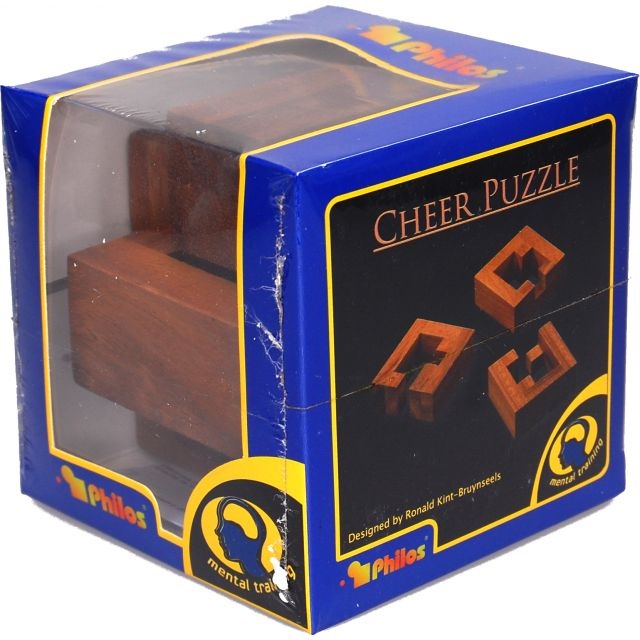
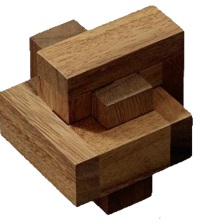
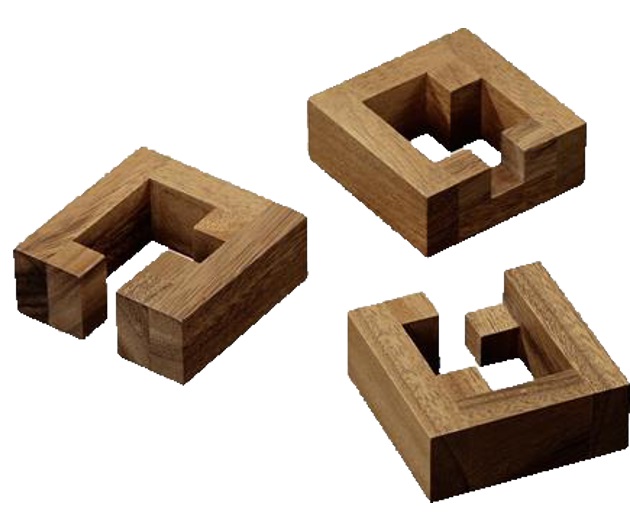
Cheer - designed by Ronald Kint Bruynseels, issued by Philos. A three piece interlocking puzzle. |
|
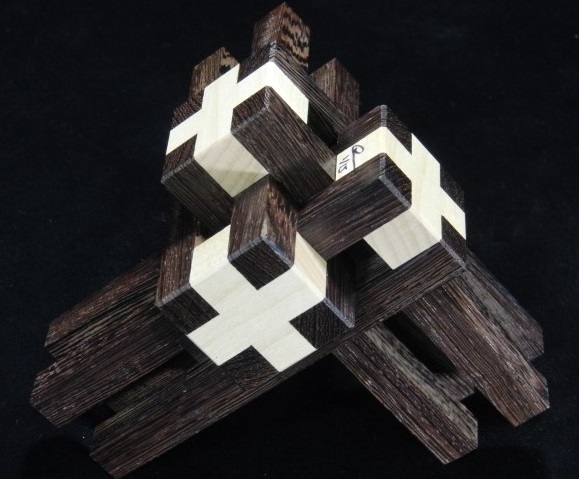
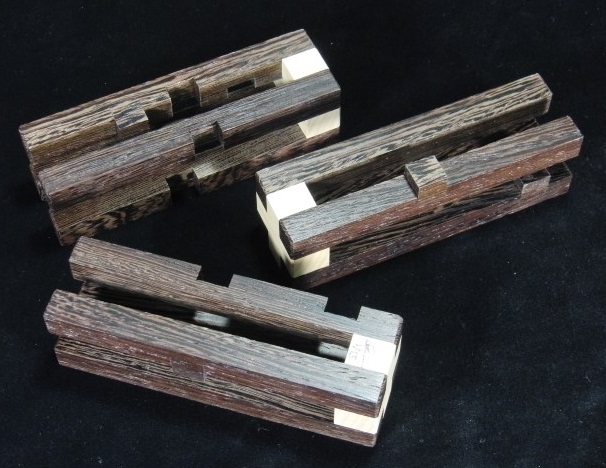
Uri Three Bars - designed by Dario Uri Made by Eric Fuller from Wenge and Maple A single Level-10 solution. |
|

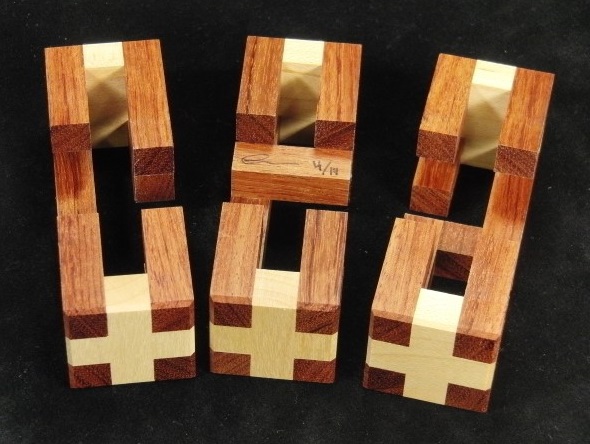
Burr Bones - designed by Frank Potts, made by Eric Fuller from Maple and Bubinga [Dis]assemble the three pieces. |
|
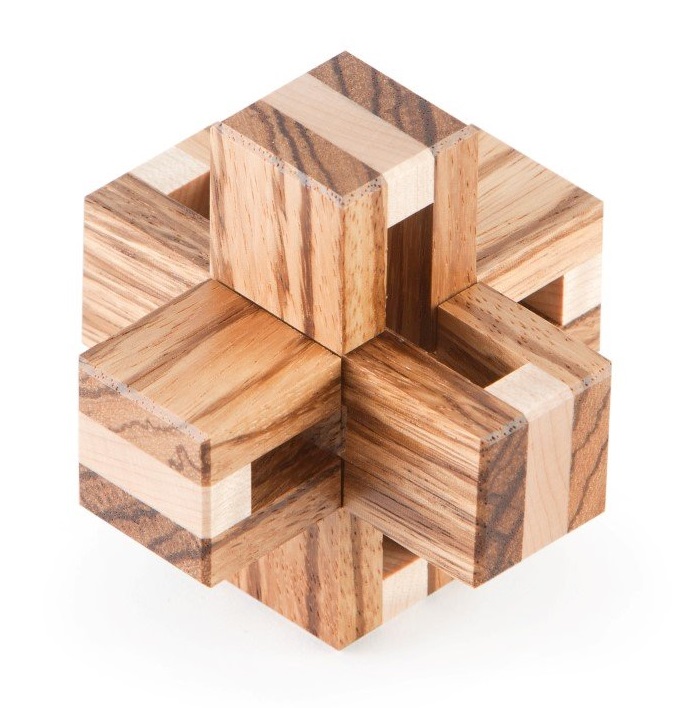
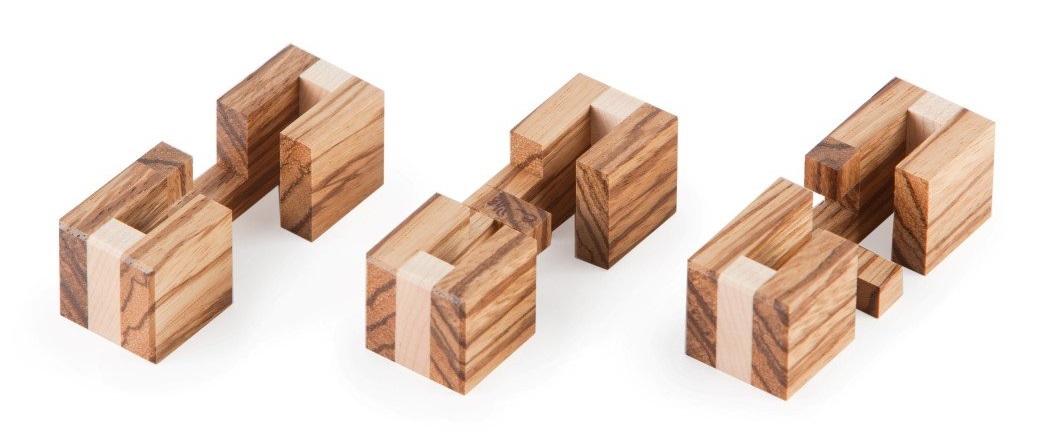
Just 3 - designed by Noah Prettyman, made by Eric Fuller from Zebrawood. Three pieces, level 8.4. |
|

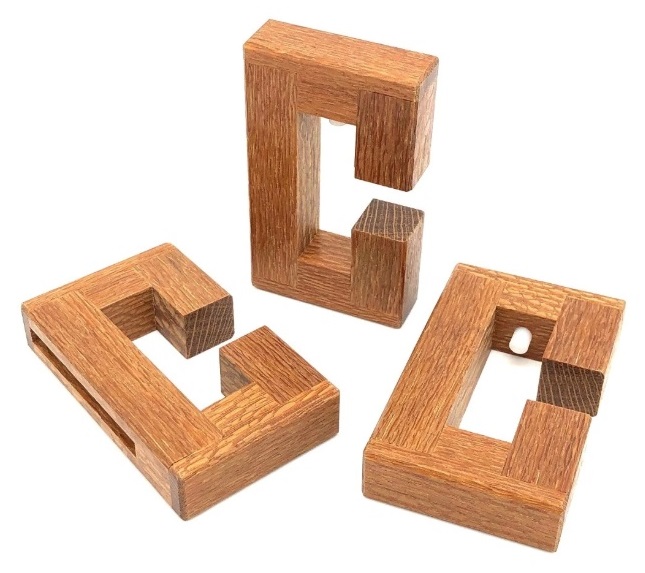
Grooved Three Piece Burr - designed by Kouki Kusumi, made by Eric Fuller from Leopardwood. |
|
| Several other unconventional designs using three pieces are shown on Ishino's website. | |
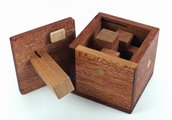 This is a boxed burr I got from Tom Lensch. Each face of the outer box is attached to one burr piece inside the cube. Freeing the key piece requires a trick. The burr pieces used are: #1, #256, #888, #911, #928, and #1024. The box definitely makes it easier to solve, since the faces are distinctly fitted. The mahogany wood is really beautiful. |
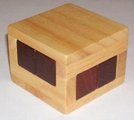 This is a 4-piece burr in a box from Arjeu, variously known as the "Secret Box" or "Pandora's Box" (I also made a copy from Lego). It employs (2x) #792, but the other two pieces have notches where Jurg's system does not allow them (beneath positions 1,4,5, or 8). |
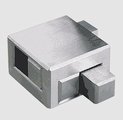 This is the "Combustion" burr from B and P. My first became hopelessly jammed; I obtained another. According to Brian Young, both Internal Combustion and Pandora's Box are the same design, by Tadoa Muroi in the early 1990's. |

Six piece caged burr Purchased at a puzzle store in Berlin during IPP31. |
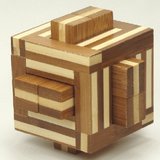
Six-Piece Framed Burr by miToys |
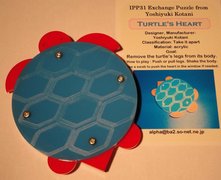
Turtle's Heart - Kotani |
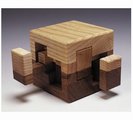 "Life at 21" - Bits & Pieces |
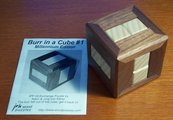 Burr in a Cube #1 by Jürg and Karin von Känel, their exchange at IPP20. The pieces are { 52, 256, 888/1007, 2x 1024 }. They describe this puzzle: "There are a few notchable burrs which are level 4 and unique when assembled inside a cube, but they are of lower level and not unique when assembled outside. Burr in a Cube #1 is the one with the fewest internal voids." Their website has a link to a PDF giving the solution. |
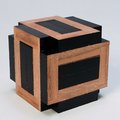 This puzzle from Bits and Pieces is called Hard Core and was designed by Frans de Vreugd. |
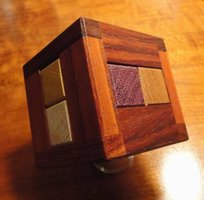
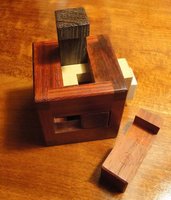
Burr in Cage 4 12, designed by Ishino made by Maurice Vigouroux, from Padauk from the French online puzzle shop Arteludes.com run by Jean-Baptiste Jacquin and Maurice Vigouroux. Level 4.12.2.1.2.2, unique solution, 9 holes. Here is a link to the Puzzle-Palace entry for Ishino's Burr in Cage 4 12 from Arteludes. Here is a link showing the pieces. The pieces are { 52, 256, 768, 1007, 2x 1024 }. Compare to von Känel's Burr in a Cube #1 above, which has 888 instead of 768. |
||
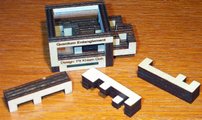 This boxed 6-piece burr is called Quantum Entanglement. It has a unique level 48 solution. |
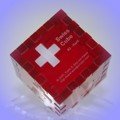
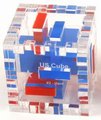 The red puzzle is a 3-piece boxed burr called the Swiss Cube. There are two versions - easy and hard - they look the same from the outside, but their pieces are differently notched. I have both. The red and blue puzzle in a clear cube is called the U.S. Cube. It has six interlocking pieces. All created by Jurg von Kaenel. |
 Innowoo Cube (?) |
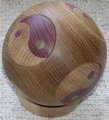 Yin Yang - Pelikan An unusual six-piece burr inside a hollow ball. The Yin-Yang symbols are attached to the ends of the burr pieces. Purchased from Puzzlewood.de. |
 Nested Burr Four CubicDissection |
|
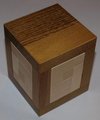

This is Swirls 1, designed by Bram Cohen. Purchased from Bernhard Schweitzer at IPP 29 in SF. Four pieces in a cage - a very difficult puzzle! |
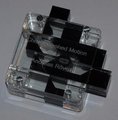
Choreographed Motion, designed by Andreas Roever Purchased at IPP 29 in SF. The four pieces have angular cuts, and multiple pieces must be moved at once. Clever, and not overly difficult. Nicely made from acrylic. |
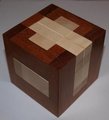
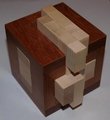
This is Quintuplets, designed by Franklin Gonsalves. Purchased from Bernhard Schweitzer at IPP 29 in SF. |
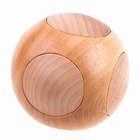
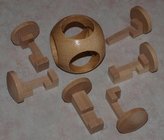
An inexpensive "Ball Lock" - one piece seems needlessly truncated. |
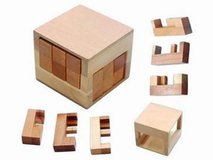
"Luban Lock Box" from China, a boxed burr with 6 pieces. The pieces are 2x4x8. BurrTools says this has 98 assemblies but 18 solutions. The highest level is 10.6.1.2.2. |

Doors and Drawers - designed by Michael Toulouzas, purchased from Bernhard Schweitzer |
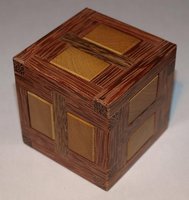
Sticks in a Cage - designed by Tom Jolly - made by Maurice Vigouroux |
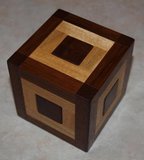
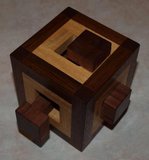
The Sonneveld Cubed Burr puzzle, designed by Dic Sonneveld and made by Tom Lensch 3 unusual burr pieces inside a cubic cage - rotations are required to solve. Made from Shedua, Prima Vera, and Granadillo |
|
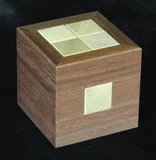
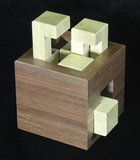
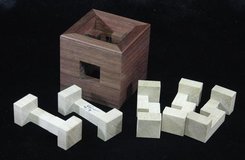
Five Sticks 28 designed by Stéphane Chomine, made by Eric Fuller, from Walnut (frame) and Gum (burrs). 28 moves to remove the first piece. |
||
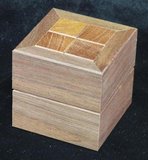
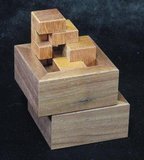
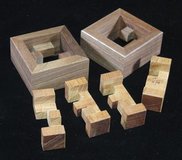
4 in 2 designed by Stéphane Chomine, made by Eric Fuller, from Walnut (frame) and Mahogany (burrs). 14 moves to remove the first piece, 17 for the second. |
||
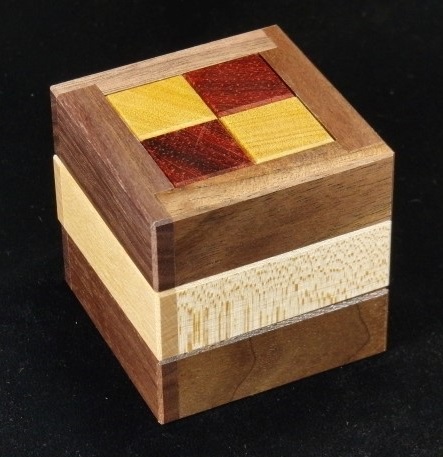
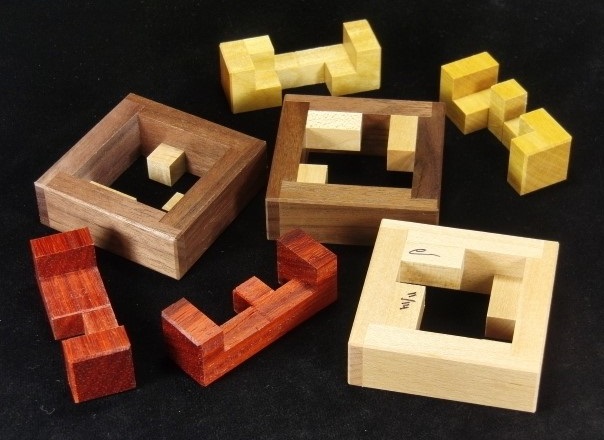
Rupture designed by Dan Fast made by Eric Fuller |
||
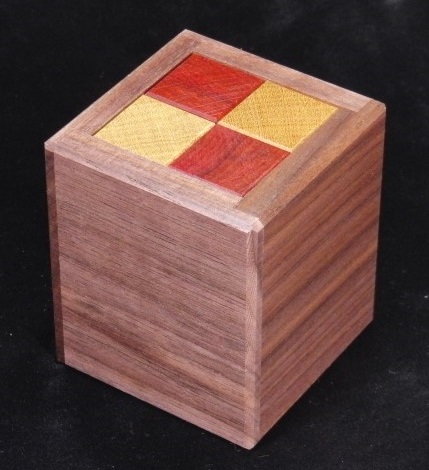
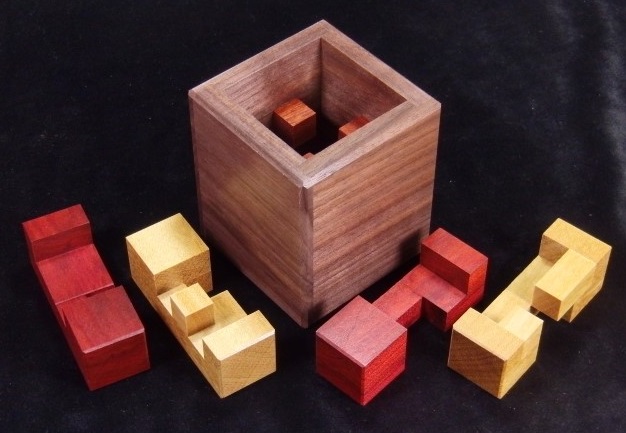
Shake Something - designed by Dan Fast, made by Eric Fuller from Yellowheart and Chakte Viga with a Walnut box Extract the four pieces from the box. |
||
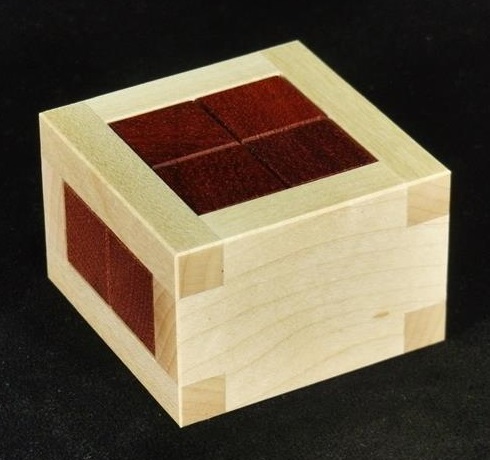
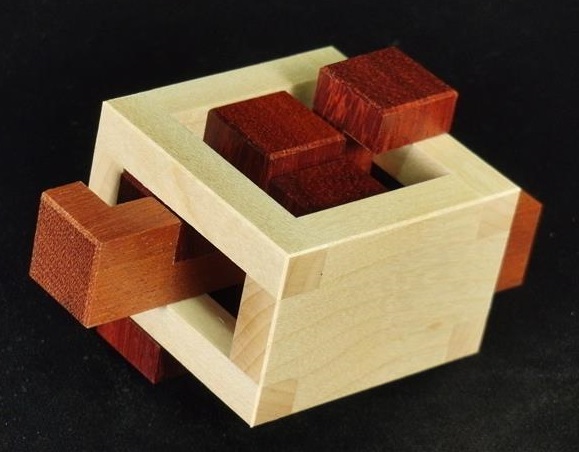
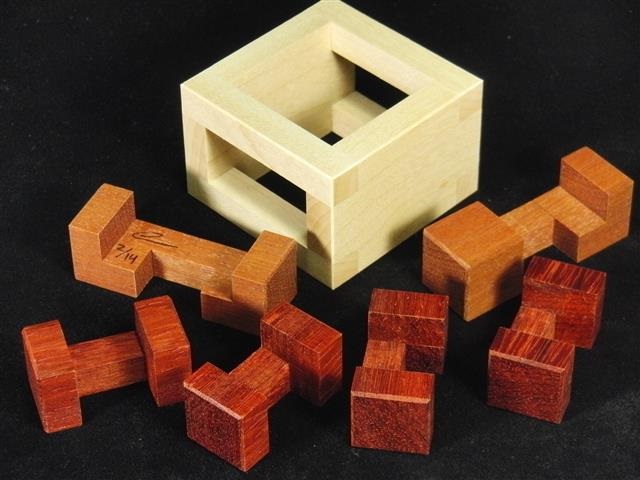
Rail Box designed by Yavuz Demirhan, made by Eric Fuller from Maple, Purpleheart, and Padauk Level 18 |
||
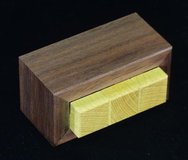
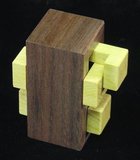
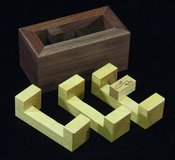
3 Sticks Trapped designed by Stéphane Chomine, made by Eric Fuller, from Walnut (frame) and Yellowheart (burrs). Level 12.6.8. |
||
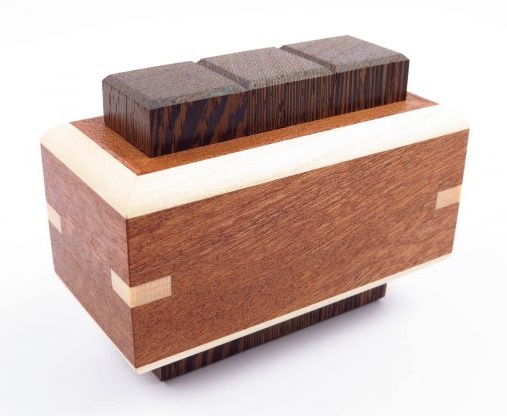

Tribord - designed by Stéphane Chomine, made by Pelikan from Mahogany and Wenge Level 17.3.4 |
||
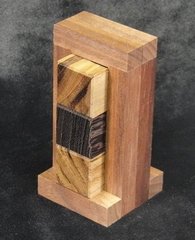
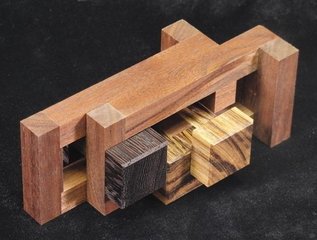
Moonflight, designed by Osanori Yamamoto and made by Eric Fuller, from Walnut, Mora, and Wenge. Level 20.2.5. |
||
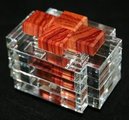
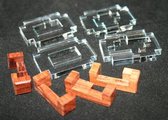
Padaung Rings, designed by Alfons Eyckmans and made by Eric Fuller from Tulipwood and Acrylic - it takes 24 moves to remove the first piece. |
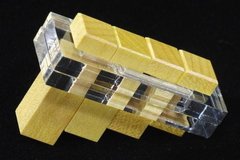
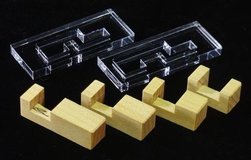
Zauberflote, designed by Gregory Benedetti. (See this design at Ishino's site.) Made by Eric Fuller, from Yellowheart and laser-cut acrylic. |
|

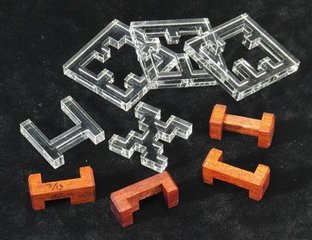
Aramis, designed by Stephane Chomine and made by Eric Fuller, from acrylic and bloodwood. Level 12.11.7.12 solution. |
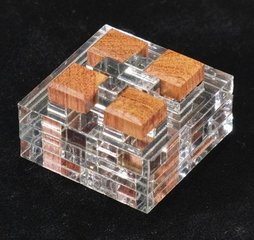
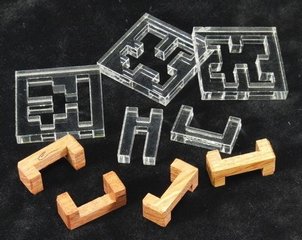
Captain, designed by Stephane Chomine and made by Eric Fuller, from acrylic and bubinga. 34 move solution. |
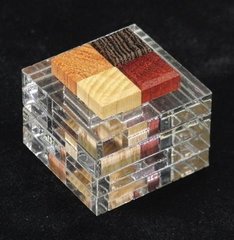
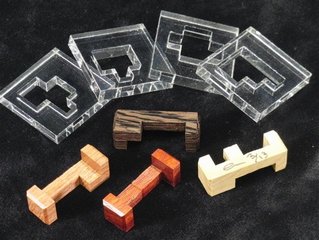
4 Stick 8, designed by Frank Worrell and made by Eric Fuller, from acrylic, bubinga, bloodwood, wenge, and ash. Unique level 21 solution. |
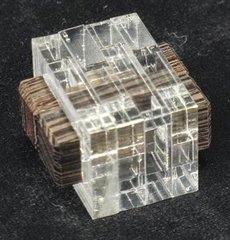
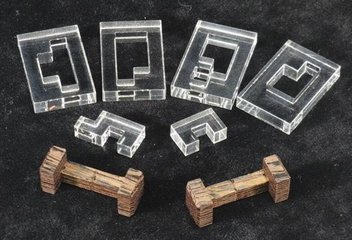
Worm Inside, designed by Chi-Ren Chen and made by Eric Fuller, from acrylic and wenge. |
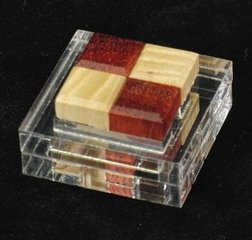
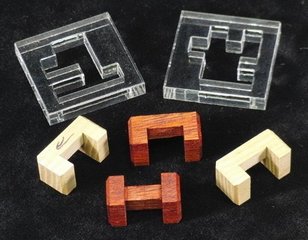
Quads and Rings 1, designed by Yavuz Demirhan and made by Eric Fuller, from acrylic, bloodwood, and ash. |
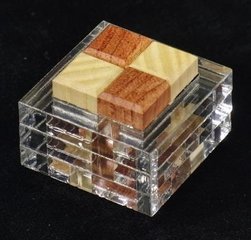
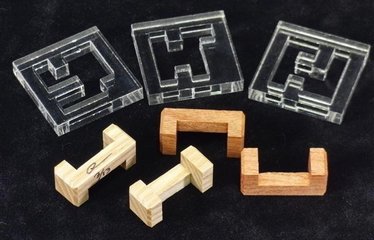
Quads and Rings 2, designed by Yavuz Demirhan and made by Eric Fuller, from acrylic, bubinga, and ash. |
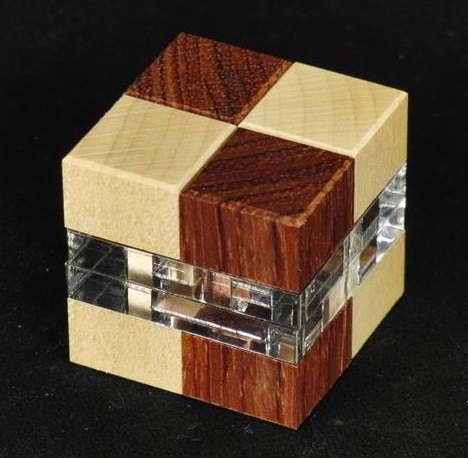
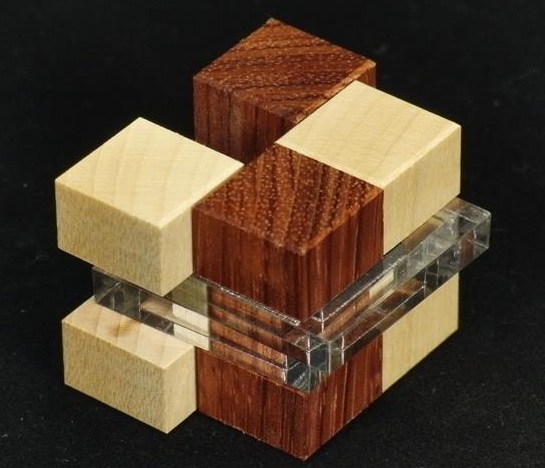
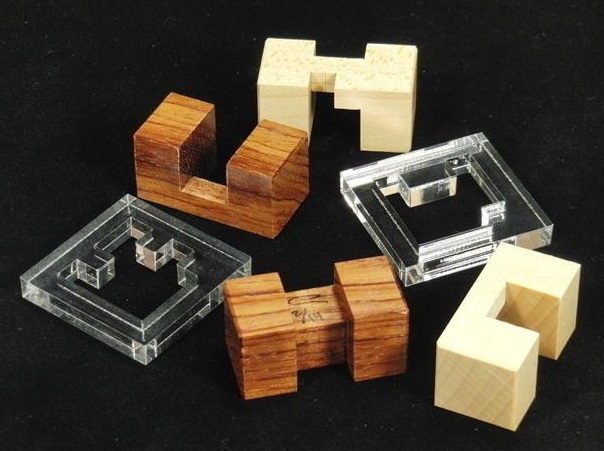
Carbo Cube designed by Donald Osselaer, made by Eric Fuller from Bubinga, Maple, and Acrylic Level 6.2 |
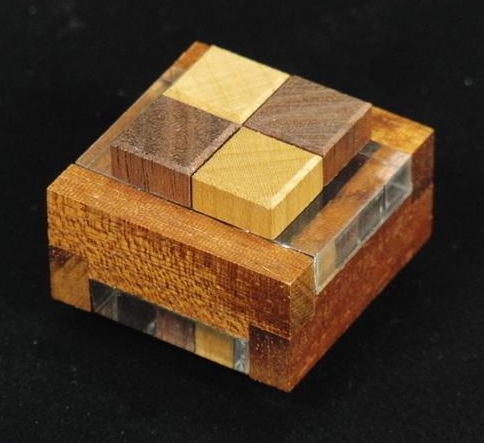
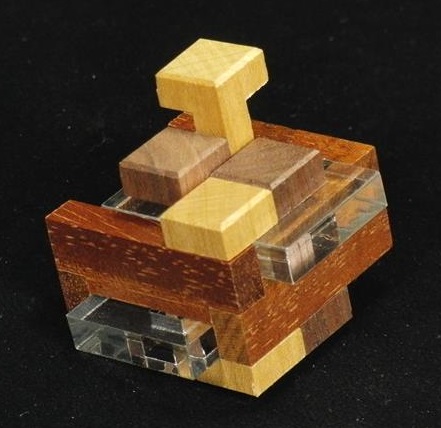
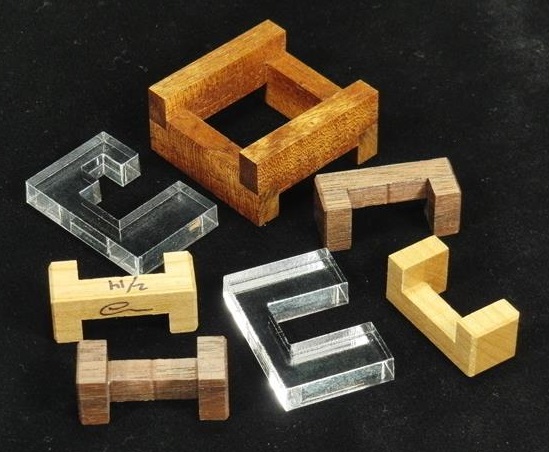
Gaia designed by Yavuz Demirhan, made by Eric Fuller from Walnut, Cherry, Sapele, and Acrylic Level 11.2 |
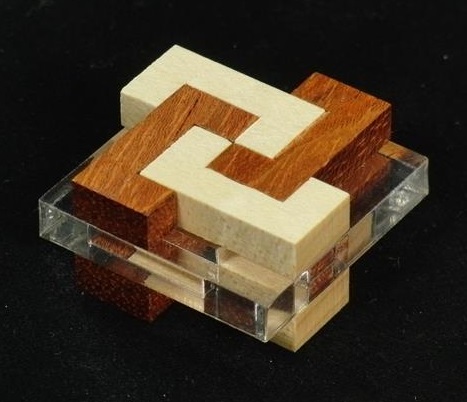
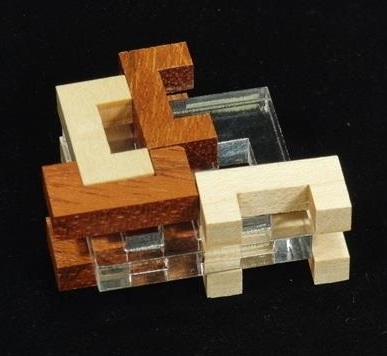
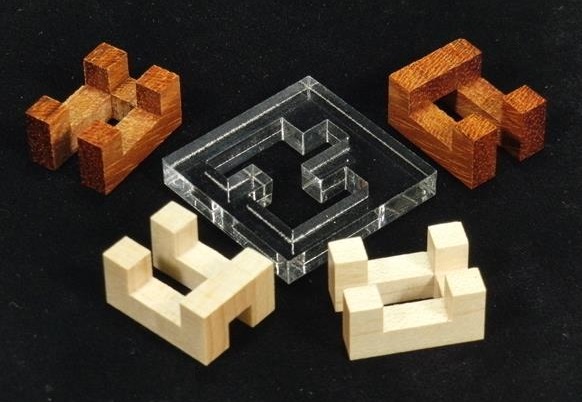
Vortex designed by Chi-Ren Chen, made by Eric Fuller from Maple, Bubinga, and Acrylic Level 21, with rotations |
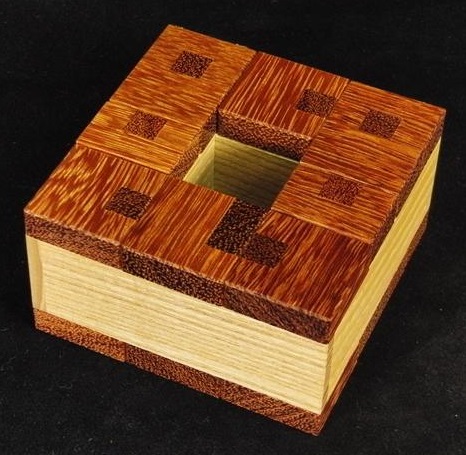
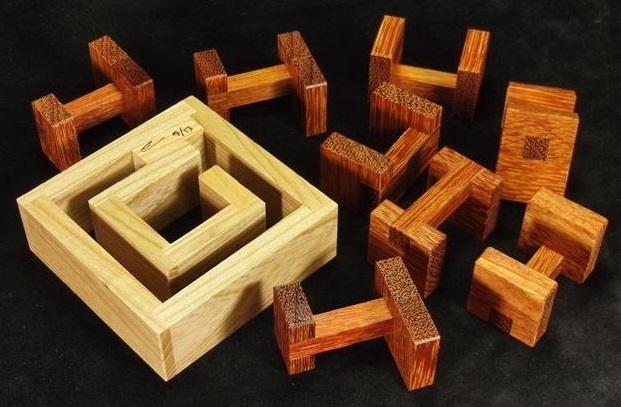
Noncsi - designed by Tamas Vanyo, made by Eric Fuller from Bubinga and Carolina Ash. 8 pieces pack into the frame in only one way and in a specific order. Level 2.3.9.7.5. |
||
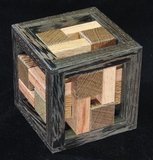
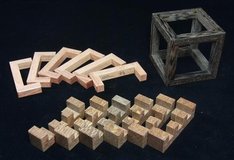
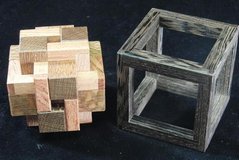
Boards and Sticks with Frame, designed by Gregory Benedetti. (See this design at Ishino's site.) Made by Eric Fuller, from Wenge, Bubinga, and Leopardwood. |
||
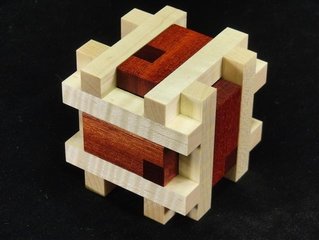
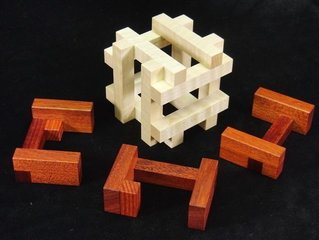
Triaxe - designed by Stephane Chomine, made by Eric Fuller from Quilted Maple and Bloodwood. Three burr pieces interlock in the frame at level 24. |
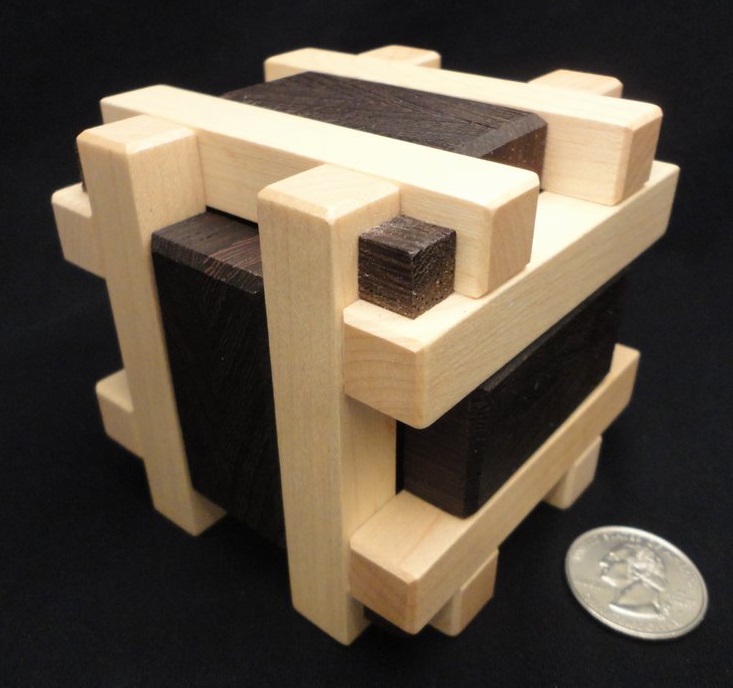
Triaxe - designed by Stéphane Chomine, made by Brian Menold from Maple and Wenge Level 24.2 |
|
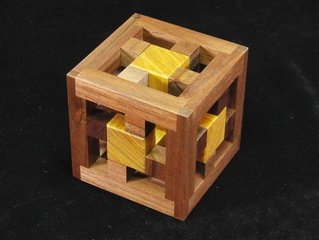
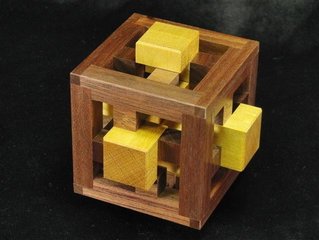
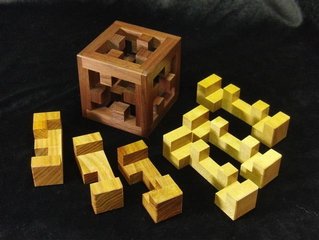
Vectes / Ghidorah - two designs that share the same cage, made by Eric Fuller The cage is walnut, the Vectes (longer) pieces are yellowheart, and the Ghidorah pieces are canarywood. Ghidorah uses the three shorter, distinct pieces and was designed by Yavuz Demirhan. It is at level 22.3. Vectes was designed by Alfons Eyckmans and uses the three longer identical pieces. It is level 37.2.3. |
||
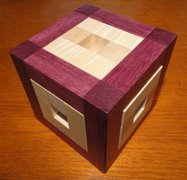
The Four Piece Burr Cube, designed by Osanori Yamamoto, and made from Curly Maple and Purpleheart by Peter Wiltshire. I really like this design, and the beautiful craftsmanship makes this a much-appreciated one-of-a-kind gift! |
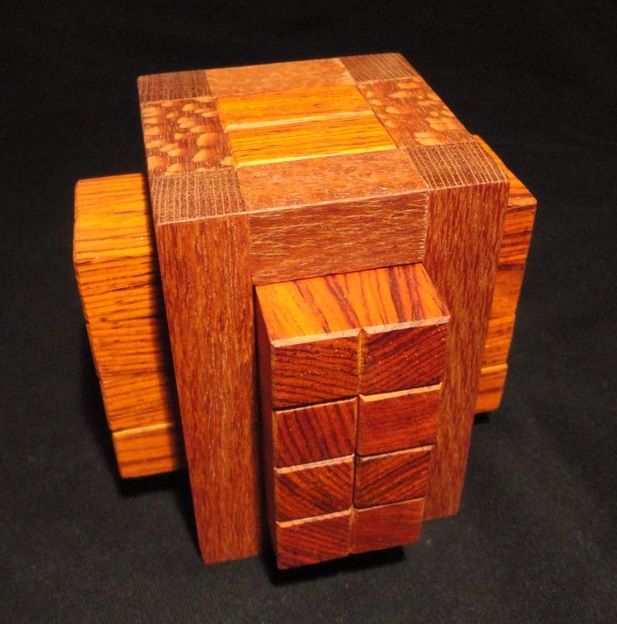
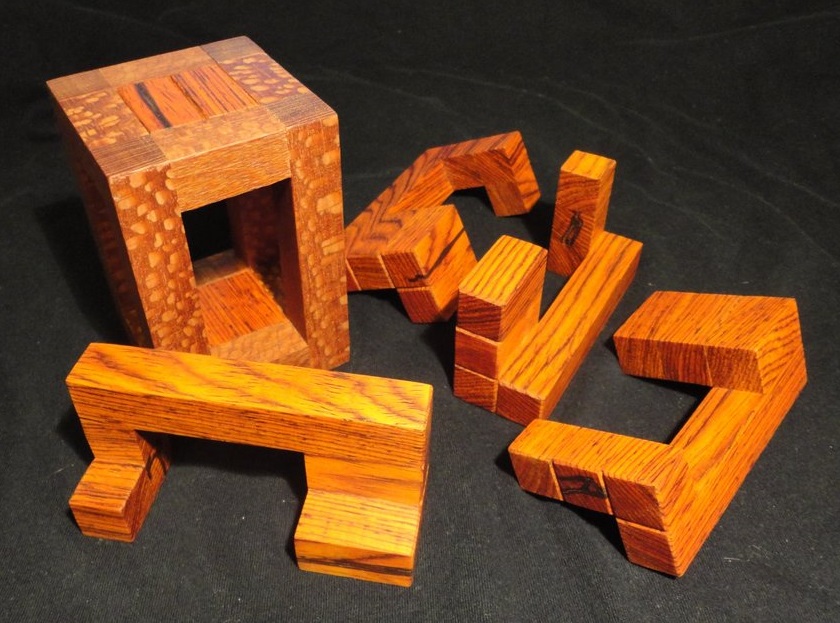
L in Cage - designed in 2013 by Yavuz Demirhan, made from Lacewood and Cocobolo by Brian Menold at Wood Wonders Free four L-shaped pieces from the cage - level 10.2.2 A substantial size with the cage alone at over 3" tall and about 2.5" square. |
|
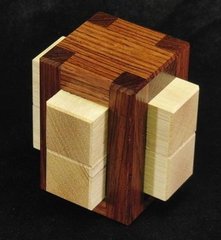
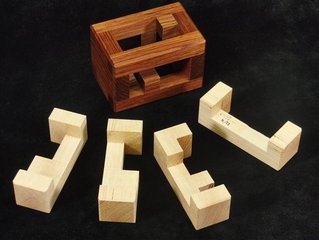
Cage for Four Sticks, designed by Stephane Chomine, made by Eric Fuller from Dark Rosewood and Sycamore. Level 24.6.3. |
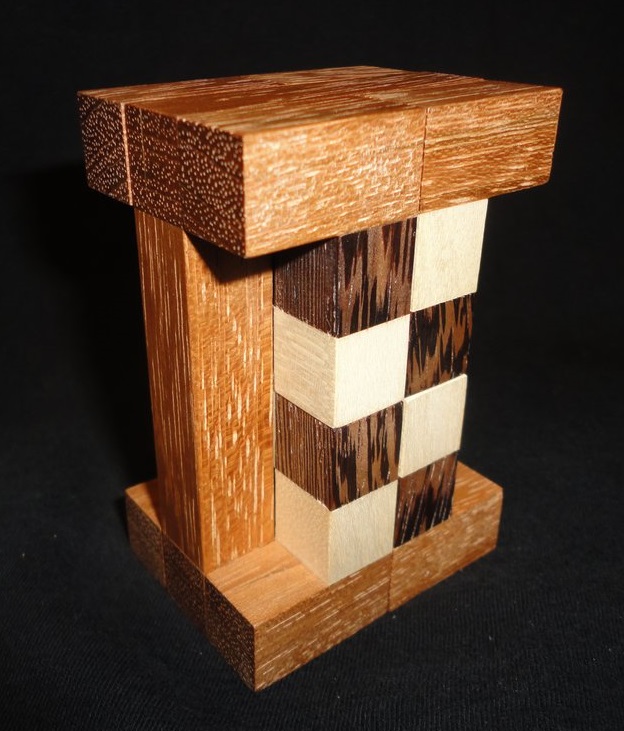
Hourglass designed by Osanori Yamamoto. Made by Pelikan. Remove four U-shaped pieces from a frame. Purchased from Tim Rowett at NYPP2015. |
|
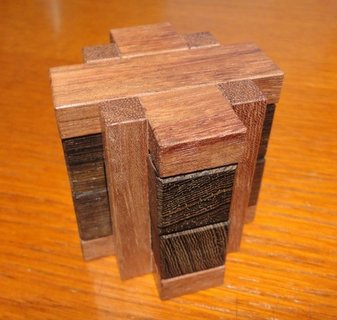
Ice Pillar - designed by Osanori Yamamoto Level 30.6.3 - the first of the four pieces won't be coming free from the cage quickly! |
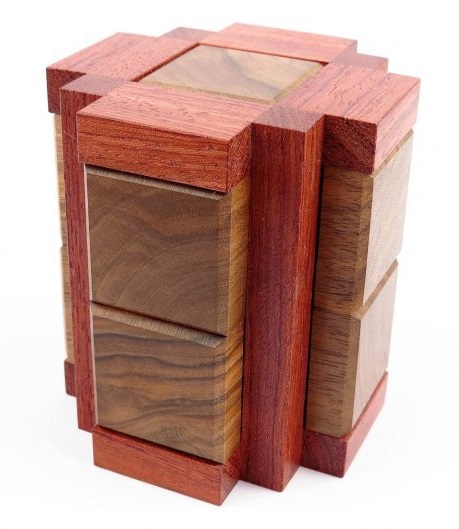
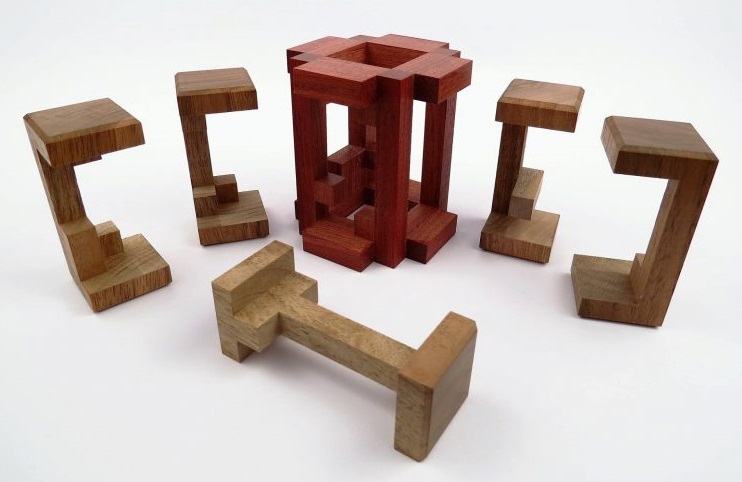
Tower - designed by Klaas Jan Damstra, made by Pelikan from Bubinga and Walnut Level 29.2.9.6.3 |
|
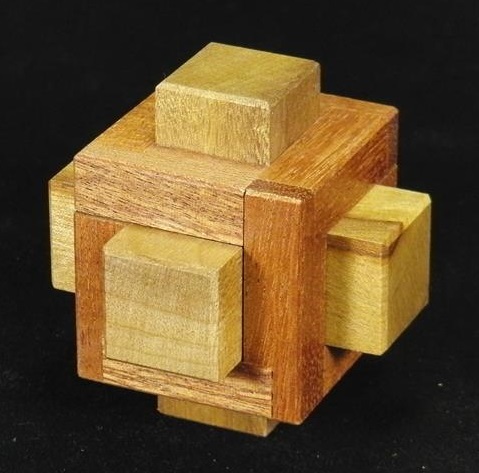
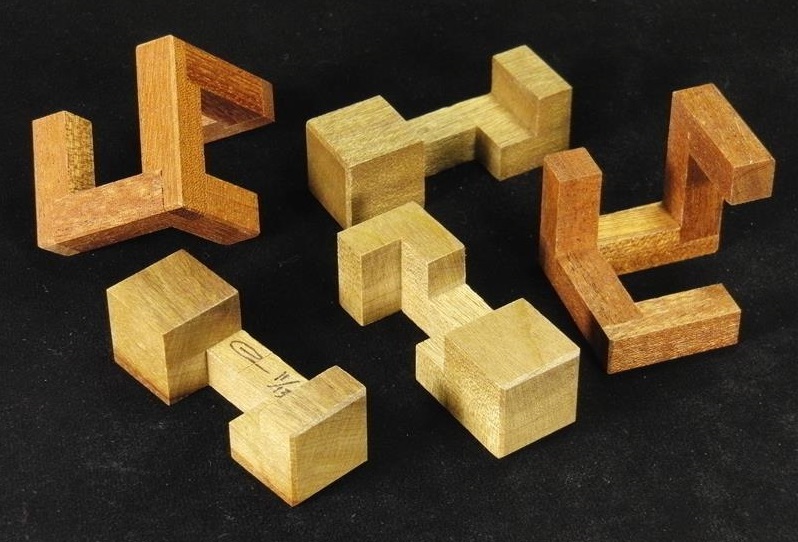
Spacemine - designed by Yavuz Demirhan, made by Eric Fuller from Sapele and Imbuya |
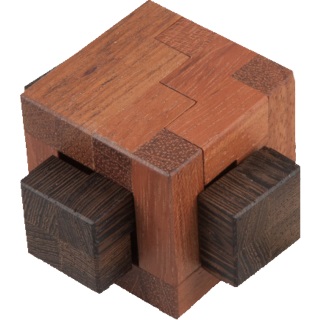
Two Pairs One - designed by Osanori Yamamoto, made by Pelikan, purchased from PuzzleMaster |
|
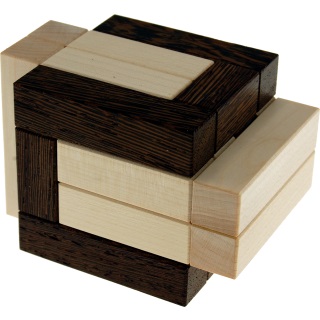
Burrito - designed by Yavuz Demirhan, made by Pelikan, purchased from PuzzleMaster |
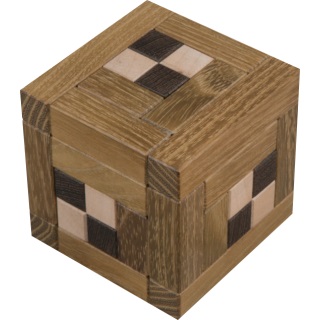
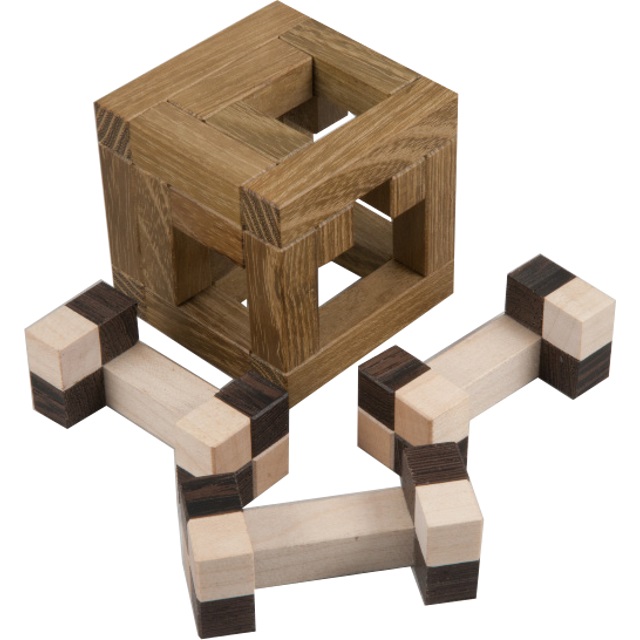
Castle Hole - designed by Osanori Yamamoto, made by Pelikan, purchased from PuzzleMaster |
|
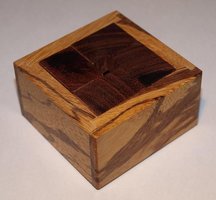

Typhoon S1 by Osanori Yamamoto - made by Maurice Vigouroux |
||
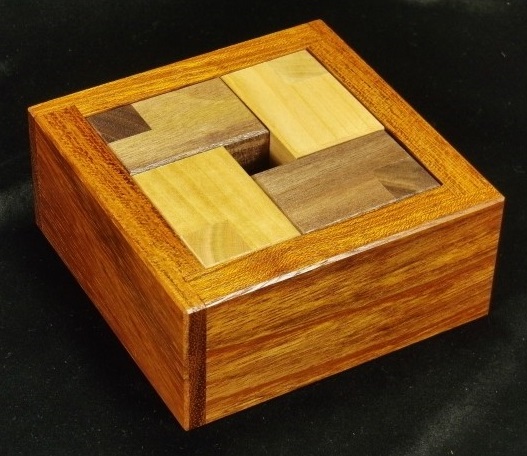
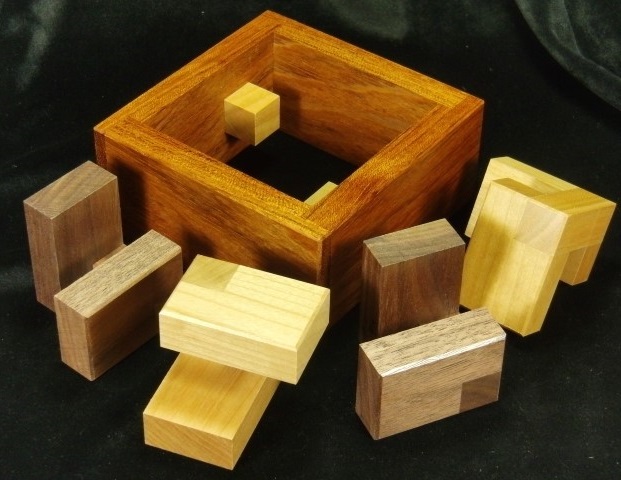
Galaxia - designed by Yavuz Demirhan, made by Eric Fuller, from Jatoba, Cherry, and Walnut. |
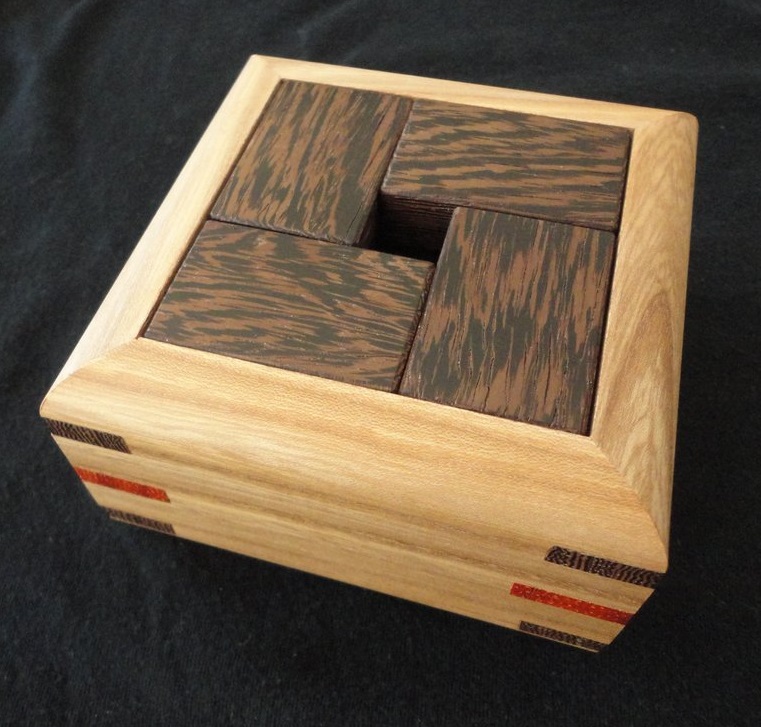
Galaxy Z designed by Osanori Yamamoto, made by the Pelikan workshop, purchased from PuzzleWood.de |
|
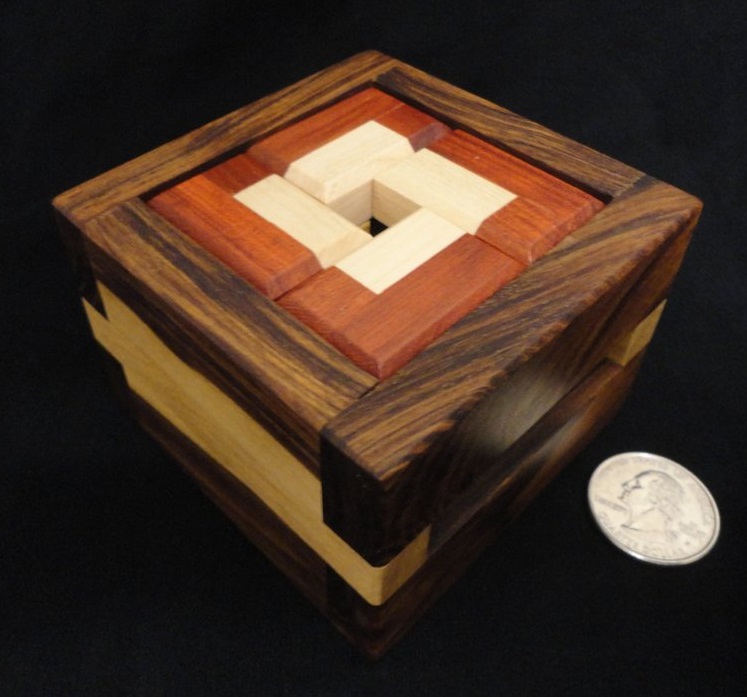
Wheel Lock - designed by Tzy Hung Chein, made by Brian Menold from Tambodi sapwood, Redheart, and Maple Level 15.18.14.4 |
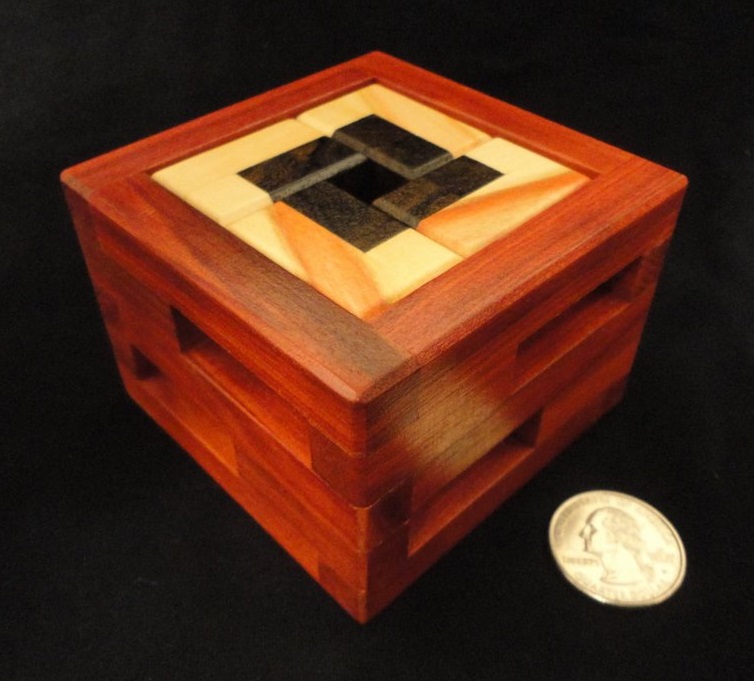
Dispersion - designed by Tzy Hung Chein, made by Brian Menold from Redheart, Box Elder, and Ziricote Level 31.2.4.4 |

Burrbox 1 - designed by Tom Jolly, made by Brian Menold from Spalted Beech and Holly Level 8.6.10.3 |
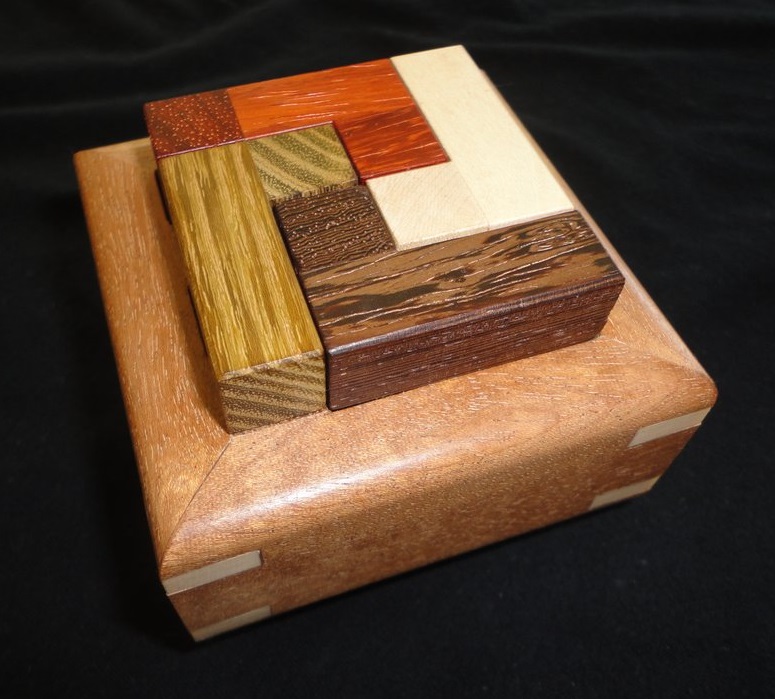
Mysterious Galaxy designed by Osanori Yamamoto, made by the Pelikan workshop, purchased from PuzzleWood.de |
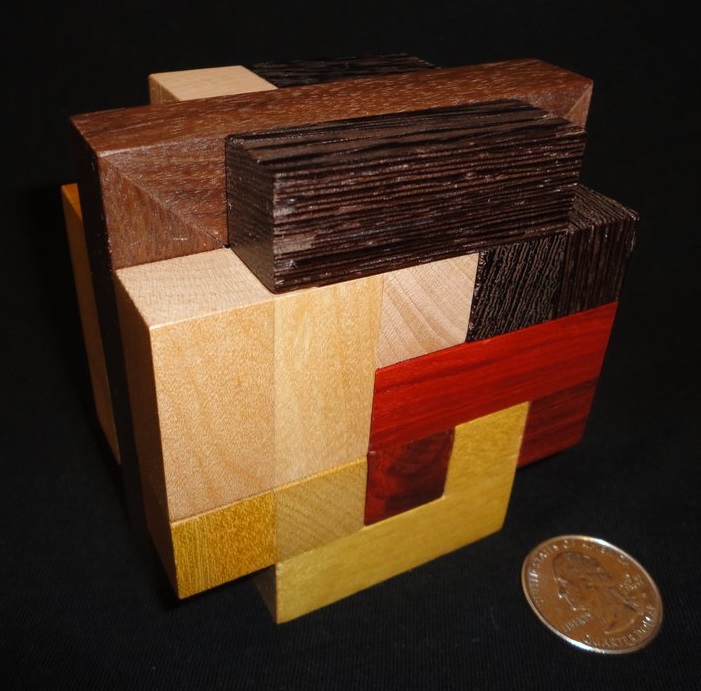
Khamsin designed by Jos Bergmans. Four pieces and ring, made by Brian Menold from Walnut, Maple, Wenge, Redheart, and Yellowheart. PWBP 9.3.3.3 |
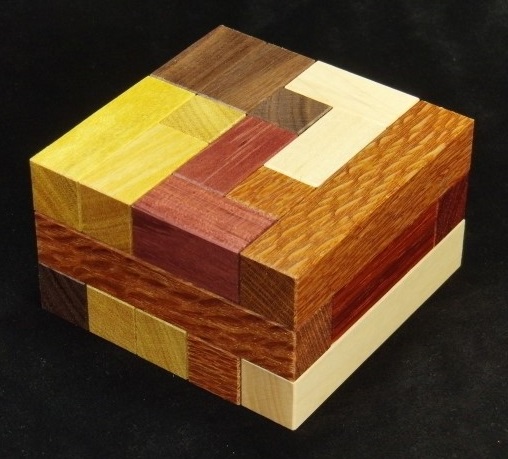
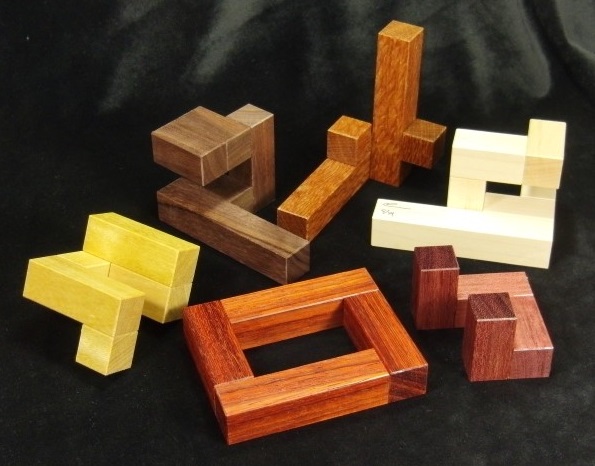
Ring Lock - designed by William Hu, made by Eric Fuller from Padauk, Maple, Walnut, Leopardwood, Yellowheart and Purpleheart [Dis]assemble the six pieces. |
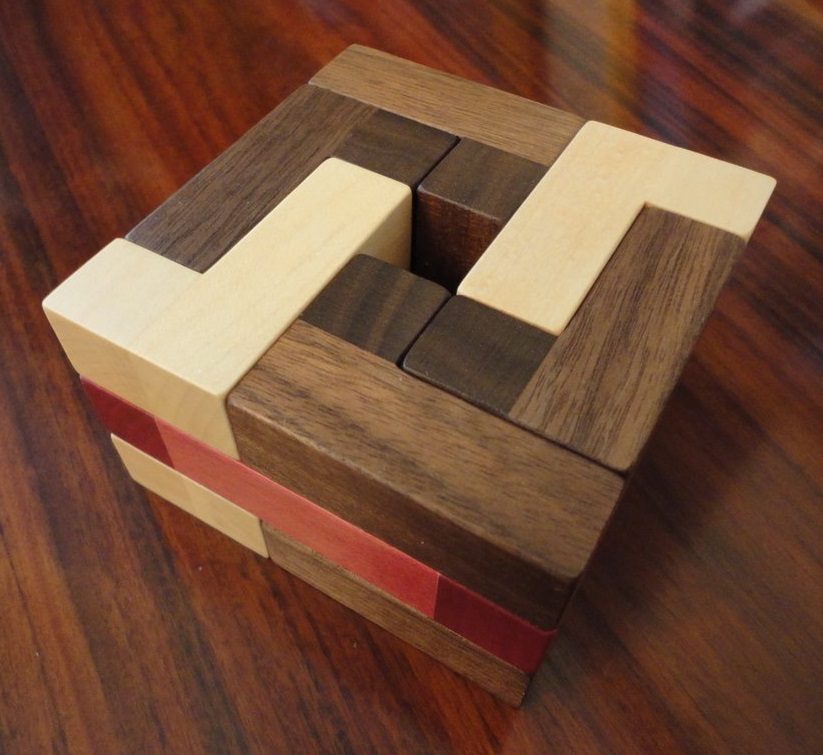
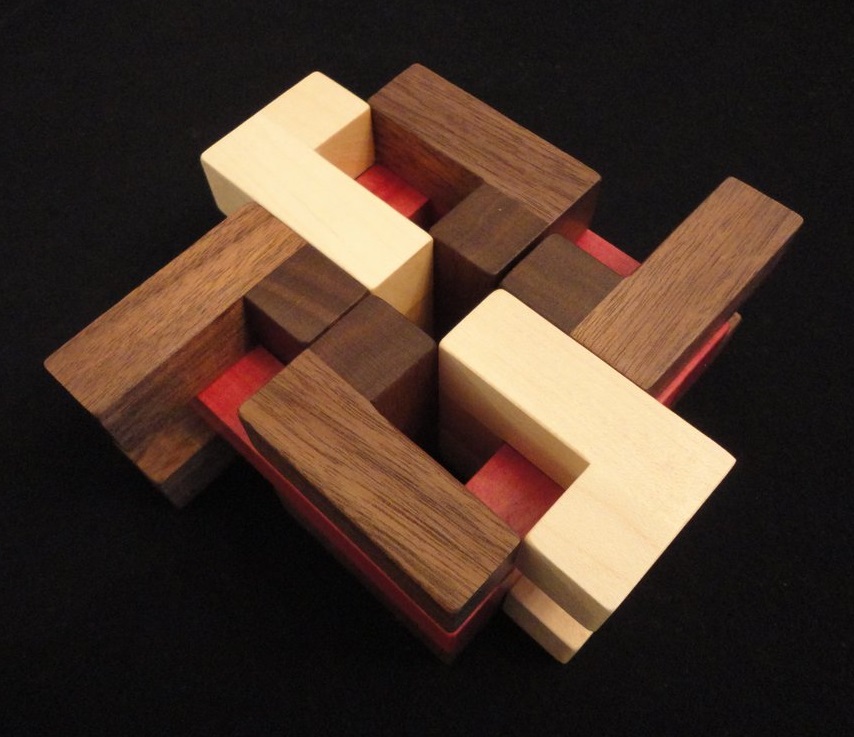
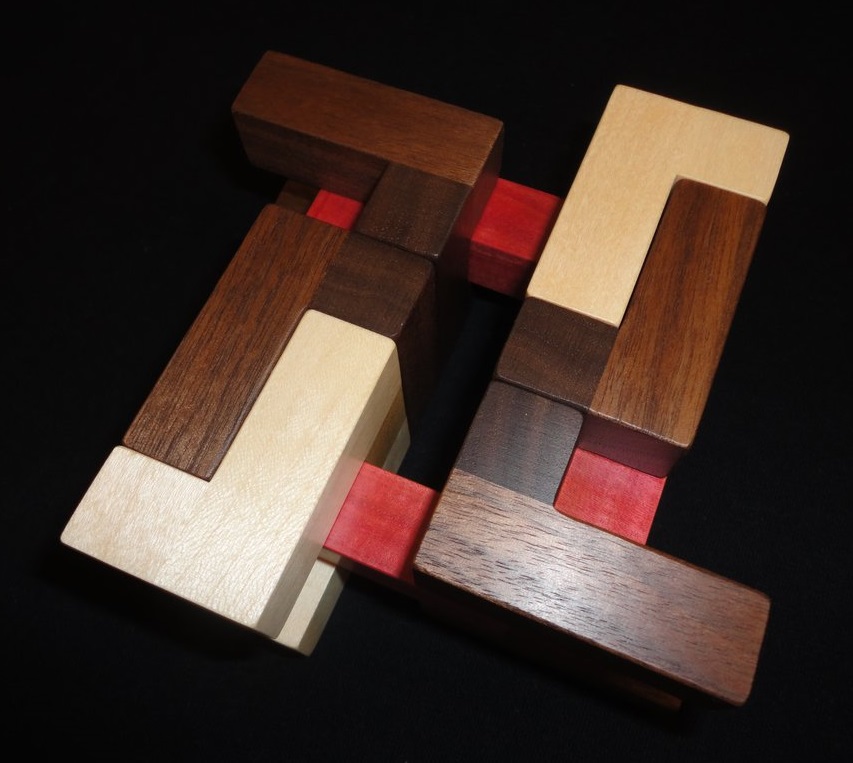
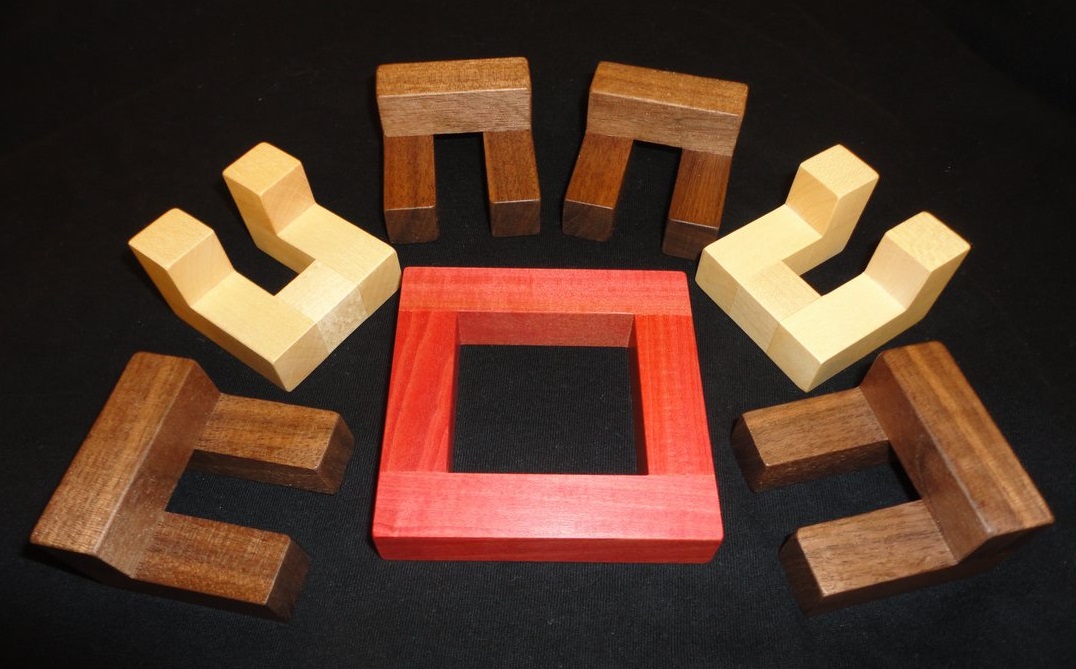
Pink Ivory Ring - designed by Ken Irvine, made by Tom Lensch from Pink Ivory, Maple, and Walnut. |
||

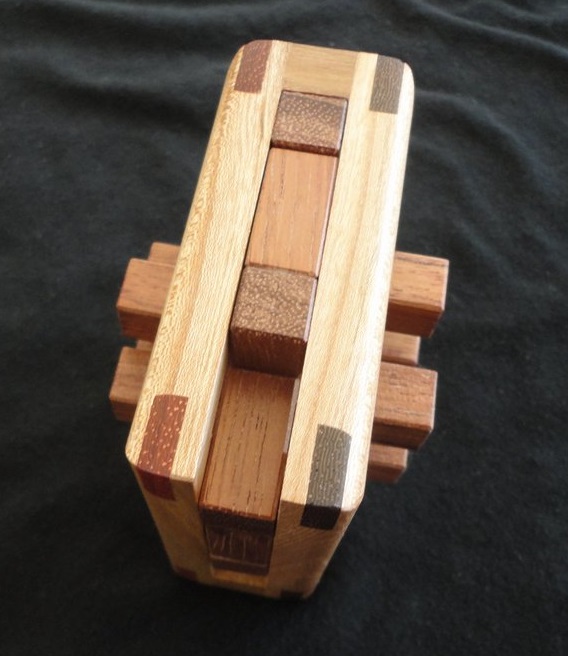
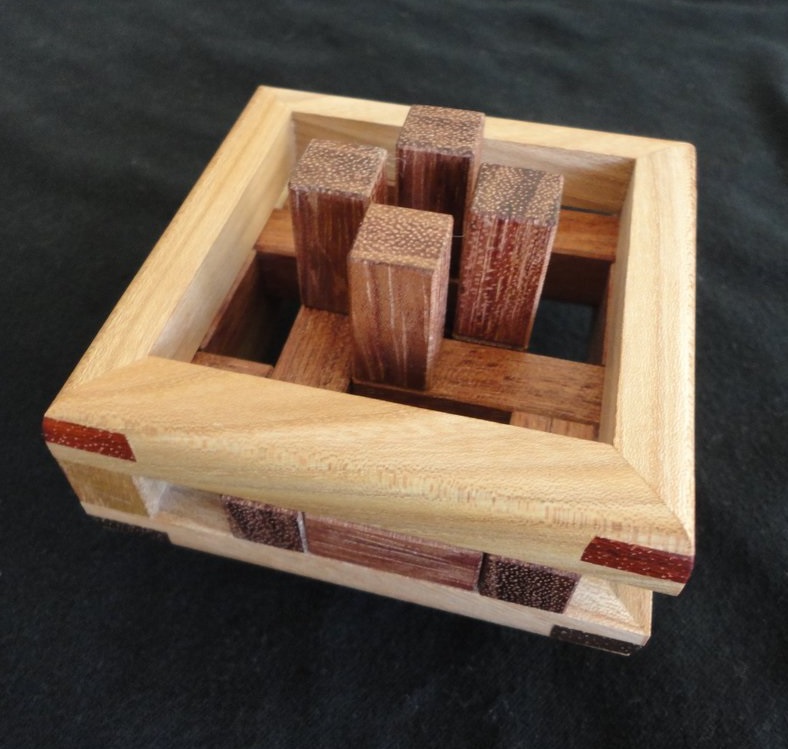
Stan designed by Tamas Vanyo, made by the Pelikan workshop, purchased from PuzzleWood.de |
||
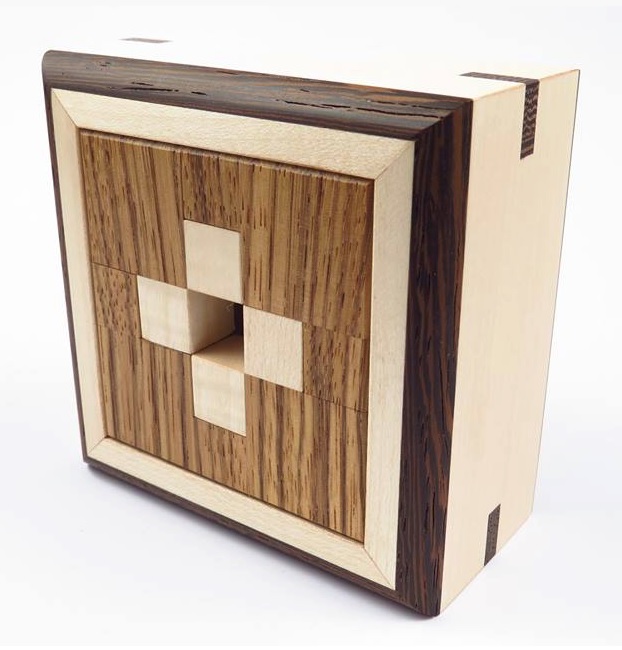

Arrow - designed by William Hu made by and purchased from Pelikan. Zebrano, Wenge, Maple. Level 23.14.7 |
||
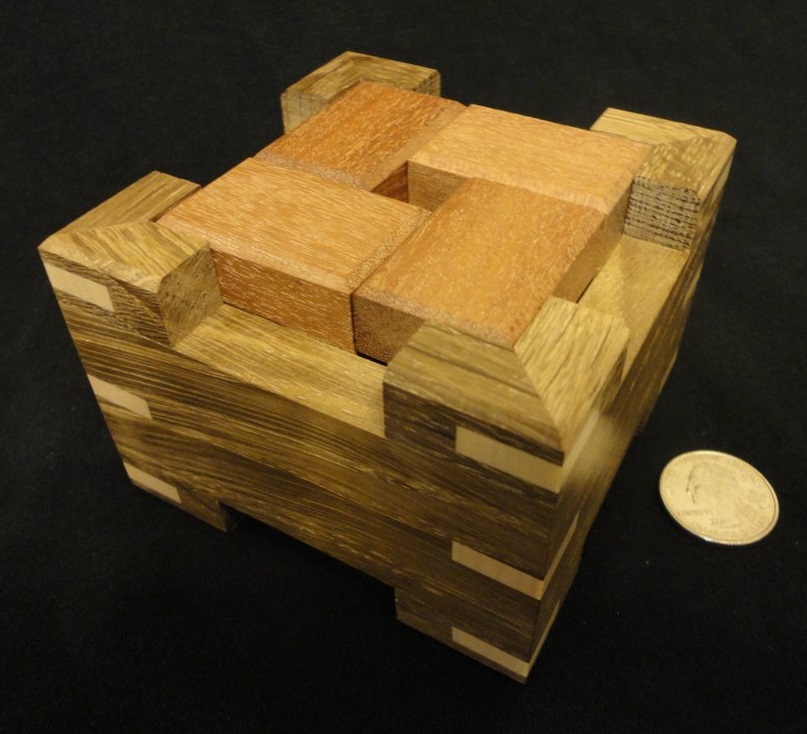
Castle designed by Tzy Hung Chein. Made by Pelikan from Oak and Mahogany. |
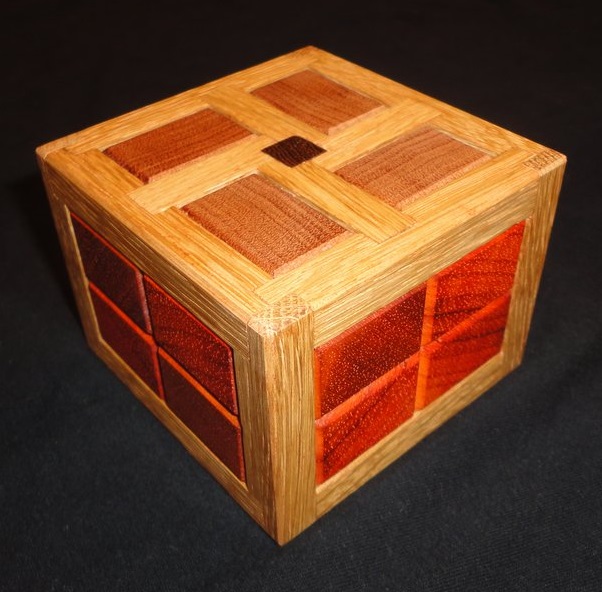
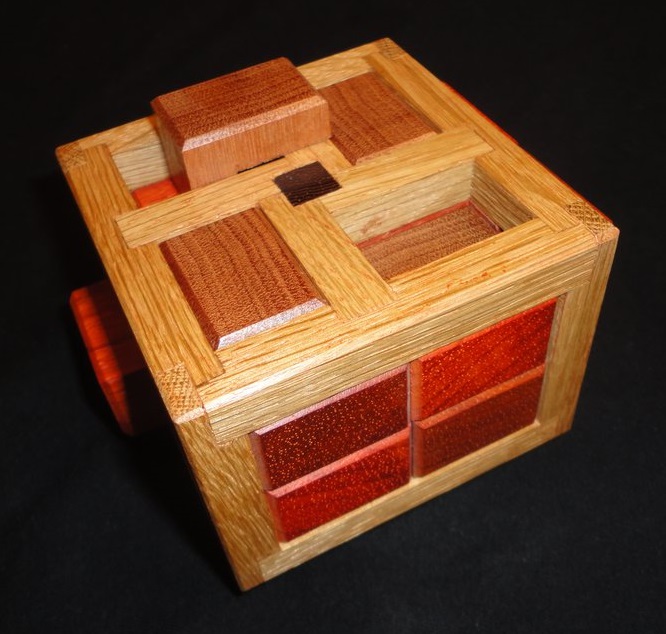
Hive designed and made by Alfons Eyckmans, from Padauk, Moabi, and Oak. Purchased directly from Alfons. |
|
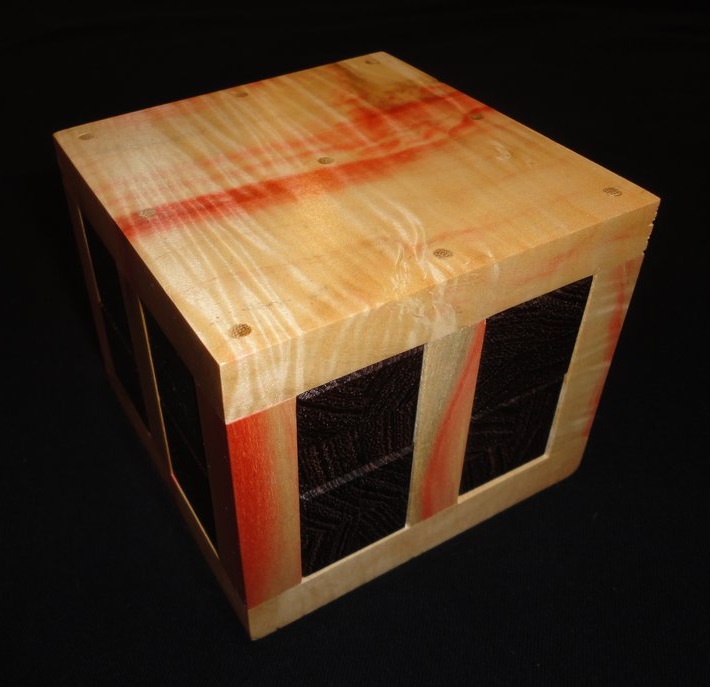
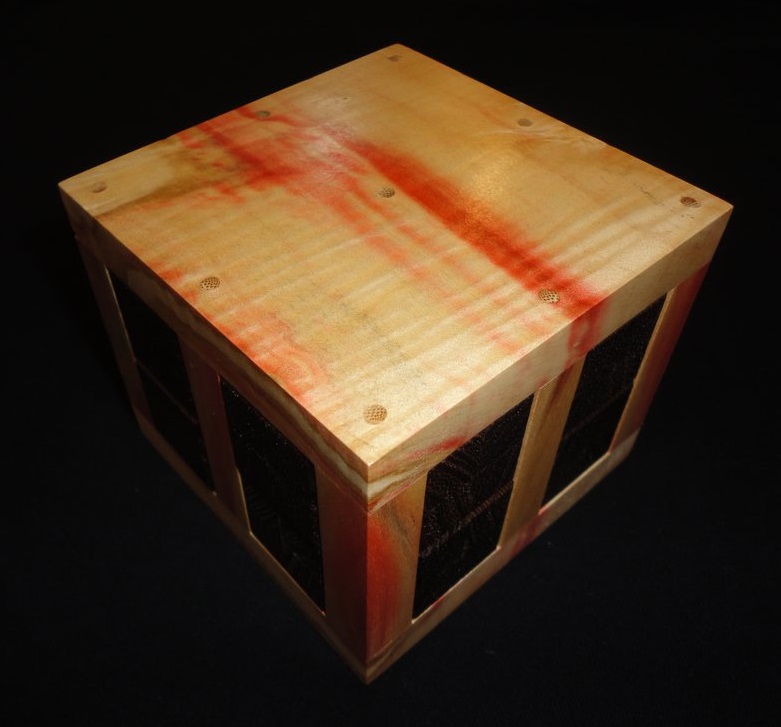
Gates O designed by Tamas Vanyo, made by Brian Menold A Box Elder cage with Bambooo pins and 8 identical Wenge pieces. 35 moves to get the first piece out. |
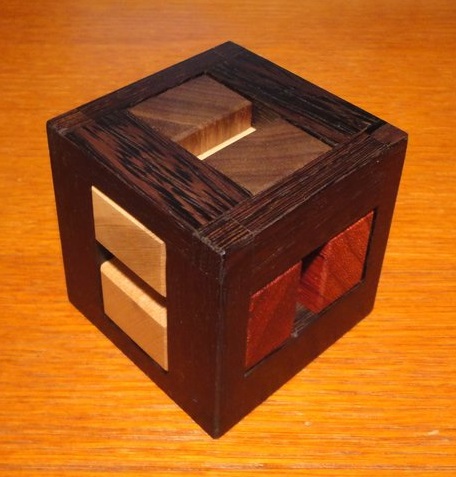
Trichromat designed and made by Yavuz Demirhan The 7cm cubic cage is Wenge, and there are 3 pairs of pieces, of oak, maple, and padauk. 44 moves to get the first piece out. |
|

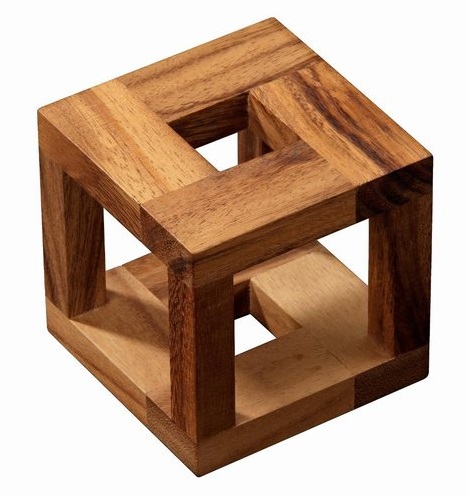

In Brookline I stopped in at Eureka Puzzles and found a Mixed Up cube from Philos designed by Ad van der Schagt. |
||
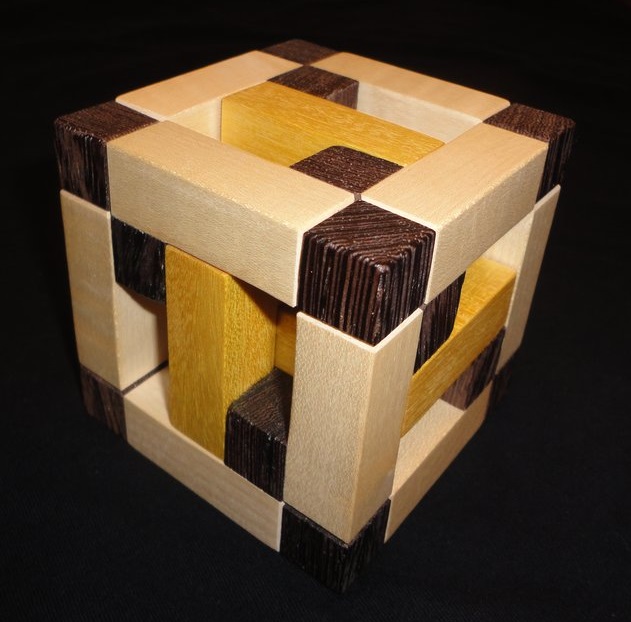
Carambole No. 2 - designed by Yavuz Demirhan, made by Brian Menold, from Sycamore, Wenge, and Yellowheart. |
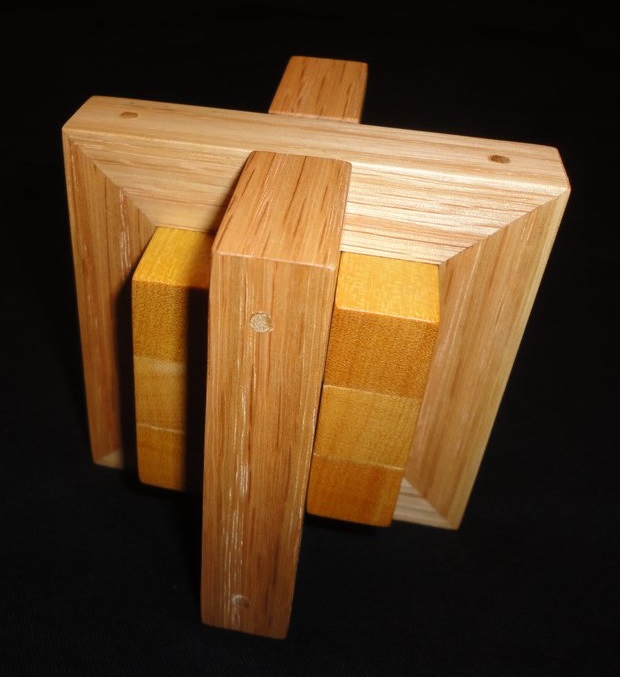
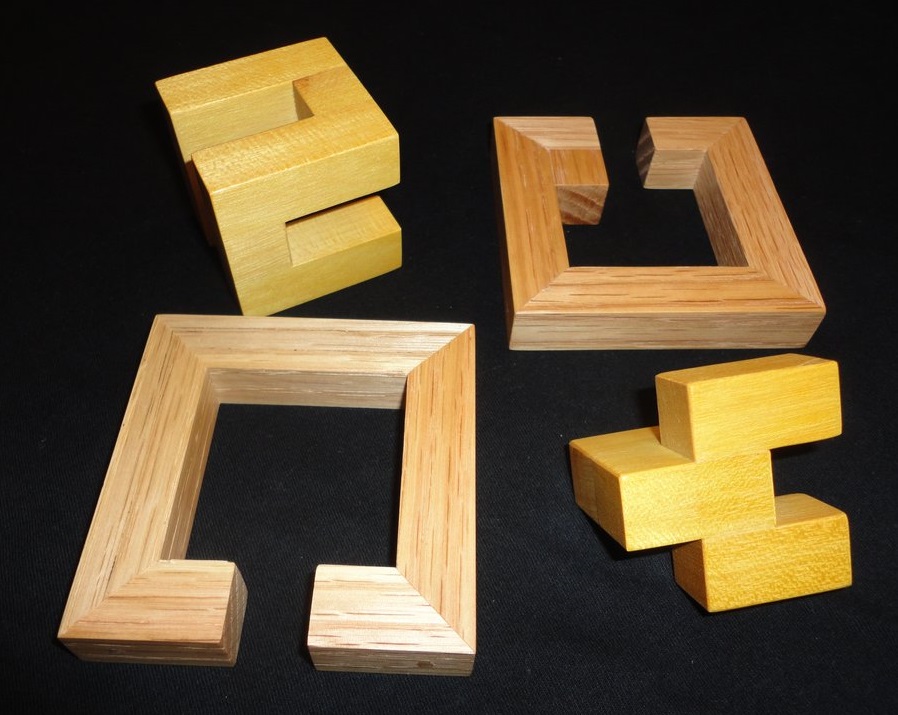
Paquet - designed by Yavuz Demirhan, made by Brian Menold, from Red Oak and Yellowheart. |
|
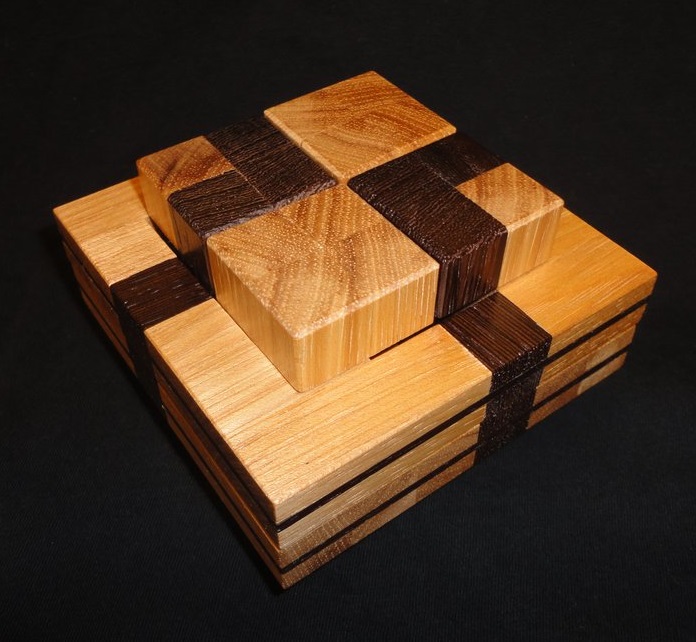
Frisbee - designed by Stephane Chomine 2012 made by Brian Menold from Hickory and Wenge. Four pieces plus two plate frame. PWBP 23.9.2.4.3 |
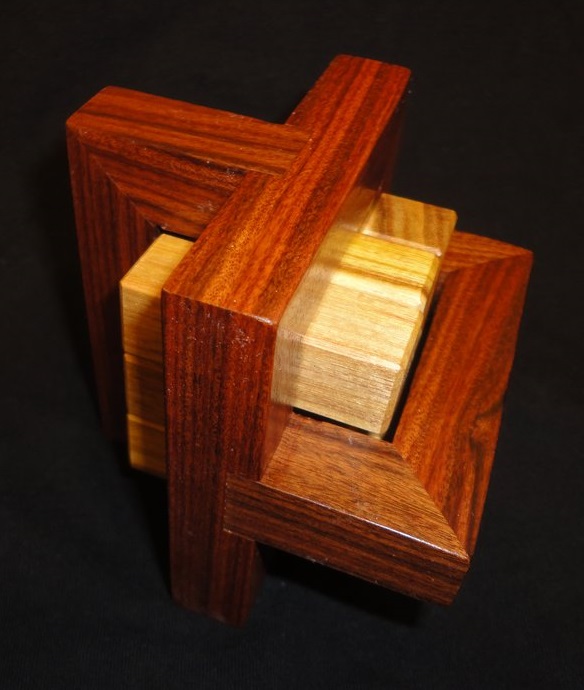
Plusminus - designed by Yavuz Demirhan 2012 made by Brian Menold from Brazilian Rosewood and Canarywood. Three pieces plus frame. PWBP 6.2.2 |
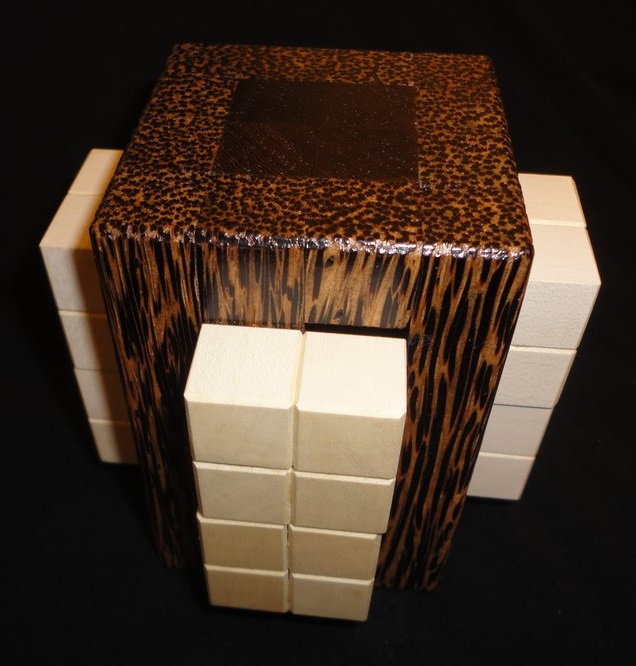
Optiborn - designed by Stephane Chomine and made by Brian Menold from Black Palm, Wenge, and Holly. Four pieces plus frame. Not listed at PWBP for some reason. Here is a link to Pelikan's version of Optiborn. |
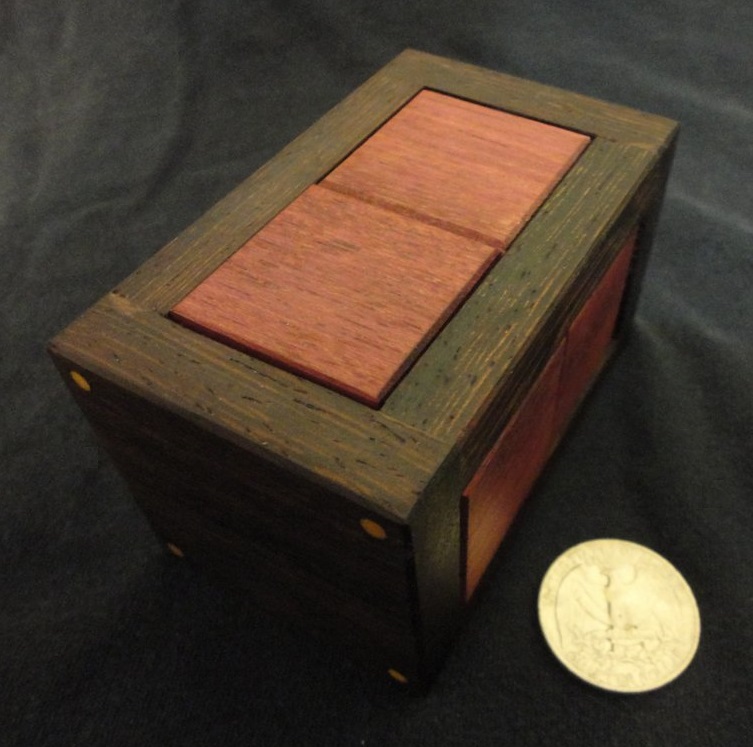
Acomodo - designed and made by Yavuz Demirhan 2016 from wenge and purpleheart. Four pieces plus frame. PWBP 10.2.2 Visit Yavuz' Etsy Shop Cubozone. |
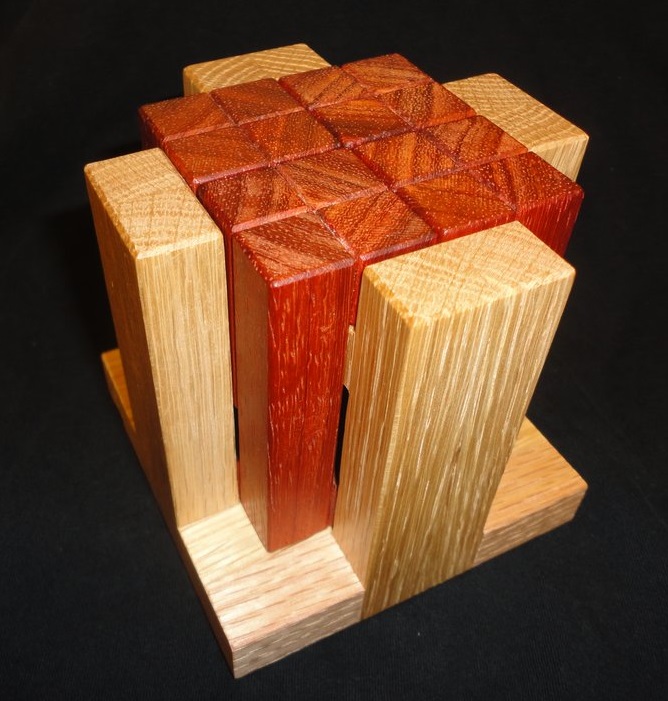
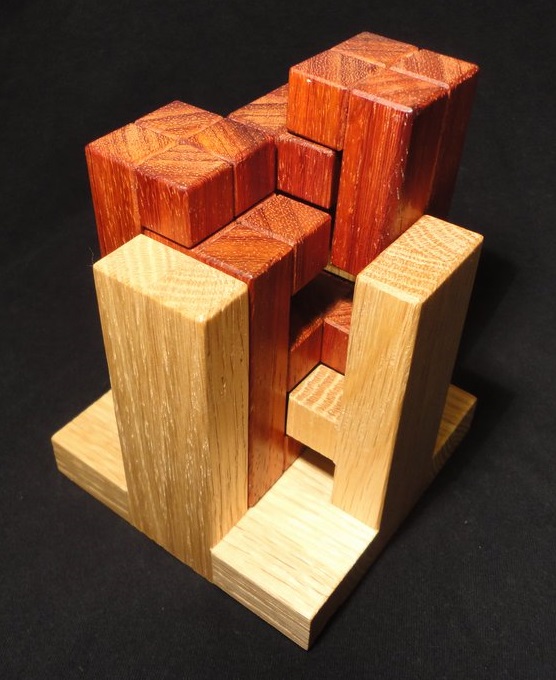
Quadrox - designed by Stephane Chomine 2018 and made by Brian Menold from Padauk and Red Oak. Four pieces plus frame. PWBP 29.11.11.3 |
|
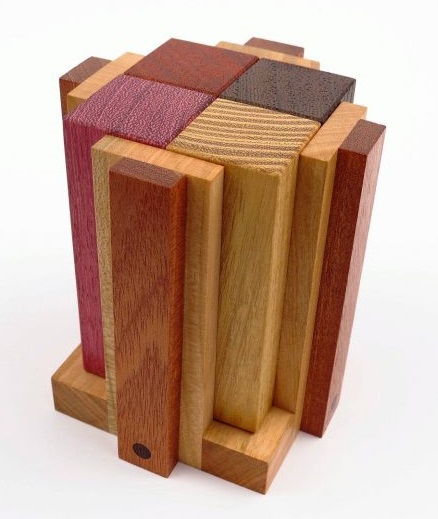
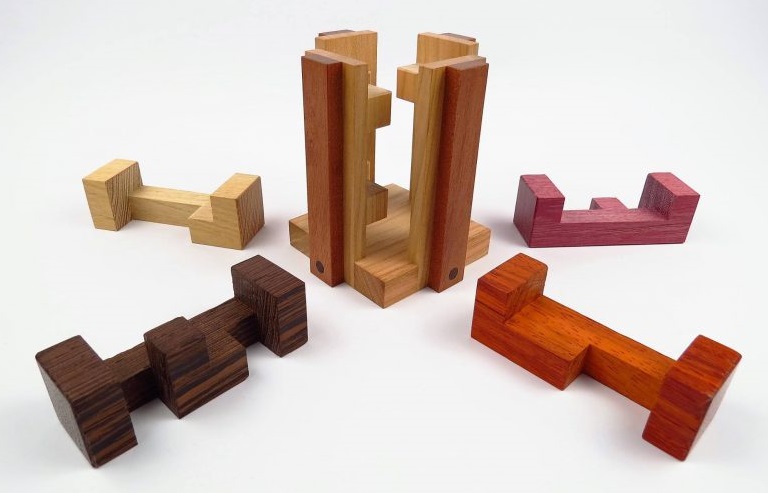
Big Quadrox - designed by Stéphane Chomine, made by Pelikan from Wenge, Padouk, Acacia, Purpleheart, and Cherry Level 29.11.7.3 |
||
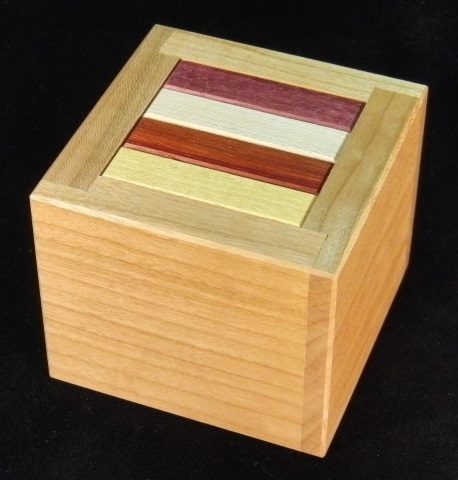

Think Outside the Box - designed by Tom Jolly and made by Eric Fuller from Cherry, Padauk, Maple, Yellowheart, and Purpleheart woods. |
||
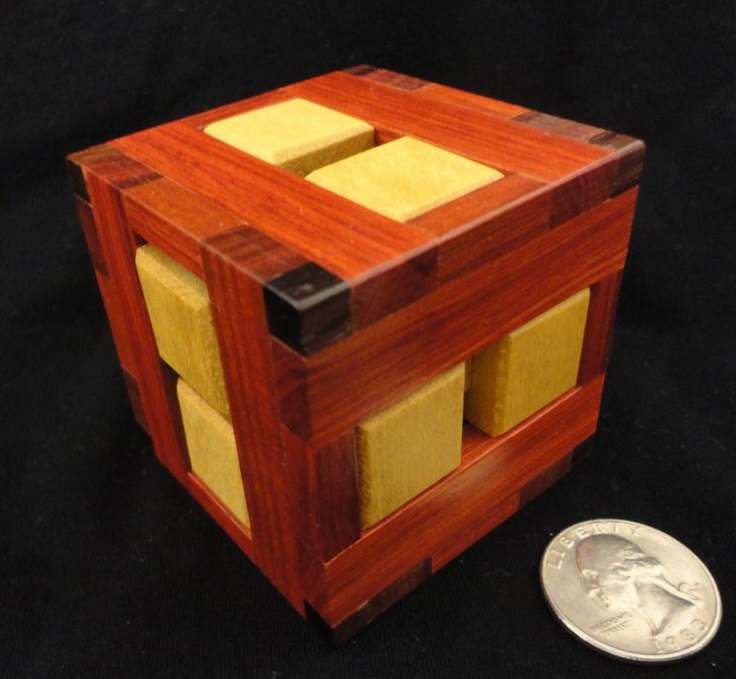
Klaas Jan 23 - designed by Klaas Jan Damstra, made by, and purchased from Brian Menold of New Jersey. Made from Redheart and Yellowheart. |
||
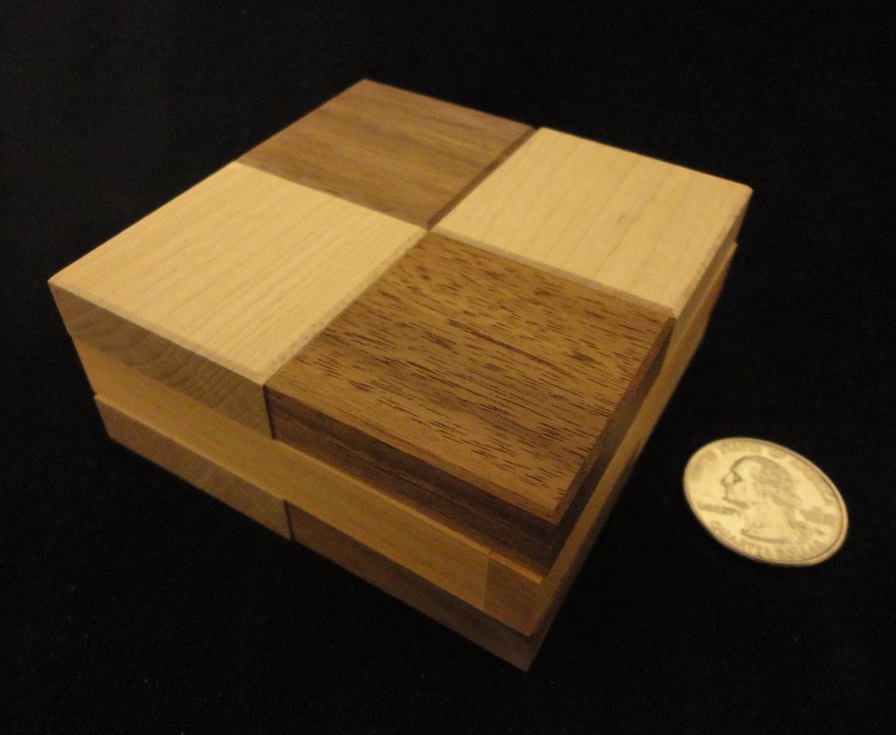
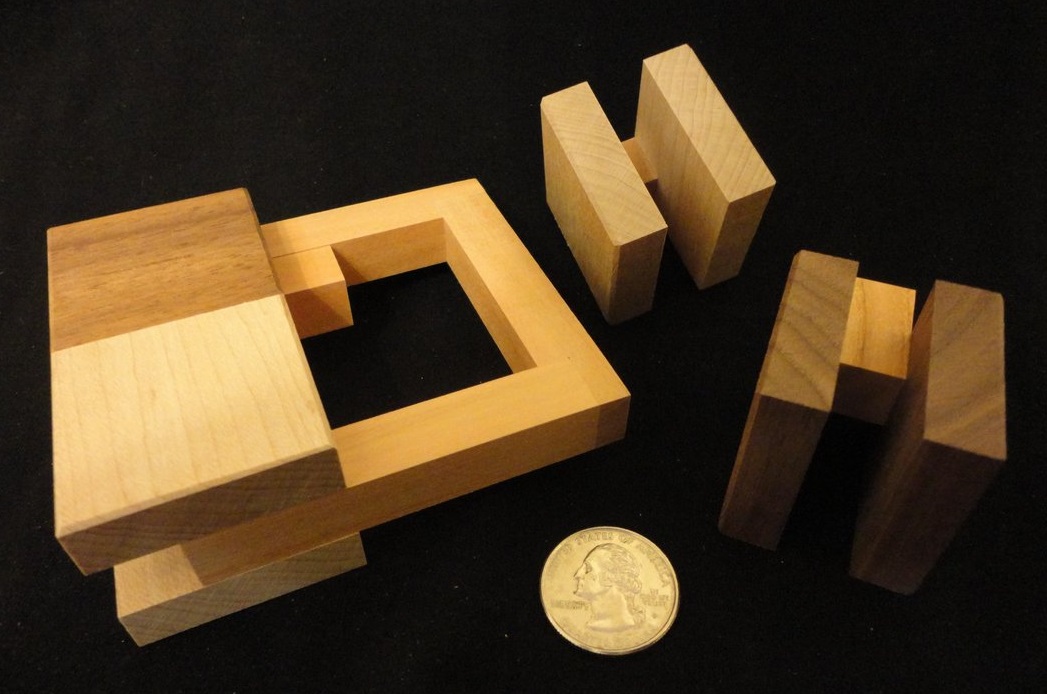
Quadrant 1 - designed by Yavuz Demirhan made and exchanged at IPP35 by Eric Fuller |
||
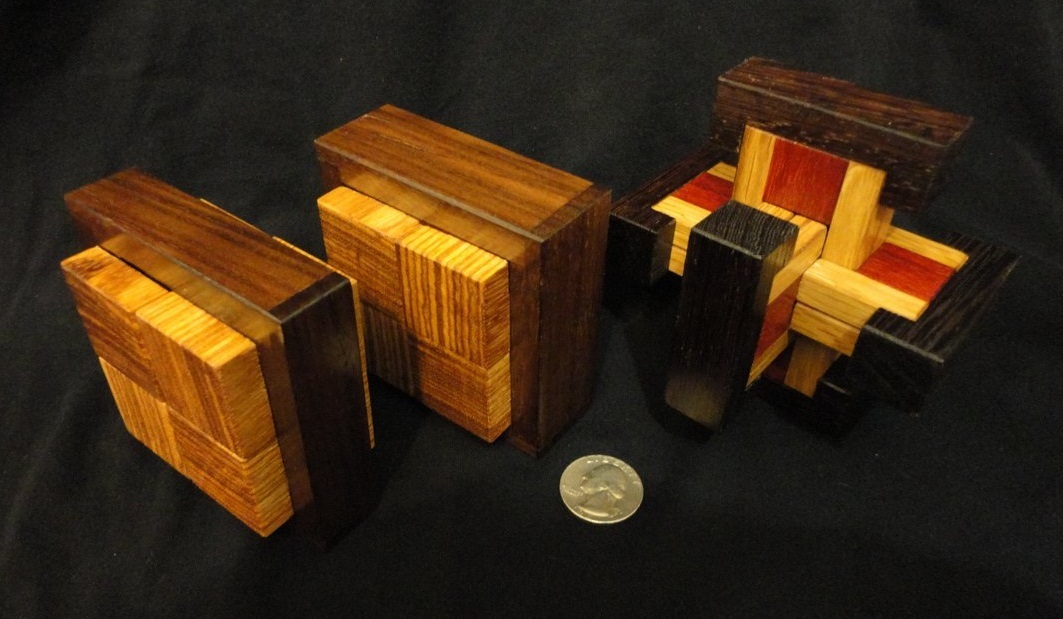
Mekaniko, Mekano, and Gaveta Cross designed, made by, and purchased from Yavuz Demirhan. Cleverly designed, beautifully made, substantially sized, and reasonably priced. Check out Yavuz' Etsy site Cubozone. (Gaveta Cross is not a caged burr.) |
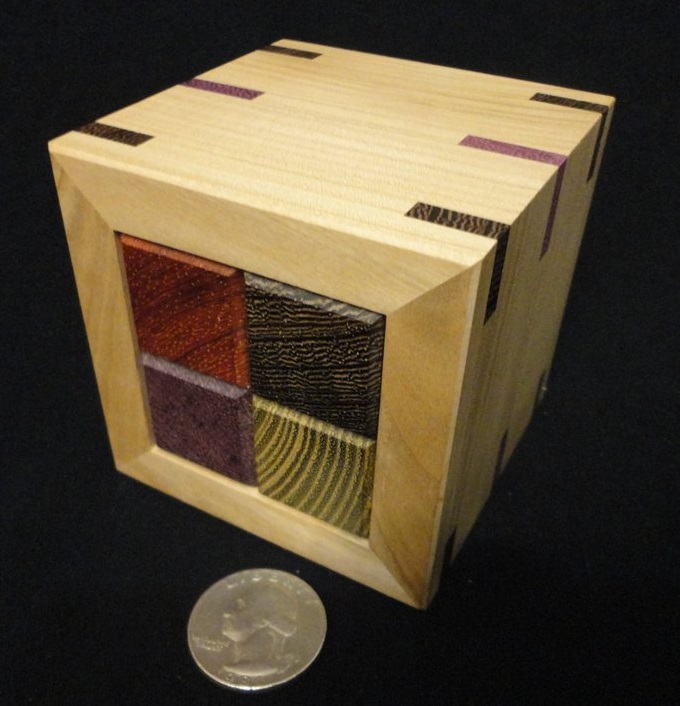
Gravity designed by Tim Alkema Beautifully made by Pelikan from Cherry, Wenge, Purpleheart, Acacia, and Padouk Extract four pieces plus a cube from the sleeve. Level 14.2.2.2 |
|

Simple Puzzle - designed by Klaas Jan Damstra, made by, and purchased from Brian Menold of New Jersey. Made from Maple and Wenge. |
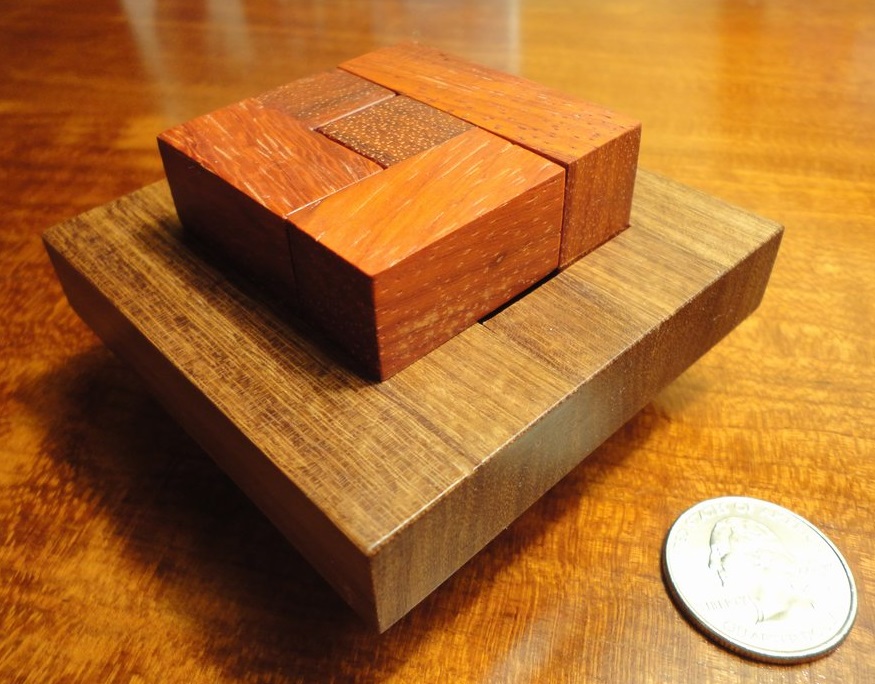
Saturno No. 1 - designed by Yavuz Demirhan, made by Brian Menold from Padauk and Granadillo |
|
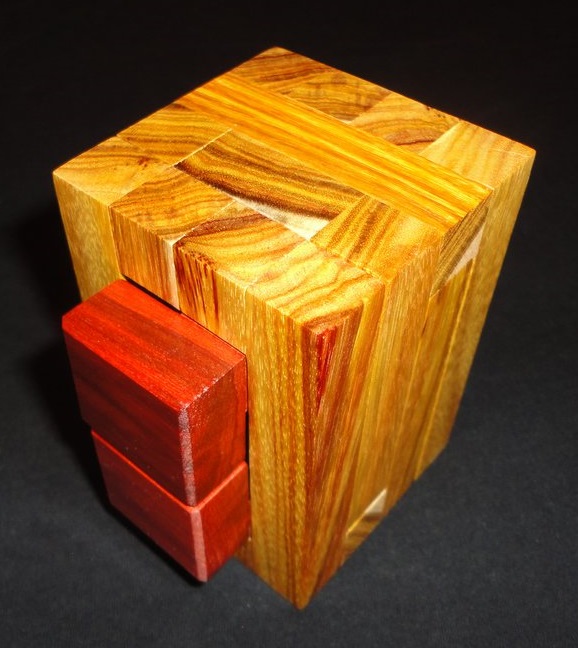
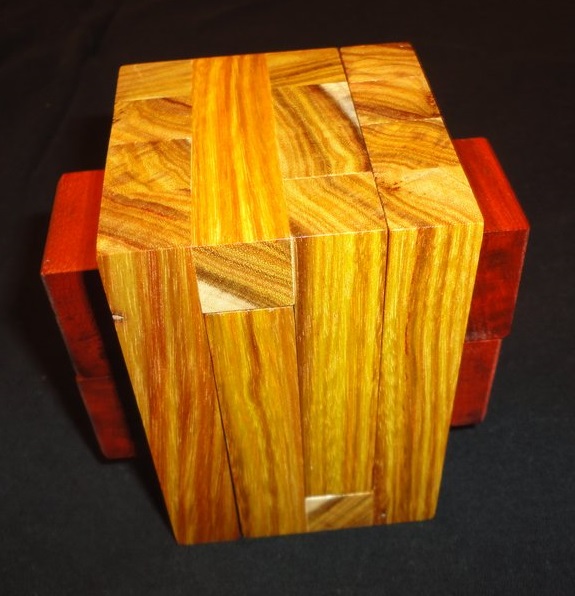
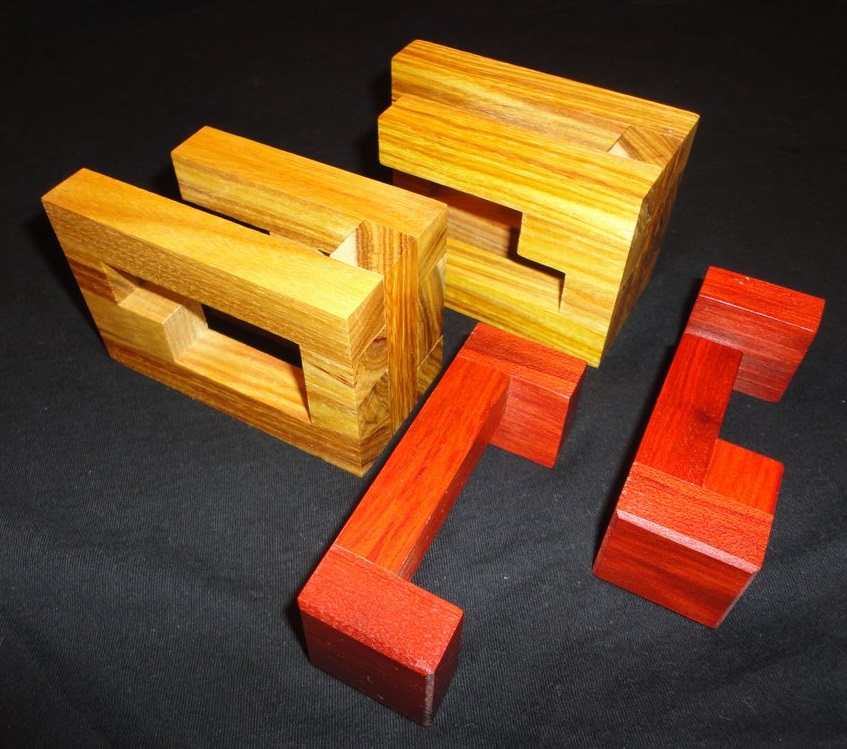
Painful designed by Yavuz Demirhan made by Brian Menold from Canarywood and Redheart Separate the four pieces 14 moves to free the first piece. |
||
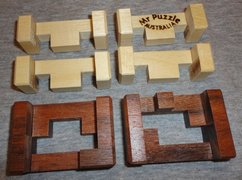 Four in the Vice, designed by Stephane Chomine, made from Silver Ash and Snakewood by Mr. Puzzle Australia. Exchanged by Frans de Vreugd at IPP32 |
||
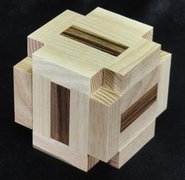
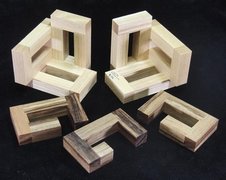
Two Halves burr by Gregory Benedetti, a caged 3-board burr, made from Ash and Mora, by Eric Fuller. |
||
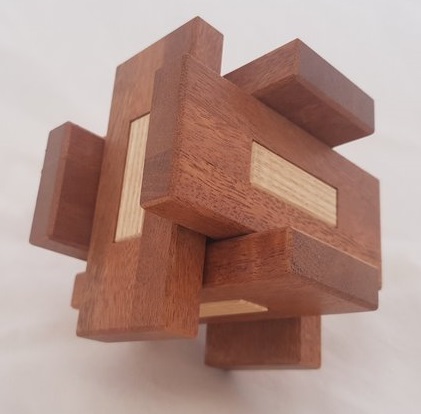
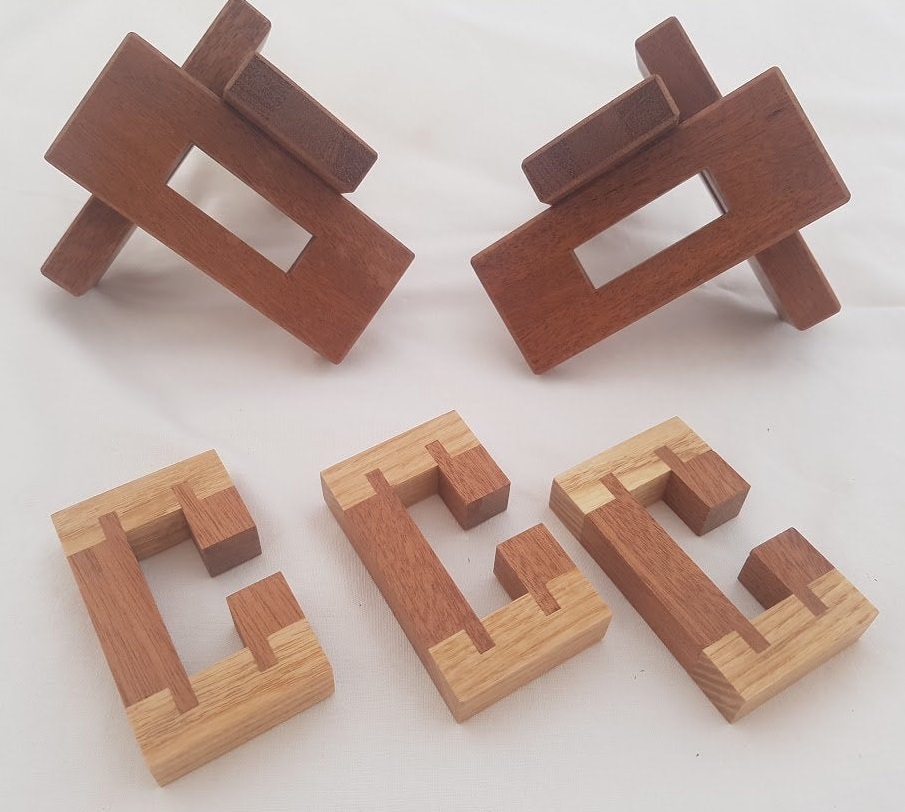
Regola 4 - designed and made by Yavuz Demirhan from Sapelle and Ash |
||
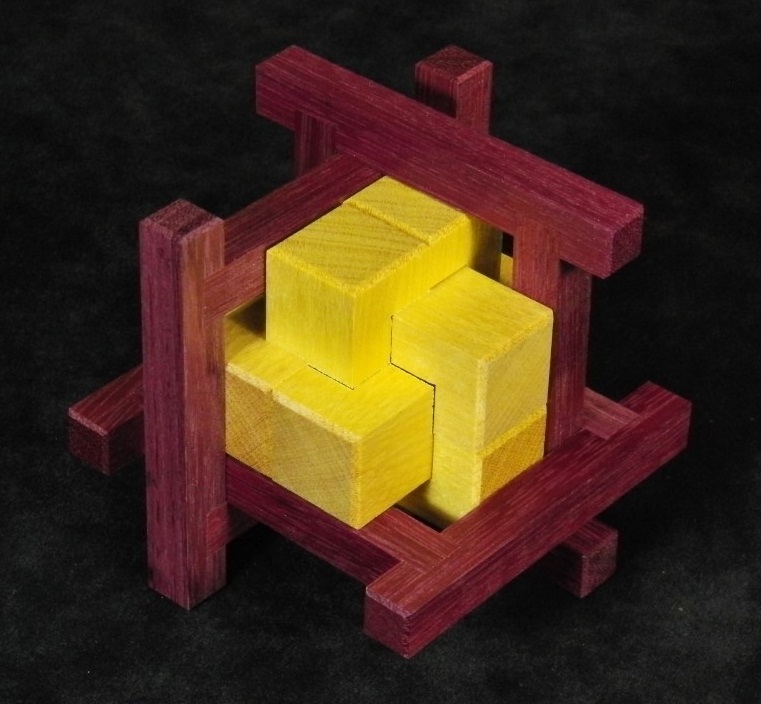
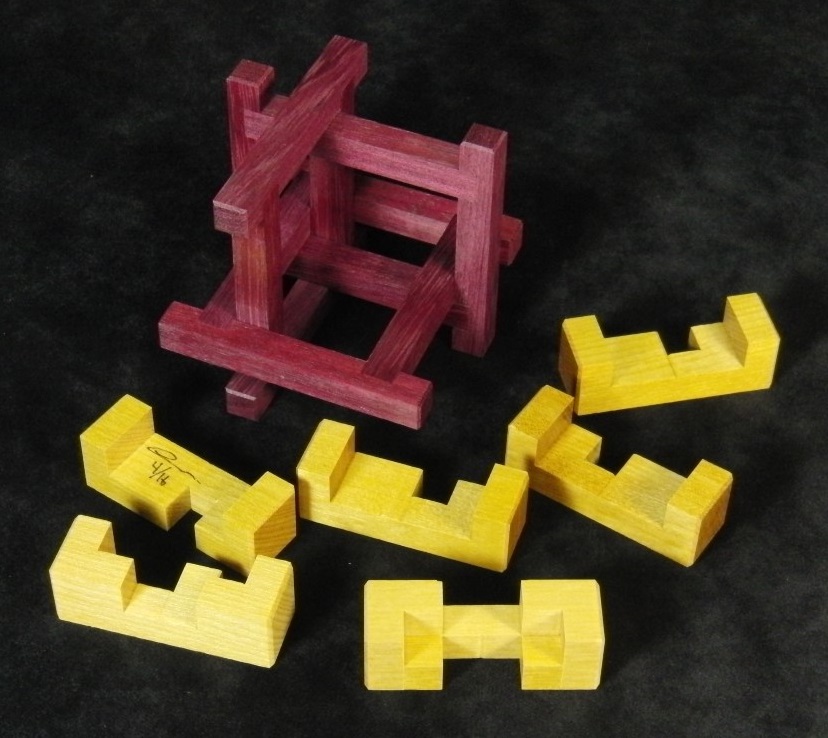
Attis - designed by Terry Smart, made by Eric Fuller from Purpleheart and Yellowheart A six-piece burr in a cage, at level 15.14.4. |
||
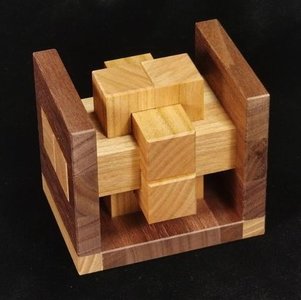
Clamped Burr - designed by Logan Kleinwaks Made by Eric Fuller, from Cherry, Walnut, and Ash Level 15.3.5 A partially boxed burr - one in a series of increasingly Constrained Burrs including: Bookend (base and 1 side), Cornered, and Looped. |
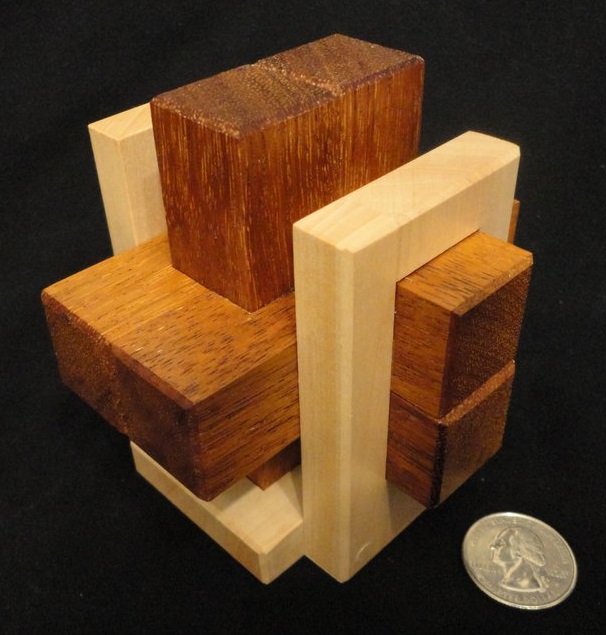
Blocage - designed by Stéphane Chomine, made by and purchased from Pelikan. Merbau and Apple woods. |
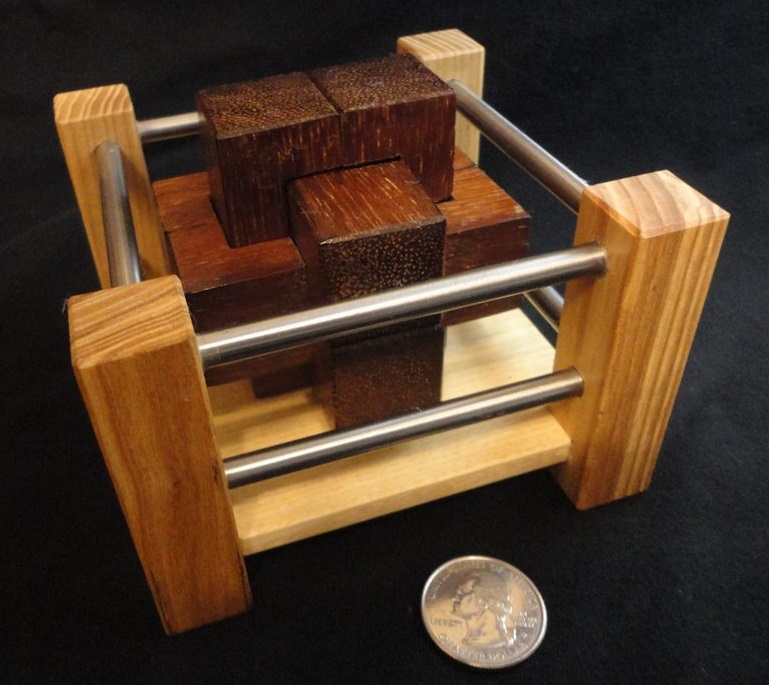
Fenced Burr - designed and made by Yavuz Demirhan at Cubozone |
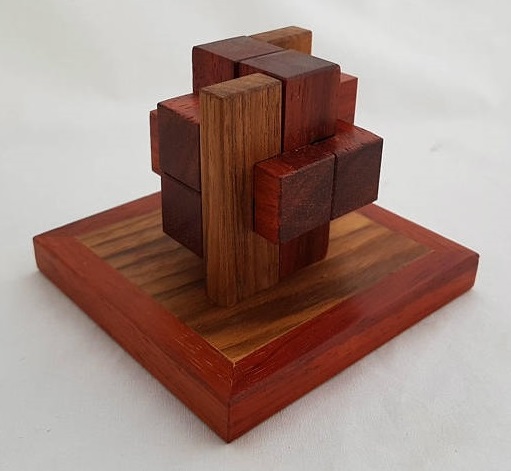
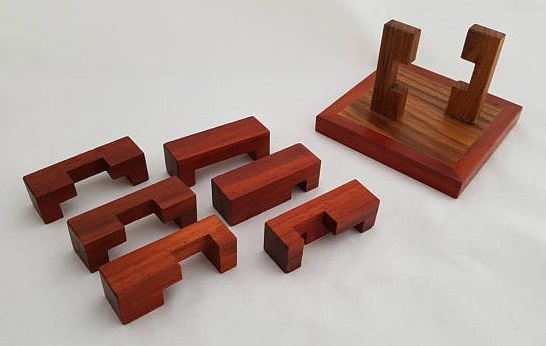
Snapped Burr - designed and made by Yavuz Demirhan |
||
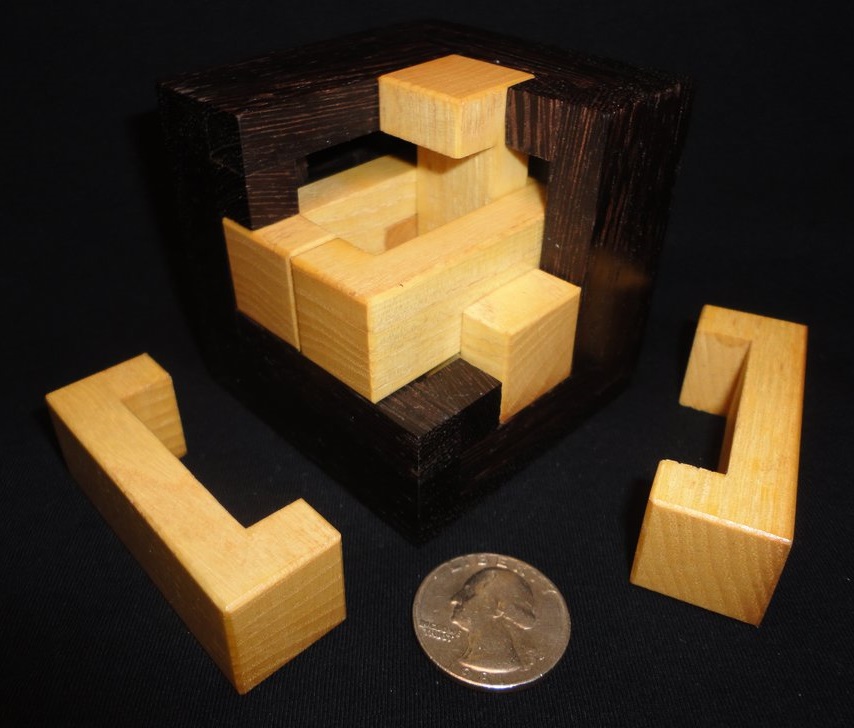
Fossil Burr - designed and made by Yavuz Demirhan from Wenge and Ash woods. Level 12.2.3.2. |
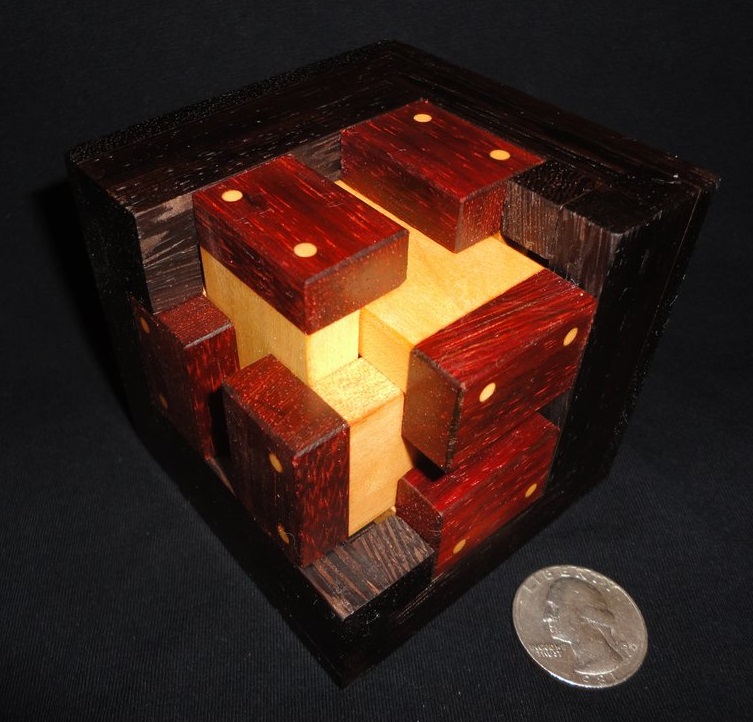
Fossil Burr II - designed and made by Yavuz Demirhan from Maple, Wenge, and Padauk woods. Level 9. |
|
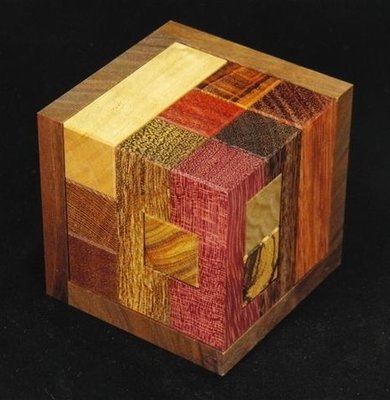

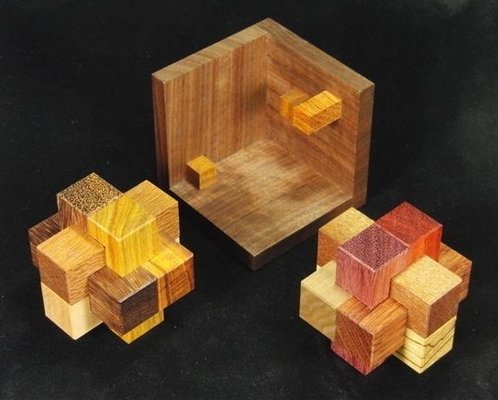
Two Burrs in a Corner - designed by Logan Kleinwaks, made by Eric Fuller, from Walnut (the box), Goncalo Alves, Bubinga, Cherry, Zebrawood, Masonia, Mahogany, Granadillo, Leopardwood, Canarywood, Sucapira, Padauk, and Purpleheart Twelve burr pieces pack into the box in only one way, and also form two traditional 6-piece burrs (a level-5 and a level-4) simultaneously in only one way. |
||
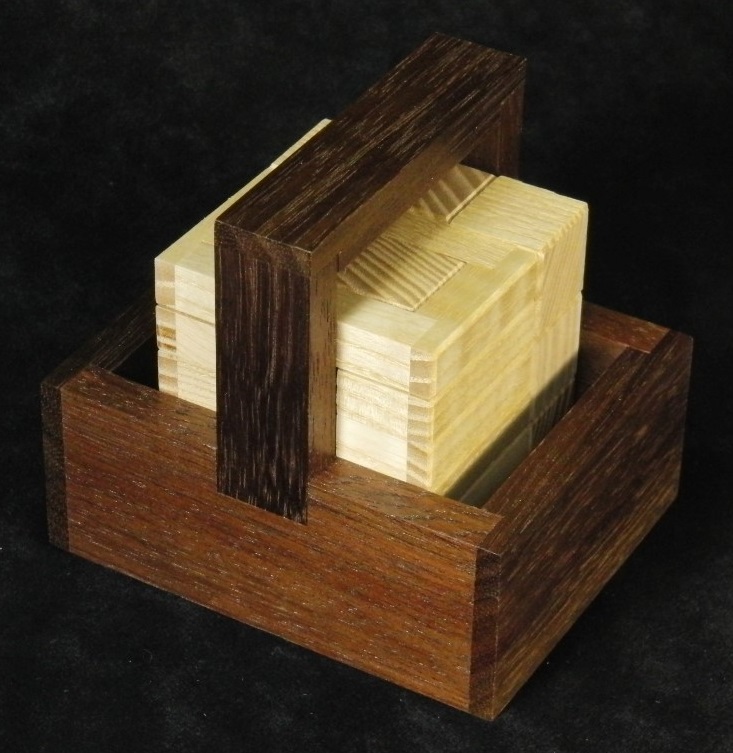
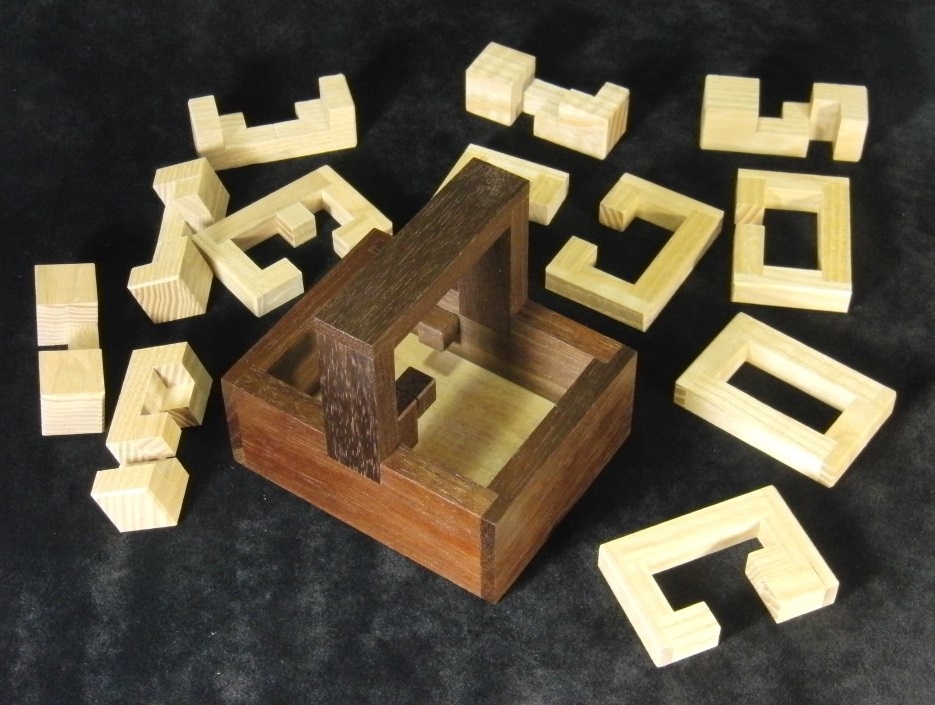
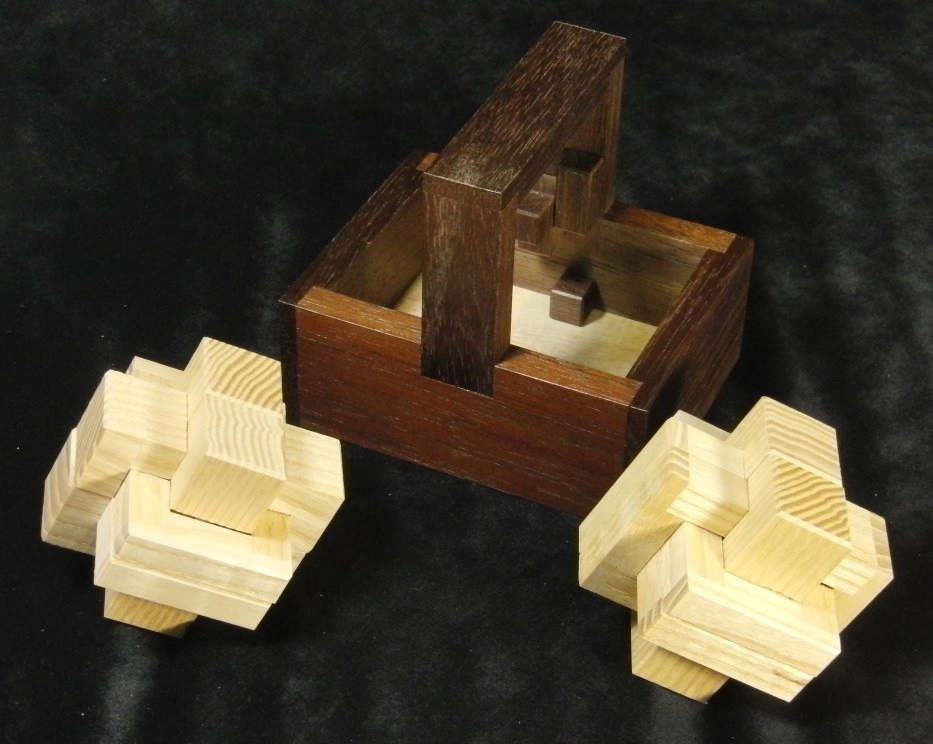
Two Burrs in a Basket - designed by Logan Kleinwaks, made by Eric Fuller from Peruvian Walnut and Carolina Ash |
||
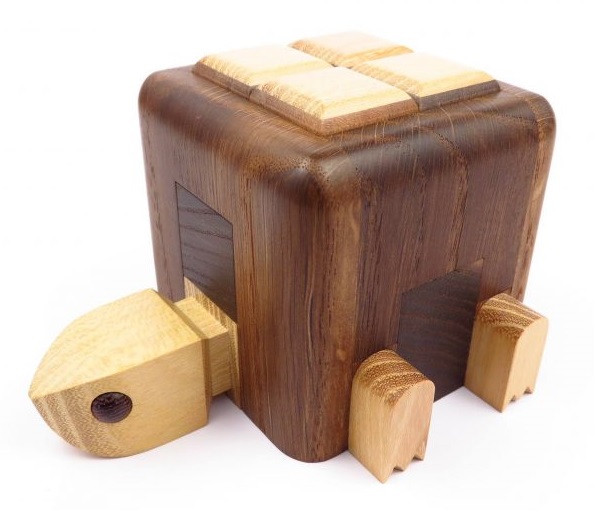
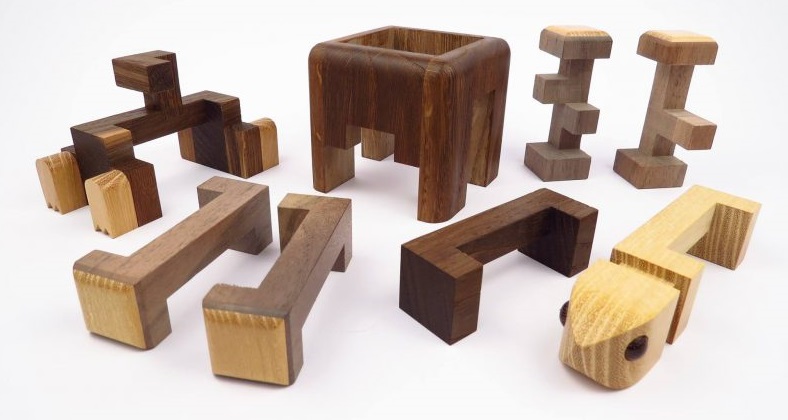
Tortoise - designed by Alexander Haydon O’Brien Made by Pelikan, from Dark Oak, Acacia and Wenge |
||
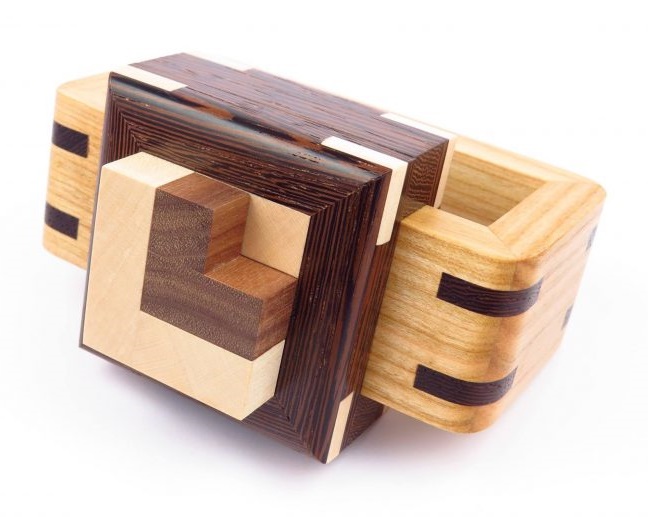
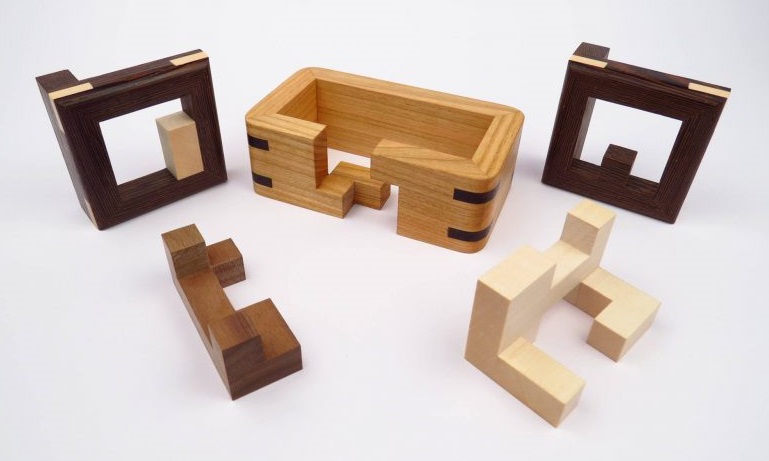
Knot on My Watch - designed by Alexander Haydon O’Brien Made by Pelikan, from Wenge, Maple, Cherry and American Walnut |
||
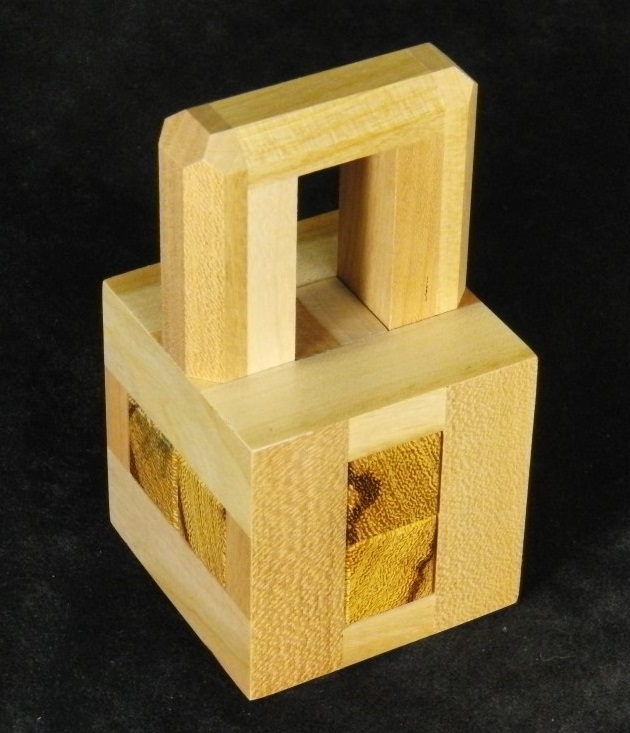

Padlock Burr - designed by Tim Alkema, made by Eric Fuller from Sappy Cherry and Marblewood Level 24.2.8. |
||
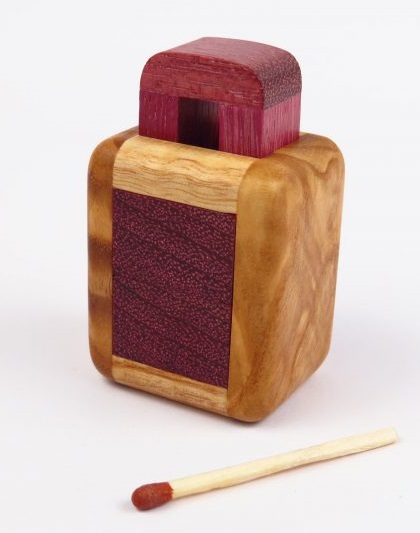
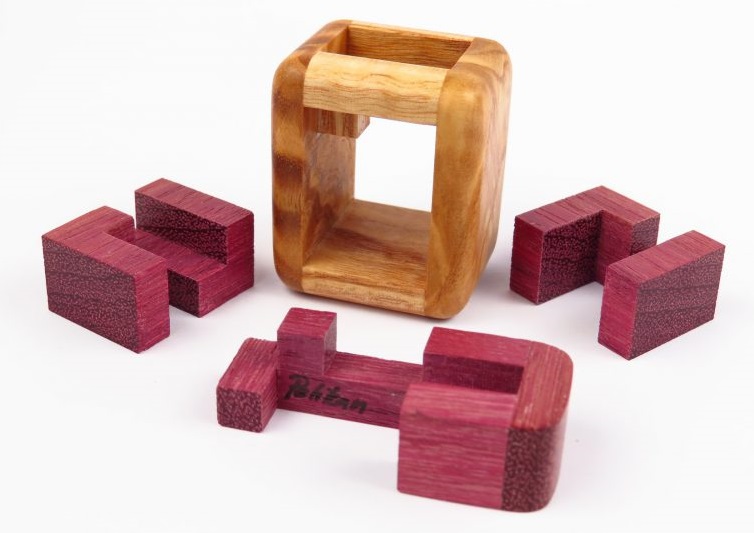
Mini Lock - designed by Christoph Lohe 2018, made by Pelikan from Ash and Purpleheart. Three pieces and frame. PWBP 6.7 |
||

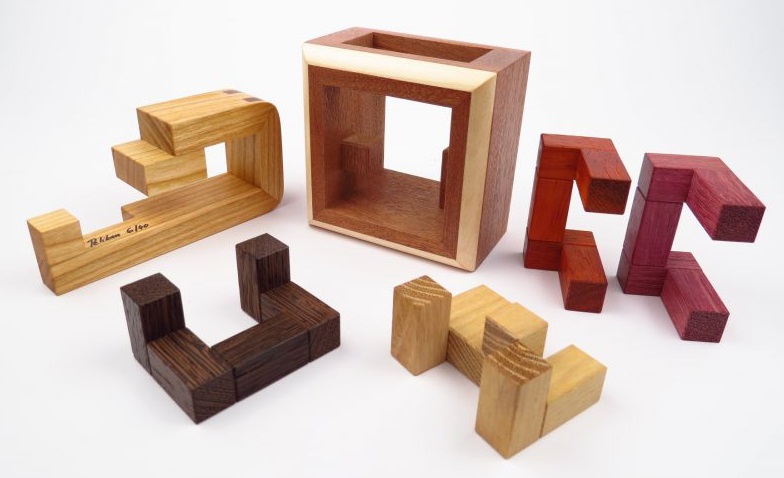
Spiral Lock - designed by Christoph Lohe, made by Pelikan from Purpleheart, Acacia, Wenge, Padouk, Mahogany, Maple and Cherry. Five pieces plus frame. PWBP 21.3.3.2.2 |
||
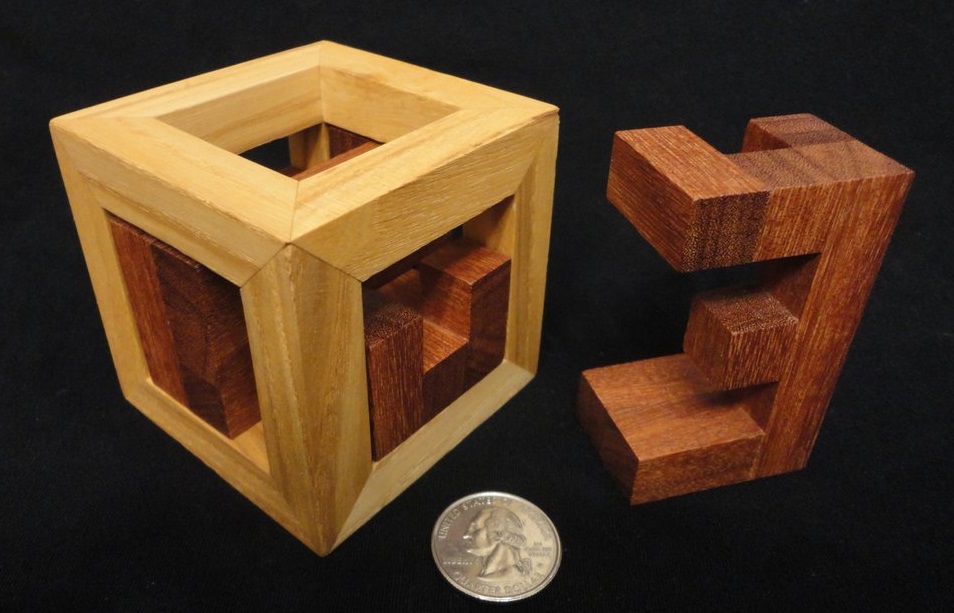
Trenta - designed by Christoph Lohe 2017, made by Brian Menold from Ash and Mahogany. Three pieces and frame. PWBP |
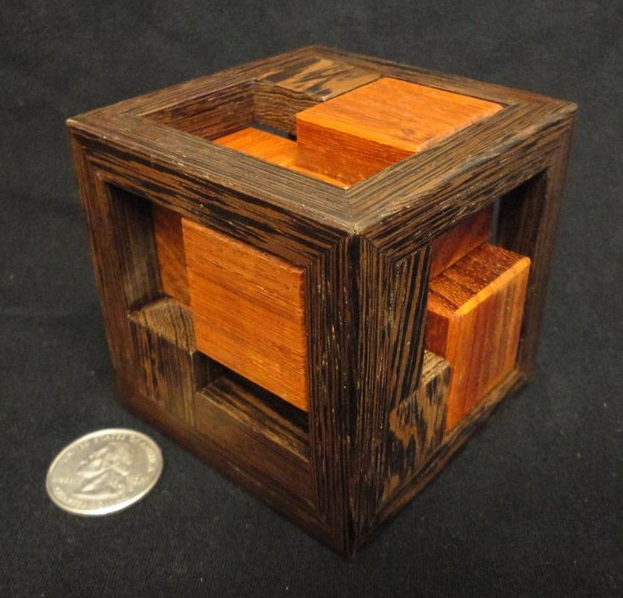
Kubikub 2 - by Yavuz Demirhan |

Cross 5 designed by Yavuz Demirhan made by Brian Menold from Canarywood, Walnut and Redheart Remove five pieces from the frame. 11 moves to free the first piece. |
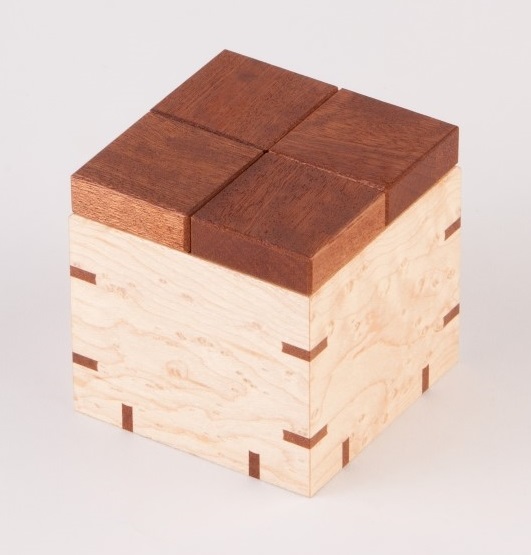
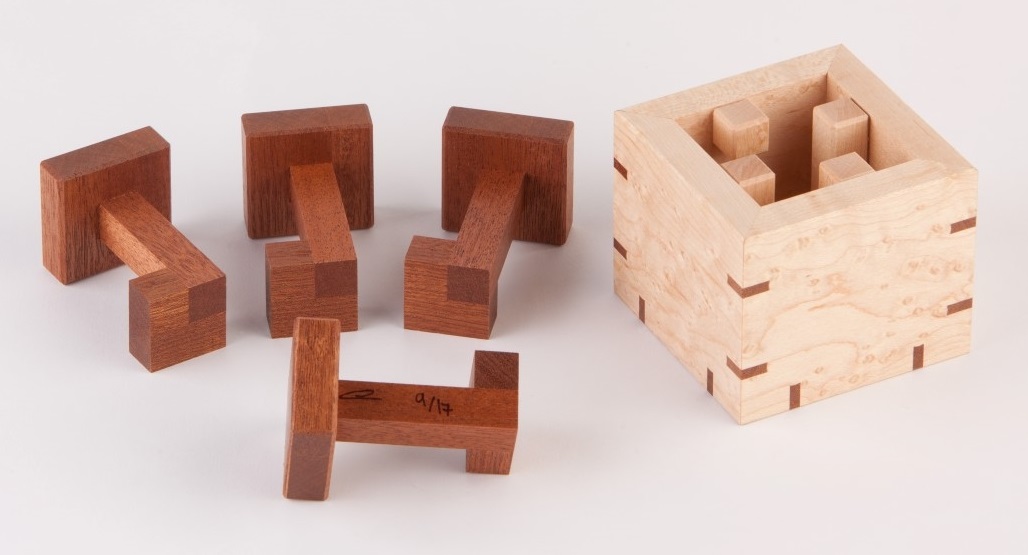
Pox Box - designed by Yavuz Demirhan, made by Eric Fuller from Sapele and Birdseye Maple |
||
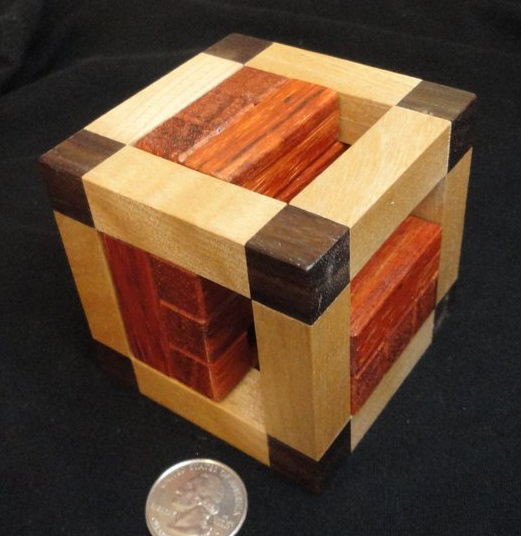
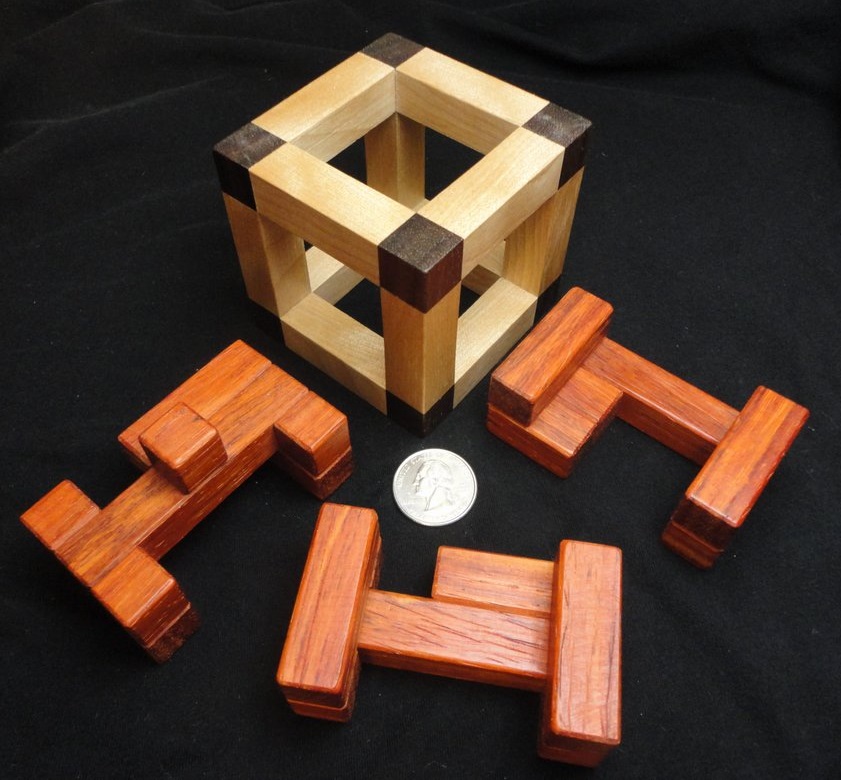
Summer - designed by Klaas Jan Damstra, made by Brian Menold from Curly Maple, East Indian Rosewood, and Padauk. Level 14.4.2. |
||
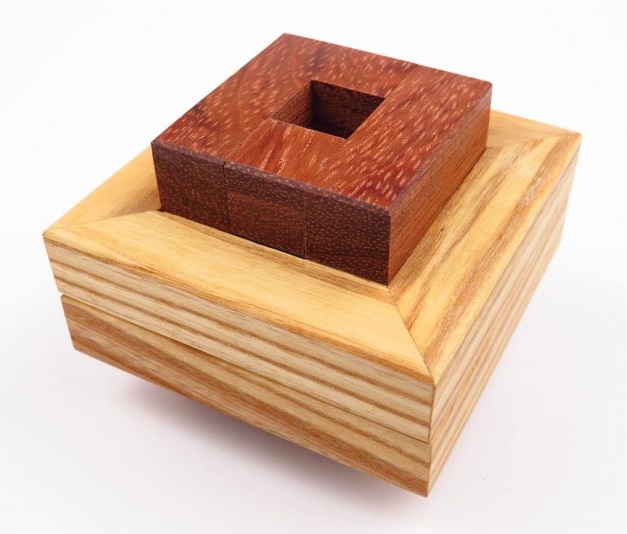

Top - designed by Osanori Yamamoto, made by Pelikan from Ash and Bubinga. |
||
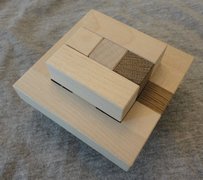
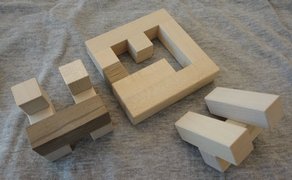
Double UT, designed by Osanori Yamamoto 2011, made by the New Pelikan Workshop, exchanged by Abel Garcia at IPP32 PWBP 16.5 |
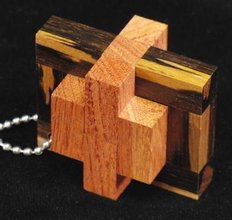
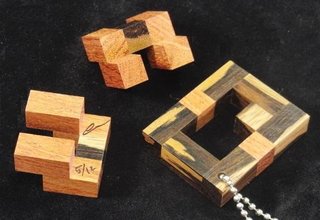
N-One - designed by Osanori Yamamoto Three pieces, level 15.3 Made by Eric Fuller, in Jacaranda Pardo and Bubinga |
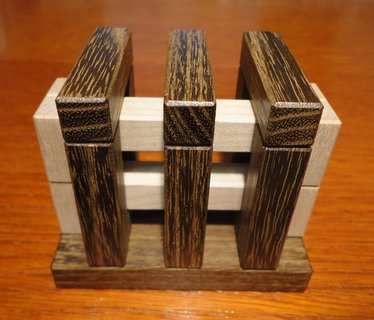
Columnata 2P3C - designed by Yavuz Demirhan 2012 PWBP 12.5 |
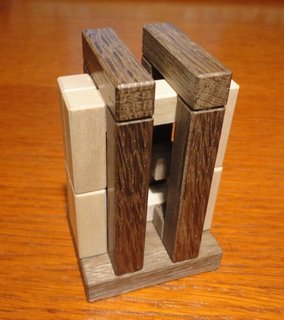
Pylon 2P2C - designed by Yavuz Demirhan 2013 A very satisfying puzzle that was more difficult for me the second time around! PWBP 9.9 |
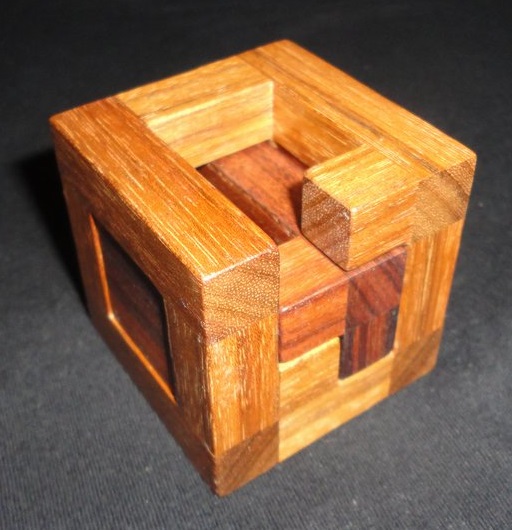
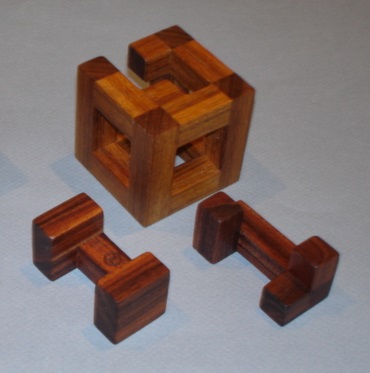
Petit Puzzle - designed by Osanori Yamamoto 2013, made by Tom Lensch. PWBP 11.2 |
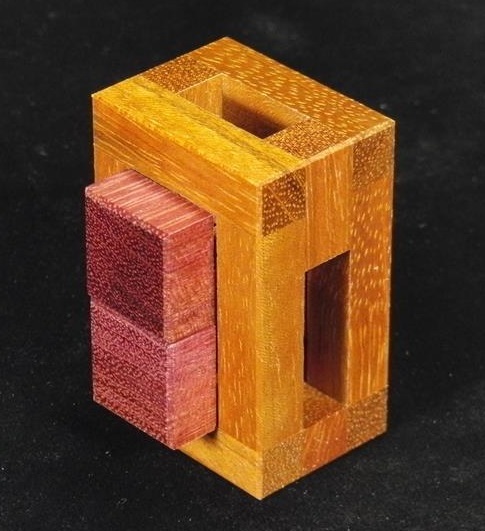
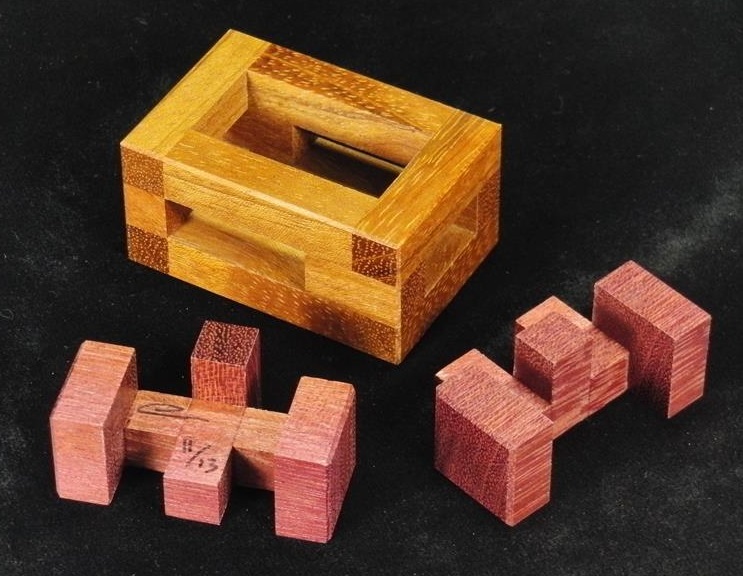
Pair Dance - designed by Osanori Yamamoto 2013 made by Eric Fuller from Jatoba and Purpleheart PWBP 14 |
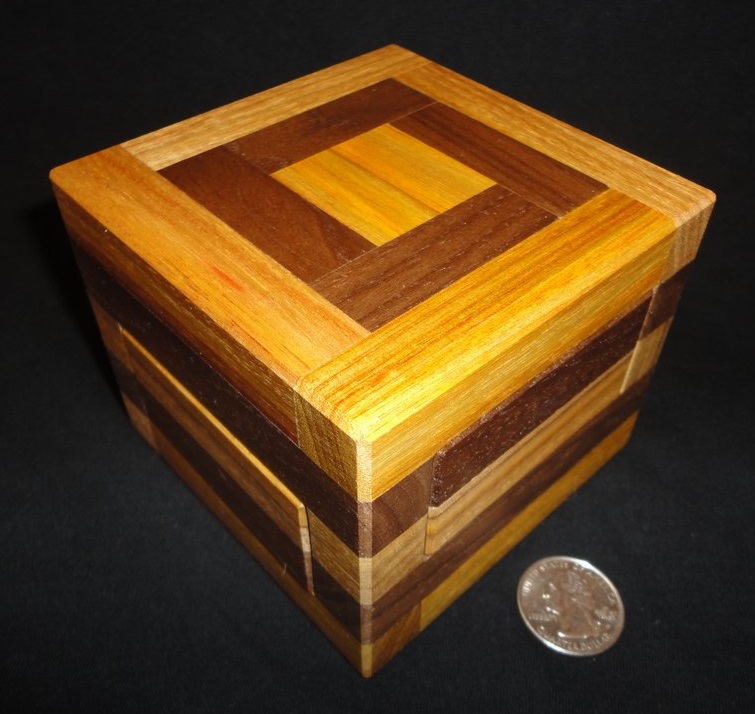
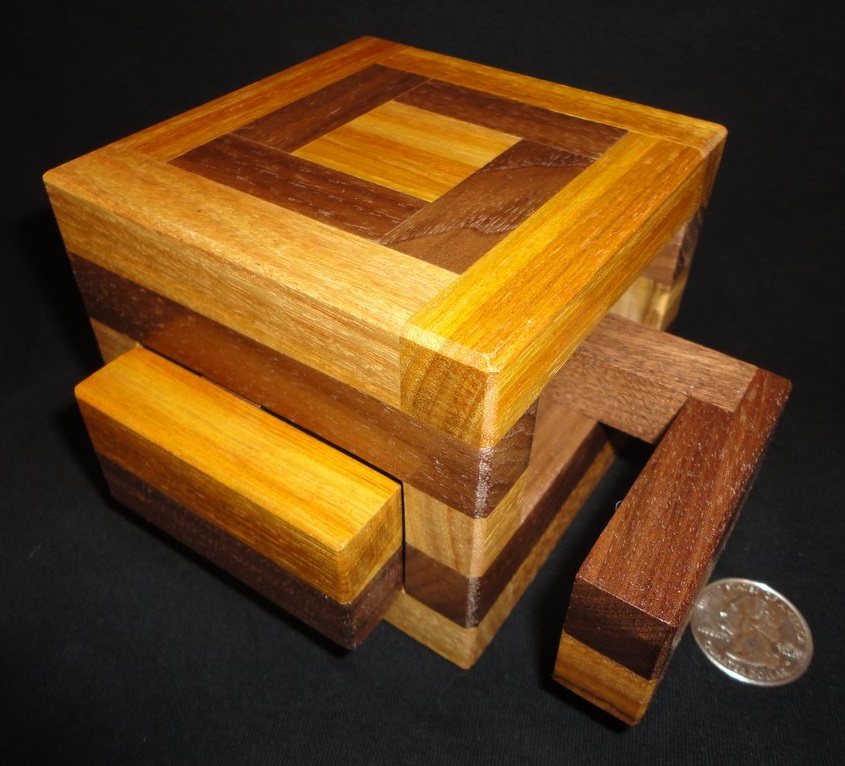
Just Two In Box designed by Stéphane Chomine 2013. Two pieces and cage, made by Brian Menold from Canarywood and Walnut. PWBP 11.7 |
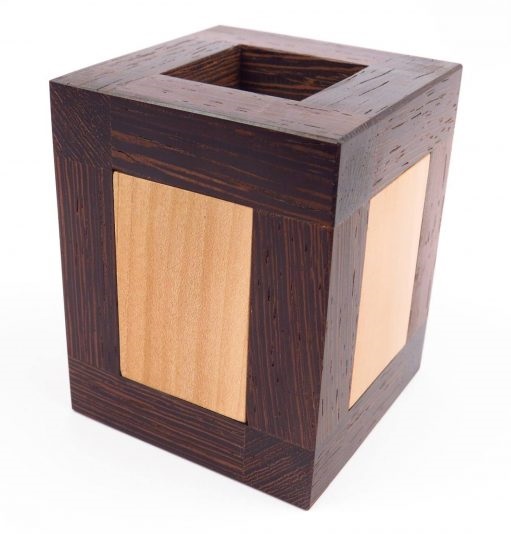
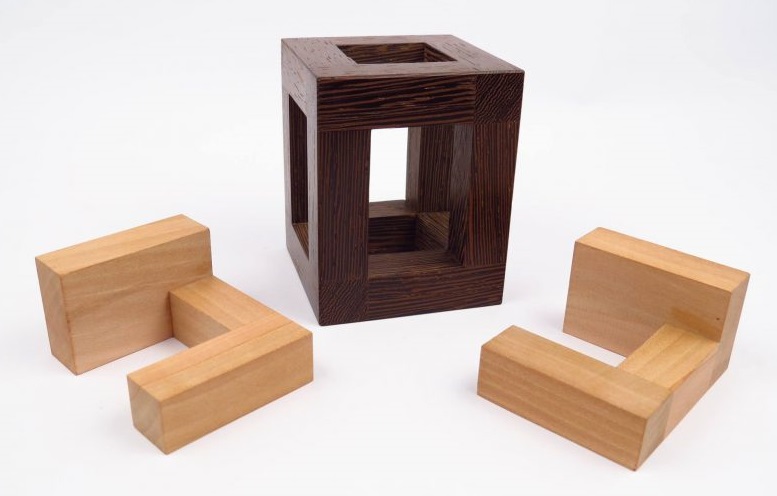
Identical Twins - designed by Osanori Yamamoto 2016 - made by Pelikan from Wenge and Apple PWBP 6.2 w/ rotation Winner of the Puzzlers' Award at the IPP37 Design Competition |
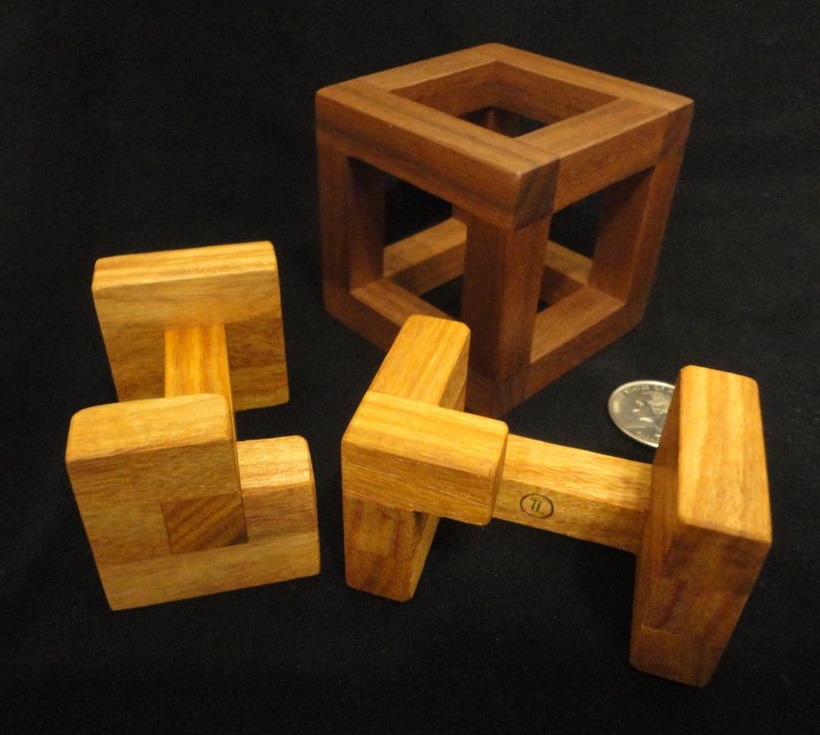
Lucida - designed by Osanori Yamamoto 2016 and made by Tom Lensch from Walnut and Canarywood PWBP 10.3 w/ rotation |
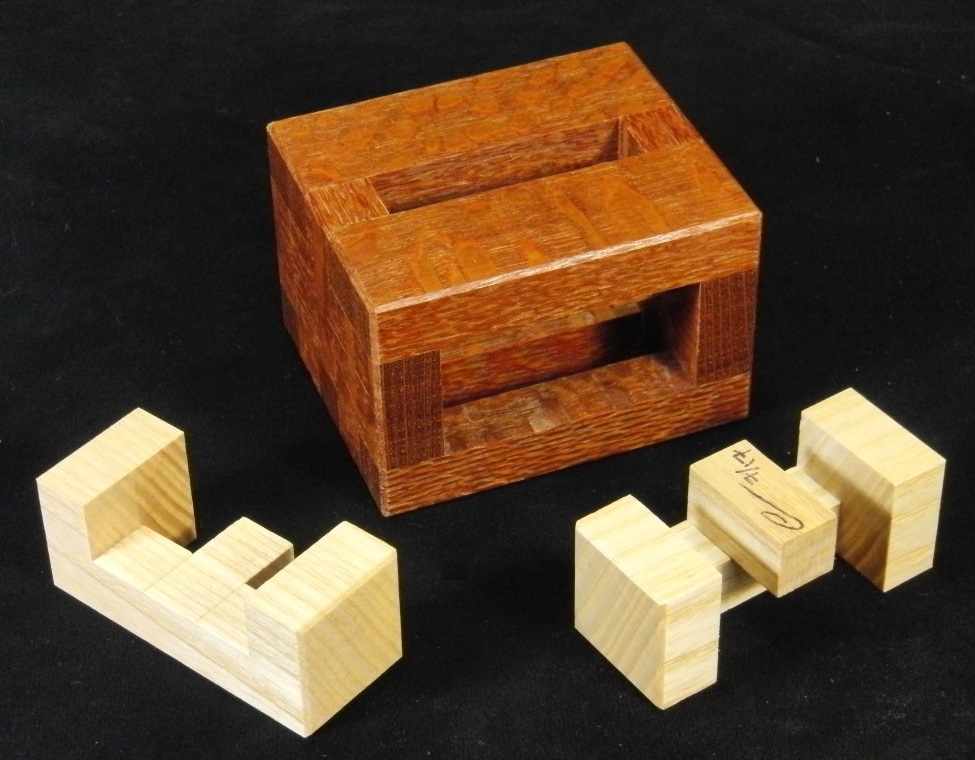
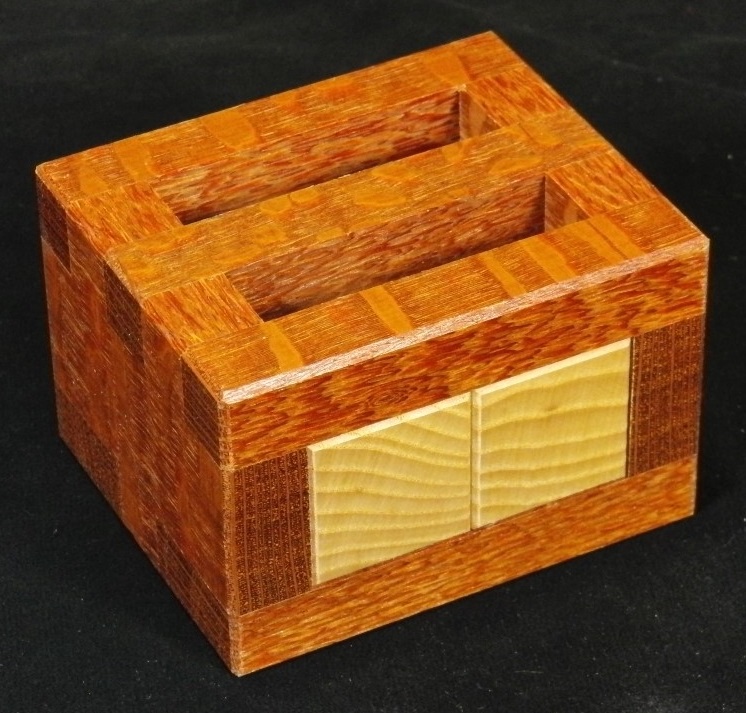
Slot Machine - designed by Andrey Ustjuzhanin 2017 and made by Eric Fuller from Leopardwood and Ash PWBP 18 |
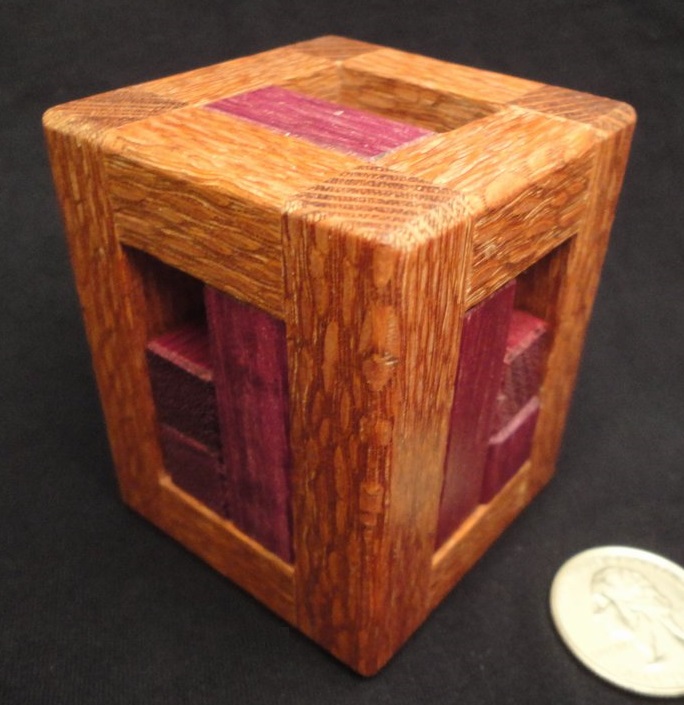
Liliput - designed by Christoph Lohe 2017 Made by Brian Menold, from lacewood, purpleheart PWBP 21.3 |
[11]
This section contains a wide variety of interlocking puzzles in many different forms, but all composed of various notched sticks or plates. The pieces somehow fit together and must be slid to and fro relative to each other until they either come apart or are re-assembled into the intended shape.
Here are a few commonly available "classic" burr puzzles many folks will have seen, and have asked me about - usually because they have the pieces but don't know what the intended assembled shape should be. These puzzles often do not have a formal name - they are re-named ad hoc by whoever is marketing the latest iteration - nor do I know who may have designed them.
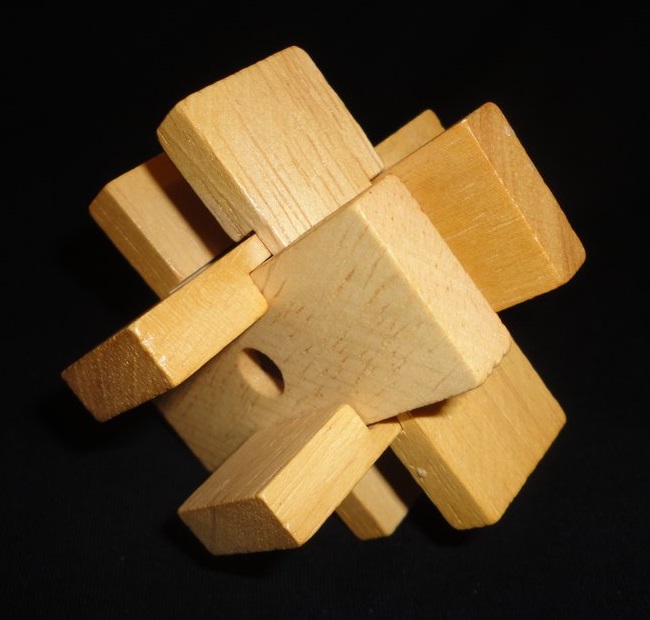
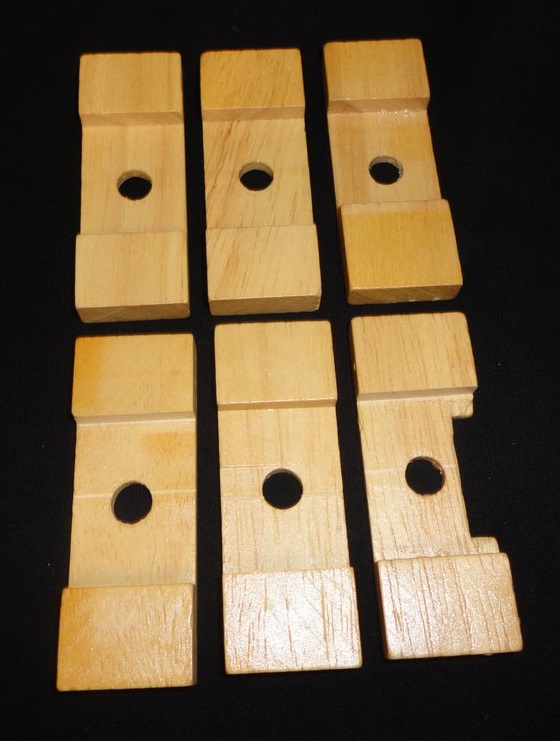
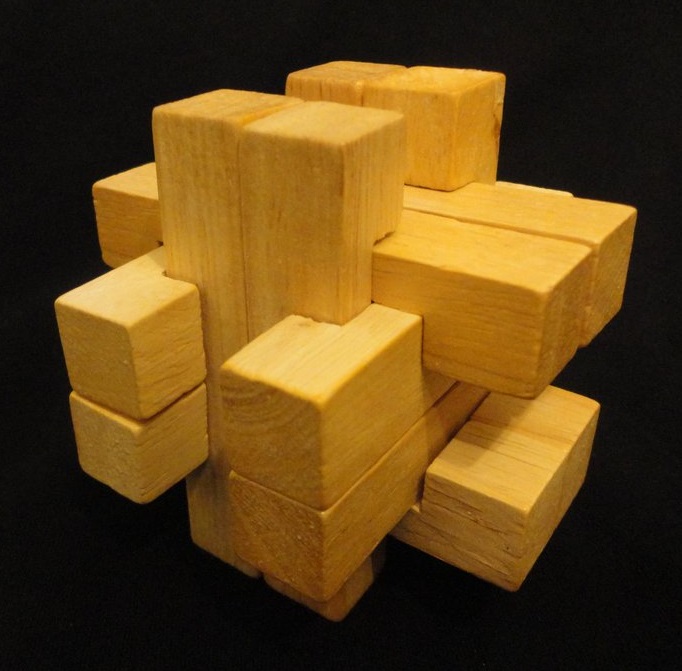
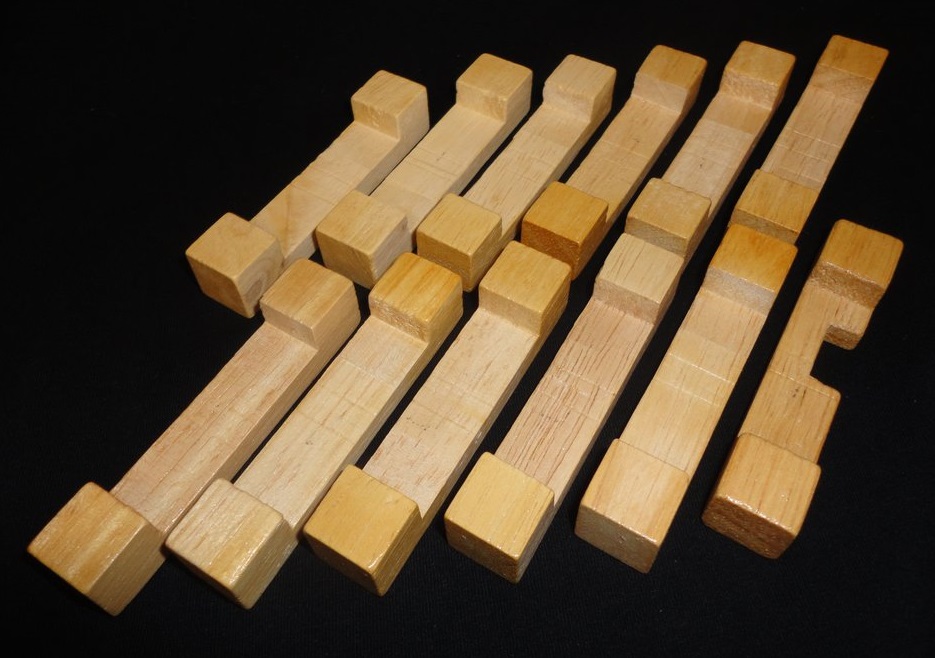
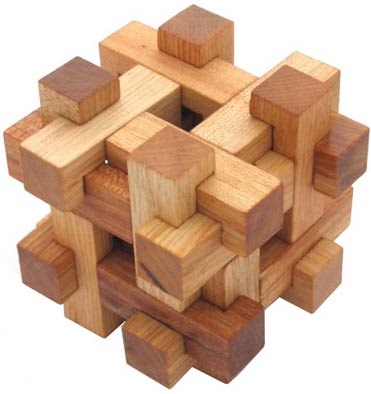
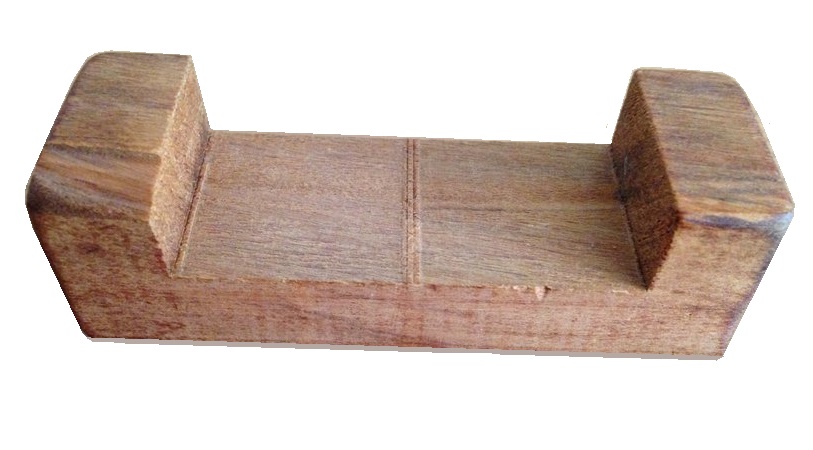
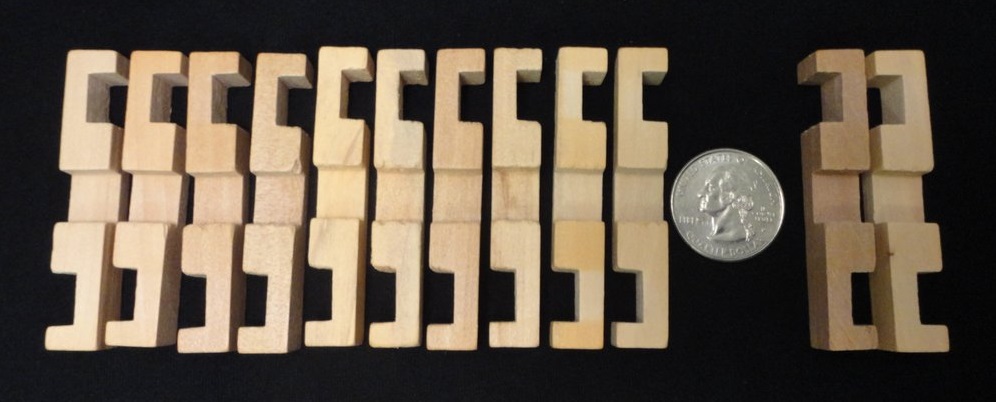
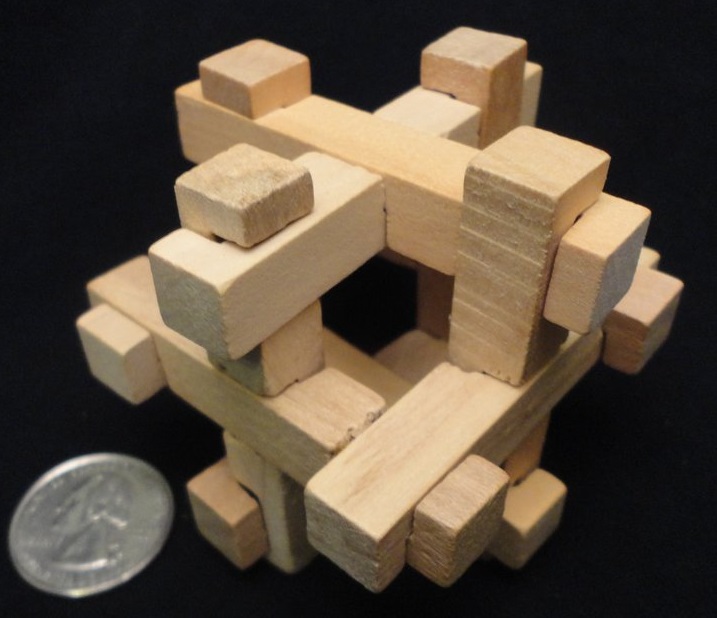
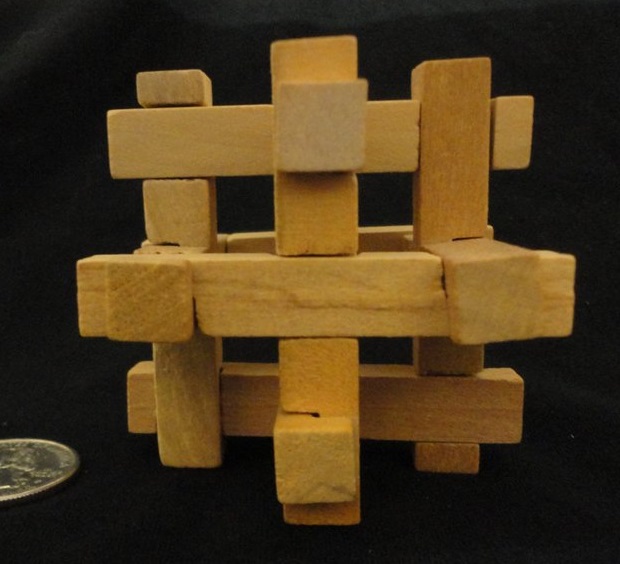
|
These are from the (defunct) French company Arjeu, which put out an extensive line of interlocking puzzles in a wide
variety of shapes.
Some are shown under other sections in this website, and some I do not own and show only for reference - such cases are noted. |
||


Arjeu CT14 "Criss Cross" (Altekruse) |
Arjeu CT16 |
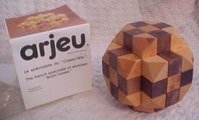
Arjeu CT28 |
 Arjeu CT666 Here is a link to a solution video on YouTube, and another in lower resolution. |
 Arjeu CT718 This looks like the "Eighteen Piece Double Cross" described by Edwin Wyatt in his 1946 book Wonders in Wood, on page 31. |
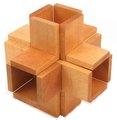
Arjeu CT752 La Lanterne From an Ergatoudis auction |
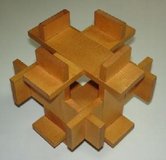
Arjeu CT753 This is made from pieces very similar to CT752 - the slots are moved out towards the board ends. (I don't have this - shown for reference.) |
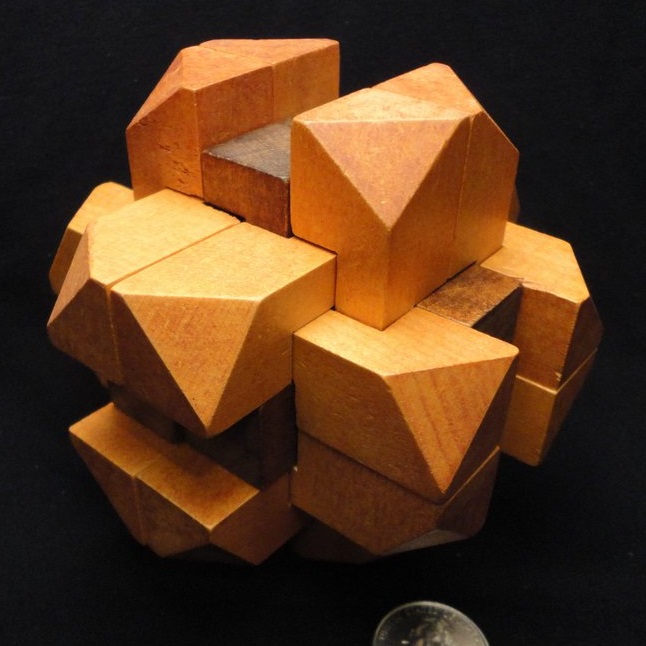
Arjeu CT52 "3 Keys" This is an unauthorized copy of the van der Poel 18-piece burr. |
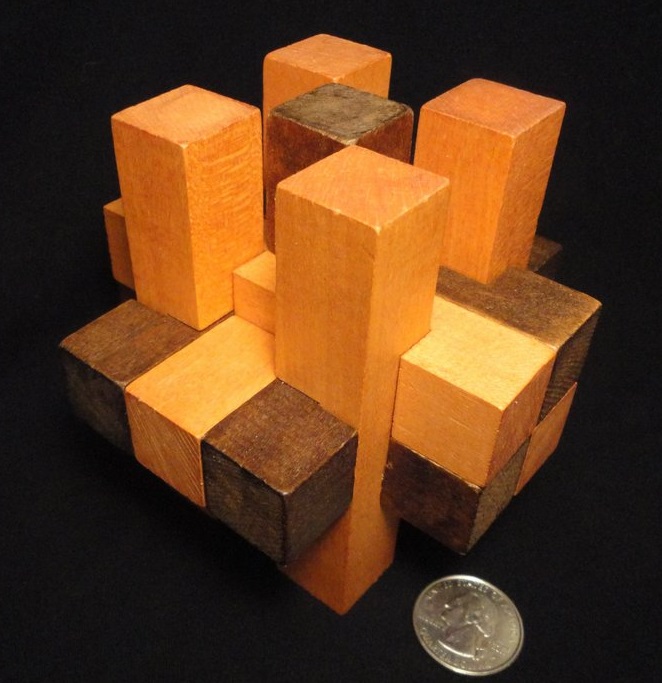
Arjeu CT117 Known as "3-4-5." |
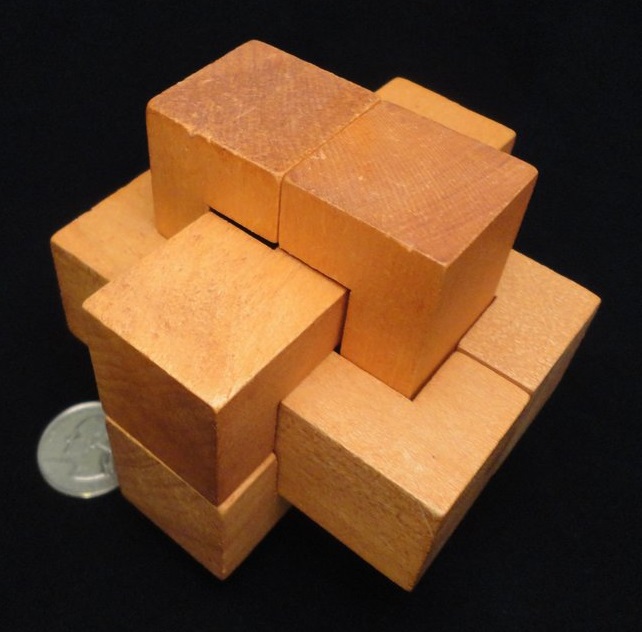
Arjeu CT757 |
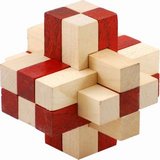
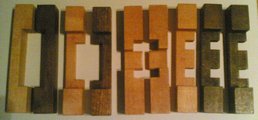
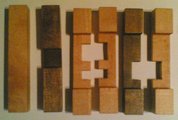
Arjeu CT456 15 2x2x12 pieces, to be arranged in a 4x5x6 structure. Purchased from PuzzleMaster.ca. |
|
|
More Arjeu, collected here in one place for convenience, though I wouldn't call all of these burrs.
Some of these are shown under other sections in this website, and some I do not own and show only for reference - such cases are noted. |
||
 Arjeu CT442 (Colorado) |
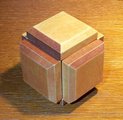 Arjeu CT210 |
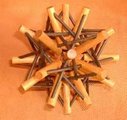 Arjeu CT795 (Cactus) |
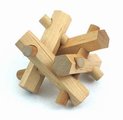 This is Arjeu's Quadro (CT755) |
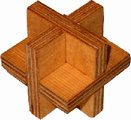
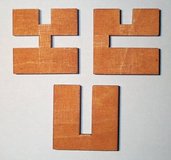
This is Neptunus from Arjeu (CT1101). It is made of three notched plates. |
 This is a 4-piece burr in a box from Arjeu, variously known as the "Secret Box" or "Pandora's Box" |

Arjeu CT1102 Mercurius |
 This is Arjeu CT679 |
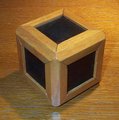
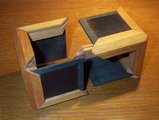
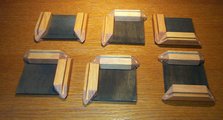
This is Arjeu's CT87 designed by Oskar van Deventer. |
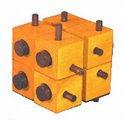 Arjeu CT5152 aka Achille |

Arjeu CT45 a large wooden 73 piece Pagoda puzzle |
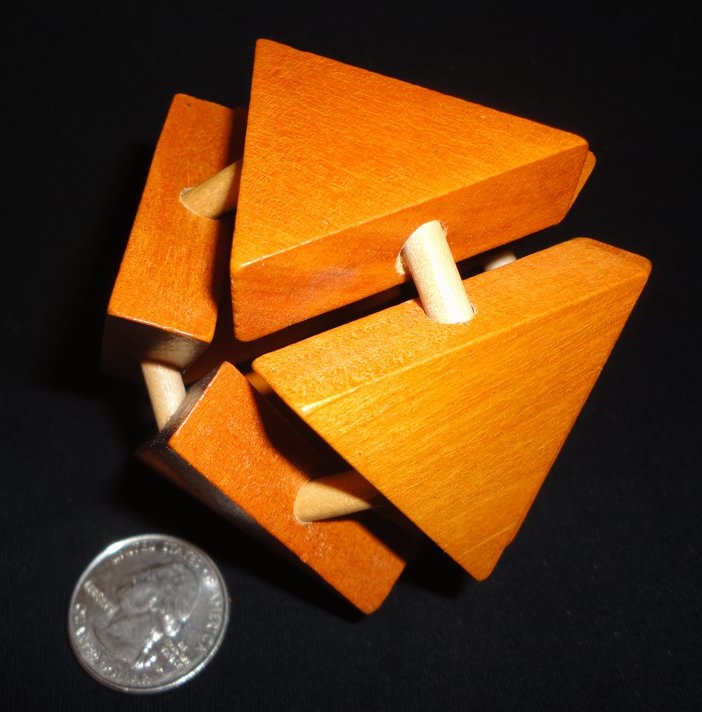
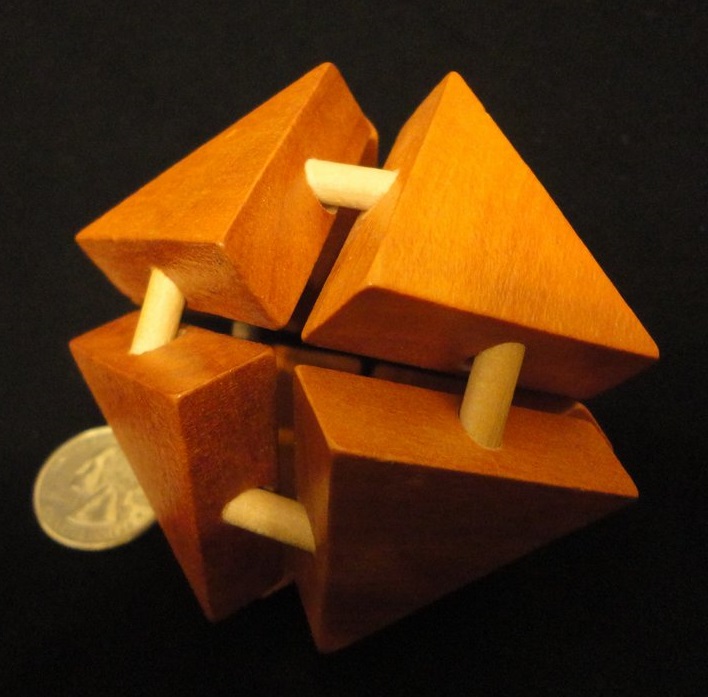
Arjeu CT109 |
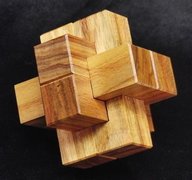
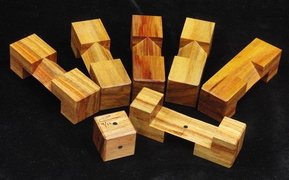
The Missing Notch burr by Stewart Coffin, made from Canarywood, by Eric Fuller. |
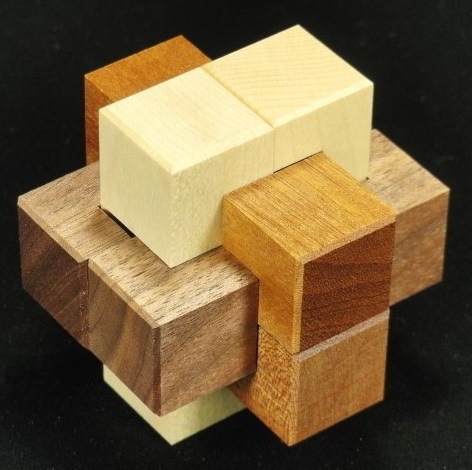
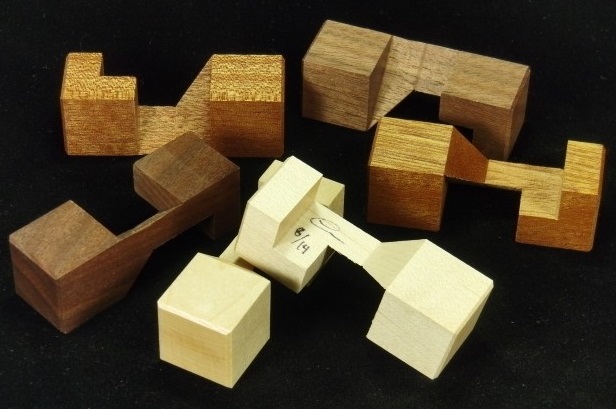
Double Slideways Burr - designed by Ray Stanton, made by Eric Fuller, from Maple, Walnut, and Sapele. |
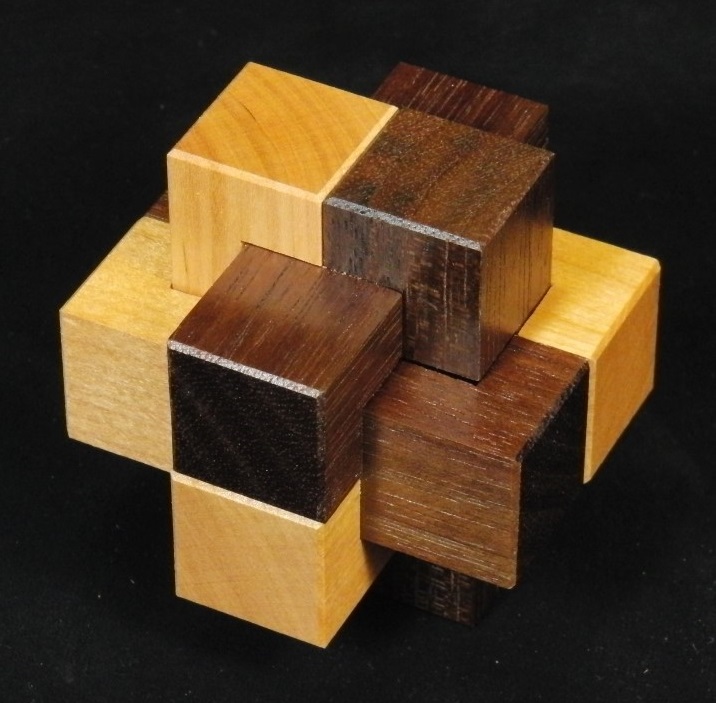
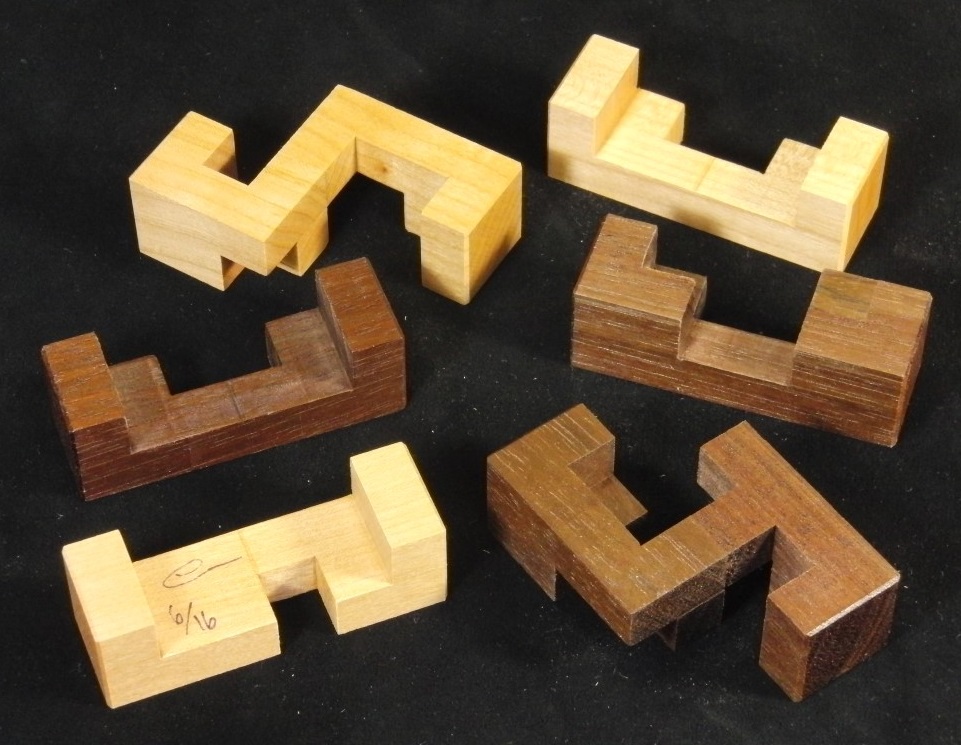
Camouflaged Burr - designed by Emil Askerli, made by Eric Fuller from Cherry and Walnut woods. Level 4.7. |
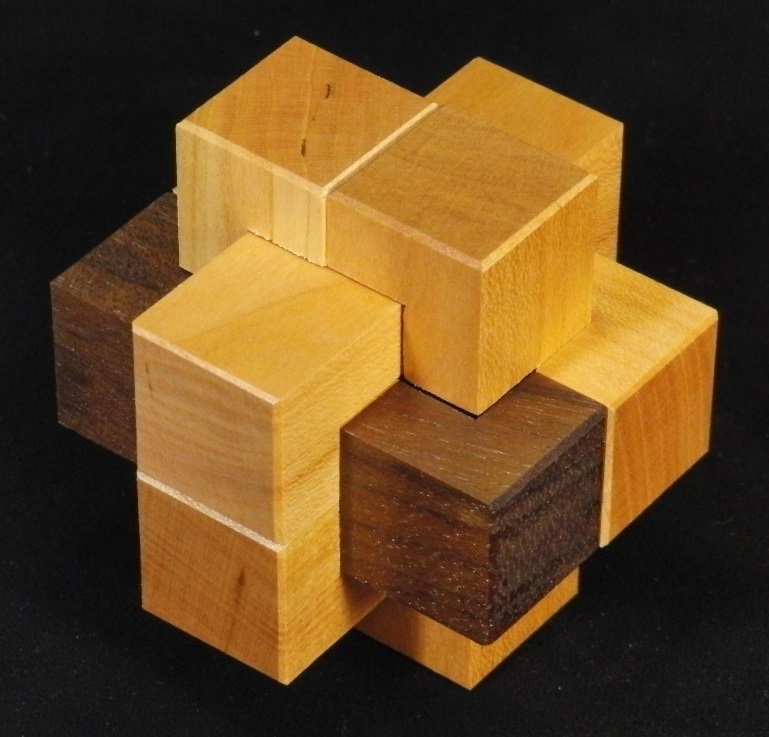

Disguised Burr - designed by Emil Askerli, made by Eric Fuller from Cherry and Walnut woods. Level 7.2.2. |
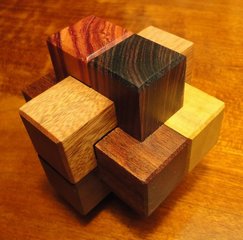
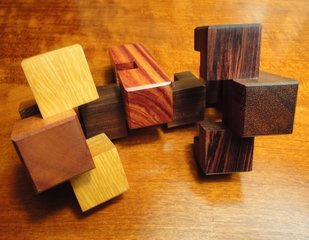
Glued, designed and made by Gregory Benedetti. Resembling a six-piece burr, this puzzle is composed of six conventional burr pieces that have been glued together in pairs. The puzzle is level 4.3 and [dis]assembly requires a rotation. It is made from Bolivian Santos Rosewood, Kingwood, Tulipwood, Bloodwood, Difu, and "Wood of Jesuit" and is very pretty. It is a nice size - the pieces are 25x25x75mm - and is quite heavy. |
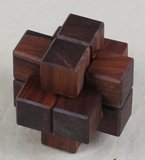
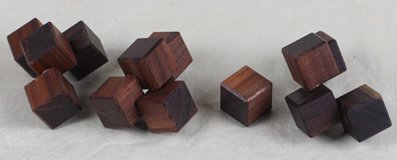
This is the Q Burr, designed by Jim Gooch, made by Steve Strickland, from Rosewood. Four pieces, one of which is a cube. Purchased from Steve Strickland's new website (defunct). |
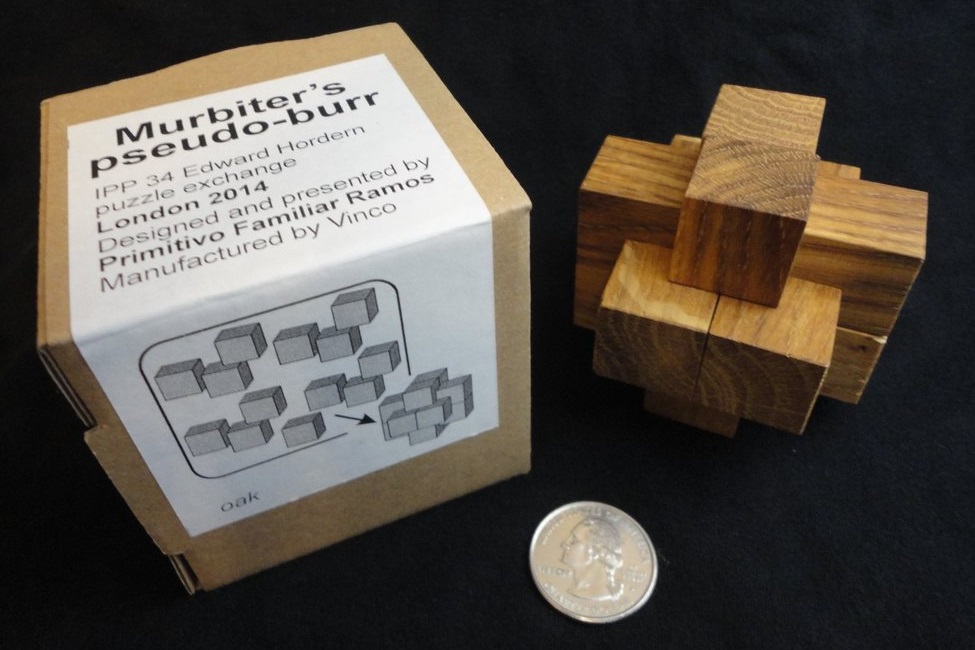
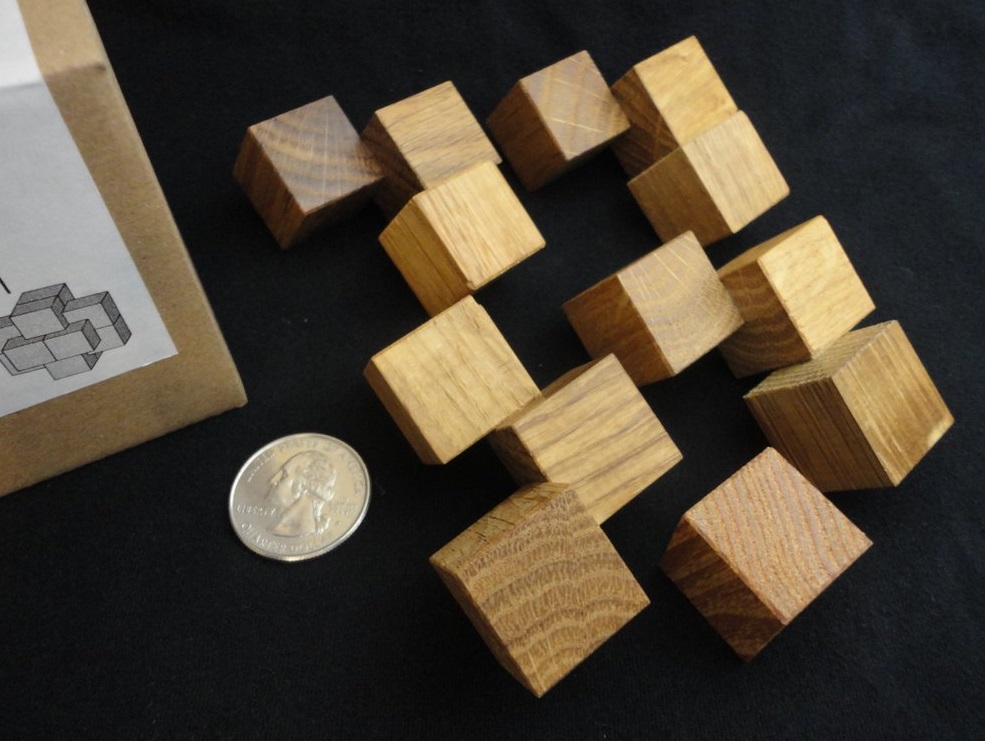
Murbiter's Pseudo-Burr - by Primitivo Familiar Ramos, made by Vinco. Four identical pieces and a unit cube combine to form the familiar 6-piece burr shape. A kind gift - thanks, Primitivo! |
|
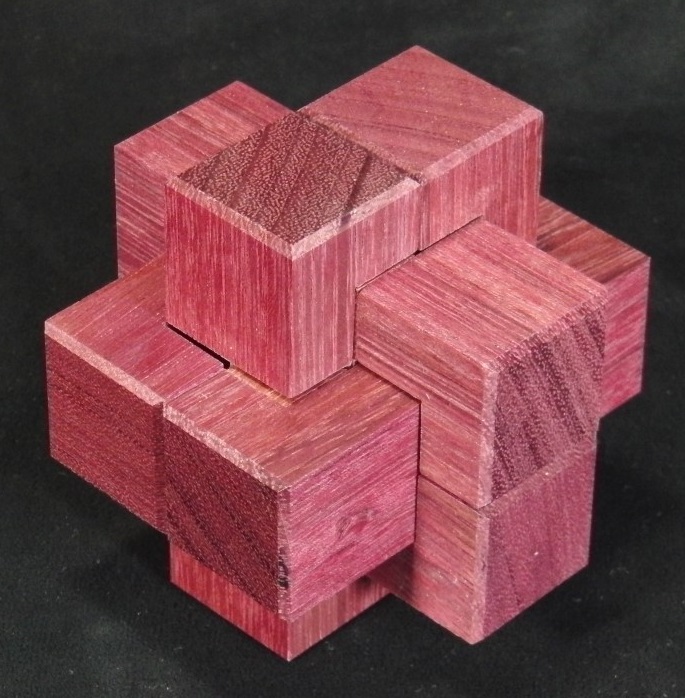
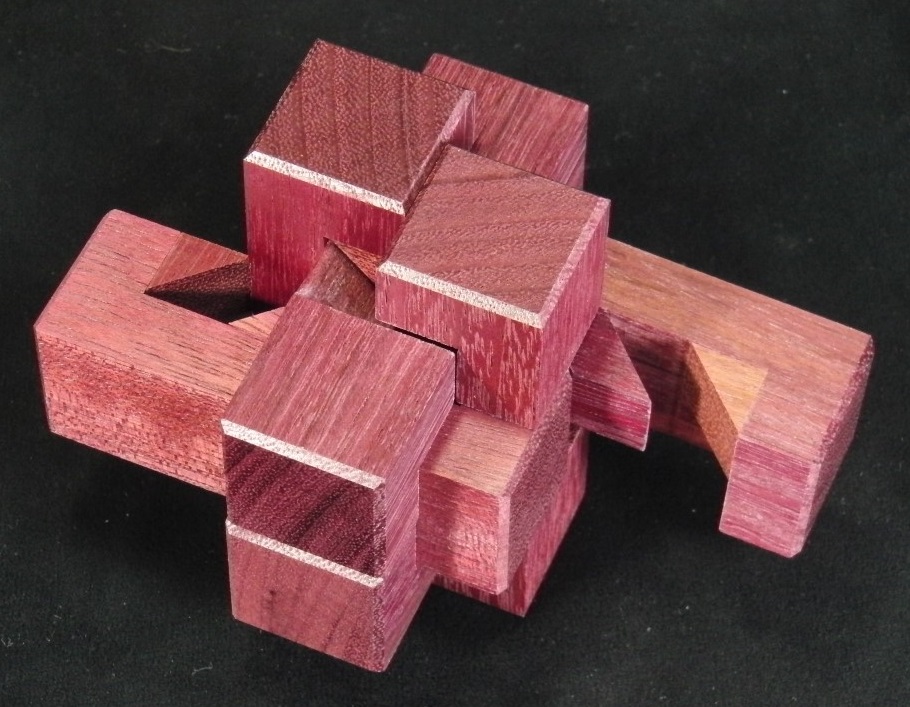
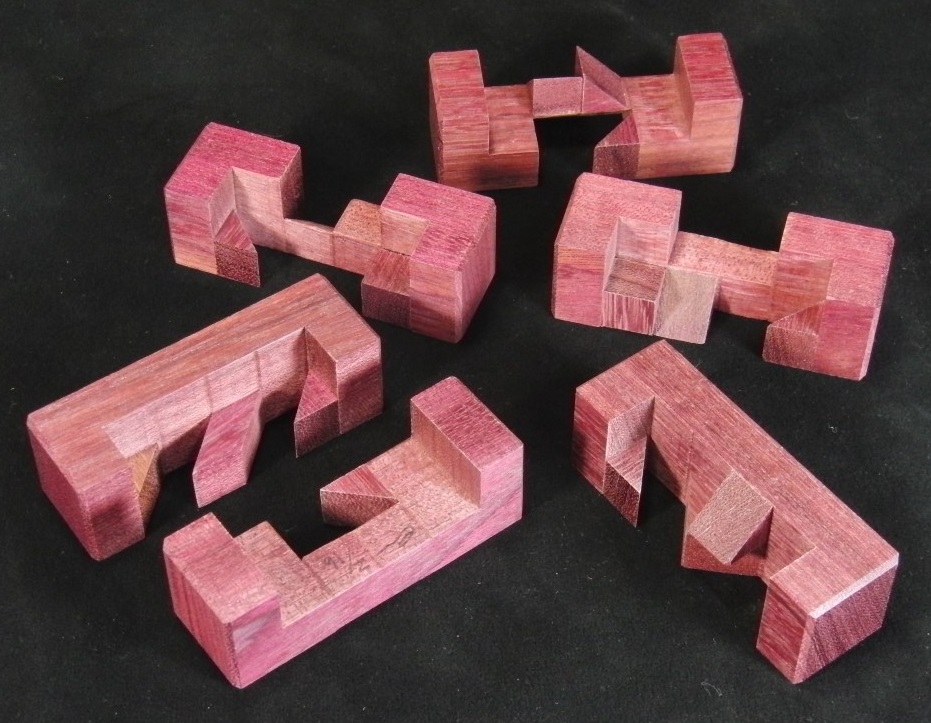
Crenal - one in a series of "New Old Style" burrs designed by Greg Benedetti, made by, and purchased from Eric Fuller. Made from Purpleheart. |
|
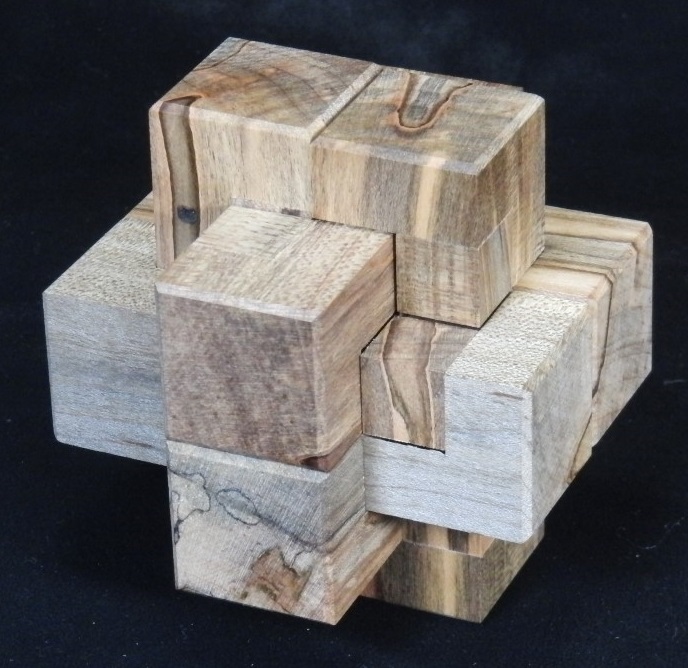
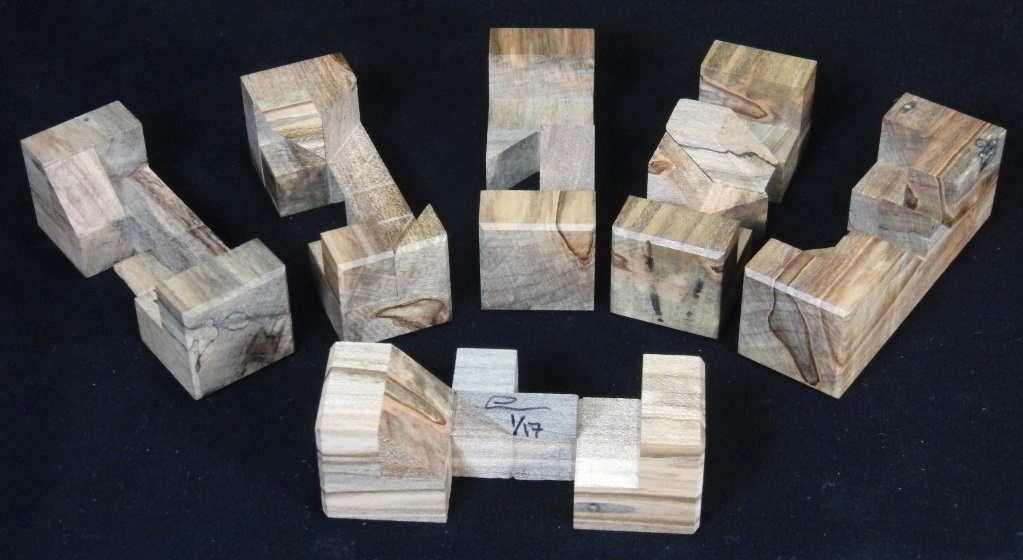
Seizaine - NOS #7 - designed by Gregory Benedetti Made by Eric Fuller from Ambrosia Maple |
|
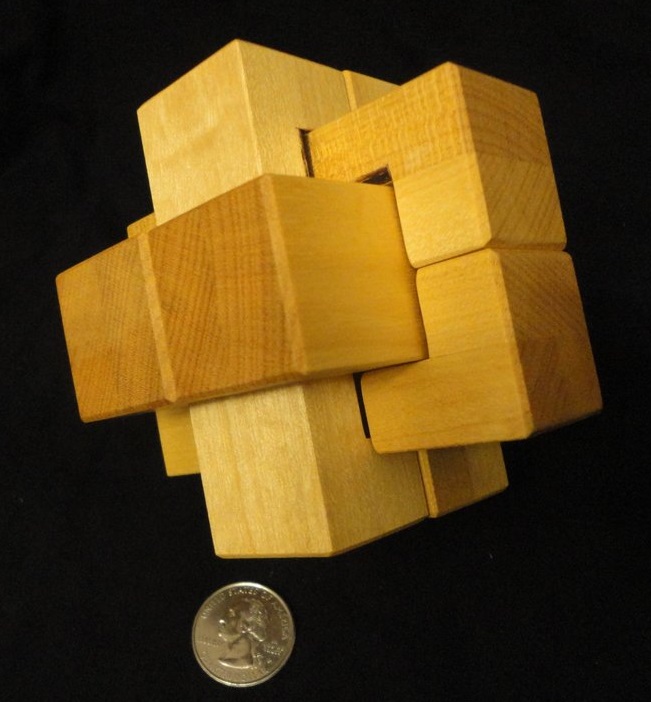
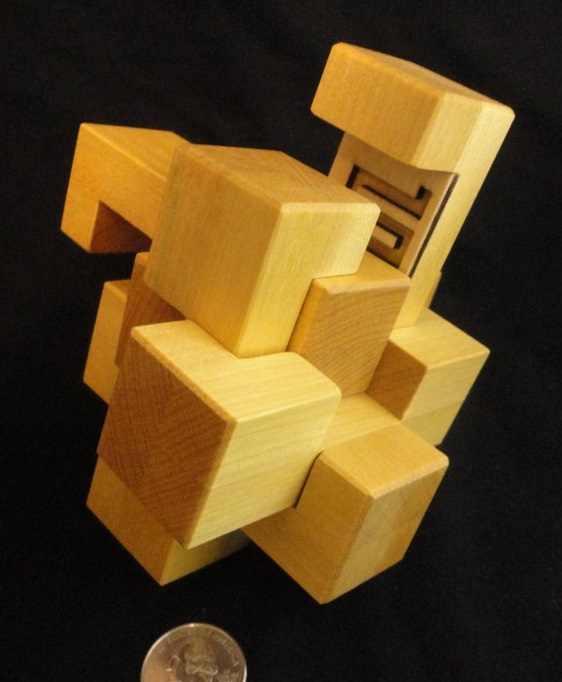
Ordinary Burr - designed by Goh Pit Khiam and made by Tom Lensch from Yellowheart wood with Baltic Birch plywood mazes for strength. Looks like a conventional six-piece burr, but inside contains maze-following pins. |
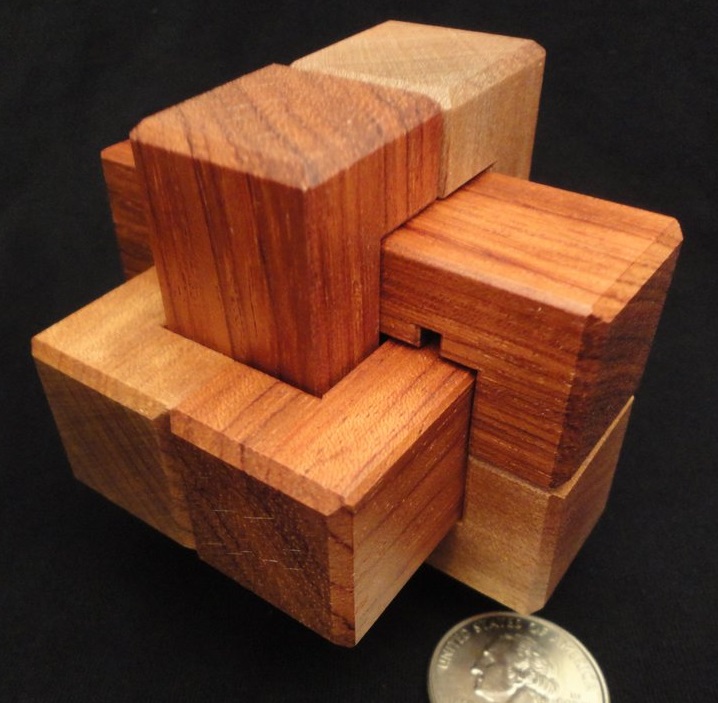
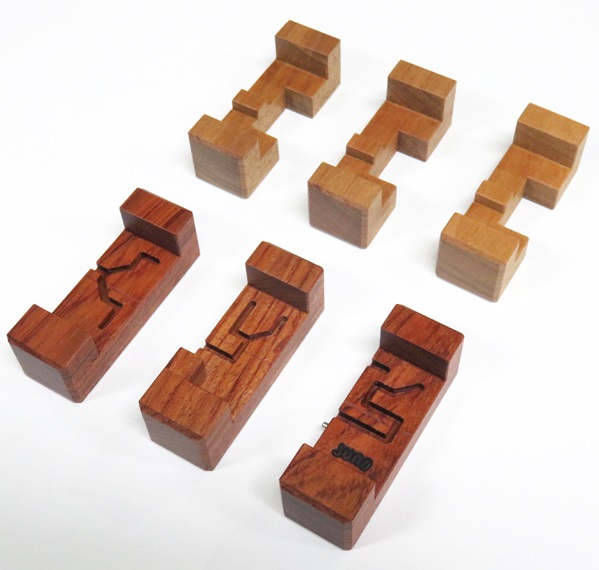
A Mazing Burr - designed by Junichi Yananose Looks like a conventional six-piece burr, but inside contains maze-following pins. |
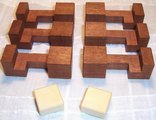 Eight Piece Burr - made by Scott T. Peterson |
|
| Augmented Burrs | |
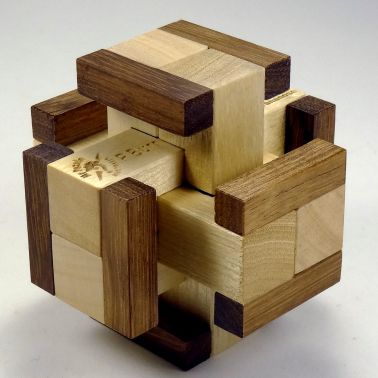
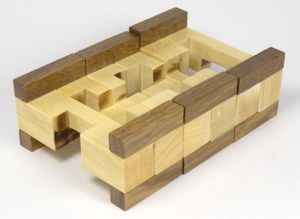
P-Burr - designed by Junichi Yananose, made by Brian Young from Queensland Silver Ash and Queensland Blackbean 6 pieces, level 18.2 with a unique solution. The pieces { 856/943, 871, 960/992, 1024 } are length 8 and each has a bar attached to each end. (If you omit the end bars and substitute 911 for 943, you get the pieces used in Bill Cutler's Bin Cross.) I am proud to say I solved this one from the unassembled state unaided! |
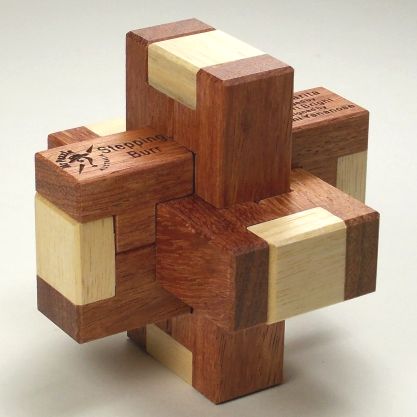
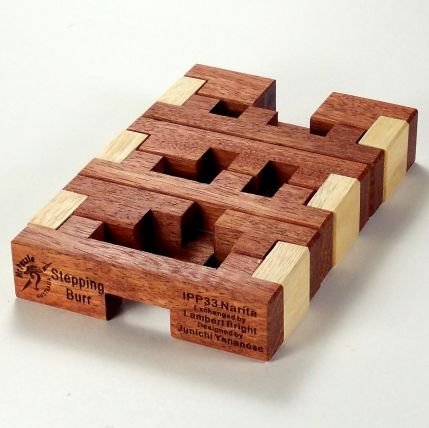
Stepping Burr - designed by Junichi Yananose, made by Brian Young at Mr. Puzzle Australia. Level 10. Thanks, Chelsea! |
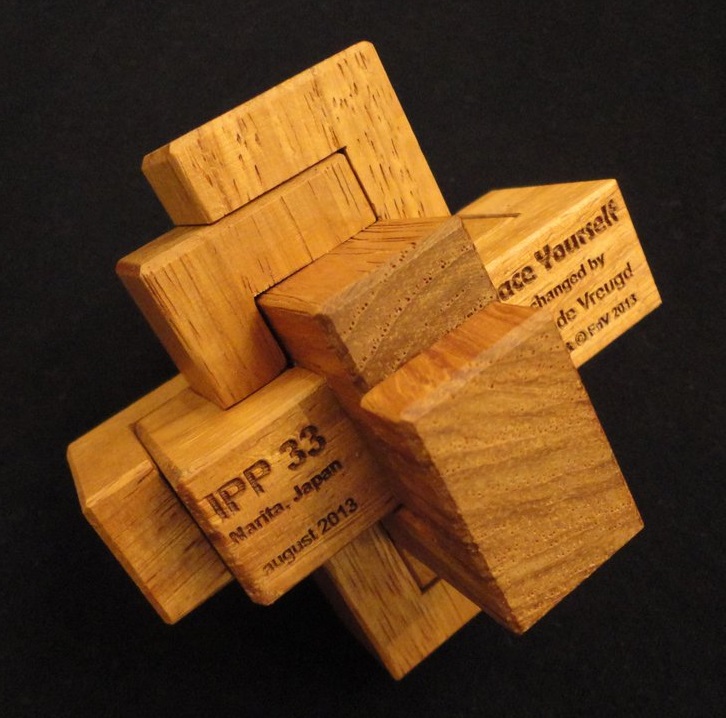
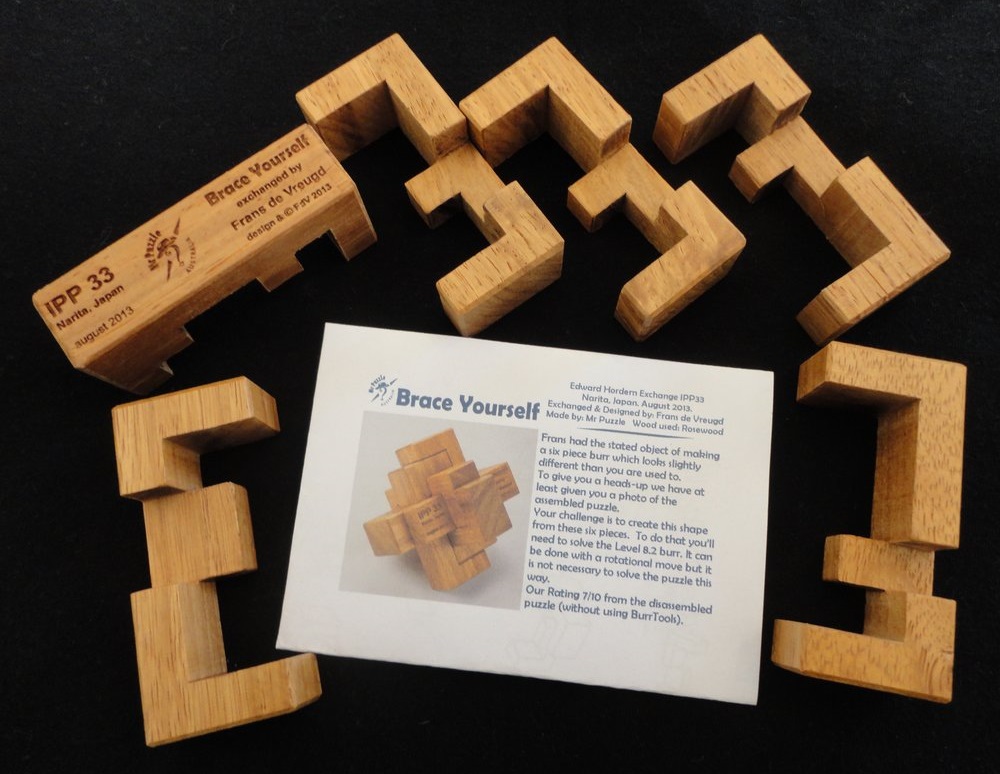
Brace Yourself - designed by Frans de Vreugd for IPP33, made by Brian Young at Mr. Puzzle Australia, from Papua New Guinean Rosewood. 6 pieces form an unconventionally-shaped burr. Solved this one from the unassembled state! |
|
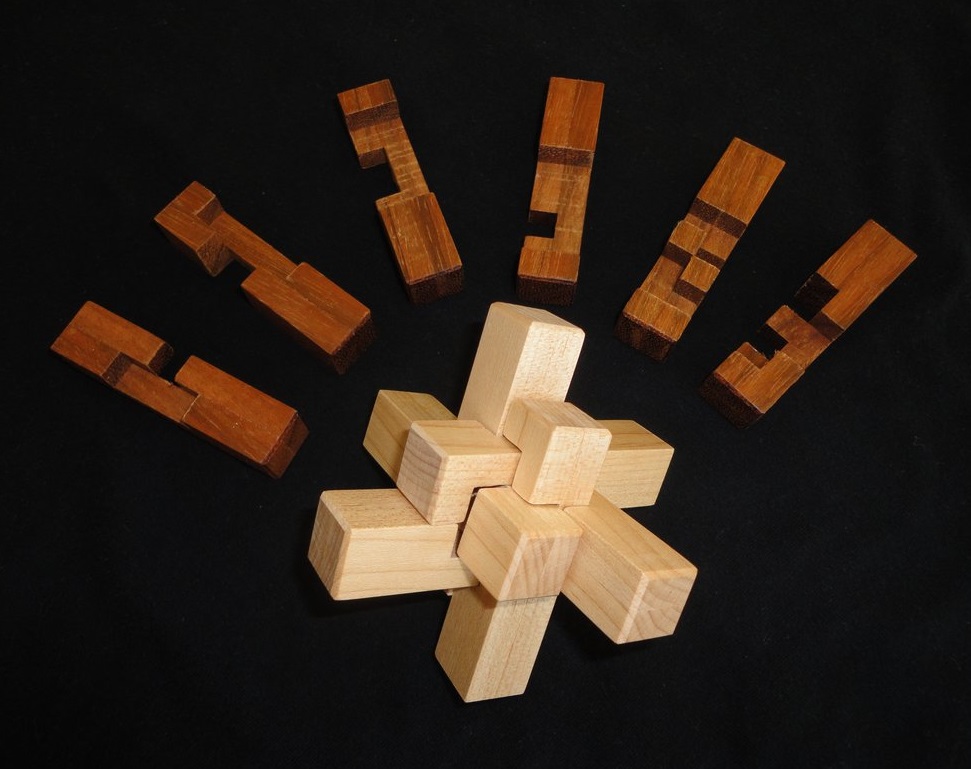
The Stellated Burr from Primitivo Familiar Ramos of Spain. Two copies are shown. |
|
| Hybrid Burrs | |
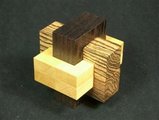
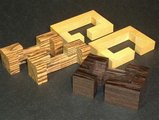 The Switchboard Burr designed by Jim Gooch and made by Eric Fuller mixes pieces from 3 different styles of burr, and its solution employs a move one does not often see. The woods are: Pau Amerillo (the yellow), Wenge (the dark), and Bocote (the brown striped). |

Mixed Pieces Burr #2 - designed by Frans de Vreugd. Purchased from Frans at IPP28 in Prague. |
| Conjoined Burrs | |
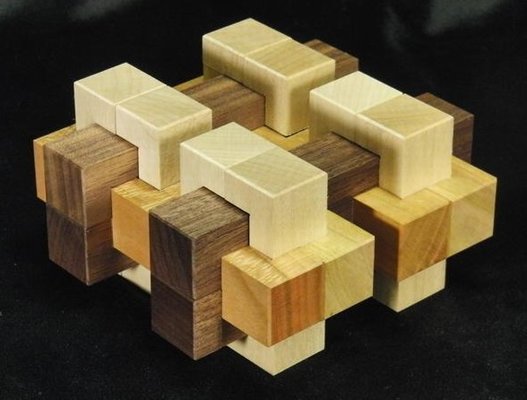

Cold Fusion - designed by Logan Kleinwaks, made by Eric Fuller, from Walnut, Maple, and Cherry Four interconnected burrs, level 18.6.8. |
|
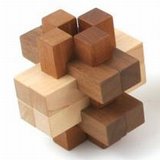
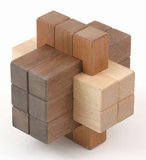
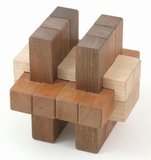
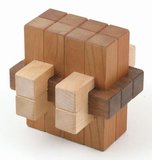
The four members of the Wausau burr series by Bill Cutler - '81, '82, '83, and '84. See Allard's blog for a nice review of the Wausau burrs. |
|
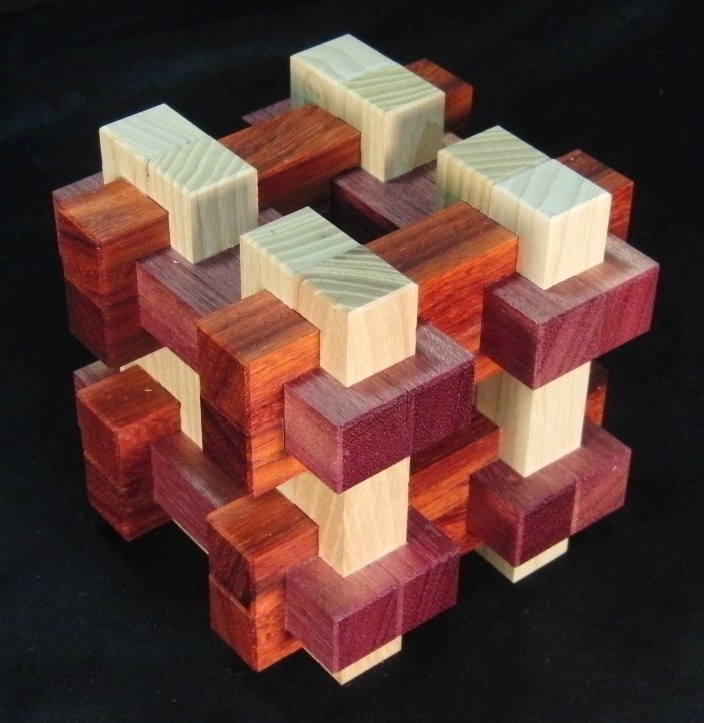
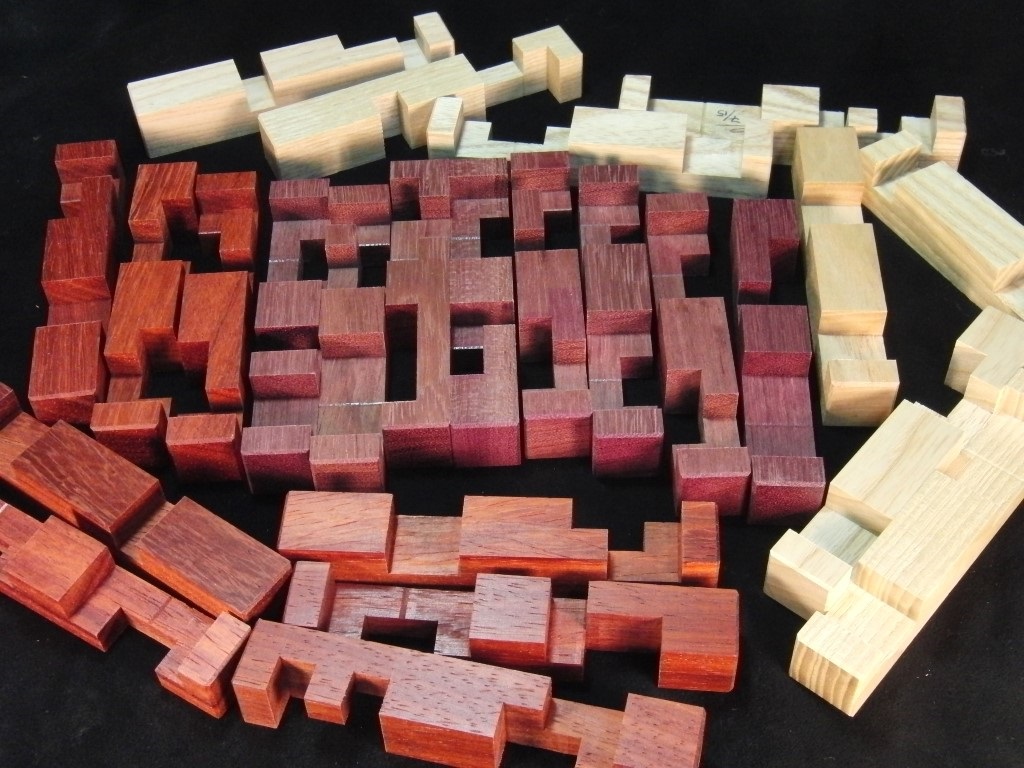
S/M24 designed by Bill Cutler, purchased from and made by Eric Fuller from Ash, Padauk, and Purpleheart. 7 moves to get the first piece out. |
|
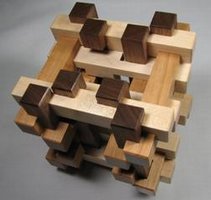
The Visible Burr, designed by Bill Cutler, made by Jerry McFarland, from Cherry, Maple, and Walnut woods. |
|
|
|
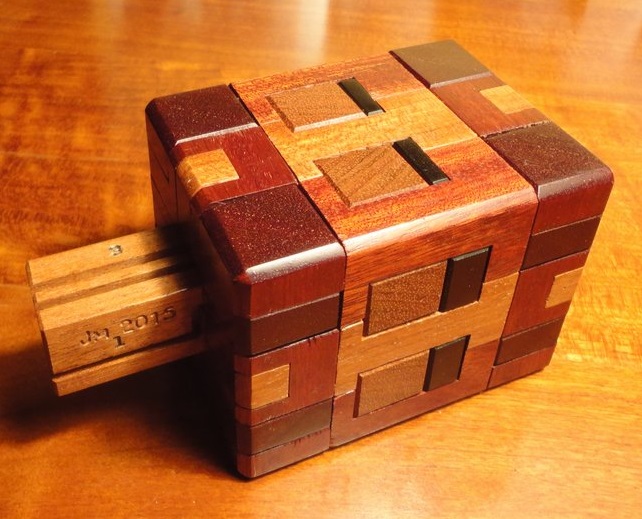
Binary Pin Burr - designed and made by Jerry McFarland |
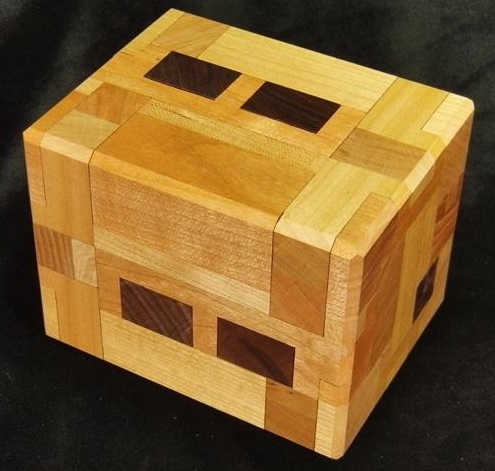
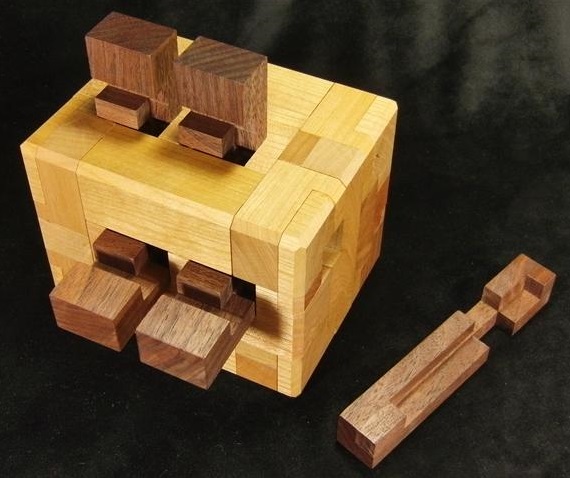

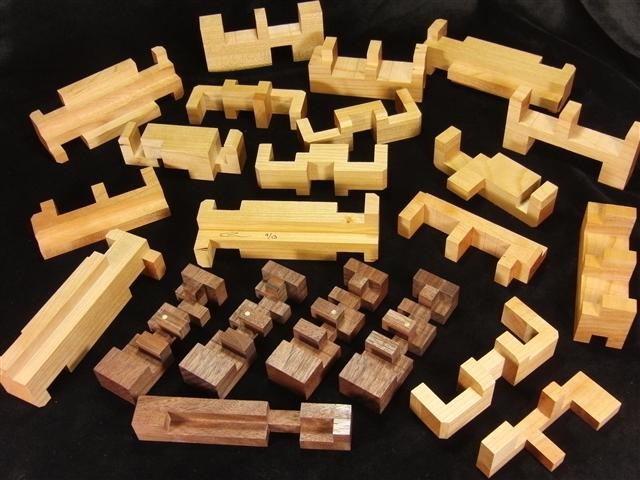
The Ternary Burr - designed by Goh Pit Khiam, made by Eric Fuller from Walnut and Cherry. 22 pieces, 75 moves to get the first piece out. |
|
|
|
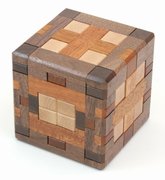
BurrBlock by Jerry McFarland One of Jerry's first copies of his new design, which was entered in the 2012 Design Competition. It's beautiful, hefty, and quite puzzling! |

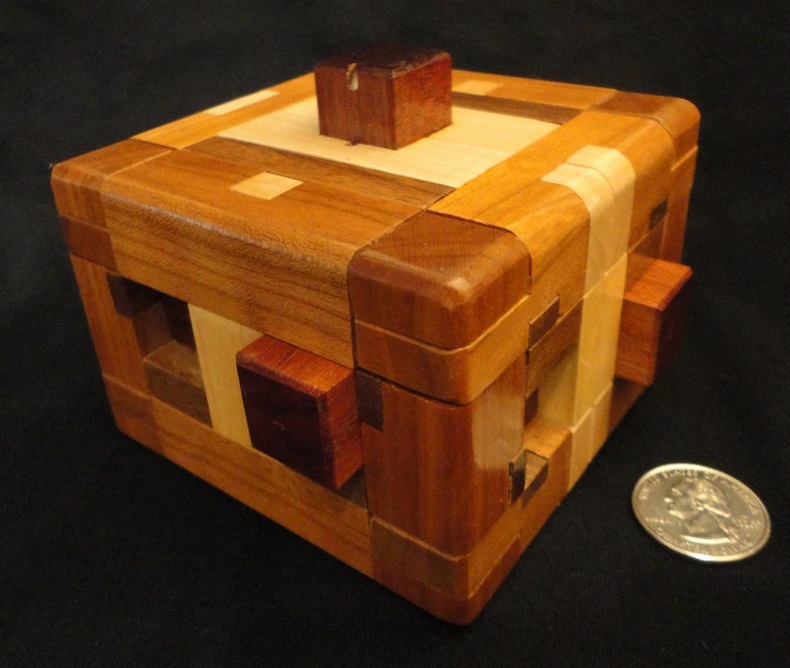
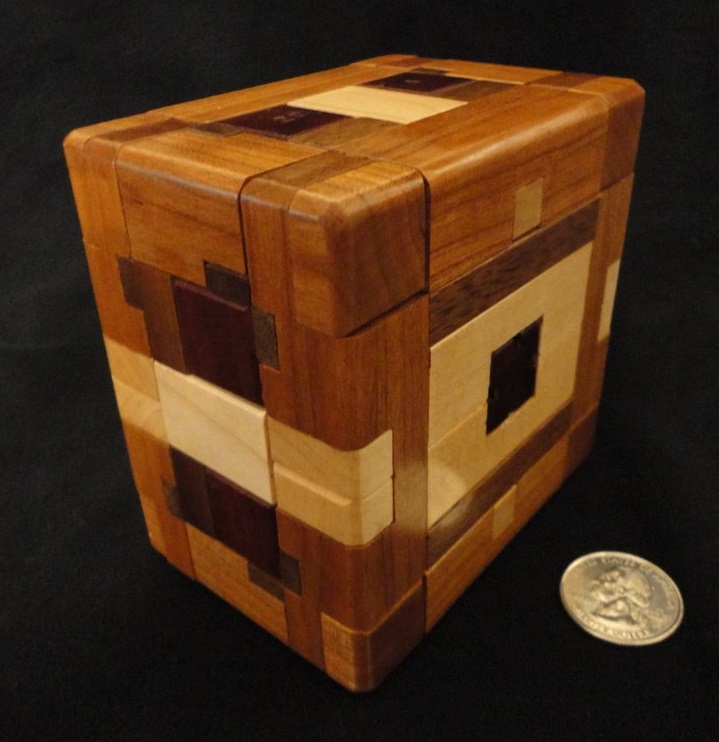
BurrNova - designed and made by Jerry McFarland. "A puzzle that solves itself." While not wholly true, Jerry's novel design incorporates magnets such that at a certain point several pieces move themselves with a satisfying clacking. BurrNova won an Honorable Mention in the 2017 IPP37 Paris Design Competition. This version was since re-designated "BurrNova 2D" as Jerry has created a followup he calls BurrNova 3D (aka Magnetic Madness), wherein hides a mermaid awaiting rescue. Magnetic Madness was among the Top Ten Vote-getters in the 2018 IPP38 San Diego Design Competition. Jerry posted a short video of its action. Kevin Sadler has a very detailed September 2017 post about BurrNova (2D) on his blog, as well as an August 2018 post about the BurrNova 3D (aka Magnetic Madness). |
|
Yavuz Demirhan of Turkey has designed many interesting puzzles of various types, including assembly, sequential assembly, and interlocking varieties. Yavuz has hand-made many beautiful puzzles himself, and his designs have been produced by noted craftsmen. There are examples of Yavuz' puzzles in various subsections of this site - I created this subsection to have a place for Yavuz' general interlocking puzzles I have not categorized elsewhere. Yavuz has an Etsy shop Cubozone. A comprehensive listing of most of Demirhan's designs can be found at Puzzle Will Be Played, where as of this writing in July 2020, there are 572 designs described.
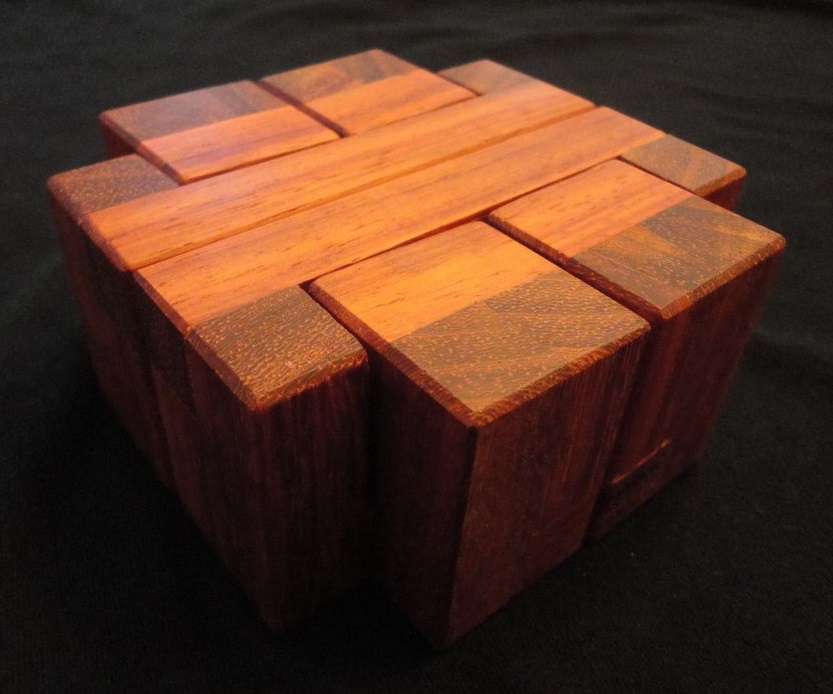
Lion's Claw - designed by Yavuz Demirhan, made by Brian Menold, from Bloodwood. |

Forma - designed, made by, and purchased from Yavuz Demirhan of Turkey. |

Queen Sixteen - designed, made by, and purchased from Yavuz Demirhan of Turkey. |
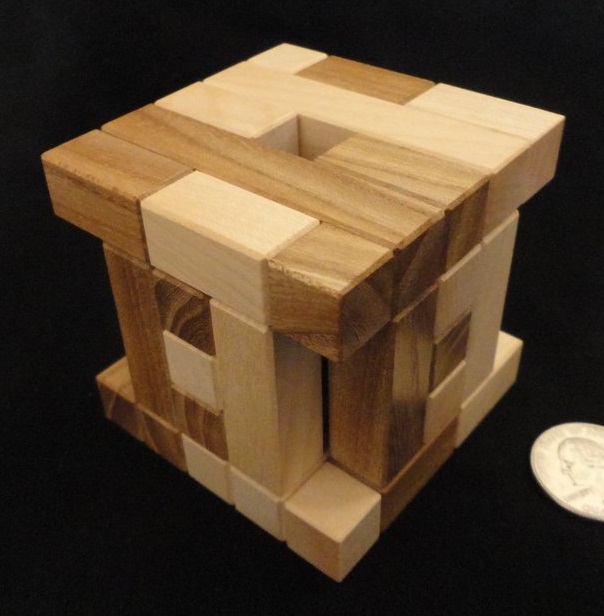
Tetradyma 5x5 - designed by Yavuz Demirhan |
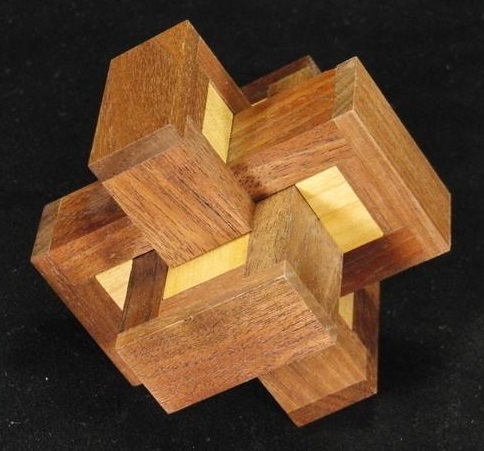
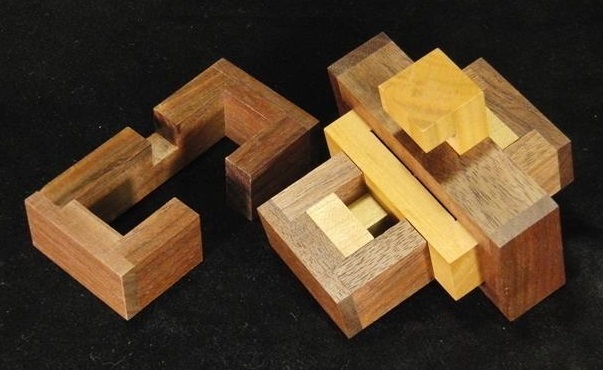
Capsula Burr - designed by Yavuz Demirhan, made by Eric Fuller from Walnut and Maple |
|

Hedgehog Burr - designed and made by Yavuz Demirhan from Sapelli and Maple woods. Level 16.4. |

Susie Qube - designed and made by Yavuz Demirhan at Cubozone |
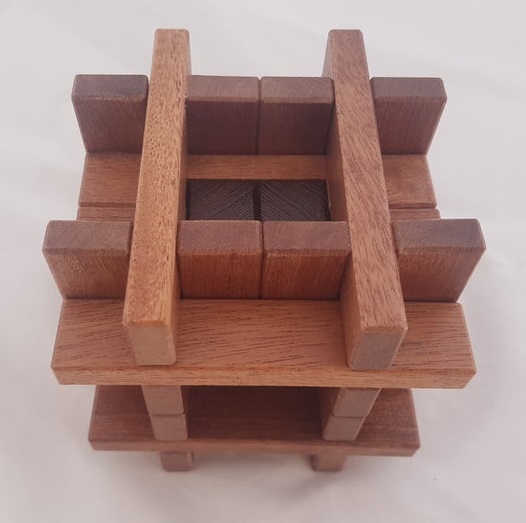

Burrcell - designed and made by Yavuz Demirhan from Sapelle and Wenge Six burr pieces and 12 identical exterior pieces. |
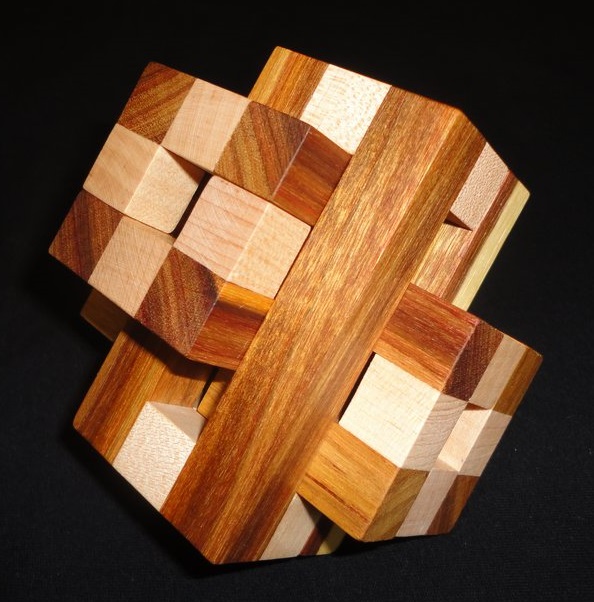

Nembus #2 - designed by Yavuz Demirhan, made by Brian Menold from Canarywood and Maple. |
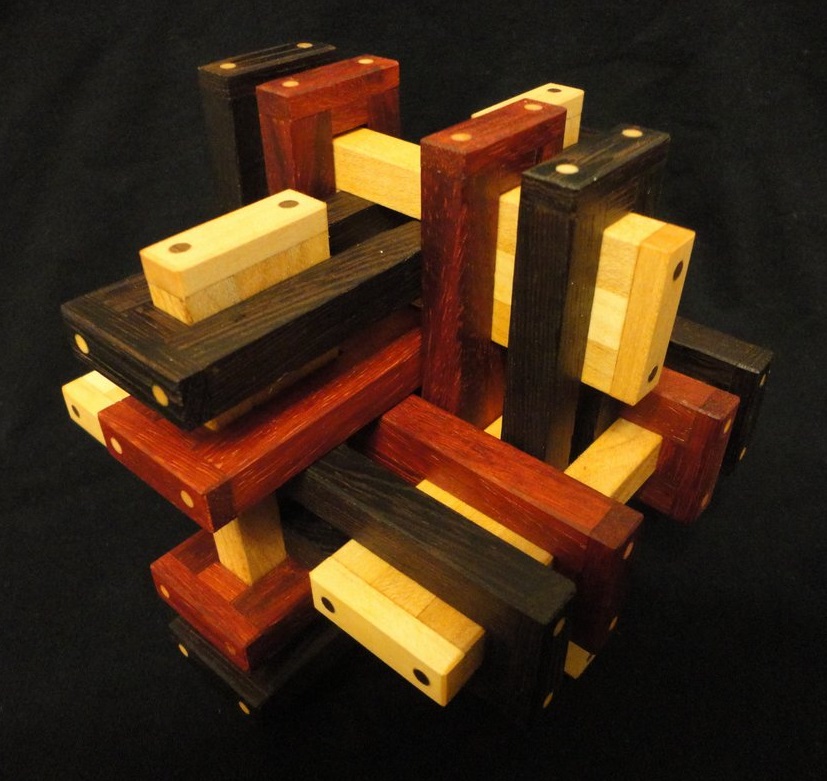
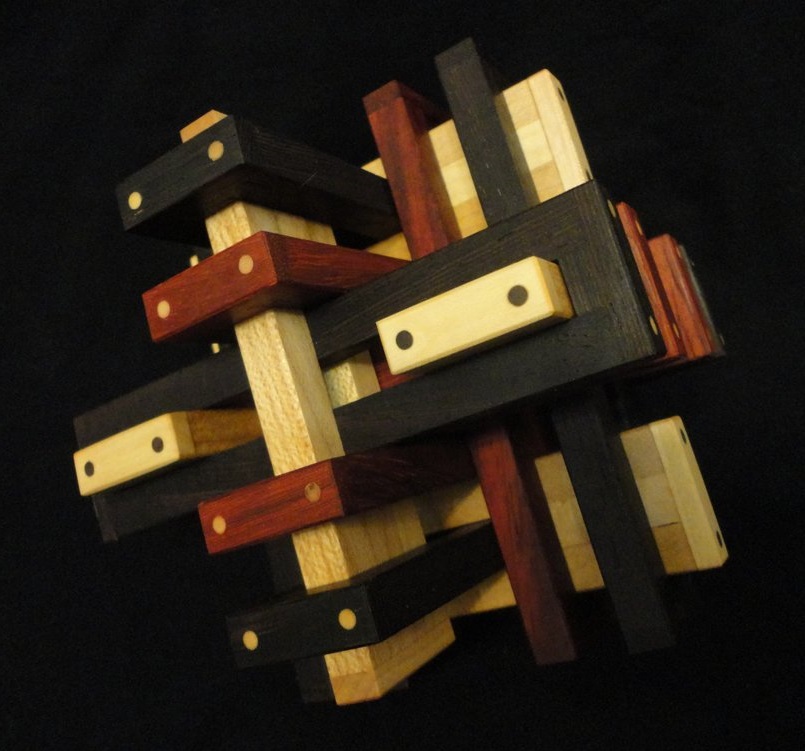
Volantis - designed, made by, and purchased from Yavuz Demirhan of Turkey. Check out what's available at Yavuz' Etsy shop Creacubes. |
|

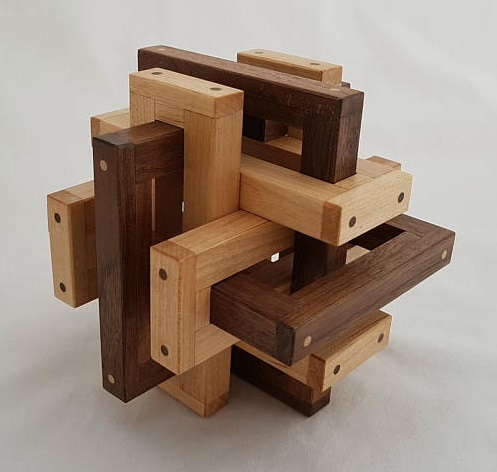
Transenna (improved) - designed and made by Yavuz Demirhan Allows an alternate assembly, also shown. |
|
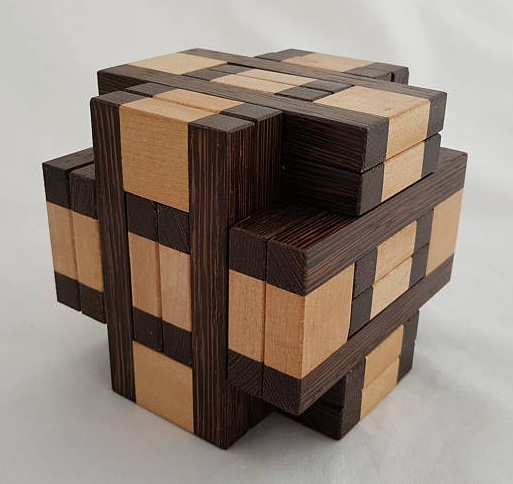
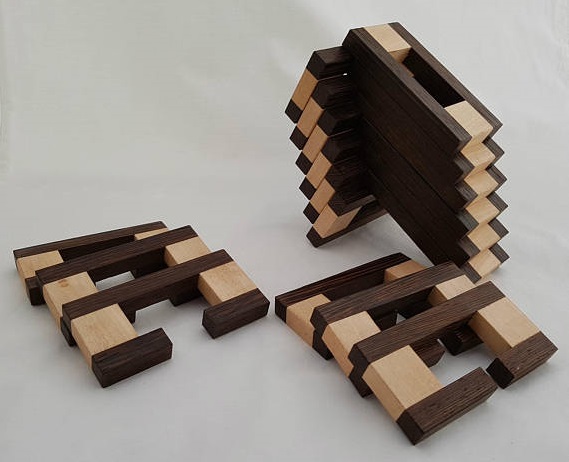
Oramagomaburamago - designed and made by Yavuz Demirhan |
|
See Ishino's site for a list of six-board burrs.
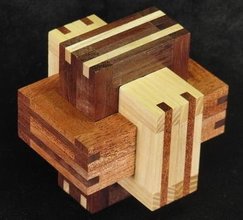
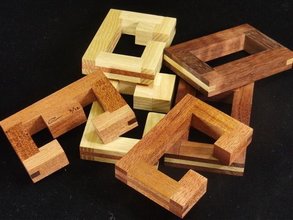
Chen's Six Board Burr Designed by Chi-Ren Chen Level 2.14.12 Made by Eric Fuller, in Walnut, Ash, and African Mahogany |
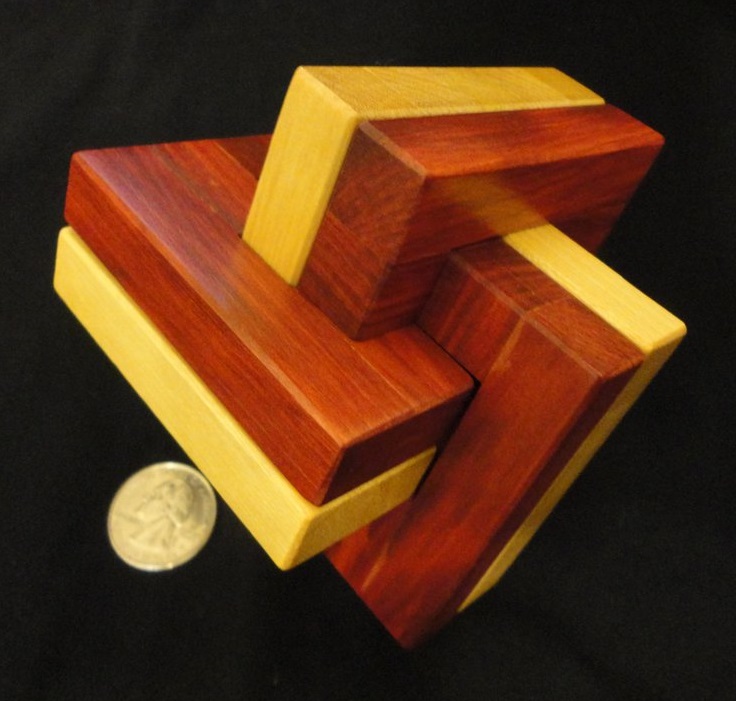
Tropical Fish designed by Chi-ren Chen, made by Brian Menold from Redheart and Yellowheart A six-board burr. Level 19.5.1.1.2 |
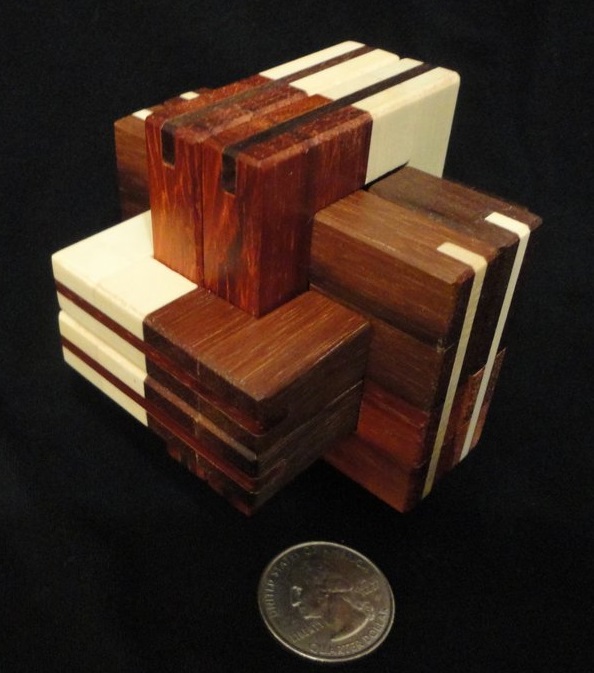
Tricolore - designed by Frans de Vreugd made by Brian Menold from Padauk, Holly, and Katalox Level 3.15.11.2 |
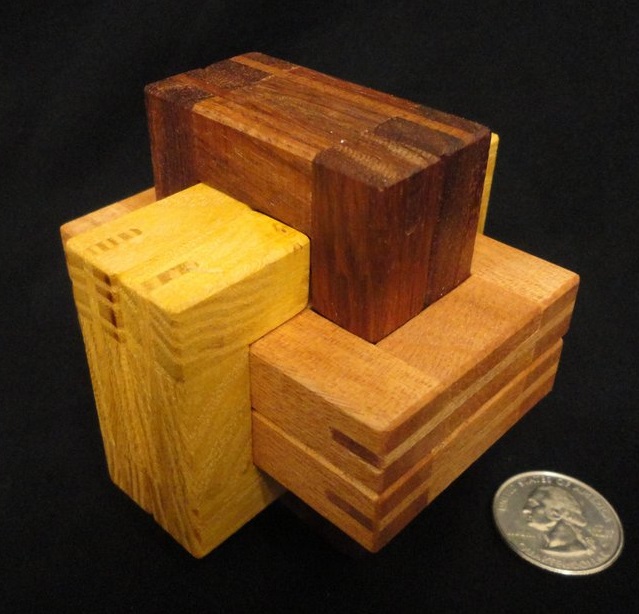
Y6BB1 - designed by Yavuz Demirhan, made by Brian Menold from Tzalam, Okoume, and Mulberry Level 3.11.2.3.4 |
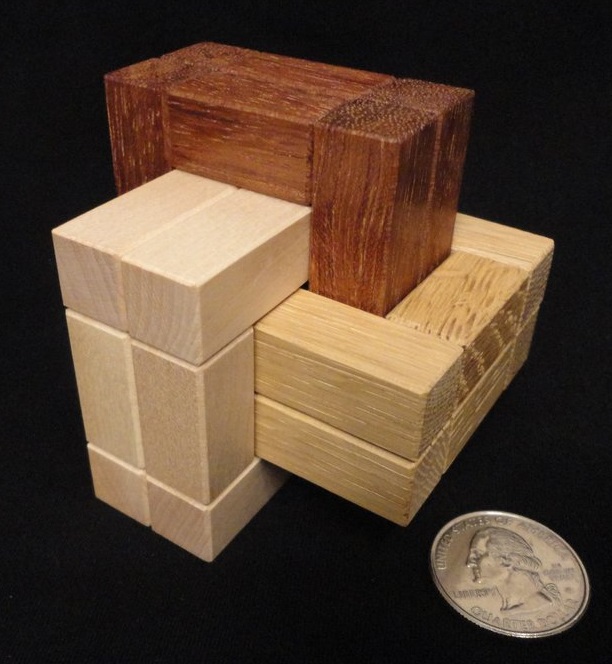
Knotty 6 - designed by Yavuz Demirhan |
|
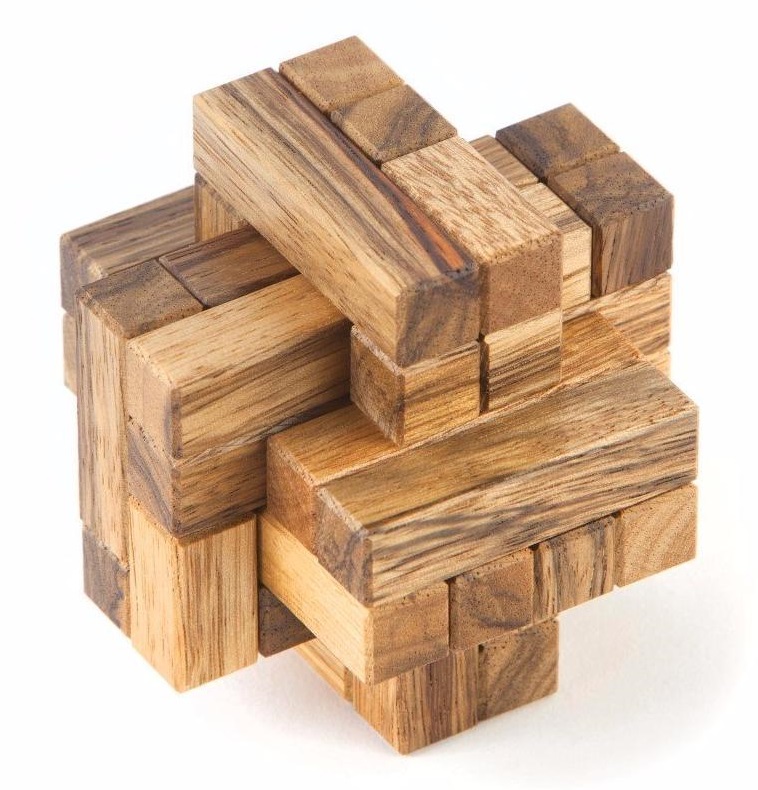
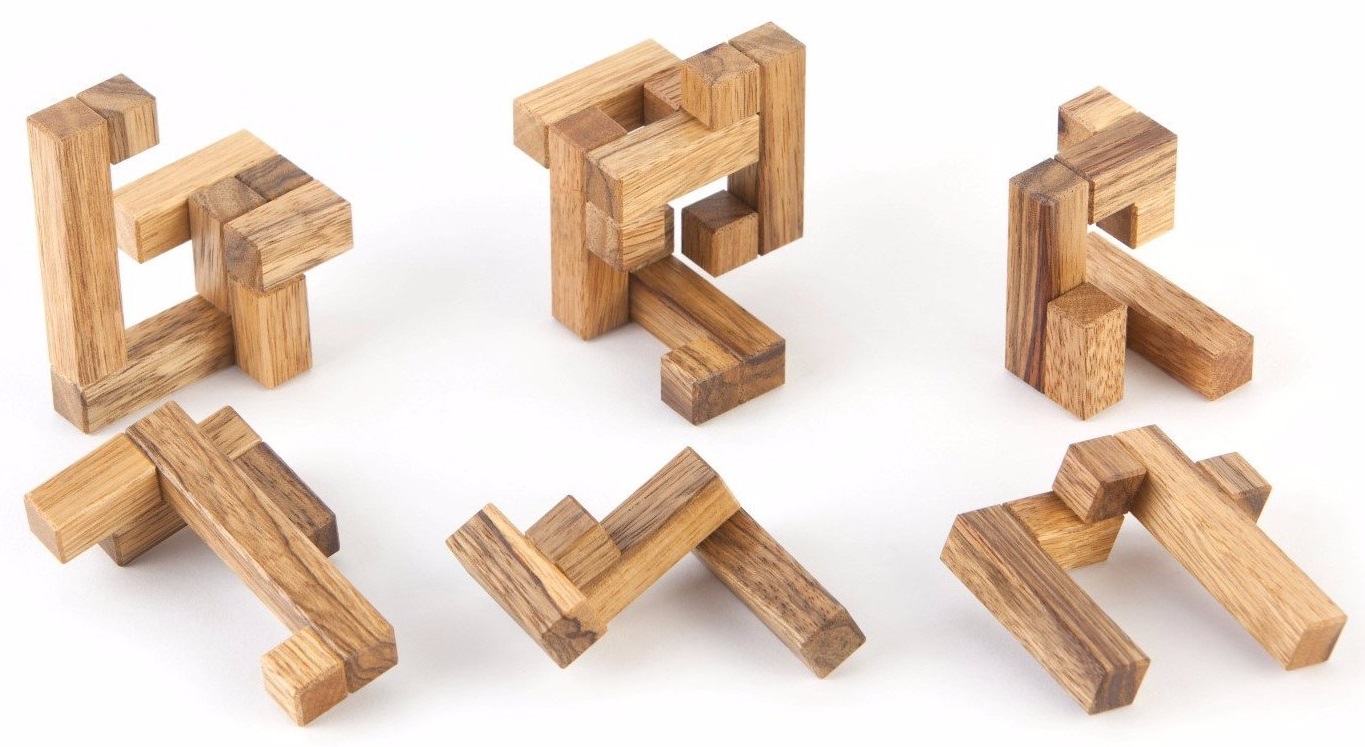
Knotted Burr - designed by Noah Prettyman Made by Eric Fuller, from Black Limba |
|
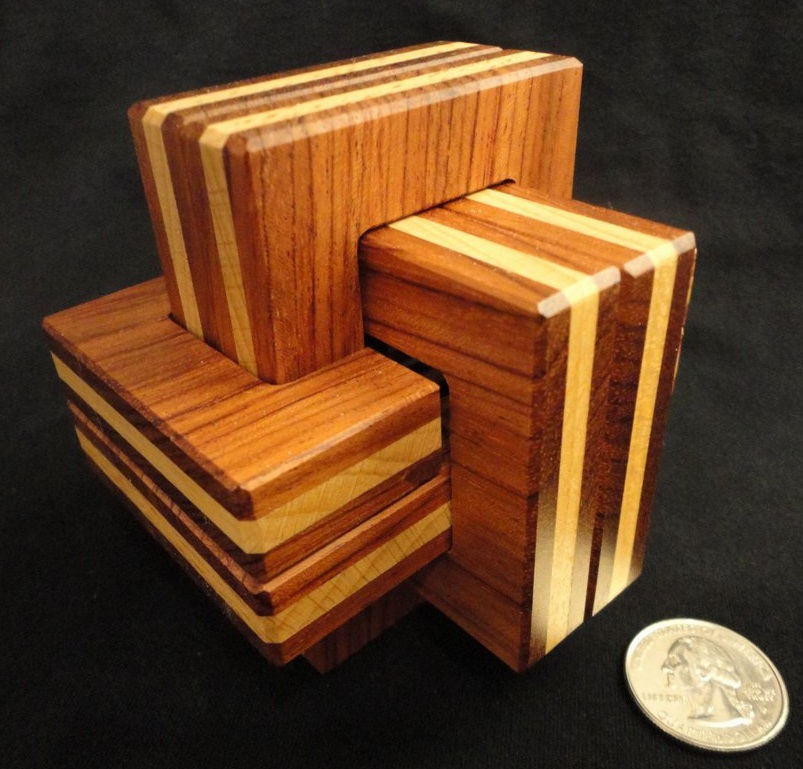
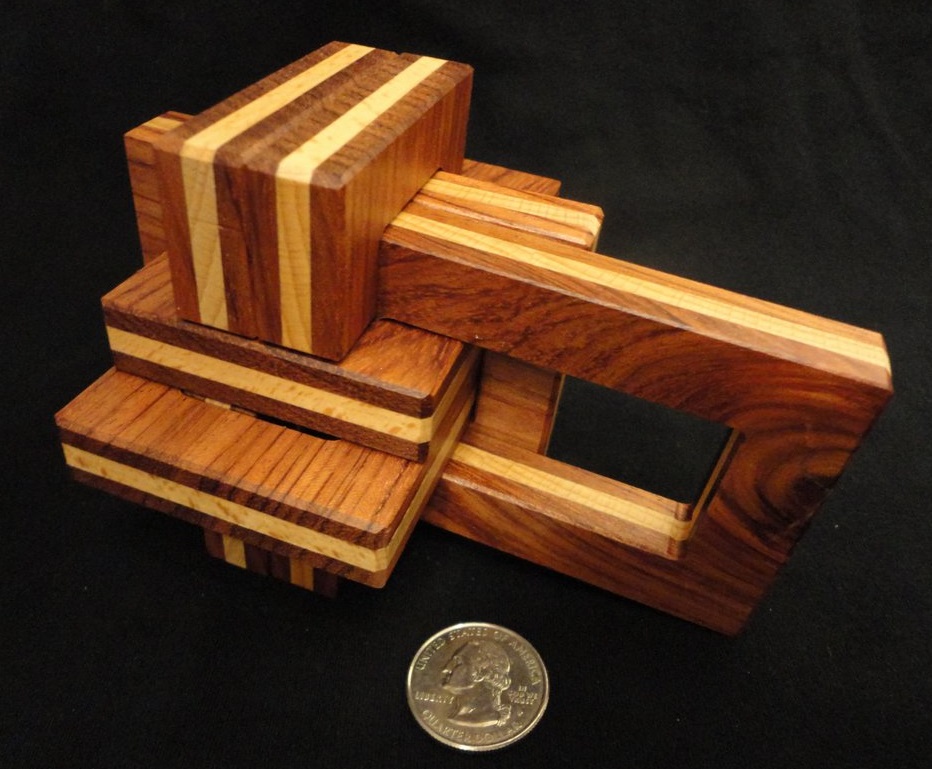
Grooved 6 Board Burr No. 2 - Pluredro. Made from Bubinga and Beech woods. Level 25.2.3.3. |
|

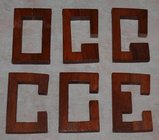
An inexpensive (and imprecisely made) 6-piece board burr. This is the same design that appeared in the French Fabbri series. |
|
|
Here is one of Andrew Crowell's takes on the six piece board burr - this one is called RIPley and in usual Crowell fashion, requires rotations!
|
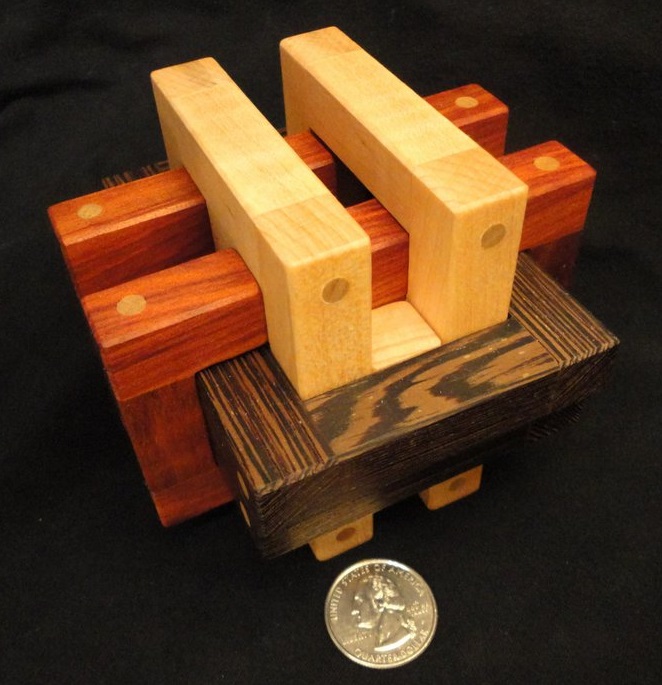
RIPtide - a 6-plate burr requiring rotations designed by Andrew Crowell, made by Brian Menold |

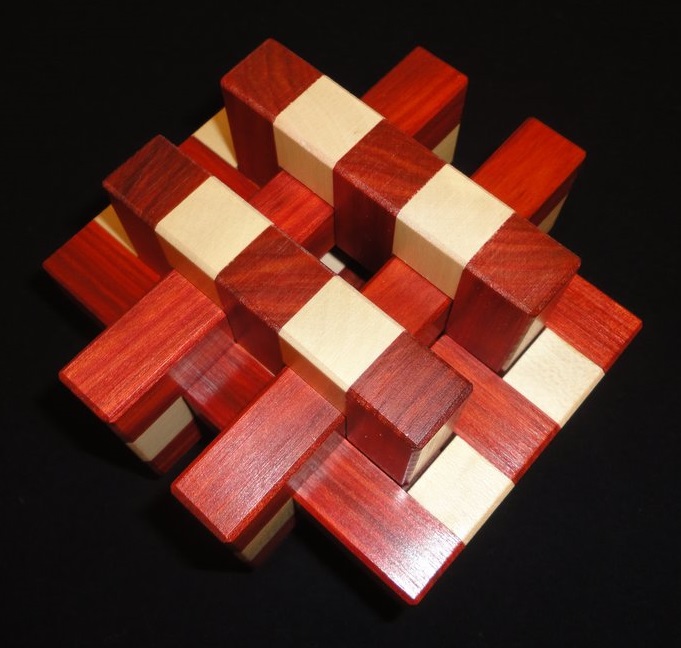
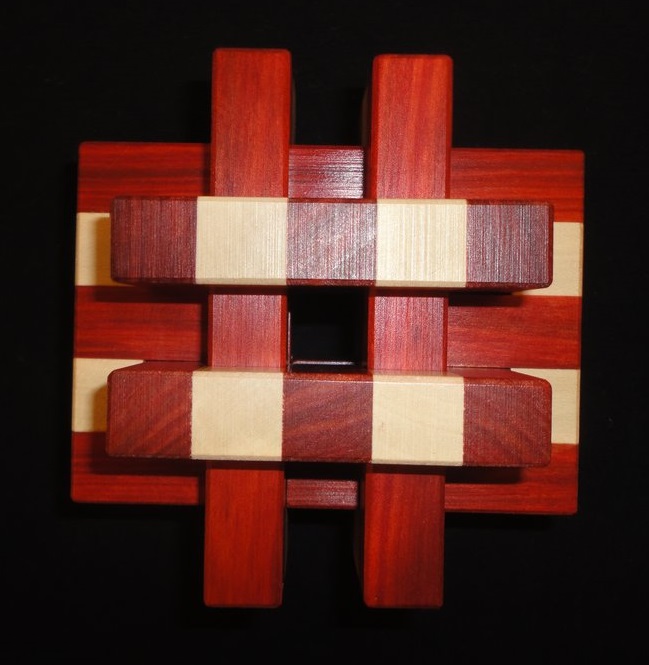
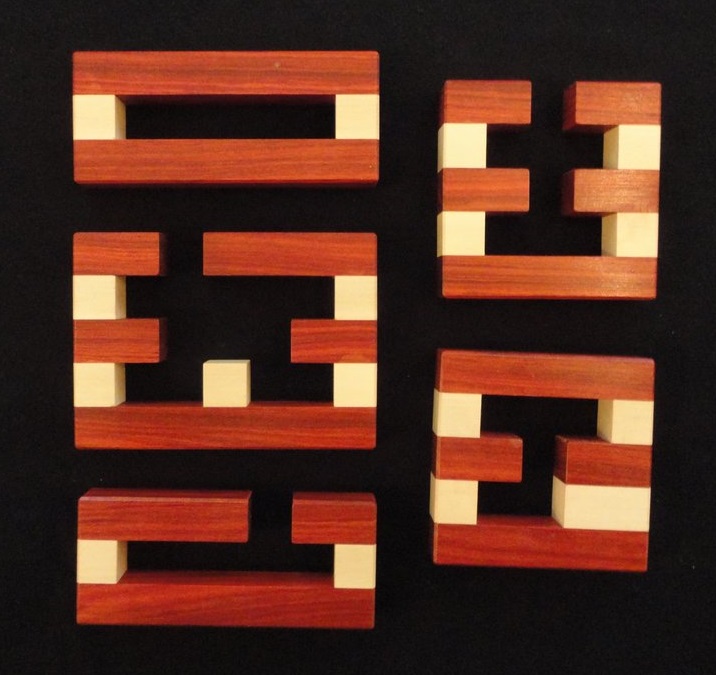
Bedevil designed by Yavuz Demirhan, made by Brian Menold from Redheart and Holly |
|
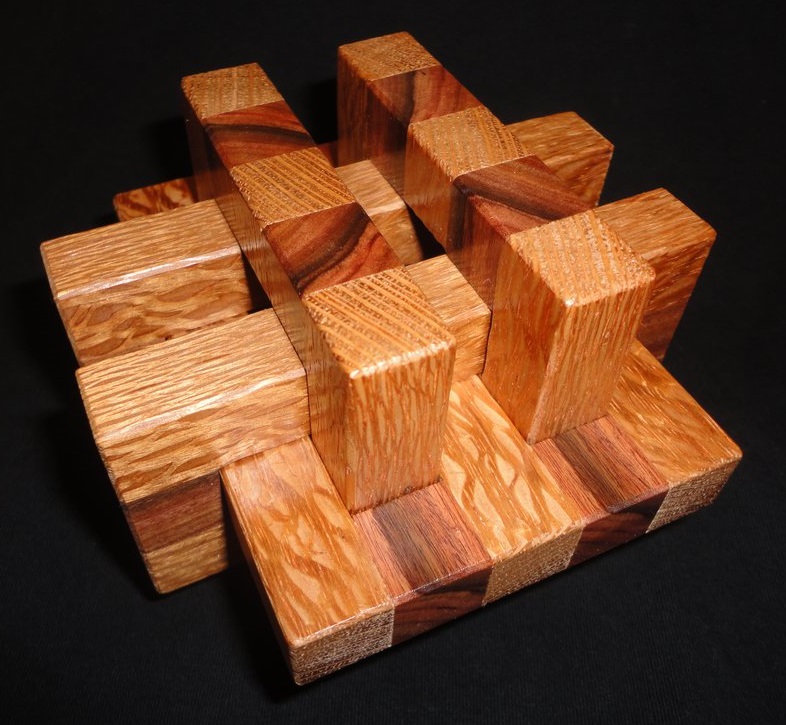
Delight - designed by Stephane Chomine and made by Brian Menold from Lacewood and Bolivian Rosewood. |

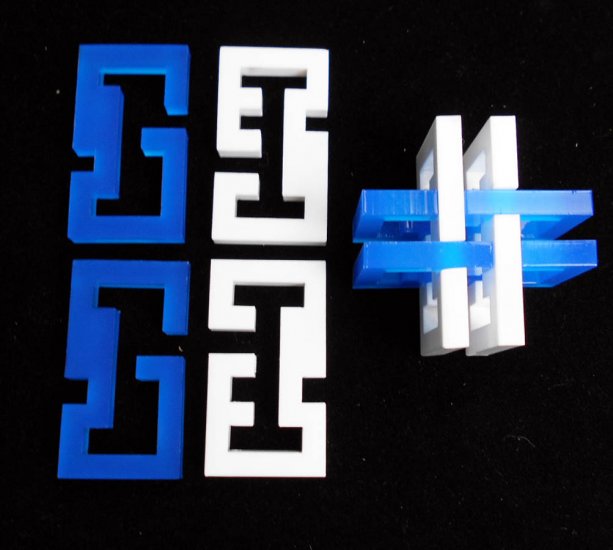
X Marks the Spot designed by Derek Bosch Sequentially interlace the four acrylic pieces and form the hash shape. Purchased from Creative Crafthouse. |
 George Miller made this version of Frans de Vreugd's "Extreme Torture" separated board burr. It takes 28 moves to free the first piece and then 21 more to free the second piece! Here is a link to the solution on George Miller's site. Here is an article at woodcentral.com by Steve Strickland about making 6-board burrs. |
|
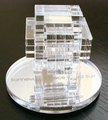 Sonneveld 9-piece Board Burr - made by George Miller. |
|
| Augmented Board Burrs | |
 This is Ozone designed by Ronald Kint-Bruynseels. It is a six-board burr, with a "hook" attached to each piece. It requires 13 moves to remove the first piece, then 11 for the second. Ronald has designed several unusual burr-type puzzles, and you can see many of them at Bernhard Schweitzer's Puzzlewood site. Richard Whiting has put together a nice page at his site where you can read about several other high-level burrs. |

This is Frans de Vreugd's design he used for his exchange at IPP25. Frans calls it a Plated Six-Piece Burr. Mr. Puzzle Australia called it Around the Bend. Frans says he developed it while working on Bent Board Burrs. It uses pieces 120, 154, 256, 412, 960, and 1024. Each has a 2x4 unit plate attached to its right end. It is the highest level burr of this type with notchable pieces. It is made from Queensland Silver Ash (the light wood) and Queensland Blackbean. |
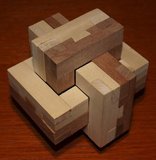
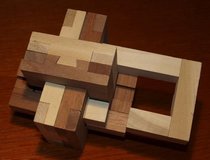
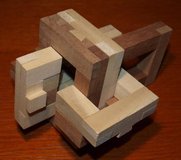
Dovetail Burr - designed by Frans de Vreugd Issued by Bits & Pieces A single solution, at level 6. Based on Yananose's 6-board burr. |
|
|
|
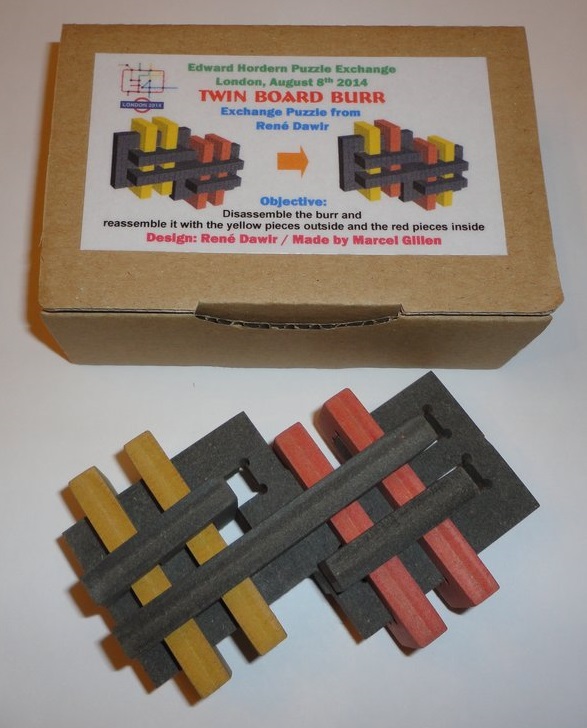
Twin Board Burr - Dawir |
Here is a link to a stop-motion video of several of Mr. Puzzle Australia's puzzles assembling themselves, on YouTube.
| These small but elegant burrs are made from a special plywood, from Pacific Puzzle Works. | ||
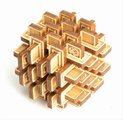
Knot Mass 36, designed by Oskar van Deventer. This instance is pretty small, at 36mm. It's made from a 5-ply maple core / maple-top hardwood laminate. |
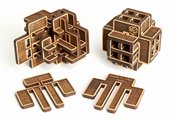
Tubular Burr Box (aka Space Invaders), designed by Ronald Kint-Bruynseels. This instance is pretty small, at 36mm. It's made from a 5-ply cherry / maple-top hardwood laminate. |

Oskar's Egg A 3-piece ball inside a 2-piece egg. How does it come apart? |
| These are members of the "Quad Squad" family of burrs with interchangeable pieces, from Viktor Genel... | ||
 Quadrocube - Viktor Genel |
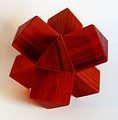 QuadroPrizm - Viktor Genel |
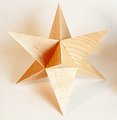 Long-Beamed Star - Viktor Genel |
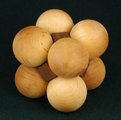
The Kuball, a 3-piece puzzle designed by Viktor Genel. Made by Tom Lensch. See the pieces at John Rausch's PuzzeWorld. |
||
| The burrs below are from a variety of sources... | ||
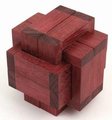
Easy Livin' designed by Ronald Kint-Bruynseels Purchased from Bernhard Schweitzer at NYPP 2008 This is notable because a copy sold for $11,111 in one of Nick Baxter's auctions! |
||
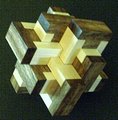 William Waite's Stellar Burr |
|
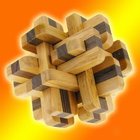
"Numero Caro" This is an Asian copy of Oskar van Deventer's Knot 12. |
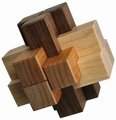 T Time - Davans |
 Maruca - Davans |
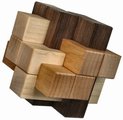 Zinato - Davans |
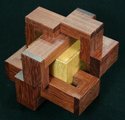
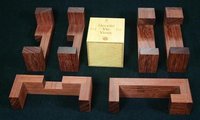
Die in Prison (with a central puzzle box), designed by Ronald Kint-Bruynseels and made by Eric Fuller. The six pieces are made of Bubinga, and the central cubic box is made of Yellowheart. |
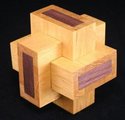
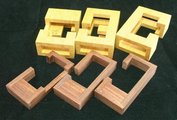
This is Luxemburr, designed by Matti Linkola, exchanged at IPP16 - made by Eric in Yellowheart and Walnut. |
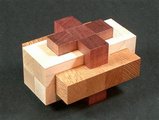
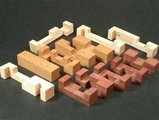 Lassen Risti - made by Eric Fuller |
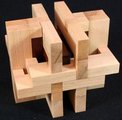
RD001 Designed by Ronald Kint-Bruynseels and made by Eric Fuller. Gum wood and Ipe. |
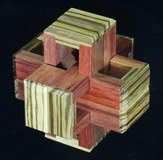
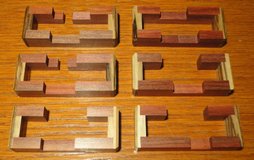
The Ribbon Puzzle, designed by Tom Jolly, made by Eric Fuller from Chakte Cok and Zebrawood - six pieces that form the 3-piece burr shape. |
|
|
|
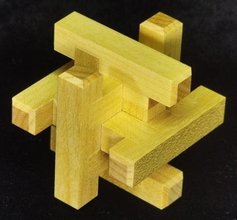
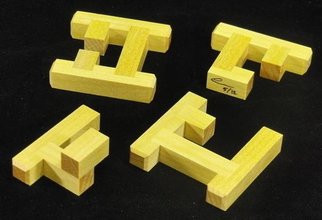
ISBR x 5 - designed by Mineyuki Uyematsu Made by Eric Fuller, from Yellowheart |
|
|
This is the Tornado Burr designed in 2007 by Junichi Yananose,
made by Eric Fuller from Padauk wood. Eric says, "This is one of the most difficult puzzles I've ever made. They are extremely time consuming to make, requiring many specialized jigs. I doubt I'll be making these again!" This burr, with its unusual and interesting movement, won an Honorable Mention award in the 2007 IPP Nob Yoshigahara Design Competition. Here is the Tornado Burr partially disassembled, into two halves: 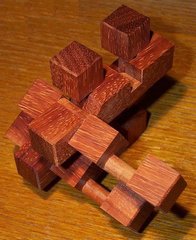
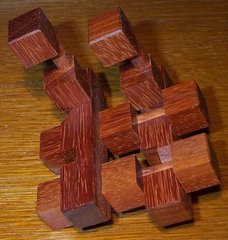
|
||
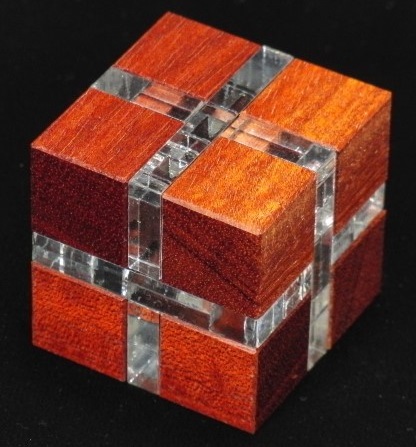
Band Cube - designed by William Hu, made by Eric Fuller, from Bloodwood and Acrylic. Although it looks like a caged burr, of its seven pieces, all three of the plate pieces are open, not rings. See Band Cube at Puzzle Will Be Played. |
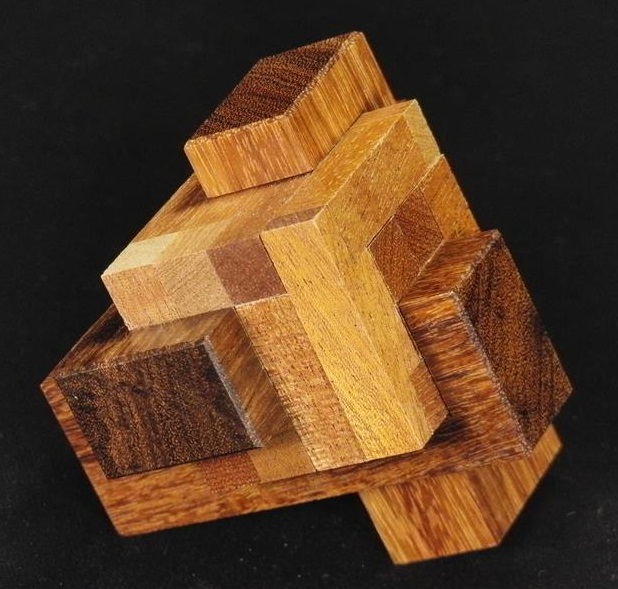
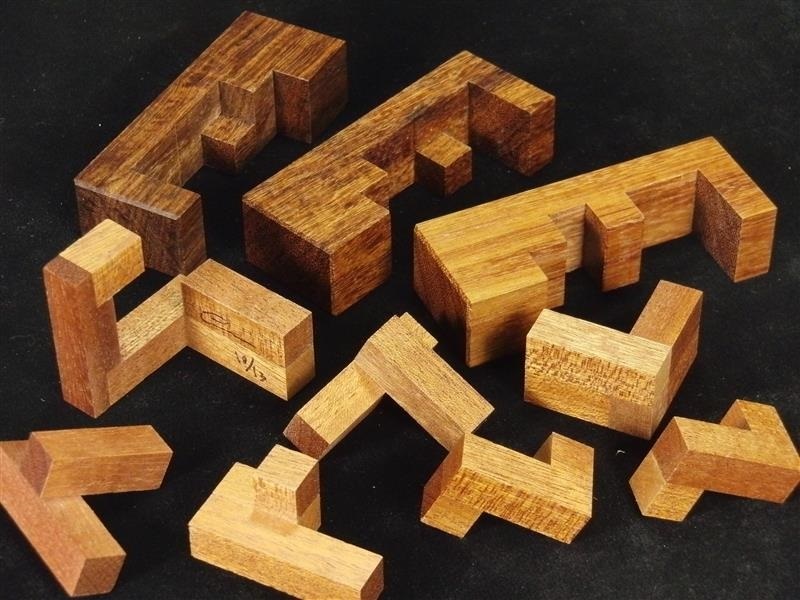
Claw 3 - designed by Alfons Eyckmans, made by Eric Fuller from Grandillo and Sapele |
|
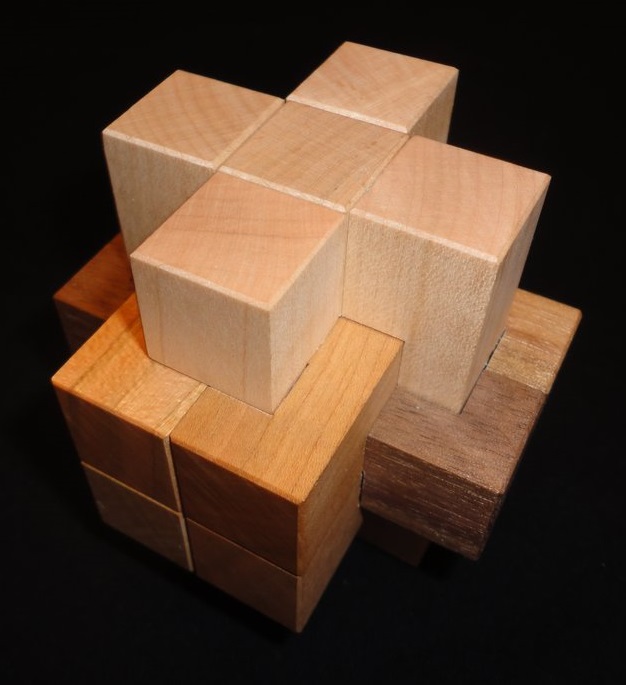
Sweet 16 Burr - designed by Jack Krijnen, made by Eric Fuller |
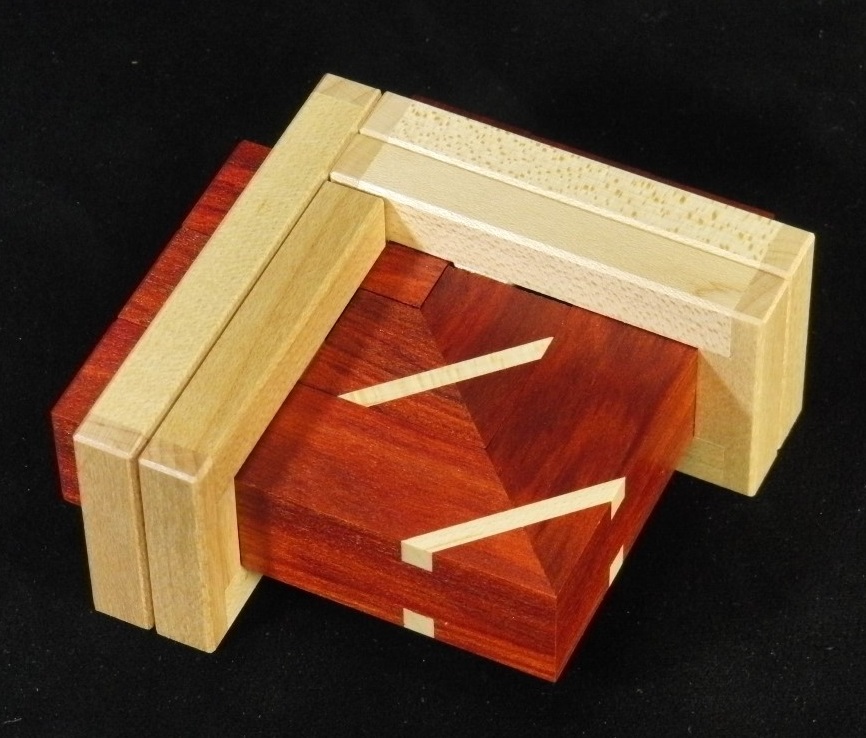
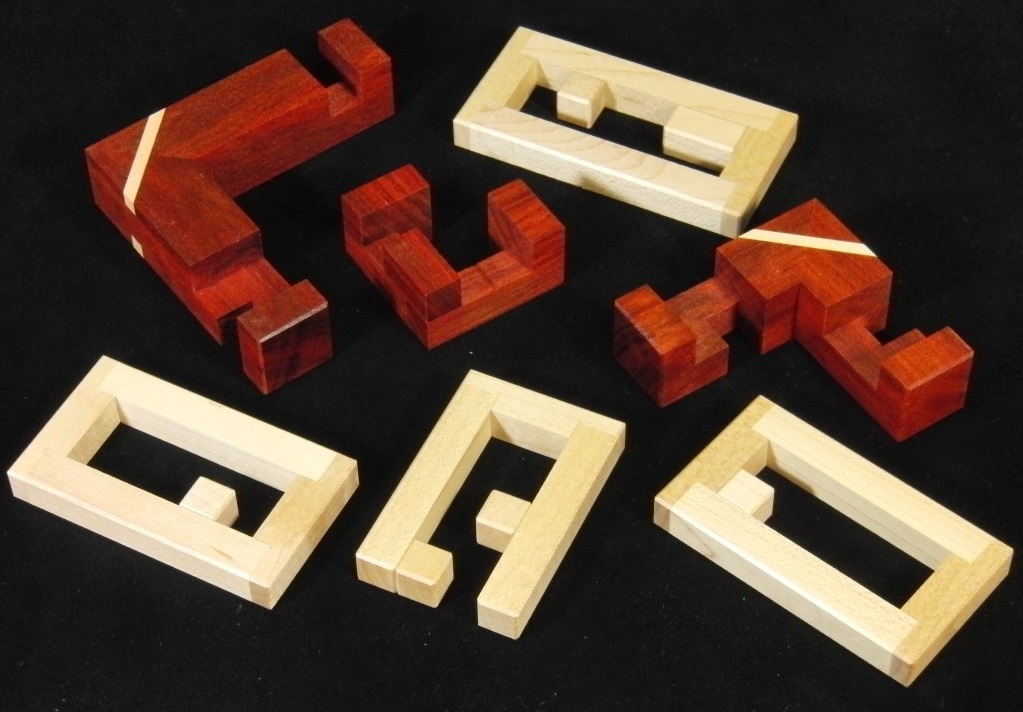
Rar - designed by Tamas Vanyo, made by Eric Fuller from Maple and Chakte-Kok woods. Level 9.15.1.6. |
|
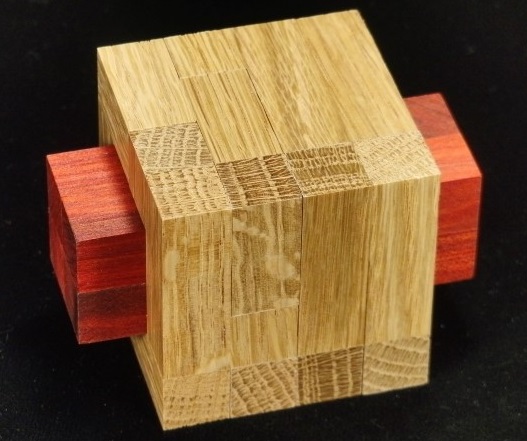
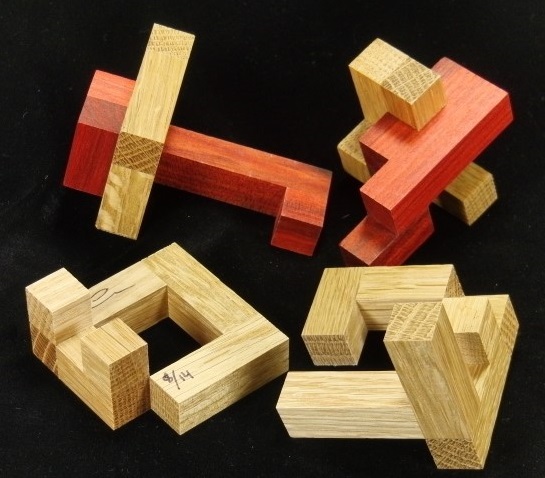
Accordion 3.5 - designed by William Hu, made by Eric Fuller, from Chakte Viga and White Oak. |
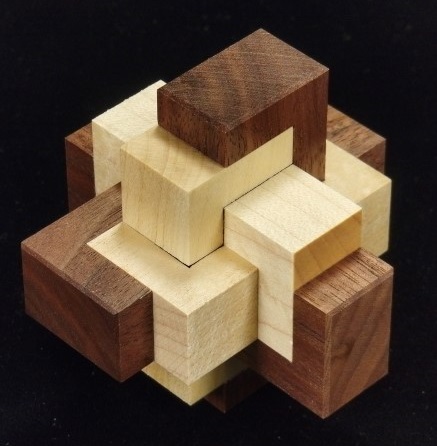
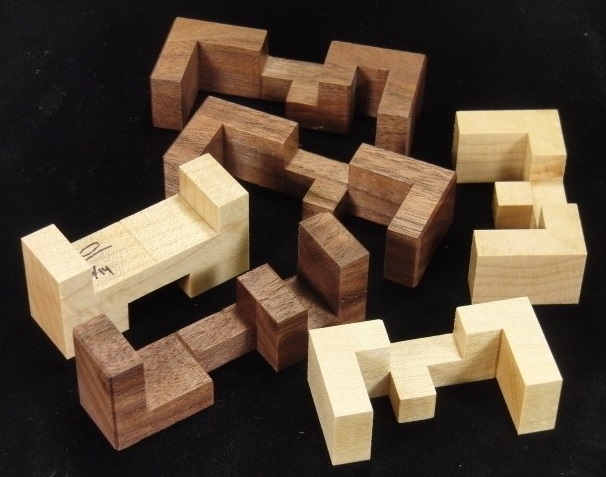
Amatores - designed by Alfons Eyckmans, made by Eric Fuller, from Maple and Walnut. |
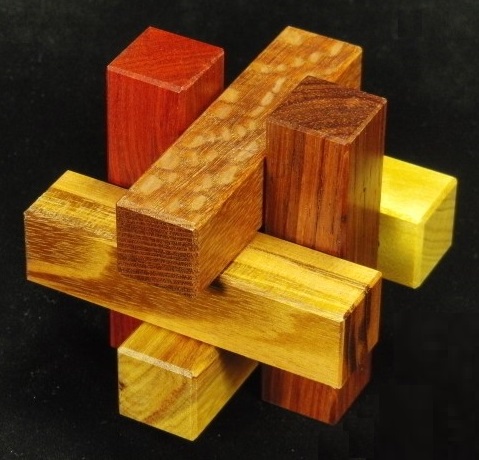
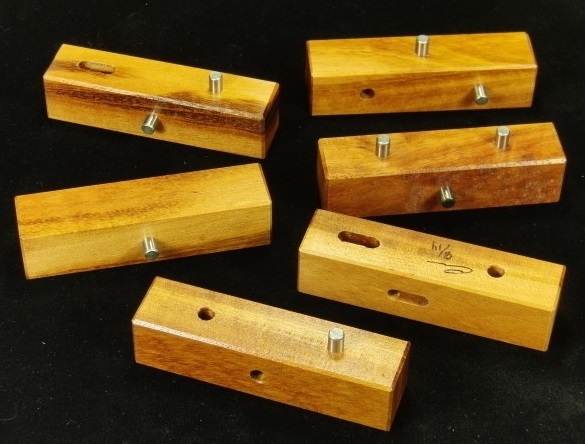
Six Stick Burr - designed by William Hu, made by Eric Fuller, from various woods. |
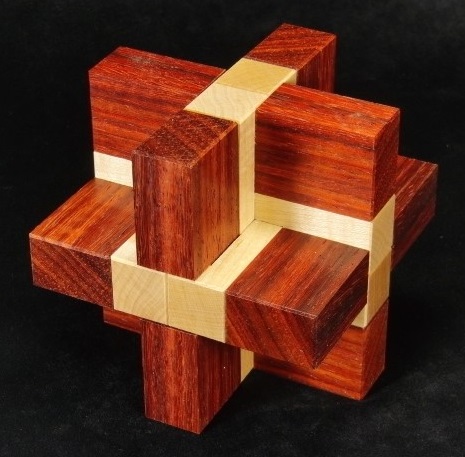
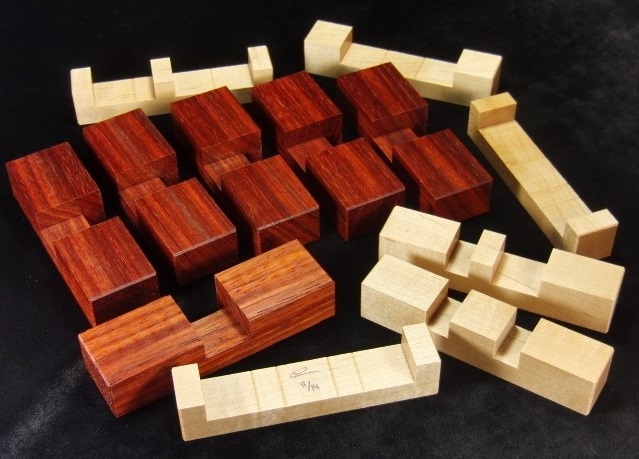
Boron designed by Donald Osselaer made by Eric Fuller |
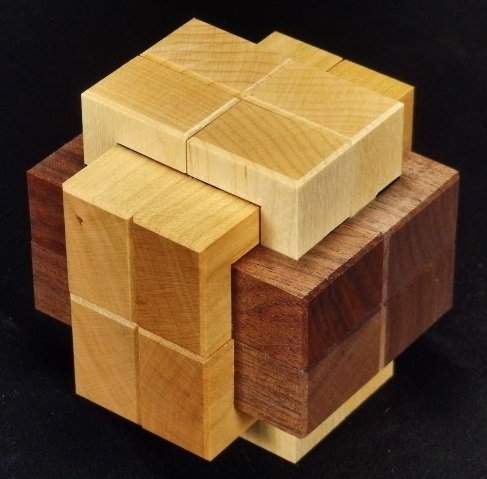
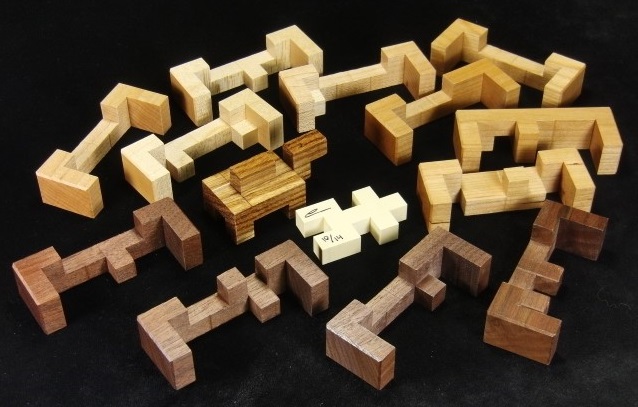
Gobi designed by Alfons Eyckmans made by Eric Fuller |
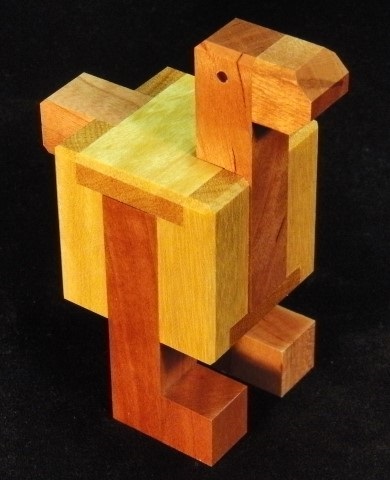
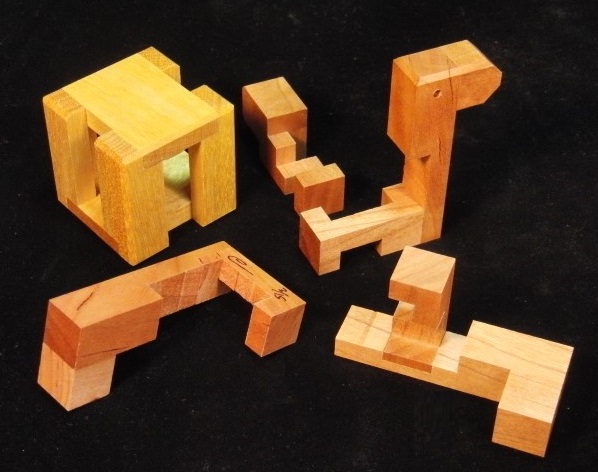
Chicken Puzzle designed by Olexandre Kapkan made by Eric Fuller from Yellowheart and Cherry |
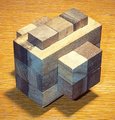
Double Knuckles |
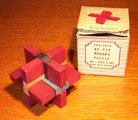 P24 Marian's Puzzle - Drueke You can see a solution at Richard Whiting's site. |
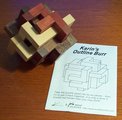 Karin's Outline Burr |
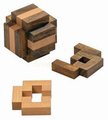 Sliced Burr - Philos |
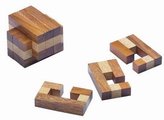
Vesa Burr Simple - Philos - designed by Vesa Timonen for IPP21. A gift from Bernhard - thanks! |
I found
Linking Squares from
Philos
at
The Games People Play.
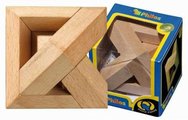
Linking Squares consists of 12 pieces with embedded magnets, that must be constructed into an octahedral shape composed of three interlinked rectangles. It was designed by J. Verhoeff. |
I found
Sheffield Steel 6BB from
Philos
at
The Games People Play.
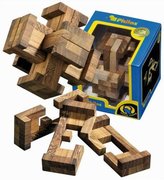
Sheffield Steel 6BB was designed by the prolific Ronald Kint-Bruynseels - it is a six-piece burr at level 17.14.5.2.3 (see the pieces at Ishino's site; Richard Whiting describes the puzzle on his site, and gives a solution). |
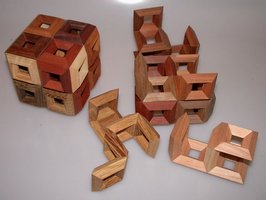
The Open Cube, designed by Marc van Kreveld and Theo Geerinck, produced by PuzzleWood |
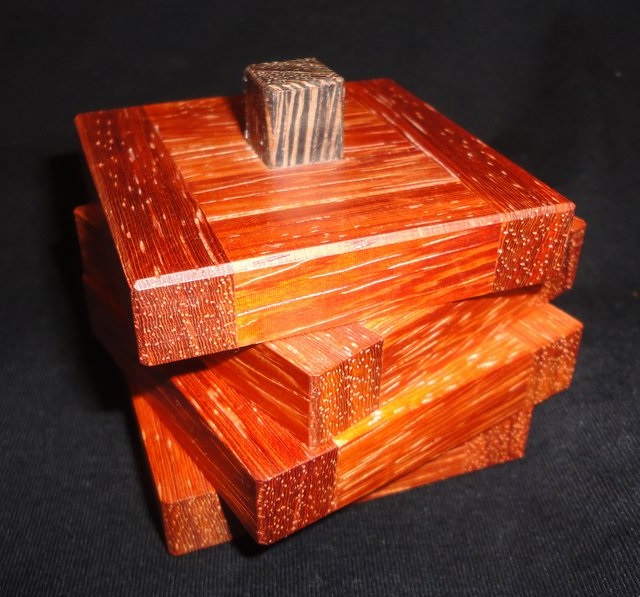
Apple - designed by Osanori Yamamoto, made by Pelikan. A PuzzleMaster exclusive. |
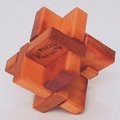 The Blitz - Mr. Puzzle Australia Seems similar to the Saturn shown at Philippe Cichon's site. |
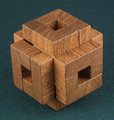 Here is Sonneveld's Illegal Burr - Tom Lensch made it. It's "illegal" because a rotational move is required. |
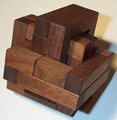 The Twisty Burr, designed by Derek Bosch and made by Tom Lensch. Purchased from Tom at NYPP 2008. |
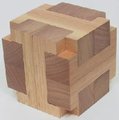 The Boston Tea Chest, from Mr. Puzzle Australia. I have one of their Craftsman Range examples in Australian Flooded Gum wood. Six pieces, with a two-step internal locking mechanism. A traditional burr-solving computer program won't help you with this one. |
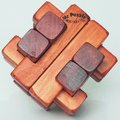
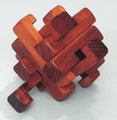 Decemburr - Mr. Puzzle Australia A 12-piece, level 13 burr designed by Goh Pit Khiam in December 1999 without the use of a computer. |
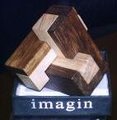 This puzzle from Imagin is a knock-off of von Kaenel's Coated Burr idea. You can see a solution on Richard Whiting's site. |
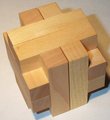
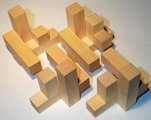
TriRods by Serhiy Grabarchuk - from Bernhard Schweitzer |
|
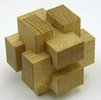 Yananose 2x3 Type 0 |
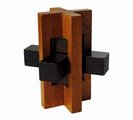

Double Cross - B&P |
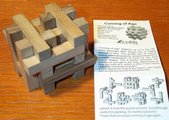
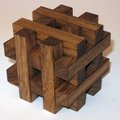
Coming of Age - designed and made by Vaclav Obsivac Presented at IPP27 by Laurie Brokenshire Six pieces made from every possible combination of 3 (out of 18) 1x1x5 Walnut bars, plus 8 1x1x1 blocks. The right-hand picture shows the puzzle properly assembled. |
|
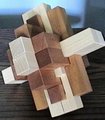 QED - Pentangle |
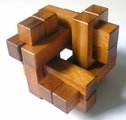
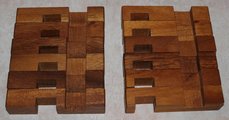
This inexpensive Samanea (Monkeypod / Raintree) wood 12-piece burr was sold as the "Mercury Star" but it is a shrunken copy of Akio Kamei's Box and Cage design, without the box. |
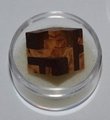
The Desert Rose micro-burr, designed by William Waite and made by Allan Boardman, who is well-known for crafting microscopic puzzles. It's only 1/2 inch across! Made from walnut and masur birch. Purchased from William at IPP 29 in SF. |
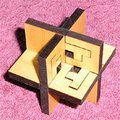
Flange 99A, designed by Tom Jolly. Purchased at IPP 29 in SF. Laser-cut. Six pieces, only two identical. 8 moves for the first piece. |
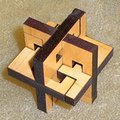
Flange 77A, designed by Tom Jolly. Purchased at IPP 29 in SF. Laser-cut. Six pieces, all identical. 4 moves for the first piece. |
|
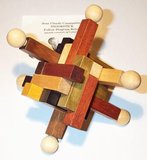
Snookstick (aka Starburst) designed by Jean Claude Constantin issued by Bits & Pieces, as Starburst |
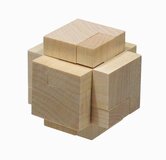
In CFF #84 March 2011, Vesa Timonen published an article "A Travelogue to My Puzzle Designs" where he describes the genesis of several designs including the 1998 6-piece Timonen's Burr. |
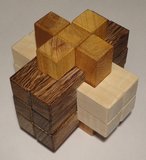
456 Burr Almost identical to the Arjeu 456 Burr (I don't have this - sold at NYPP2012.) |
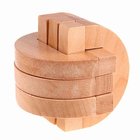
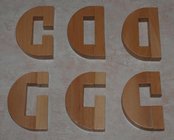
Heart to Heart This is similar, but not identical, to Timonen's Vesa Burr. |
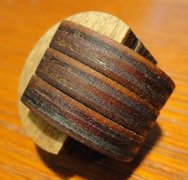
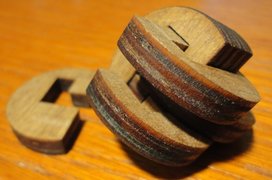
A six-piece "knot" laser-cut by Steve Kelsey. Thanks, Steve! |
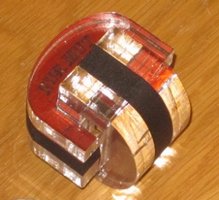
Nur Mut from Wil Strijbos (Pic from G.S.) |
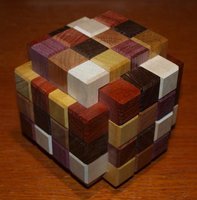
36 Piece Burr - designed by Jacques Frossard, made by Maurice Vigouroux This has only eight holes inside. It has one solid key piece, but without using piece coloring constraints, even BurrTools cannot solve it! |
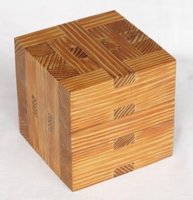
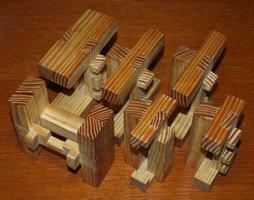
Burr Cube by unknown designer - made by Maurice Vigouroux from Caroline (Loblolly) Pine |
|
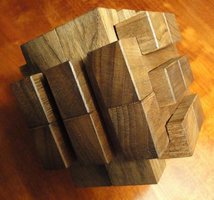
Phelan, designed by Alfons Eyckmans. A non-traditional 18-piece burr, made by Maurice Vigouroux, from Walnut. Purchased from the French online puzzle shop Arteludes.com run by Jean-Baptiste Jacquin and Maurice Vigouroux. Ishino shows the pieces, and indicates Phelan is level 17.1.16.8. 5.16.2.8... |
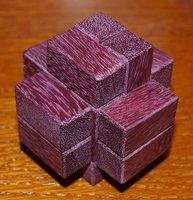
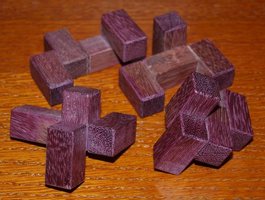
Vinco 4 Piece Burr made by Brian Menold |
|
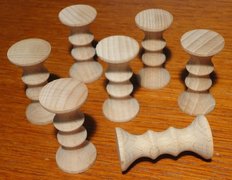
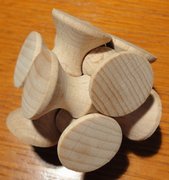
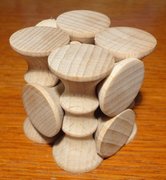
Hyperboloid Burr, designed by Oskar van Deventer and Naoaki Takashima, made by Kanagawa Toy Co. Ltd., exchanged by Naoaki Takashima at IPP32 |

John Rausch calls this one the 12 piece Twist Burr, and lists the designer as unknown. My copy is a cheap one from Asia. |
|
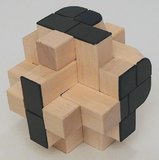 IPP Burr - Mr. Puzzle Australia
IPP Burr - Mr. Puzzle Australia
|
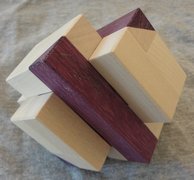 Triade, designed and exchanged by Andreas Röver, made by New Pelikan Workshop |
 Brandenburg Gate designed by Jos Bergmans requires rotations produced by Puzzlewood.de |
 Dragon Puzzle with Washington Monument, designed, made, and exchanged by Zandraa Tumen-Ulzii at IPP32 |
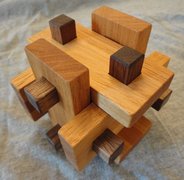
Knobbly Box, designed by Oskar van Deventer, made by Tom Lensch, exchanged at IPP32 by Rob Jones |

Lancelot - designed by Stephane Chomine, made by Pelikan, purchased from PuzzleMaster |
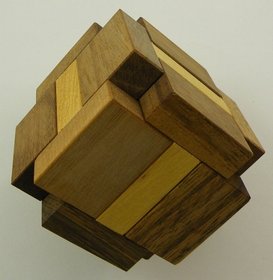
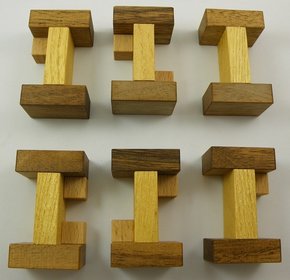
SIXI Cube by Vinco. Assemble the six unique pieces. A nice sequential interlocking puzzle. |
||
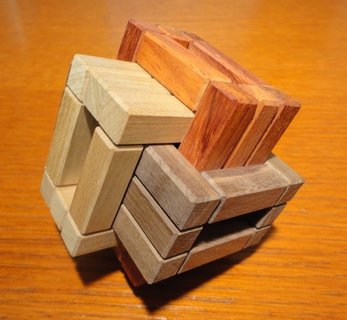
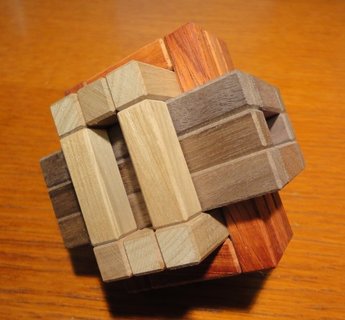
CEI Burr - designed by Gregory Benedetti 12 unusual pieces. Disassembly appears easy at first, but beware! From Bernhard Schweitzer at Puzzlewood.de. Thanks, Bernhard! |
||
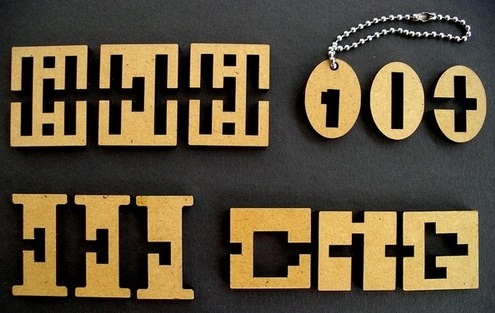
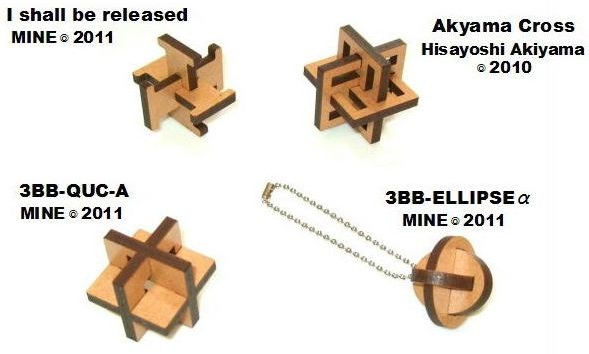
3-Board-Burr Quartet - designed by Mineyuki Uematsu Purchased from eBay seller Cu-Japan |
||
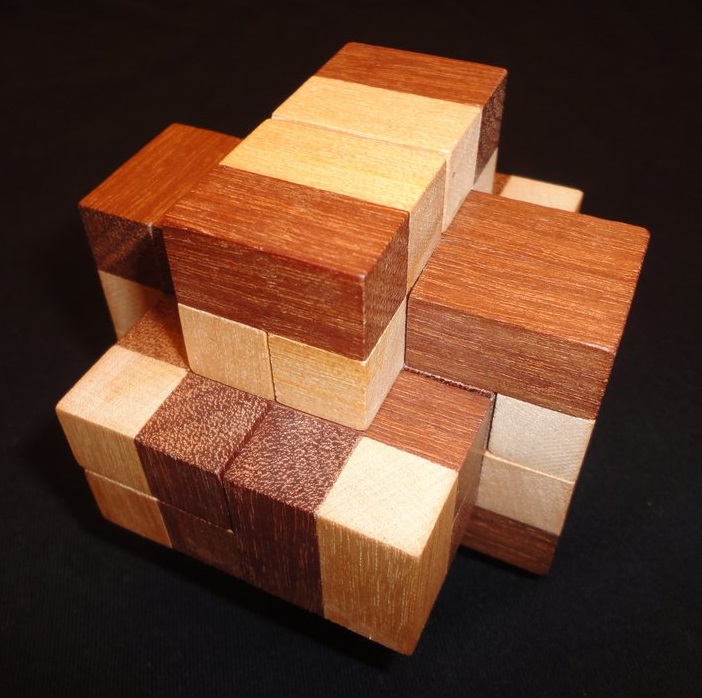
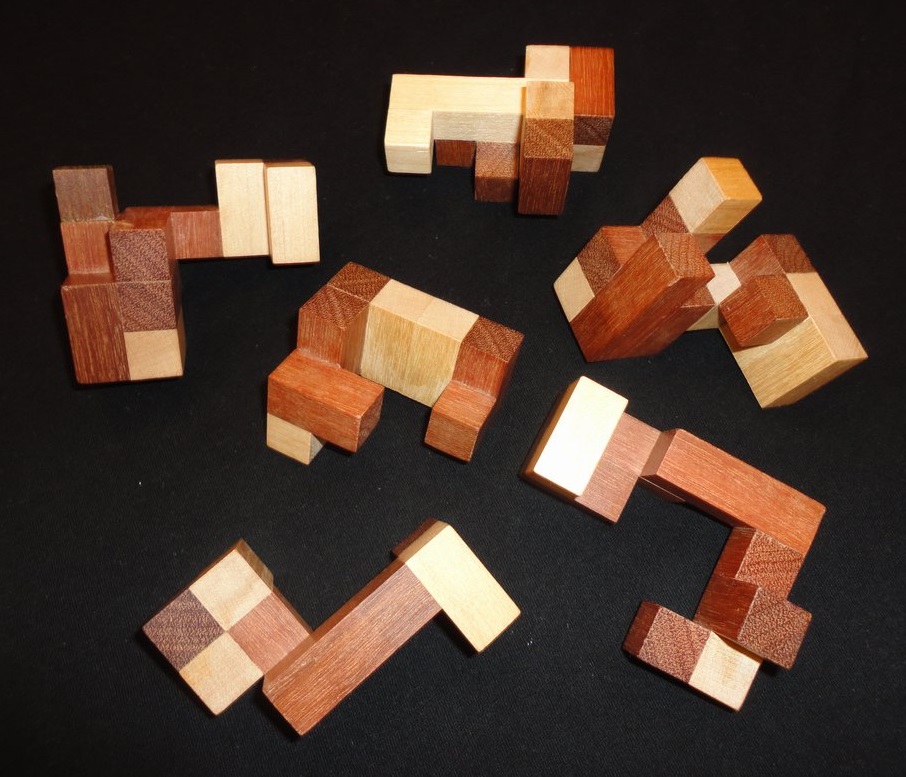
The By George Burr - designed by George Syriaque in 2011, and entered in the 2012 IPP Design Competition. Its six unusual pieces serially interlock. George kindly sent me a prototype made by Brian Menold - thanks, George! |
||
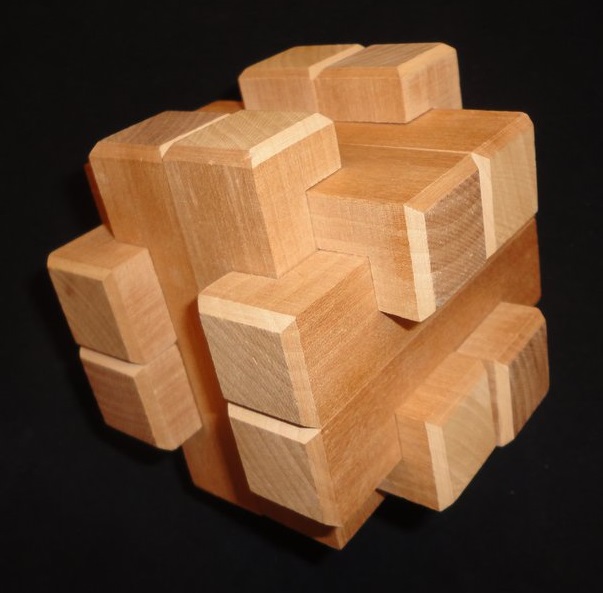
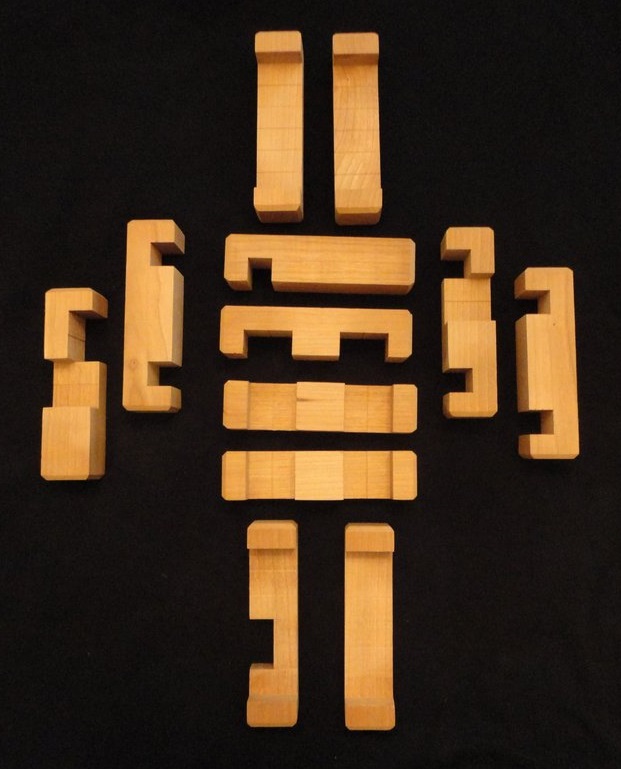
Colin Gaughran's 12-piece Burr I had the opportunity to visit Colin's workshop in Lyme and we had a fun discussion about puzzles and puzzle-making. I saw several works in progress destined for various collectors. Colin was kind enough to give me this 12-piece burr he designed and made from cherry wood. Thanks, Colin! |
||
|
While taking inventory in one of my storage cabinets I re-discovered a puzzle I didn't recognize, disassembled in a bag.
I posted a photo of one of the 12 identical pieces to some online forums and asked for help identifying the puzzle. 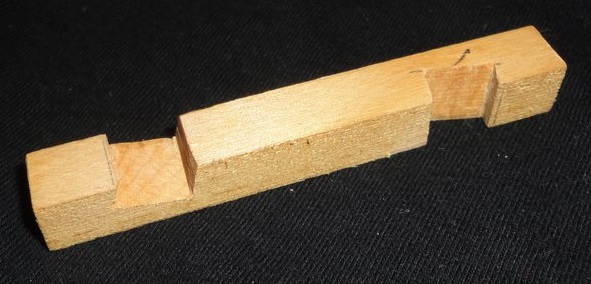
Several puzzle-friends responded (thanks!), and John Devost came through, suggesting the Cubion designed by Philippe Dubois. (Also sometimes spelled Coubion.) Cubion at John Rausch's site, Coubion in Jerry Slocum's collection, Cubion in Tamura's collection, Cubion in 1999 Baxter auction where lot d7 sold for $93, Cubion in 2007 Baxter auction where lot 771 sold for $525, Cubion in 2011 Baxter auction where lot 2242 sold for $325. The Coubion is shown in Slocum's 1994 The Book of Ingenious and Diabolical Puzzles on page 75. Based on the references and images we found online I was able to reconstruct my copy. 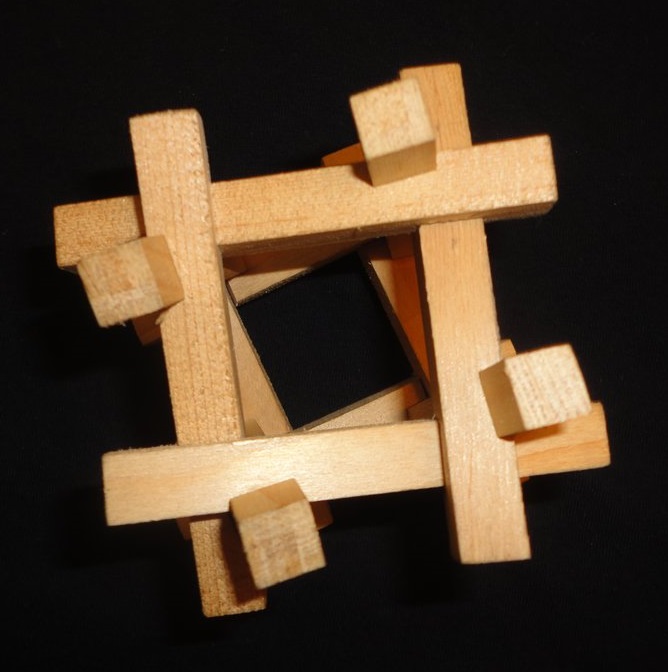
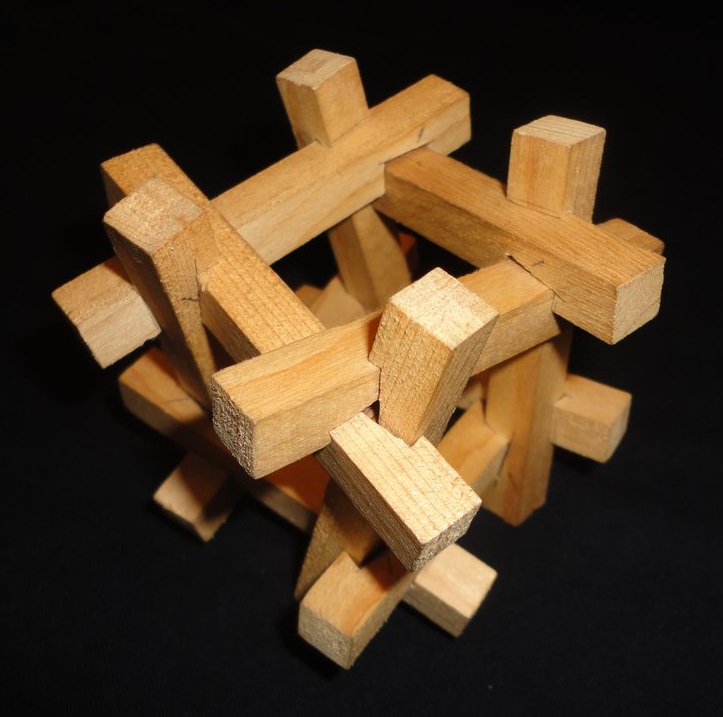
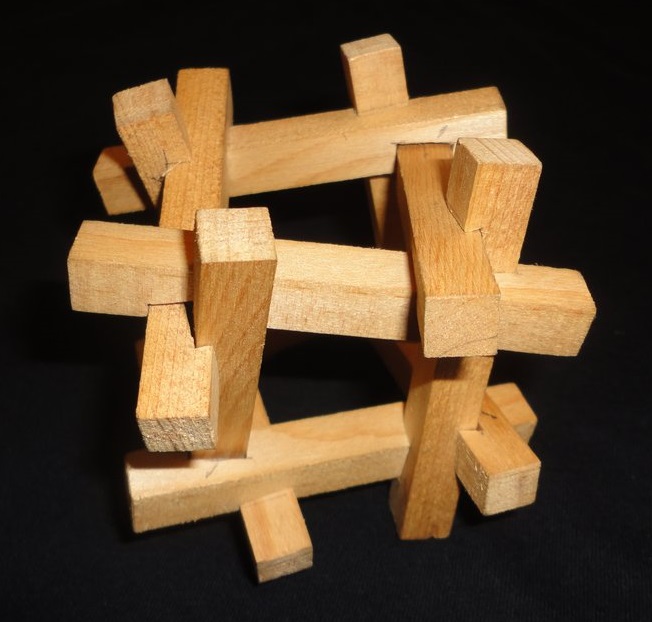
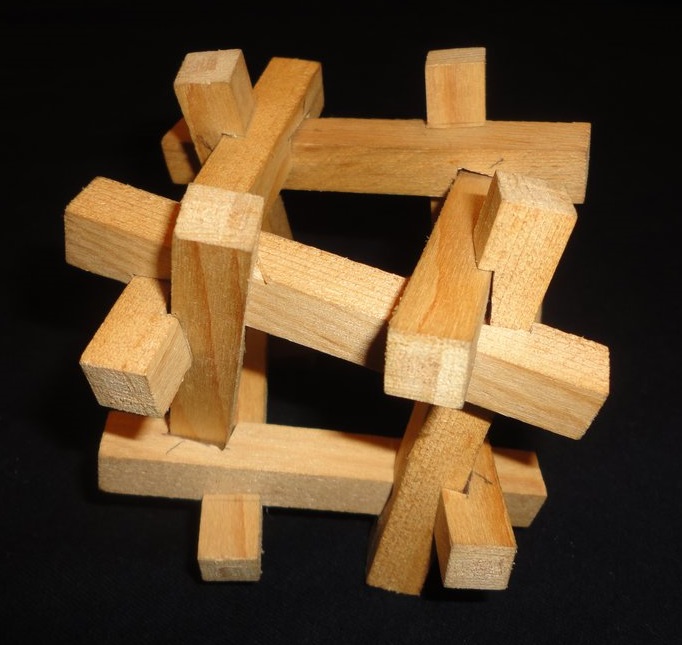
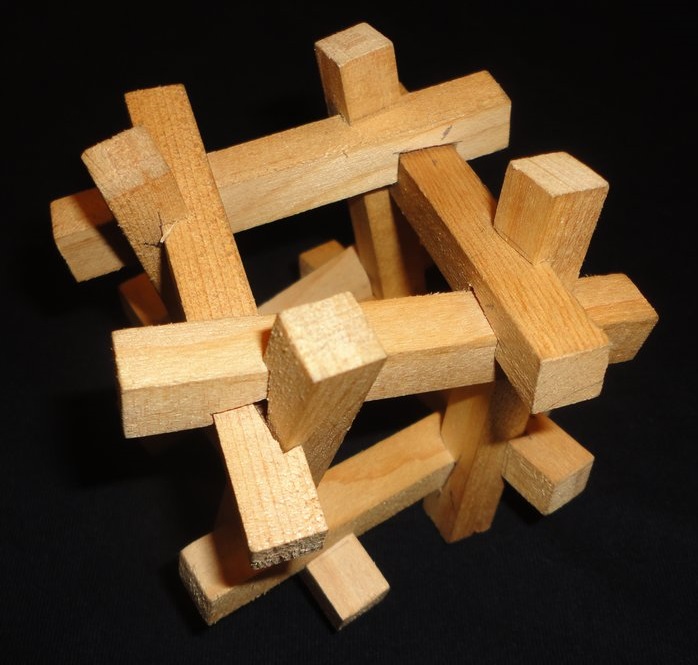
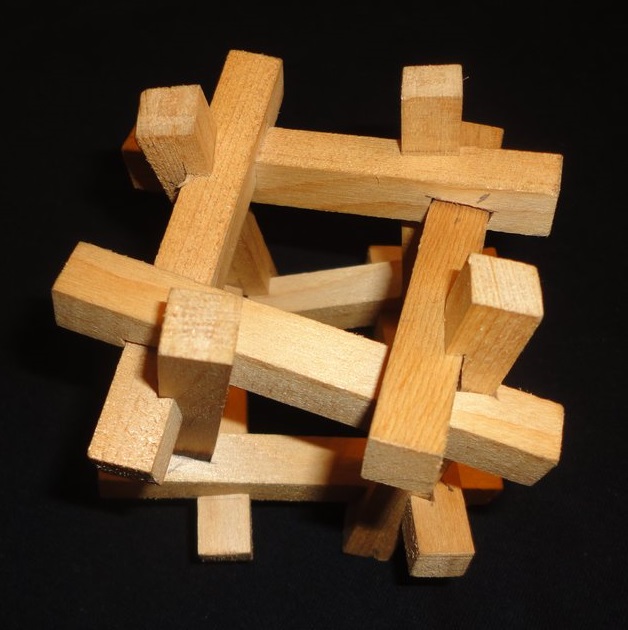
Cubion designed by Philippe Dubois, unknown provenance It fits together albeit with lots of slop. The relatively soft wood makes it easier to "squish" the pieces into place. The notches are not precisely cut and the resulting fit is imperfect but I cannot fathom any other better configuration of these pieces with their peculiar cuts. I do not know who made it - it was part of a group of wooden puzzles of unkown provenance in an auction lot I won back in December 2007. Crudely made but I give the maker props for even attempting it since the necessary angles seem so obscure! I wonder how many Cubions are out there? Had I reviewed my old What's New pages in the first place, I would have found this photo I posted back in December 2007 of the assembled form...  But I still wouldn't have known the name of the puzzle.
But I still wouldn't have known the name of the puzzle.
|
||
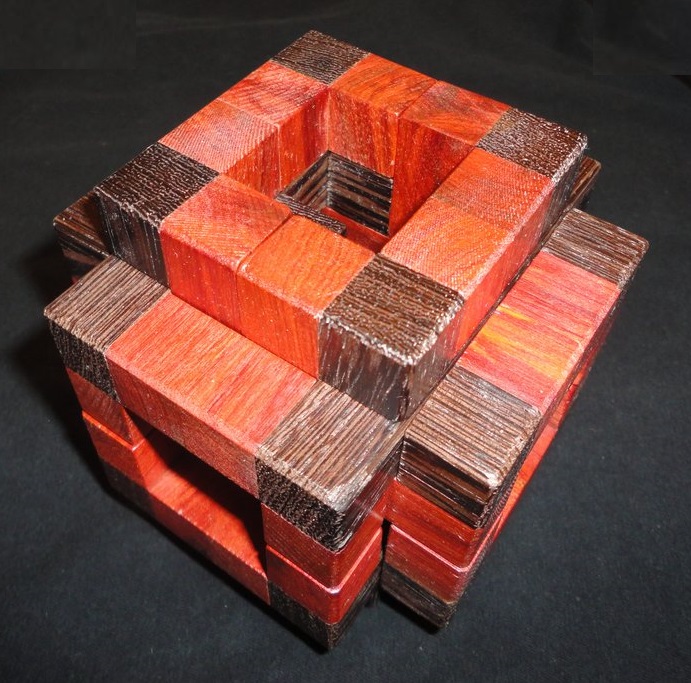
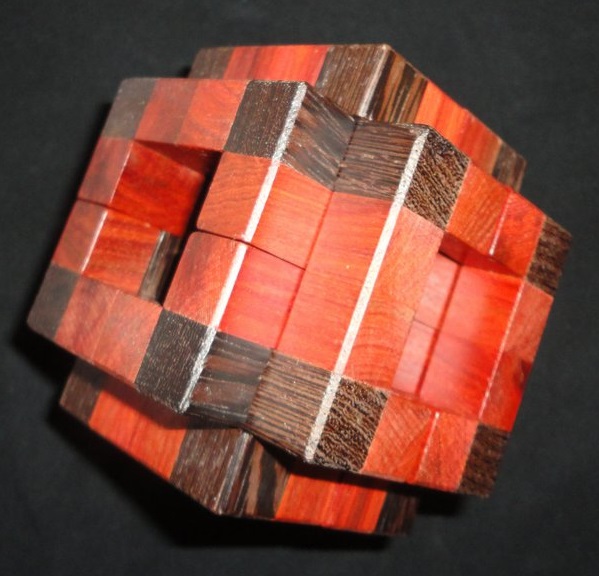
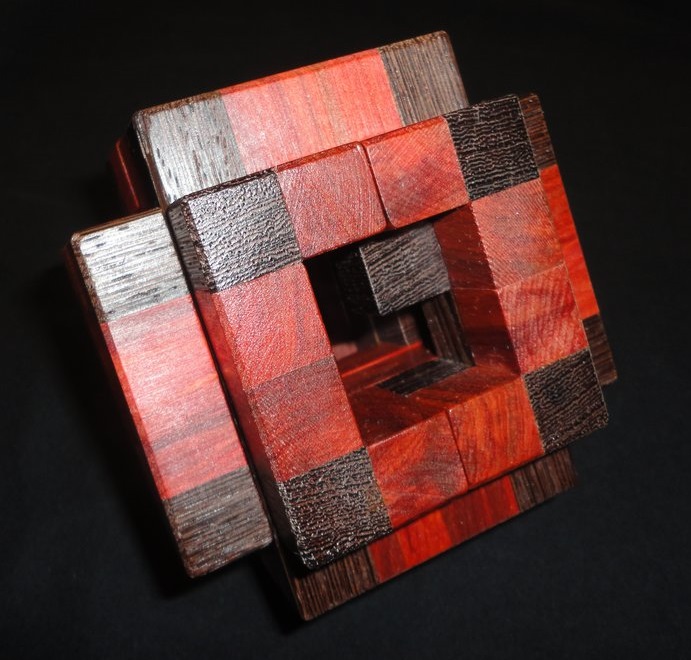
Brackets Burr designed by Stéphane Chomine. Six pieces, made by Brian Menold from Redheart and Wenge. |
||
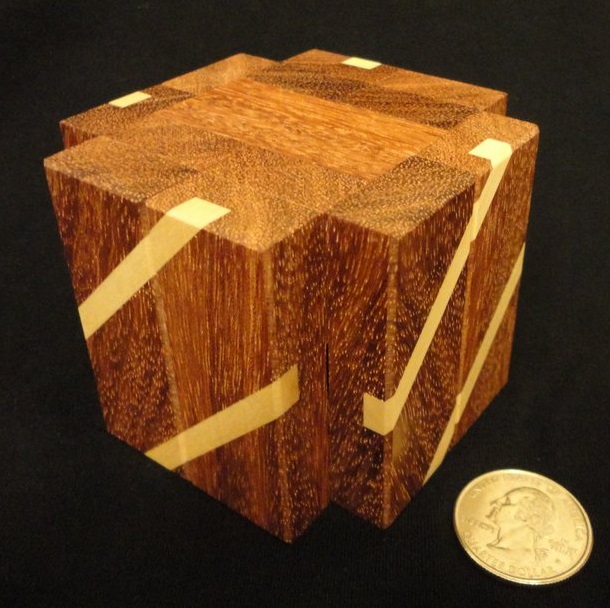
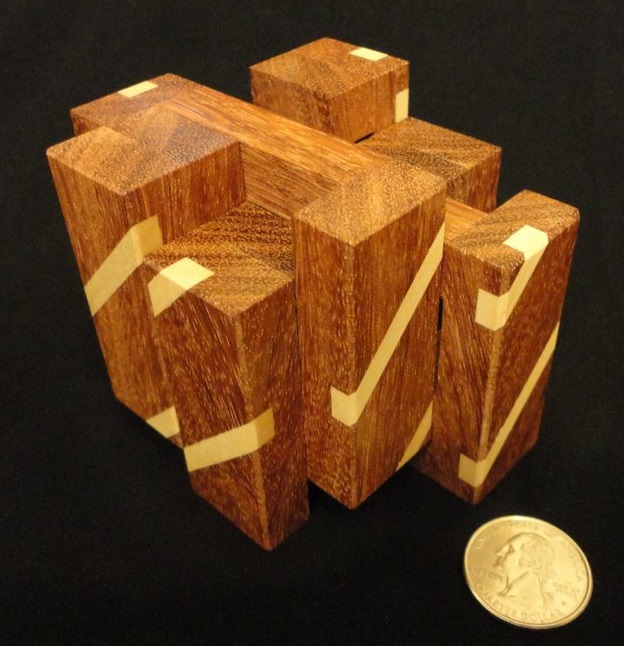
This is the Vauban H5 designed by Stéphane Chomine and precisely made by Pelikan Puzzles from Bubinga and Maple. Four pieces. |
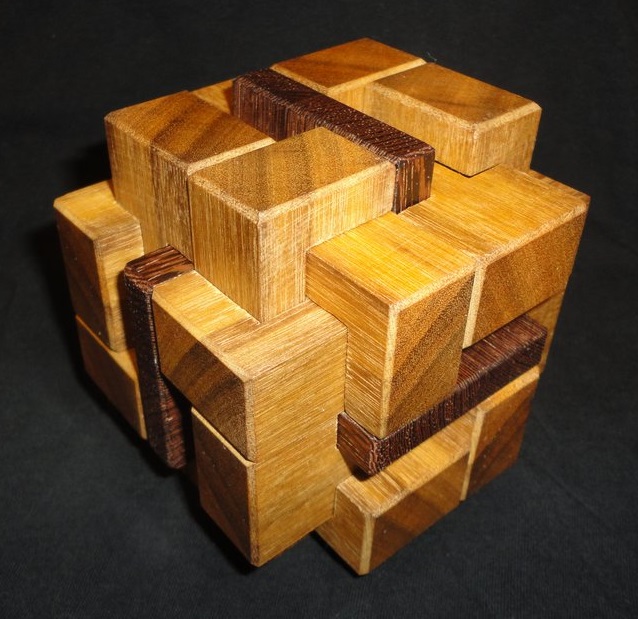
Smart burr designed and made by Alfons Eyckmans from Itauba and Wenge woods 15 pieces, level 24.7.1.1. 4.1.2.3.1. 4.5.4.2 I like it because of its 'S' theme! |
|
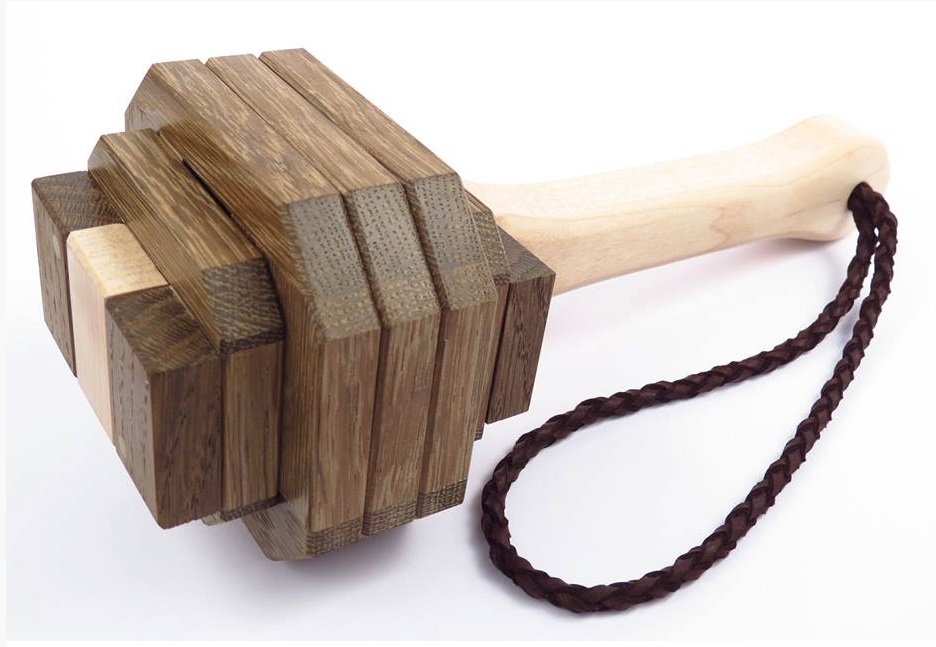
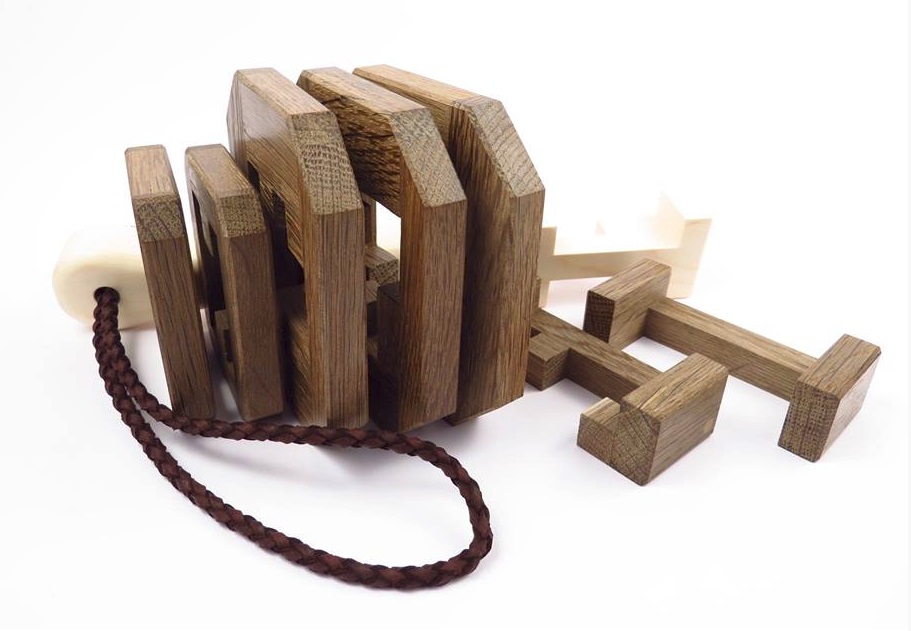
Thor's Hammer designed by Stephen Baumegger, purchased from and made by Pelikan, from Maple and Oak. |
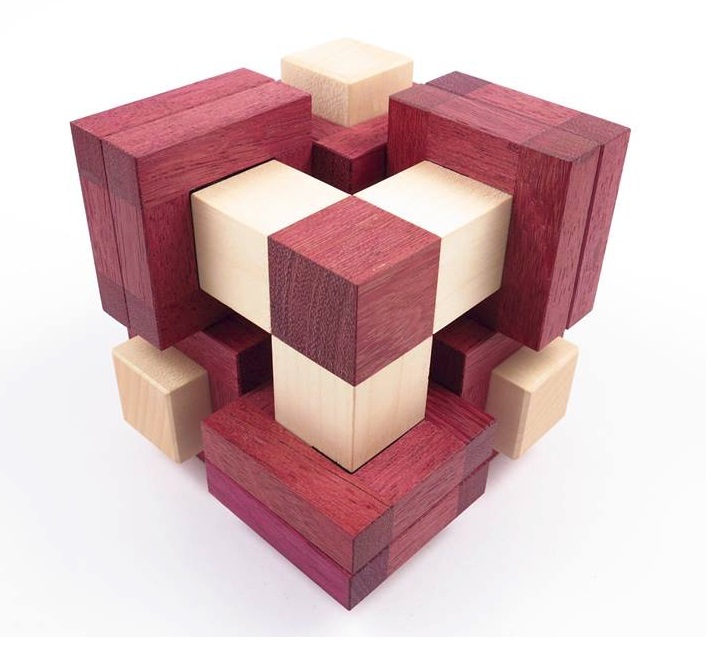
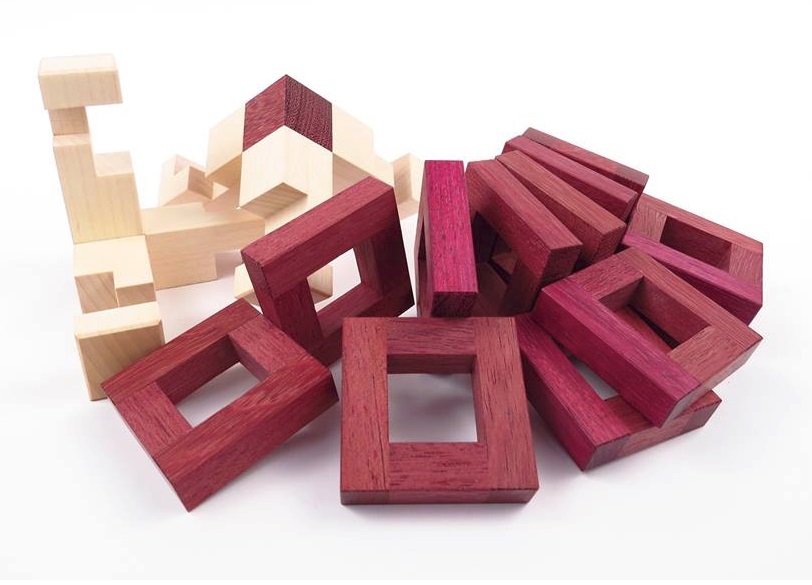
Covalent designed by Tamás Vanyó, purchased from and made by Pelikan, from Maple and Purpleheart. |
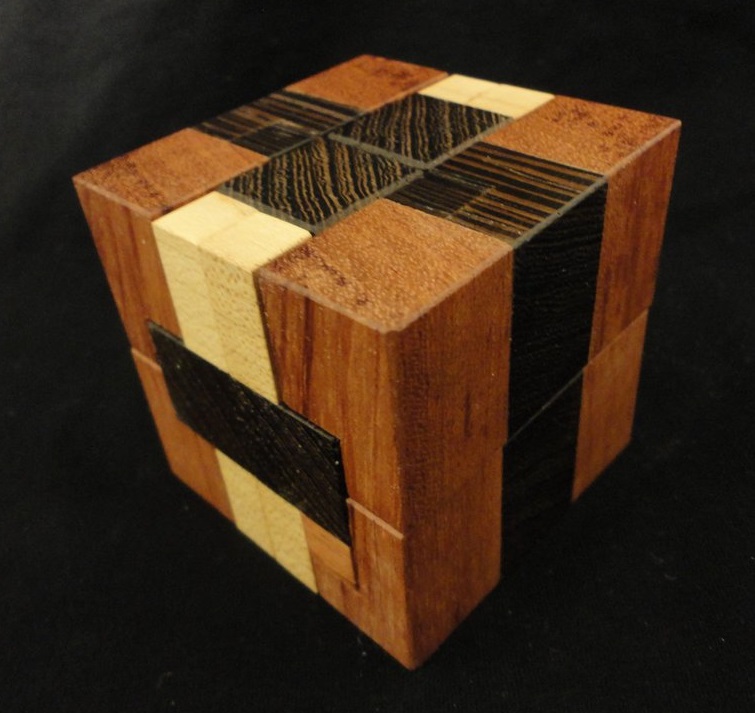
Block - designed, made by, and purchased from Stephan Baumegger of Austria. Made from Wenge, Bubinga, and Maple. Level 7.2.2.2 See more of Stephan's designs at his Facebook page Puzzleisure. |
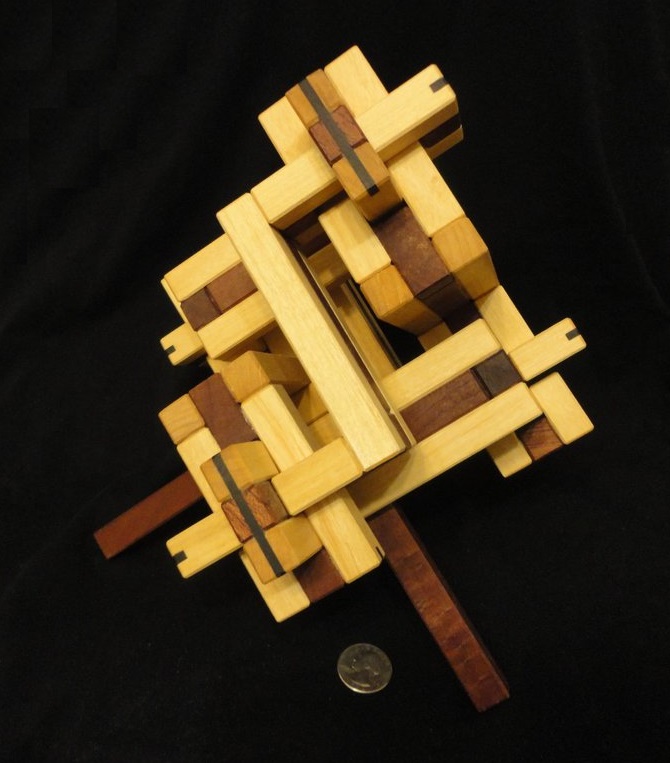
Really Bent Board Burr - designed by Derek Bosch, made by and purchased from Johan Heyns of South Africa. Made from Pau Marfim (light) and Mansonia woods with black Ebony feathers. Johan supplies a lovely stand as well. You can contact Johan on Facebook with your requests. |
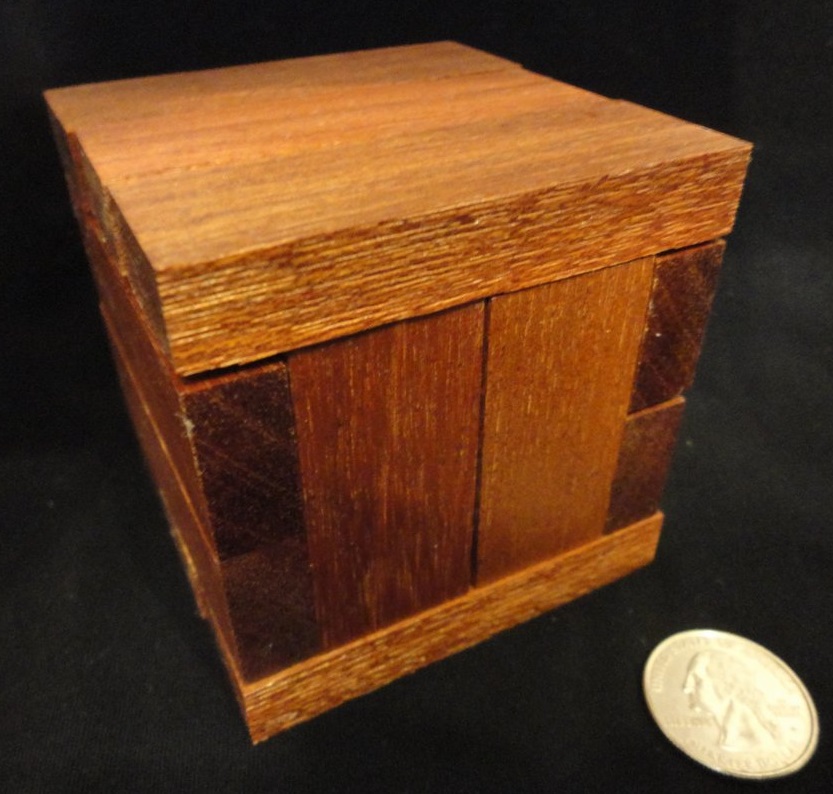
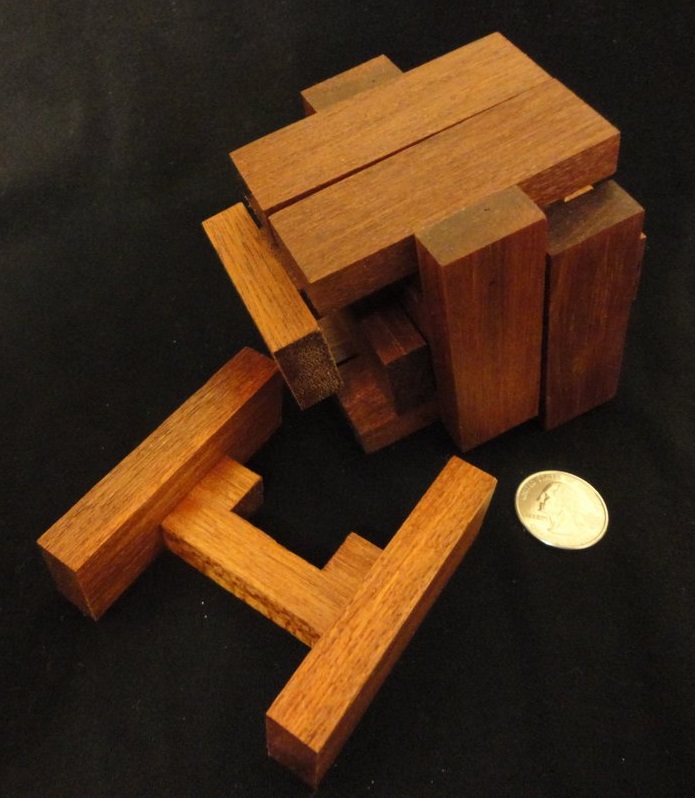
Cubic Burr - designed by Tom Jolly made from Red Meranti and exchanged at IPP35 by Tim Udall |
|
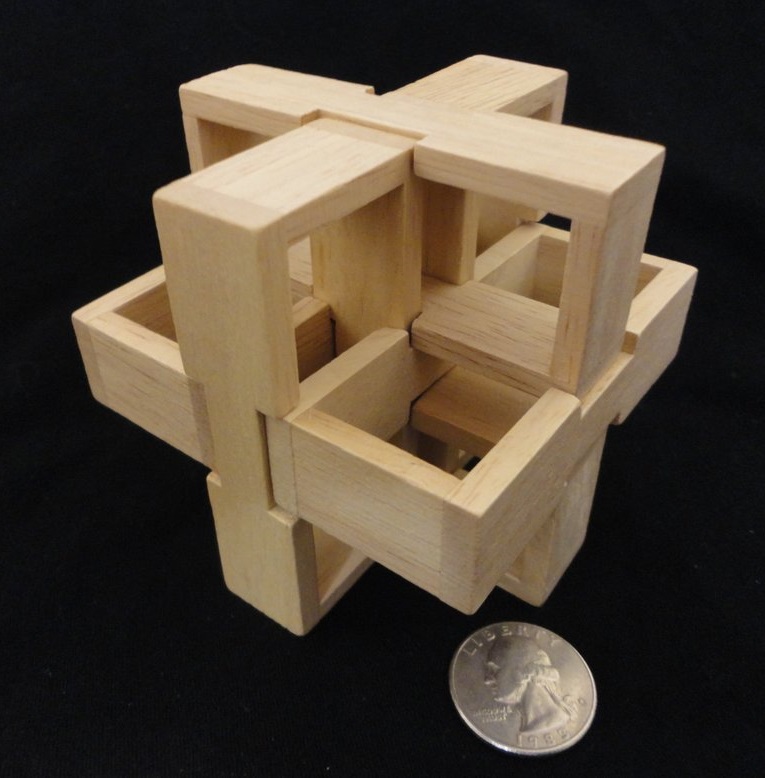
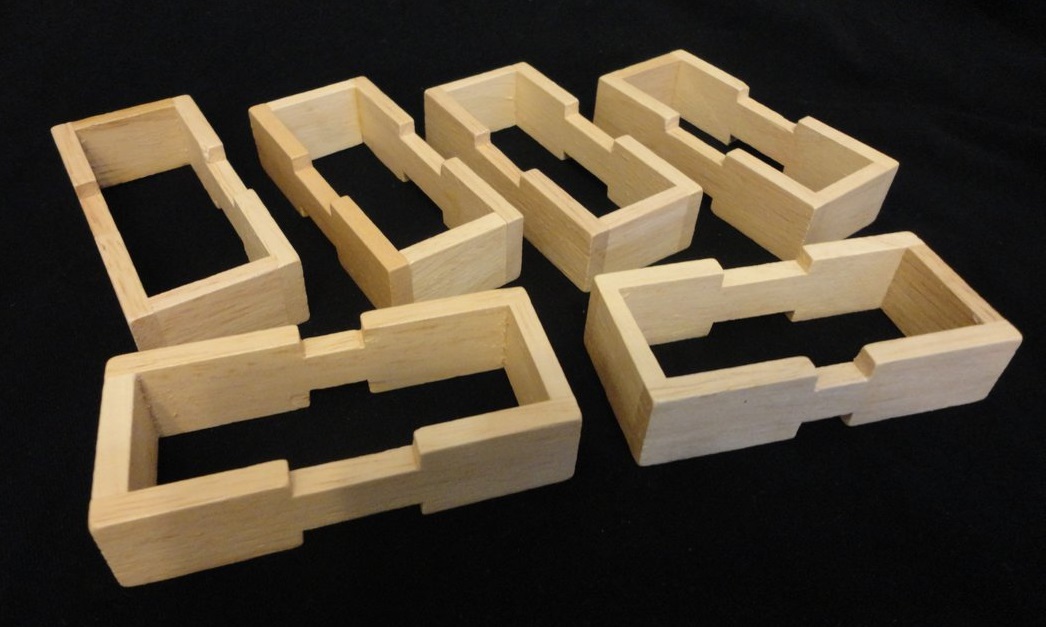
Six Piece Open Drawers - real name and designer unknown to me. |
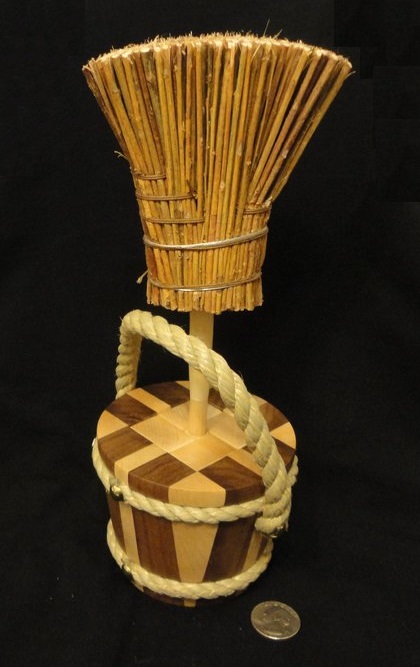
Sorcerer's Apprentice - a novel burr designed and made by Stephan Baumegger |
|
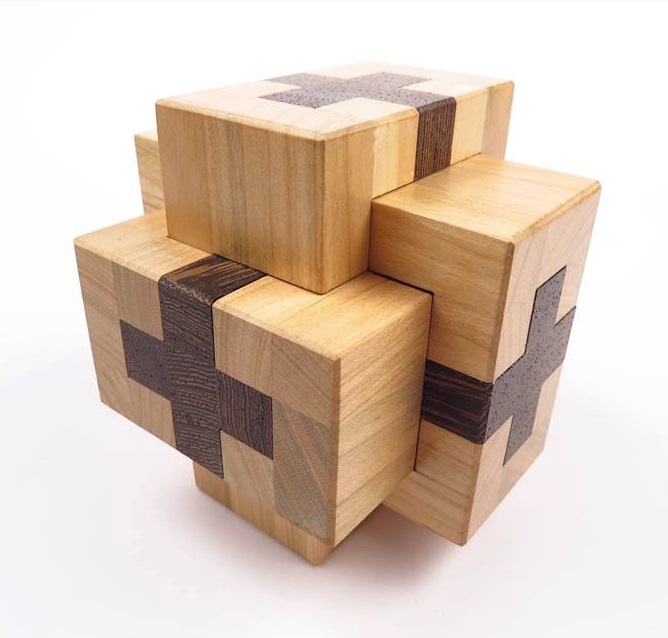

Crosscut - designed by Dan Fast made by and purchased from Pelikan. Cherry and Wenge. Level 13.2 |
||
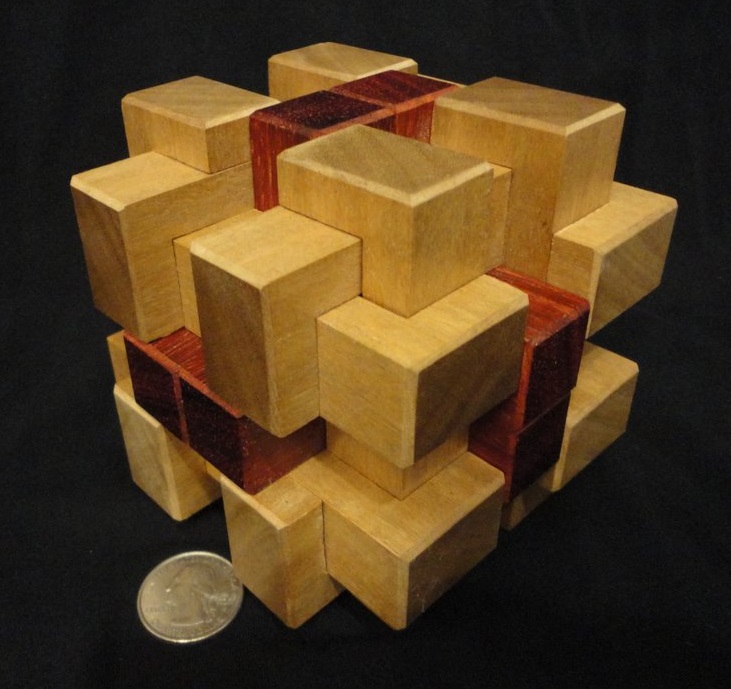
Hug - designed and made by Alfons Eyckmans from Vitex and Padauk Level 19 |

Venus - designed and made by Alfons Eyckmans from Ash and Purpleheart Level 16 |
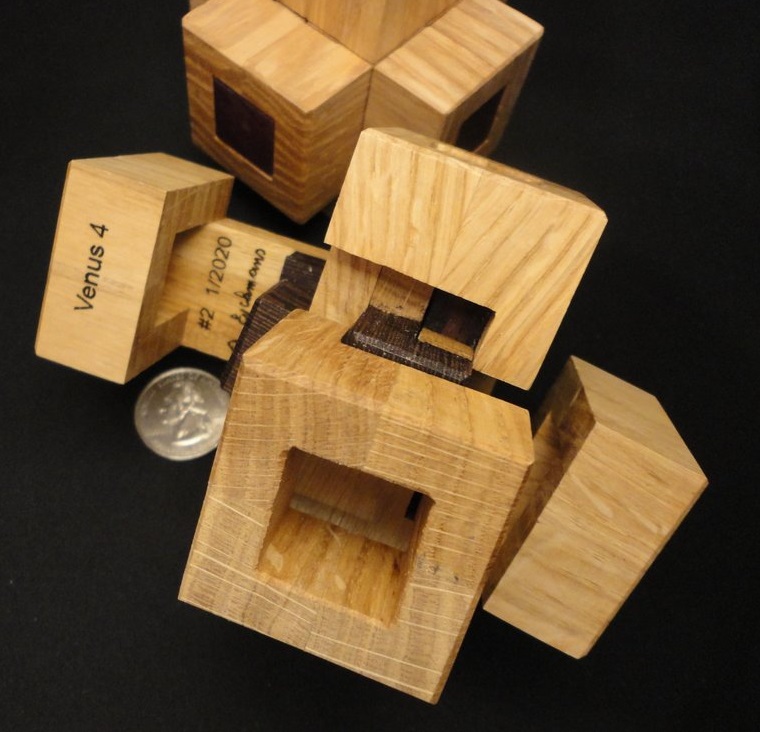
Venus 4 - designed and made by Alfons Eyckmans. I've managed a partial disassembly - shown in the background is an original Venus also from Alfons. |
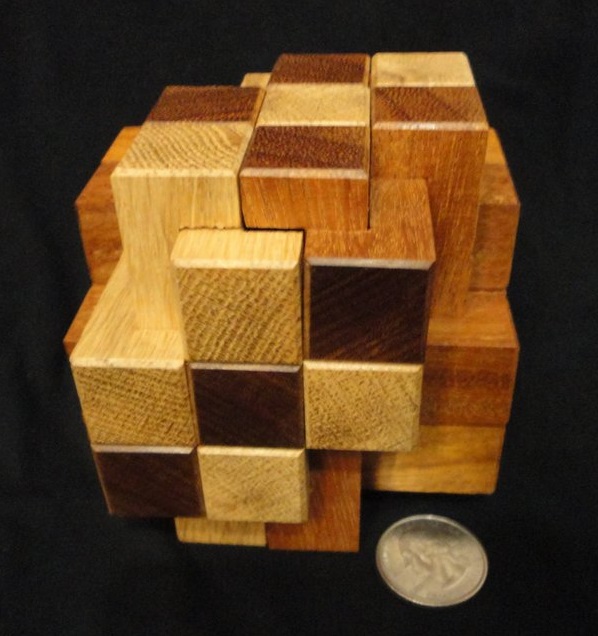
Infinity - designed and made by Alfons Eyckmans from Ipe, Oak, Okan Level 25 |
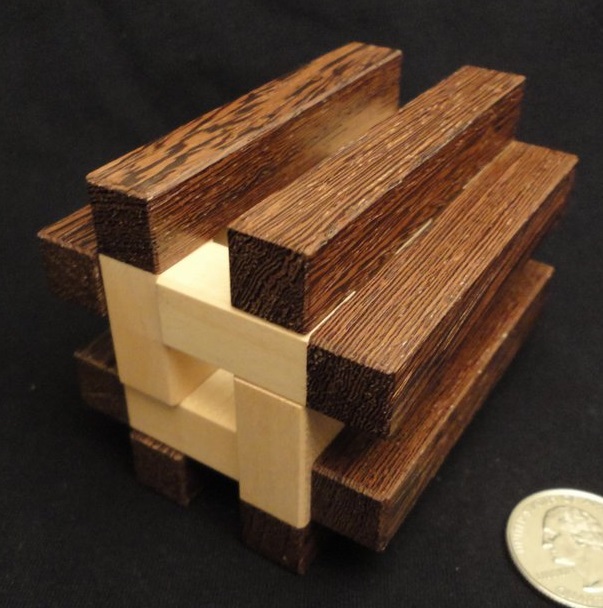
Simple Sharp - designed by Stéphane Chomine |
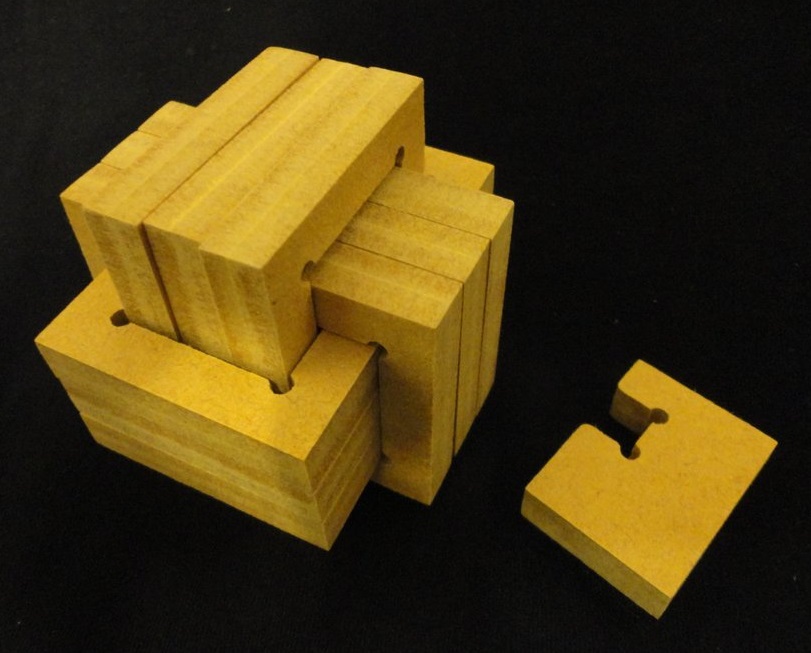
Forgotten Piece - designed and made by Marcel Gillen exchanged at IPP35 by Tania Gillen Disassemble the burr and reassemble with the extra piece inside. |
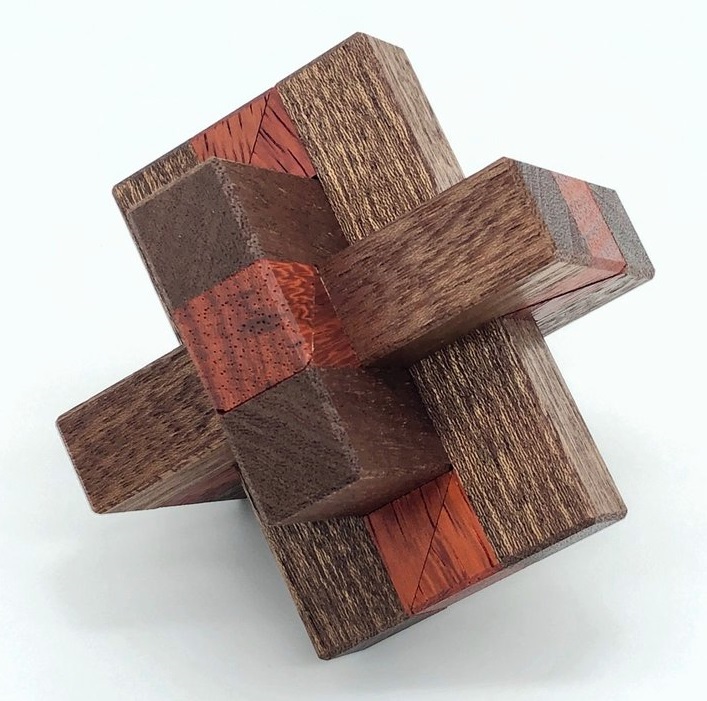

Kaon - designed by Duane Einfeld, made by Eric Fuller from Sapele and Padauk Six pieces form the shape of the classic OCC burr. |
||
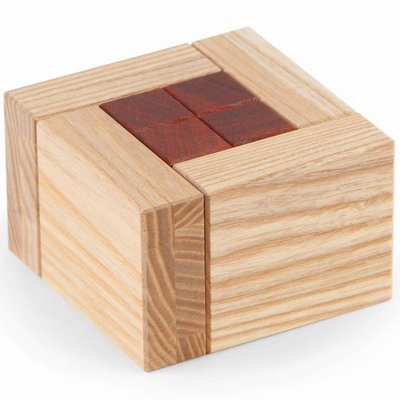
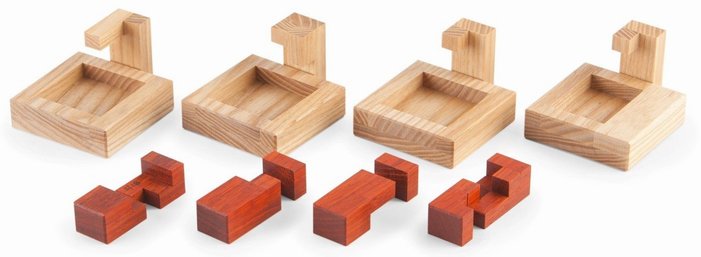
Coniburr - designed by Tim Alkema, made by Eric Fuller from Ash and Padauk. Four outer pieces and four inner burr-like sticks. Level 16. |
||
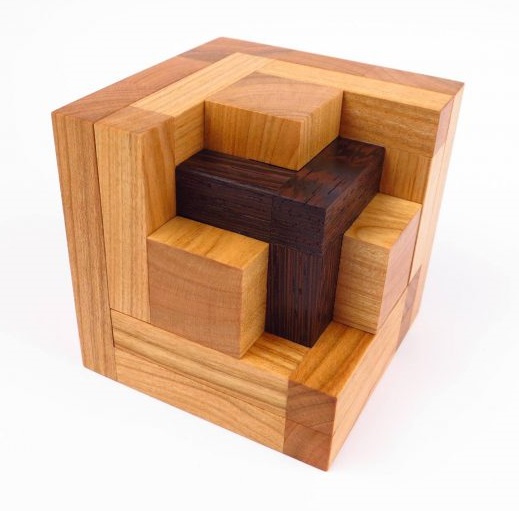

Recede - designed by Alexander Haydon O'Brien, made by Pelikan from Wenge and Cherry. |
||
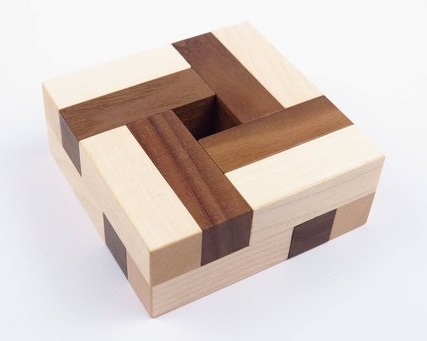
Coriolis - designed by Lucie Pauwels, made by Pelikan My copy is made from Maple and Walnut. |

Silene - designed by Alfons Eyckmans Made by Brian Menold, from redheart, katalox |
|

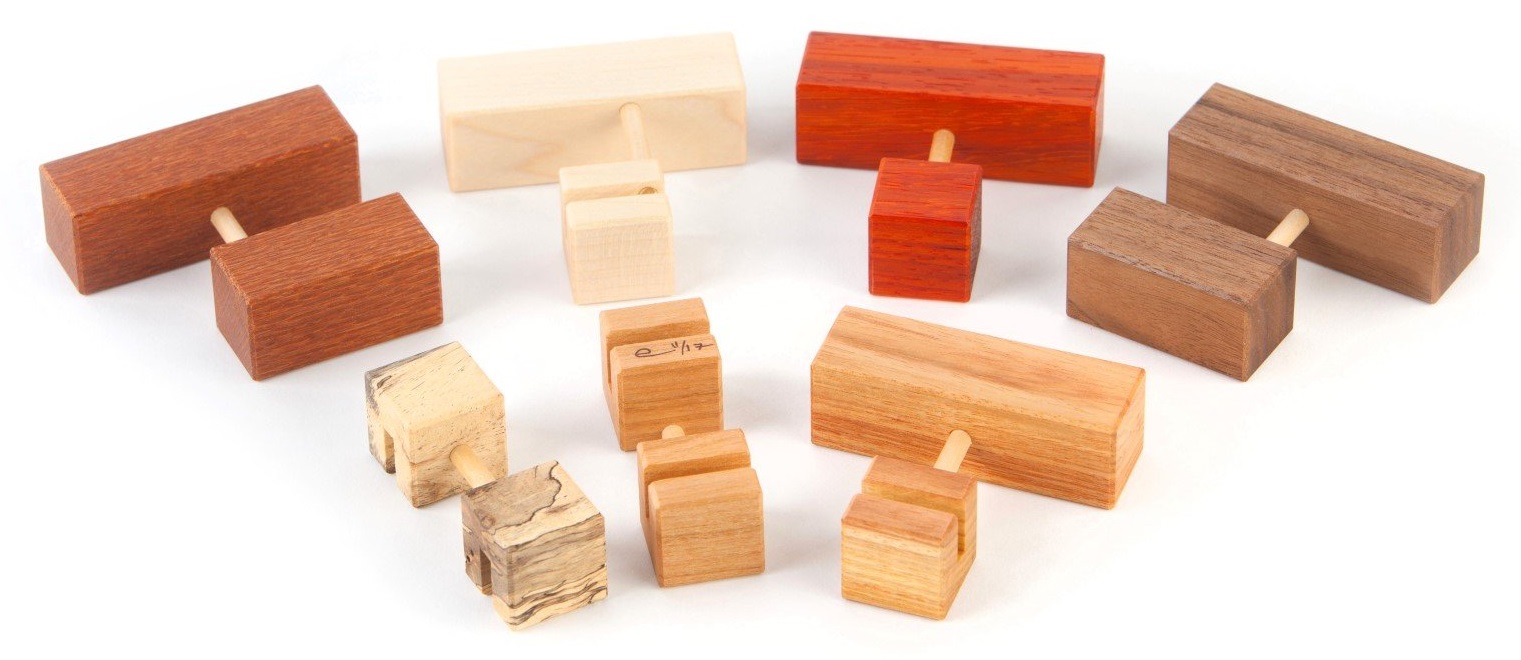
Pinco - designed by Erhan Cubukcuoglu Made by Eric Fuller, from Walnut, Leopardwood, Paduak, Canarywood, Maple, Tamarind, Cherry |
||
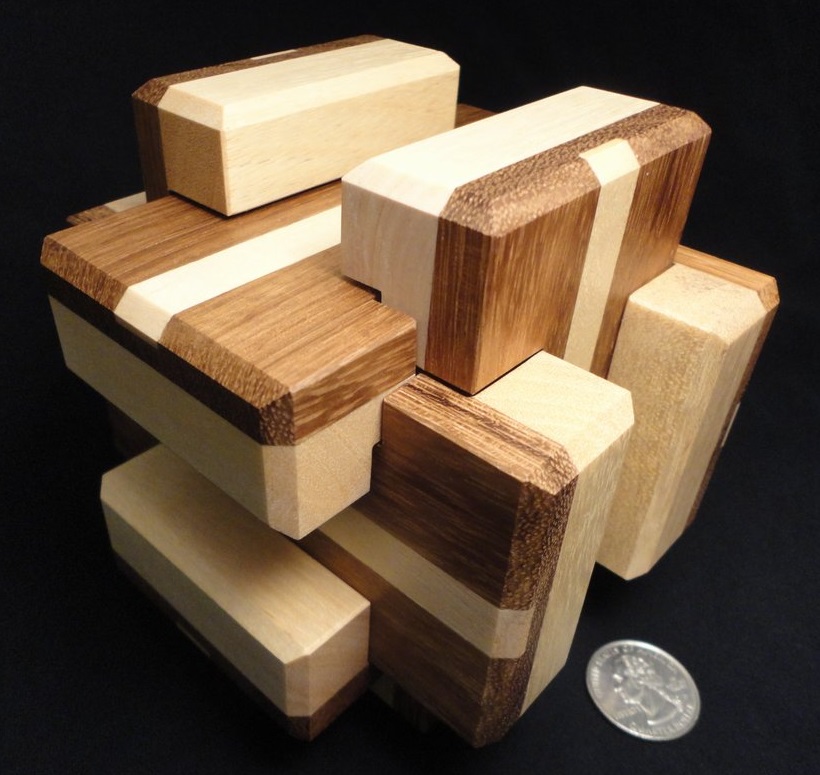
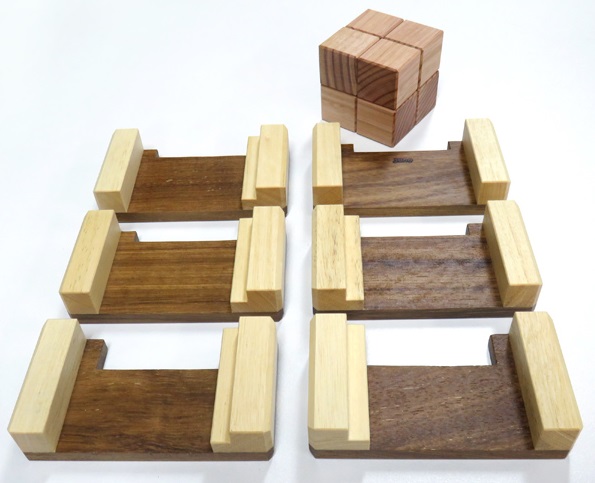
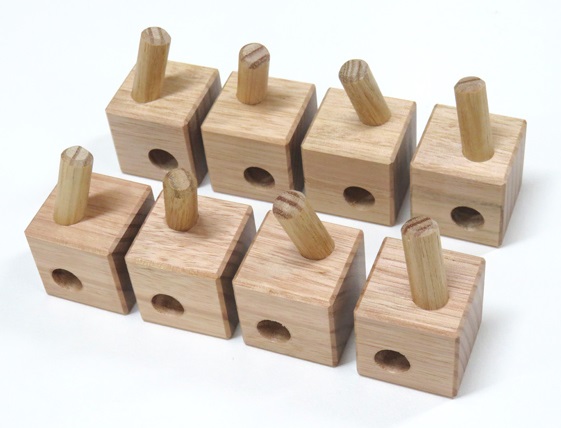
Pisa #2 + Cubin Burr - designed by Junichi Yananose |
||
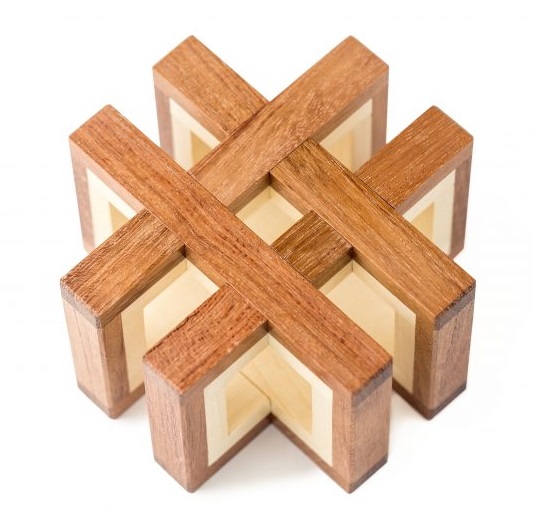
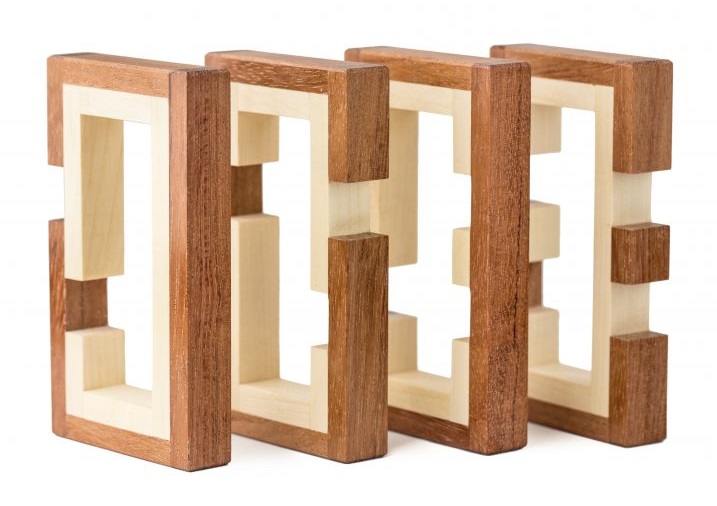
Rota # - designed by Lucie Pauwels, made by Pelikan. |
||

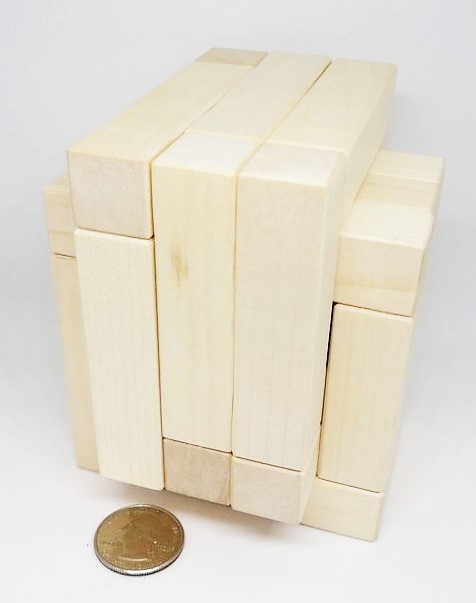
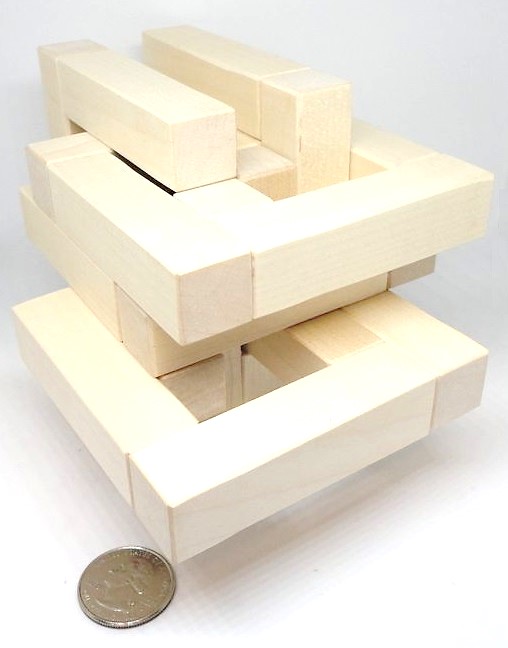
Robrecht 02 - a burr designed by Robrecht Louage, from PuzzleWood.de. Six pieces, one solution, at level 14.4.2. Thanks, Chelsea! |
||
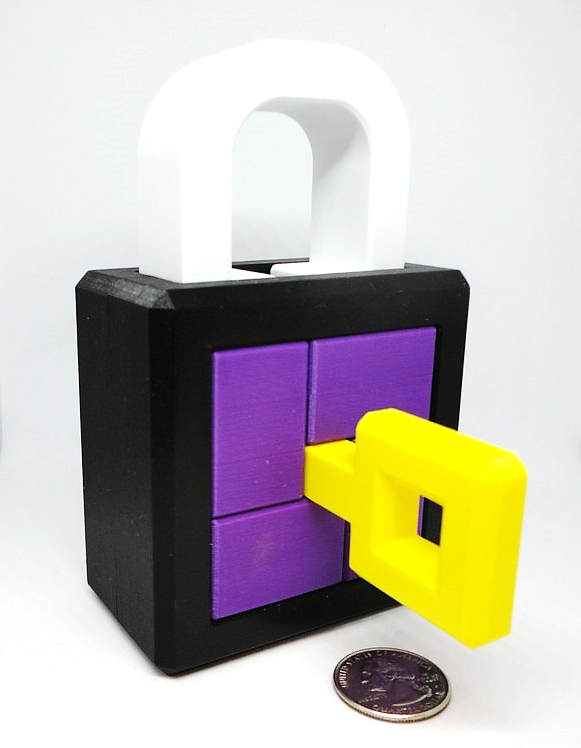
Burr Lock E - designed by Christoph Lohe,
|
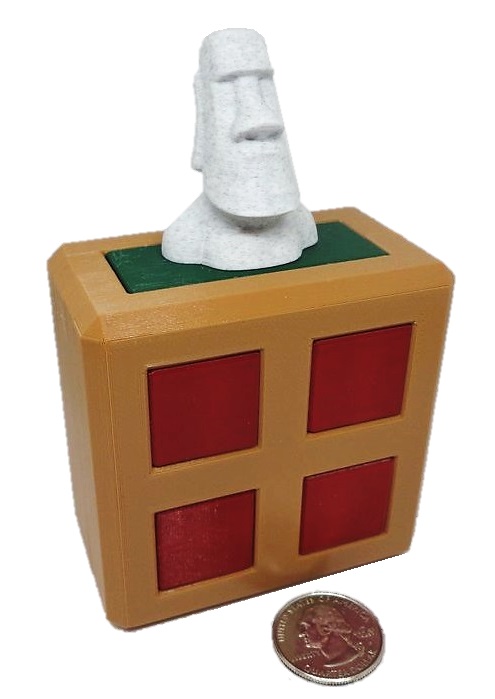
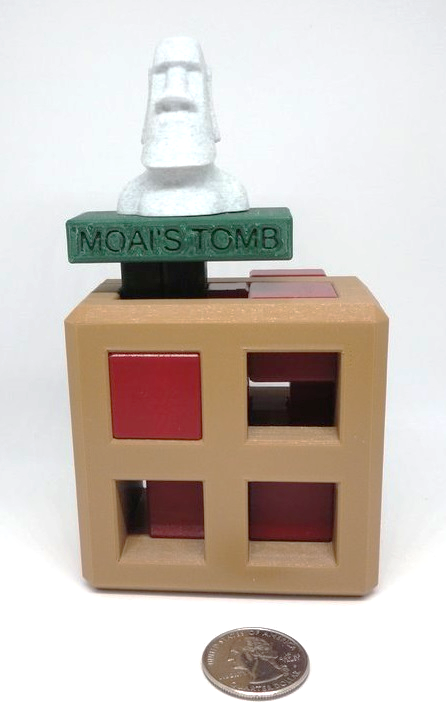
Moai's Tomb - produced by Andrew Crowell |
|
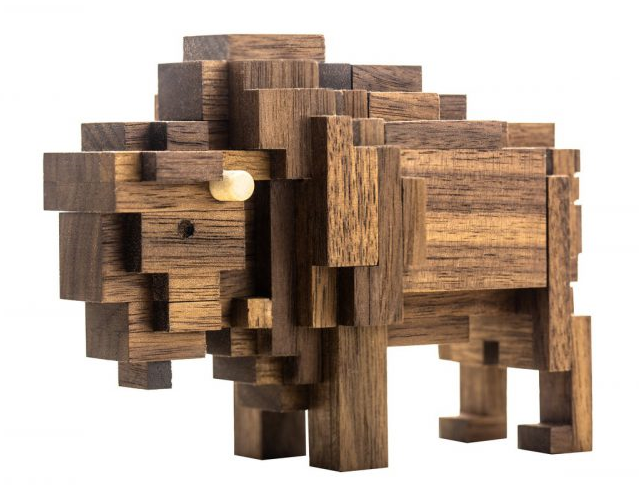
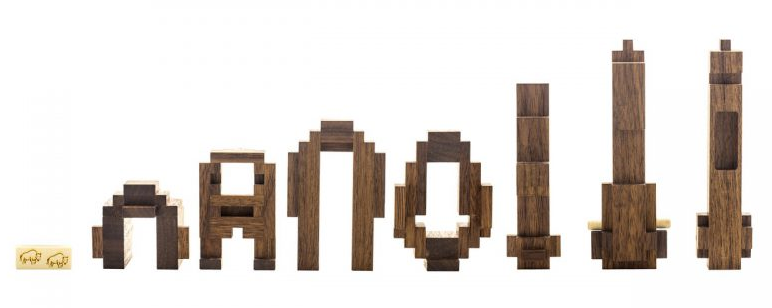
Bison - designed by Jack Krijnen, made by Pelikan. |
||
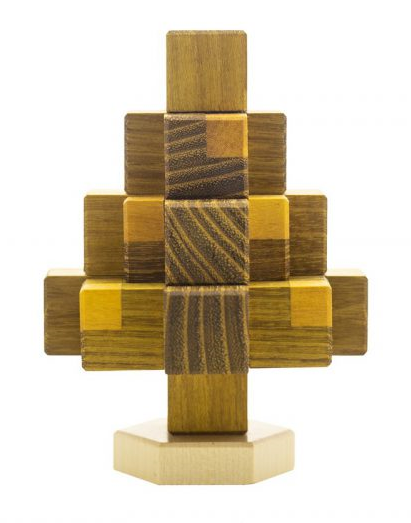
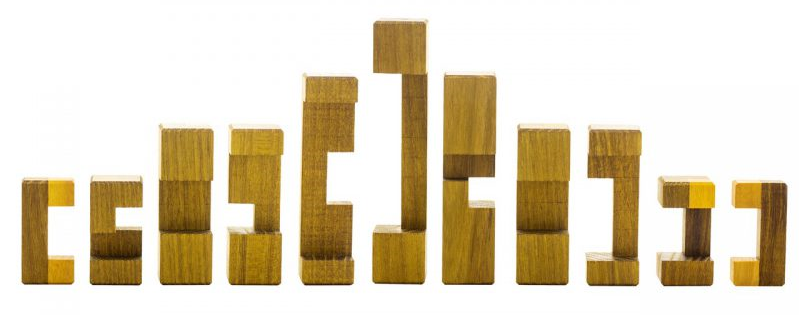
Christmas Tree - designed by Stephan Baumegger, made by Pelikan. |
||
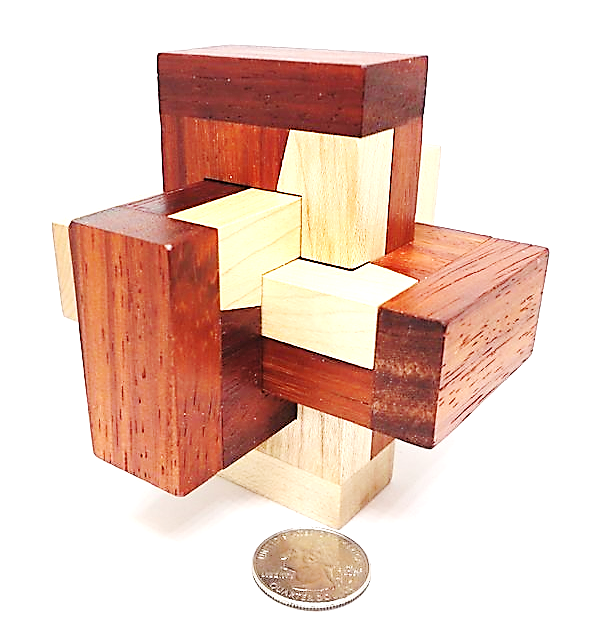

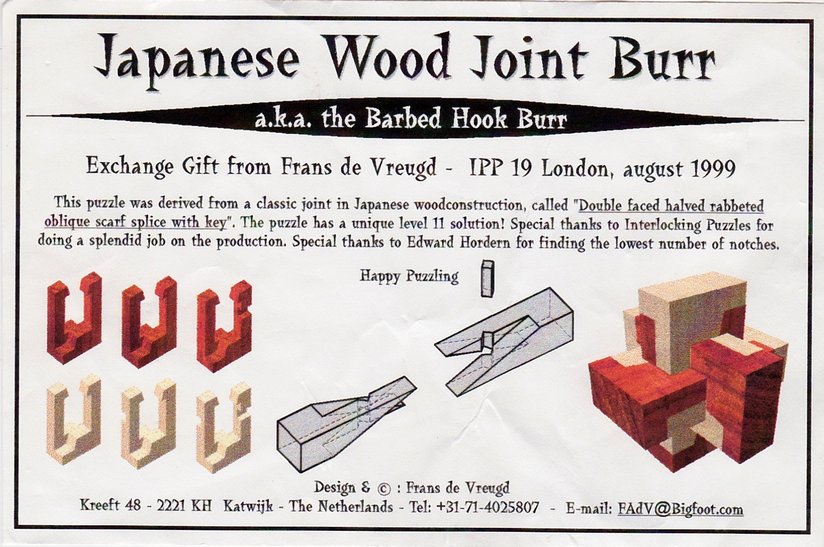
I long admired and have now found an example of the Japanese Wood Joint Burr, designed by Frans de Vreugd and exchanged by Frans at IPP19 in London. |
||
I learned about five inexpensive wooden puzzles produced under the label "Confusion Contemporary Puzzles" by The Lagoon Group. I purchased mine at Mind Games in the UK.

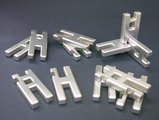 This is Junichi Yananose's H-Burr, made in aluminum and purchased from Torito. |
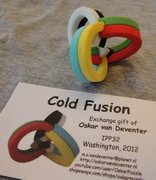 Cold Fusion, designed and exchanged at IPP32 by Oskar van Deventer, made by Shapeways |
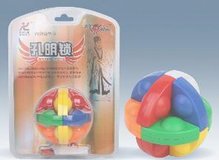
Kaiyue Ball Burr (Kong Ming Lock 30394) |
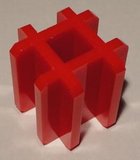
Four-piece red weave |
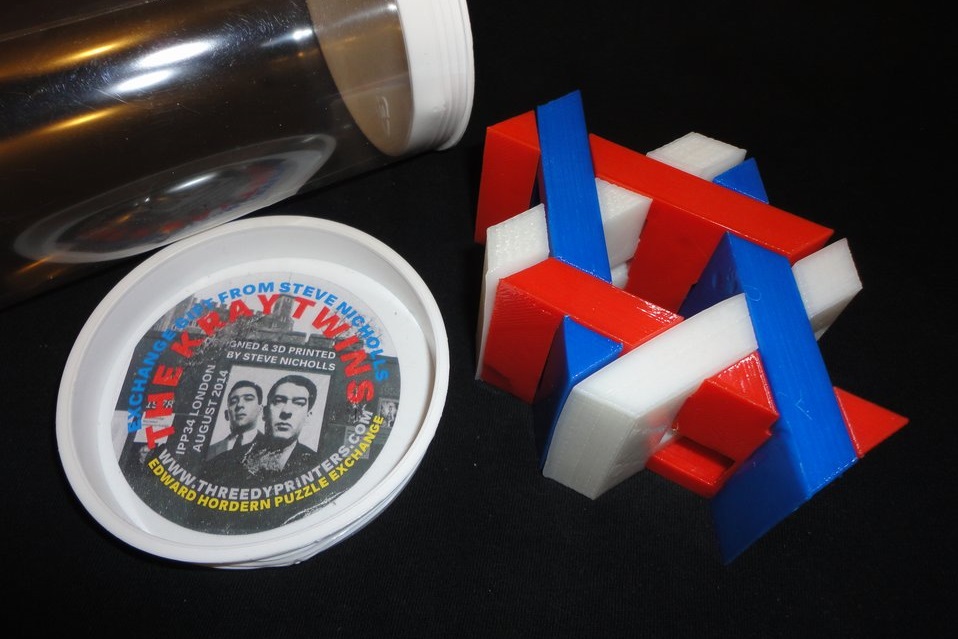
The Kray Twins designed and 3D Printed by Steve Nicholls. This unusual six-piece burr was Steve's IPP34 exchange gift. Steve kindly sent me a copy - thanks very much, Steve! |
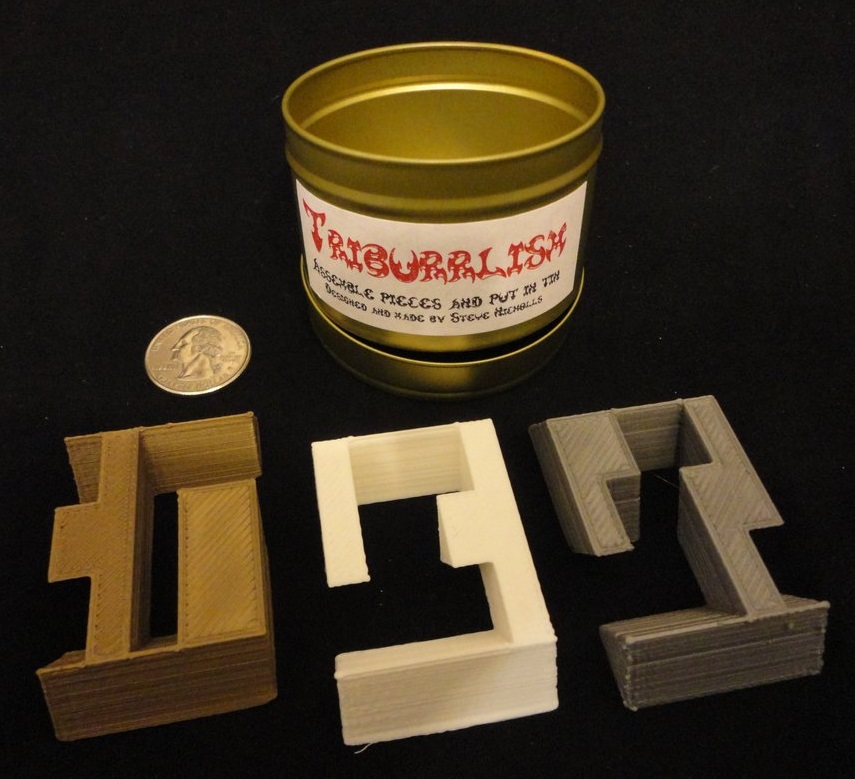
Triburrlism - designed, 3D printed, and exchanged at IPP35 by Steve Nicholls. Assemble the three pieces so the result fits in the container. |
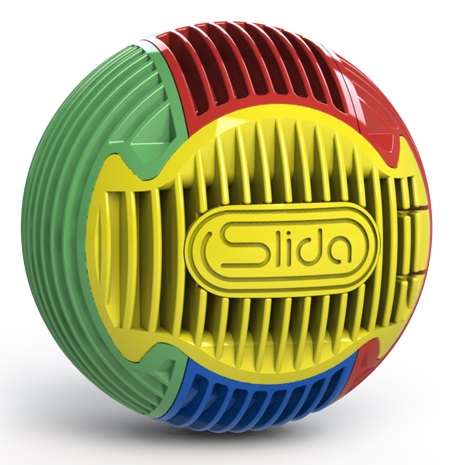
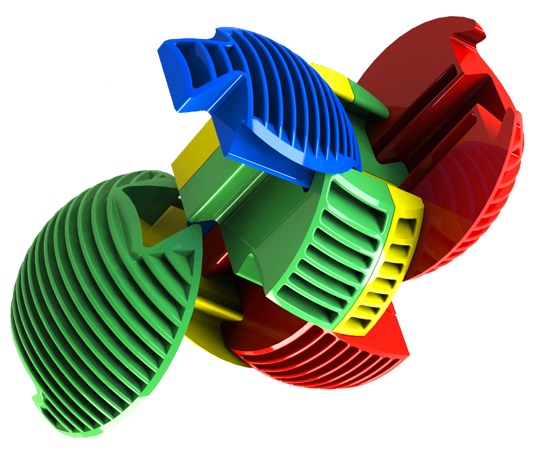
Slida - Slida website Colorful but simple. |
||
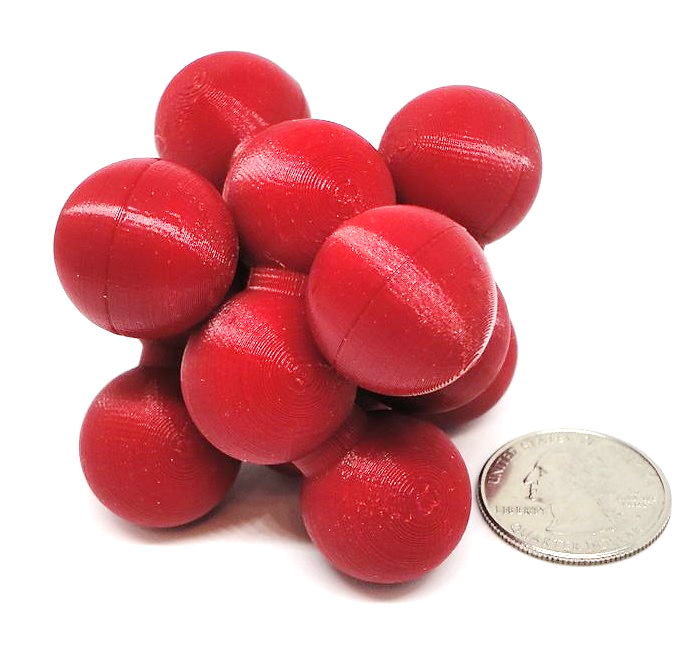

Cube Ball - by George Bell at PolyPuzzles Form a cube from three 3D printed pieces. |
||
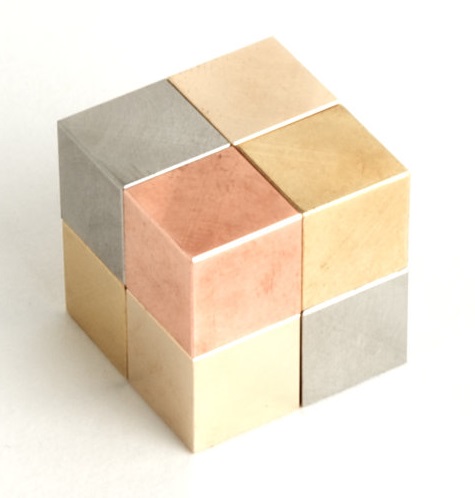
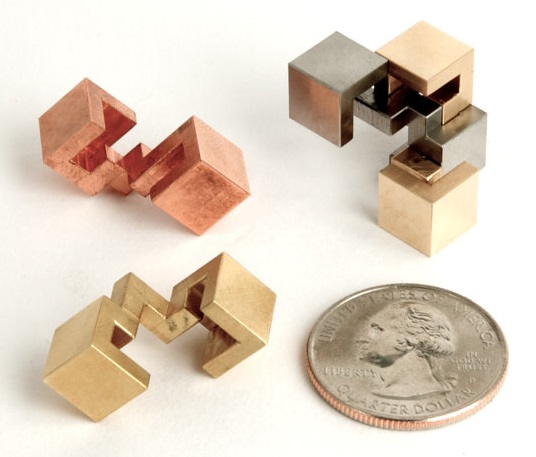
Four Piece Cube - designed by Dic Sonneveld, made by Lee Krasnow from various metals. It's tiny! |
||
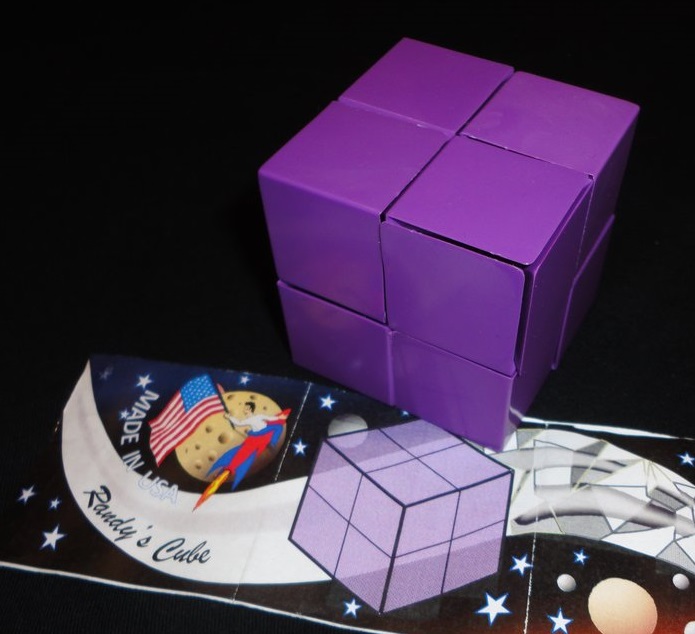
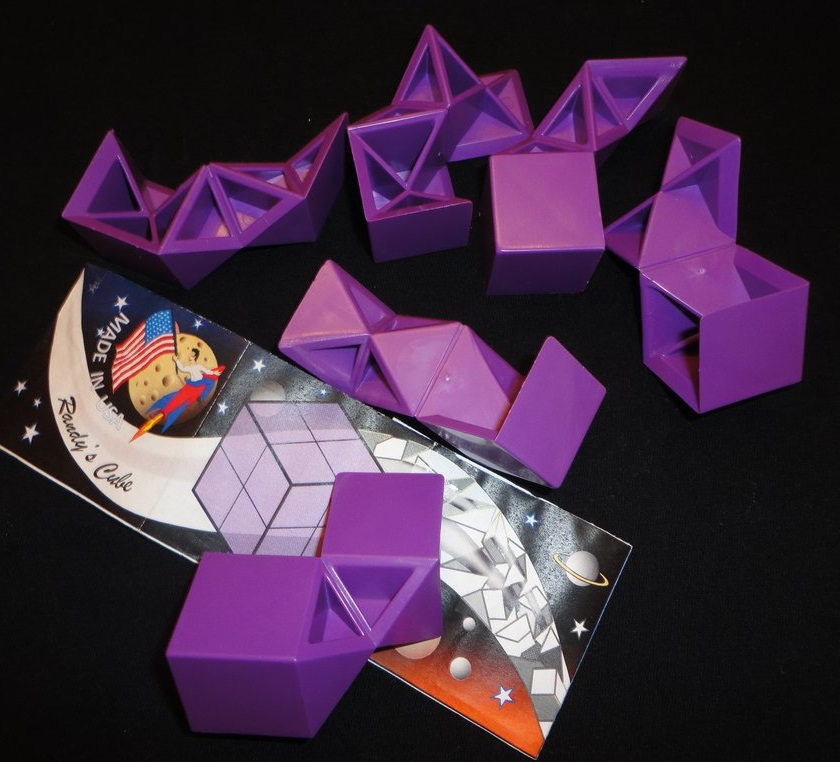
Randy's Cube - designed by Randy Pearson Entered in the 2012 IPP Design Competition as "Pearson Puzzle Pieces" - 6 pieces form a cube. Purchased from e3cubestore.com |
||
|
|
||
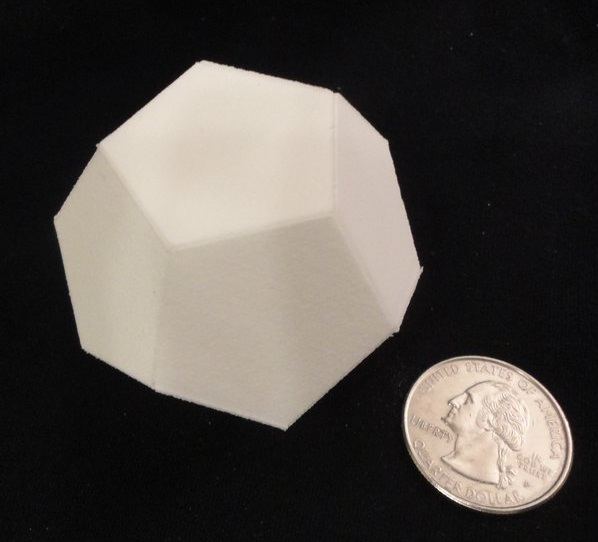

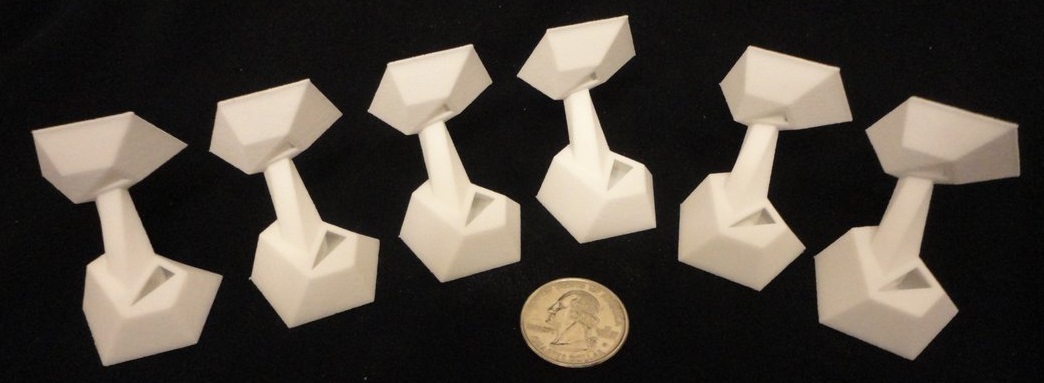
Dodecafé - Rik Brouwer Purchased from Rik's Shapeways shop. Difficult to assemble and even more difficult to take apart. |
||
Here is a set of burr-type plastic puzzles I bought in Japan - they are members of a "Family:"
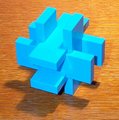 Boy |
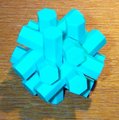 Papa |
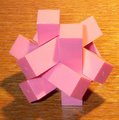 Lady |
 Brother |
The Dollar Tree store offered several puzzles in a series called "3 Dimension" including:
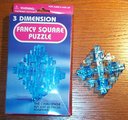
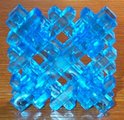 Fancy Square |
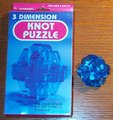
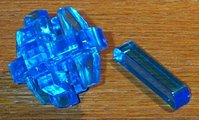 Knot |

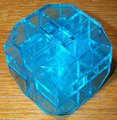 "Stack Cubes" (A Kumiki Cube) |
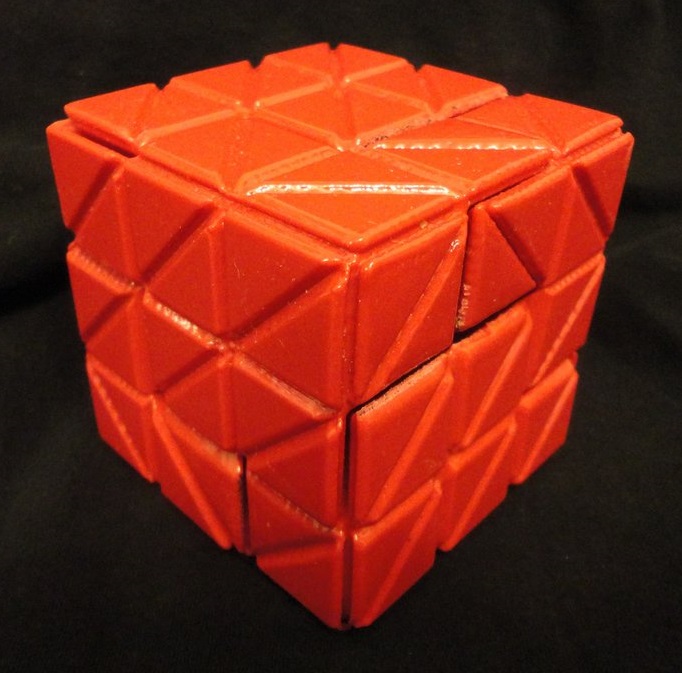
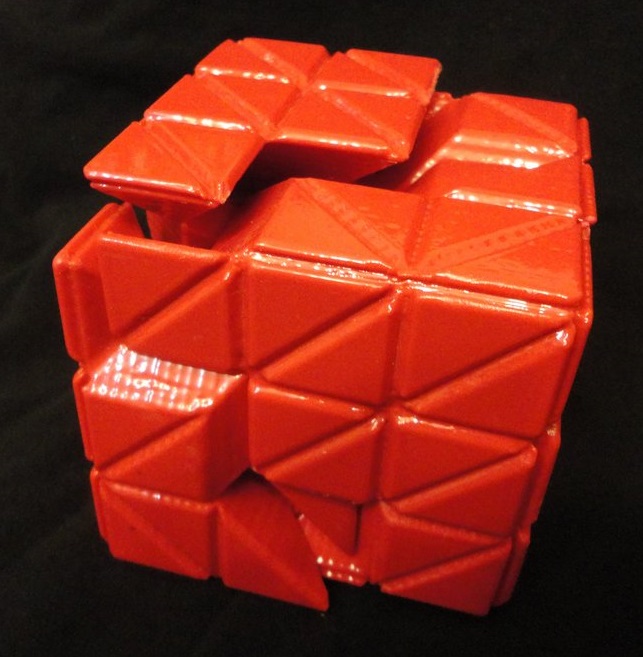
Barcode Burr designed by Lee Krasnow 3D printed by Stephen Miller |
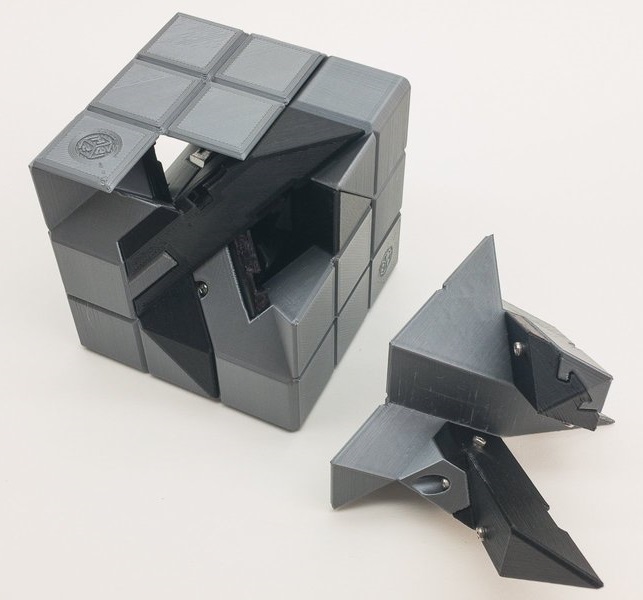
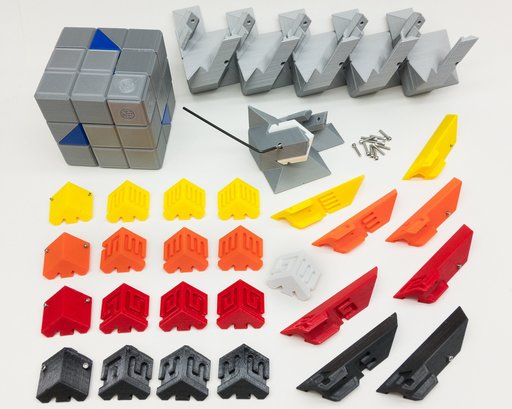
Barcode Burr - a beautifully produced 3D printed version of Lee Krasnow's famous puzzle. Check out Lee's Etsy shop Pacific Puzzleworks. I also purchased the Barcode Burr Master Expansion Set. The Master Set includes:
I also purchased further expansion piece sets for the
Barcode Burr - CrossCode Burr (XCB) Master Set (white, 4 puzzles),
|
|
Scott T. Peterson
is a talented craftsman who produces high-quality limited editions of
puzzles in fine woods.
See his website polyhedralpuzzles.com; and info at CubicDissection. Scott made a few instances of my the first in Bocote and Yellowheart, and the second in Kingwood and Holly. (I have since traded the Kingwood instance.) 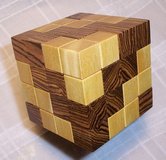
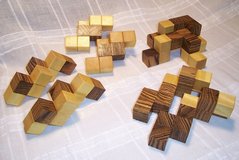
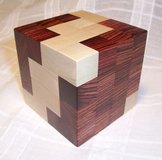
but I think it presents a good challenge for the casual puzzler, particularly if one starts with it disassembled and hasn't seen the assembled arrangement. The design is the product of a search "by hand" (i.e. without a computer) for a selection of non-planar pieces formed from two n-tetrominoes each that would allow interlocking assembly into a 4x4x4 cube. My "theme" was the frequent mis-spelling of my last name, which has two n's. I was pleased to discover an arrangement that used four pairs of pieces - thusly again doubling the double-n theme - and yet assembled in a way that was not completely symmetric. Scott's tolerances are so accurate that when I first received the cubes, I had trouble finding the disassembling moves! Naturally, wood tolerances vary with humidity, but Scott's pieces are very nicely made. |
||||||||
|
||||||||
At IPP28 in Prague, Bernhard Schweitzer had a nice surprise for me - he presented me with a copy of my 2 N's Cube No. 5
that he had made - I believe the wood is Meranti. Thanks again, Bernhard!
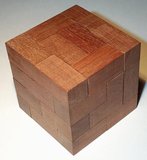
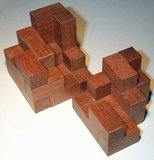
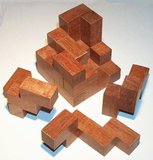 The French puzzler Guy Brette also made a copy - see a video on
Guy's website.
The French puzzler Guy Brette also made a copy - see a video on
Guy's website.
|
||||||||
|
||||||||
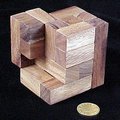
The Juha #6 cube by Juha Levonen (Ishino shows other Levonen designs) |
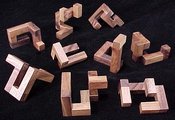
The Noris Cube designed by George Pfaffinger, made by Philos, purchased from Cleverwood (discontinued). |
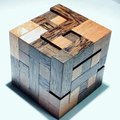
The nine-piece Improved Mehandros Cube by Michael Toulouzas of Greece. Purchased from Bernhard Schweitzer. |
||||||
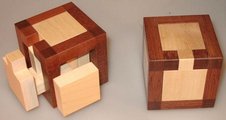 Three Trapped Sages - designed by P.F. Ramos and Rafael Abad Purchased from Puzzlewood.de. This was entered in the IPP 2006 Design Competition. Maneuver the three maple pieces free of the frame. |

Barb's Cube - John Devost A miniature 3D print from Shapeways Thanks, Brett! |
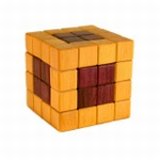
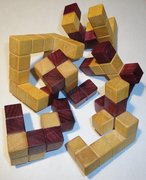
Don's Dilemma - designed by Don Kuchen, made by Brian Menold at Wood Wonders, from Yellowheart and Purpleheart |
||||||
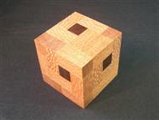
This is a version of Trevor Wood's Holey Squares Cube puzzle, made by Eric Fuller. It is made from Leopardwood and Honduras Rosewood. |
|
|
||||||
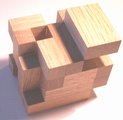
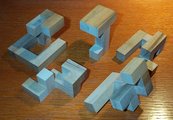
Waite's Wonder A 4x4x4 cube made of only five pieces that fit together nicely and ingeniously. |
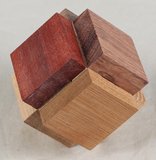
Six Pack, designed by Jim Gooch and made by Steve Strickland from Mahogany, Red Oak, Padauk, Bubinga, Walnut, and Pecan. Six interlocking pieces. |
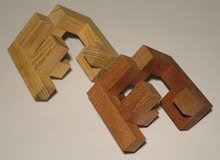
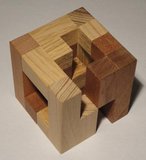
Reunification - Bram Cohen Purchased from PuzzleWood at IPP31 in Berlin |
||||||
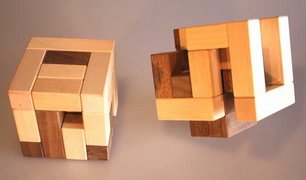
I received Tango, designed by Jeff Namkung, from PuzzleWood.de. It is nicely made, from Maple and Walnut woods. Five pieces form a 4x4x4 cube, with some holes. Like many of Jeff's designs, Tango requires rotations of pieces on [dis]assembly. Thanks, Bernhard! |
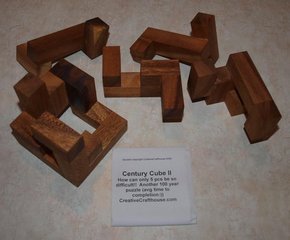
The Century Cube II - a 4x4x4 cube composed of five serially interlocking pieces. A nice design that yields to logical thinking. A copy of Juha A. Levonen's "Juha's No 2." |

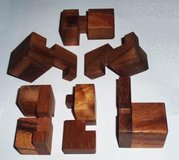
The (Count Your) Blessings Cube - six interlocking pieces. The pieces occur in three mirrored pairs. |
||||||
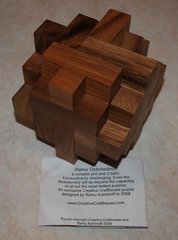
The Ramube Octahedron designed by Ramu Kaminoff in 2008 and exclusive to Creative Crafthouse. Eight complex pieces and 2 balls locking things up inside. Dave says, "This is in my opinion our MOST difficult puzzle. It is difficult for me to imagine anyone solving this without use of the provided instructions." |
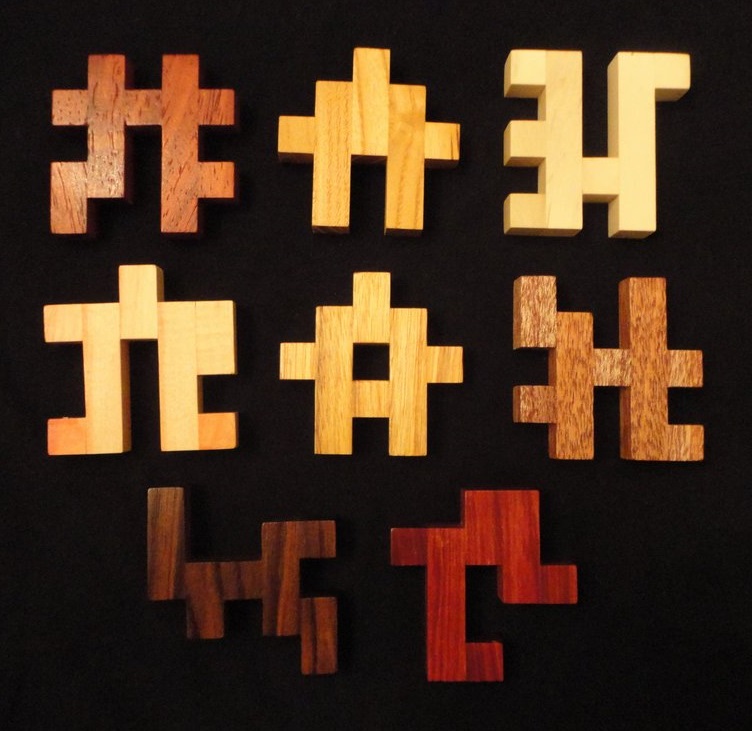
8 Plaques designed by Stephane Chomine made by Brian Menold Looks like a Snafooz-type cube, doesn't it? That is, until you realize there are eight pieces rather than six! I am not going to show you the assembled cube, since the image gives too many hints. |
|||||||
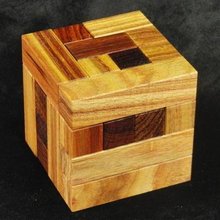
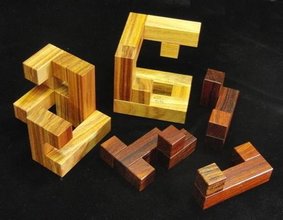
Slow Waltz - designed by Jeff Namkung Made by Eric Fuller, in Canarywood and Cocobolo. |
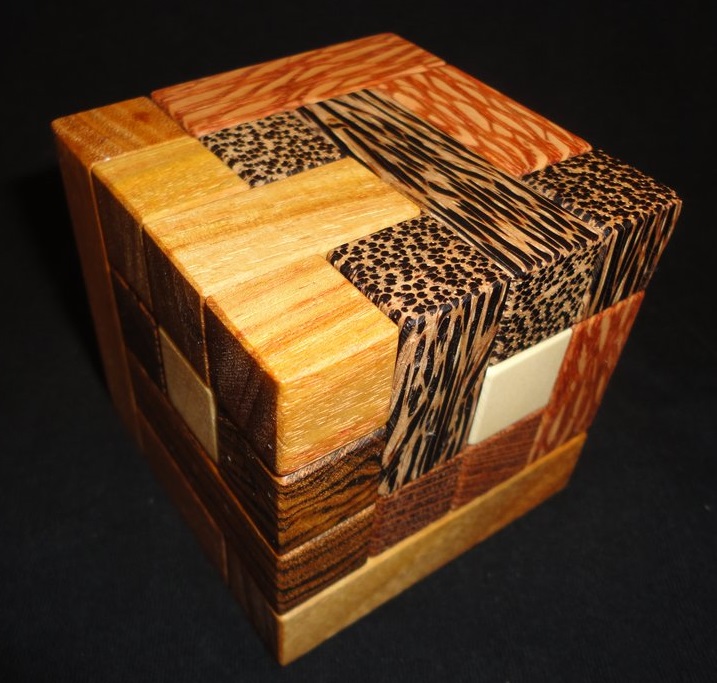
Halny - designed by Jos Bergmans and made by Brian Menold from Black Palm, Holly, Olivewood, Canarywood, Bocote, and Lacewood. |
|||||||
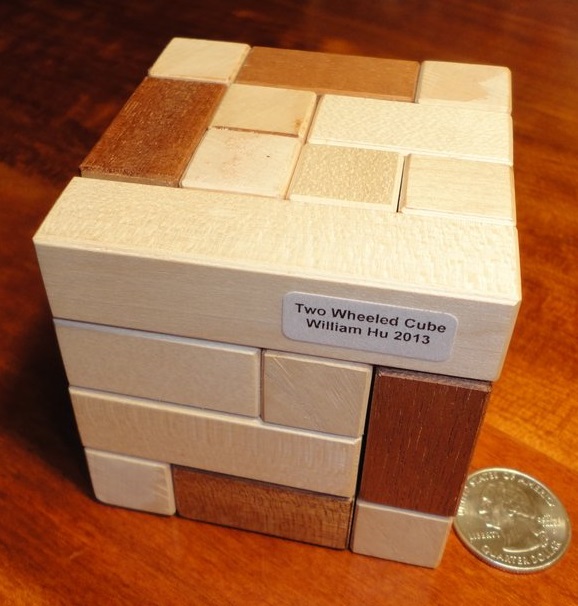
Two Wheeled Cube - designed by William Hu, made by Bernhard Schweitzer |

Danse Macabre - designed by William Hu, purchased from Bernhard Schweitzer |
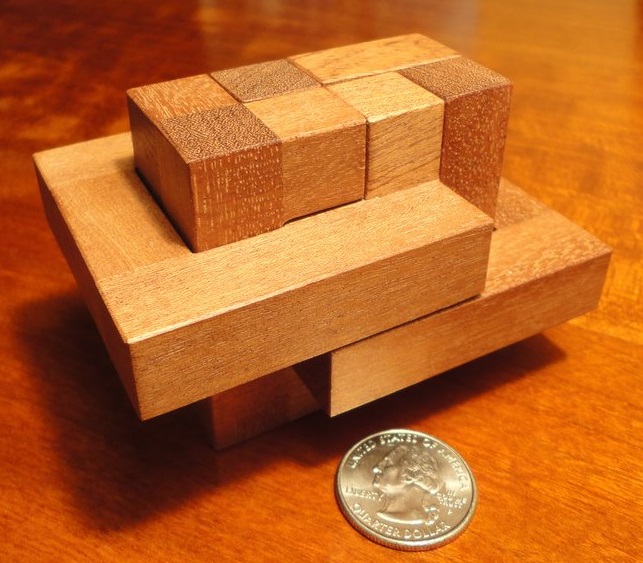
Chain - designed by William Hu, gift from Bernhard Schweitzer - Thanks, Bernhard! |
||||||
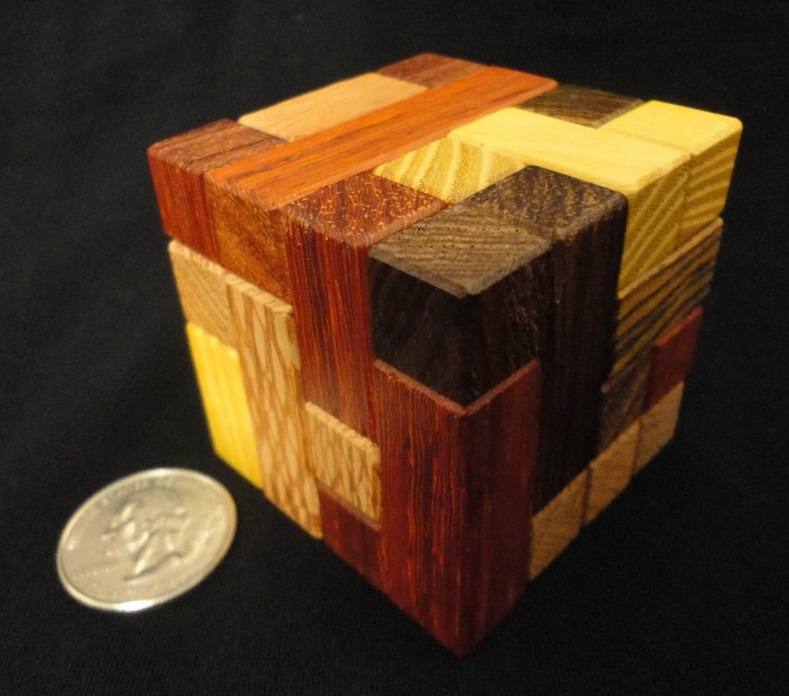
Marin - designed by Jos Bergmans, made by Brian Menold from various woods |
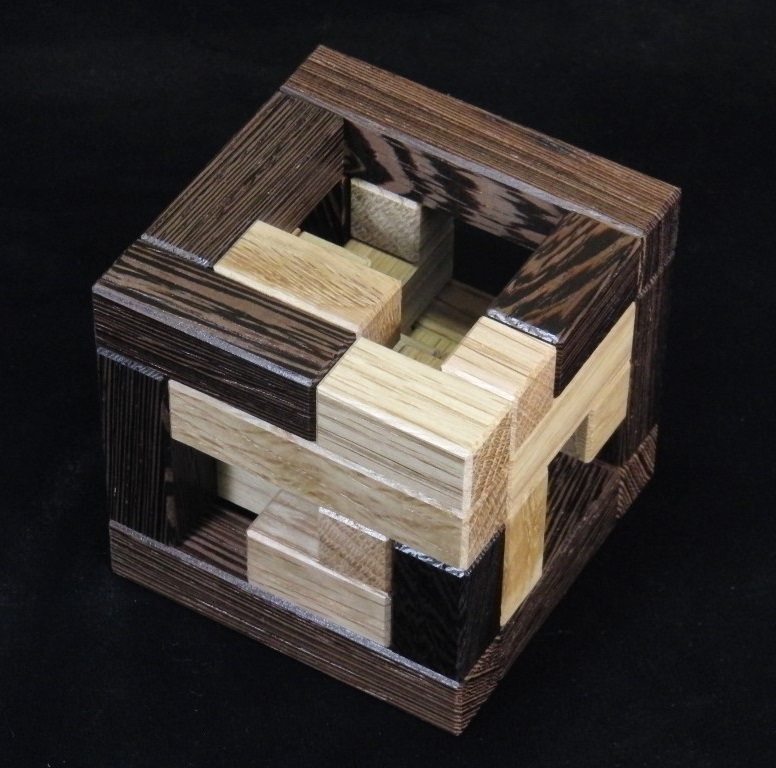

Repair the Cube - designed by Andrey Ustjuzhanin, made by Eric Fuller from Wenge and White Oak - Level 11.10 |
|||||||
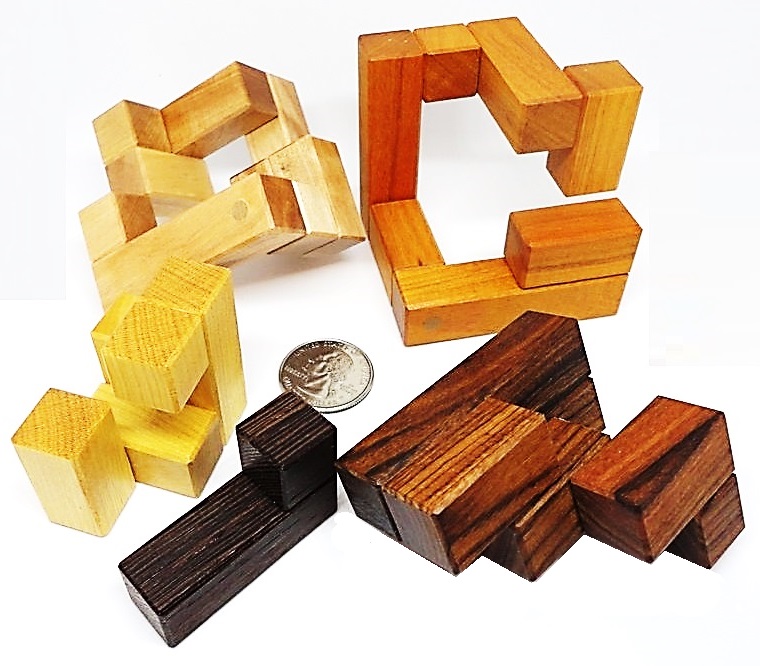
Wedlock - designed by Laszlo Molnar, made by Brian Menold |
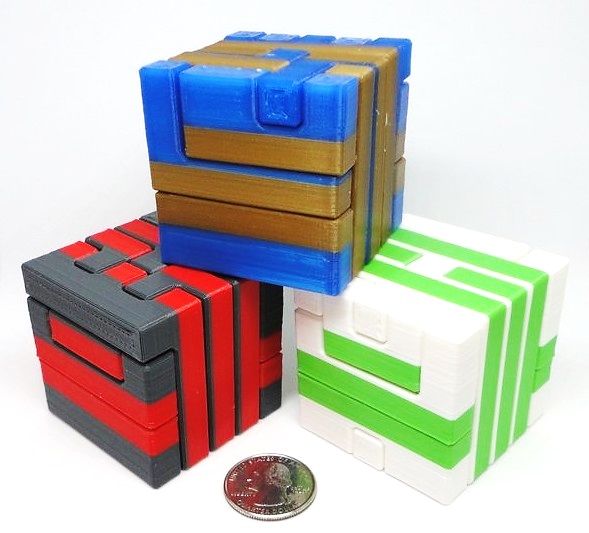
Impossible Cubes - a set of three 3D-printed interlocking 5x5x5 cubes, from Benno de Grote |
|||||||
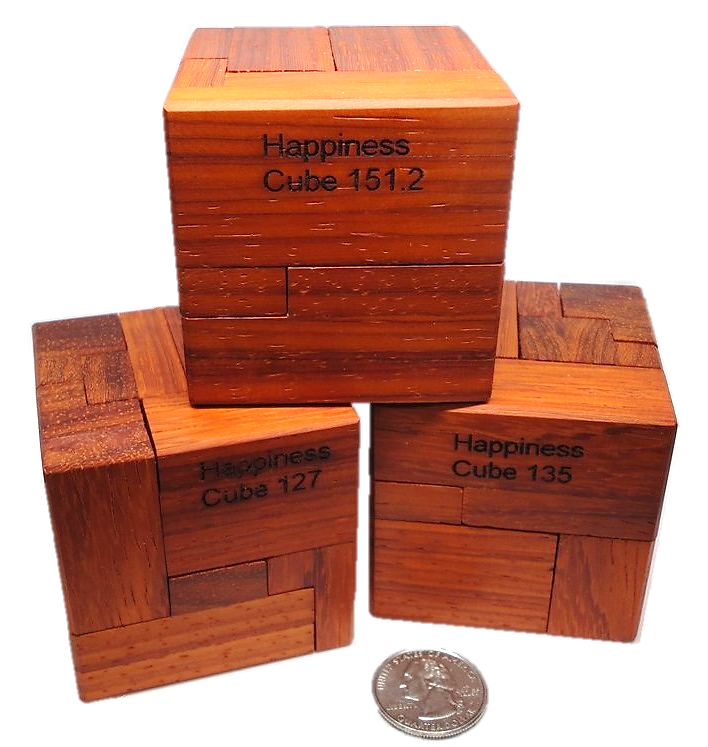
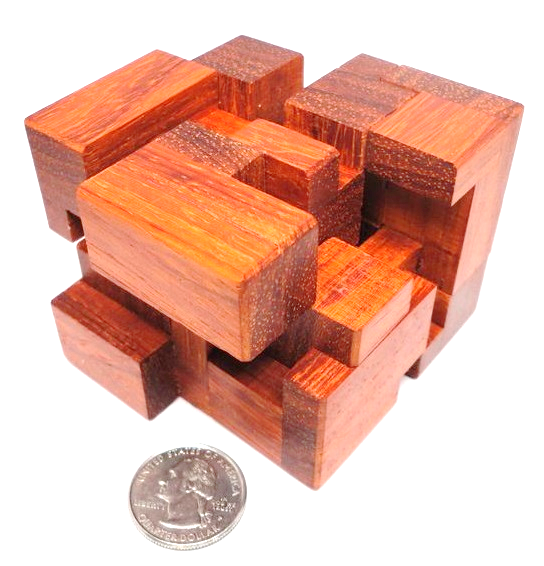
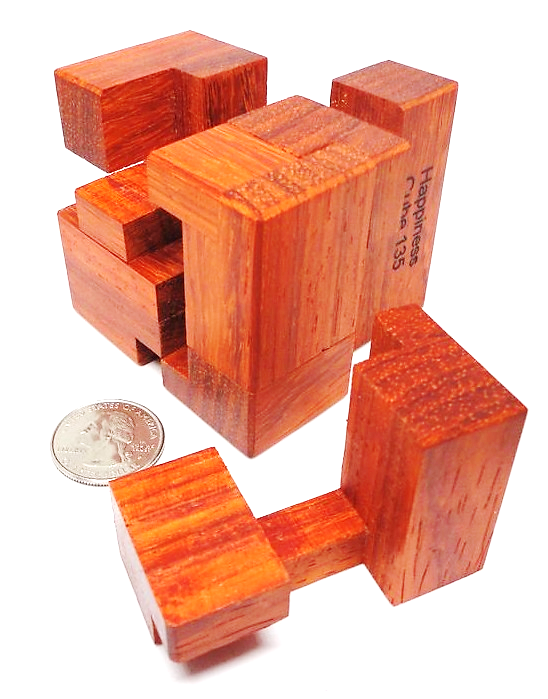
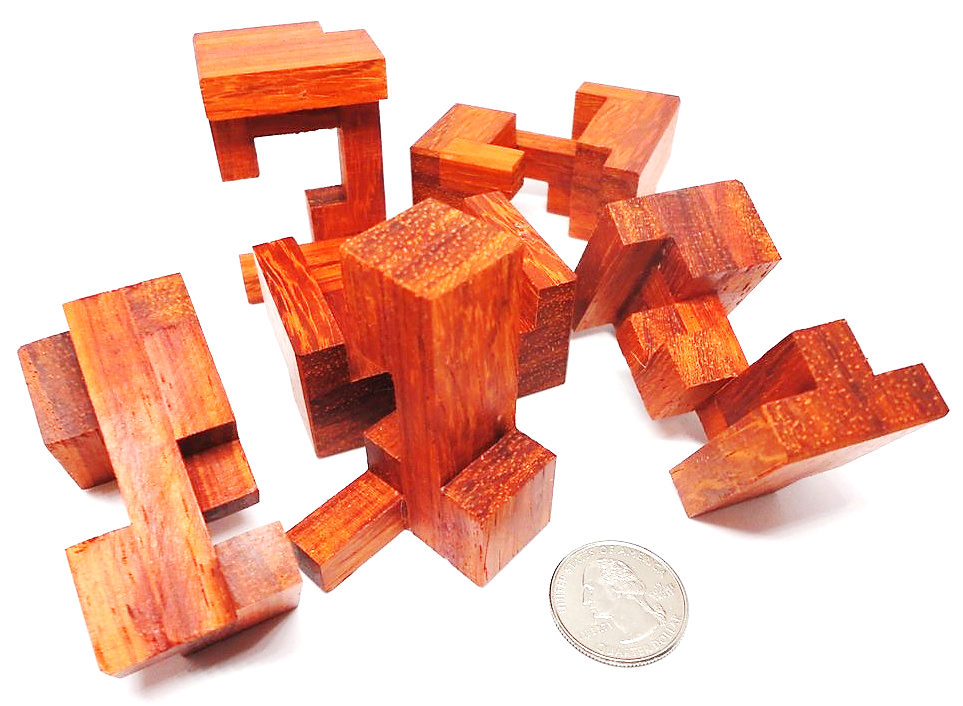
Happiness Cubes - designed by Yukiyasu Sekoguchi, made by Alfons Eyckmans from Padauk. Each cube is 6x6x6 and comprises six pieces. The pieces are (with few exceptions) based on traditional burr pieces, augmented with additional cubies. A book called Happiness Cube was published in 2006 (now out of print) showing 35 such designs. Sekoguchi's website (defunct? Here is a Wayback Machine link Feb 2019 but missing images) showed 160 designs. Alfons made three for me, including numbers 127, 135, and 151.2. The burr pieces at the heart of each are: 127 { 58, 104, 926, 975, 1024x2 } - 1 solution 5.4. 135 { 736, 877, 940, 957, 1007, 1016 } - 2 solutions 3.2. 151.2 { 256 (with an extra notch), 704, 943, 960, 992, 1008 } - 61 solutions. With the cube-filling add-ons to their pieces, the solution for each cube is unique. Quite some time ago, I got a 3D print of Happiness Cube #20, from Richard Gain. Tom Jolly has also designed "Cubed Burrs" - such as Cubed Burr II (2004) which I obtained in English Brown Oak. |
||||||||
|
Designs by Ken Irvine |
|
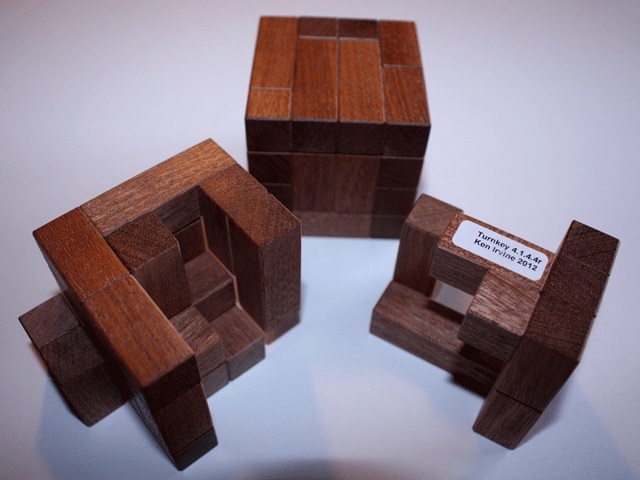
Turnkey - designed by Ken Irvine Produced under license by the New Pelikan Workshop for Bernhard Schweitzer, made from Mahogany. |
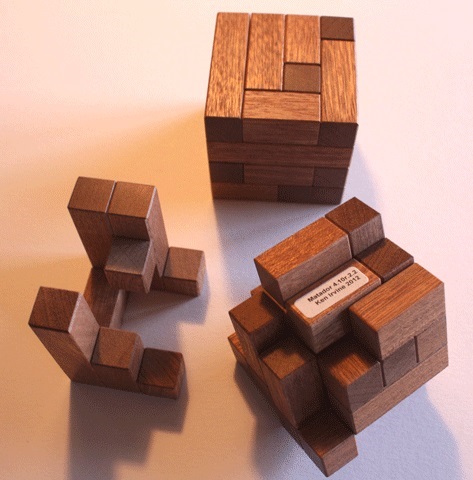
Matador - designed by Ken Irvine Produced under license by the New Pelikan Workshop for Bernhard Schweitzer, made from Mahogany. |
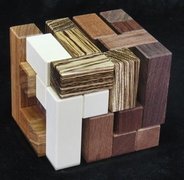

The Accordion Cube by Ken Irvine, made from Holly, Canarywood, Sapele, Zebrawood, and Walnut, by Eric Fuller. Turns out, in a case of independent discovery, Ken duplicated a 2008 design called "Disjointed Cube" by Mineyuki Uyematsu. |
|
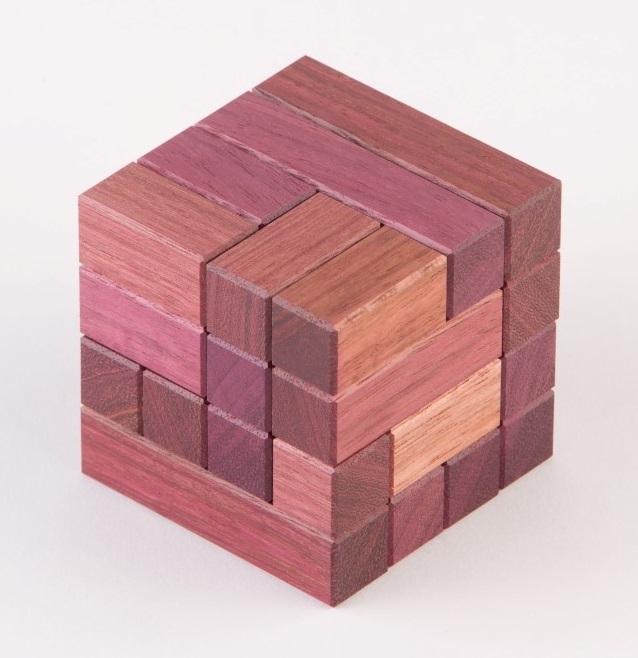
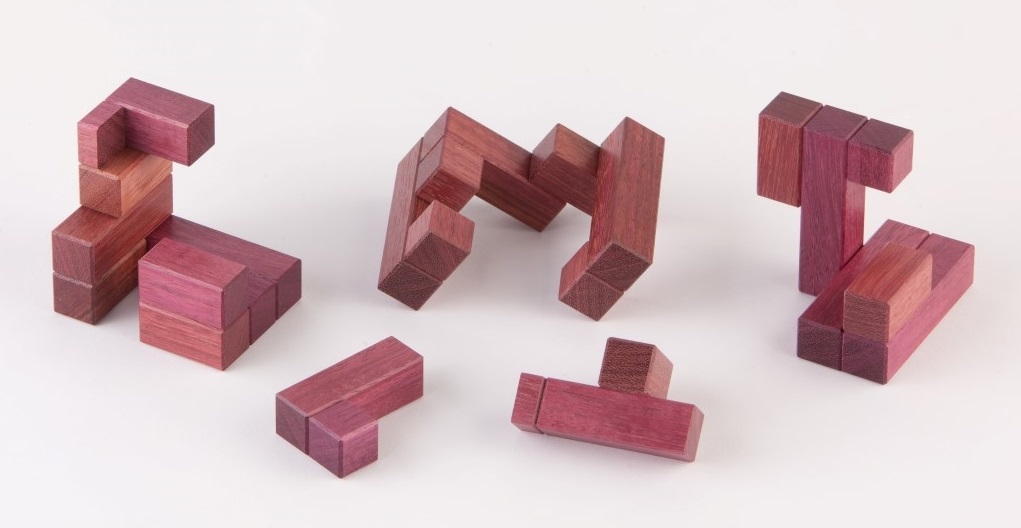
Migraine - designed by Ken Irvine, made by Eric Fuller from Purpleheart |
|
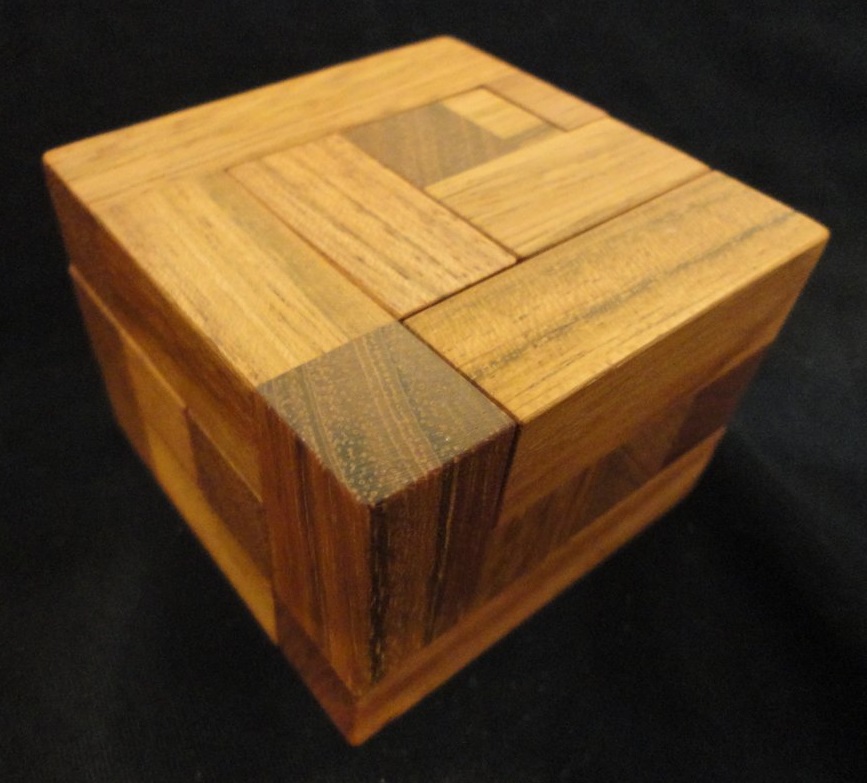
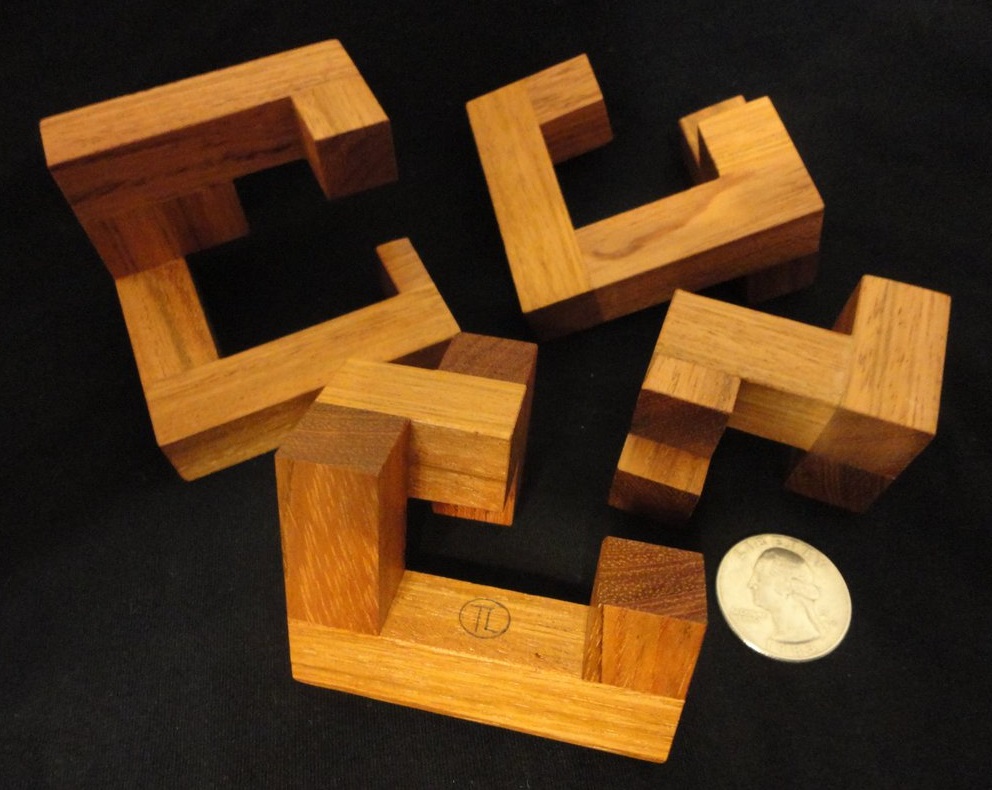
Little Kenny - designed by Ken Irvine Made by Tom Lensch I fiddled with this for a while at NYPP 2016 but could not assemble it, so I knew I'd have to get my own copy. I had Tom send it to me disassembled - I finally succeeded. Only four pieces but a nice challenge. |
|
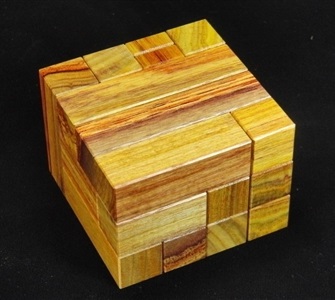
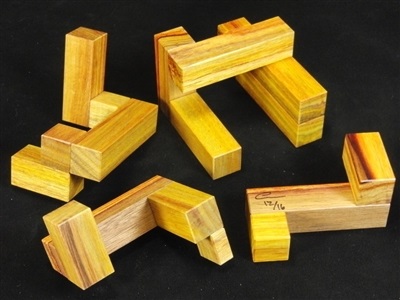
Little Bruce - designed by Ken Irvine, made by Eric Fuller from Canarywood |
|
|
The IPP has grown to become a significant logistical undertaking and pulling it off would be impossible without the help of an army of volunteers. Brett and I were fortunate to benefit from the kind efforts of many people who comprised our IPP35 committee. Another IPP tradition is to thank the committee volunteers with a small puzzle gift. Brett and I commissioned Ken Irvine to design a novel interlocking cube, and Brian Menold of
Wood Wonders to hand make them. Rob Jones kindly provided funding for the project. We agreed on the name The Ottawa Cube, commemorating the location of IPP35 in Ottawa, Canada, and used Redheart and Maple to give it suitable Canadian colors of red and white.
|
|
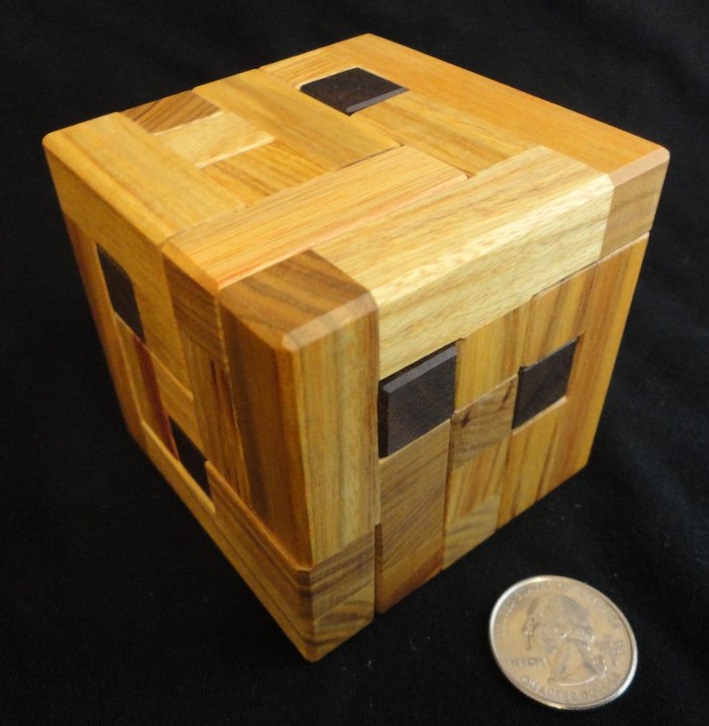
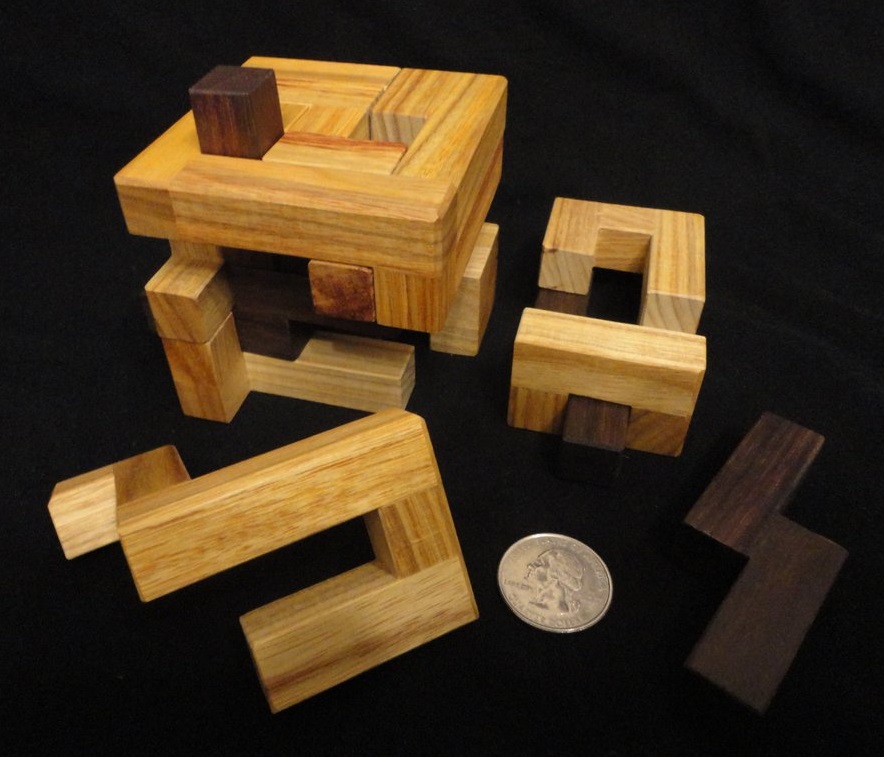
Pushbutton Burr - designed by Ken Irvine and made by Tom Lensch from Canarywood with Indian Rosewood button pieces. Another great design by Ken. I played with a prototype at RPP in 2017, trying to put the pieces together from scratch. I assembled almost the whole puzzle but could not figure out how to get the last pushbutton piece in! The puzzle is easier if you start by taking it apart, so I recommend having someone do that for you out of sight and handing you the pieces! |
|
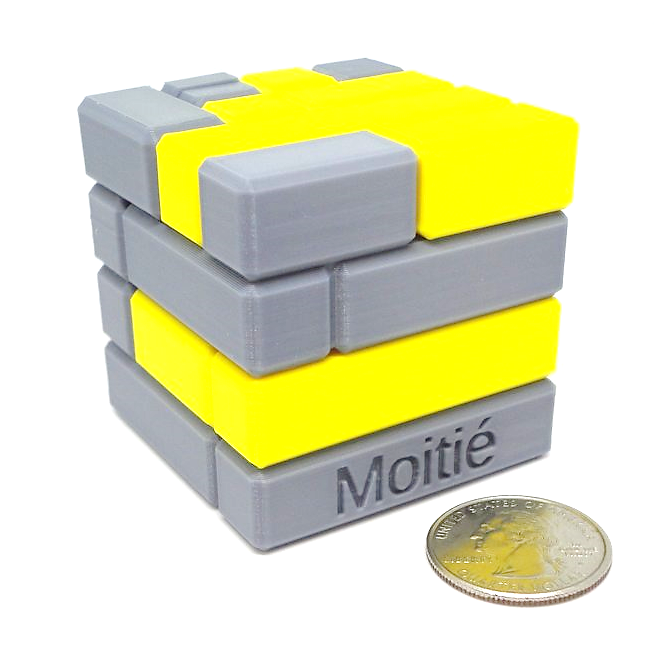
Moitié - designed and 3D-printed by Ken Irvine |
|
|
Designs by Tom Jolly |
||
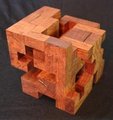
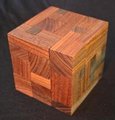
This is the Cubed Burr II designed by Tom Jolly. I bought this instance, made from English Brown Oak, from Eric Fuller. This is a 6x6x6 cube of six large pieces. The basic plan is that of a traditional six-piece burr, but the pieces have been heavily modified and augmented to form a cube. It requires ten moves to free the first piece. There is only one solution. Tom also designed a simpler version, Cubed Burr. |
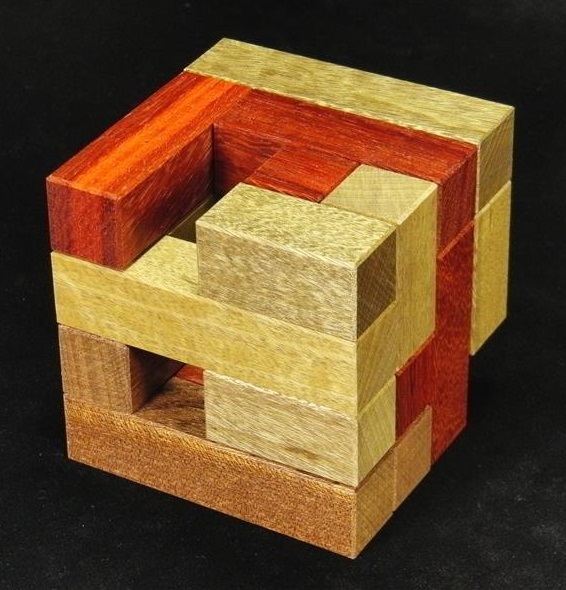
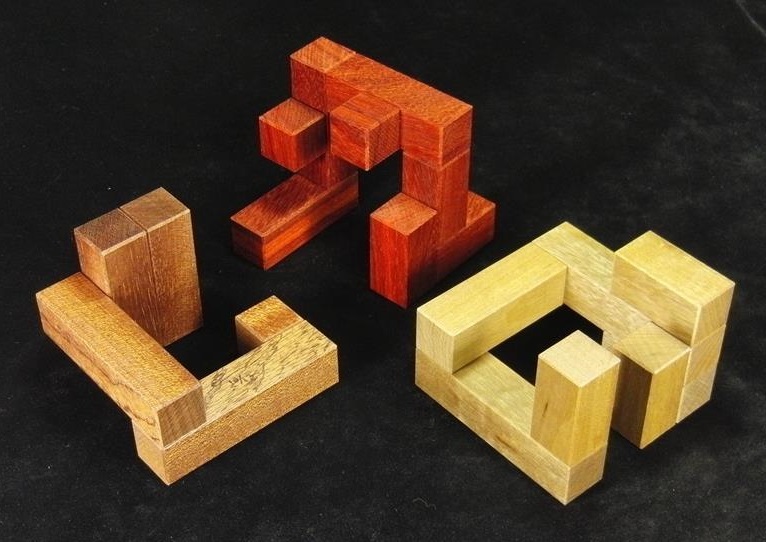
Rotator - designed by Tom Jolly, made by Eric Fuller from Mahogany, Padauk, and Imbuia Three pieces form a 4x4x4 cube with holes. [Dis]assembly requires rotations. |
|
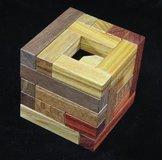


The Rattle Box, designed by Tom Jolly, made by Eric Fuller from Quilted Ambrosia Maple, Leopardwood, Padauk, Walnut, and Canarywood. A 5x5x5 cube with a hollow interior containing a 2x2x2 cube with one unit missing. |
||
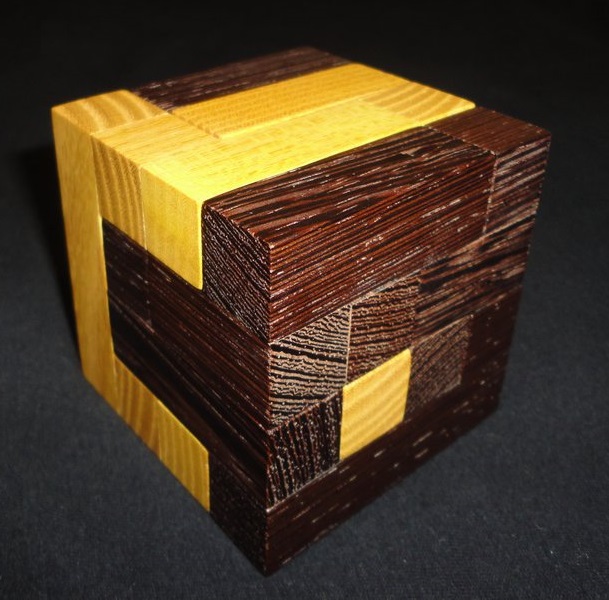
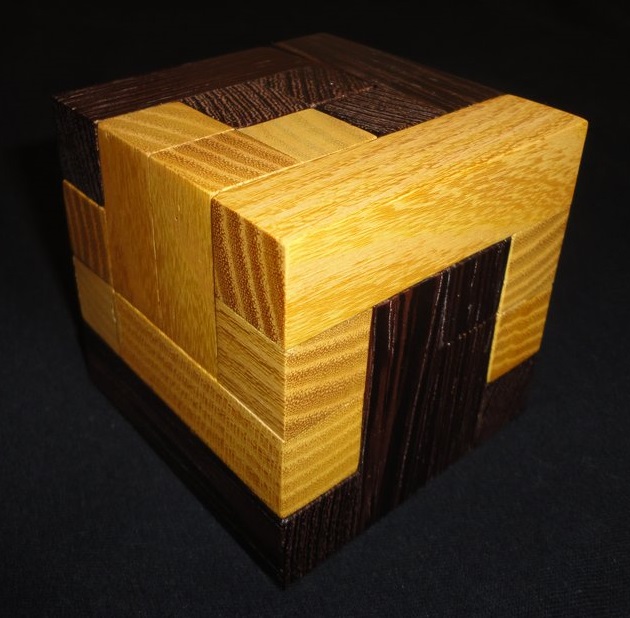
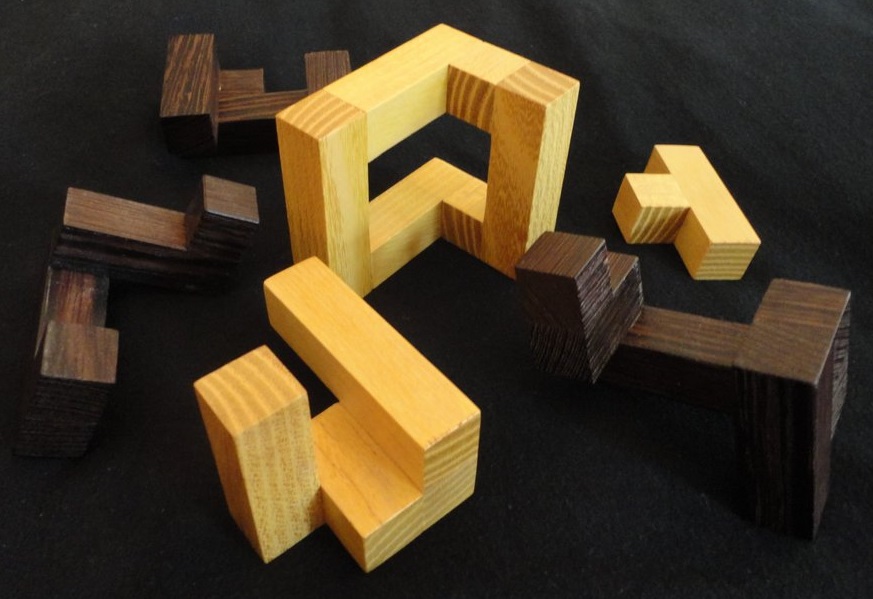
Loopy Cube - designed by Tom Jolly, made by Brian Menold from Osage Orange and Wenge. |
||
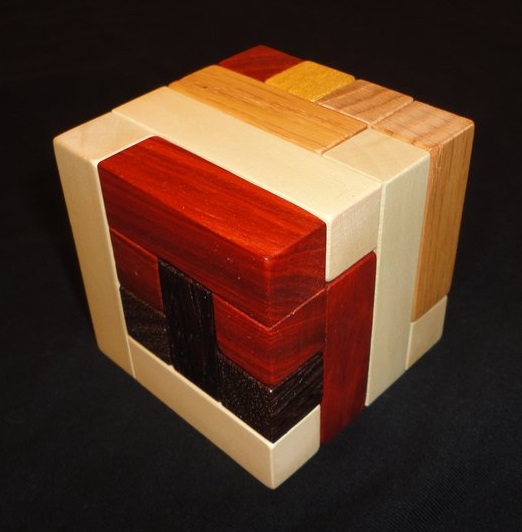
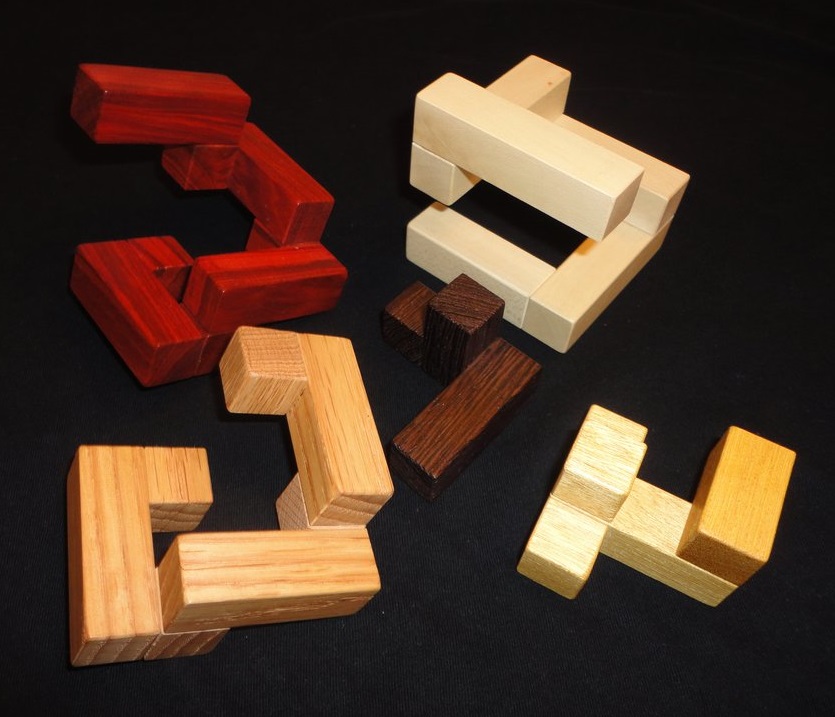
Spiral Cube No. 2 - designed by Tom Jolly, made by Brian Menold, from Wenge, Holly, Canarywood, Redheart, and Red Oak. |
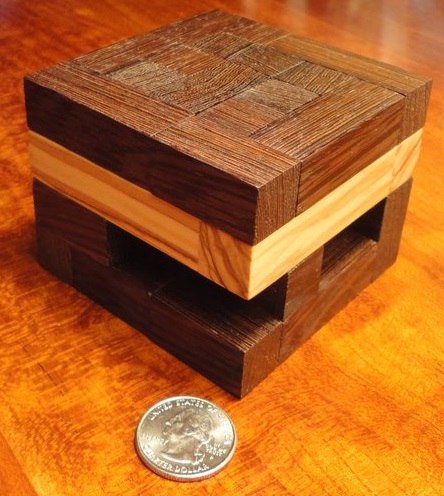
Tight Noose - designed by Tom Jolly, made by Brian Menold from Wenge and Olivewood |
|

Burr Noose - designed by Tom Jolly made by Brian Menold from Ash, Osage Orange, Iroko, Lacewood, Padauk, Tzalm, and Holly rings |
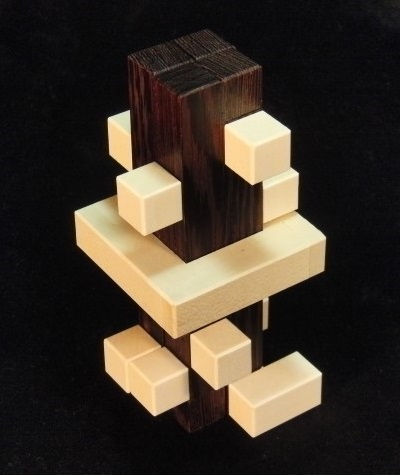
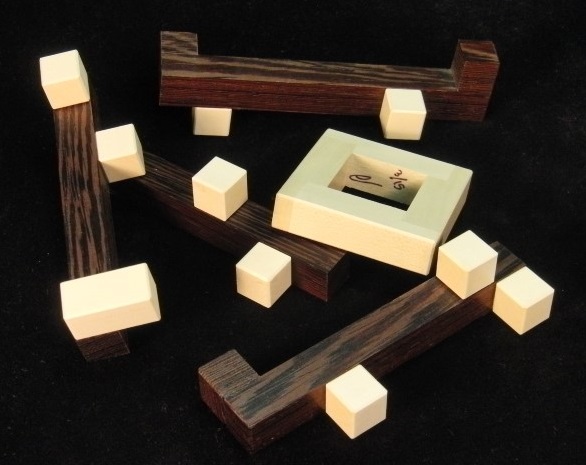
Bundle of Sticks designed by Tom Jolly made by Eric Fuller from Wenge and Holly |
|
|
|||||||||||||||||||||||||||||
|
|||||||||||||||||||||||||||||
|
|||||||||||||||||||||||||||||
|
|||||||||||||||||||||||||||||
|
|||||||||||||||||||||||||||||
|
|||||||||||||||||||||||||||||
This small group contains polycube puzzles where the pieces contain cubies joined diagonally, via some sort of "spars" - these spars can be metal, nylon, or 3D printed. The cubies must be beveled so that the spars can travel through the interstices between cubies.
|
For the longest time, my example sat in an unsolved state. During a recent inventory, I picked it up again and solved it. I took photos along the way and show them here for your edification. There are seven pieces, two of which are identical, and one of which is a unit cubie. This distinguishes the Edge Corner Cube II from the Liberal Cube, which has no unit cubie piece.
|
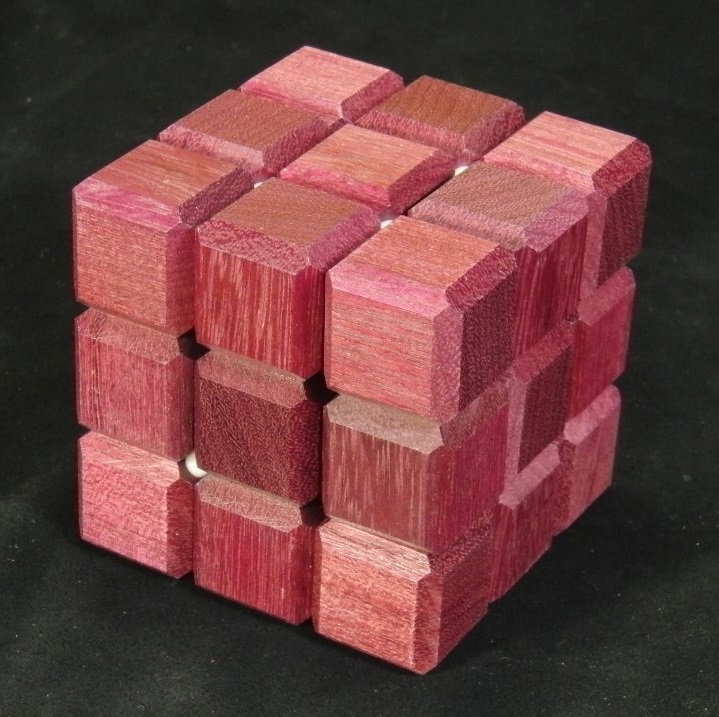
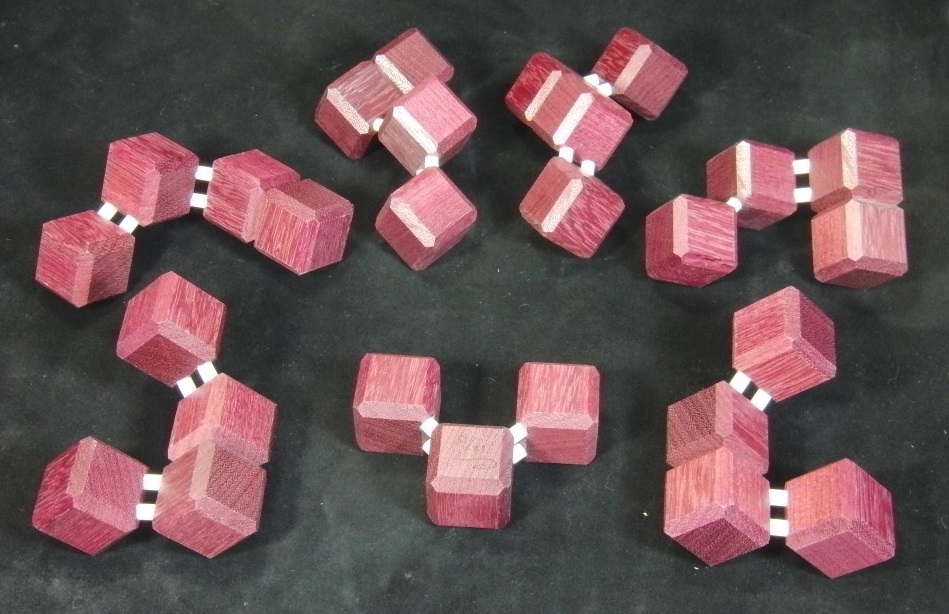
Liberal Cube designed by Markku Vesala, purchased from and made by Eric Fuller from Purpleheart and Nylon. |
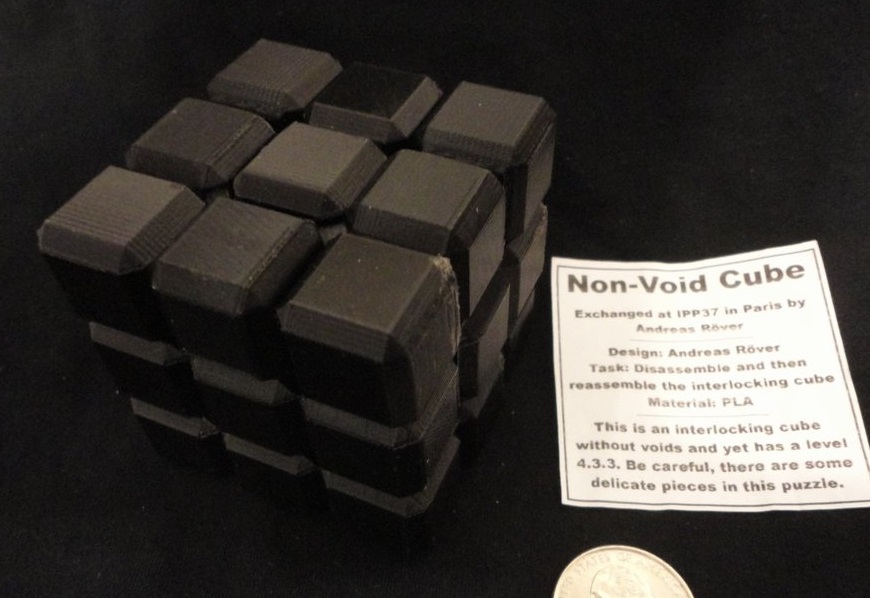
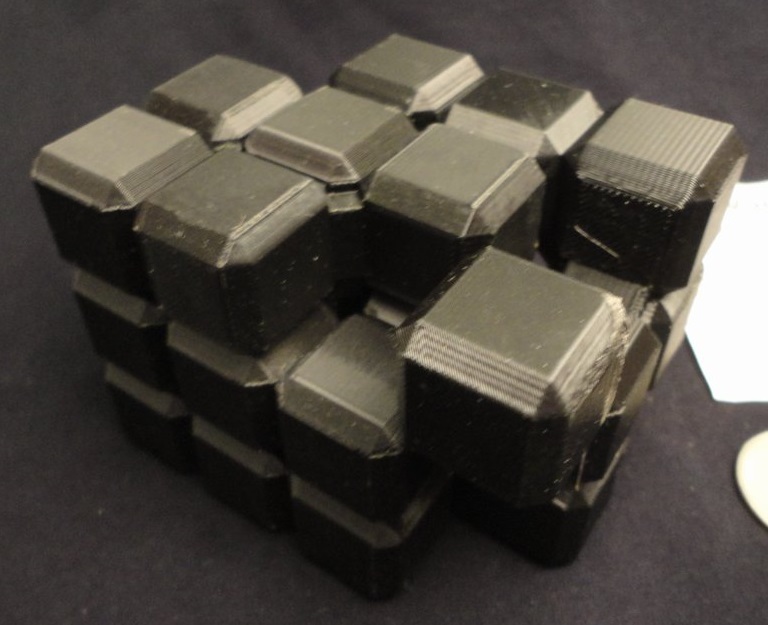
Non-Void Cube - designed by Andreas Röver Four pieces. No internal voids, yet still manages to achieve level 4.3.3! Purchased at IPP37 in Paris. |

Edge Corner Cube Variation (green) and Non-Void Cube Variation (blue) - both designed by Christoph Lohe, 3D printed by and purchased from Andrew Crowell See Andrew's Etsy shop arcWood Puzzles. Quoting Lohe from Andrew's page:
ECC Var -
I was always fascinated by Markus Goetz' Edge-Corner Cube.
NVC Var -
Markus Goetz' ECC had motivated Andreas Roever to [create] his Non-Void Cube.
|
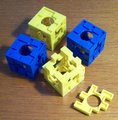
At the Jan. 2005 NYPP, I got these from Norman Sandfield, not knowing what they were. There were originally 4 blue and 4 yellow cubes, but I gave away 2 of each to various folks who wanted them. All the blues and yellows are each made of the same set of six different pieces. Since receiving a copy of the CFF newsletter issue 50 (Oct. 1999, Part 4/6), I have determined that they are all equivalent to the "Tokyo" version of the Wirrel Warrel, also known as "Happy Cubes." |


Inexpensive puzzle pieces can be cut from dense foam mats. Several varieties of puzzles in the "Wirrel Warrel"/"Happy Cubes"/Snafooz family have been implemented using this material. Happy Cubes were invented by Dirk Laureyssens - read more at the Cricro site. Cricro provides a pair of pentagonal faces. Happy Cubes are being marketed by Happy n.v. |
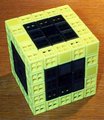
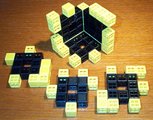
Inspired by reading about Happy Cubes in the CFF newsletter and following information on Jurgen Koeller's Happy Cubes page, I made my own set of generic pieces from LiveCube. I used 8 cubes each for the 6 centers (in black) and an additional total of 44 yellow cubes to be distributed about the edges, as required by the various piece configurations. |
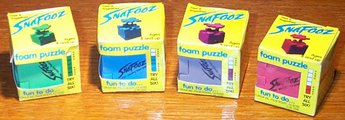
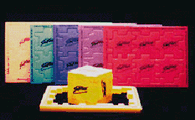
Snafooz makes 6-piece cube puzzles where the pieces are cut from foam slabs. They are similar to Happy Cubes, but the Happy Cubes are based on a 5x5 square face, while the Snafooz are based on a 6x6 square. Snafooz are often issued as corporate promotional give-aways, and I have accumulated several from various trade shows. I also have a promotional puzzle based on a 7x7 square. |
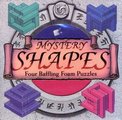
This is "Mystery Shapes" designed by Oscar van Deventer, issued in 1993 by Binary Arts. Four cubical puzzles made of six foam pieces each, but with extra confusing ridges running around the faces. |
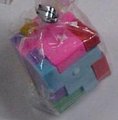
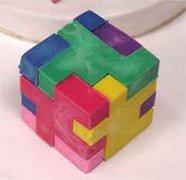
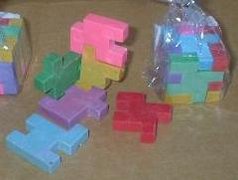
The "Eraser Cube" is made from eraser-type rubber material, and is based on a 4x4 square side. |
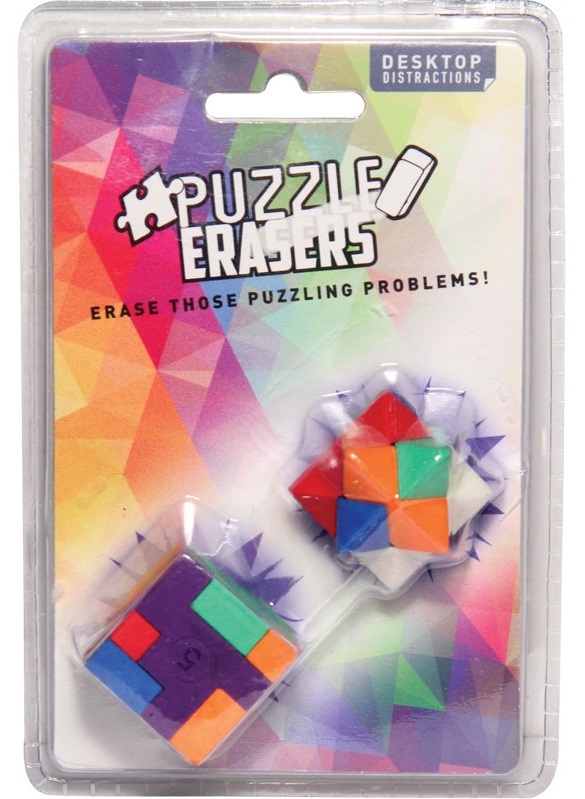
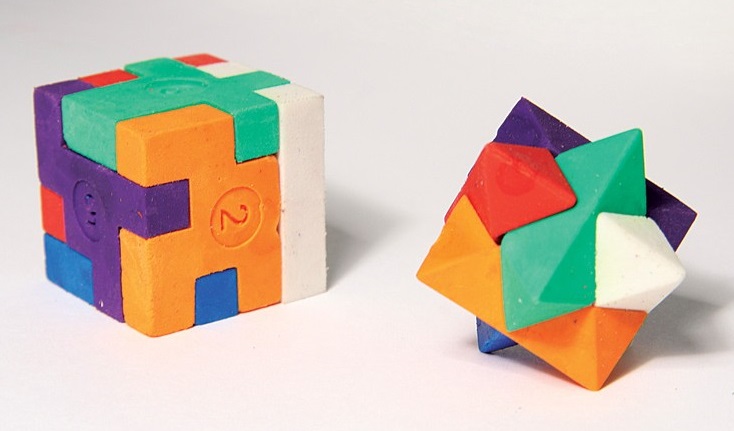
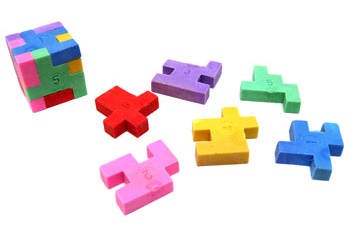
Puzzle Erasers Set Paladone Products Ltd. |
||
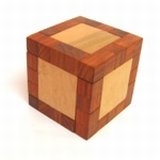
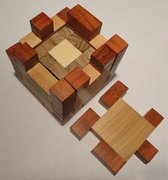
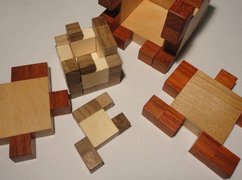
Take Me Apart - designed by Bruce Viney, made by Brian Menold at Wood Wonders, from Padauk and Cherry A side-5 cube with a smaller nesting side-4 cube inside. |
||
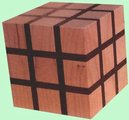 Triple Trouble Purchased from Potty Puzzles. |
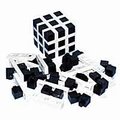 Black and White by Kubi Games Purchased from GPP. |
 Double Trouble Purchased from Pentangle. I really like this one - six different pieces loosely interlock. Each consists of a plank and two or more half-cubes attached in various orientations. They can be assembled using logical deduction. |
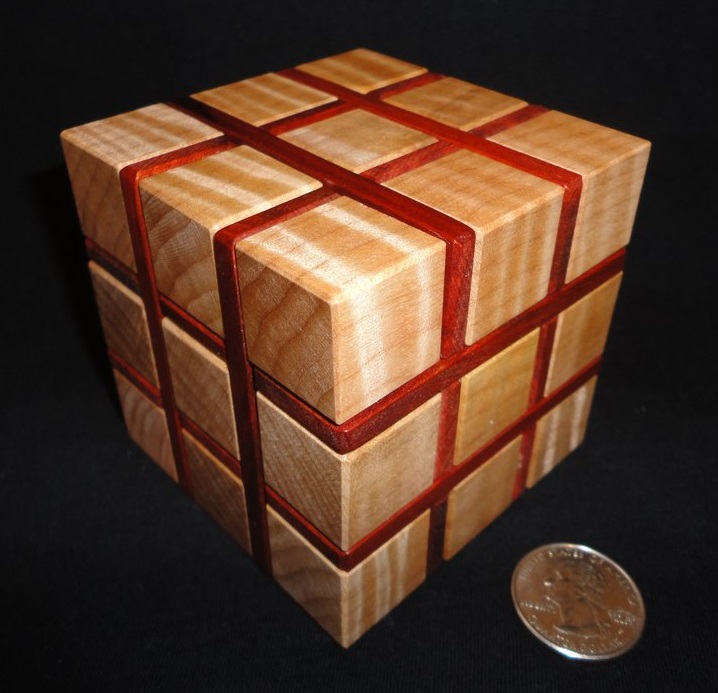
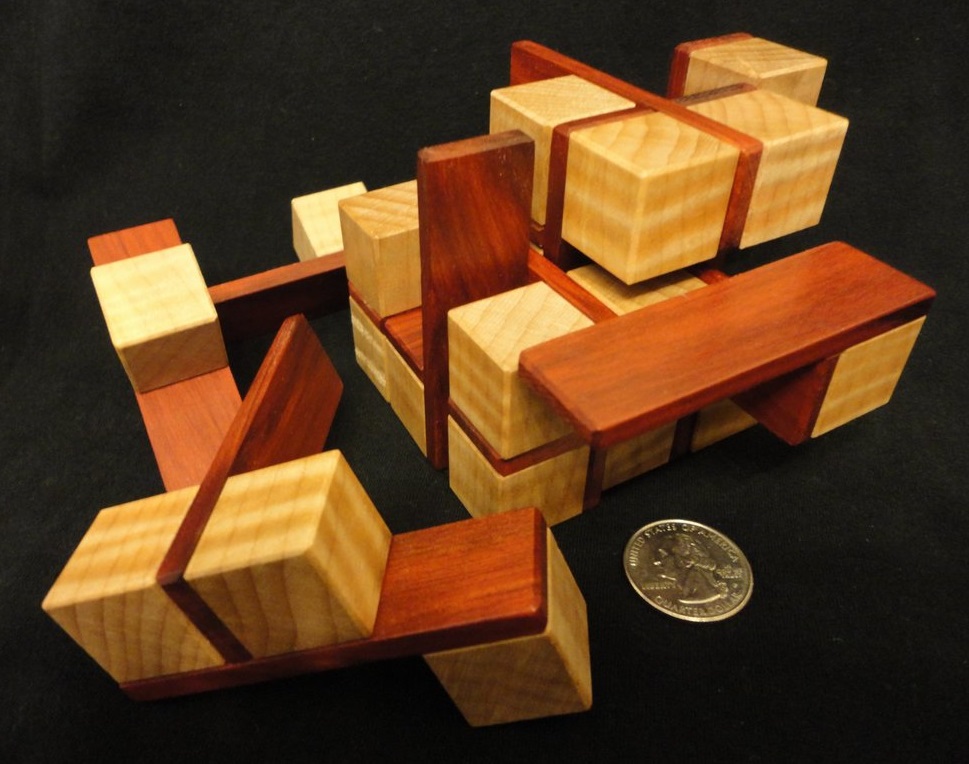
Red Planks designed by Jos Bergmans. Nine pieces, made by Brian Menold from Redheart and Maple. |
||

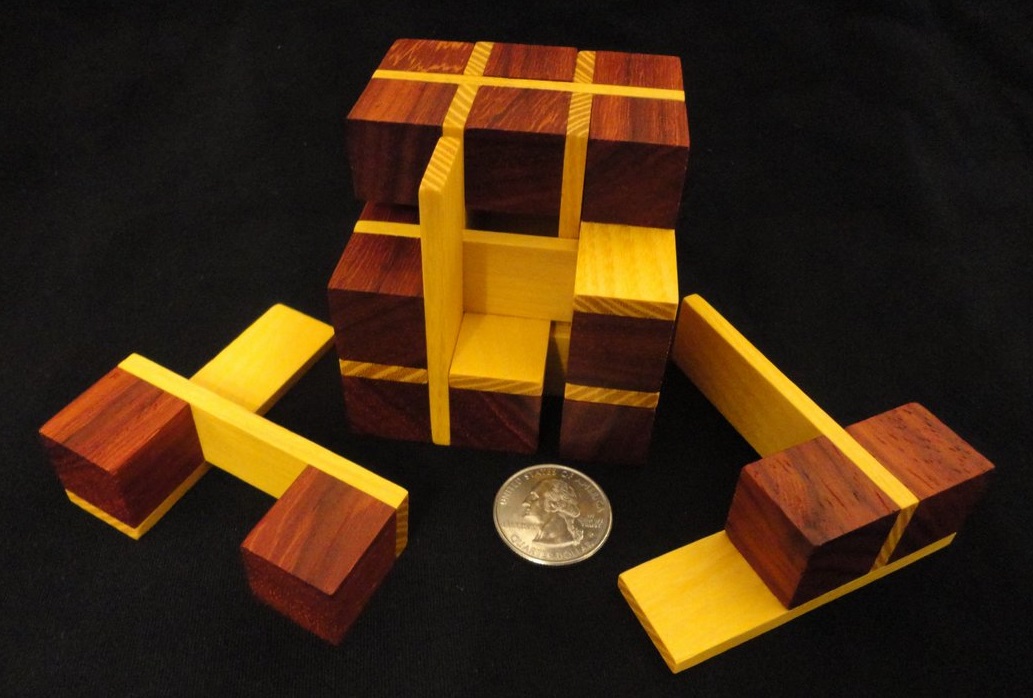
Blue Planks - designed by Jos Bergmans, made by Brian Menold from Padauk and Osage Orange |
||


I am the proud owner of Corner Cube #28 by Lee Krasnow.
It has six dissimilar pieces which assemble only one way. It is not easy to find the sliding axis to disassemble the puzzle! My instance is made from beautifully figured Tulipwood, Brazilian Kingwood, Cocobolo, and Bocote. I bought this directly from Lee in 2003.


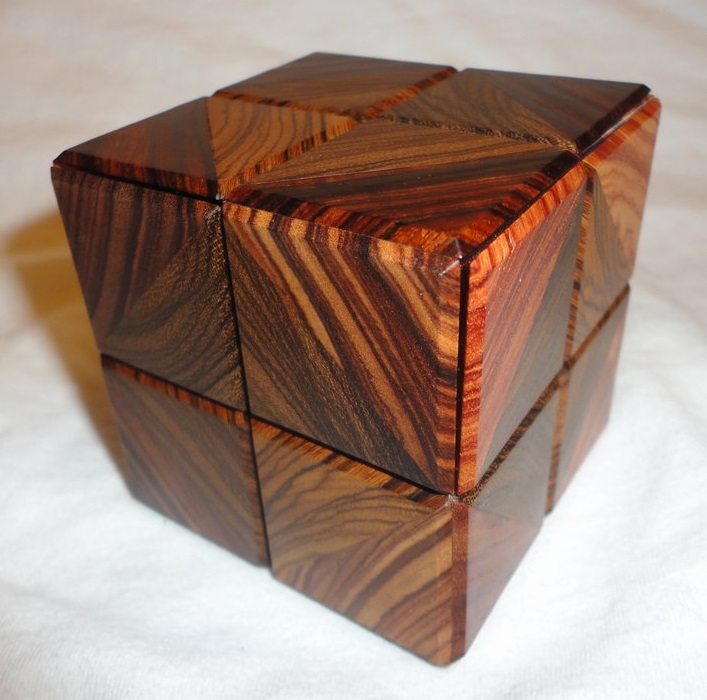
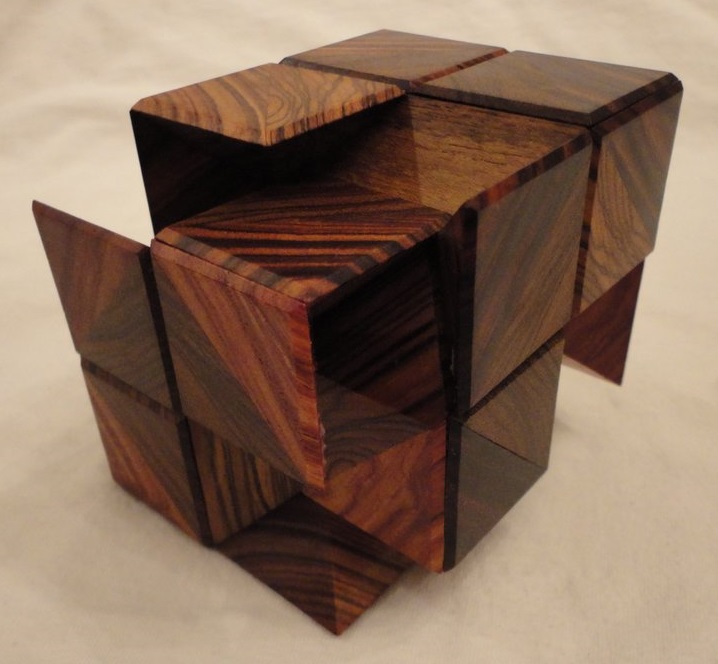
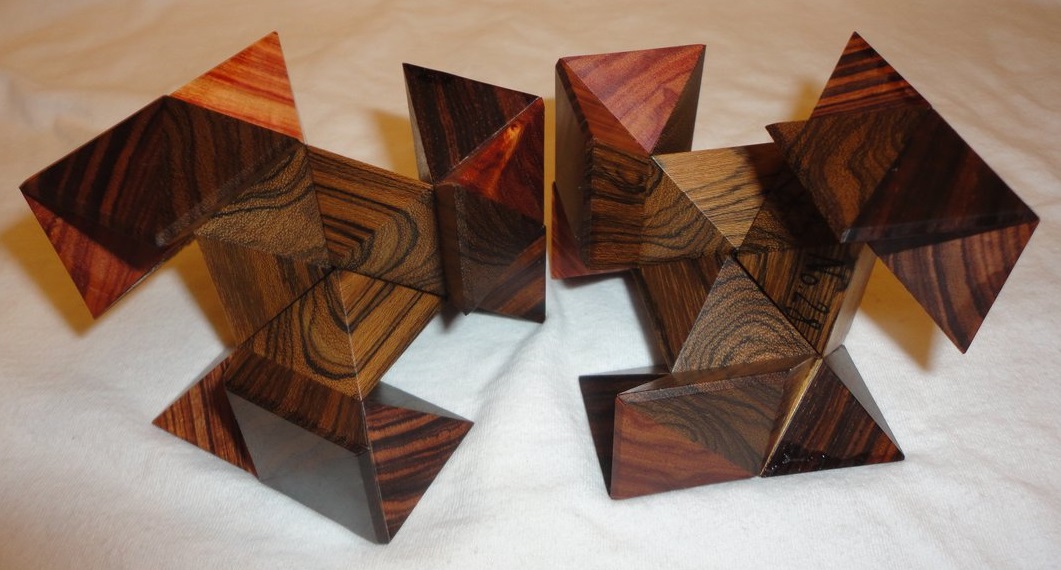
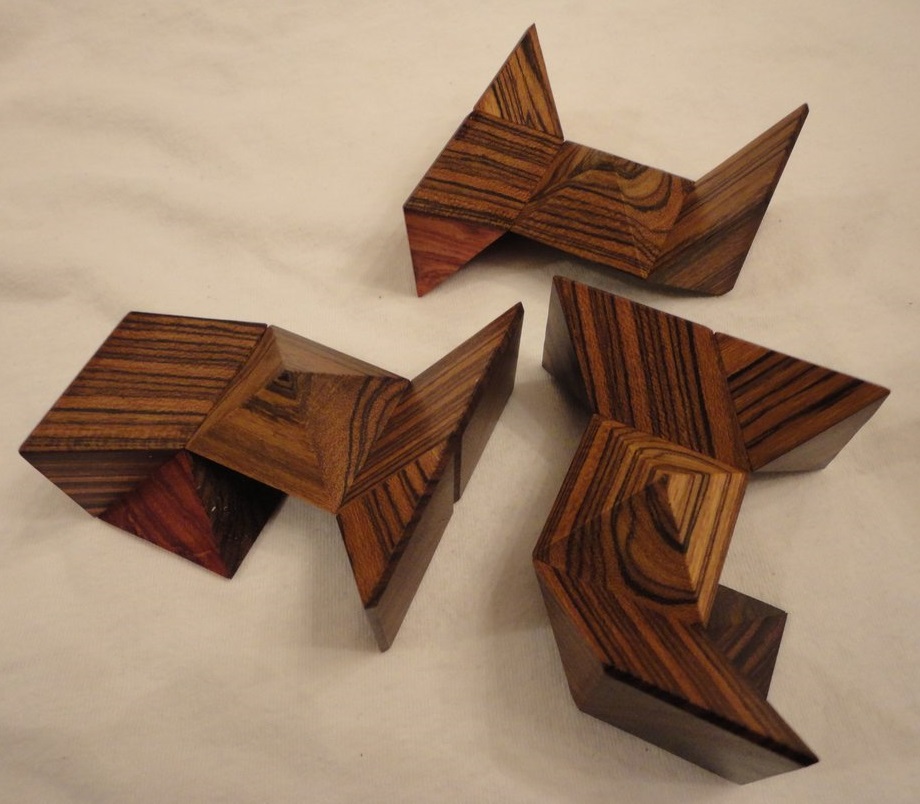
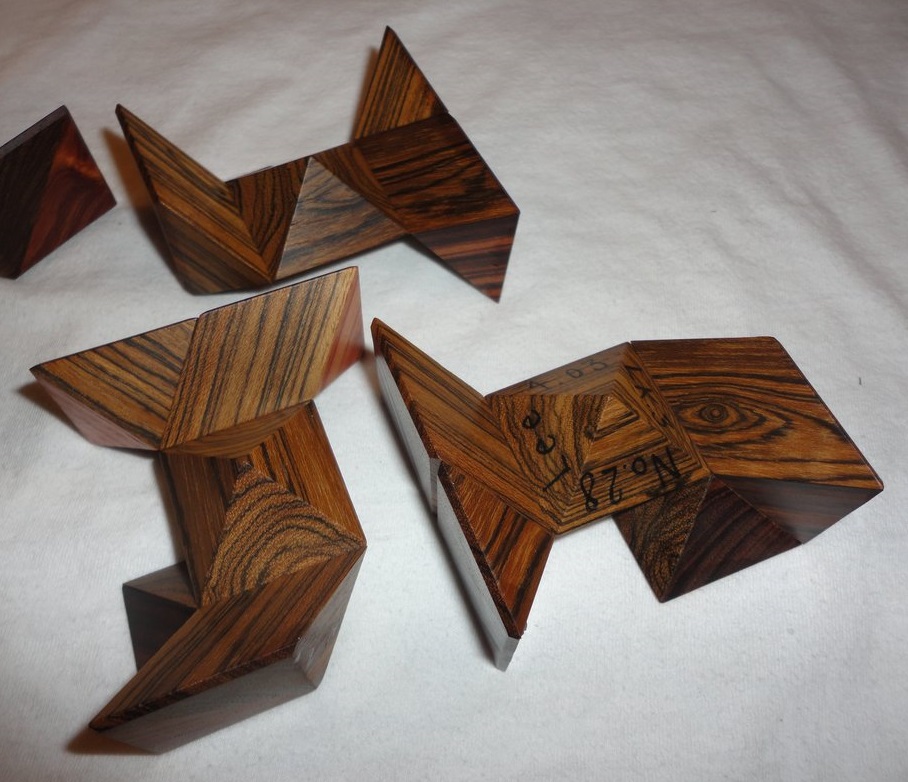

One of my favorites is this "Ribbon Keyvos" made for me by Michael Toulouzas of Greece:
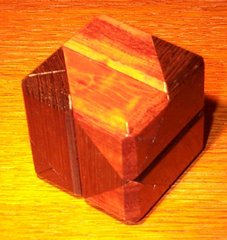 My Keyvos is made of Bois de Rose, Wenge, and Mahogany |
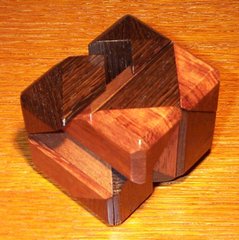 It's not easy to find the right slide... |
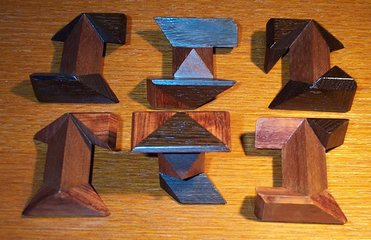 There are six distinct pieces |
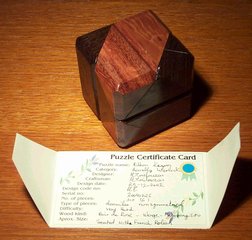 It comes with a certificate |
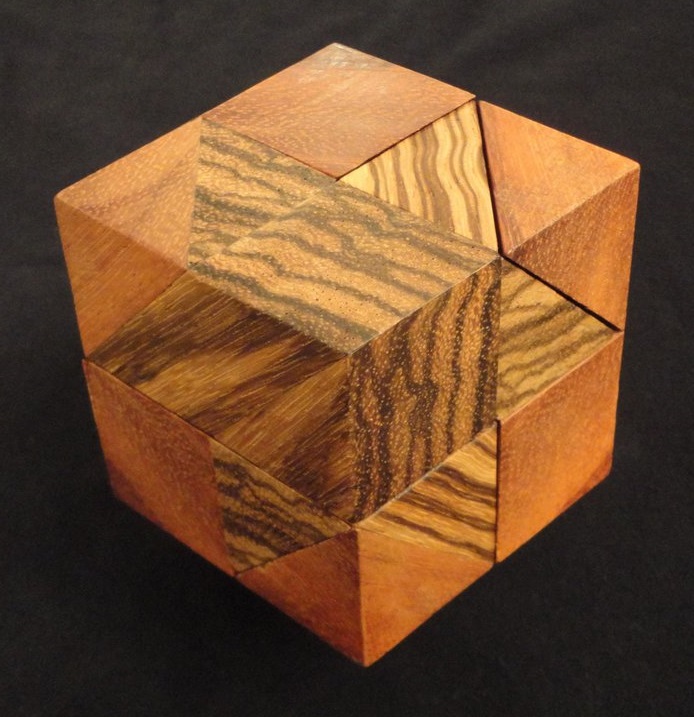
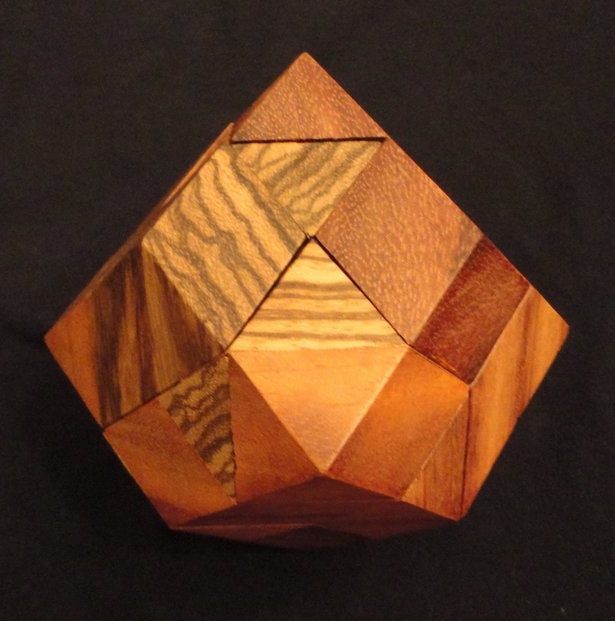
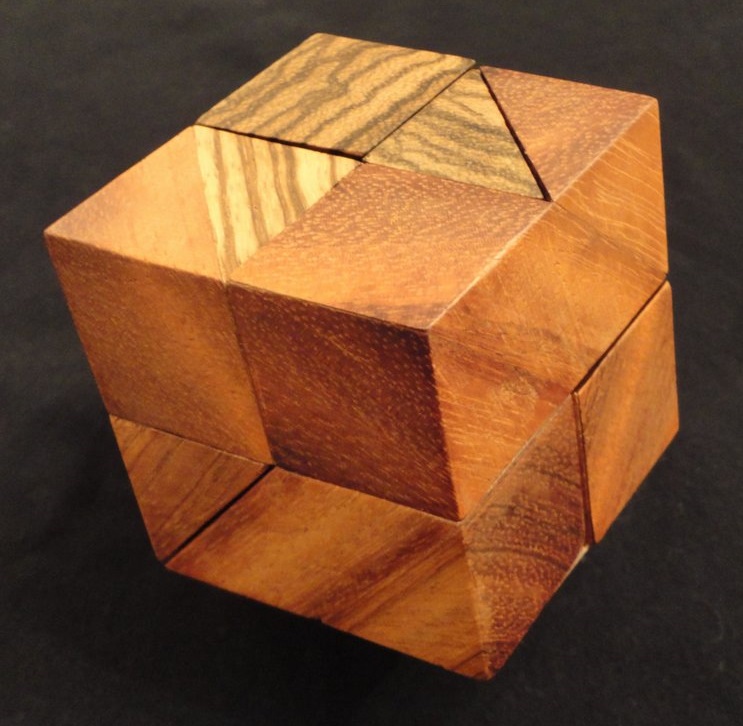
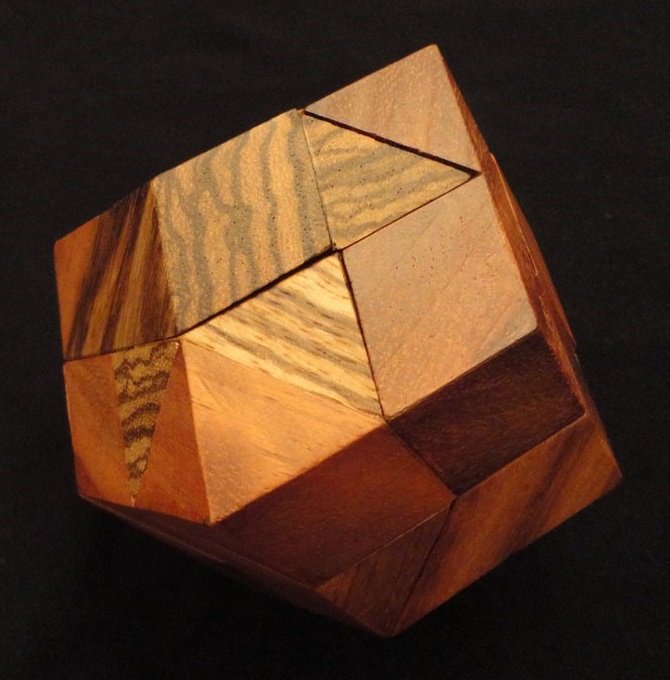
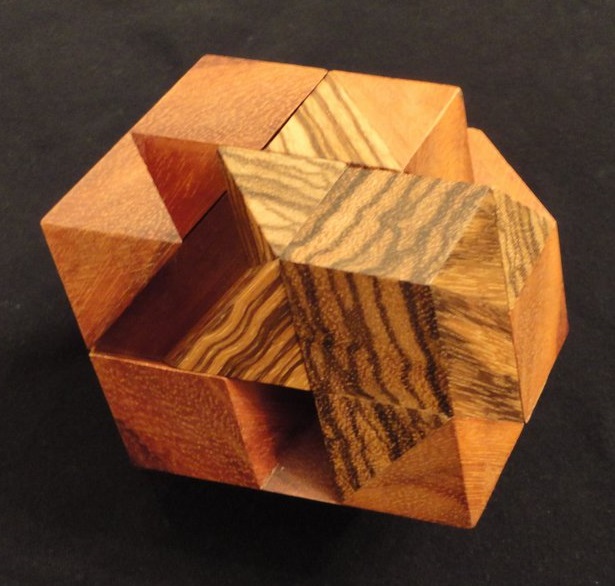
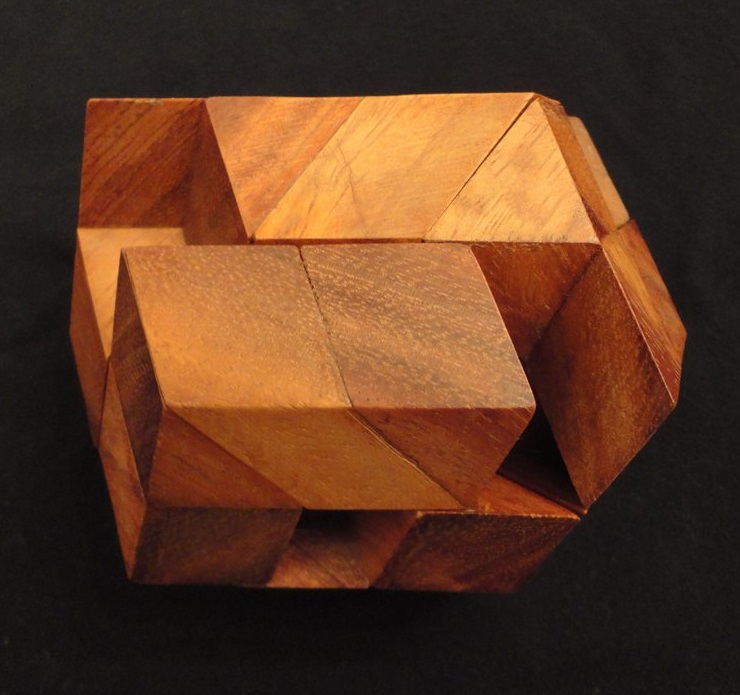
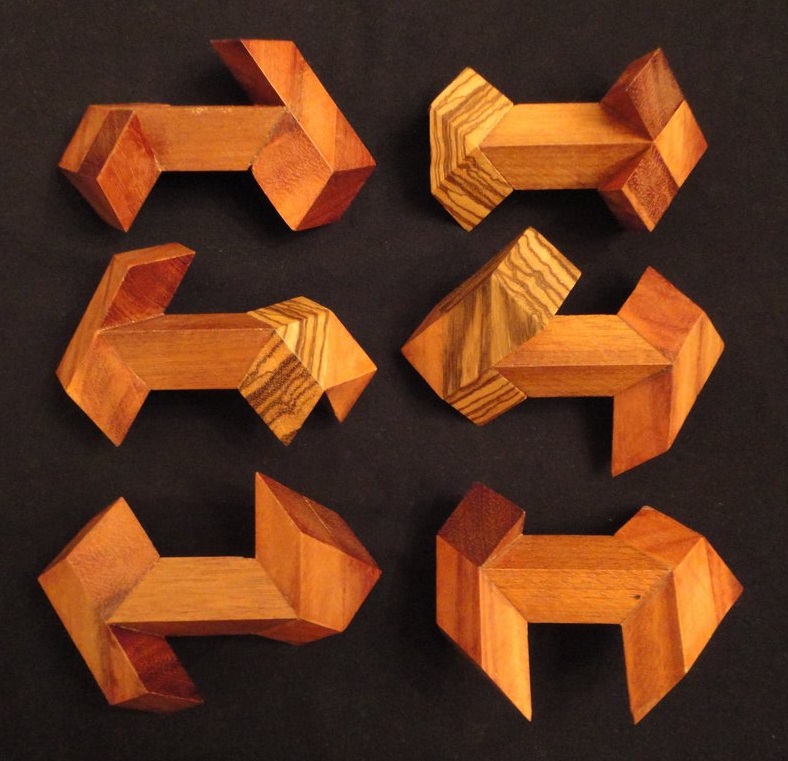




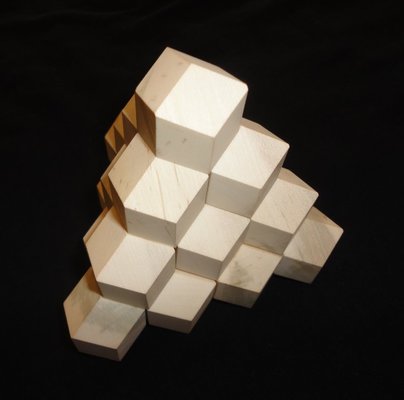
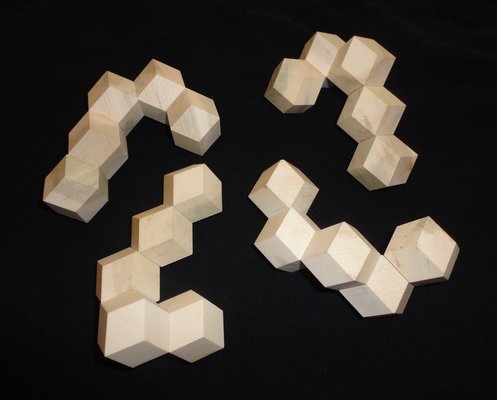
The Four Piece Pyramid designed by Stewart Coffin, made by Brian from Holly.
The units are rhombic dodecahedra.
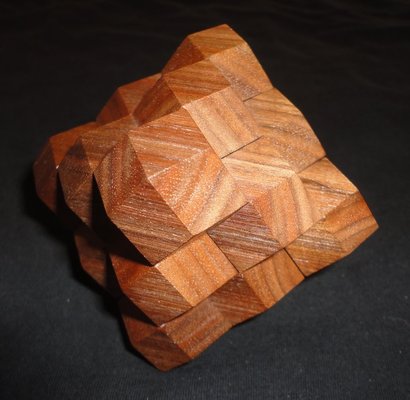

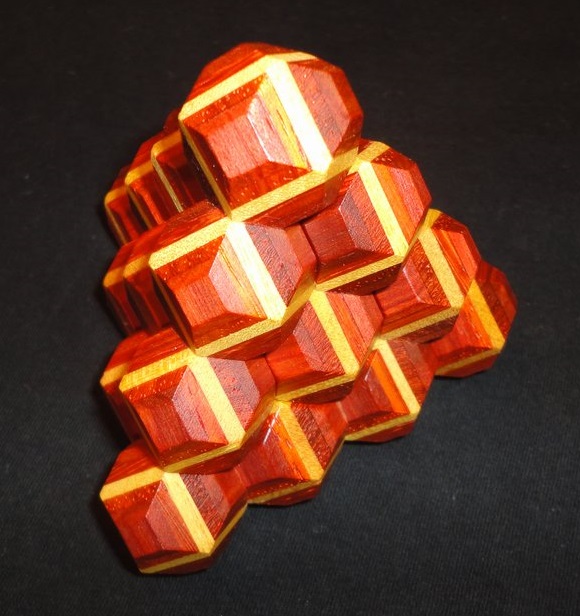
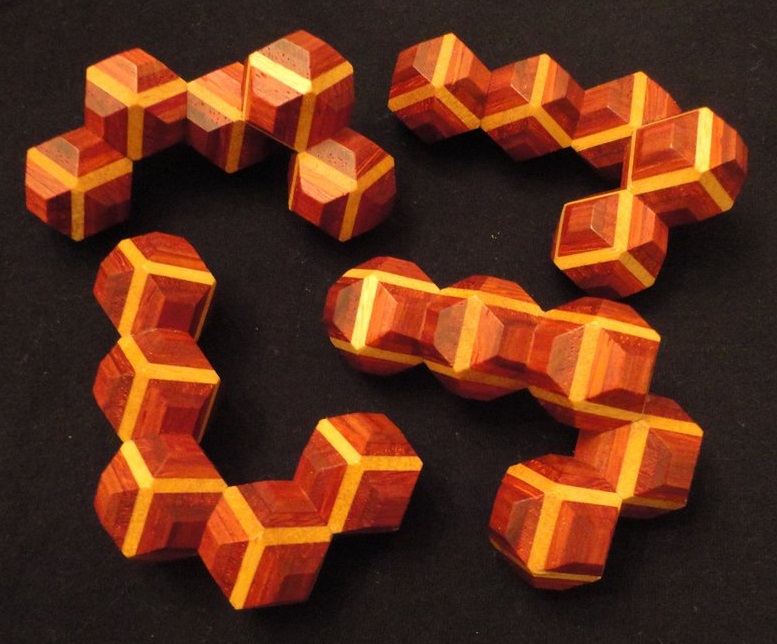
Four Piece Pyramid designed by Stewart Coffin
beautifully made by Brian Menold
from Redheart, Padauk, and Yellowheart
A very tricky assembly of four pieces!
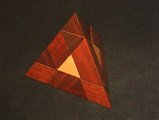
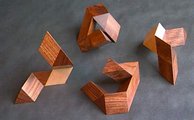 4-piece Tetrahedron |
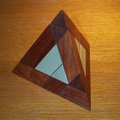
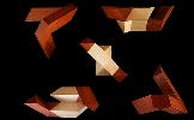
5-piece Tetrahedron Padauk and Beech |
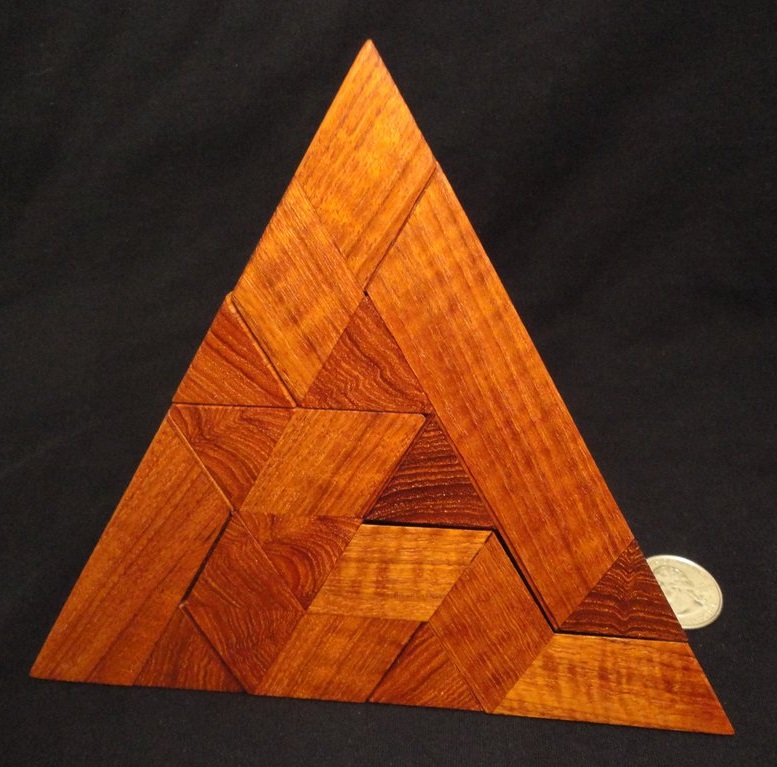
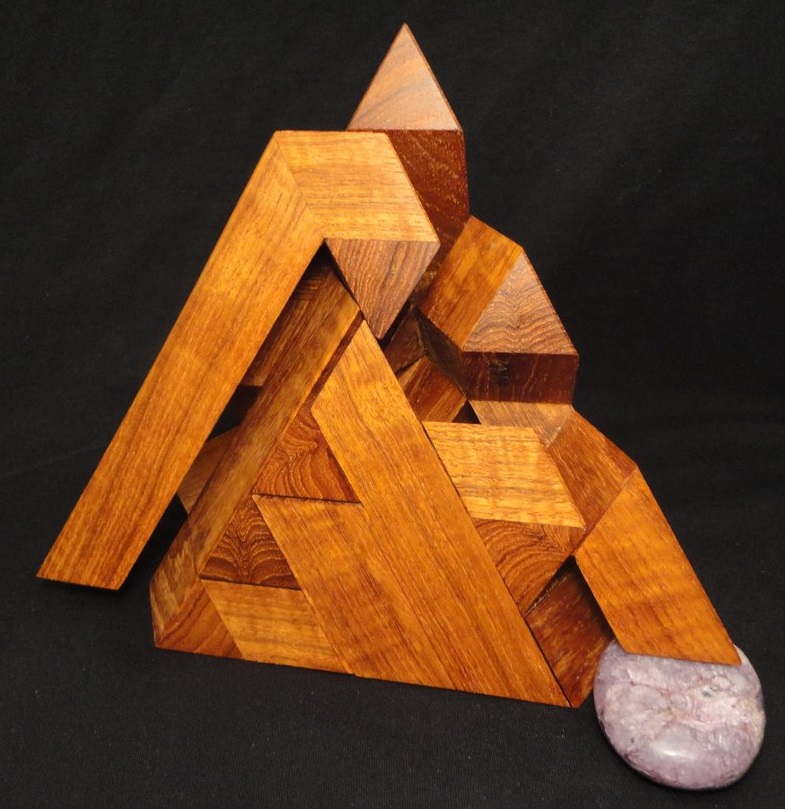
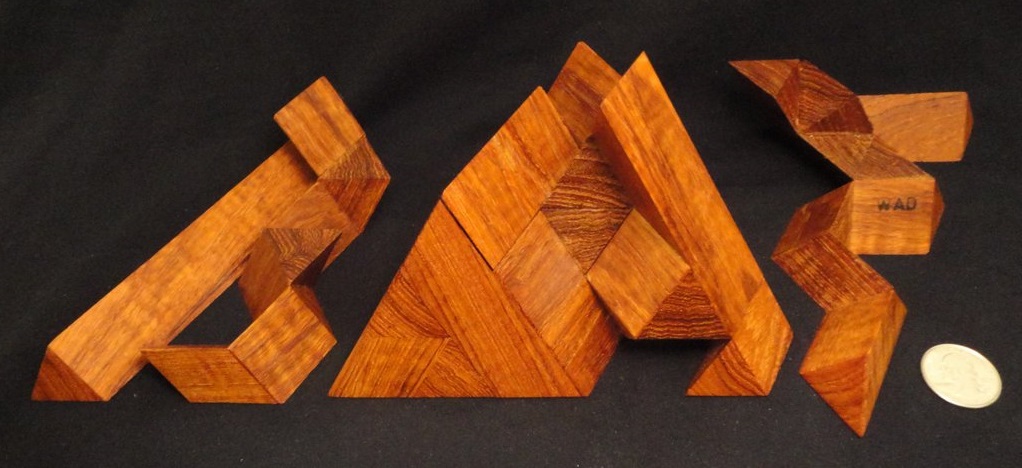

Six Piece Tetrahedron - designed and made by Wayne Daniel I had been after this one for a while, to round out my set of tetrahedrons by Wayne Daniel - and it does not disappoint! Beautifully made and quite a challenge. I love it! Just look at those intricate pieces! How did Wayne manage this?? |
|
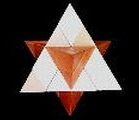
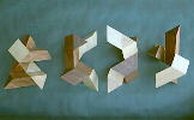
Dual Tetrahedron |
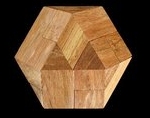
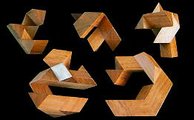
5-piece Truncated Cube The Truncated Cube is surprisingly hefty, and very nicely finished. Very unusual piece shapes. Brazilian Cherry (Jatoba) |
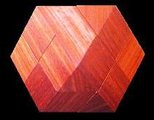
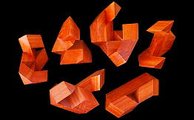
6-piece Truncated Cube Padauk |
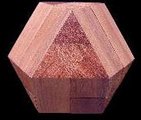

7-piece Truncated Cube Jarrah For me this has been the most difficult of the three truncated cubes. |
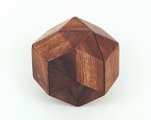
Golden Rhombic Icosahedron |
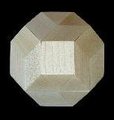
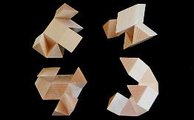
Sequential Truncated Octahedron Maple |

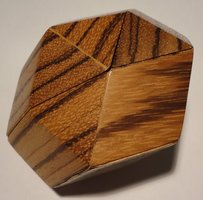
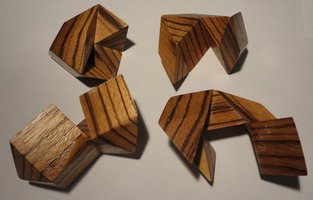

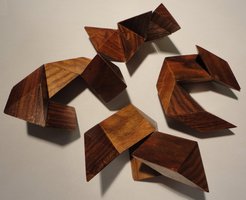 I found a Tigerwood version of Wayne Daniel's Golden Rhombic Icosahedron.
I found a Tigerwood version of Wayne Daniel's Golden Rhombic Icosahedron.
I already had another version I believe to be the IPP17 exchange gift from Abel Garcia, made from Chechin wood. They have different pieces. John Rausch describes the full set on his PuzzleWorld website. Each puzzle has only four pieces, but they are difficult to take apart and to assemble. The Zebrawood version has a slightly rounded interior edge to permit [dis]assembly. |
|
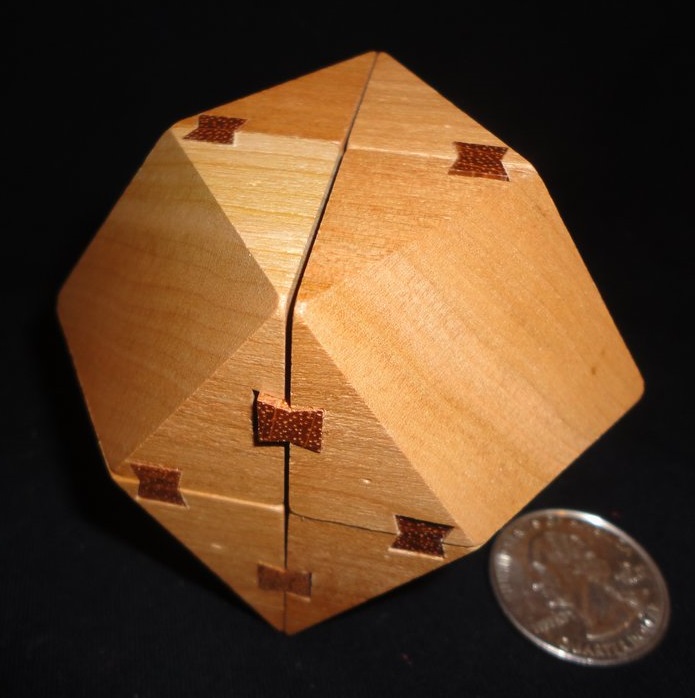
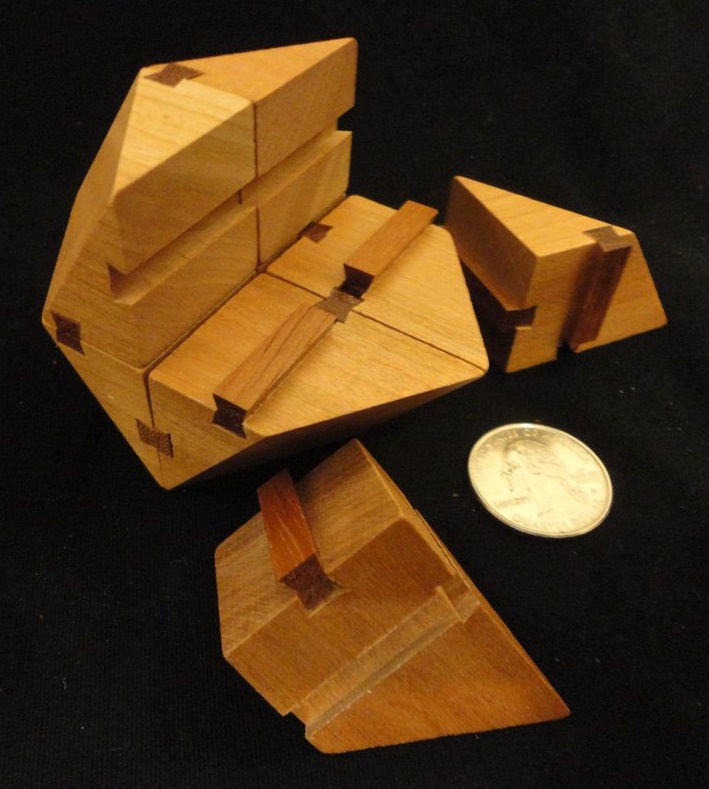
Twelve Bowties 2 - designed and made by Wayne Daniel exchanged at IPP35 by Marti Reis |
|
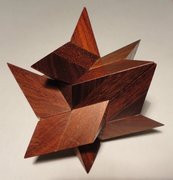
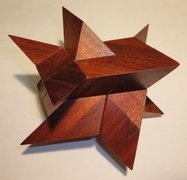
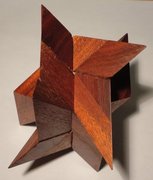
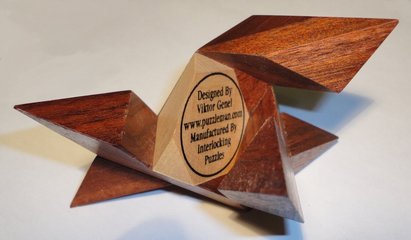
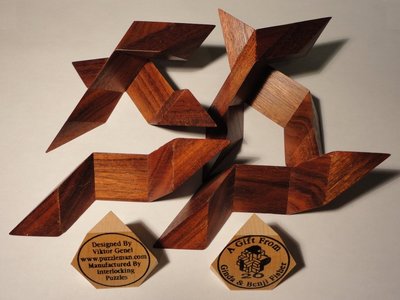
This puzzle is called Pulsar. It is based on a design by Victor Genel, modified by Benji and Ginda Fisher, and served as the Fishers' exchange puzzle at IPP 20. It was made by Wayne Daniel. In the modified design, two pieces are fused to two others, and the cubic central cavity is occupied by a bisected cube. |
|


 It is difficult to overstate the contributions of Stewart Coffin to mechanical puzzle design.
In fact, it is difficult to decide where in this website to put a subsection devoted to him, since his ideas have become
so widely applied across the field.
Many of his primary contributions do lie in this area of interlocking polyhedral assemblies.
Stewart coined the term
"Ap-Art" to describe
his "sculptures that come apart."
In the 1970's through 1990's Stewart ran a puzzle club of which many of us including me can only wish we had been members.
With the publication of his The Puzzling World of Polyhedral Dissections
(hosted on John Rausch's PuzzleWorld site),
Stewart literally
"wrote the book"
on entire classes of interlocking puzzles that simply did not exist before he thought of them.
Moreover, Stewart has been incredibly generous in allowing puzzle enthusiasts worldwide to utilize his
designs without financial impediment.
For these and other reasons, in 2006 Stewart became the first recipient of the IPP Nob Yoshigahara Award
for "Lifetime Achievements in Design, Craftsmanship, and Popularizing Mechanical Puzzles."
Stewart has a new book out in 2007,
Geometric Puzzle Design.
Several other related books are described, offered, and/or hosted online at
John Rausch's PuzzleWorld site.
I've managed to acquire a few puzzles designed by
Stewart Coffin.
Some are originals bearing his mark "STC" while the rest are copies of his designs made by other skilled woodworkers.
Based on the compendium called Ap-Art, written by Stewart and produced by John Rausch,
I put together the diagram below which is my attempt at showing a "family tree" of Stewart's interlocking puzzle designs.
It is difficult to overstate the contributions of Stewart Coffin to mechanical puzzle design.
In fact, it is difficult to decide where in this website to put a subsection devoted to him, since his ideas have become
so widely applied across the field.
Many of his primary contributions do lie in this area of interlocking polyhedral assemblies.
Stewart coined the term
"Ap-Art" to describe
his "sculptures that come apart."
In the 1970's through 1990's Stewart ran a puzzle club of which many of us including me can only wish we had been members.
With the publication of his The Puzzling World of Polyhedral Dissections
(hosted on John Rausch's PuzzleWorld site),
Stewart literally
"wrote the book"
on entire classes of interlocking puzzles that simply did not exist before he thought of them.
Moreover, Stewart has been incredibly generous in allowing puzzle enthusiasts worldwide to utilize his
designs without financial impediment.
For these and other reasons, in 2006 Stewart became the first recipient of the IPP Nob Yoshigahara Award
for "Lifetime Achievements in Design, Craftsmanship, and Popularizing Mechanical Puzzles."
Stewart has a new book out in 2007,
Geometric Puzzle Design.
Several other related books are described, offered, and/or hosted online at
John Rausch's PuzzleWorld site.
I've managed to acquire a few puzzles designed by
Stewart Coffin.
Some are originals bearing his mark "STC" while the rest are copies of his designs made by other skilled woodworkers.
Based on the compendium called Ap-Art, written by Stewart and produced by John Rausch,
I put together the diagram below which is my attempt at showing a "family tree" of Stewart's interlocking puzzle designs.
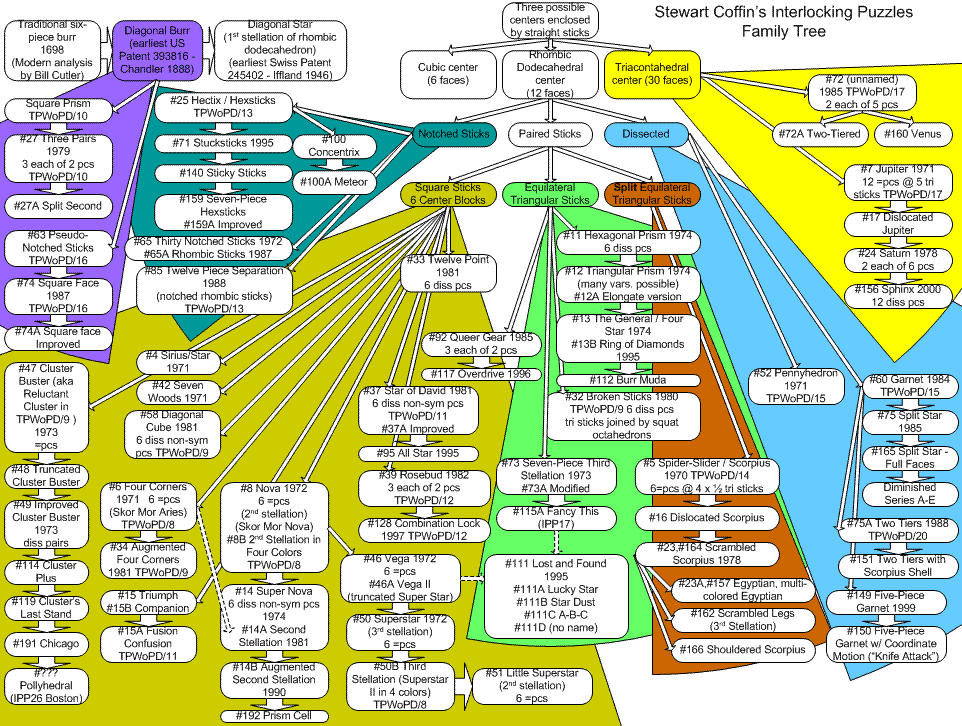
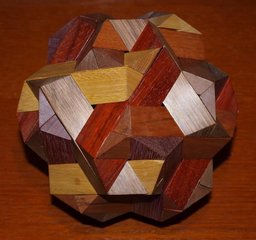
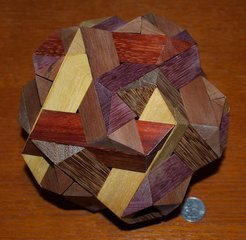
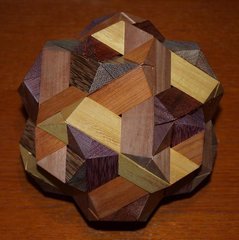
This is Jupiter - designed by Stewart Coffin, and perhaps his most iconic work. See U.S. Design Patent 232571 Coffin 1974 This instance was made by French craftsman Maurice Vigouroux This Jupiter came in 60 unit pieces, 10 each of six colors. Five unit pieces assemble to make a "star" and 12 such stars go together, in two halves of six stars apiece, to form the puzzle. The colors must be distributed such that colored pieces mate, and all pieces of a given color run parallel. |
||||
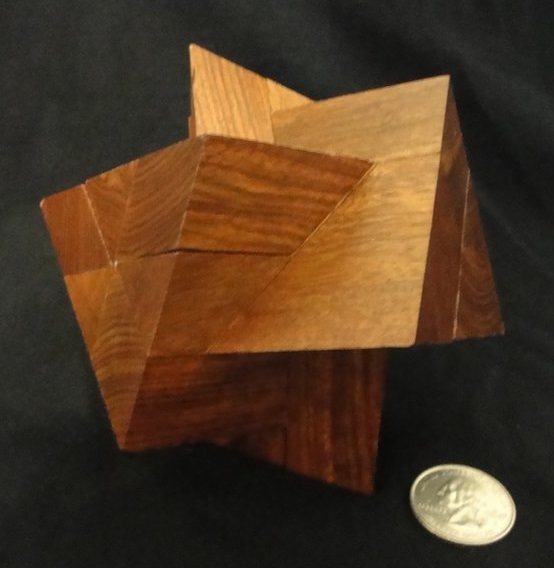
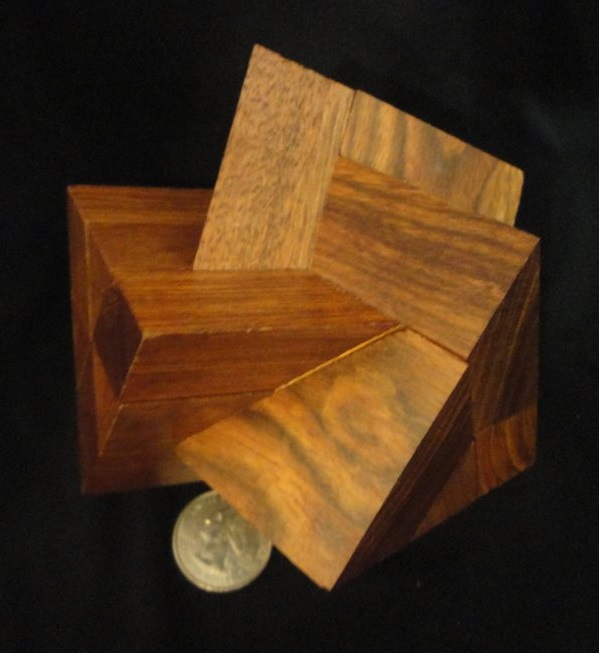
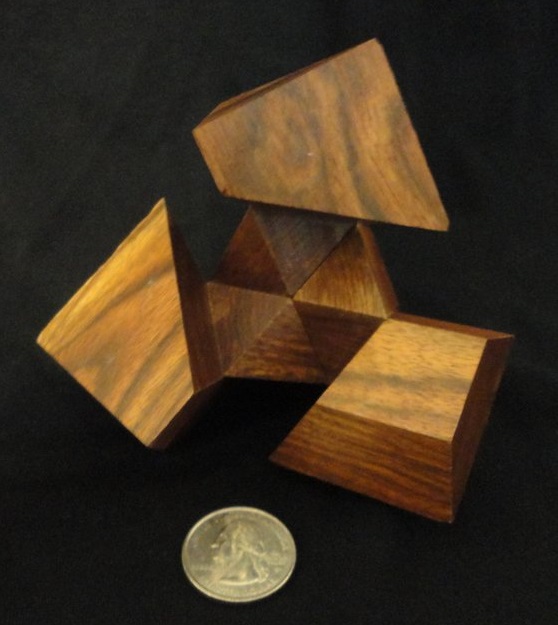

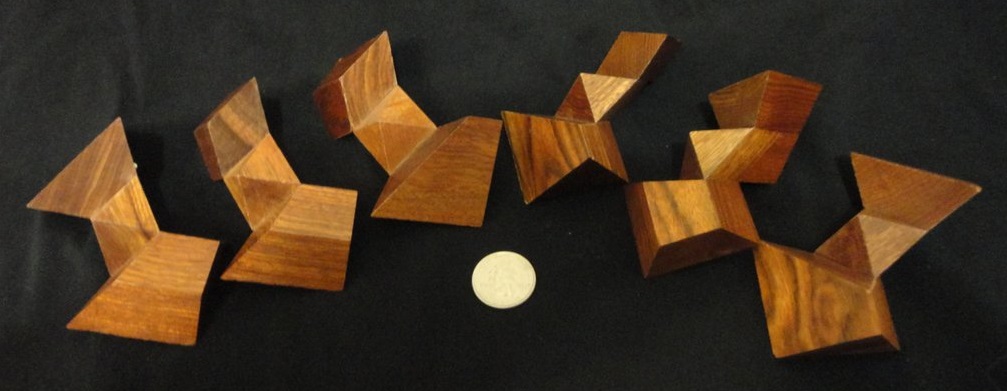
Triangular Prism (#12) - designed by Stewart T. Coffin made by Wayne Daniel |
||||
|

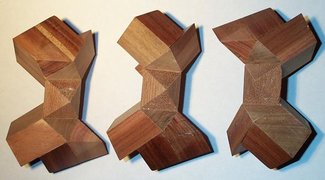
This is a Double Triangular Prism, based on the Triangular Prism #12. This instance was made by Pelikan - I obtained it from Bernhard Schweitzer. Shown assembled, beginning disassembly, in two halves, and in six dissimilar, asymmetric pieces. |
||||
|
||||
|
|
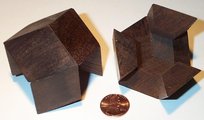 Perhaps one of Stewart's best-known designs is the simple two-piece Pennyhedron (52). I purchased this one made of Wenge from Stewart at IPP26. |
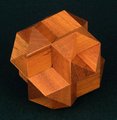 Fancy This! (115-A) made by Interlocking Puzzles |
||
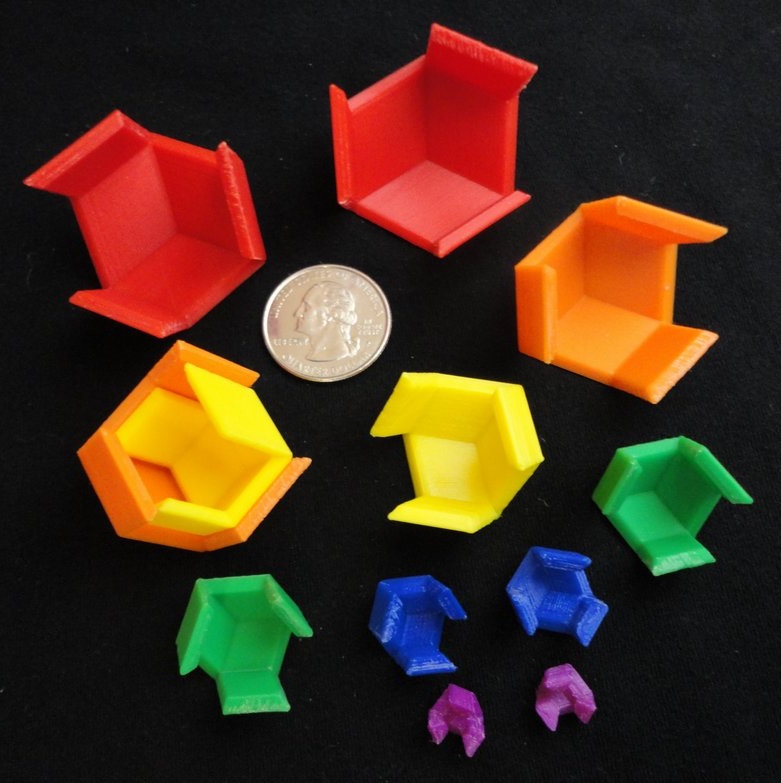
Russian Balls (6-color set) - a Matryoshka nesting of Stewart Coffin's Pennyhedron, made by and purchased from Lee Krasnow. |
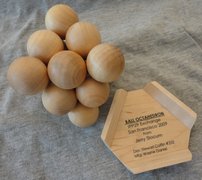 Ball Octahedron designed by Stewart Coffin and made by Wayne Daniel exchanged by Jerry Slocum at IPP32. Jerry's actual exchange puzzle was It's Nuts, a copy of the Screwy Screw by Scott Elliott. Since I already have a copy, Jerry was kind enough to substitute his puzzle from IPP29. |
|||
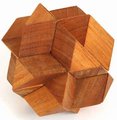 Prism Cell (192) STC 2003 purchased from Stewart at IPP26 |

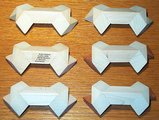 Polly-Hedral was made by Stewart in 2006 and was Jerry Slocum's exchange puzzle at IPP26. |
|
||
|
Fellow puzzler John Rausch attends RPP and has several times
very generously held a round-robin puzzle give-away. I scored one of Lee Krasnow's 3D printed examples of Stewart Coffin's Twelve-Piece Separation puzzle. Thanks, John!
|
||||
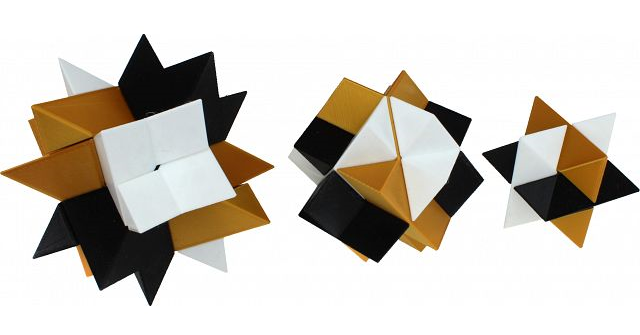
Stellation Set - by Lee Krasnow, purchased at PuzzleMaster.ca |
||||
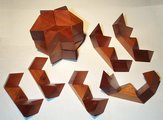 Star of David - Improved (37A) six pieces unknown craftsman |
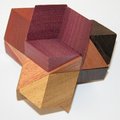 Four Corners (6) made by Thomas Moeller See U.S. Patent 3885794 - Coffin 1975. |
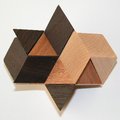 Triumph (15) made by Thomas Moeller |
||
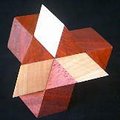

Fusion Confusion (15-A) made by Interlocking Puzzles. |
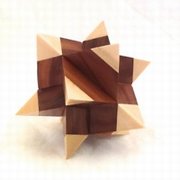
Augmented Stellation - designed by Stewart Coffin (#46 - Vega), made by Brian Menold from Plum and English Sycamore woods. A simple puzzle having six identical pieces, but very nice work - edges straight and sharp! The Vega is a derivative of the classic diagonal burr - its lineage is: diagonal burr -> diagonal star Sirius #4 aka first stellation of the rhombic dodecahedron -> Nova #8 aka 2nd stellation of the RD -> Vega. |
|||
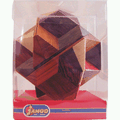
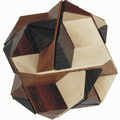 I purchased this "Multisphere" by Janod from Puzzlemaster.ca. It is Stewart's Scorpius (5). |
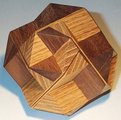
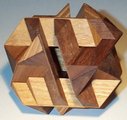 Dislocated Scorpius (16) Purchased from Bernhard Schweitzer |
 Broken Sticks (32) Purchased from Bernhard Schweitzer |
||
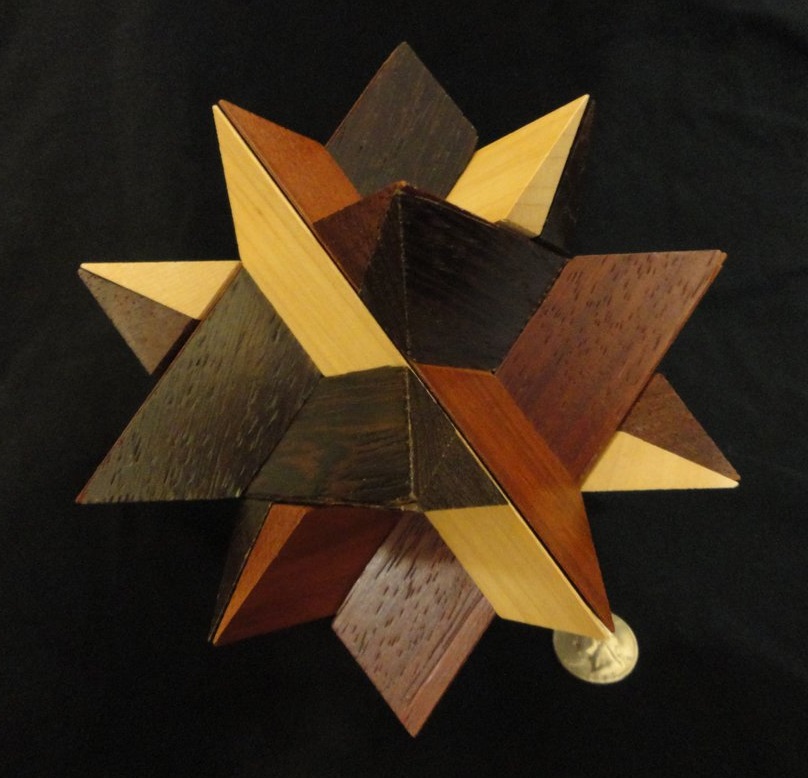
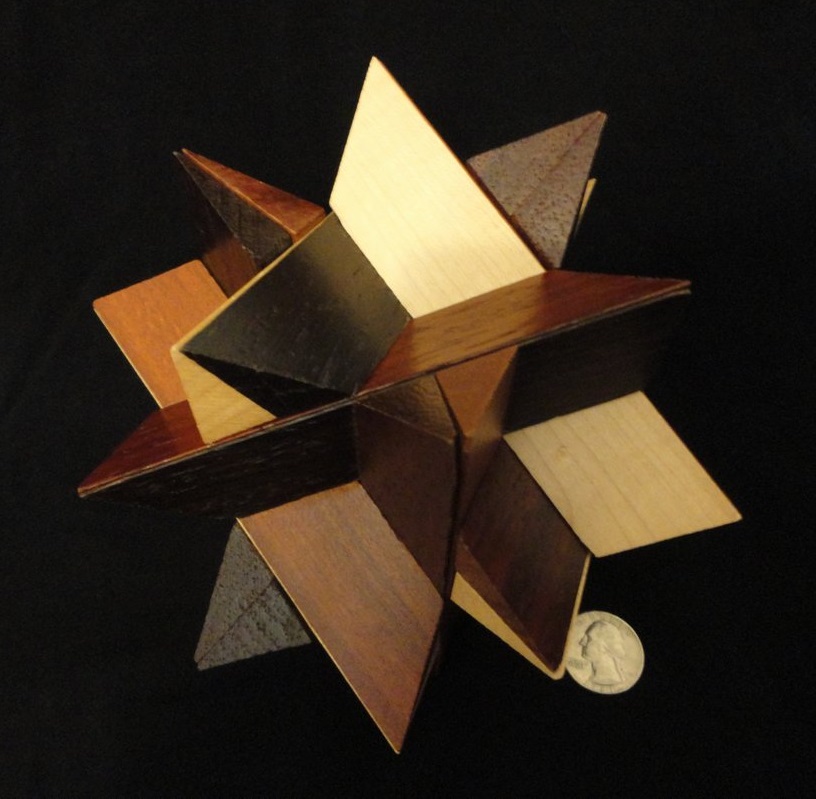
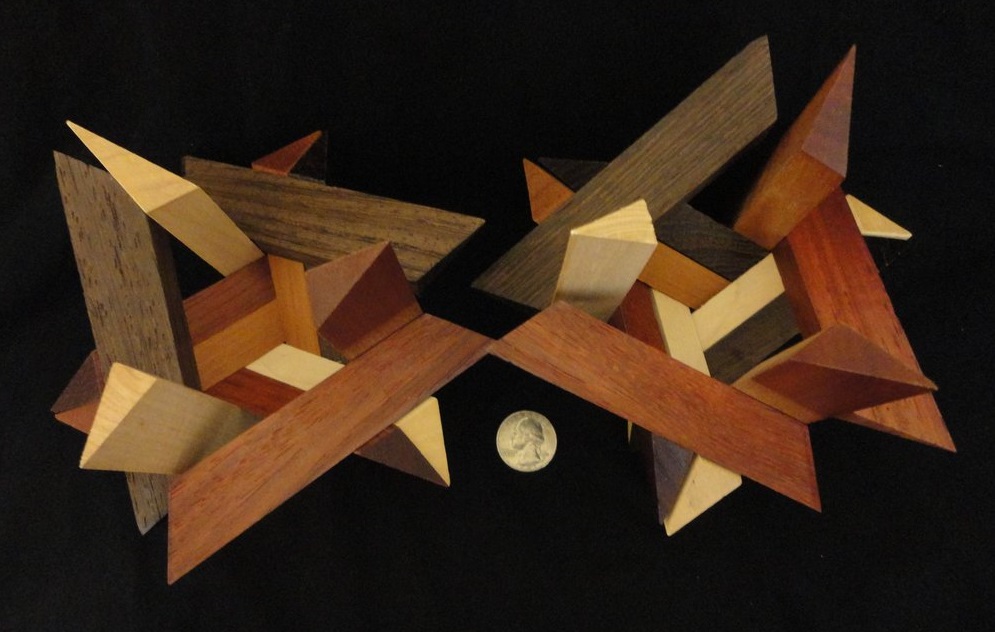
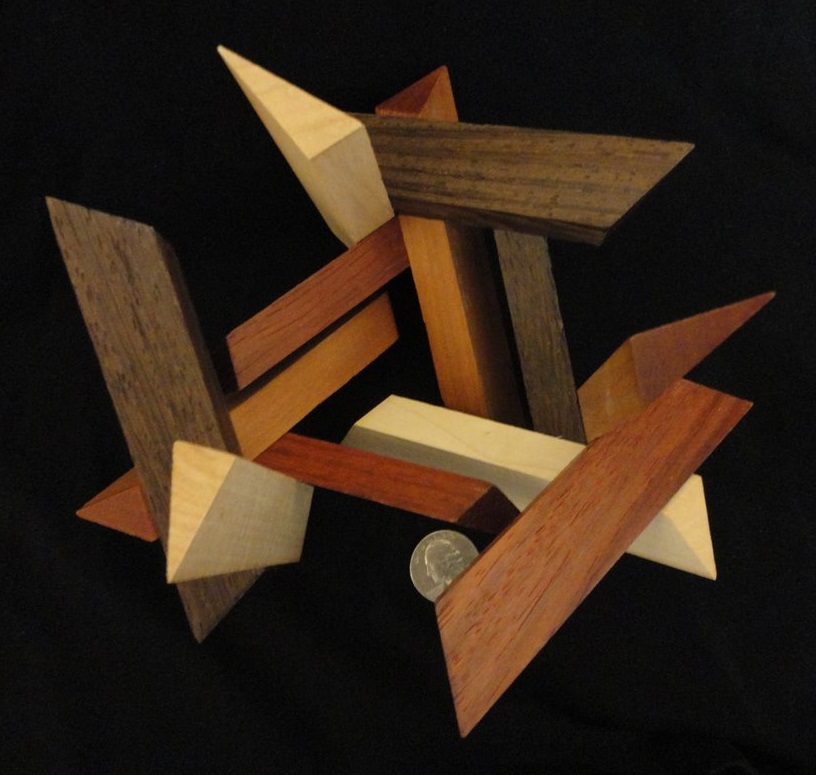
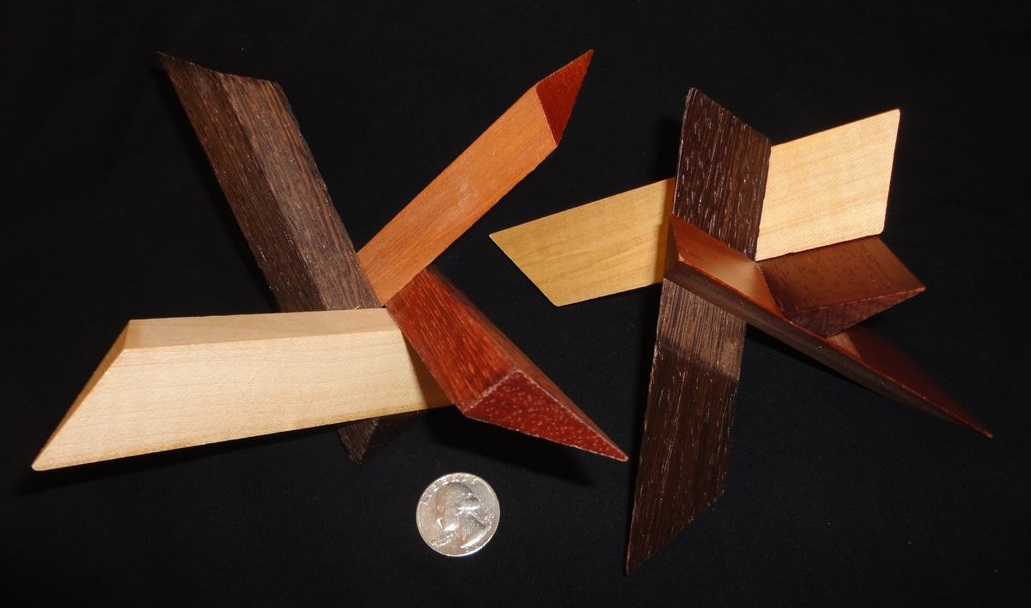
Provenance unknown, but I call this a Pointed Scorpius - six identical pieces - each in turn made from 4 sticks |
||||
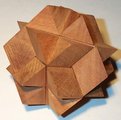
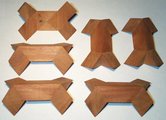 Nova (8) six identical pieces unknown craftsman |
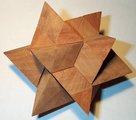
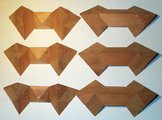 Vega (46) six identical pieces unknown craftsman |
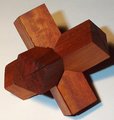
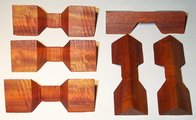 Square Prism six identical pieces unknown craftsman |
||
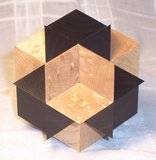
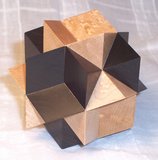
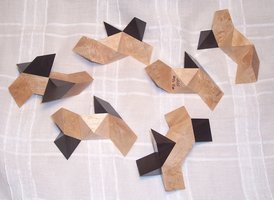
Scott T. Peterson made this Super Nova (14) in Bird's Eye Maple and African Blackwood. |
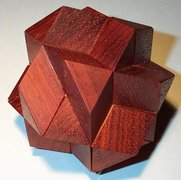 The Hill Introduced at IPP26 in 2006 at Boston. Unusual Coffin design, as a single piece comes out on the first move, then another piece, with the remaining four requiring coordinate motion! |
|||
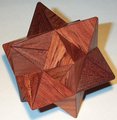
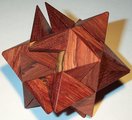
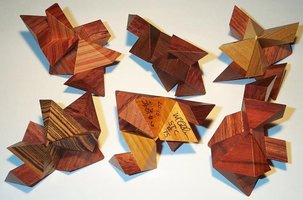
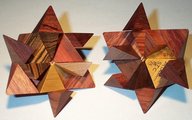
This is Stewart's Split Star (75), made by Mark McCallum. It is a two-tier design, with a garnet at its heart and outer pieces of bubinga wood forming the diagonal star shape. |
||||
|
I bought this beautiful version of Stewart Coffin's Garnet (60) design, from Cubicdissection. It was made by Mark McCallum. Stewart calls it the dissected rhombic dodecahedron, and it is described in chapter 15 of Stewart's book. There are nine possible distinct asymmetric pieces, and this version is made from pieces A through F. Disassembly is fairly easy, but if you mix up the pieces, reassembly is challenging. My approach is to try all possible groups of three to make a half. The remaining three must form a mating half. A group of three pieces might fit together in several ways, so one must explore the possibilities carefully. 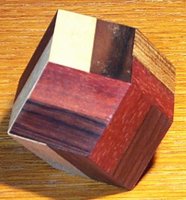
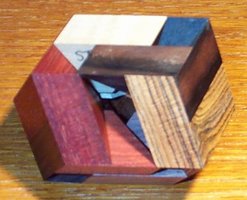
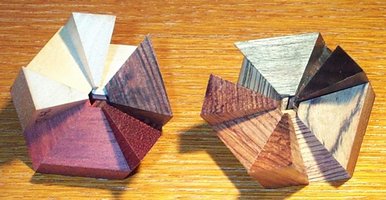
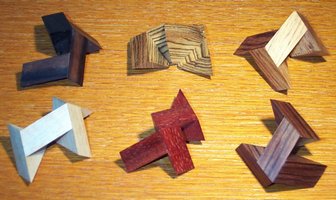 Starting in the top row, from left to right, the piece IDs and woods are:
Starting in the top row, from left to right, the piece IDs and woods are:(A) Macassar Ebony, (B) Bocote, (C) Honduras Rosewood, (D) Holly, (E) Bloodwood, (F) Brazilian Rosewood. |
||||
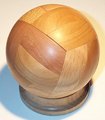
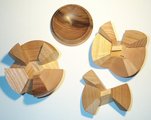 Pelikan's Garnet Ball - a spherical version of Stewart's Garnet. This puzzle uses mirror images of pieces A thru F. Purchased from Bernhard Schweitzer |
||||
Here is a beautiful version of Stewart Coffin's
Augmented Four Corners puzzle (34),
made from Canarywood and Redheart
by Mark McCallum, and purchased from Cubicdissection:
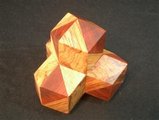

|
||||
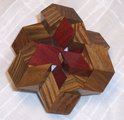
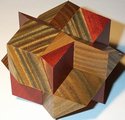
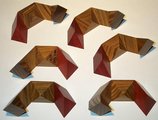 Scott T. Peterson has made a Rosebud (39) for me, from Bloodwood and Lignum Vitae, a very aromatic wood. There are six pieces - three "left-handed" and three "right-handed." They are extremely difficult to assemble into the Rosebud configuration. There is, however, a much easier assembly, shown in the center above. |
||||

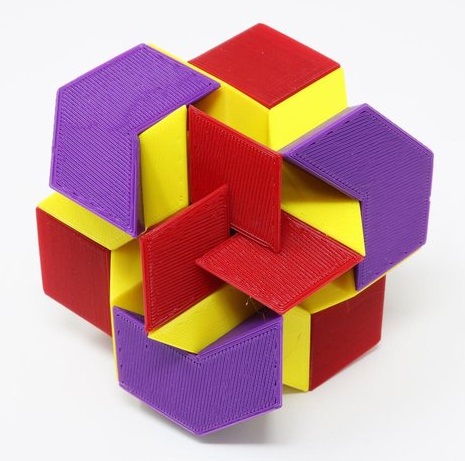
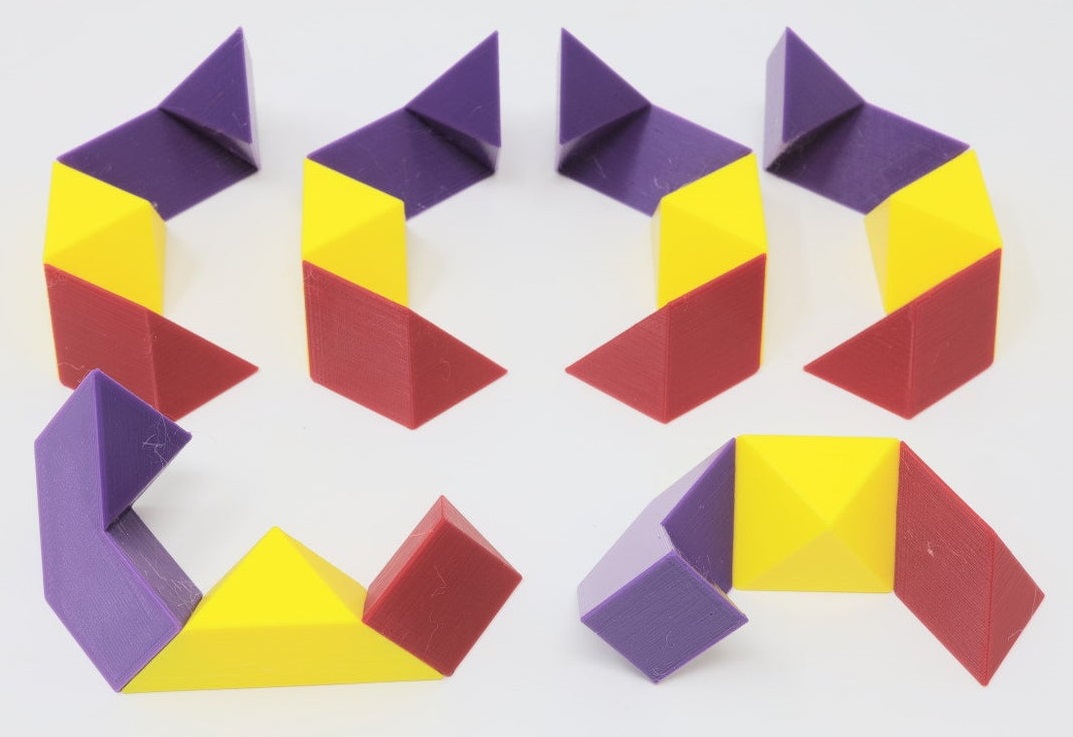
Rosebud - designed by Stewart Coffin, 3D printed by George Bell at PolyPuzzles The individual pieces can be dis- and re-assembled, making overall assembly much easier if desired. |
||||
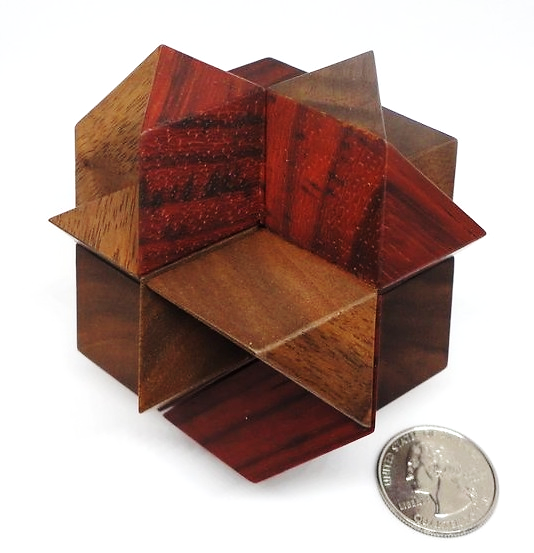
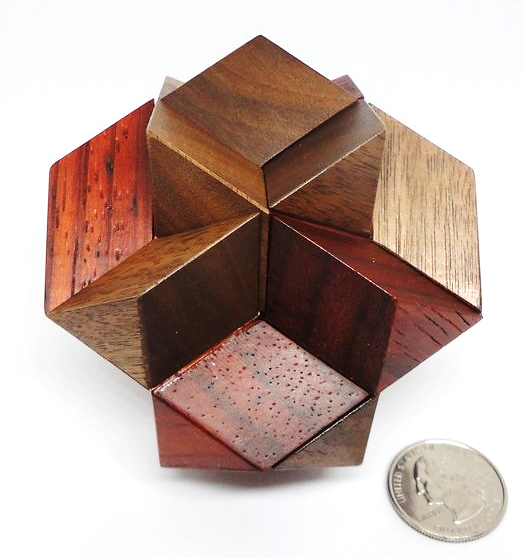
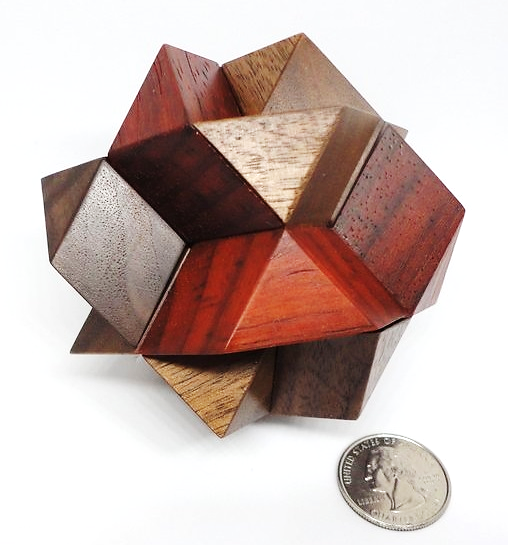
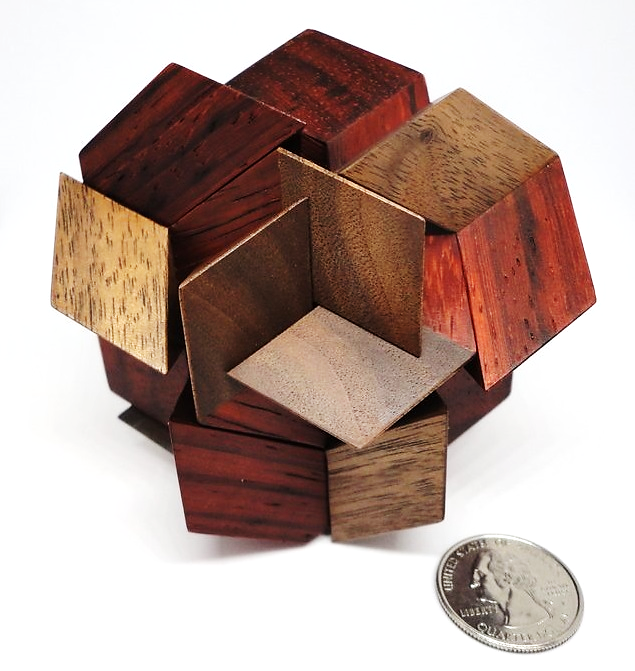
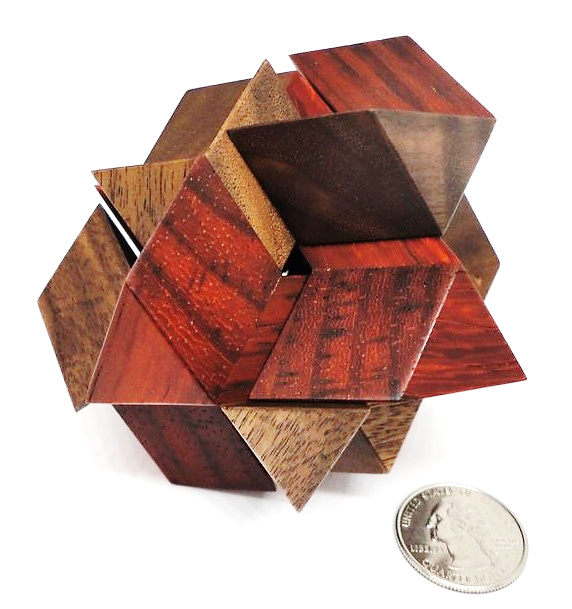
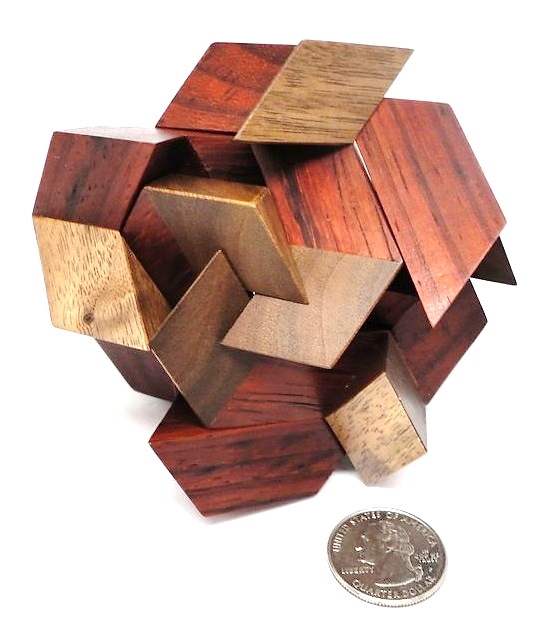
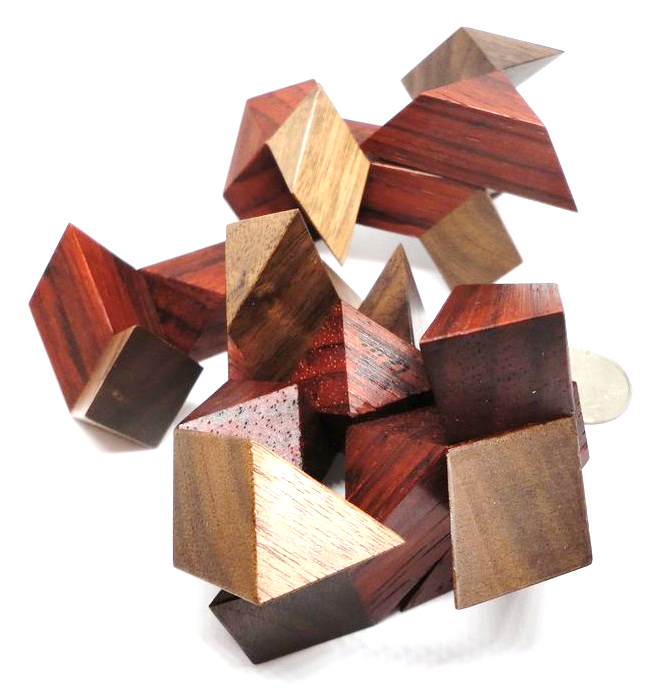
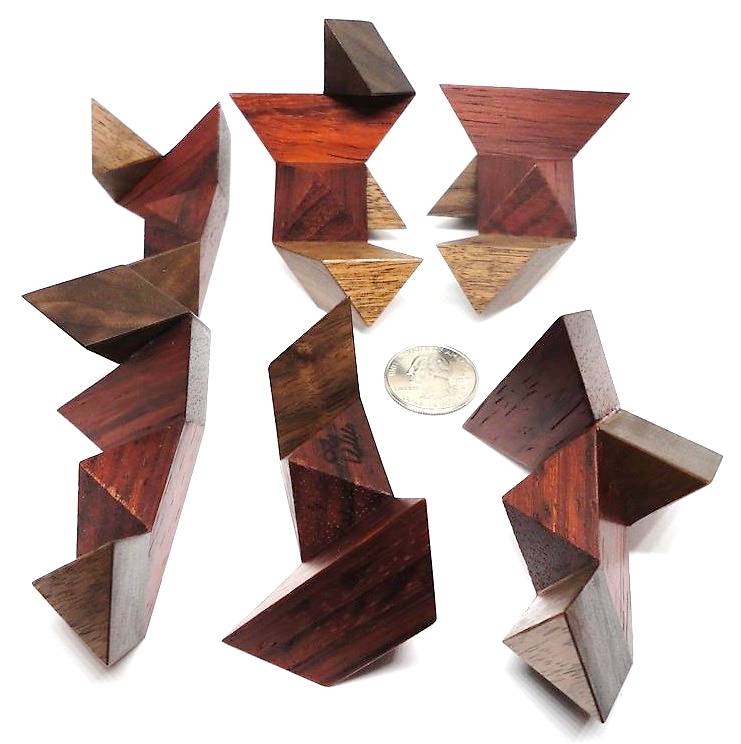
Combination Lock - STC #128 - designed by Stewart Coffin,
|
||||
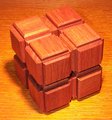
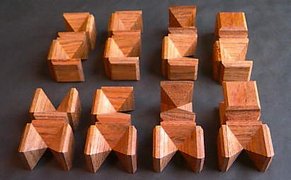
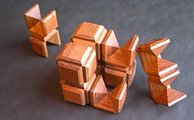
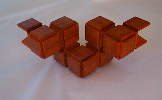
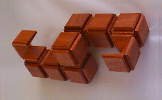
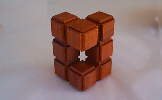

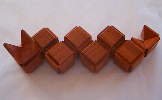 Pieces of Eight (77)
Pieces of Eight (77)made by Interlocking Puzzles. (Some nice photos from the old IP website.) |
||||
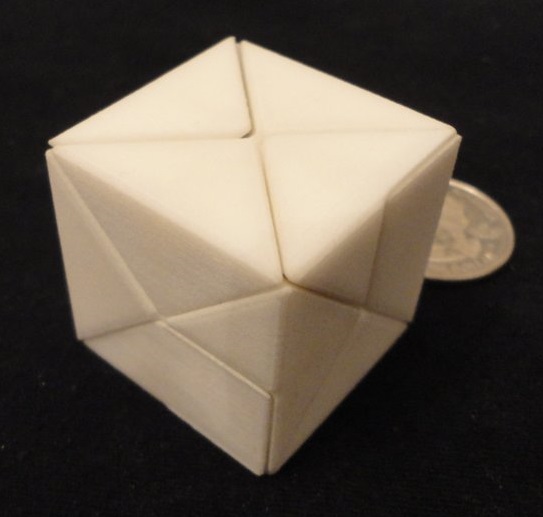
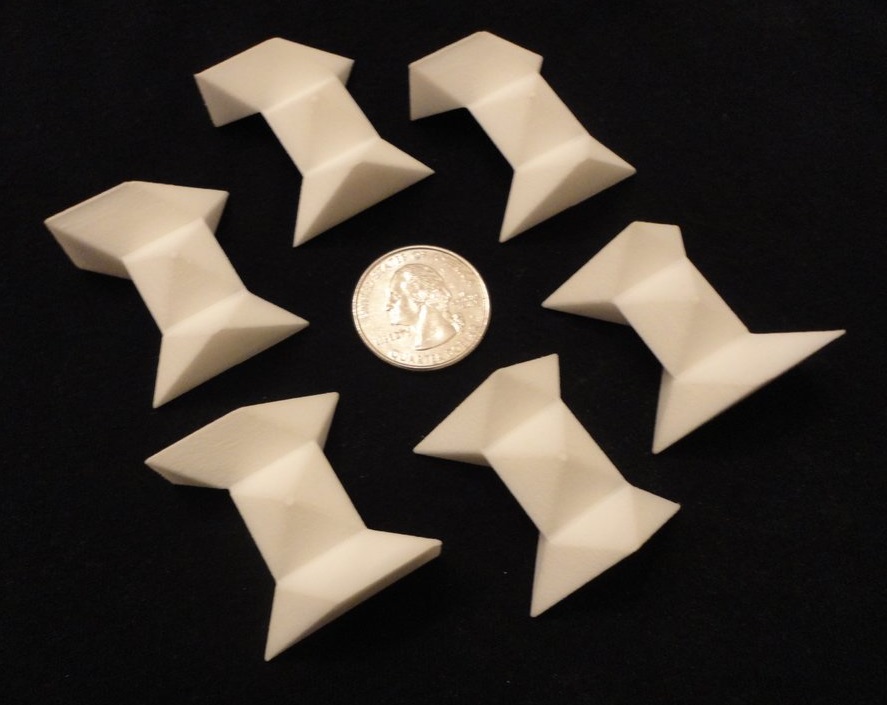
Stewart Coffin's Diagonal Cube design - modeled by George Bell using BurrTools and printed by Shapeways - available at George's Shapeways Shop. |
||||
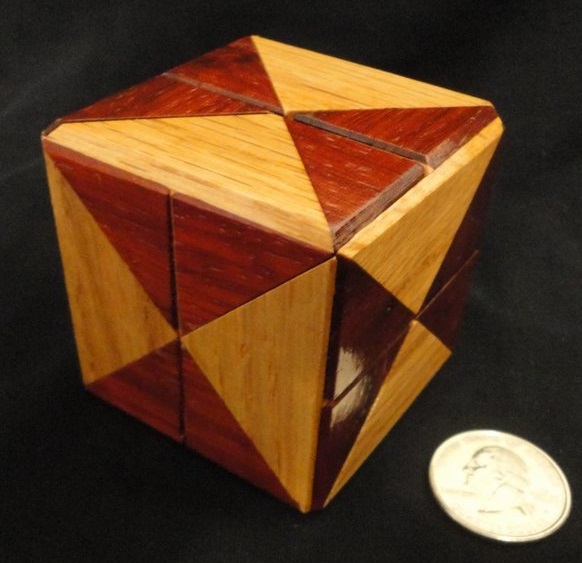


Diagonal Cube - designed by Stewart Coffin, made by Andrew Crowell Check out Andrew's Etsy Shop arcWoodPuzzles |
||||
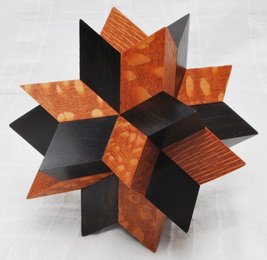
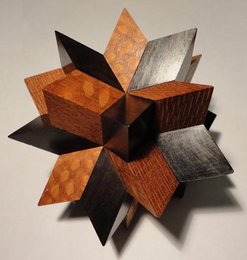
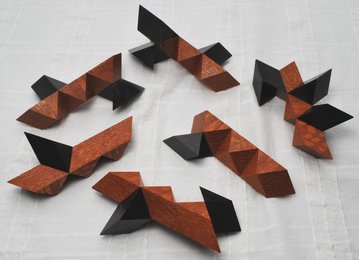
I received a beautiful Stellated Improved Square Face puzzle (SISF for short), designed and made by the talented Scott T. Peterson [W] [Y], based on the Square Face Puzzle (74A) designed by Stewart Coffin. My copy is made from Blackwood and Lacewood.

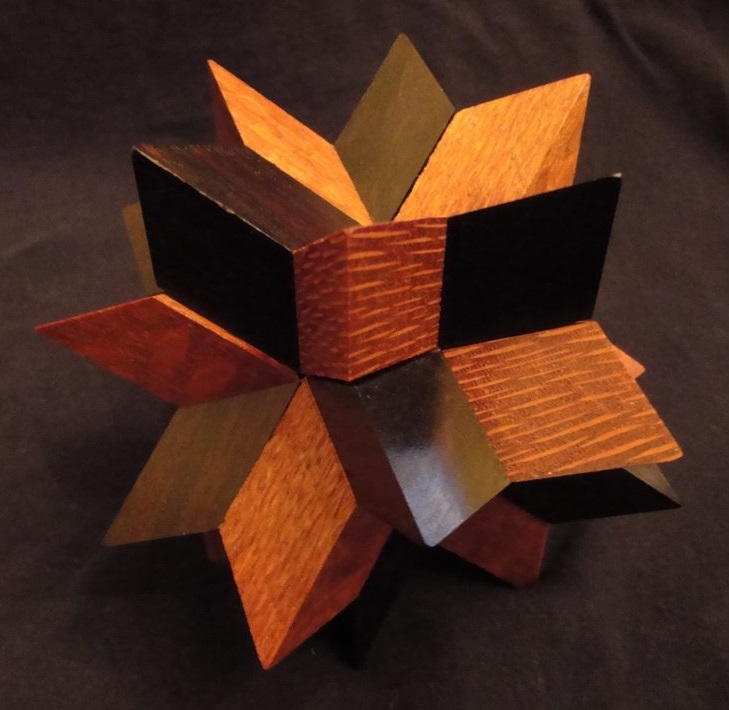
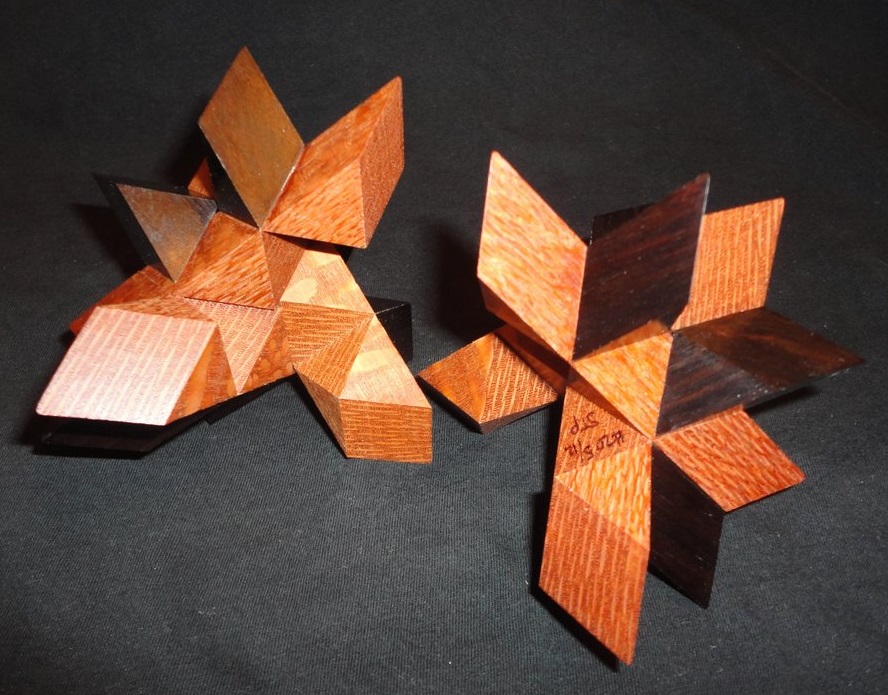
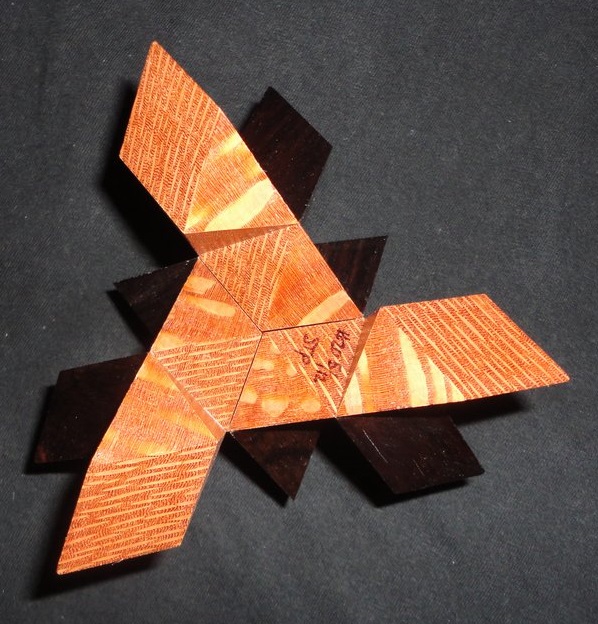
|
||||
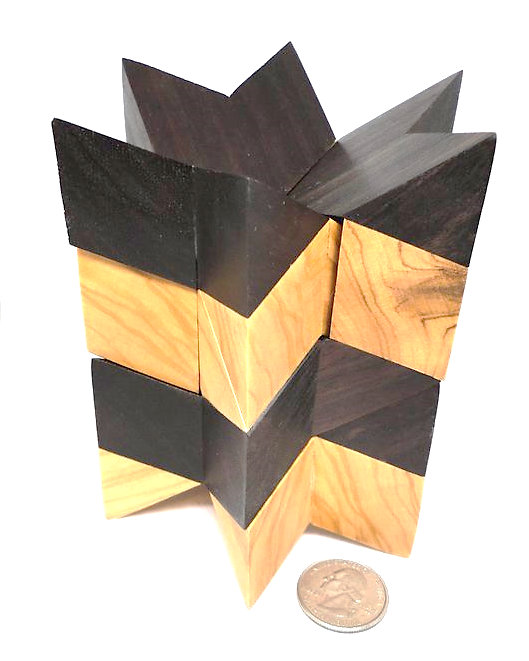
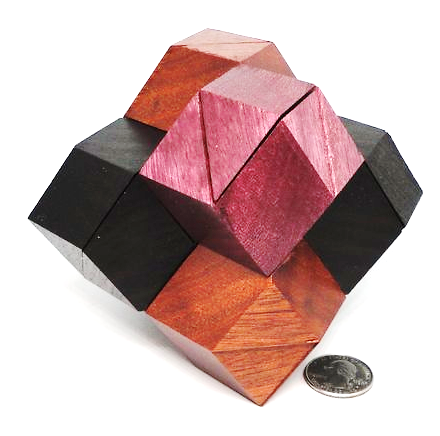
Two beautiful wooden puzzles made by
Solitude Summit Woodworks on Etsy,
|
||||
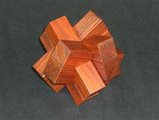
This is Stewart Coffin's Octo-Burr design, made by Mark McCallum and purchased from CubicDissection. See the pieces on John Rausch's site. |
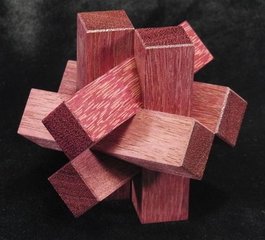

Burr Circus, designed by Stewart Coffin (STC #116) and made by Eric Fuller, from Purpleheart. Six sticks, having notches both slanted and tilted. Not easy to make, nor easy to assemble. |
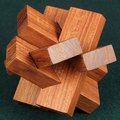
Stewart Coffin's Lock Nut |
||
[47]

Stewart Coffin and Bill Cutler both independently came up with the design of 12 interlocking notched hexagonal sticks (copied by Tenyo's "Papa" puzzle shown elsewhere). Stewart's version was produced commercially by 3M, who called it "Hectix." I've obtained the red/white/blue, white, and clear versions of Hectix. See U.S. Patent 3721448 - Coffin 1973. |
|||||
The Hectix design has been widely copied - here is a wooden version produced in Japan as part of the "Woody" line of puzzles:
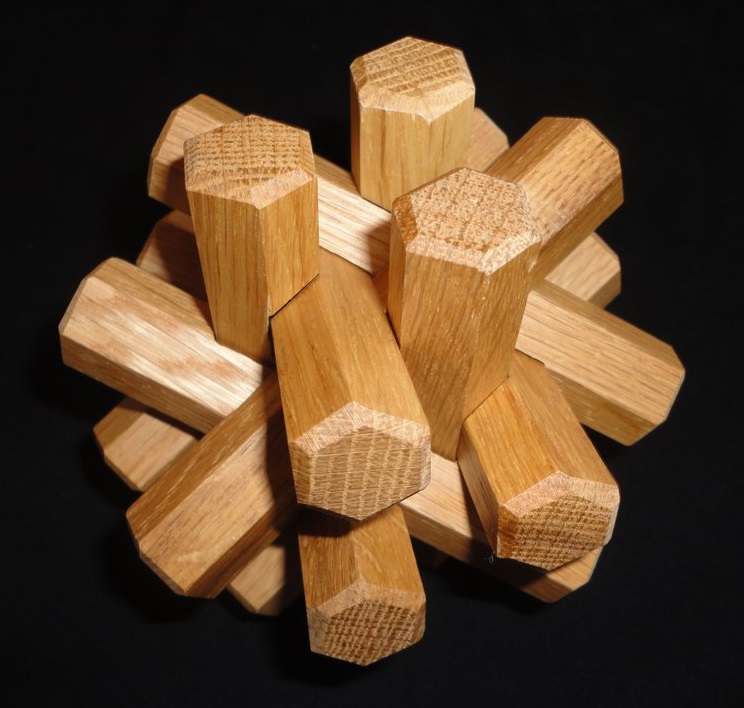
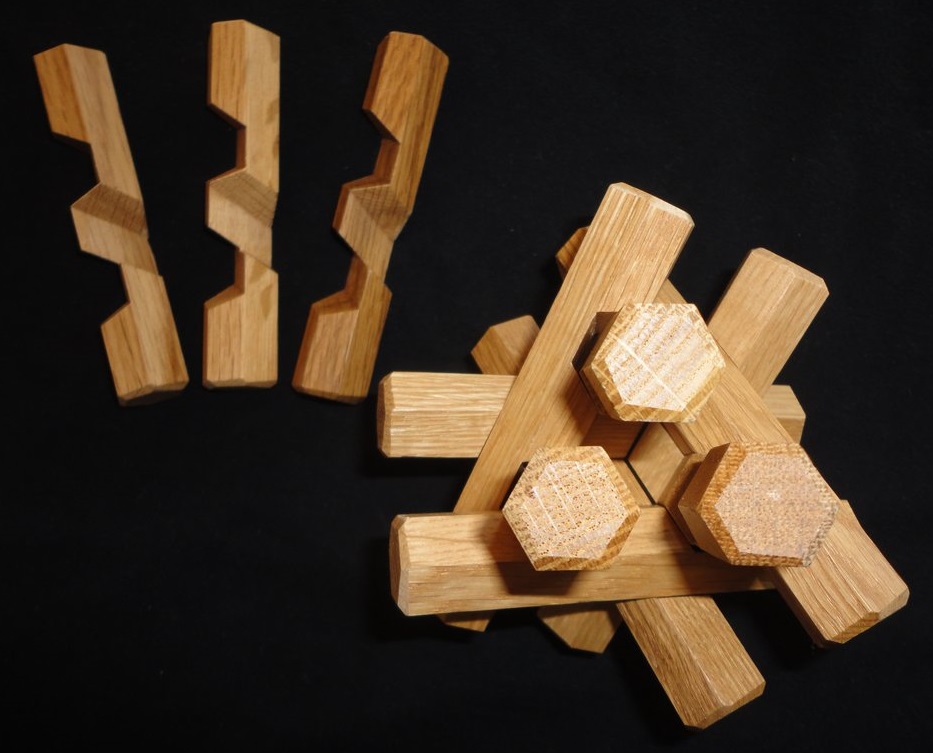
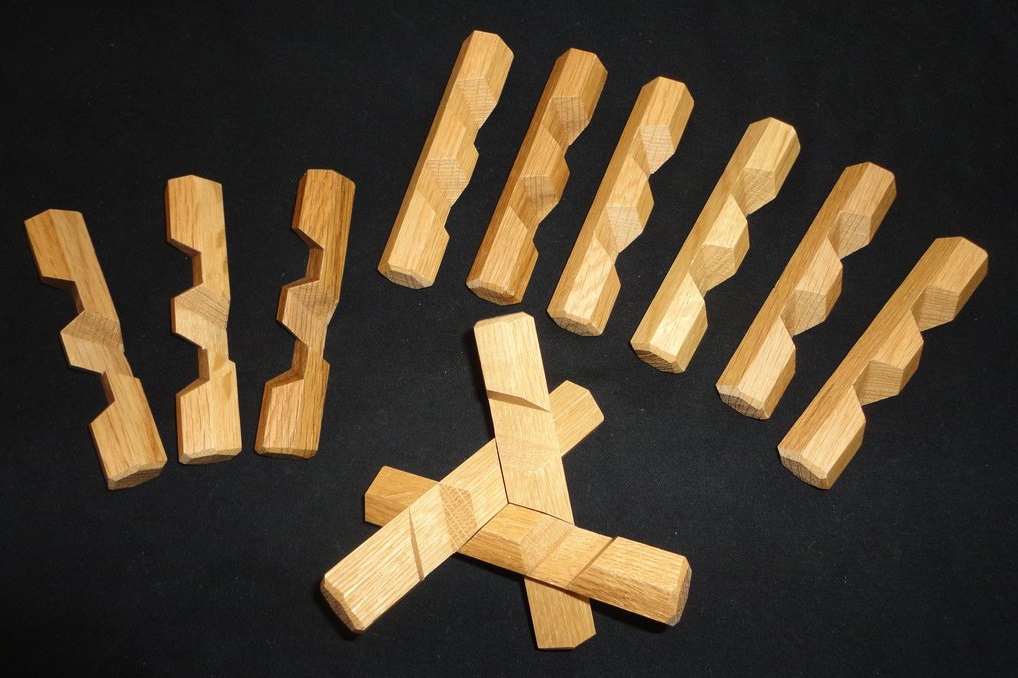
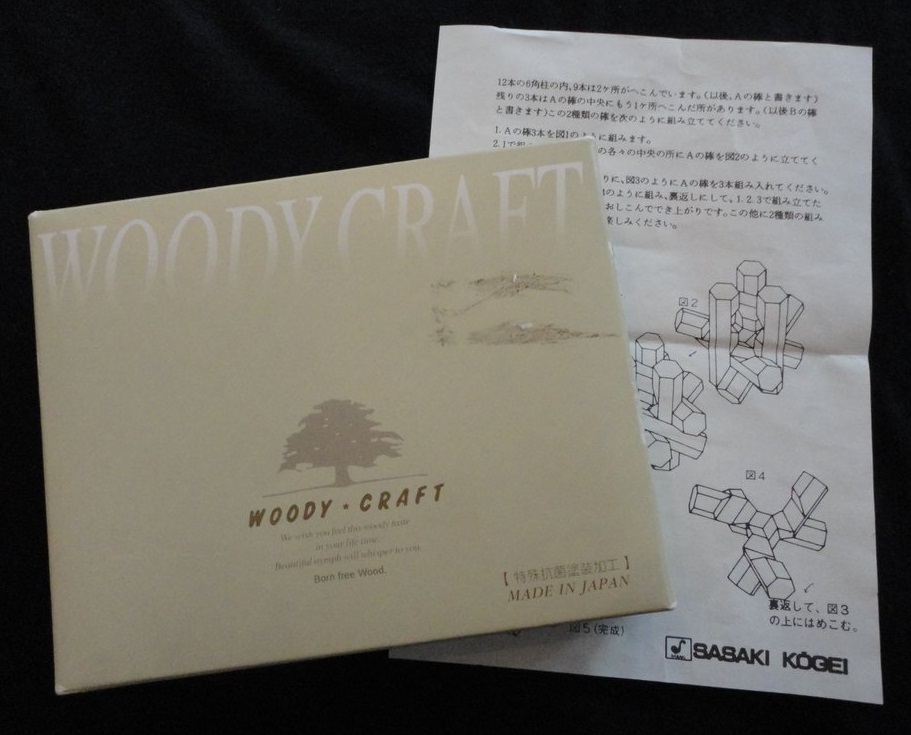
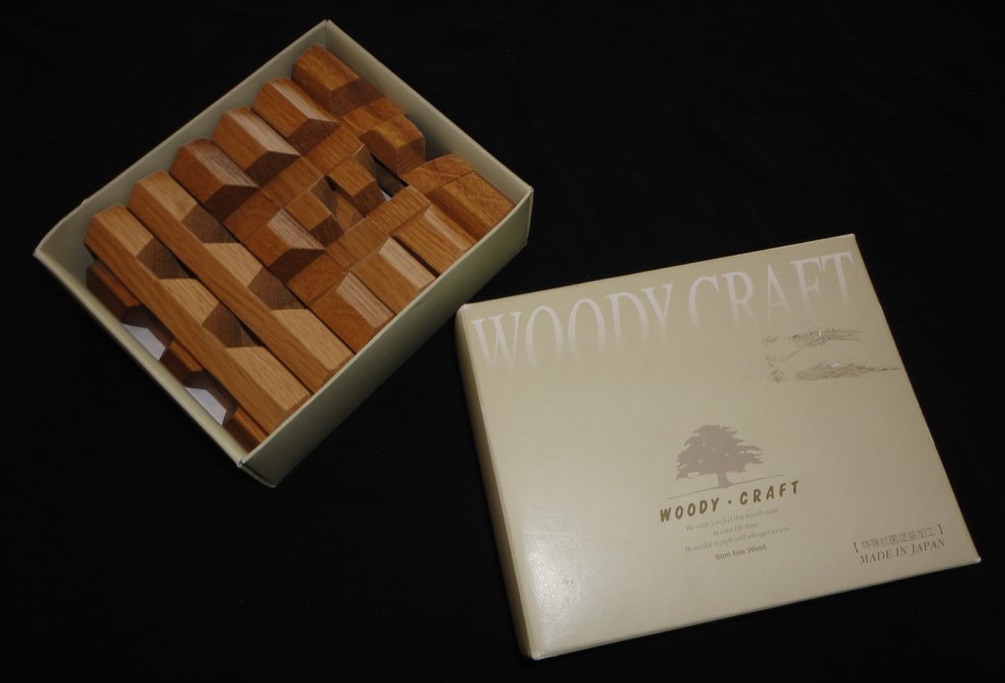
Woody Craft Hexsticks |
|||||
|
Joy of Hex - by
Two Brass Monkeys
They've done an analysis of all solid, twelve-piece burrs, with no solid key piece, and selected and released three designs: MISSIONARY (easiest); BISH, BASH, BOSCH - requiring coordinate motion; and GROUP HEX - incorporates the maximum number of different piece types (8 of 9 possible types of notched hexagonal piece) that has a single unique solution. Included with the three sets are: Five bonus milled brass hex pieces, a "Joy of Hex" manual of 30 hexual positions and solutions written by consultant hexologist Dr Eric Shun, and a hex aid (jig/stand) to help with the most challenging positions. These items turn the three puzzles into a burr set, with 30 published challenges and over 97,000 other possible assemblies. Each hex piece is milled from solid brass and is 6cm / 2.36 inches long. An assembled puzzle weighs about 1.8lbs or 840g. I got the complete set. The entire set weighs in at 8.5lbs. I have accomplished the Missionary position:
When I received my example of "Group Hex" it mistakenly included an extra BC rod instead of the required ABC rod. Brass Monkey Steve very kindly and promptly sent me the missing part, and then named an assembly that would utilize the extra BC rod after me - I am honored, probably...
|
|||||
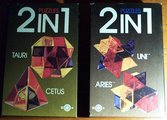

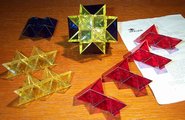
Some of Stewart's other designs were produced commercially in plastic as part of the Skor-Mor "Geo-Logic" and "Penta-Logics" lines. I obtained Tauri, Cetus, Aries, and Uni in 2-in-1 packs, and a Nova separately. The Penta-Logics included Spirus and another Nova. Luckily, all of the pieces are intact. Each puzzle is composed of a set of six particular identically-shaped pieces (a different piece type for each puzzle), which fit together either in two halves or using coordinate motion. The Tauri is described in Stewart Coffin's book The Puzzling World of Polyhedral Dissections (see fig. 97). The Penta-Logics set allows you to make a "Galaxy 1" (shown, with leftover pieces) and a "Galaxy 2" (not shown). |
|||||
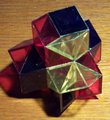
Aries |
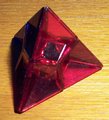 Cetus |
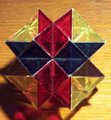 Nova |
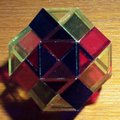 Tauri |
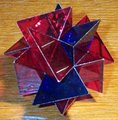 Spirus |
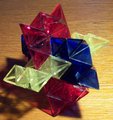 Uni (A real pain to assemble!) |
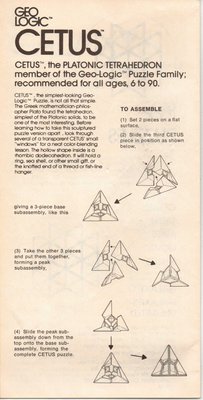
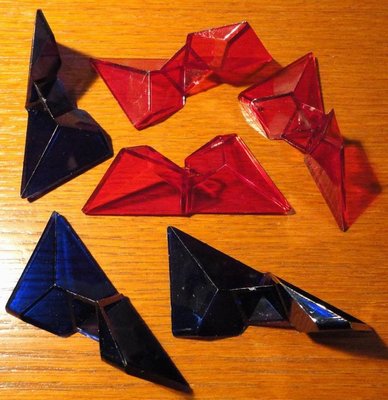
Cetus instructions and six identically shaped pieces. |
|||||
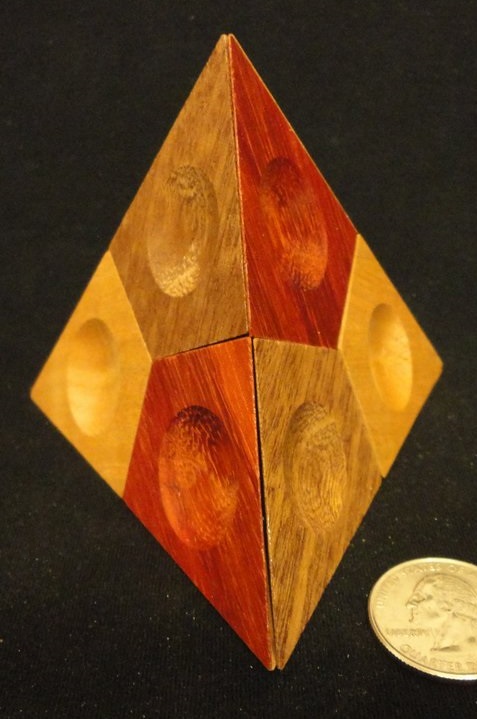
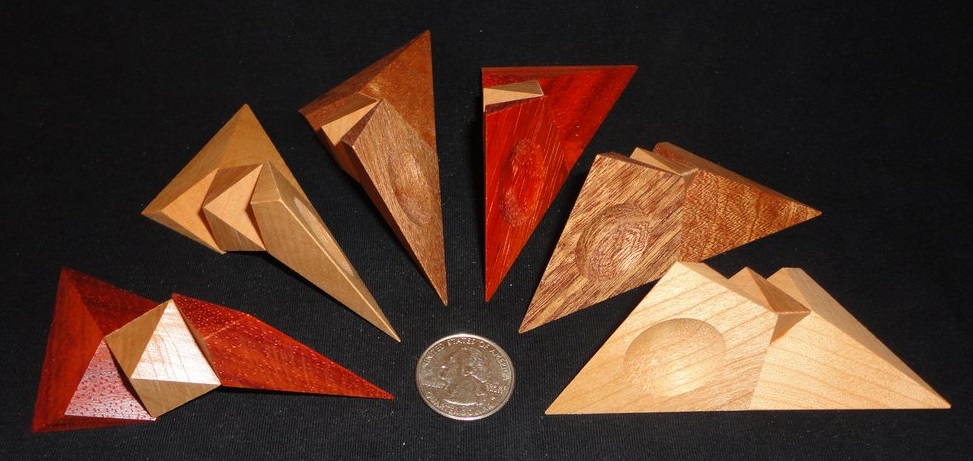
Tetrahexed - designed by Stewart Coffin, made by Wayne Daniel, exchanged at IPP35 by Stan Isaacs A nice wooden version of Coffin's 1971 Cetus issued by Skor-Mor |
|||||
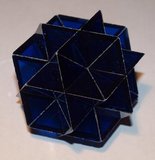
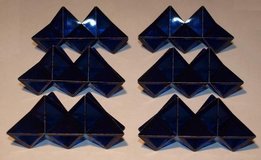
Nova |
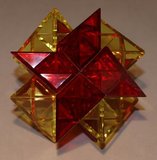
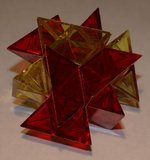
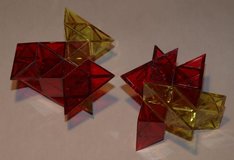
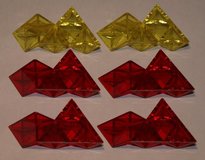
Spirus |
||||
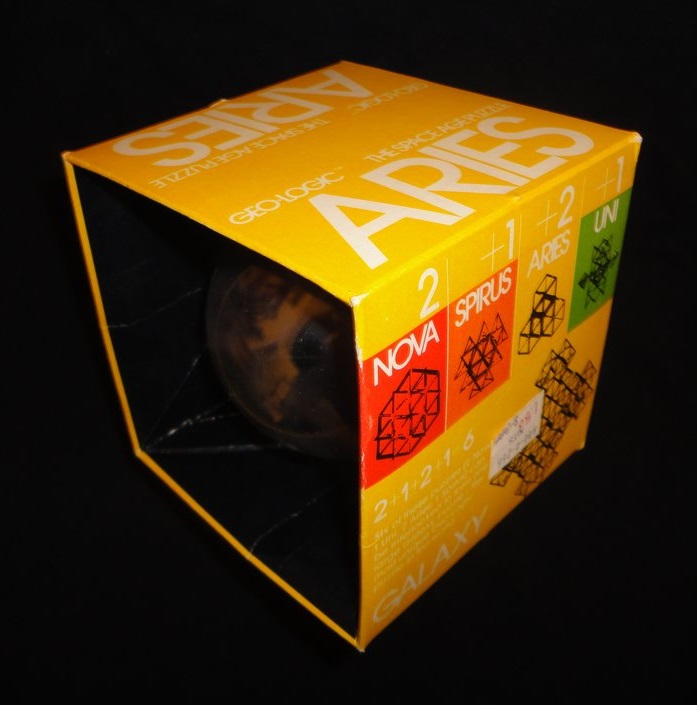

Geologic Aries - designed by Stewart Coffin, issued 1972 by Nylon Products Corp. MA |
|||||
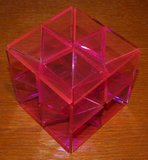
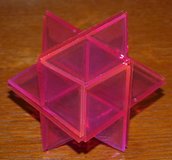
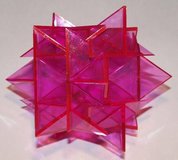
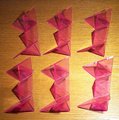
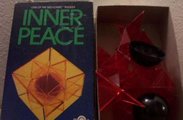
The Geo-Logic line also included an "exploding cube" called "Inner Peace." It has six identical pieces. I obtained one but with no box - I did not know what it was until I found a box shot on the web. The six pieces can be built into a cube or a stellated rhombic dodecahedron. The latter is a very tight fit. |
|||||
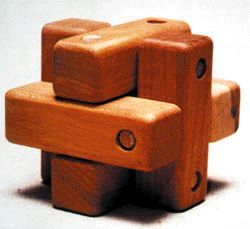 This is a puzzle called "Rube's Cubic" purchased from IQ Puzzles. It is also described in Coffin's book, as the Pin-hole Puzzle. As Stewart says, it is fairly easy to assemble. |
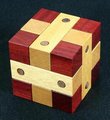
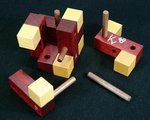
This is Coffin's Corner Block puzzle, made by Kerry Verne from Yellowheart, Bloodwood, and Walnut (pins). Purchased from CubicDissection. Stewart describes this type of puzzle in his book, showing a set of possible pieces. Coffin's Corner Block uses pieces numbers 1, 2, 3, 7, 8, and 12, and one pin. Stewart says he has been unable to find a selection of pieces that can be assembled one way only. This set has two solutions. |
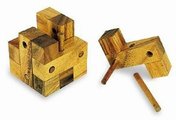 This is the "Ancient Key" puzzle, from the Mandalay Box Company. This is a variant of the Corner Block. The Ancient Key uses pieces numbers 1, 2, 3, 7, 11, and 12, and one pin. |
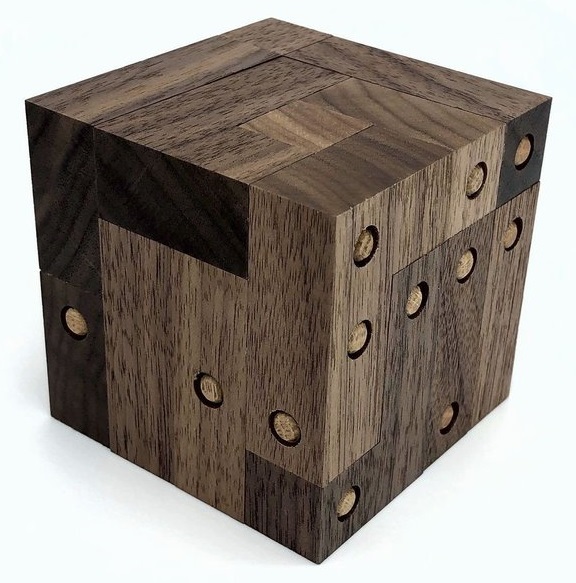
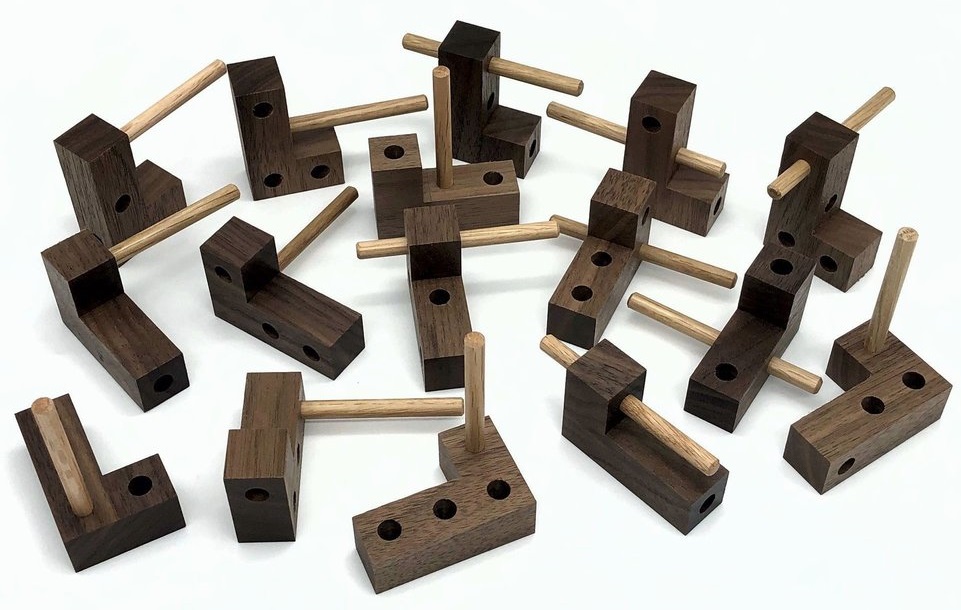
Logical Progression Interlocking Cube - designed by Rick Eason, made by Rick, and Eric Fuller from Walnut and Oak. Lots of holes and dowels. A single sequential-assembly solution. The puzzle is supposedly solvable by analysis rather than guesswork. Rick describes the puzzle at his website and gives a link to a page with detailed logical analysis. |
||
|
|
||
 Arjeu CT442 (Colorado) purchased from Ishi Also known as Electrons, by Janod. |
 Arjeu CT210 purchased from Ishi |
 Arjeu CT795 (Cactus) gift from Jeff Taylor |
 This is Arjeu's Quadro (CT755), purchased from Ishi. It is a simple version of Coffin's Locked Nest puzzle and is described in Coffin's book in Chapter 13 (see figure 130b). |
|
 Arjeu CT5152 aka Achille |
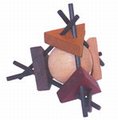 Tipi - Bits and Pieces |
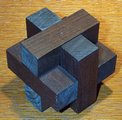 Woodn't Cross by Mag-Nif 1974 |
|
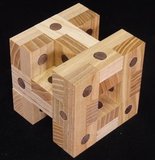
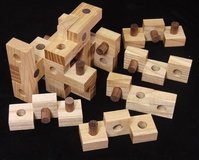
Alchemy, designed by Brian Young, made by Eric Fuller, from Ash wood. |
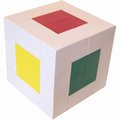
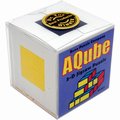
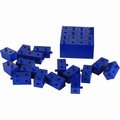
The Aqube, purchased from Puzzlemaster. (I got the Psychodelic version - blue pieces shown for example.) |
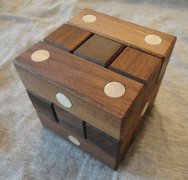 Spotted Cube, designed, made, and exchanged by Ken Ewers at IPP32 |
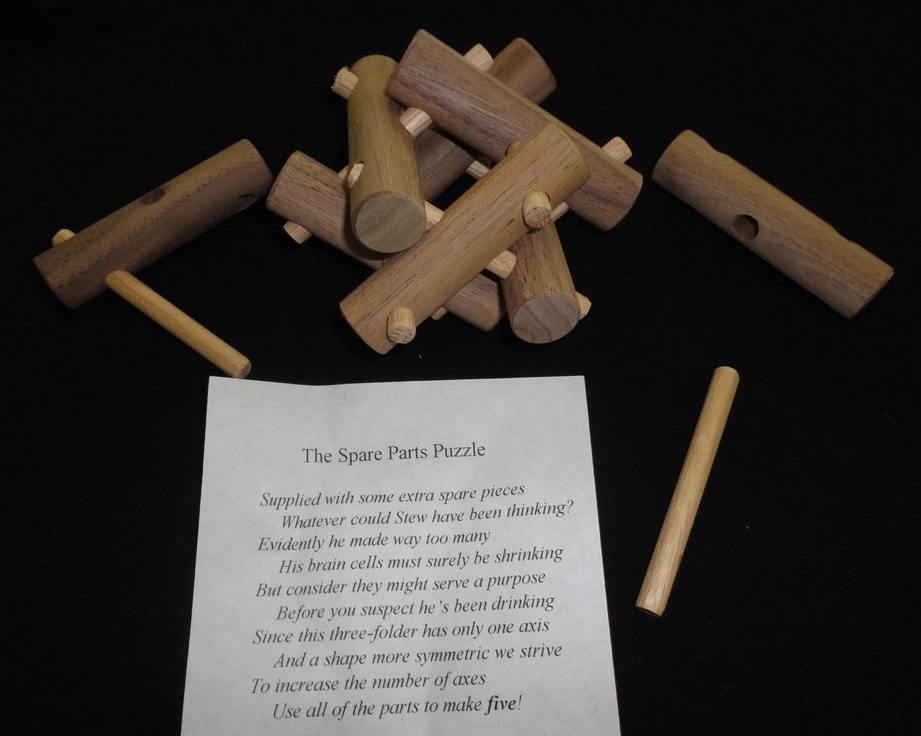
Rosemary Howbrigg sent me one of her IPP33 exchange puzzles, Spare Parts, designed and made by Stewart Coffin. Thanks so much, Rosemary! |
||
This is my catch-all group for interlocking puzzles made of pieces and/or forming shapes that aren't geometrically easily described. Some are figural representations of various animals or objects, while many are abstract geometric fantasies. Sometimes the pieces of the puzzle are similar, sometimes dissimilar. They can be made from wood, or plastic, or metal.
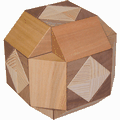 Cross in Ball |
 Prismastar |
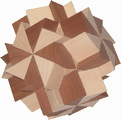 Twister 1 |
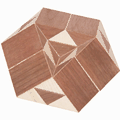 UFO |
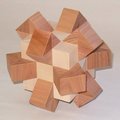 The Hedgehog purchased from Cleverwood |
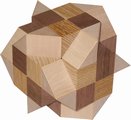 The Trick Box is also a coordinate motion puzzle - darned hard to assemble. |
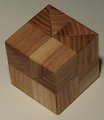
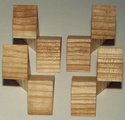 This small 4-piece "Cube Vinco" was a gift from Vaclav at IPP26. |
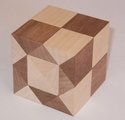 Cubetresor |
 This is the Button Prison from B & P. |
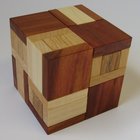
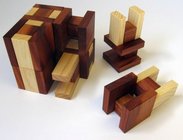
This is Two U. See Vinco's website for a nice chart of various types of "half-cube" puzzles. This puzzle reminds me of Coffin's Pieces of Eight. Purchased from Vaclav at IPP28 in Prague. |

This is Vinco's Vidly Half-Cubes. Although technically this isn't an Interlocking puzzle, I show it here since it is another of Vinco's series of half-cube designs. A gift from Vaclav at IPP28 in Prague. Thanks! |
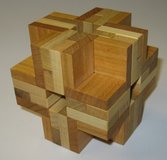

Xcruci8 - designed and made by Vaclav Obsivac Exchanged at IPP28 by Laurie Brokenshire Purchased from Laurie at NYPP2011 |
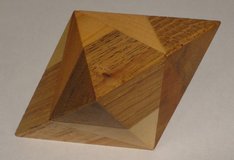
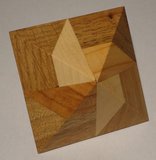
IPP 31 - octahedron - Vinco |
||
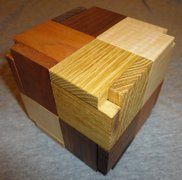 Try-Cycle designed and made by Vaclav Obsivac, exchanged by Laurie Brokenshire |
||
This is George Hart's "Screw Cube" - a two-piece interlocking puzzle
George invented and 3D printed with white nylon.
I got prototype number 1 from him at one of Brett's Manhattan puzzle dinners.
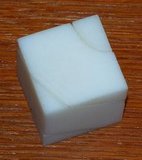
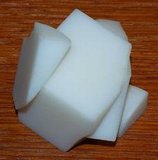
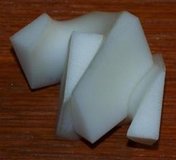
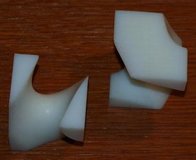 It's not too difficult, but everyone who plays with it likes it and is a little stumped at first.
I think it's a classic. Thanks again, George!
It's not too difficult, but everyone who plays with it likes it and is a little stumped at first.
I think it's a classic. Thanks again, George!
|
||||||
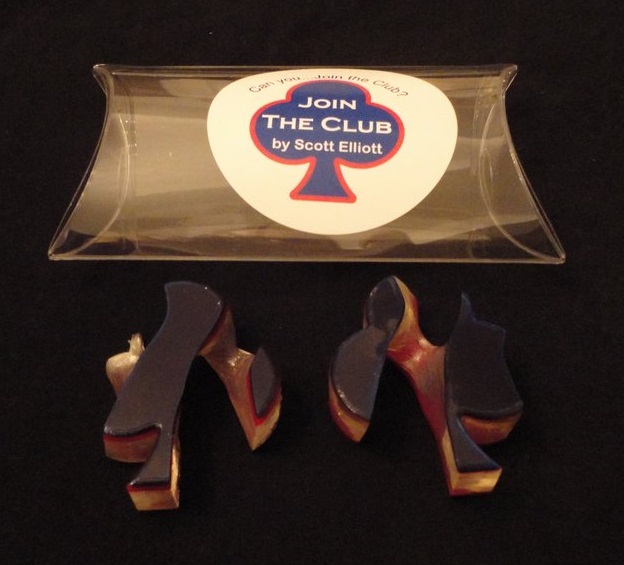
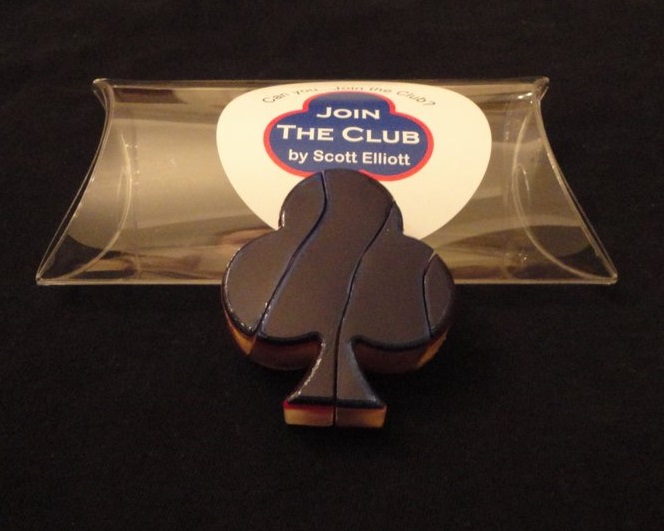
Join the Club - Scott Elliott |
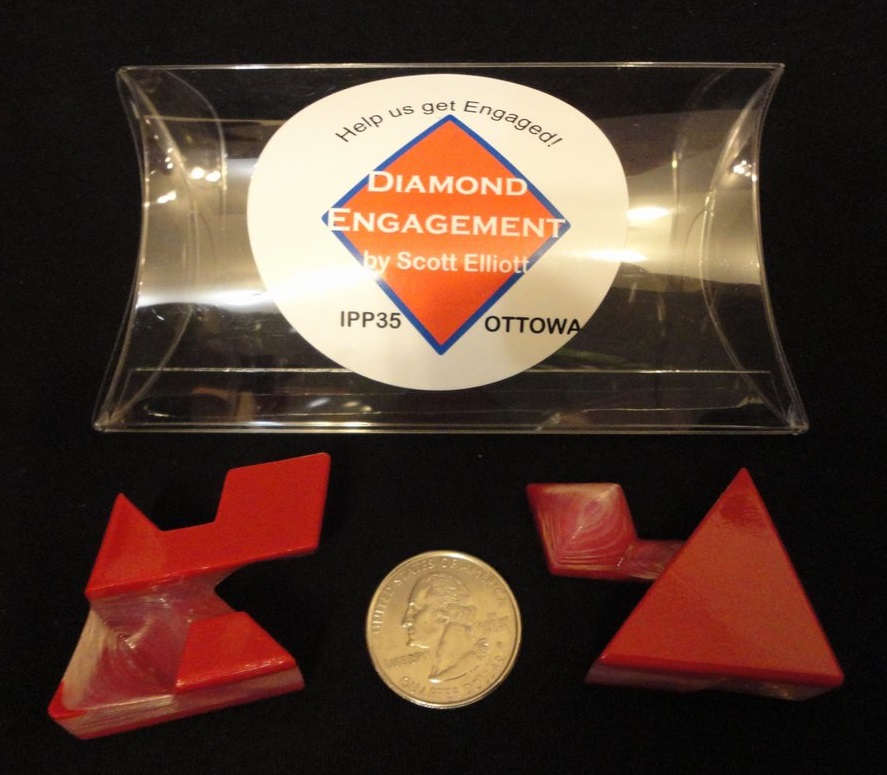
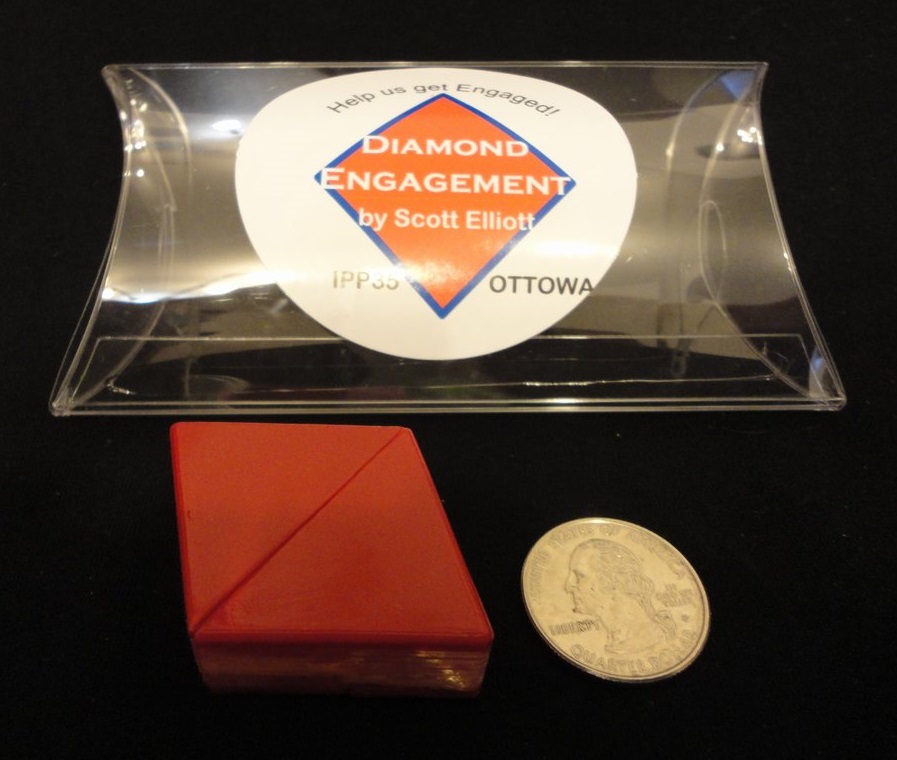
Diamond Engagement - designed, 3D printed, and exchanged at IPP35 by Scott Elliott |
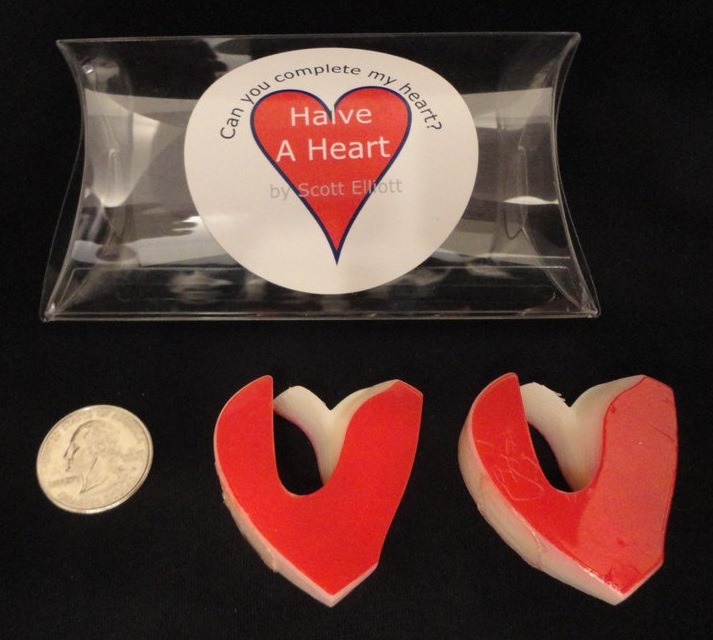

Halve a Heart - designed and made by Scott Elliott |
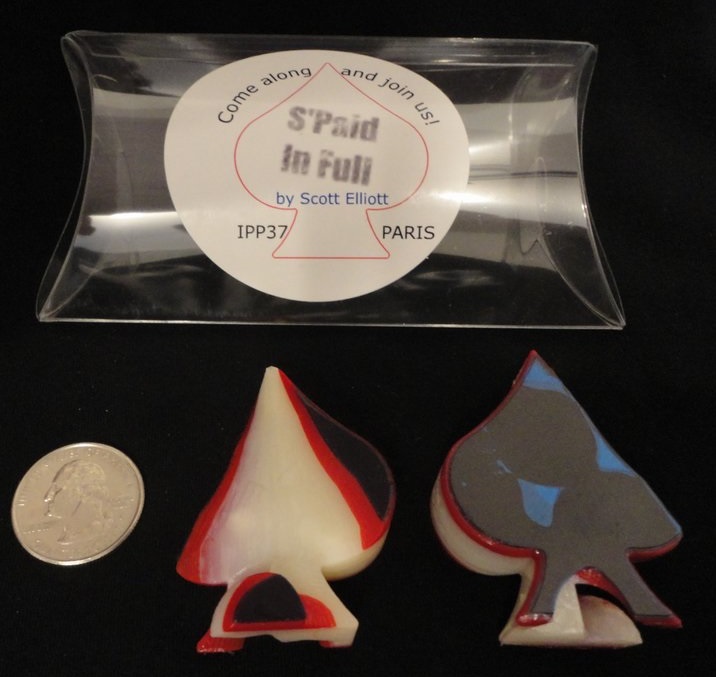

S'Paid in Full - designed and made by Scott Elliott |
|||
|
||||||
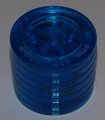
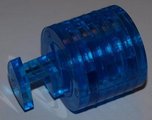
The Tubular Burr by Derek Bosch. Purchased from Derek at IPP 29 (2009) in SF. Derek went on to elaborate his ideas on helical structures in burrs... |
||||||
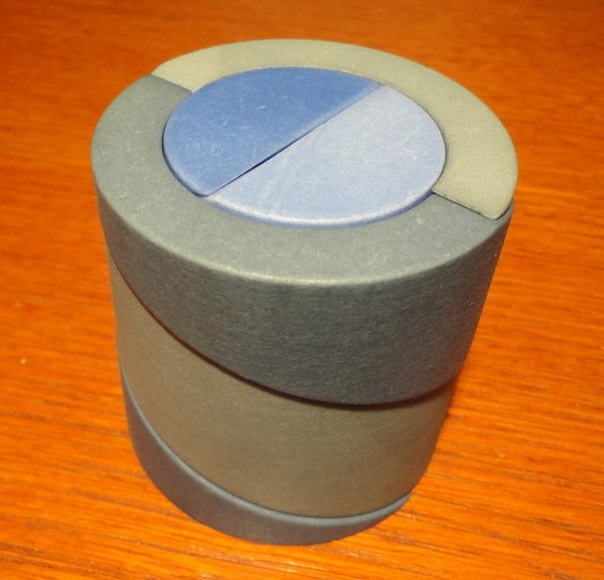
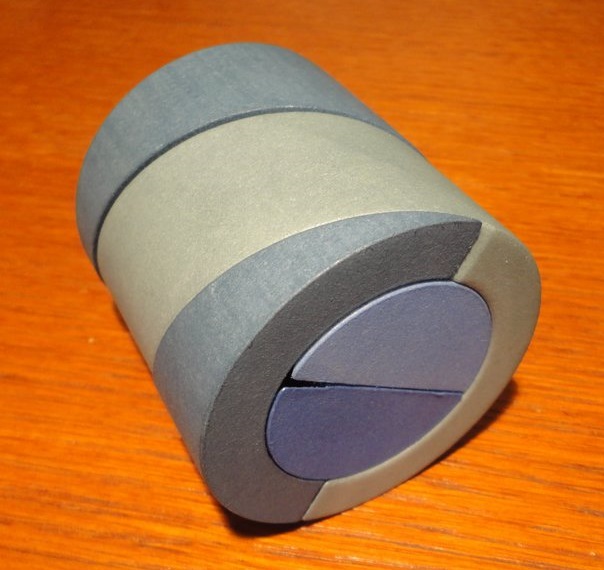

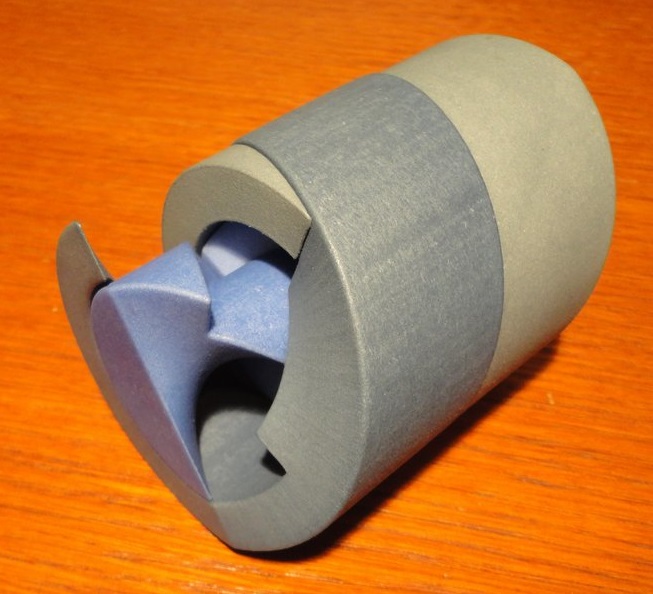
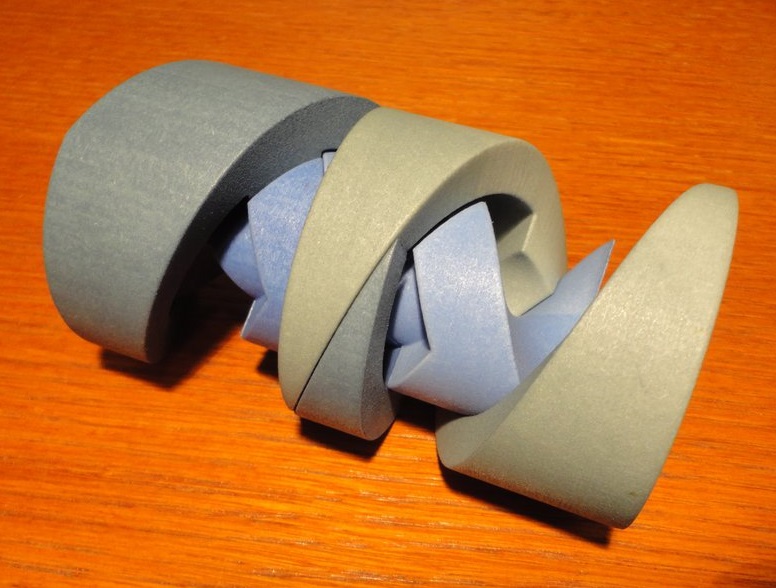
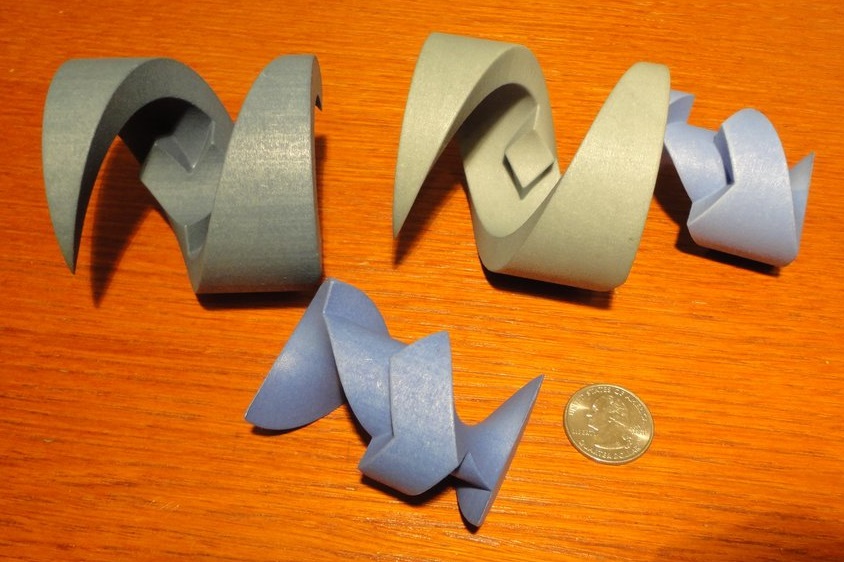
Helical Burr - Derek Bosch - dyed Shapeways 3D print Derek's clever Helical Burr won the Jury Grand Prize in the 2013 Nob Yoshigahara Puzzle Design Competition. Four pieces - two assemblies - one is level 11. |
||||||
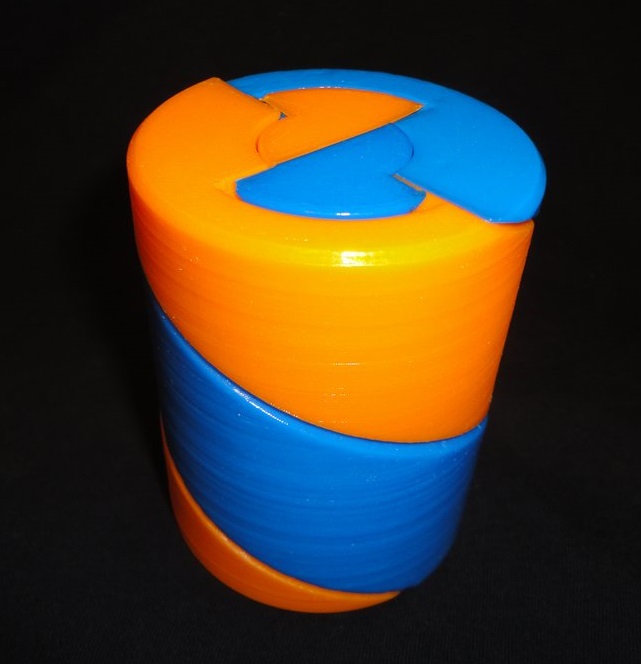
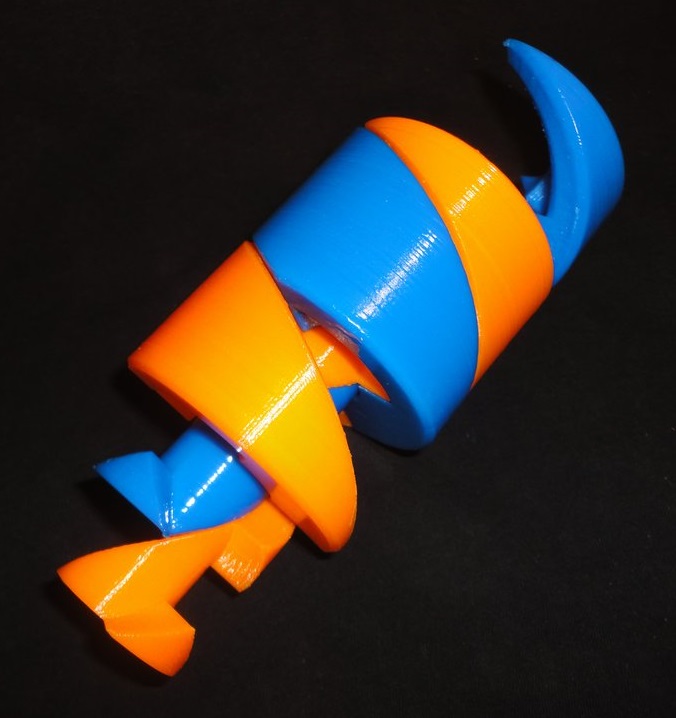
HELLical Burr designed by Derek Bosch as a more fiendish follow-up to his 2013 prize-winning Helical Burr. Four pieces. Printed by and purchased from Steve Nicholls. Kevin Sadler posted a YouTube video of the disassembly here. |

Twiddle Dee and Twiddle Dum A new pair in a continuing series of fiendish helical burrs designed by Derek Bosch 3D printed for me by Steve Nicholls I asked Steve to make them "opposite" each other. (Also, Dee has two slots in the end, Dum only one.) Dee is rated the more difficult of the pair, with 10 more moves and many extra dead ends. |
|||||

W(h)orl(e)d Burr designed by Derek Bosch 3D printed by Steve Nicholls |
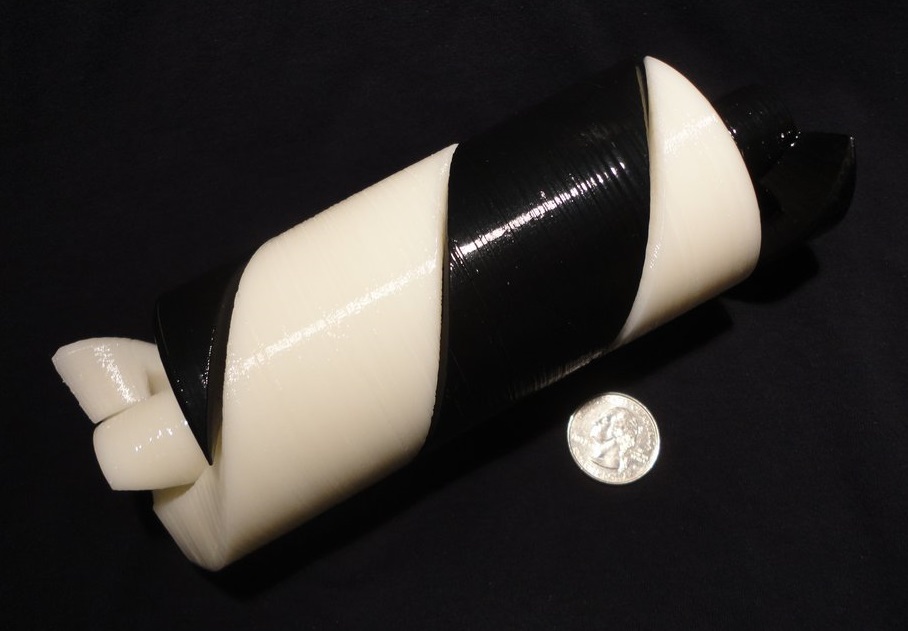
Oliver - Derek Bosch's latest helical burr puzzle, printed by Steve Nicholls. |
|||||

Polar Burr - another helical burr designed by Derek Bosch. |
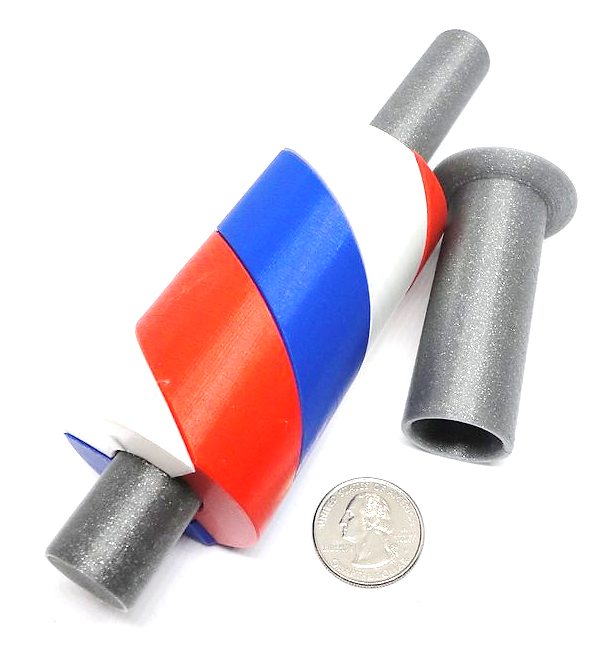
Sweeney Todd - a 4-piece helical burr by Derek Bosch 43 moves to remove the first piece. Printed in PLA by The Two Brass Monkeys. |
|||||
|
|
|
|||||
|
|

 The Peppermint Twist puzzle was introduced at IPP17 by John Ergatoudis. It consists of five twisted metal rods that, surprisingly, interlock. If one rod is slid out of the bundle, it collapses, and is a challenge to reconstruct. |
|||||
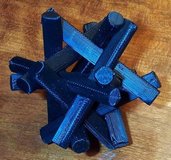
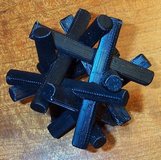
A 12 Sticks puzzle by George Hart, 3-D printed on his Makerbot. This is the 1st of his series of stick puzzles! |
||||||
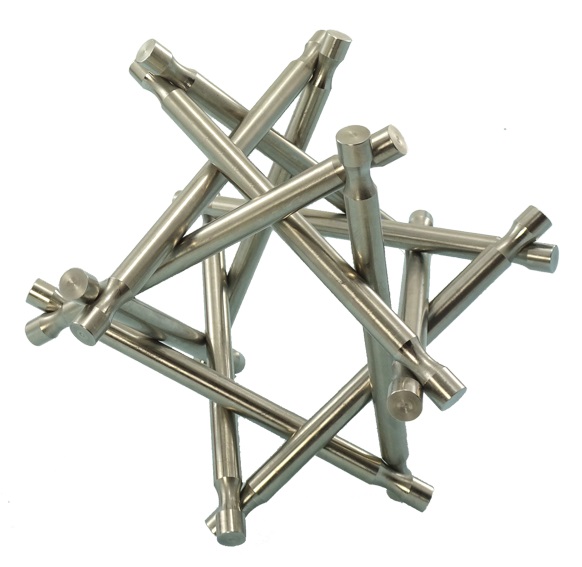
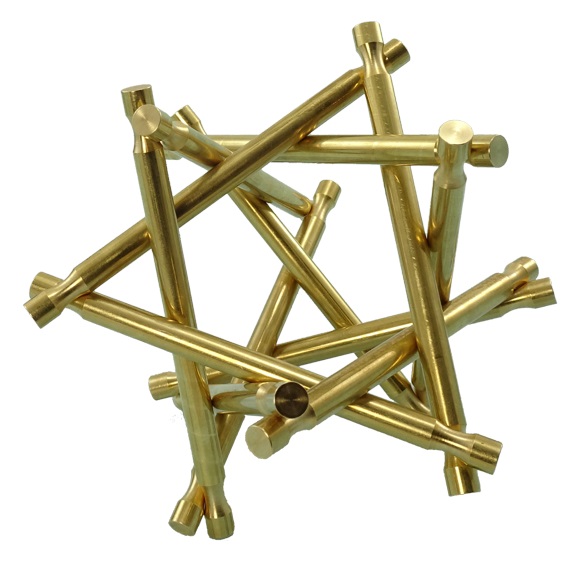
Nova Plexus - designed by Geoff Wyvill, made by and purchased from TwoBrassMonkeys I had been after a Nova Plexus puzzle ever since reading about it in Slocum's 1994 The Book of Ingenious and Diabolical Puzzles - but they were only produced in very limited quantity and had been impossible to find until now. Check Steve and Ali's Etsy shop TwoBrassMonkeys to snag one of the remaining limited edition versions. Wyvill's site has a page giving the history of the Nova Plexus puzzle. |
||||||
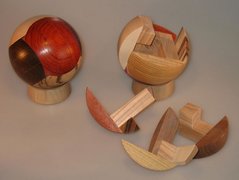
This beautiful spherical puzzle is called the O. S. M. Ball, designed by Jakub Dvorak of the Czech Republic. I purchased this from Bernhard Schweitzer at IPP28 in Prague. Eight pieces. The first and second moves are tricky to discover. Made from beautiful hardwoods. |
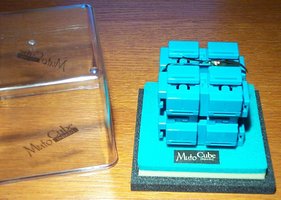
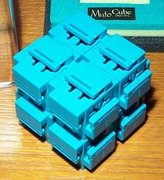
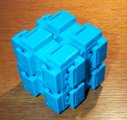
This is a Muto Cube from Japan. I've seen it on only one other collector's ( Martin Watson's ) site. |
||
|
|

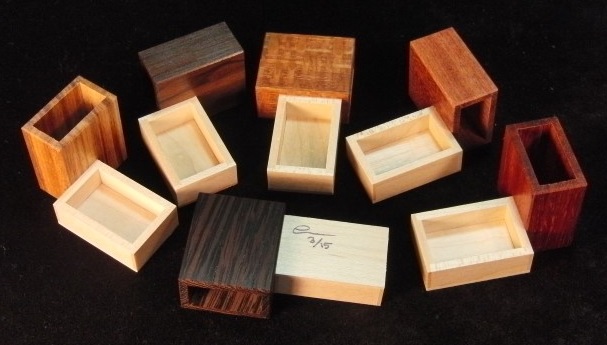
Matchbox Play Six designed by Olexandre Kapkan made by Eric Fuller Eric has this to say about this puzzle: "Oskar's Matchboxes is one of my favorite puzzles, and as soon as I saw that Olexandre had expanded on that concept I was eager to make the Matchbox Play Six. With three sets of mirrored pieces, there are several symmetrical solutions and even a couple non- symmetrical solutions. This puzzle is a lot of fun to play with and is a bit easier to solve than the five piece version by Deventer. It displays beautifully and is one you can hand to a trusted guest to experience the feel of a high end puzzle without the frustration of an extraordinarily high level burr. The construction of this puzzle is robust and detailed. Detailed and intricate shoulder joinery on the drawers and sheaths makes it much stronger than the .125" thick wood would indicate. Each puzzle was individually sanded to fit, and the feel is excellent overall." |
||
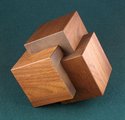
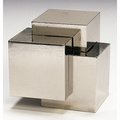
These are Oskar's Cubes. The large wooden version is from Tom Lensch. The small aluminum version is from B and P. You can see the pieces at Ishino's site. |

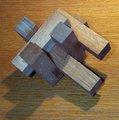
The Devil's Half Dove-n and the Devil's Other Half Dove-n. Designed by Pavel Curtis. From Puzzlecraft, gifts from LuAnn. |
||
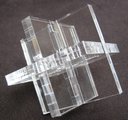
This puzzle is called Six Tabbed Planks. It is made from acrylic. I really like it - the proper configuration can be logically deduced with a little effort, and the assembly is sequential. Unknown designer. Purchased from Pavel Curtis. Pieces shown here. |
|
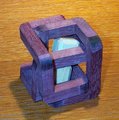 Caged Spheres (in purpleheart wood) Also purchased from Puzzlecraft. |
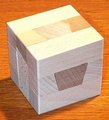
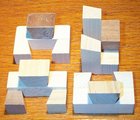
A 4-piece cube with dovetailed pieces. Designer unknown to me. |



This is Arjeu's CT87. This was designed by Oskar van Deventer. Evidently Arjeu never compensated Oskar! Tom Lensch is selling a really nice version. |
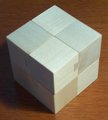
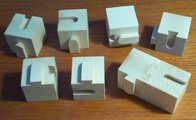
Myopic Doves by Rick Eason. |
||
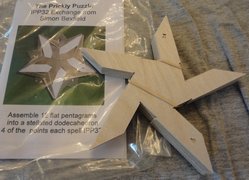 Prickly Puzzle, designed, made, and exchanged by Simon Bexfield |
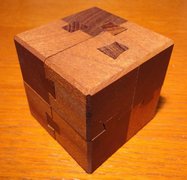
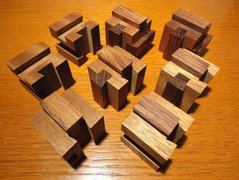
The Slump Cube, designed by Ronald Kint-Bruynseels, made from Mahogany and Rosewood by Eric Fuller |
||
|
|
|||
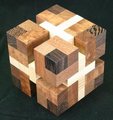
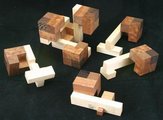
The Tease puzzle cube designed by Sam Cornwell and made from Quilted Sapelle, Wenge, and Carolina White Ash by Eric Fuller. Five pieces, and five moves to get the first piece out. |
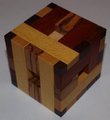
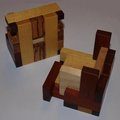
This is Oskar's Patchwork Box, designed by Oskar van Deventer and made by Tom Lensch. Purchased from Tom at IPP 29 in SF. |
||
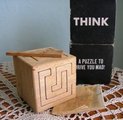
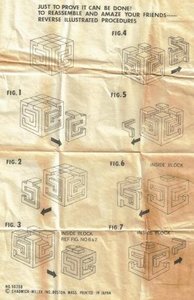
A vintage Think puzzle by Chadwick Miller of Massachussetts. Made in Japan. Copyright 1968. |
|||
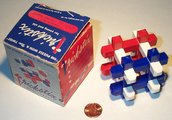

This is Trickstix, by Harris. See U.S. Patent 2473369 - Harris 1947. The similar cage with rotating sticks and a ball inside is a common design. |
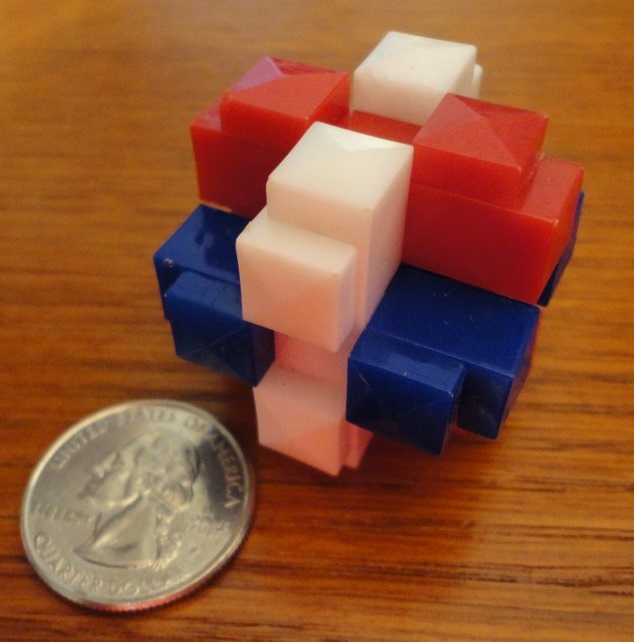

Adam's Block Puzzle Senior and Panel Puzzle I finally obtained instances of these two in their original packaging. |
||
|
|
|||
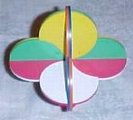
The Molecule by Joe Miller. See U.S. Patent 5762336 - Miller 1998. Entered in the IPP 2001 Design Competition. |
|
||
Here are several offered by Bits & Pieces at various times...


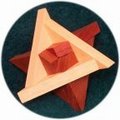

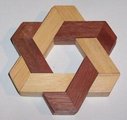
|
|||
|
|
|||
|
|
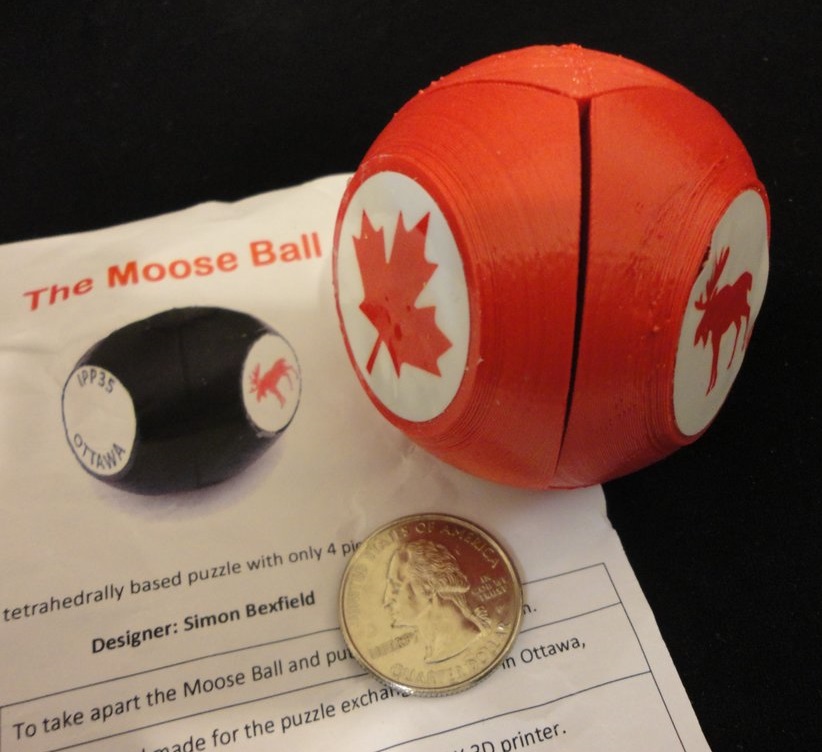
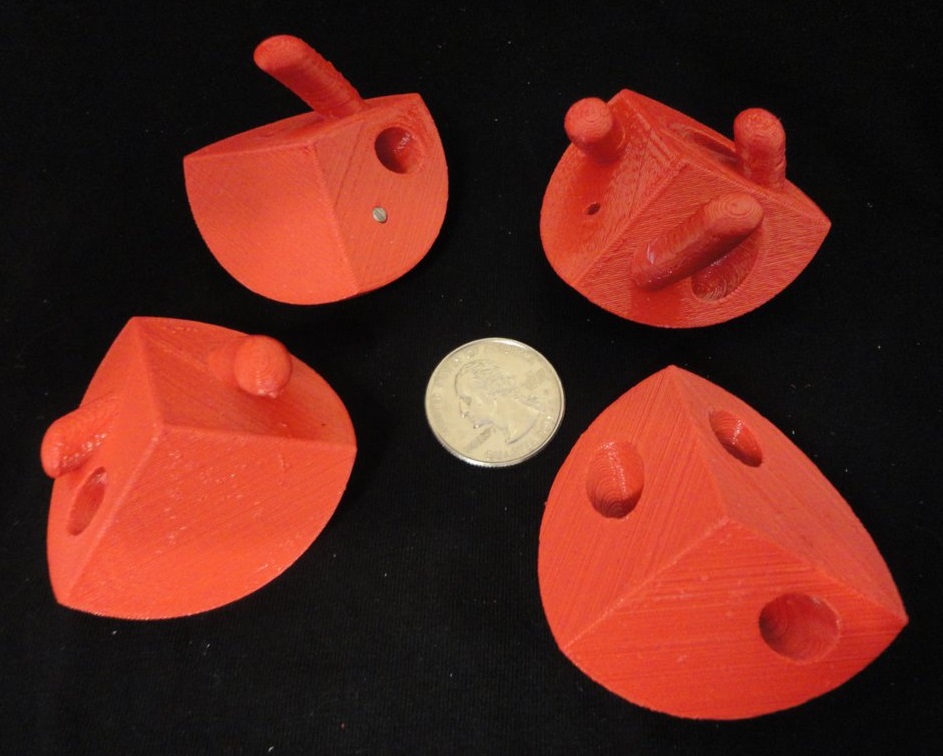
Moose Ball - designed and exchanged at IPP35 by Simon Bexfield |
||
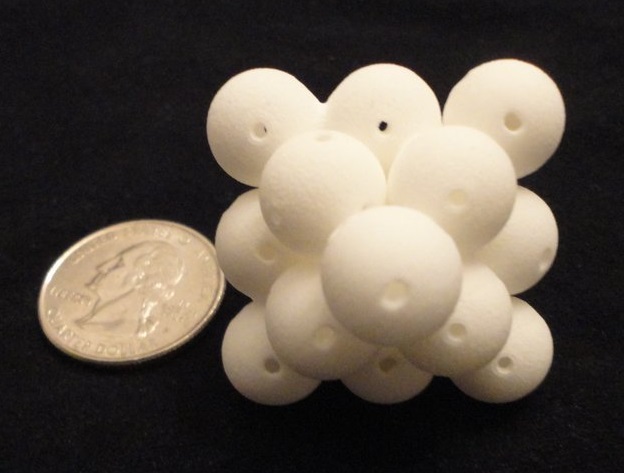
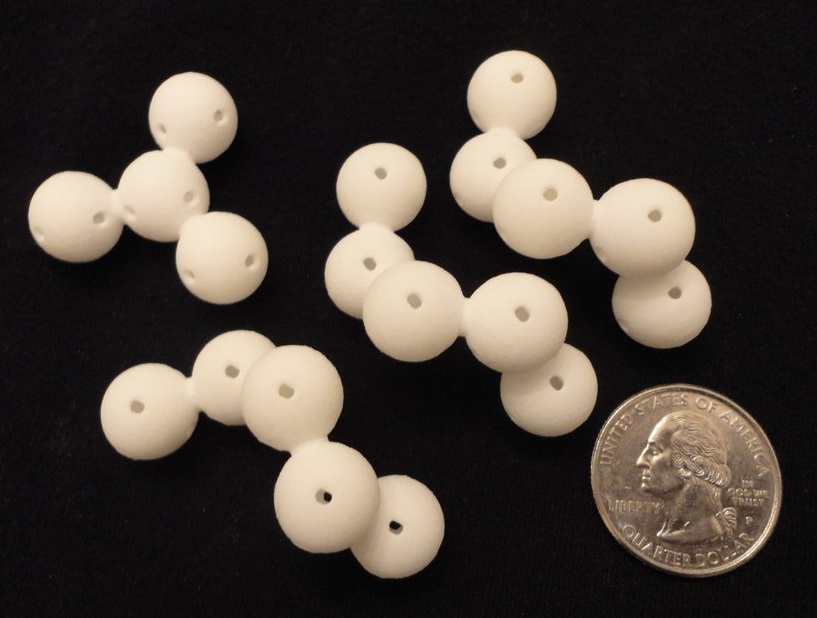
Screwy Octahedron a 3D print designed by George Bell |
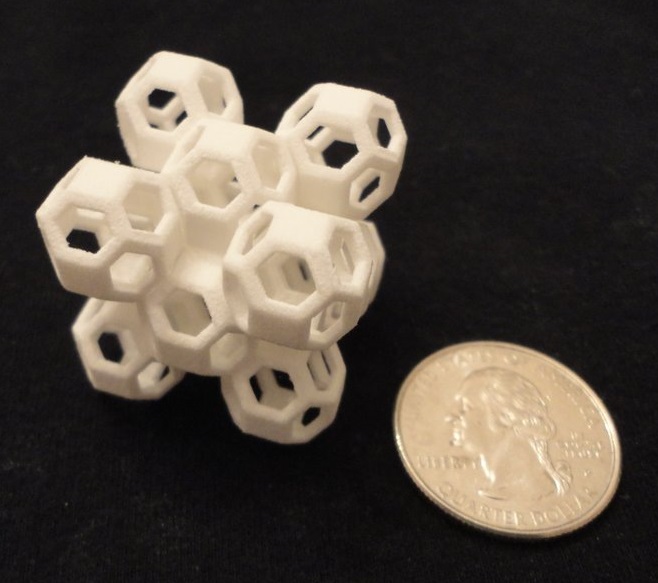
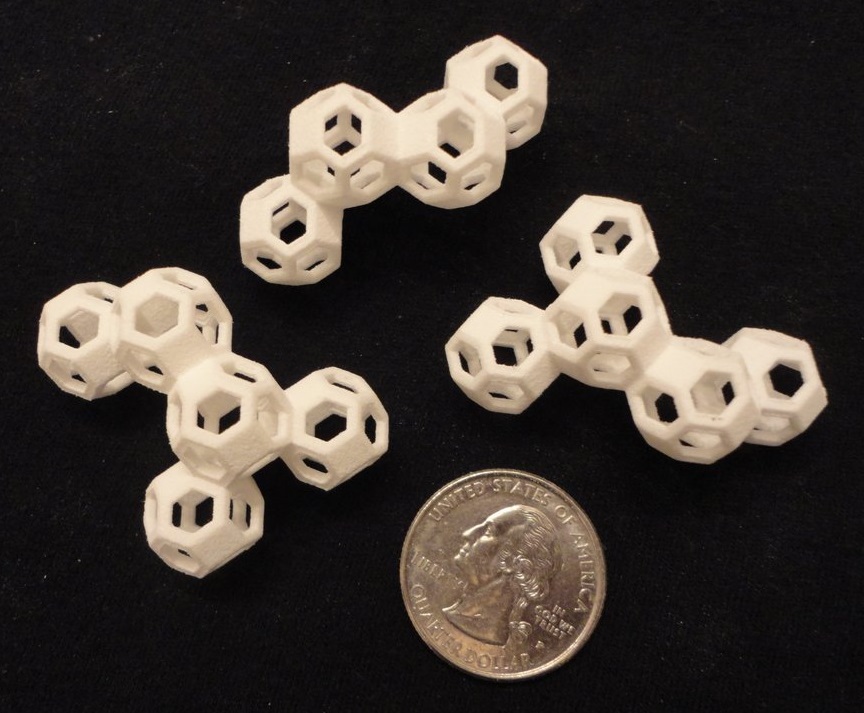
Nuclear Fusion a 3D print designed by George Bell |
||
|
Stephen Chin of Australia is a skilled woodworker and woodturner.
He created a beautiful apple-shaped wooden interlocking / coordinate motion puzzle he calls 1 Pinko Ringo,
inspired by
Wayne Daniel's 10-piece icosahedron.
Stephen's puzzle was among the top 10 vote-getters in the
2010 IPP Design Competition.
A similar puzzle by Stephen called the Bomb won the first Rochester Puzzle Picnic Puzzle Competition.
Stephen has also created his own version of the icosahedron, known as the "Spinico."
Brian Pletcher
blogged about it.
George Bell
did some CAD modeling and after several prototypes to get the angles just right, offers
spherical versions of Stephen's design in two sizes
at
his Shapeways shop.
He calls this the Exploding Ball.
The puzzle comprises 10 identical very interesting pieces.
The dissection using 10 identical pieces was at first thought to be impossible to assemble, but it can be managed.
Disassembly can be challenging if you cannot think of a convenient method.
I bought the larger version.
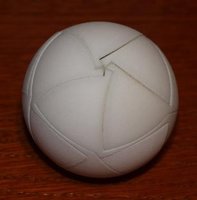
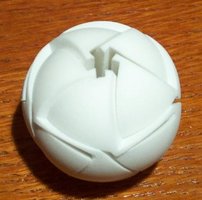
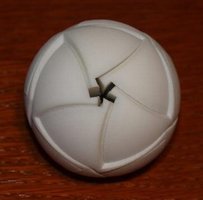
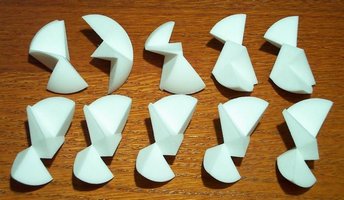
At IPP35, I was able to purchase a hand-turned wooden version from Stephen:
|
|||
|
The Bandai Ultimagear Yu-Gi-Oh Millennium Puzzle I had purchased arrives in its largish box packed like a model - its ABS parts are on a set of sprues. The parts must all be cut free from the sprues, carefully trimmed, and then each puzzle piece can be assembled from its constituents according to included instructions. Each of the puzzle's pieces comprises two or more parts. Fortunately no glue is required - the parts press together, albeit with some firmness needed, and I found all the fits to be satisfyingly precise and snug - the parts are very unlikely to ever be unintentionally (or even intentionally) separated. The resulting puzzle pieces are all robust and none seem prone to break during normal play while respecting the typical mechanical puzzling prohibition against use of undue force.
No instructions are included for how to assemble the puzzle from its pieces. I attempted assembly guided only by images of the finished puzzle - many times I had made some headway when I realized that I had to unwind several steps to insert a new piece, and furthermore that rotations were required! This is most definitely a sequential interlocking puzzle with rotations along the way, and I am very pleased with its overall quality. It is a bit like a plastic Berrocal - the pieces are not simply polycubes - their shapes are intricate and the placement of each is not necessarily obvious, but with patience can be deduced. Tricky and non-orthogonal movements are needed to sequentially interlock and unlock the pieces during the solve. Cutting free the parts and construction of the pieces took me about three hours, and solving (assembling the puzzle) about a further two hours - there were a couple of moments where three hands would have been helpful during the solve, and I only required one hint.
|
|||
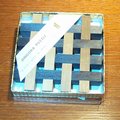

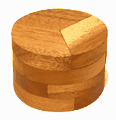
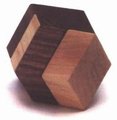
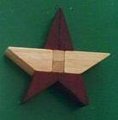 Jingora, Dovetail (Hoi Polloi / Reiss), Cylinder (Wingstoys), Dodeca (Tensegrity Systems 1991), Simple Star (B&P?)
Jingora, Dovetail (Hoi Polloi / Reiss), Cylinder (Wingstoys), Dodeca (Tensegrity Systems 1991), Simple Star (B&P?)
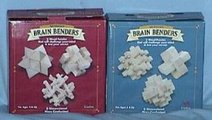 These two sets of "Brain Benders" from Cardinal (blue box and red box, 3 puzzles each)
include a six-piece Diagonal Star,
a Chuck similar to Pentangle's Woodchuck, above, a traditional 6-piece burr, a wooden version of
an 18-piece puzzle similar to Mag-Nif's Third Dimension, a rods-and-pins "Nest" puzzle similar to the Arjeu Quadro,
and another 12-piece chuck called "Double Cross."
They are cheaply made from softer wood, and I've seen them at toy stores for $3.99 a box.
Similar sets are branded by Pavillion.
These two sets of "Brain Benders" from Cardinal (blue box and red box, 3 puzzles each)
include a six-piece Diagonal Star,
a Chuck similar to Pentangle's Woodchuck, above, a traditional 6-piece burr, a wooden version of
an 18-piece puzzle similar to Mag-Nif's Third Dimension, a rods-and-pins "Nest" puzzle similar to the Arjeu Quadro,
and another 12-piece chuck called "Double Cross."
They are cheaply made from softer wood, and I've seen them at toy stores for $3.99 a box.
Similar sets are branded by Pavillion.
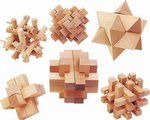
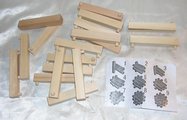
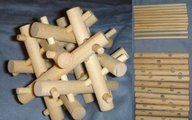
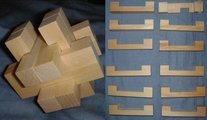
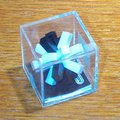
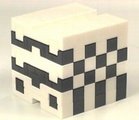
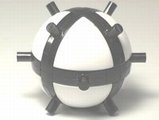

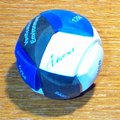
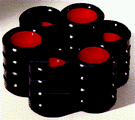
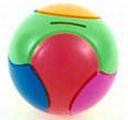
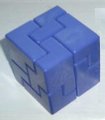
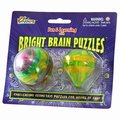
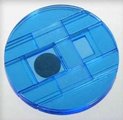
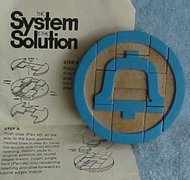

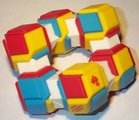
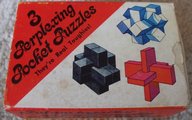
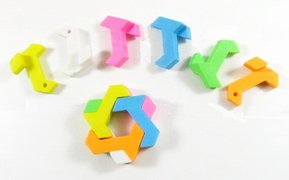
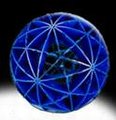 This is the
TenGeo
Great Circle Challenge.
This is the
TenGeo
Great Circle Challenge.
This is a selection of "Mighty Midget" puzzles from Mag-Nif:
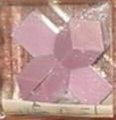
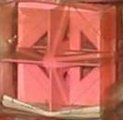
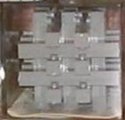
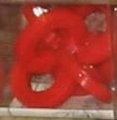
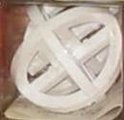
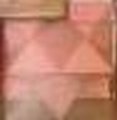
 I got this lot of 3 of the same "Chinese Burr" in different colors, from a French auction.
I gave away two and kept the green one.
Normally the #1 mechanical puzzle rule is "No Force Required!" but this puzzle really
requires some force for the first and later moves.
These 4 "Travel Puzzles" are from Game Kingdom: ball in cage, 6x6x6 sticks, star burr, depth charge:
I got this lot of 3 of the same "Chinese Burr" in different colors, from a French auction.
I gave away two and kept the green one.
Normally the #1 mechanical puzzle rule is "No Force Required!" but this puzzle really
requires some force for the first and later moves.
These 4 "Travel Puzzles" are from Game Kingdom: ball in cage, 6x6x6 sticks, star burr, depth charge:
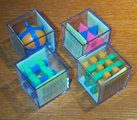
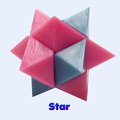
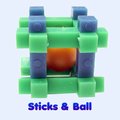
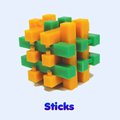
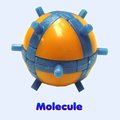
|
Ms. Leone, a teacher at the local elementary school, uses puzzles in her classroom.
Last year I loaned a bunch of puzzles to her for her students to try, and she was very kind to send me a Cyclone puzzle as a thank-you. Much appreciated! 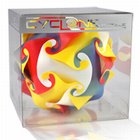
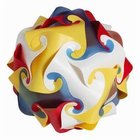
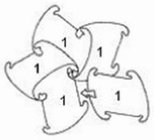
 The Cyclone is offered by
The Lagoon Group.
Interestingly, this design seems to have first appeared as a lamp!
The Cyclone is offered by
The Lagoon Group.
Interestingly, this design seems to have first appeared as a lamp!
The product IQ Light won the 2001 Danish Design Award for its packaging. IQ Light was designed by Holger Strøm of Denmark in 1973. It is based on a single piece or tile, various numbers of copies of which can be interlocked to form more than 21 different shapes. 30 tiles form a triacontahedron. In the assembly, there are 12 vertices where 5 tiles hook together, and 20 vertices where 3 tiles hook together. You can find a template for the piece at www.craftster.org. William Chow has a website explaining the geometry of what he calls the Celtic Tile. |
|
Puzzle friend and renowned sculptor and mathematician
George Hart
has been creating beautifully symmetric, complex, and puzzling geometric assemblies for some time.
Large versions of many of George's sculptures have been installed at universities, parks, and various other public and private spaces. You can now own a copy of one of George's beautiful designs - it's called Frabjous and is available from the folks at Artifacture in Dallas, who sent me this 6" x 6" x 6" Special Edition Frabjous, laser cut from Acrylite Radiant Acrylic. Thanks, Michael! This type of acrylic material reflects light in different colors from different angles and provides a fascinating display of varying hues as you move around the sculpture. The puzzle sculpture comes unassembled, in a package that includes instructions, 31 S-shaped pre-notched interlocking pieces (one extra piece is thoughtfully provided), and even a pair of cotton gloves to wear during assembly, so that you can avoid getting fingerprints in hard-to-clean places! Artifacture sells direct through various online outlets (see links on their product page), including their Etsy shop. Artifacture has produced Frabjous for MoMath - the MoMath logo, and George Hart's name, are engraved on one piece. Frabjous was available at the MoMath online shop. It took me about an hour to assemble Frabjous. I had to recover from a false start when I realized I had been careless while interweaving some of the pieces. I disassembled what I had so far and started over, being much more deliberate. The pieces lock together by friction/pressure fit using simple rectangular tabs and notches at apexes where three pieces meet - the hold is secure, but it is possible to work the pieces apart again without too much trouble. One thing I was pleased about is that though acrylic in general seems to have an unfortunate tendency to crack at angular cut-outs, I experienced no faults in any of the Frabjous pieces even after I had attached and detached them multiple times. During my second try at putting Frabjous together I actually found that if I ignored the included instructions and instead concentrated on the five-fold symmetry of the structure, adding five pieces at a time in symmetry around the growing assembly, I could much better ensure the correct relative placement of the pieces. Something to note is that you cannot simply create a bunch of "tripods" and then expect to link them together - it is too difficult to properly interweave such sub-structures. I took photos along the way - I think you'll agree that Frabjous is a beautiful object! I can also attest that Frabjous is a puzzling challenge to assemble, and you will enjoy a nice sense of satisfaction on completing it. My wife even let me put this one on display in the family room! |
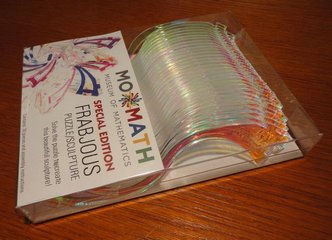
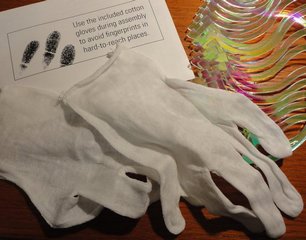
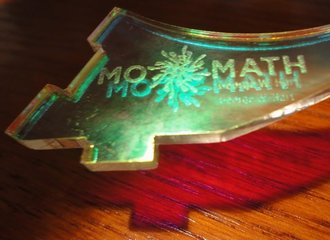
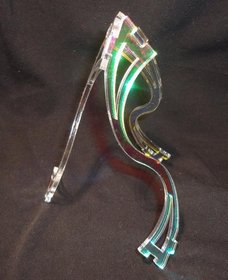
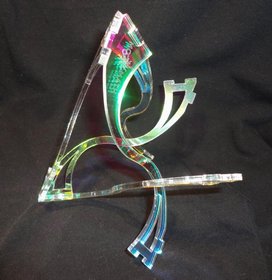
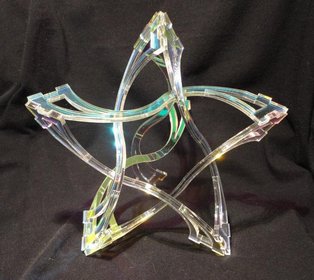
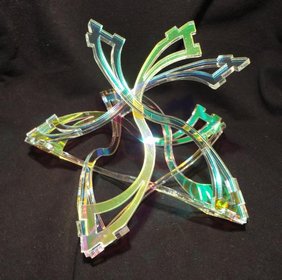
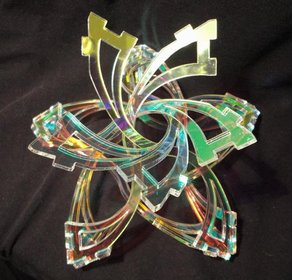
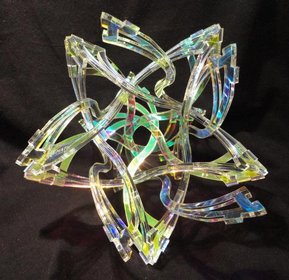
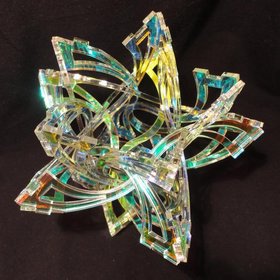
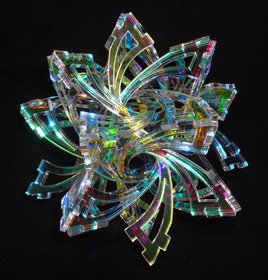
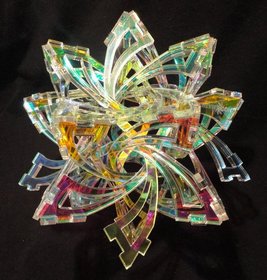
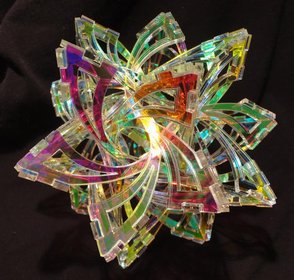
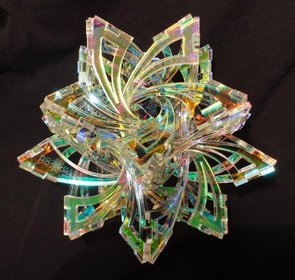
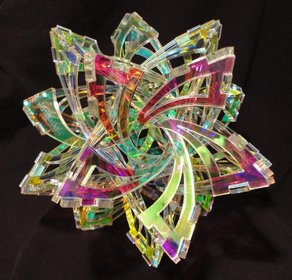
|
Here are some interlocking irregular geometric designs made in metal.
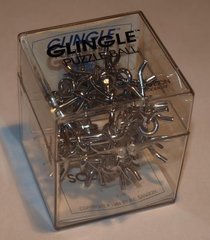
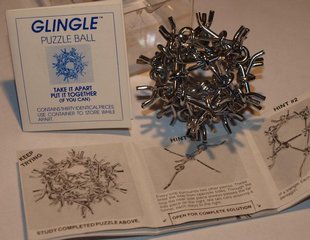
This is a Glingle Ball Copyright 1984 R. E. Sanson I've had it a looong time, and NEVER took it apart! |
||
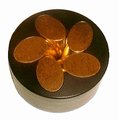 Charles O. Perry's Zen |
 The Buffalo Nickel is clever - it is a two-piece (plus "case") interlocking. It made by George Miller, based on a design by Oskar van Deventer. Bits and Pieces marketed this nice metal version. |
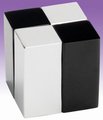 Impossicube - Markus Goetz (B & P) |
 The Lucky Clover from B and P was designed by Oskar van Deventer. It has only 4 pieces but requires many steps to assemble properly. |
 Gravity Well - Bits and Pieces |
Double Monad (Yin-Yang) - Bits and Pieces |
 Butterfly - Bits & Pieces |
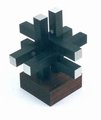 The Ego Sculptural Puzzle is a 6-piece version of the Third Dimension style above. It was offered in a "Good Design" box by Austin Enterprises and Something Else Inc. of Akron Ohio and Ossining NY. |
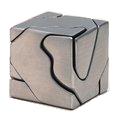
From Bits & Pieces, a Curly Cube, designed by Vladimir Krasnoukhov. |
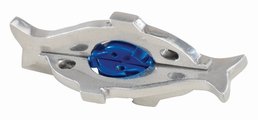 Entangled Fish - B & P |
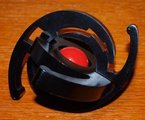
Great Collision, designed by Doug Engel. Purchased at IPP 29 in SF. |
|
While most of the Irregular Assemblies are geometric shapes, some are in the form of various figures.
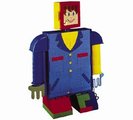 This is Mr. Puzzle from Bits and Pieces, which contains several different kinds of puzzles including interlocking (his feet). |

 A Hartley's Humpty Dumpty Egg puzzle U.S. Patent D160283 - Irving Hartley Steinhardt 1950. |
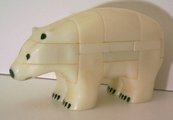 This is Nanook the Polar Bear. |
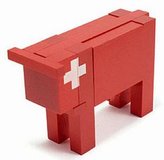
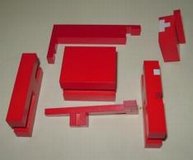 This is Naef's Swiss Cow or Vache Rouge. It was designed by Gerard Petremand in 1978. This version has six pieces. |
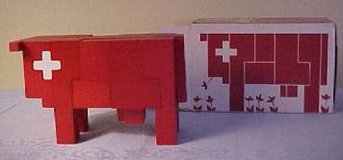
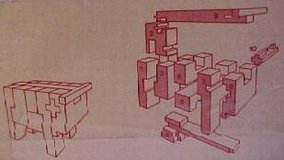 This version of Vache Rouge has more pieces. |
|
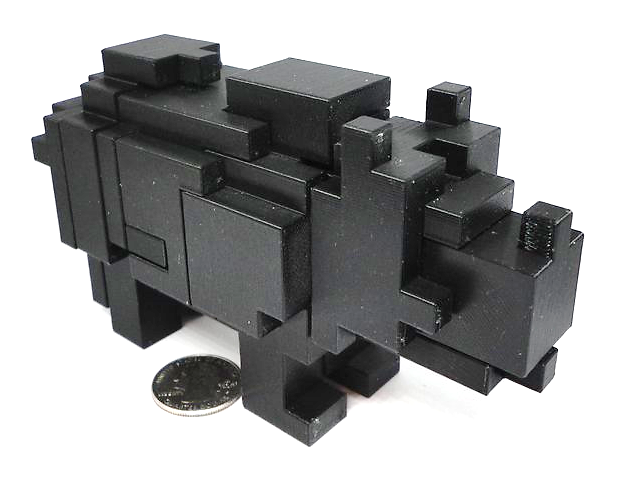
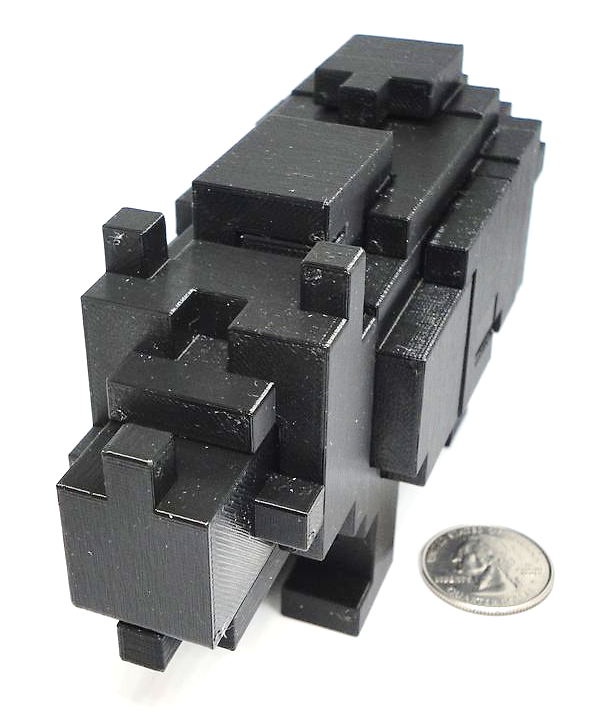
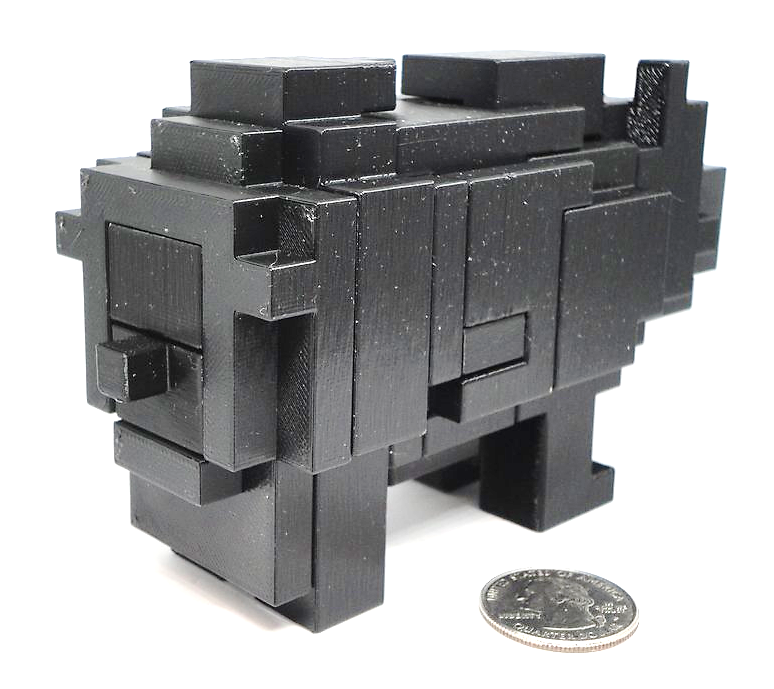
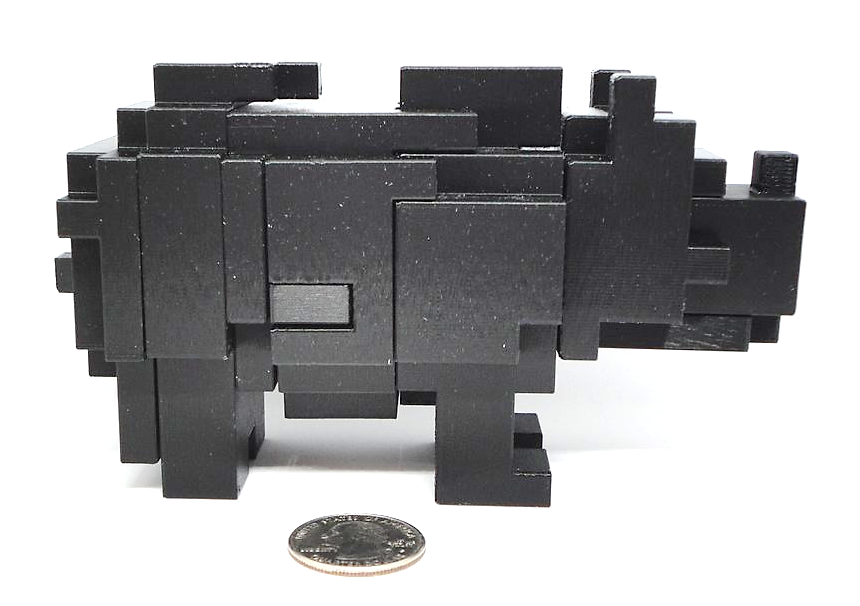

The Rhino puzzle by Theo Geerinck and Symen Hovinga at No Problem Puzzle Shop. They were inspired by Kumiki, but to me this belongs here. Note the tiny baby rhino hidden inside! I got this printed by SEA Manufacturing on Treatstock. I chose to get a black rhino. |
||
 A hand-carved wood Dragon puzzle from Thailand or Mongolia, I'm not sure. |

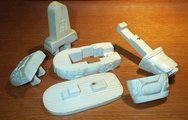 The Sphinx (or Turtle). Getting it apart was somewhat of an ordeal, as some pieces were fused by the sloppy shellac on them - but fortunately I separated them without damaging anything. |
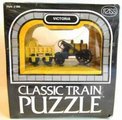 A vintage locomotive puzzle by Reiss. |
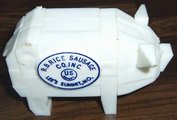 The R. B. Rice Sausage Company Pig puzzle (Lee's Summit, MO). Virtually the same pieces as Nanook, but smaller and less dense. |
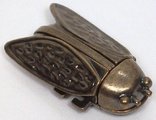
Cicada by Kathy Bass Available from Mr. Puzzle Australia (Brian Young). Obtained at NYPP 2008. |

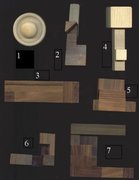 From William Waite, the Camera Conundrum. |

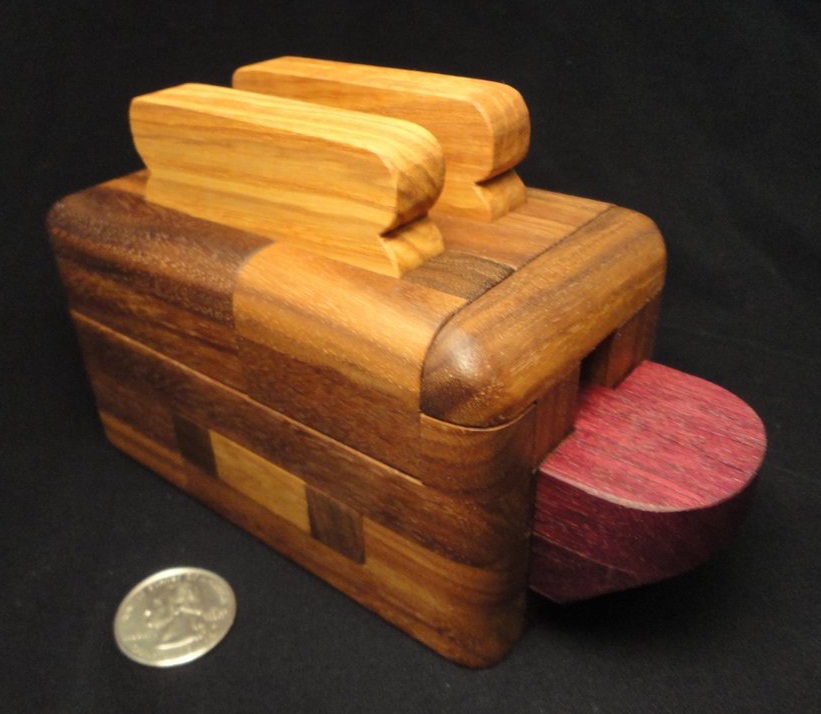
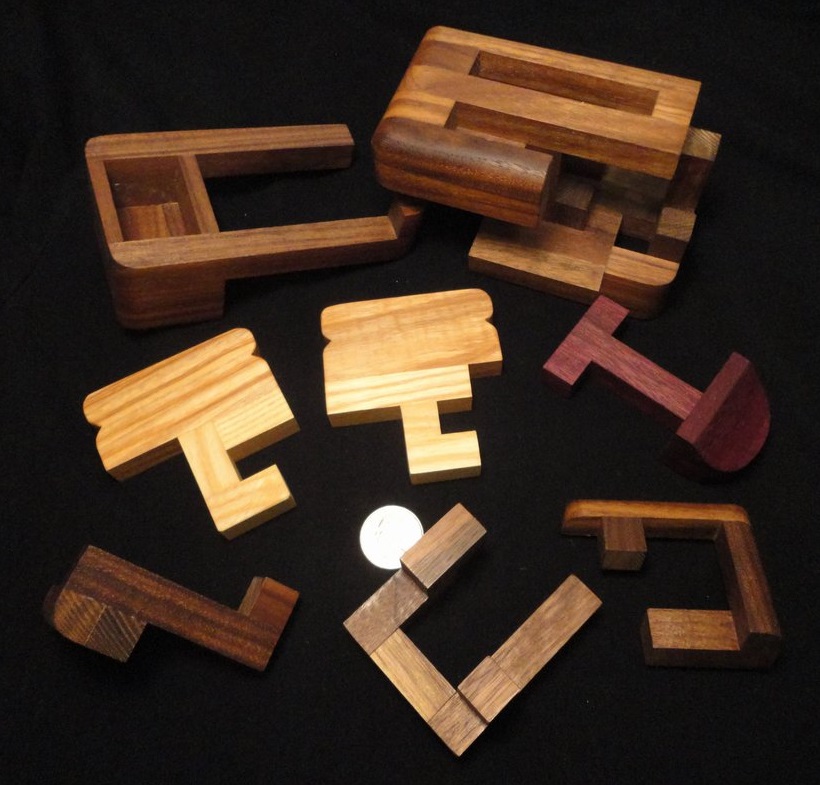
Toaster - by William Waite - one of his original run, not a Pelikan remake |
||
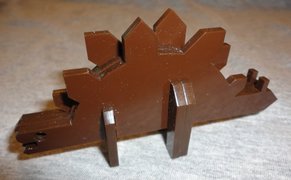 An interlocking Stegosaur |
||
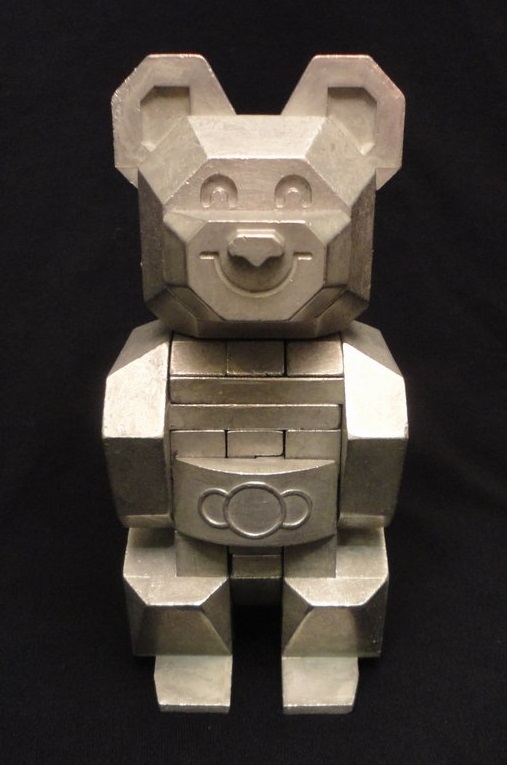
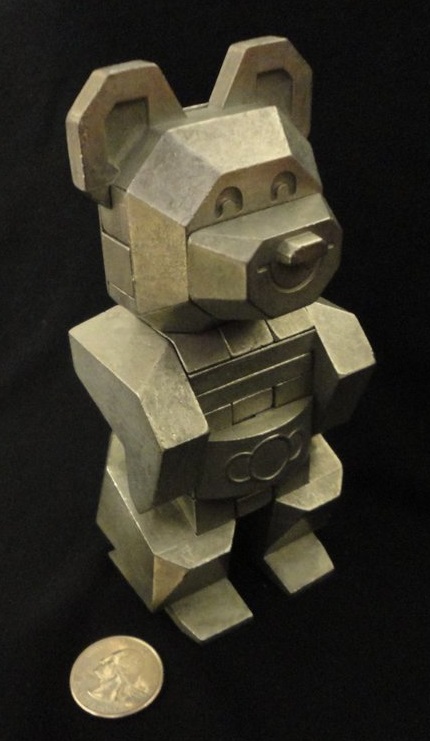

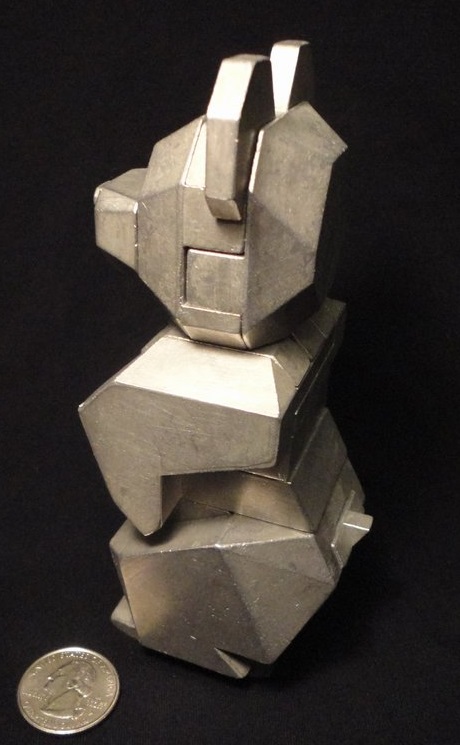
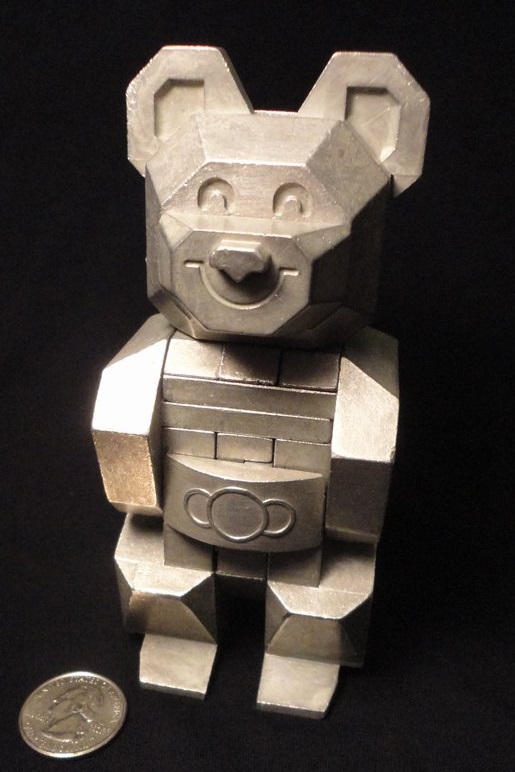
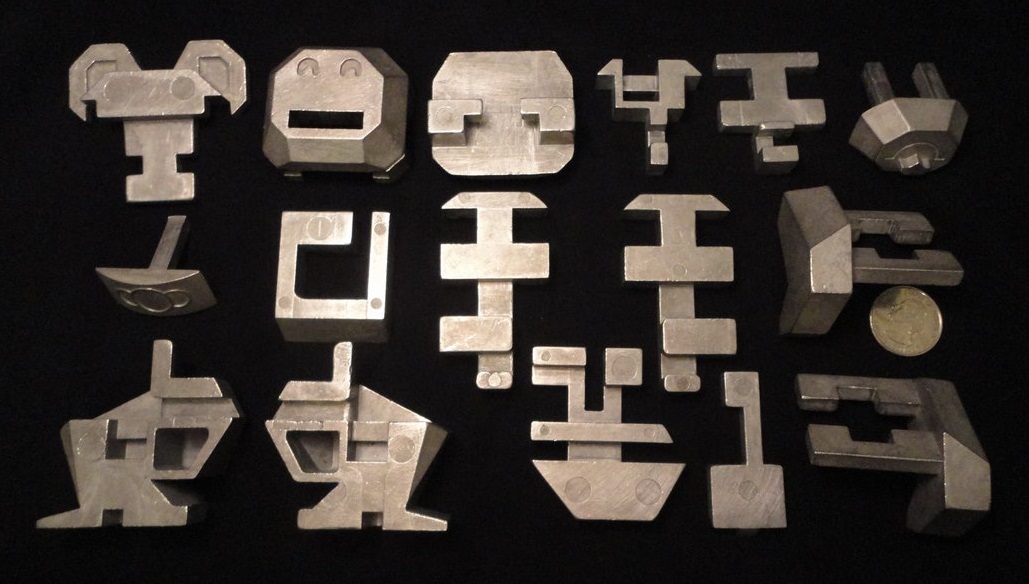
I bought this aluminum Russian 1980 Olympics Bear Puzzle from a seller located in Belarus. I do not know who made it. It stands about 14cm tall and is an interlocking sculpture of 16 pieces. Like much Soviet architecture, it is blocky and brutalist - but I like it a lot! I call it a "Russian Bear-o-cal." Ha, ha! I crack myself up. |
||
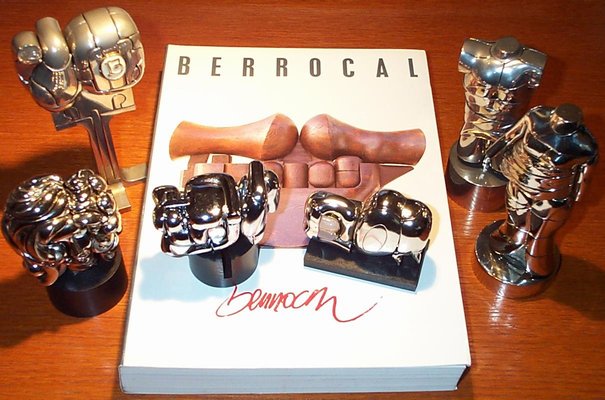
Berrocal was born in Malaga, Spain, in 1933, and died in 2006. He was married to Princess Cristina, the grand-daughter of the last King of Portugal. He presided over a 200-employee foundry in Negrar and referred to himself jokingly as the "boss of the sculptor's Mafia."
Probably the first time I heard of the puzzle sculptures of Miguel Berrocal was upon reading about them in one of Martin Gardner's columns in Scientific American. (Gardner discusses them in Chapter 18 of his book Penrose Tiles to Trapdoor Ciphers.) In college I had occasion to visit a friend - she was a foreign exchange student staying with an American family (hi Fariba!). The family owned a Berrocal Mini-David and that was my first opportunity to try one of the puzzle sculptures of Miguel Berrocal. Berrocal made six sculptures in his "Mini" series, and offered them as limited edition "multiples." They include:
|
|
I have seen a variety of costs - the set of six has been offered for anywhere from $5K to $10K. Mini-David is the most popular and runs anywhere from $1K to $2.5K. The others run from $350 to $1800 depending on where you look and how lucky you get. Asking prices are on the rise. John Rausch and James Dalgety are two dealers. Read about Berrocal on Dalgety's site.
James Strayer has quite a collection of Berrocals, as does John Rausch.
|
Portrait de Michele (My favorite...)
|
||
|
Mini Maria
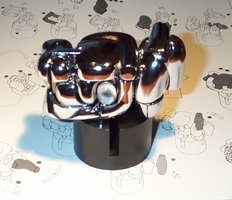

|
||
|
Mini-Zoraida
|
||
Mini-David
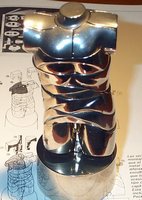

|
Mini-Cristina

|
Mini-Cariatide
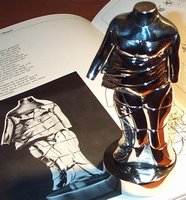
|
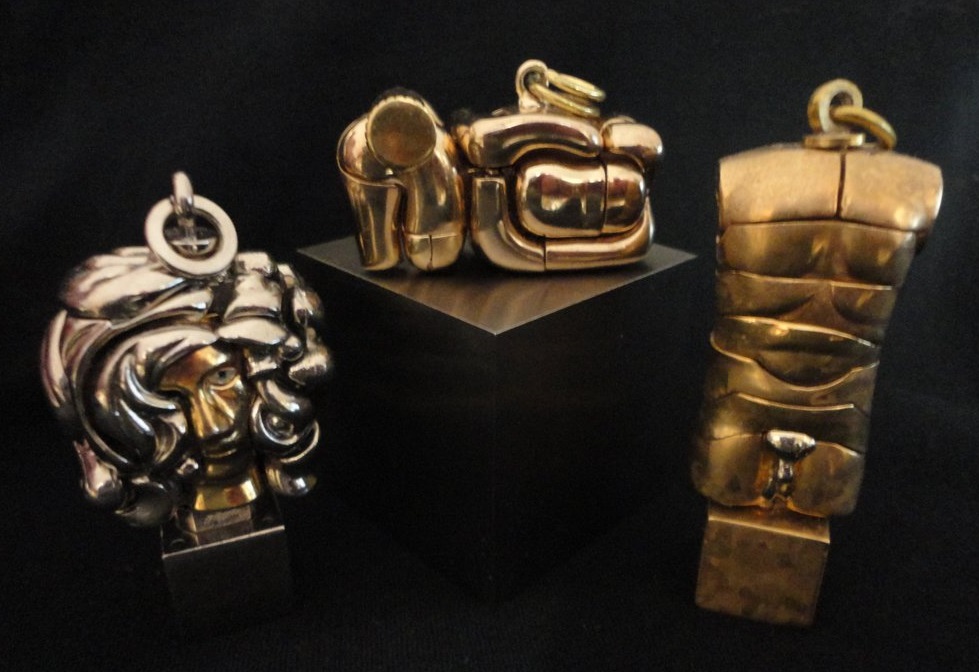
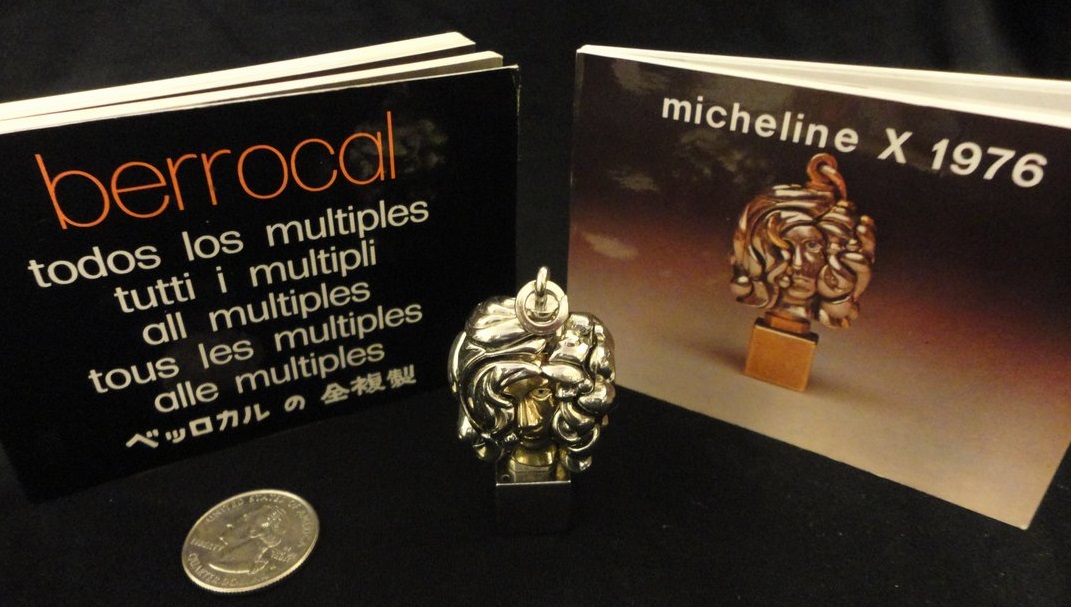

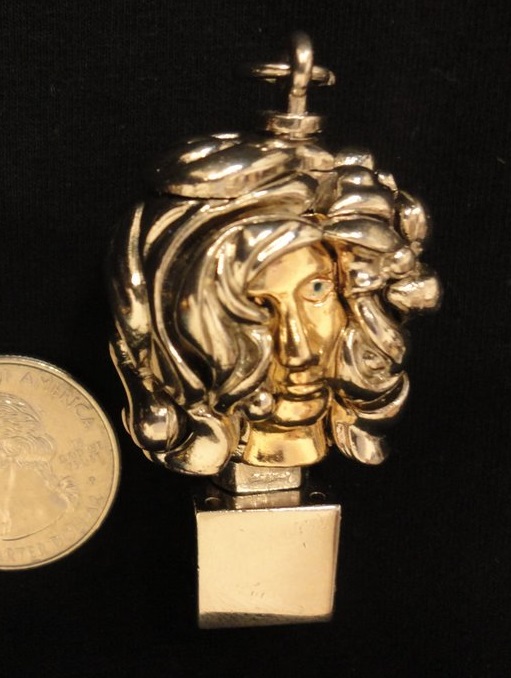

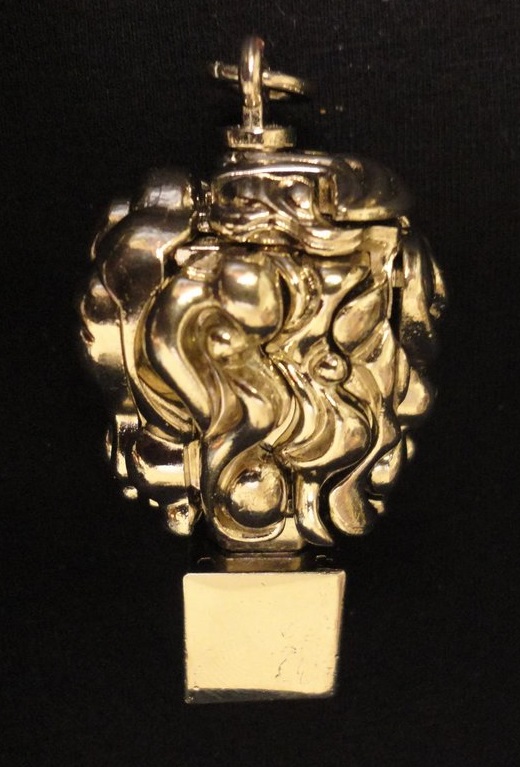
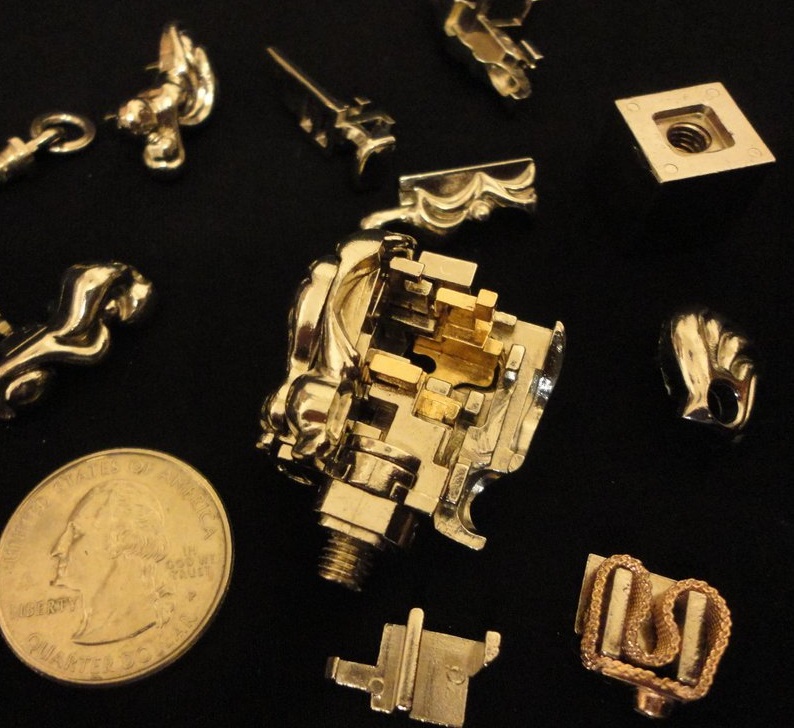
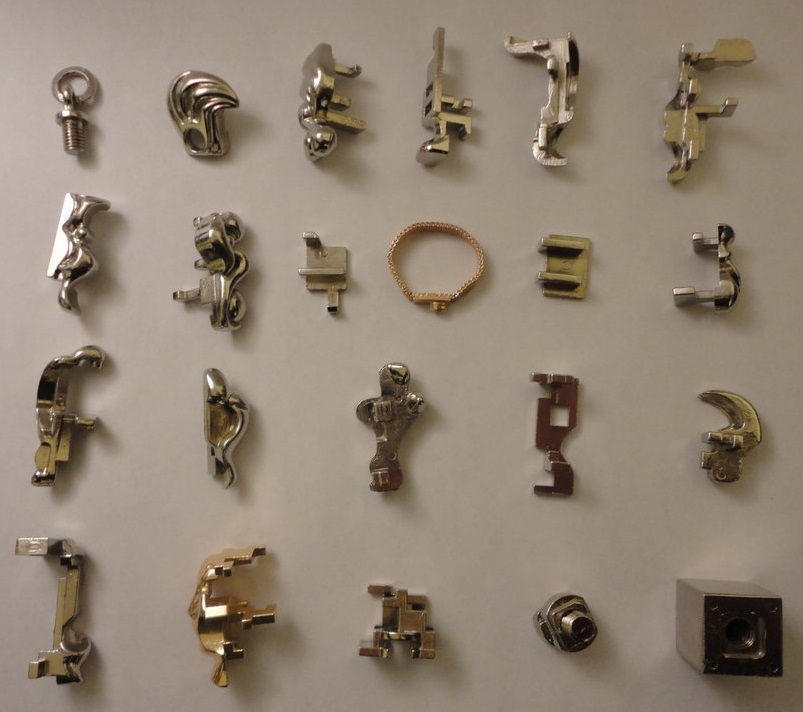
Here is a comparison with Portrait de Michele - Micheline is sitting atop my one-kilogram cube of Tungsten:
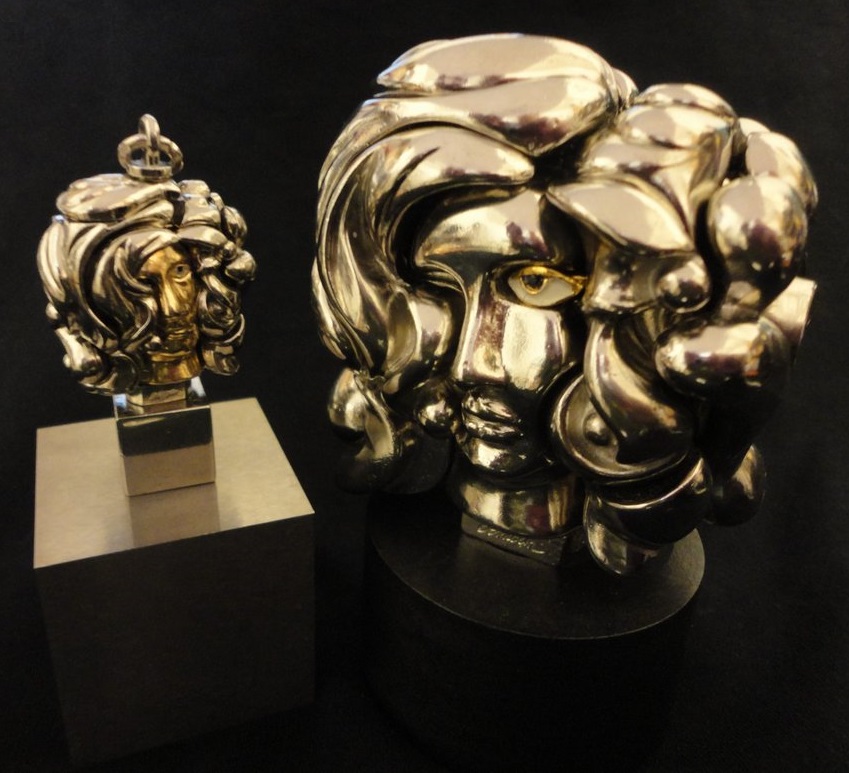

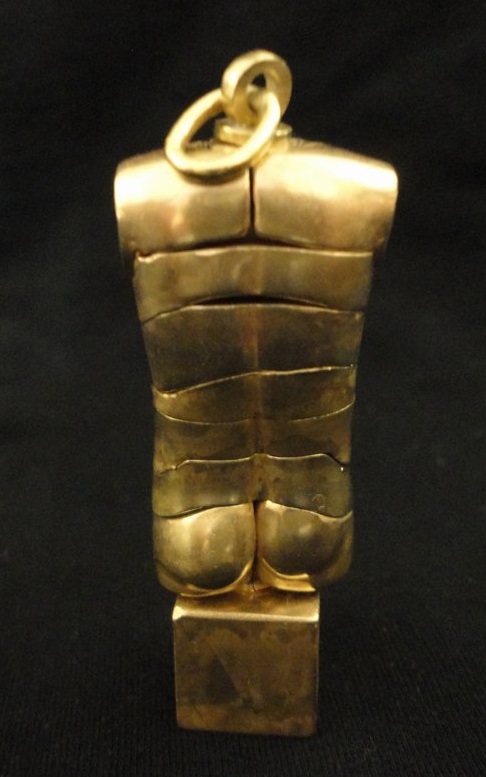
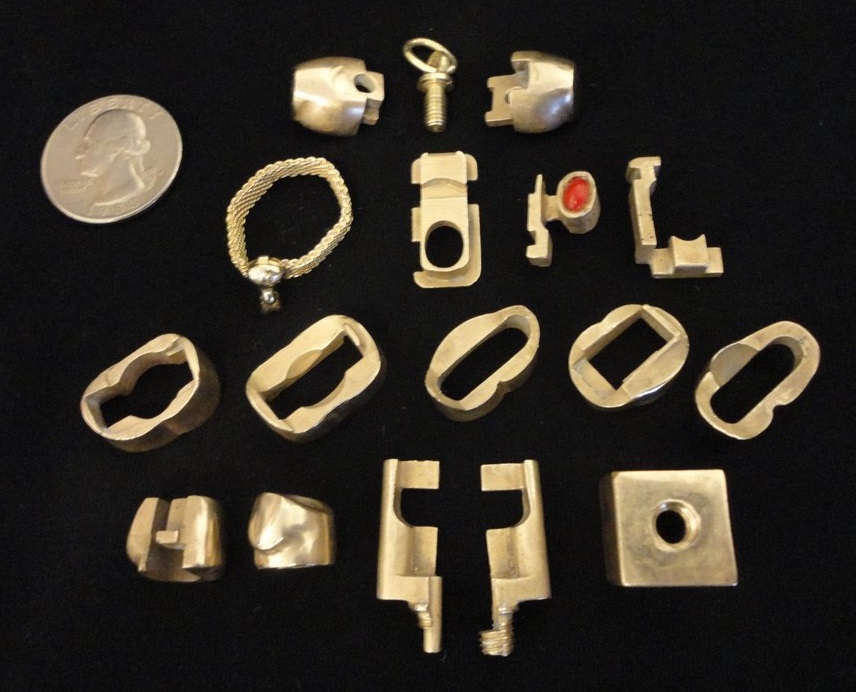
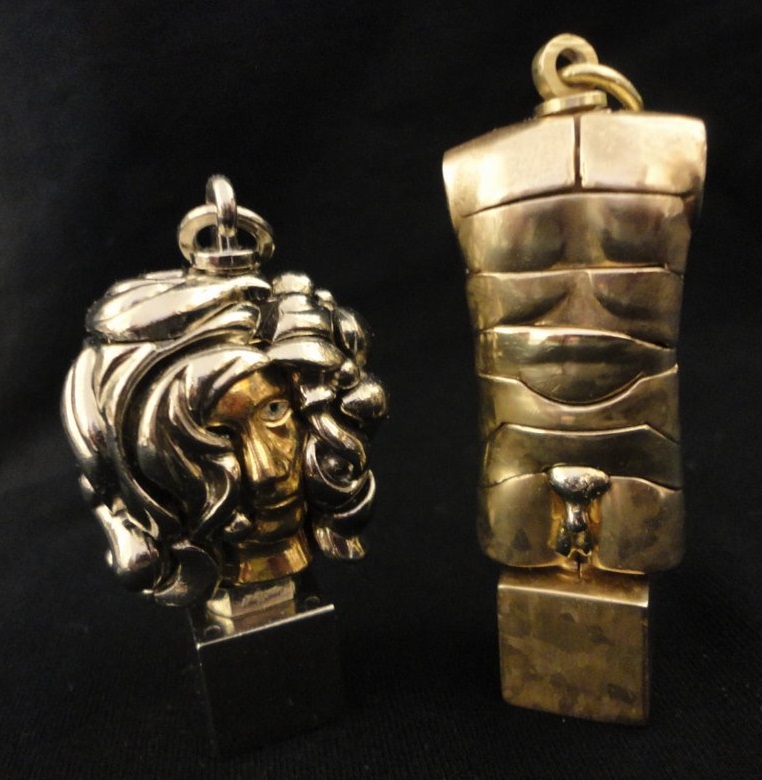



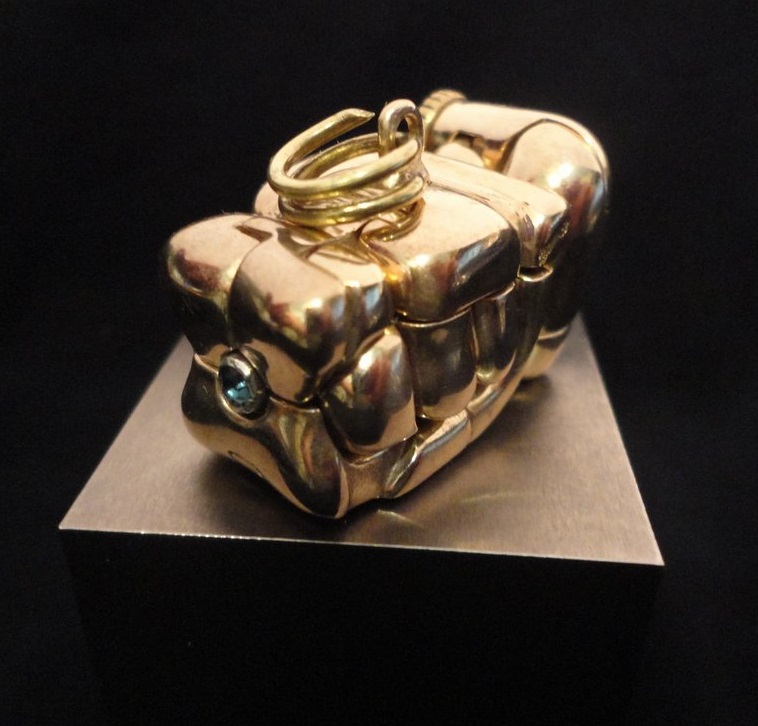
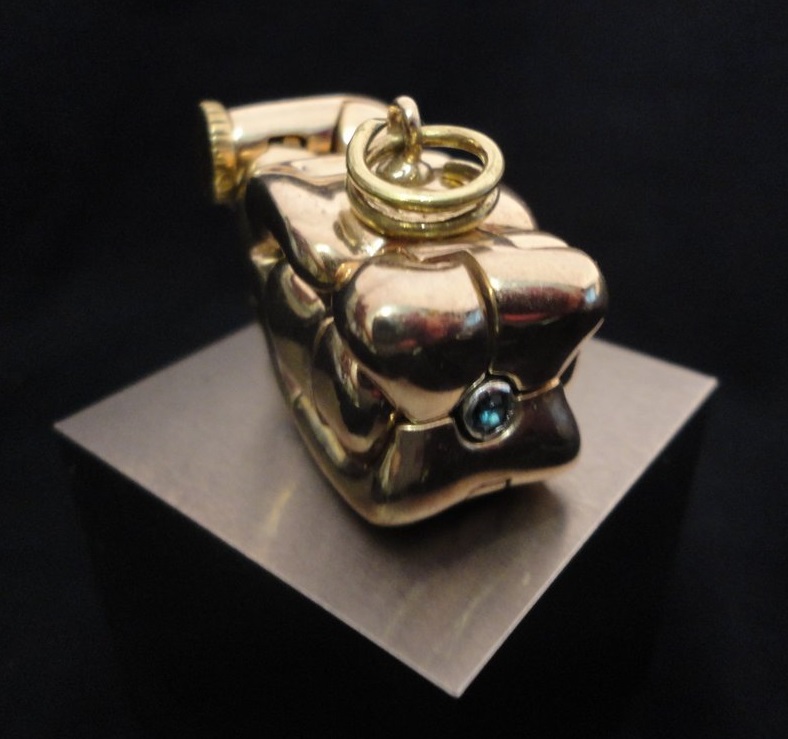
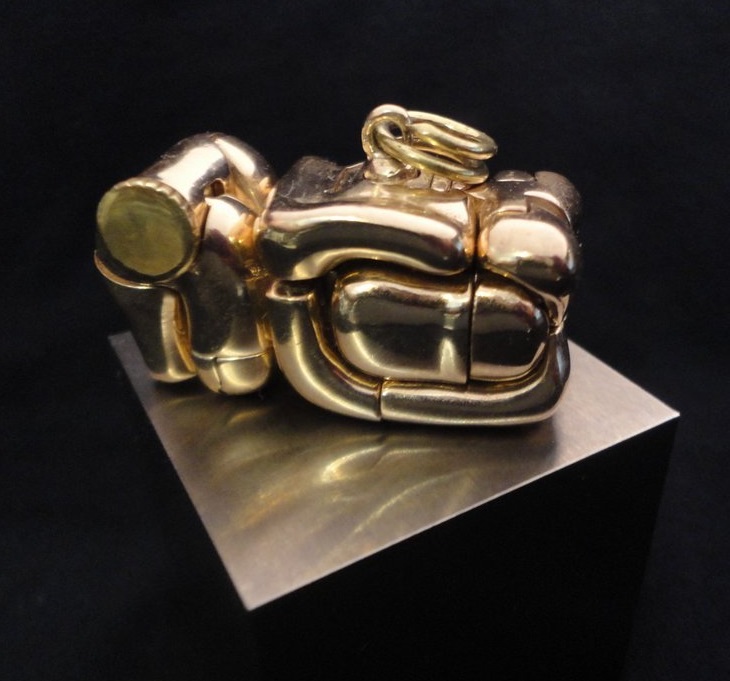
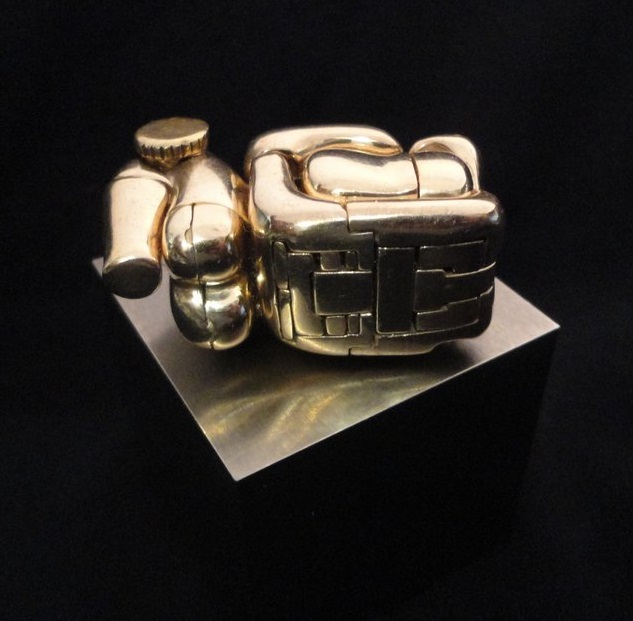
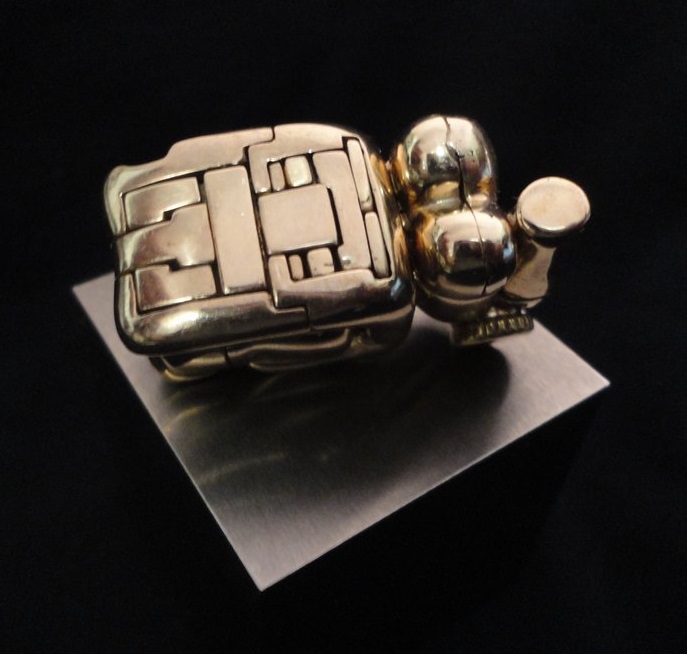
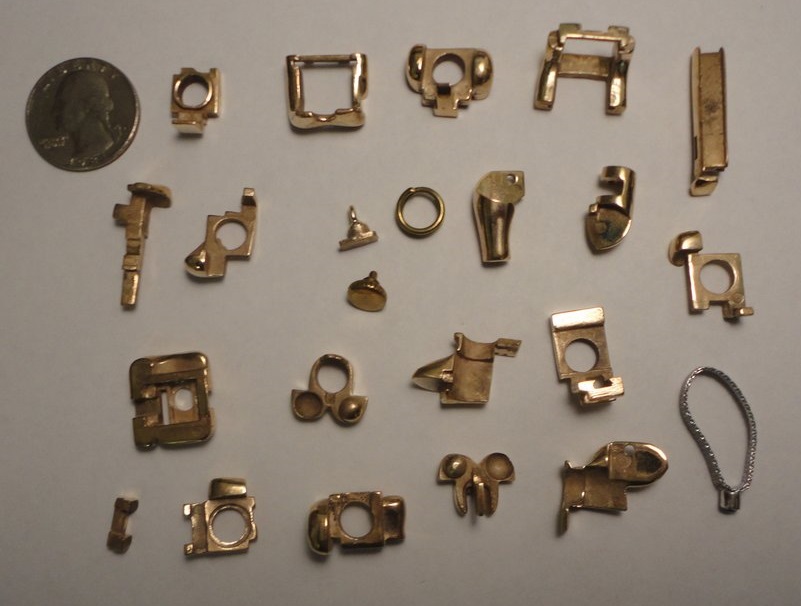
Micro Maria with Mini Maria:
